Plant Descriptions – Eucalyptus kruseana – Eucalyptus robusta
Eucalyptus lacrimans
Eucalyptus laevopinea
Eucalyptus langleyi
Eucalyptus lansdowneana
Eucalyptus ligustrina
Eucalyptus macarthurii
Eucalyptus macrorhyncha
Eucalyptus magnificata
Eucalyptus major
Eucalyptus mannifera
Eucalyptus marginata
Eucalyptus melanophloia
Eucalyptus melanoxylon
Eucalyptus melliodora
Eucalyptus microcarpa
Eucalyptus microcorys
Eucalyptus michaeliana
Eucalyptus moluccana
Eucalyptus morrisbyi
Eucalyptus multicaulis
Eucalyptus neglecta
Eucalyptus nitens
Eucalyptus nobilis
Eucalyptus notabilis
Eucalyptus obliqua
Eucalyptus ophitica
Eucalyptus oreades
Eucalyptus pachycalyx subsp. banyabba
Eucalyptus pachycalyx subsp. pachycalyx
Eucalyptus pachyphylla
Eucalyptus paedoglauca
Eucalyptus paniculata
Eucalyptus parramattensis subsp. parramattensis
Eucalyptus parramattensis subsp. sphaerocalyx
Eucalyptus patens
Eucalyptus pauciflora
Eucalyptus phoenicea
Eucalyptus pilularis
Eucalyptus piperita
Eucalyptus planchoniana
Eucalyptus platyphylla
Eucalyptus pleurocarpa
Eucalyptus populnea
Eucalyptus prava
Eucalyptus propinqua
Eucalyptus psammitica
Eucalyptus pumila
Eucalyptus punctata
Eucalyptus pyriformis
Eucalyptus pyrocarpa
Eucalyptus quadrangulata
Eucalyptus racemosa
Eucalyptus resinifera
Eucalyptus robusta
Eucalyptus kruseana
Classification:
Unranked: Eudicots
Unranked: Rosids
Order: Myrtales
Family: Myrtaceae
Genus: From Eu, which is Greek a prefix for good or well and Kaluptos, which is Ancient Greek for to cover up. It refers to the stamens, which have a lid or cover over them in the bud stage prior to opening.
Specie: Is named in honour of John Kruse; 1822–1895, who was a Germany born Australian pharmacist Melbourne, initially in Richmond and then later in Bourke Street in the city and finally Hawthorn. He took a keen interest in his profession and was active in the establishment of the College of Pharmacy.
Sub specie:
Common Name: Yellow Fruited Mallee, Yellow Fruited Spinning Gum or Book Leaf Mallee.
Distribution:
Eucalyptus kruseana is a rare species found around Kalgoorlie, east from Fraser Range to Lake Yindana in the north and east to Kurrawang Nature Reserve in the west and south to Lake Johnston in the south west of Western Australia.
https://avh.ala.org.au/occurrences/search?taxa=Eucalyptus+kruseana#tab_mapView
Habitat Aspect Climate:
Eucalyptus kruseana prefers full sun to light dappled shade. The trees grow in open woodlands, on rocky slopes and rocky hills in more arid habitats. The altitude ranges from 50 meters ASL to 60 meters ASL.
The temperatures range from 4 degrees in July to 40 degrees in January.
The rainfall ranges from lows of 160mm to an average of 300mm annually.
Soil Requirements:
Eucalyptus kruseana prefer better quality red gravelly sandy loams, granitic outcrops. The soils are derived from decomposed sandstones or granites. The soils pH ranges from 5.5pH to 6.5pH. It does not tolerate water logged soils. Non saline soils to moderately saline soils are tolerated.
Height & Spread:
Wild Plants: 1m to 3m by 2m to 4m.
Characteristics:
Eucalyptus kruseana has long thin stems which are wide spreading from the base with the first branches appearing from near the ground. The bark is firmly collected and held at the base of the stems. The stems are smooth to the upper branchlets. The stems and branchlets are bronze to coppery or grey tinged bronze to coppery. The decorticating bark is shed in short or long thin ribbons. The branchlets are pinkish-purple, glabrous and strongly glaucous. The stems are leafless while the apexes are crowded. It forms a lignotuber just beneath the ground.
Eucalyptus kruseana’s Juvenile leaves are similar to the adult leaves.
The sub opposite, closely-spaced leaves are orbicular and measure 20mm to 25mm in length by 23mm to 30mm in width. The leaves are sessile. The bases are rounded while the apexes are obtuse with or without a small acute tip. The concolourous leaves are coriaceous, dull grey-blue to blue with a purple tinge near the bases or the margins. The margins are entire. The mid vein is very slightly prominent on both laminas while the reticulation is sparse. The intramarginal vein is very close to the margin.
Inflorescences of Eucalyptus kruseana are born as umbellasters from the leaf axils. There are 5 to 7 individual creamy green to yellow or yellow-green flowers to an umbellaster. The peduncles are terete and glabrous while the pedicels are terete and glabrous. The peduncles measure 8mm to 10mm in length while the pedicels measure 2mm to 5mm in length. The glaucous-blue buds are ovoidal while the narrow cupular hypanthium are lepidote. The hypanthium measure 3mm to 4mm in length by 3.5mm to 4mm in diameter. The calyptras are oblong conical with a small apiculate tip and measure 6mm to 7.5mm in length by 4.5mm to 5mm in diameter. The bud scar is absent.
The regular, flexed stamens are pale creamy green to pale yellow or yellow-green and measure 11mm to 14mm in length. The creamy green to pale yellow or yellow-green anthers are cuboidal. The dorsifixed, anthers dehisce through longitudinal slits.
The reddish or lime-green style measures 4mm to 6mm in length. The disc is deep green or deep red. The flowers appear from mid-November to February.
The fruits of Eucalyptus kruseana are urceolate to broadly campanulate gum nuts. The gum nuts measure 15mm to 25mm in length by 18mm to 23mm in diameter at the hypanthium. The valves are deeply inserted revealing the 8 valves.
The deep reddish-brown to deep brown almost black, flattened seeds are linear to cuboidal and measure 0.7mm to 1.5mm in length while the trash is smaller.
Wildlife:
The flowers Eucalyptus kruseana are good nectar producers and are very attractive to most honeyeaters, native bees and beetles.
Cultivation:
Eucalyptus kruseana is a smaller mallee which is very suitable for gardeners looking for a small Eucalyptus specie to create a small bush scene for arid type gardens. It is ideal on sandy loams, sandy alluvial flats or light clays that are well drained. It is relatively fast growing so will give a good effect at an early age. In the garden trees grow to 2 meters to 4 meters by 3 to 4meters in diameter. It is drought resistant once established and can cope with light frosts.
The book leaf mallee should be a more popular ornamental in drier parts of southern Western Australia to southern South Australia and in central Australia because of its small size, flower colour and spectacular leaves.
It has a semi weeping canopy so the flowers can be viewed to full affect. This yellow flowering gum is too often planted singularly when it is grown, with gardeners not prepared to let their hair down and experiment. It has a lignotuber so it should be used. Try mass planting them as features or 2, 3 or even 5 in a group using curves with other mallees with different leaves, barks or flower colours. Another method would be to plant 8 to 10 close together and after a few years leave 2 or 3 of them to grow as single trunk small trees and prune the others in the clump back hard so it is forced to reshoot from the lignotuber. This will create an effect of various heights and better flowering in the following season. The trees left will take on a pendulous look while the others will grow rapidly upwards. Seed grown plants would also offer plants planted in mass a great variation in colour of the flowers to add to more interest. Try mixing them with other small Eucalyptus or Corymbia in semi-arid areas like Eucalyptus curtisii or Eucalyptus leucoxylon for an even stronger contrast in flowering and trunks.
Like all Eucalyptus specie leaf drop, dropping of small branches means continual lawn maintenance but then if it is mass planted in a garden bed the leaf drop blends into the mulch and is not a problem.
It can also be planted among a natural bush garden in temperate arid and semi-arid zones to add colour between or treated as a tall shrub mixed between smaller shrubs with green foliage for a strong foliage contrast.
The flower buds and leaves can be harvested for dried arrangements or used for cut flowers.
Propagation:
Seeds: Sow Eucalyptus kruseana’s seed directly into a seed raising mix. Cover the seeds with 2mm to 3mm of fine sand and place the trays in a warm sunny position. Keep moist but not wet. When the seedlings are 25mm to 50mm tall, prick them out and plant them into 50mm native tubes using a good organic mix.
Once the seedlings reach 200mm to 250mm in height plant them out into their permanent position. Mass plantings are best achieved by planting them at 1 meter to 3 meters where clumps are required or 3 meters to 5 meters where individuality is wanted in shape and the bark is used as a feature.
Fertilize using seaweed, fish emulsion or organic chicken pellets soaked in water on an alternate basis. Fertilize every two months until the plants are established then twice annually in early September or March to maintain health, vitality and better flowering.
Further Comments from Readers:
“Hi reader, it seems you use The Bible of Botany a lot. That’s great as we have great pleasure in bringing it to you! It’s a little awkward for us to ask, but our first aim is to purchase land approximately 1,600 hectares to link several parcels of N.P. into one at The Pinnacles NSW Australia, but we need your help. We’re not salespeople. We’re amateur botanists who have dedicated over 30 years to saving the environment in a practical way. We depend on donations to reach our goal. If you donate just $5, the price of your coffee this Sunday, We can help to keep the planet alive in a real way and continue to bring you regular updates and features on Australian plants all in one Botanical Bible. Any support is greatly appreciated. Thank you.”
In the spirit of reconciliation we acknowledge the Bundjalung, Gumbaynggirr and Yaegl and all aboriginal nations throughout Australia and their connections to land, sea and community. We pay our respect to their Elders past, present and future for the pleasures we have gained.

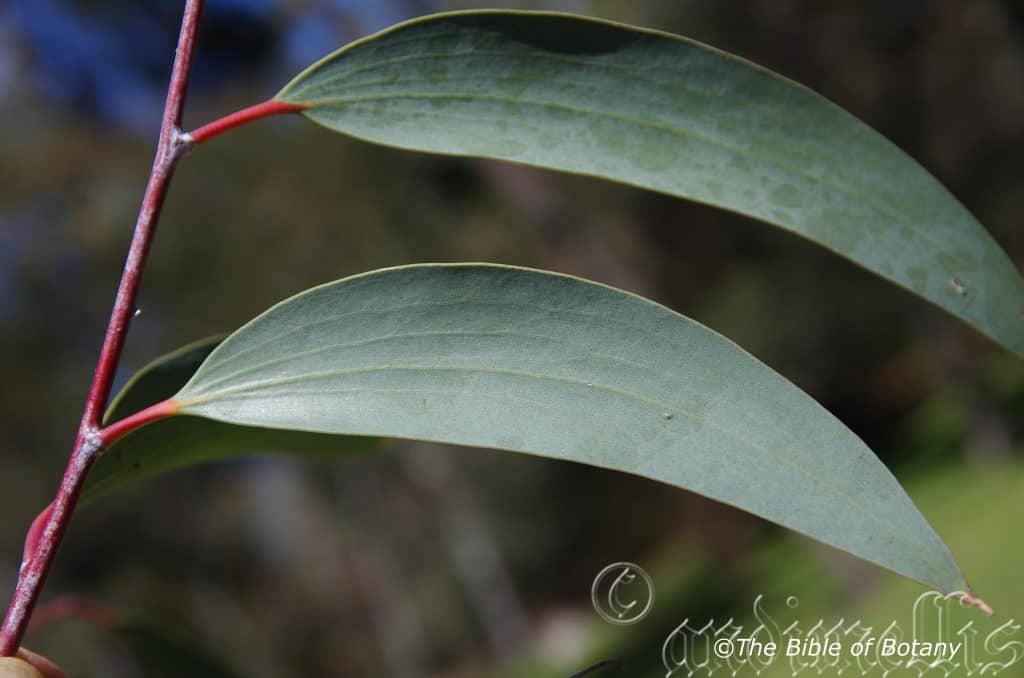
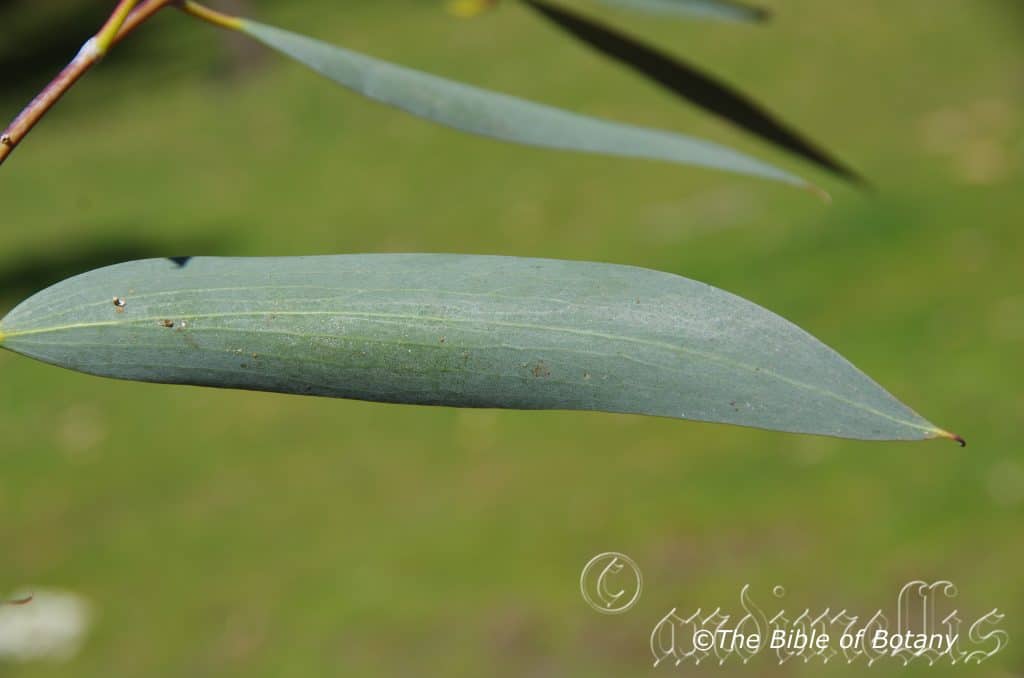
Eucalyptus lacrimans
Classification:
Unranked: Eudicots
Unranked: Rosids
Order: Myrtales
Family: Myrtaceae
Genus: From Eu, which is Greek a prefix for good or well and Kaluptos, which is Ancient Greek for to cover up. It refers to the stamens, which have a lid or cover over them in the bud stage prior to opening.
Specie: From Lacrimō, which is Latin for to cry or weep. It refers to plants, which have a sad weeping appearance.
Sub specie:
Common Name: Weeping Snow Gum.
Distribution:
Eucalyptus lacrimans is restricted to a small area south from the Yass Valley to Bombala in southern New South Wales.
https://avh.ala.org.au/occurrences/search?taxa=Eucalyptus+lacrimans#tab_mapView
Habitat Aspect Climate:
Eucalyptus lacrimans prefers full sun. It is a widespread species which grows in moist schlerophyll forests, dry schlerophyll forests or moist open grassy woodlands on plains and gentle slopes. The altitude ranges from 450 meters ASL to 850 meters ASL.
The temperatures range from minus 6 degrees in July to 35 degrees in January.
The rainfall ranges from lows of 450mm to an average of 650mm annually.
Soil Requirements: Eucalyptus lacrimans prefer deep white or grey, medium to fertile sandy loams to light fatty clays. The soils are usually derived from granites. The soils pH ranges from 5.5pH to 6pH. It does not tolerate water logged soils. Non saline soils to slightly saline soils are tolerated.
Height & Spread:
Wild Plants: 12m to 15m by 8m to 12m.
Characteristics:
Eucalyptus lacrimans has asmooth, mainly white trunk with patches of cream, grey or orange. The terete juvenile stems are glaucous.
Eucalyptus lacrimans’s the juvenile leaves are usually subsessile and opposite for 5 or 6 nodes before becoming alternate. The concolourous, green to blue-green, ovate to lanceolate leaves measure 65mm to110mm in length by 22mm to 40mm in width. The base is rounded, while the apex is acute.
The alternate, narrowly lanceolate to lanceolate or falcate leaves measure 70mm to 180mm in length by 7mm to 30mm in width. The petioles measure 5mm to 25mm in length. The base tapers to petiole, while the apexes are narrow acute. The concolorous, glossy, green, leaves have a parallel venation with the intramarginal vein close to the margin. The oil glands are island or obscure.
The axillary unbranched umbel’s peduncle measures 3mm to 12mm in length. The 9, 11, 13 or 15 individual flowers on each umbel are sessile or sub sessile. The obovoid to globular to pyriform, green and red or glaucous mature buds measure 6m to 8mm in length by 4mm to 5mm in diameter. The scar is absent, while the obtuse to conical operculum is discarded early on the release of the inflexed or irregularly flexed, filaments. The reniform to cordate, versatile, dorsifixed anthers dehisce along confluent slits. The stout, linear style ends in a blunt stigma. The white flowers appear from September to January.
The cupular, obconical or barrel-shaped, glaucous or sub glaucous capsules are sessile or sub sessile and measure 7mm to 11mm in length by 8mm to 12mm in diameter. The deep green disc is level, while the 3 or 4 valves are enclosed.
The deep brown, pyramidal or obliquely pyramidal seeds measure 1.5mm to 2.2mm in length, while the dorsal surface is glabrous.
Wildlife:
The flowers Eucalyptus lacrimans is medium nectar producers but are still are very attractive to most honeyeaters and lorikeets.
Cultivation:
Eucalyptus lacrimans can be an attractive specimen tree for small gardens or ornamental plantings. Planted in front of buildings offers a gentle transition of soft open stature that is light and airy.
It is best planted in small groups for wind protection. It is an excellent tree for cold damp positions and easily tolerates frigid icicle conditions with temperatures down to minus 10 degrees coupled with poor soils means low maintenance. It is very long-lived, but is very slow growing for a Eucalyptus tree. Garden plants inevitably take 4 to 6 years to attain a height of 2 meters even when conditions are favourable.
The beautiful open pendulous branches makes it uniquely graceful as an ornamental specimen tree.
Profuse flowering occurs from spring to early summer is another advantage with its small delicate white flowers that are quite attractive nectar eating birds, while having a delicate honey perfume.
Propagation:
Seeds: Sow Eucalyptus lacrimans seeds into a seed raising mix. Cover the seeds with 2mm to 3mm of fine sand and place the trays in a warm sunny position. Keep moist but not wet. When the seedlings are 25mm to 50mm tall, prick them out and plant them into 50mm native tubes using a good organic mix.
Once the seedlings reach 200mm to 250mm in height plant them out into their permanent position. Mass plantings are best done in groups of 3 to 5 as a feature by planting them at 14 meters to 16 meters centers.
Fertilize using Seaweed, fish emulsion or organic chicken pellets soaked in water and apply the liquid on an alternate basis. Fertilize every two month until the trees are well established then every spring to ensure good growth and flowering.
Further Comments from Readers:
“Hi reader, it seems you use The Bible of Botany a lot. That’s great as we have great pleasure in bringing it to you! It’s a little awkward for us to ask, but our first aim is to purchase land approximately 1,600 hectares to link several parcels of N.P. into one at The Pinnacles NSW Australia, but we need your help. We’re not salespeople. We’re amateur botanists who have dedicated over 30 years to saving the environment in a practical way. We depend on donations to reach our goal. If you donate just $5, the price of your coffee this Sunday, We can help to keep the planet alive in a real way and continue to bring you regular updates and features on Australian plants all in one Botanical Bible. Any support is greatly appreciated. Thank you.”
In the spirit of reconciliation we acknowledge the Bundjalung, Gumbaynggirr and Yaegl and all aboriginal nations throughout Australia and their connections to land, sea and community. We pay our respect to their Elders past, present and future for the pleasures we have gained.

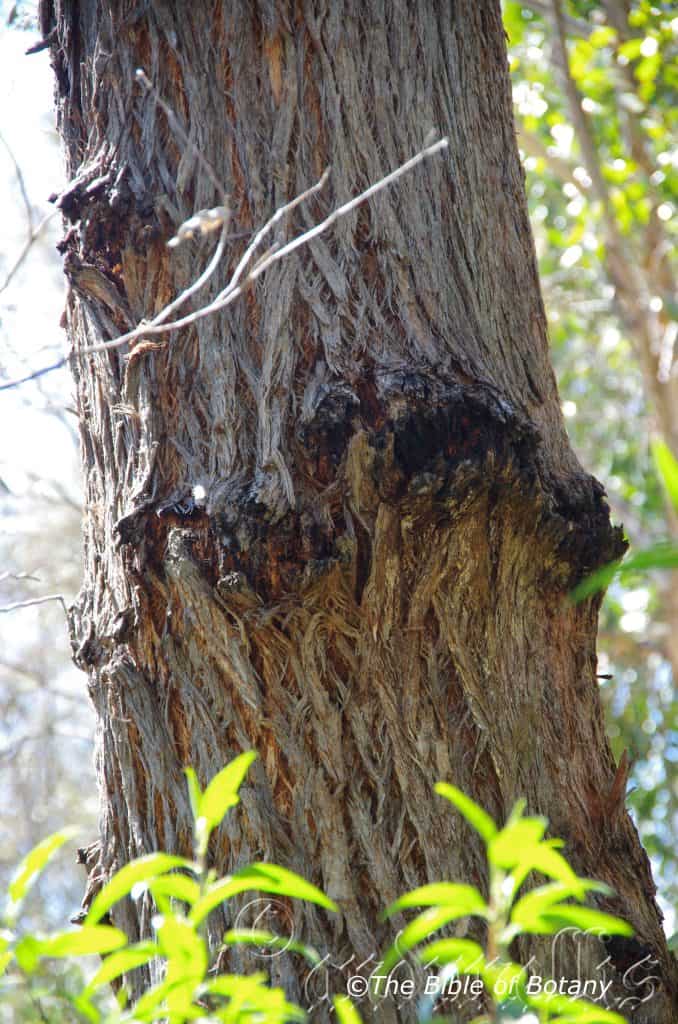
Eucalyptus laevopinea
Classification:
Unranked: Eudicots
Unranked: Rosids
Order: Myrtales
Family: Myrtaceae
Genus: From Eu, which is Greek a prefix for good or well and Kaluptos, which is Ancient Greek for to cover up. It refers to the stamens, which have a lid or cover over them in the bud stage prior to opening.
Specie: From Laevus, which is Latin for left or depart and Pinus, which is Latin for a pine tree. It refers to essential oils, which were or are extracted from plants that have similar qualities or aroma to those of the pine tree.
Sub specie:
Common Name: Silver Top Stringy Bark.
Distribution:
Eucalyptus laevopinea is found south from Toowoomba in southern Queensland to Lithgow in central New South Wales. It is found on the Western Plains, Western Slopes and the eastern slopes of the Great Dividing Range except the isolated population found in the Carnarvon Gorge in central Queensland.
https://avh.ala.org.au/occurrences/search?taxa=Eucalyptus+laevopinea#tab_mapView
Habitat Aspect Climate:
Eucalyptus laevopinea prefers full sun. It is a widespread species which grows in moist schlerophyll forests, dry schlerophyll forests or moist open grassy woodlands on plains and gentle slopes. The altitude ranges from 250 meters ASL to 850 meters ASL.
The temperatures range from minus 4 degrees in July to 40 degrees in January.
The rainfall ranges from lows of 300mm to an average of 700mm annually.
Soil Requirements: Eucalyptus laevopinea prefer deep white or grey, medium to fertile sandy loams to light fatty clays. The soils are usually derived from sandstones, granites or brown basalts. The soils pH ranges from 5.5pH to 7.5pH. It does not tolerate water logged soils. Non saline soils to moderately saline soils are tolerated.
Height & Spread:
Wild Plants: 25m to 40m by 12m to 18m.
Characteristics:
Eucalyptus laevopinea has long thin trunk with the branches being retained at around 30mm to 40mm of the trees height on mature trees. The trunk has shallow furrowed, rough, grey to deep red-brown stringy to course fibrous bark to the larger branches. The branchlets are off white to pale grey and grass-green and glabrous close to the apexes. The lower bark is persistent and shed in short ribbons or is persistent on the branches.
Eucalyptus laevopinea’s opposite leaves slowly becoming alternate arising from terete scabrid stems which are covered in red to white hispid hairs. The disjunct leaves are broad lanceolate. The bases are slightly oblique and rounded while the apexes are acute. The concolourous laminas are glossy grey-green and glabrous. The margins are entire with a few undulations. The mid vein and margins are scabrid or sparsely covered in white hispid hairs. The dull grey-green, reddish tinged petioles measure 10mm to 20mm in length. The leaves measure 25mm to 70mm in length by 10mm to 40mm in width.
The disjunct alternate disjunct adult leaves are lanceolate to broad lanceolate and straight or slightly falcate. They measure 90mm to 140mm in length by 15mm to 25mm in width. The terete petioles measure 6mm to 16mm in length. The bases are rounded to cuneate-rounded while the apexes are acute. The concolourous laminas are mid green to grey-green, semi glossy to glossy and glabrous. The margins are entire while the mid vein is slightly prominent on the lower lamina. The lateral veins are sparsely to moderately reticulate while the intramarginal veins are parallel to and well removed from margin. The oil glands are islands between the lateral veins and secondary veins.
The inflorescences of Eucalyptus laevopinea are born as umbellasters usually containing 7 to 11 flowers or at times more up to 15 from near the terminal. The creamy yellow peduncules are terete and glabrous while the pedicels are terete and glabrous. The peduncules measure 5mm to 20mm in length while the pedicels measure 1mm to 6mm in length.
The buds are obovoid or clavate while the hypanthium are pale yellow-green. The hypanthium measure 3mm to 4mm by 4mm to 5mm in diameter. The pale yellow-green hemispherical or conical calyptras measure 4mm to 5mm in length. The bud scar is absent.
The irregularly flexed stamens are white and measure 4mm to 5mm in length. The white to cream versatile, reniform to cordate anthers are dorsifixed and dehisce through transversal slits. The stocky, white style measures 2.5mm to 3mm in length. The disc is yellow while the flowers appear in March.
The fruits of Eucalyptus laevopinea are flattened hemispherical gum nuts. The resinous gum nuts measure 6mm to 10mm in length by 7mm to 14mm in diameter at the widest point. The disc is level or slightly raised with 3 or 4 slightly enclosed, level or slightly exserted erect valves.
The tan to pale reddish-brown seeds are pyramidal or obliquely pyramidal and measure 1mm to 2.3mm in length while the trash is smaller and deeper in colour. The hilum is terminally positioned while the surfaces are very finely resinous.
Wildlife:
The flowers Eucalyptus laevopinea are medium nectar producers but are still are very attractive to most honeyeaters, lorikeets, flying foxes, possums and many insects.
Cultivation:
Eucalyptus laevopinea make excellent shelterbelts or shade trees for cattle, sheep and native animals in rural areas. The trees can be grown for their flowers that produce good quality honey for apiculture.
In the cultivation good specimens grow from 15 to 22 meters in height by 12 meters to 18 meters in diameter when grown in the open.
Trees grown in plantation format achieve 610mm ABH in just 16 years, which is the best I have seen or heard of yet it is still not often considered for plantation use. The pale brown timber has a narrow band of sapwood, which is resistent to lyctus borer, undoubtedly another bonus for internal applications. The heartwood is moderately durable and thus suitable for outdoor uses such as decking and outdoor furniture. Being a stringy bark, the logs are easy to mill with low growth stresses and no shakes. It has an excellent surface hardness for use as flooring and good stability means that it doesn’t need to be quarter sawn and is easy to dry.
It is drought tolerant once established and can cope with moderate frosts.
This is not a popular home gardeners but should be considered on larger blocks and reforestation projects. The bark contrasts well with other Eucalyptus specie, like Eucalyptus grandis or Corymbia maculata or rainforest specie with dissimilar trunks to high light the trunks and barks. Place it near the edge of a forest and give them room to reach their full potential as it is a not as tall and their wider spread is a feature worth showing off. Trees planted in full view make good bird watching trees for the nectar eating birds and insect eating birds alike. It is rather messy when the lorikeets clamber over the outer foliage.
It would be ideally suited to small to large park like scenes where it has the opportunity to spread out as they mature.
Like all Eucalyptus specie leaf drop, dropping of small branches means continual lawn maintenance but then this means good quantities of leaf litter mulch. If the trees are clumped or used in a bush garden this is not a problem.
Propagation:
Seeds: Sow Eucalyptus laevopinea seeds into a seed raising mix. Cover the seeds with 2mm to 3mm of fine sand and place the trays in a warm sunny position. Keep moist but not wet. When the seedlings are 25mm to 50mm tall, prick them out and plant them into 50mm native tubes using a good organic mix.
Once the seedlings reach 200mm to 250mm in height plant them out into their permanent position. Mass plantings are best done in groups of 3 to 5 as a feature by planting them at 14 meters to 16 meters centers.
Fertilize using Seaweed, fish emulsion or organic chicken pellets soaked in water and apply the liquid on an alternate basis. Fertilize every two month until the trees are well established then every spring to ensure good growth and flowering.
Further Comments from Readers:
“Hi reader, it seems you use The Bible of Botany a lot. That’s great as we have great pleasure in bringing it to you! It’s a little awkward for us to ask, but our first aim is to purchase land approximately 1,600 hectares to link several parcels of N.P. into one at The Pinnacles NSW Australia, but we need your help. We’re not salespeople. We’re amateur botanists who have dedicated over 30 years to saving the environment in a practical way. We depend on donations to reach our goal. If you donate just $5, the price of your coffee this Sunday, We can help to keep the planet alive in a real way and continue to bring you regular updates and features on Australian plants all in one Botanical Bible. Any support is greatly appreciated. Thank you.”
In the spirit of reconciliation we acknowledge the Bundjalung, Gumbaynggirr and Yaegl and all aboriginal nations throughout Australia and their connections to land, sea and community. We pay our respect to their Elders past, present and future for the pleasures we have gained.
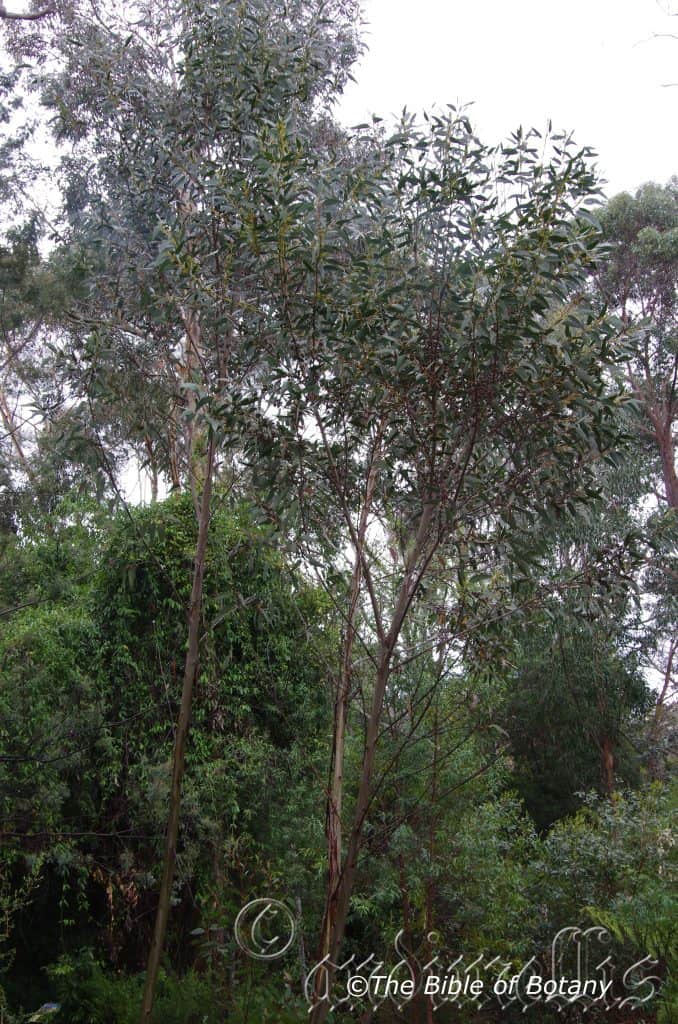


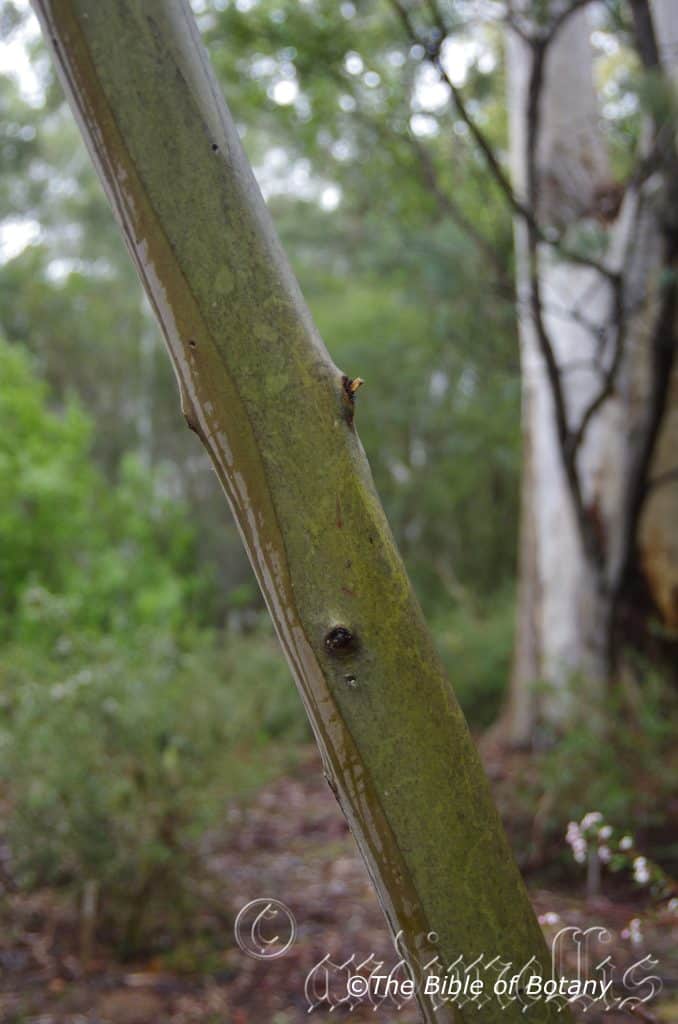
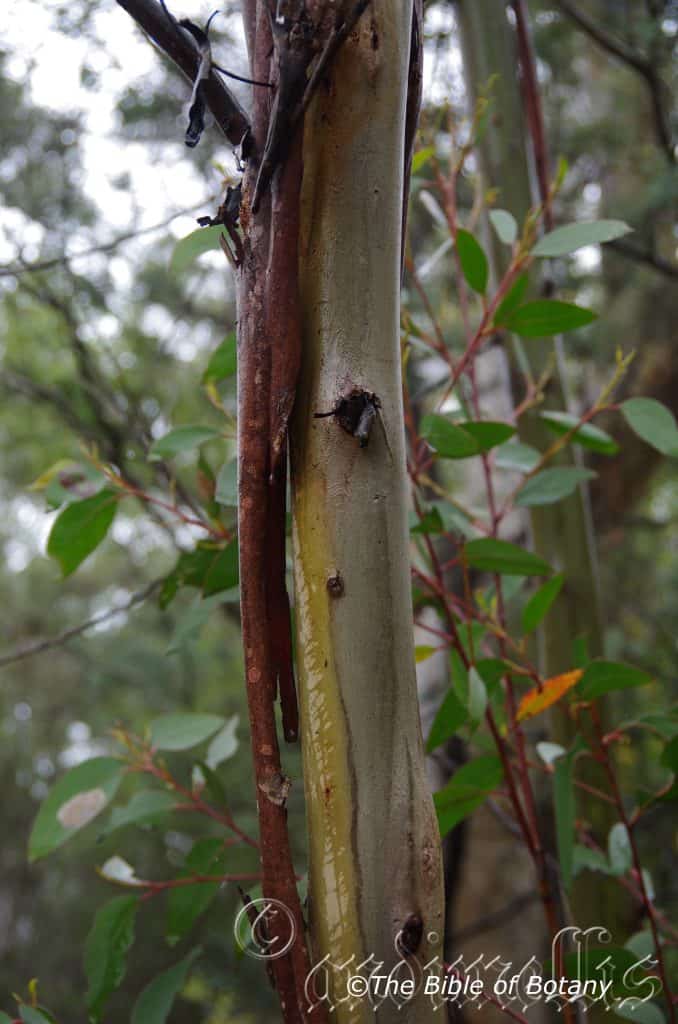
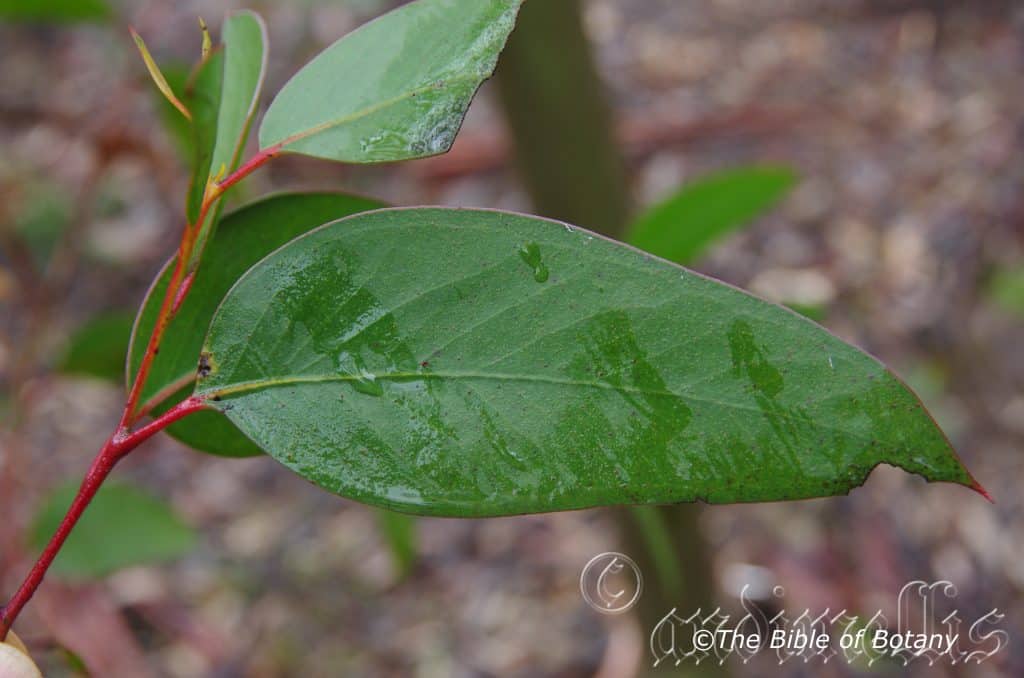

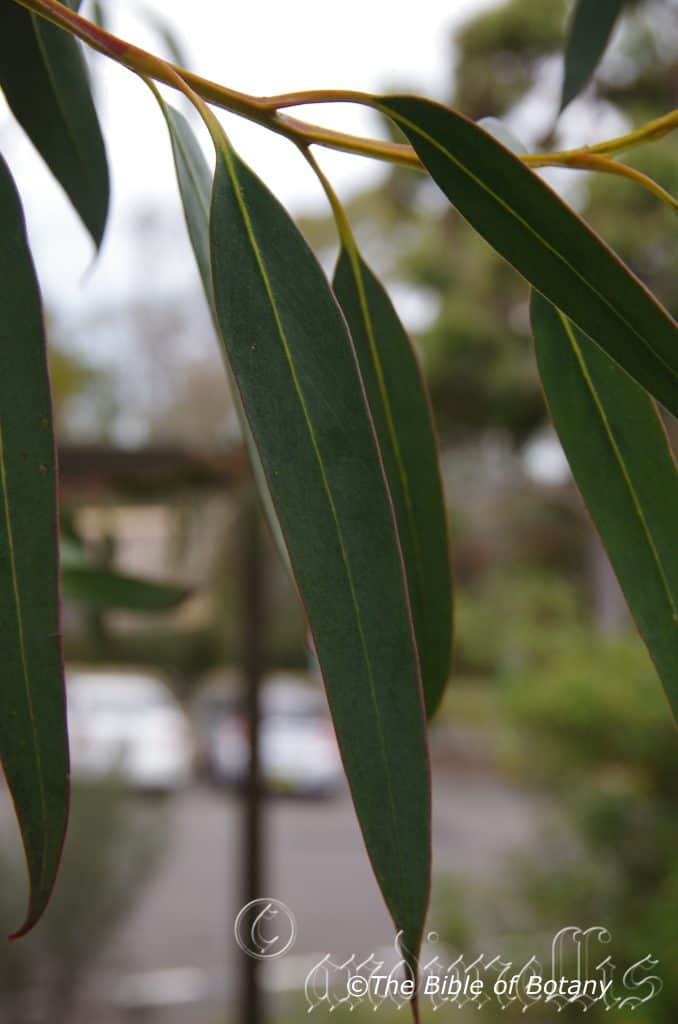
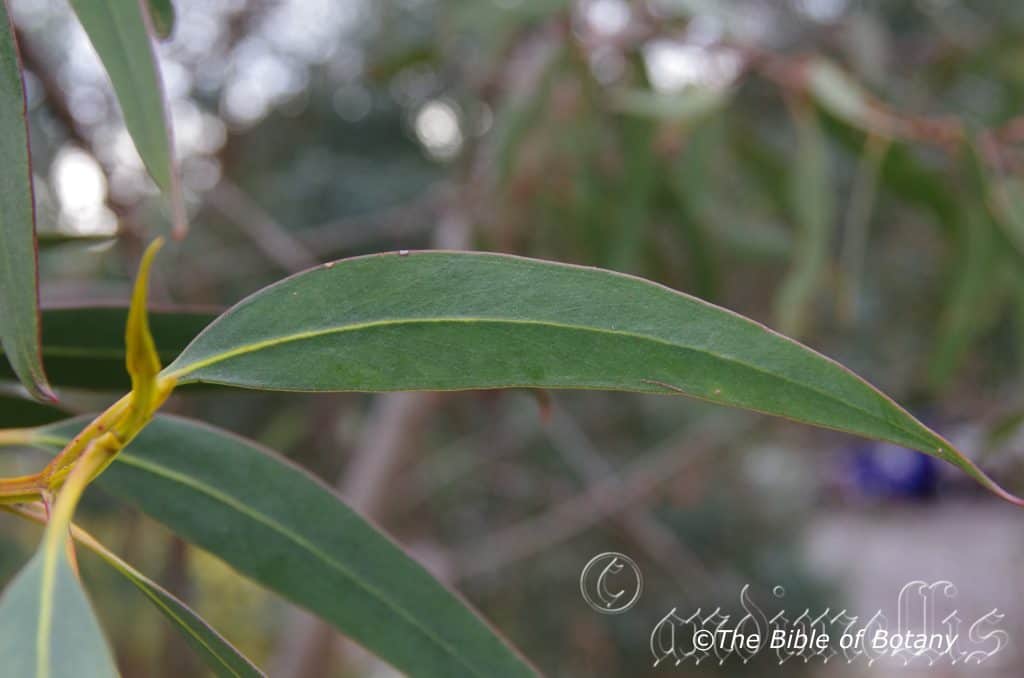

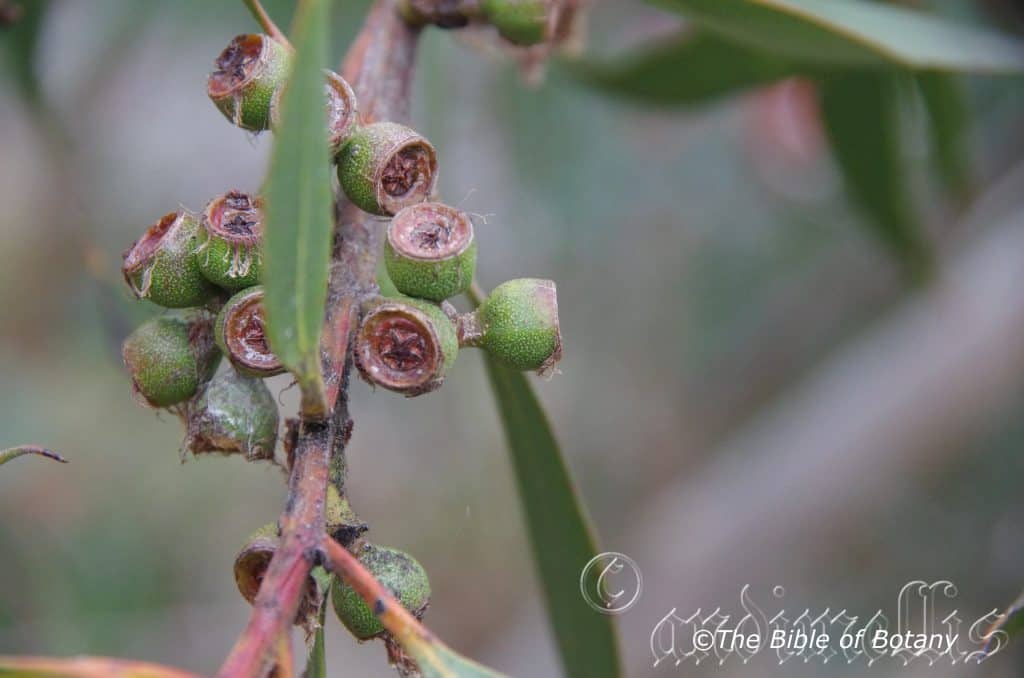

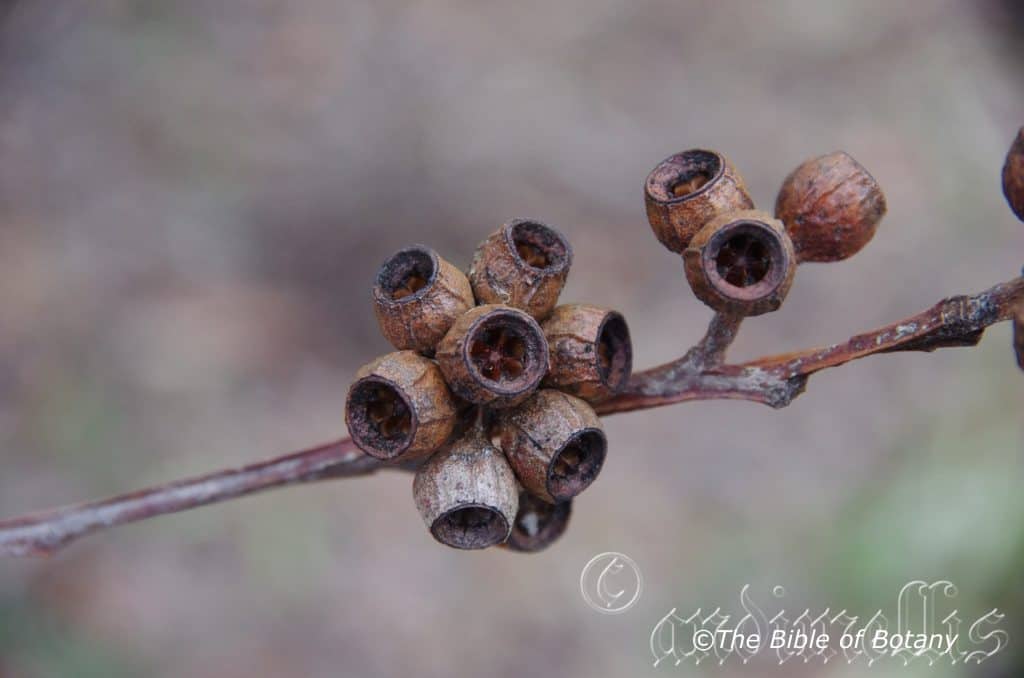
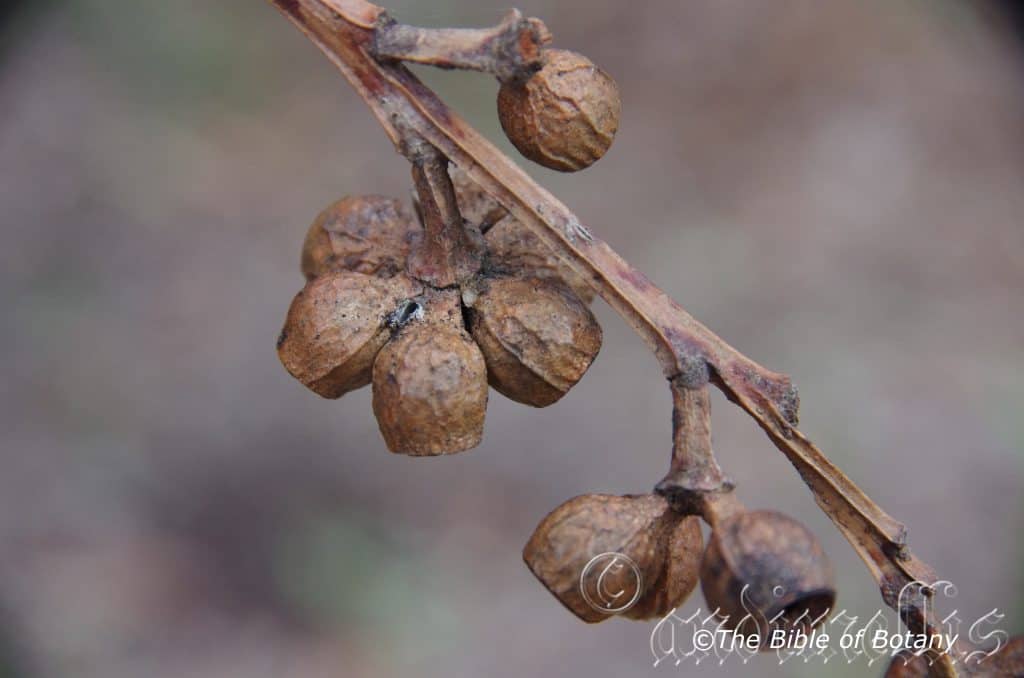
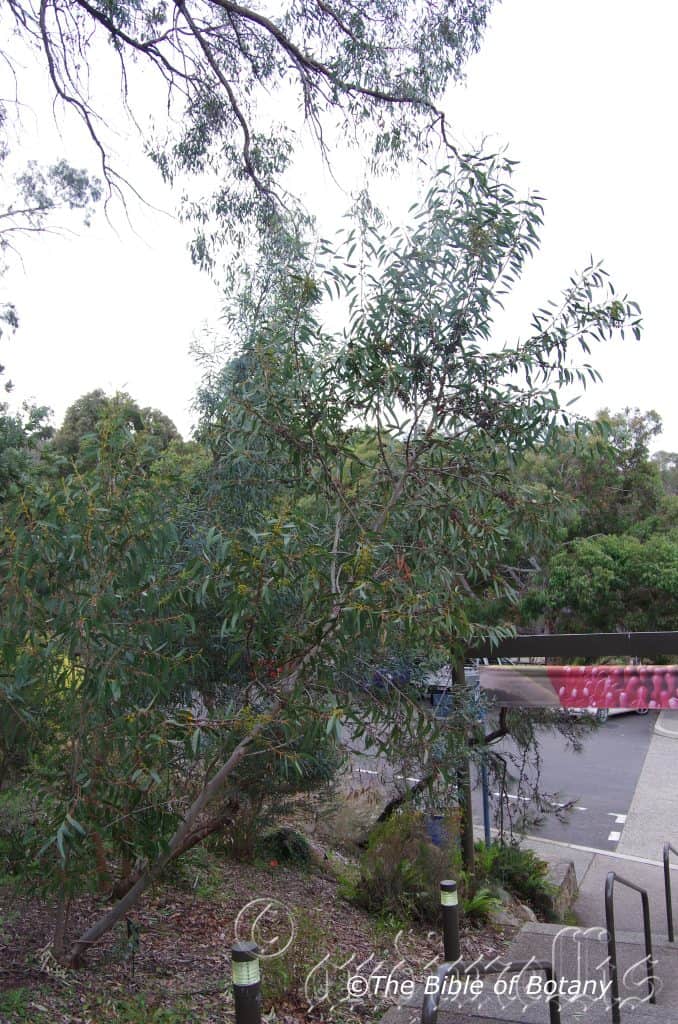
Eucalyptus langleyi
Classification:
Unranked: Eudicots
Unranked: Rosids
Order: Myrtales
Family: Myrtaceae
Genus: From Eu, which is Greek a prefix for good or well and Kaluptos, which is Ancient Greek for to cover up. It refers to the stamens, which have a lid or cover over them in the bud stage prior to opening.
Specie: Is named in honour of Laurence Joseph Langley; 1917-2007, who was an Australian Forestry and Timber Bureau employee in Canberra. He resigned his position in 1957 and moved to Robertson, New South Wales to be an independent supplier of seeds, especially those of Eucalyptus trees. He was the foundation member of the Australian Plant Society and founded the Australian Seed Company. Langley discovered type specie.
Common Name:
Distribution:
Eucalyptus langleyi is a rare species located in a south westerly direction from Bomaderry to north east of Jerrawancala in south eastern New South Wales.
https://avh.ala.org.au/occurrences/search?taxa=Eucalyptus+langleyi#tab_mapView
Habitat Aspect Climate:
Eucalyptus langleyi prefers full sun to light dappled shade. It grows in open woodlands especially on rocky slopes and hills. The altitude ranges. The altitude ranges from 20 meters to 490 meters ASL.
The temperatures range from minus 3 degrees in July to 38 degrees in January.
The rainfall ranges from lows of 650mm to an average of 900mm annually.
Soil Requirements:
Eucalyptus langleyi prefer skeletal sands to deep sands light gritty clays. The soils are usually derived from decomposed sandstone old accumulated sands and alluvial sands. The soils pH ranges from 4.5pH to 6pH. It does not tolerate water logged soils. Non saline soils to slightly saline soils are tolerated.
Height & Spread:
Wild Plants:3m to 5m by 4m to 6m.
Characteristics:
Eucalyptus langleyi glabrous, grey, pinkish grey and yellow to brown trunk and branches has a few persistent strips near the base of the stems following the decorticating of the bark in ribbons. The juvenile stems are square in cross section and often prominently winged and densely tuberculate on lower stems.
The opposite, sessile to sub sessile juvenile leaves are elliptic for 4 nodes then becoming alternate. The petiolate, lanceolate to falcate, glossy, green leaves measure 90mm to 140mm in length by 20mm to 55mm in width.
The alternate, mature leaves have a petiole that measure 10mm to 23mm in length. The broadly falcate to lanceolate, concolorous, glossy, green leaves measure 80mm to 165mm in length by 18mm to 50mm in width. The bases are oblique or taper to the petiole, while the apexes are narrow acute. The mid vein is prominent on both laminas on the basal half. The lateral veins are visible on both laminas, while the reticulation invisible. The intramarginal vein is well away from margin. The oil glands are very irregular islands.
The axillary unbranched, peduncles measure 6mm to 12mm in length. There are 7 individual flowers on each umbel. The pedicels measure 1mm to 4mm in length. The green to yellow, smooth to finely tuberculate, mature, obovoidal to oblong buds measure 7mm to 9mm in length by 4mm to 5mm in diameter. The scar is absent. The conical to obtuse, often with a beak operculum s discarded prior to the irregularly flexed, filaments being released. The reniform to cordate, versatile, dorsifixed anthers dehisce along confluent slits. The long style flares slightly at the base and tapers to the stigma.
The sub sessile pedicels measure 1mm to 4mm in length. The cupular or barrel-shaped capsules measure 7mm to 10mm in length by 8mm to 12mm in diameter. The green disc is descending, while the 3 or 4 valves are level with the rim or are enclosed.
The deep brown, pyramidal or obliquely pyramidal seeds have a glabrous dorsal surface and measure 1.5mm to 3mm in length.
Wildlife:
The flowers Eucalyptus langleyi are good nectar producers and are very attractive to most honeyeaters and lorikeets, native bees and beetles.
Cultivation:
Eucalyptus langleyi is a smaller gum tree which is very suitable for small gardeners looking for a Eucalyptus specie to create a small bush scene or parkland scene. It is ideal on sandy loams, sandy alluvial flats or light to medium clays that are well drained. It is fast growing so give good effects at an early age. Good specimens in and around Melbourne grow from 5 meters to 8 meters in height by 4 meters to 5 meters in diameter.
It has an open to dense crown, is drought resistant and can cope with heavy frosts to minus 5 degrees. This would be a popular white flowering gum amongst home gardeners in temperate Australia. It should be tried further north to at least central Queensland on the western side of the Great Dividing Range once seed becomes available to the public.
It is too often planted singularly as a specimen tree with gardeners not prepared to experiment with mass plantings or placing them as features in bush gardens. Bush garden settings could see these trees grow a lot better where bother semi-arid trees would help absorb excess water in better rainfall areas. It has a small lignotuber so this opens up a wide field for landscapers. This Eucalyptus is very compatible with most small Grevillea specie and Hakea specie so mass bush plantings are an option not explored by most gardeners.
Like all Eucalyptus specie leaf drop, dropping of small branches means continual lawn maintenance but then this means good quantities of leaf litter mulch. If the trees are clumped or used in a bush garden this is not a problem.
Propagation:
Seeds: Sow seed of Eucalyptus langleyi directly into a seed raising mix. Cover the seeds with 2 to 3mm of fine sand and place the trays in a warm sunny position. Keep moist but not wet. When the seedlings are 25mm to 50mm tall, prick them out and plant them into 50mm native tubes using a good organic mix.
Once the seedlings reach 200mm to 250mm in height plant them out into their permanent position. Mass plantings are best achieved by planting them at 5 meters to 8 meter centers where it is planted as park trees or specimen plants or 3 meters to 4 meters where clumps are required.
Fertilize using seaweed, fish emulsion or organic chicken pellets soaked in water on an alternate basis. Fertilize every two months until the plants are established then twice annually in early September or March to maintain health, vitality and better flowering.
Further Comments from Readers:
“Hi reader, it seems you use The Bible of Botany a lot. That’s great as we have great pleasure in bringing it to you! It’s a little awkward for us to ask, but our first aim is to purchase land approximately 1,600 hectares to link several parcels of N.P. into one at The Pinnacles NSW Australia, but we need your help. We’re not salespeople. We’re amateur botanists who have dedicated over 30 years to saving the environment in a practical way. We depend on donations to reach our goal. If you donate just $5, the price of your coffee this Sunday, We can help to keep the planet alive in a real way and continue to bring you regular updates and features on Australian plants all in one Botanical Bible. Any support is greatly appreciated. Thank you.”
In the spirit of reconciliation we acknowledge the Bundjalung, Gumbaynggirr and Yaegl and all aboriginal nations throughout Australia and their connections to land, sea and community. We pay our respect to their Elders past, present and future for the pleasures we have gained.
Eucalyptus lansdowneana
Classification:
Unranked: Eudicots
Unranked: Rosids
Order: Myrtales
Family: Myrtaceae
Genus: From Eu, which is Greek a prefix for good or well and Kaluptos, which is Ancient Greek for to cover up. It refers to the stamens, which have a lid or cover over them in the bud stage prior to opening.
Specie: Is named in honour of Thomas Lansdowne Browne; 1860–1931, who was a lawyer and pastoralist in South Australia and collected the type specimens.
Common Name: Crimson Flowered Mallee.
Distribution:
Eucalyptus lansdowneana is a rare species located in several disjunct areas in South Australia. It is found in the Gawler Ranges National Park, on Kangaroo Island, Port Lincoln to Wangary near Kyancutta. There are two outlying populations in Western Australia. One south of Perth and the second on the wheat belt half way between Perth and Kalgoorlie. These may be escapees as the Western Australian herbarium has no official records of the plants occurring in Western Australia.
https://avh.ala.org.au/occurrences/search?taxa=Eucalyptus+lansdowneana#tab_mapView
Habitat Aspect Climate:
Eucalyptus lansdowneana prefers full sun to light dappled shade. It grows in open woodlands especially on rocky slopes and hills. The altitude ranges. The altitude ranges from 2 meters ASL to 200 meters ASL.
The temperatures range from 3 degrees in July to 42 degrees in January.
The rainfall ranges from lows of 160mm to an average of 800mm annually.
Soil Requirements:
Eucalyptus lansdowneana prefer skeletal sands to light fatty clays. The soils are usually derived from decomposed black basalts lateritic iron stone soils mixed with limestone. The soils pH ranges from 5.5pH to 7.2pH. It does not tolerate of water logged soils. Non saline soils to slightly saline soils are tolerated.
Height & Spread:
Wild Plants:3m to 6m by 3m to 4m.
Characteristics:
Eucalyptus lansdowneana is a thin multi or single trunked mallee branching from near the ground with semi erect to almost divaricate stems. A short stocking of rough grey-brown bark at the base of larger trees is persistent. The pale grey, grey-brown or pale salmon-brown bark on the upper trunk to larger branches is glabrous and semi glossy. The decorticating bark is shed in long irregular ribbons to reveal a pink-grey to coppery-salmon new bark. The branchlets are smooth, glabrous and salmon-brown to orange-red and semi glossy. The branchlets are semi erect to pendulous. They form a small lignotuber just beneath the ground.
Eucalyptus lansdowneana’s juvenile leaves are opposite or sub-opposite and ovate to orbicular. It is broad ovate and measure 40mm to 80mm in length by 25mm to 40mm in width. The concolourous leaves are dull to semi glossy and grey-green to a pale olive green.
The disjunct alternate adult leaves of Eucalyptus lansdowneana are lanceolate and measure 70mm to 150mm in length and 12mm to 30mm in width. The petioles are red-green flattened or channelled and measures 9mm to 20mm in length. The bases are broad tapering while the apexes are narrow tapering. The concolourous laminas are dull to glossy, pale blue-green to green and glabrous. The margins are entire. The mid vein is slightly prominent on the lower lamina and it is visible from the upper lamina. The intramarginal vein is slightly visible.
Inflorescences of Eucalyptus lansdowneana are born as pendulous umbellasters containing 4 to 11 flowers from near the terminal leaf axils sometimes in small terminal panicles. The terete peduncules are flanged near the apex and measure 13mm to 20mm in length while the pedicels measure 2mm to 4.5mm in length.
The buds calyptras are oblong-ovoid with a rounded rostrate tip, which are a yellow-green to mid-green and heavily streaked and tinged in deep red. The buds measure 6mm to 8mm in length by 5.5mm to 7mm in diameter. The bud calyptra measures 3mm to 4mm in length.
The irregularly flexed stamens are deep scarlet red, crimson, pink, purple or rarely white with scarlet red, crimson, pink, purple or rarely white anthers. The stamens measure 7mm to 15mm in length while the pale green to deep green stout style measures 6mm to 9mm in length. The stigma is deep scarlet red, crimson, pink, purple or rarely white. The disc is pale green to deep green. The calyptra scar is evident. The flowers appear from August to October.
The fruits are broad cylindrical-ellipsoidal gum nuts. The gum nuts measure 9mm to 12mm in in length by 8mm to 11mm in diameter at the hypanthia. The 4 or 5 valves are deeply enclosed. The ovoid to flattened ovoid seeds measure 0.7mm to 1.5mm in length and are distinctly deep red-brown.
Wildlife:
The flowers Eucalyptus lansdowneana are good nectar producers and are very attractive to most honeyeaters and lorikeets, native bees and beetles.
Cultivation:
Eucalyptus lansdowneana is a smaller gum tree which is very suitable for small gardens, where a small Eucalyptus specie is required to create a small bush scene or parkland scene. It is ideal on sandy loams, sandy alluvial flats or light to medium clays that are well drained. It is fast growing so give good effects at an early age. Good specimens in and around Melbourne grow from 5 meters to 8 meters in height by 4 meters to 5 meters in diameter.
Its adaptability to a wide range of climates from cool temperate, sub-tropical & semi-arid climates coupled with its ability to grow in temperatures as low as minus 4 making it very frost hardy and scorchers to 44 plus degrees. Moderately acid soils to alkaline soils gives it another advantage for coastal and inland areas. It stands out when in flower making it an eye catching selection for prime positions in the garden especially when planted with other small cream, pink or yellow or even red flowering Eucalypts. The honey-eating birds will find it attractive luring honeyeaters for the whole flowering season.
It is too often planted singularly as a specimen tree with gardeners not prepared to experiment with mass plantings or placing them as features in bush gardens. Bush garden settings could see these trees grow a lot better where bother semi-arid trees would help absorb excess water in better rainfall areas. It has a small lignotuber so this opens up a wide field for landscapers. This Eucalyptus is very compatible with most small Grevillea specie and Hakea specie so mass bush plantings are an option not explored by most gardeners.
Like all Eucalyptus specie there is some leaf drop and dropping of twigs means continual lawn maintenance but then this means good quantities of leaf litter mulch. If the trees are clumped or used in a bush garden plot it’s not a problem but an asset this is not a problem.
Propagation:
Seeds: Sow the seeds of Eucalyptus lansdowneana directly into a seed raising mix. Cover the seeds with 2 to 3mm of fine sand and place the trays in a warm sunny position. Keep moist but not wet. When the seedlings are 25mm to 50mm tall, prick them out and plant them into 50mm native tubes using a good organic mix.
Once the seedlings reach 200mm to 250mm in height plant them out into their permanent position. Mass plantings are best achieved by planting them at 5 meters to 8 meter centers where it is planted as park trees or specimen plants or 3 meters to 4 meters where clumps are required.
Fertilize using seaweed, fish emulsion or organic chicken pellets soaked in water on an alternate basis. Fertilize every two months until the plants are established then twice annually in early September or March to maintain health, vitality and better flowering.
Further Comments from Readers:
“Hi reader, it seems you use The Bible of Botany a lot. That’s great as we have great pleasure in bringing it to you! It’s a little awkward for us to ask, but our first aim is to purchase land approximately 1,600 hectares to link several parcels of N.P. into one at The Pinnacles NSW Australia, but we need your help. We’re not salespeople. We’re amateur botanists who have dedicated over 30 years to saving the environment in a practical way. We depend on donations to reach our goal. If you donate just $5, the price of your coffee this Sunday, We can help to keep the planet alive in a real way and continue to bring you regular updates and features on Australian plants all in one Botanical Bible. Any support is greatly appreciated. Thank you.”
In the spirit of reconciliation we acknowledge the Bundjalung, Gumbaynggirr and Yaegl and all aboriginal nations throughout Australia and their connections to land, sea and community. We pay our respect to their Elders past, present and future for the pleasures we have gained.

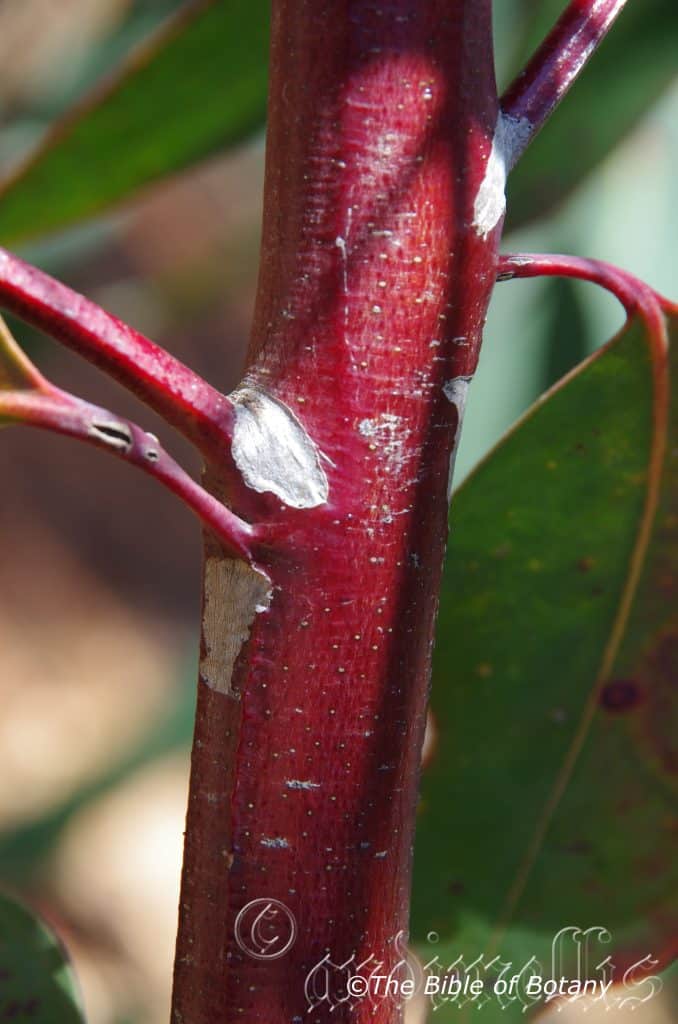

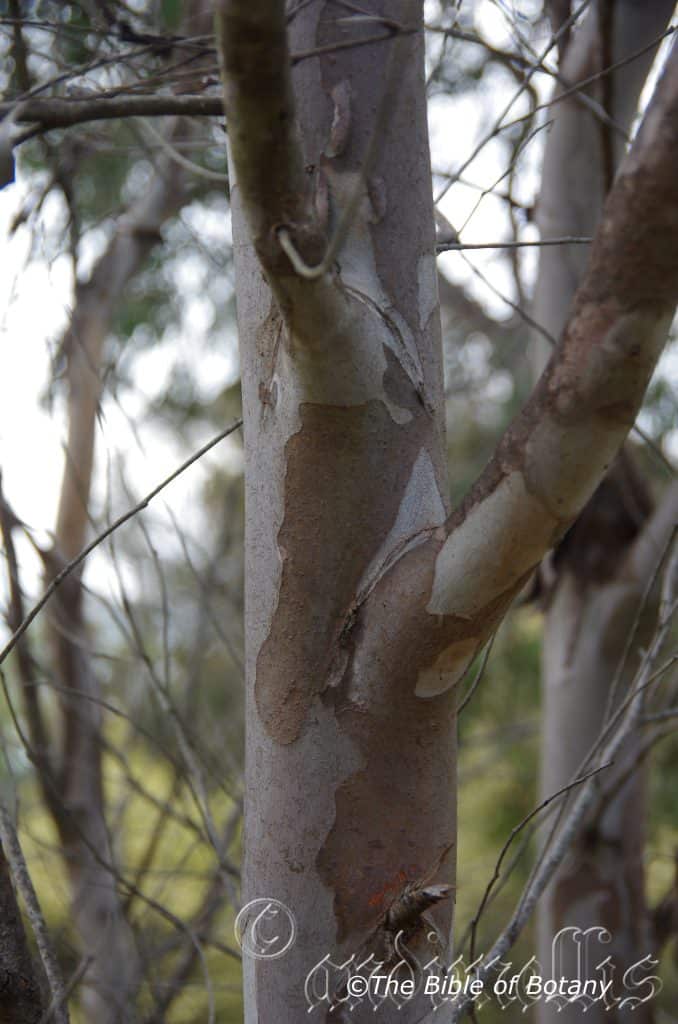

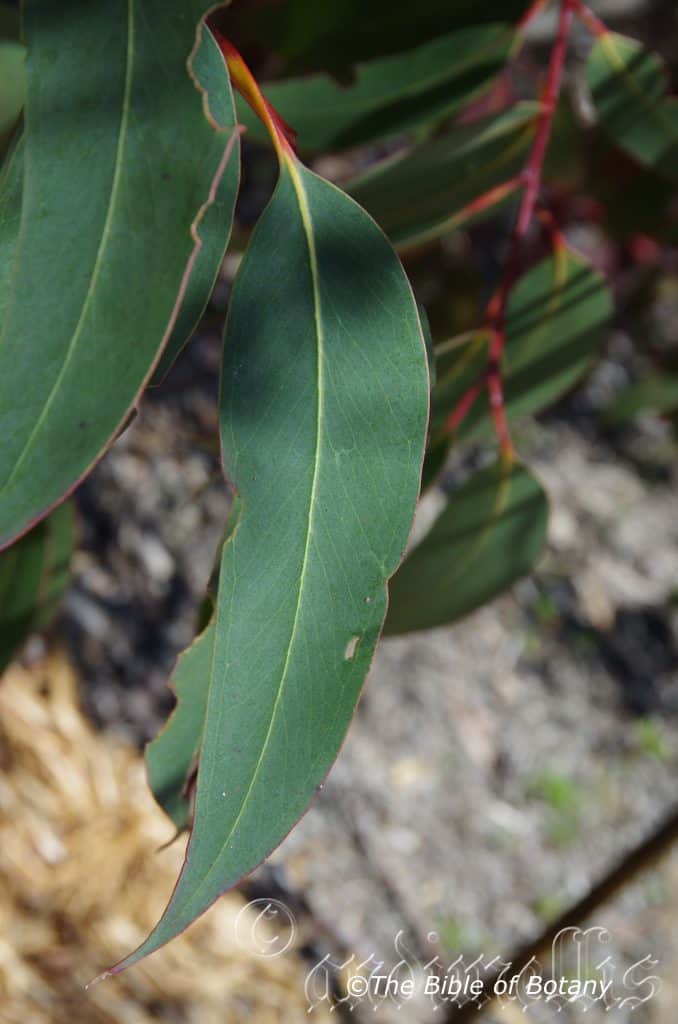
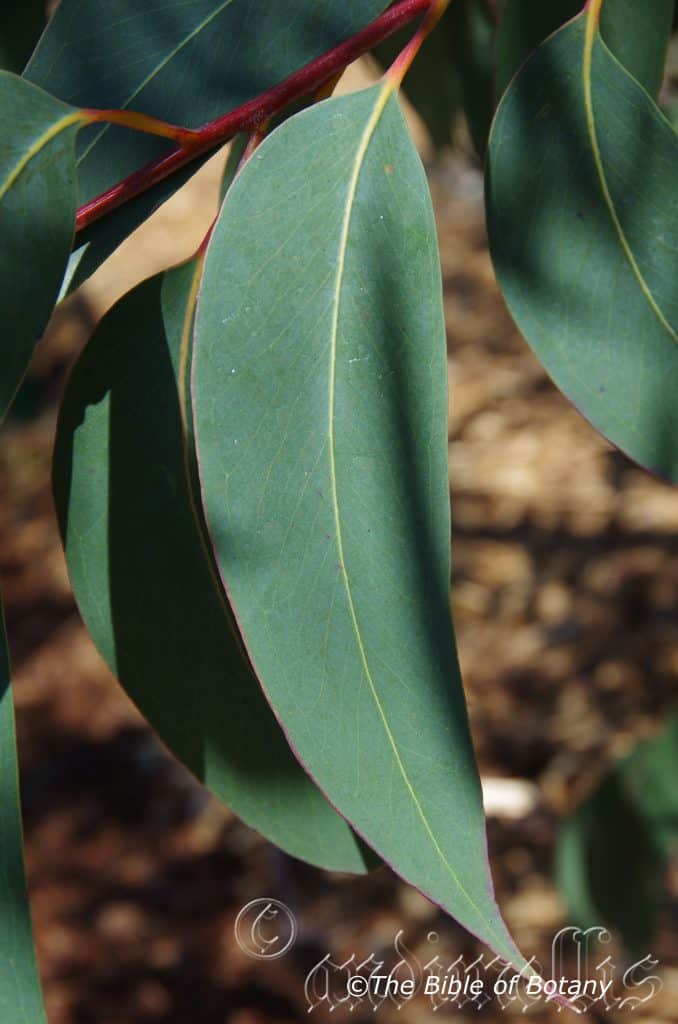

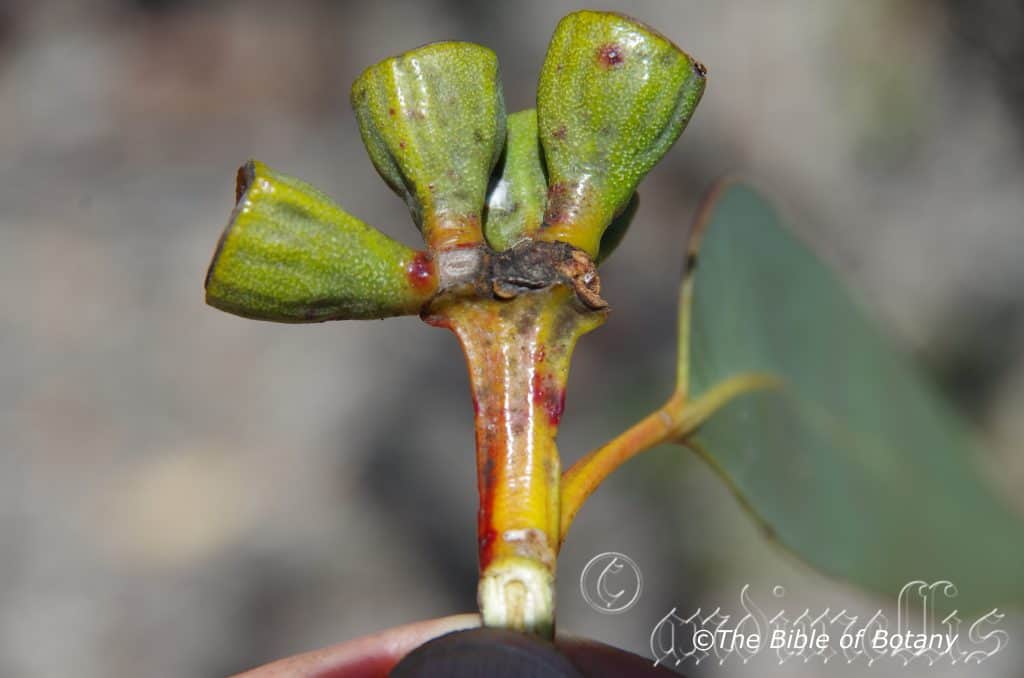
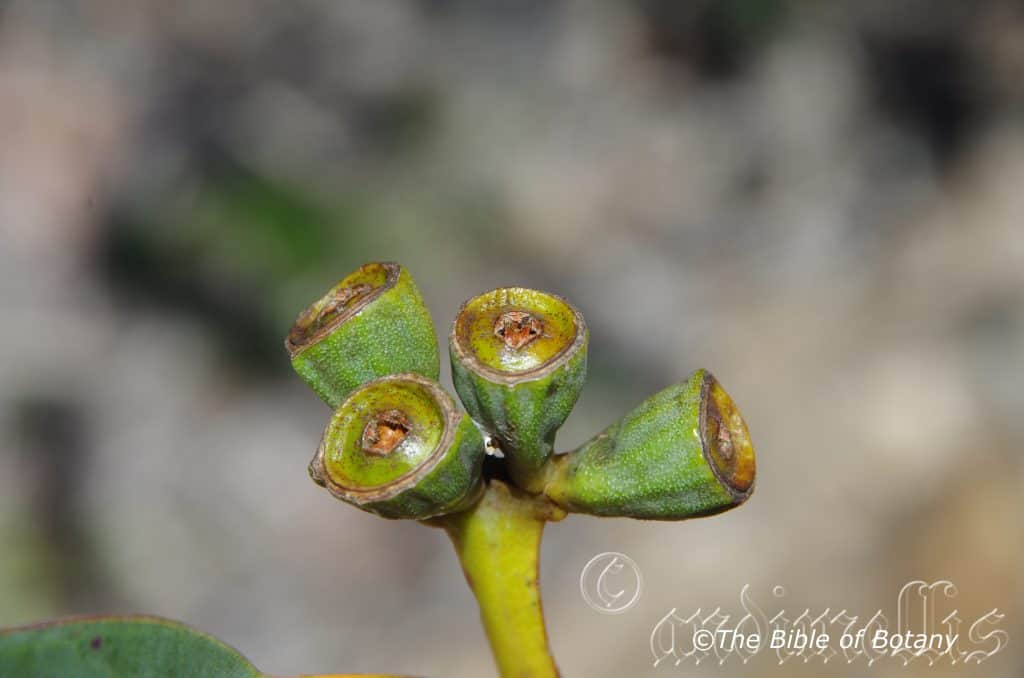
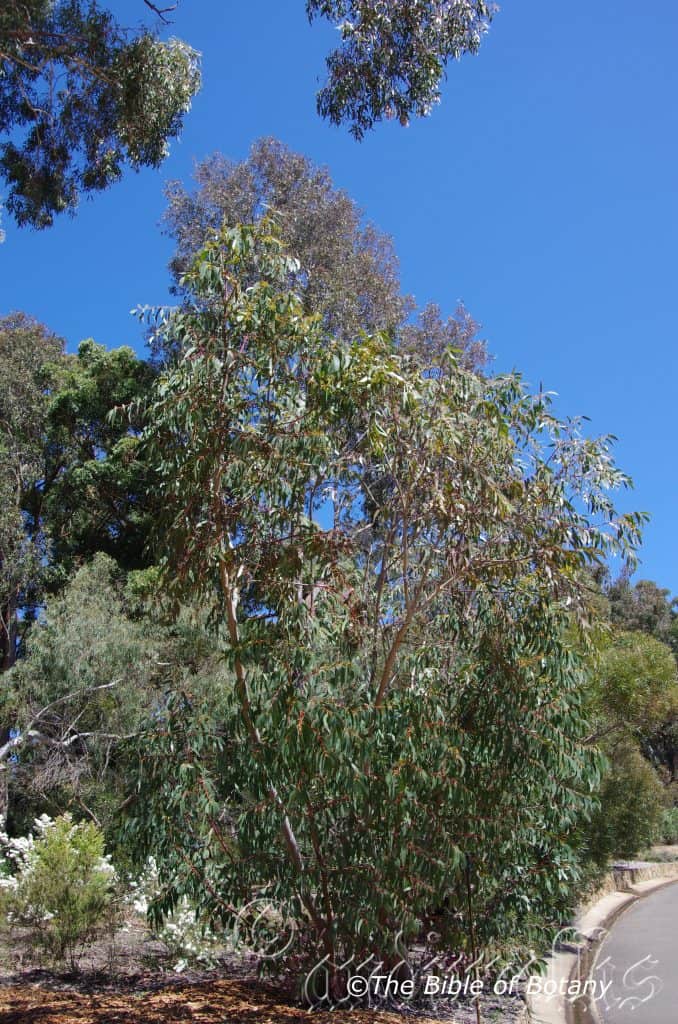
Eucalyptus leuhmannian
Classification:
Unranked: Eudicots
Unranked: Rosids
Order: Myrtales
Family: Myrtaceae
Genus: From Eu, which is Greek a prefix for good or well and Kaluptos, which is Ancient Greek for to cover up. It refers to the stamens, which have a lid or cover over them in the bud stage prior to opening.
Specie: Is named in honour of Johann Georg Luehmann; 1843–1904, who was a German born Australian. In 1868 he was appointed to the Melbourne Herbarium as F. Mueller’s assistant, where he devoted most of his time to the smooth running of the herbarium. He was a good botanist and did most of the preliminary identification of material sent to the herbarium. His great assistance was acknowledged by Mueller in the preface of his Key to the System of Australian Plants in 1888.
Sub specie:
Common Name: Yellow top Mallee Ash.
Distribution:
Eucalyptus luehmanniana is restricted to a narrow band along the coast of central New South Wales, south of Newcastle to Wollongong.
https://avh.ala.org.au/occurrences/search?taxa=Eucalyptus+leuhmanniana#tab_mapView
Habitat Aspect Climate:
Eucalyptus luehmanniana prefers full sun. It is a widespread specie which is found in moist schlerophyll forests, dry schlerophyll forests or semi open grassy woodlands on gentle or steep slopes on mountains. The altitude ranges from 700 meters ASL to 1050 meters ASL.
The temperatures range from minus 2 degrees in July to 39 degrees in January.
The rainfall ranges from lows of 600mm to an average of 1100mm annually.
Soil Requirements:
Eucalyptus luehmanniana prefers deep or shallow fine sands, sandy loams. The soils are derived from decomposed sandstones. The soils pH ranges from 4.5pH to 5.5pH. The soils experience periodic flooding or drainage. Non saline soils to moderately saline soils are tolerated.
Height & Spread:
Wild Plants: 5m to 7m by 3m to 5m.
Characteristics:
Eucalyptus luehmanniana is a small tree usually less than 10 meters with a thin single trunk or multi trunked mallee branching from near the ground. The bark is smooth, white to yellowish or brown, grey or olive. The juvenile stems are usually yellow or at times glaucous and are square in cross-section. Older trees form a lignotuber.
The opposite 3 or 4 pairs of juvenile elliptical leaves are sessile or sub sessile. The glossy, green leaves then become alternate petiolate, broadly lanceolate and measure 70mm to 175mm in length by 30mm to 75mm in width. The bases becoming oblique, while the apexes are acute.
The alternate mature leaves petioles measure 17mm to 40mm in length. The lanceolate to falcate, concolorous, glossy, green leaves measure 100mm to 200mm in length by 20mm to 45mm in width. The bases are oblique to sub oblique, while the apexes are acute. The mid vein is slightly prominent on both laminas on the basal half, while the lateral veins are faintly visible and sparsely to moderately reticulate. The intramarginal veins are parallel to and well away from margin. Oil glands are island.
The axillary unbranched, broadly flattened peduncle measure 15mm to 25mm in length. The 11 to15 buds on each umbel has pedicels, which measure 3mm to 11mm in length. The clavate to rhomboidal mature buds are yellow, or at times glaucous, with the hypanthium slightly ribbed longitudinally measure 6mm to 10mm in length by 4mm to 7mm in diameter. The scar is absent. The beaked to conical to pyramidal operculum dis from the irregularly flexed filaments. The reniform to cordate, versatile, dorsifixed anthers dehisce along confluent slits. The style flares slightly on the green disc and tapers to the stigma. The prolific white flowers appear from December to January though my photos would indicate mid to late October.
The pedicels on the capsules measure 2mm to 10mm in length. The cupular, urceolate or barrel-shaped, glaucous to sub glaucous capsules measure 8mm to 13mm in length by 9mm to 12mm in diameter and are slightly ribbed longitudinally. The disc is raised and slightly convex or level to descending, while the 5 valves are level with the rim or are enclosed.
The deep brown, black or deep grey, seeds are pyramidal or obliquely pyramidal with a glabrous dorsal surface measure 2mm to 3mm in length.
Wildlife:
The flowers Eucalyptus luehmanniana are light nectar producers but are still are very attractive to most honeyeaters, lorikeets, flying foxes, possums and many insects.
Cultivation:
Eucalyptus luehmanniana make excellent shelterbelts or shade trees for cattle, sheep and native animals in rural areas. It is a small tree or medium mallee which is suitable for gardeners looking for a Eucalyptus for the garden or to create a small parkland scene. It is ideal on sandy soils to medium clays that are well drained. It is fast growing so give good effects at an early age. As a mallee it will naturally grow as wide as it is tall. In the garden good specimens grow from 7 meters to 9 meters in height by 4 meters to 5 meters in diameter when grown in the open. Cutting them back tri-annually to the ground; once the lignotuber has formed, the plants will maintain a height of 4 meters to 5 meters in height by 4 meters to 5 meters in diameter.
It is particularly useful where the soils go from extremely wet to extremely dry over the course of the year.
It is too often planted singularly as a specimen tree with gardeners not prepared to experiment with mass plantings or placing them as features in bush gardens. Bush garden settings could see these trees grow a lot better where bother semi-arid trees would help absorb excess water in better rainfall areas. This Eucalyptus is very compatible with most small Grevillea and Hakeas so mass plantings in garden beds are an option not explored by most gardeners.
Like all Eucalyptus leaf drop, dropping of small branches means continual lawn maintenance but then this also means good quantities of leaf litter mulch.
Propagation:
Seeds: Sow the seeds of Eucalyptus luehmanniana into a seed raising mix. Cover the seeds with 2mm to 3mm of fine sand and place the trays in a warm sunny position. Keep moist but not wet. When the seedlings are 25mm to 50mm tall, prick them out and plant them into 50mm native tubes using a good organic mix.
Once the seedlings reach 200mm to 250mm in height plant them out into their permanent position. Mass plantings are best achieved by planting them at 5 meters to 8 meter centers where it is planted as small garden trees or specimen plants or 3 meters to 4 meters where clumps are required.
Fertilize using seaweed, fish emulsion or organic chicken pellets soaked in water on an alternate basis. Fertilize every two months until the plants are established then twice annually in early September or March to maintain health, vitality and better flowering.
Further Comments from Readers:
“Hi reader, it seems you use The Bible of Botany a lot. That’s great as we have great pleasure in bringing it to you! It’s a little awkward for us to ask, but our first aim is to purchase land approximately 1,600 hectares to link several parcels of N.P. into one at The Pinnacles NSW Australia, but we need your help. We’re not salespeople. We’re amateur botanists who have dedicated over 30 years to saving the environment in a practical way. We depend on donations to reach our goal. If you donate just $5, the price of your coffee this Sunday, We can help to keep the planet alive in a real way and continue to bring you regular updates and features on Australian plants all in one Botanical Bible. Any support is greatly appreciated. Thank you.”
In the spirit of reconciliation we acknowledge the Bundjalung, Gumbaynggirr and Yaegl and all aboriginal nations throughout Australia and their connections to land, sea and community. We pay our respect to their Elders past, present and future for the pleasures we have gained.
Eucalyptus ligustrina
Classification:
Unranked: Eudicots
Unranked: Rosids
Order: Myrtales
Family: Myrtaceae
Genus: From Eu, which is Greek a prefix for good or well and Kaluptos, which is Ancient Greek for to cover up. It refers to the stamens, which have a lid or cover over them in the bud stage prior to opening.
Specie: From Ligustrum, which is the old Latin name for Privet. It refers to leaves, which resemble the Chinese Privets.
Sub specie:
Common Name: Privet Leaf Stringy Bark.
Distribution:
Eucalyptus ligustrina is restricted to 2 disjunct populations in northern and southern coastal New South Wales. The first is from the Bald Rock National Park to the Guy Fawkes River National Park while the second is found south from Wollemi National Park to Deua National Park west of Moruya. It is mainly found on and east of the Great Dividing Range and western slopes.
https://avh.ala.org.au/occurrences/search?taxa=Eucalyptus+ligustrina#tab_mapView
Habitat Aspect Climate:
Eucalyptus ligustrina prefers full sun. It is a widespread specie which is found in moist schlerophyll forests, dry schlerophyll forests or semi open grassy woodlands on gentle or steep slopes on mountains. The altitude ranges from 700 meters ASL to 1050 meters ASL.
The temperatures range from minus 4 degrees in July to 36 degrees in January.
The rainfall ranges from lows of 600mm to an average of 1100mm annually.
Soil Requirements:
Eucalyptus ligustrina prefers deep fine sands, sandy loams to medium clays. The soils are derived from decomposed granites or sandstones. The soils pH ranges from 5pH to 6.5pH. It does not tolerate water logged soils however moisture is available throughout the year. Non saline soils to moderately saline soils are tolerated.
Height & Spread:
Wild Plants: 6m to 20m by 3m to 5m.
Characteristics:
Eucalyptus ligustrina is a small tree usually less than 10 meters with a thin single trunk or multi trunked mallee branching from near the ground. The grey to grey-brown stringy bark is loose, rough with an irregular pattern to the larger branches. The branchlets are smooth white to pale grey and glabrous. The bark is persistent. Older trees form a lignotuber.
Eucalyptus ligustrina’s opposite juvenile leaves are ovate and measure 24mm to 40mm in length by 20mm to 32mm in width. The discolourous laminas are deep green, glossy and covered in white or off white hispid hairs on the upper lamina while the lower laminas are mid green, semi glossy and glabrous. The petioles are pale yellow green and measure 2mm to 5mm in length.
The alternate adult leaves of Eucalyptus ligustrina are elliptical to broad lanceolate, straight to falcate and measure 80mm to 140mm in length and 17mm to 25mm wide. The pale bluish-white petioles measure 3mm to 6mm in length. The oblique bases are cuneate on one side and tapered on the other side while the apexes are broad acute. The concolourous or slightly discolourous leaves are mid green to deep green, semi glossy to dull on the upper lamina while the lower laminas are slightly paler and dull. The margins are entire. The mid vein is prominent on the lower lamina and slightly prominent on the upper lamina. The lateral veins are penniveined and greater than 60 degrees to the main vein and are faintly visible. The intramarginal veins are parallel to the margin and just inside the margin. The few oil glands are at the junctions of the lateral and auxiliary veins.
The inflorescences of Eucalyptus ligustrina are born as umbellasters usually contain 7 to 11 flowers but 7 and 8 are not uncommon from the leaf axils. The peduncules are terete while the pedicels are terete. The peduncules measure 6mm to 20mm in length while the pedicels measure 1mm to 6mm in length.
The ovoid or clavate buds are mid green. The hypanthium measure 3mm to 4mm in length by 4mm to 5mm in diameter. The lime-green conical calyptras have a blunt acute to blunt rostrate apex. The calyptras measure 3mm to 4mm in length. The bud scar is absent.
The inflexed or irregularly flexed stamens are white to cream and measure 5mm to 6mm in length. The creamy yellow anthers are oblong, dorsifixed and dehisce through longitudinal slits.
The short, stocky, pastel green style is erect. It measures 2mm to 2.5mm in length. The disc is honey amber. The flowers appear erratically from May to June depending on local weather conditions.
The fruits of Eucalyptus ligustrina are hemispherical gum nuts. The gum nuts measure 6mm to 10mm in length by 7mm to 12mm in diameter. The disc is flat or slightly raised usually with 3 or 4 exserted valves.
The flattened seeds are long ovoid and measure 1mm to 1.5mm in length.
Wildlife:
The flowers Eucalyptus ligustrina are light nectar producers but are still are very attractive to most honeyeaters, lorikeets, flying foxes, possums and many insects.
Cultivation:
Eucalyptus ligustrina make excellent shelterbelts or shade trees for cattle, sheep and native animals in rural areas. It is a small tree or medium mallee which is suitable for gardeners looking for a Eucalyptus for the garden or to create a small parkland scene. It is ideal on sandy soils to medium clays that are well drained. It is fast growing so give good effects at an early age. As a mallee it will naturally grow as wide as it is tall. In the garden good specimens grow from 7 meters to 9 meters in height by 4 meters to 5 meters in diameter when grown in the open. Cutting them back tri-annually to the ground; once the lignotuber has formed, the plants will maintain a height of 4 meters to 5 meters in height by 4 meters to 5 meters in diameter.
It is particularly useful where salinity is a problem or near the coast where salt laden winds are a problem.
It is too often planted singularly as a specimen tree with gardeners not prepared to experiment with mass plantings or placing them as features in bush gardens. Bush garden settings could see these trees grow a lot better where bother semi-arid trees would help absorb excess water in better rainfall areas. This Eucalyptus is very compatible with most small Grevillea and Hakeas so mass plantings in garden beds are an option not explored by most gardeners.
Like all Eucalyptus leaf drop, dropping of small branches means continual lawn maintenance but then this also means good quantities of leaf litter mulch.
Propagation:
Seeds: Sow Eucalyptus ligustrina seeds into a seed raising mix. Cover the seeds with 2mm to 3mm of fine sand and place the trays in a warm sunny position. Keep moist but not wet. When the seedlings are 25mm to 50mm tall, prick them out and plant them into 50mm native tubes using a good organic mix.
Once the seedlings reach 200mm to 250mm in height plant them out into their permanent position. Mass plantings are best achieved by planting them at 5 meters to 8 meter centers where it is planted as small garden trees or specimen plants or 3 meters to 4 meters where clumps are required.
Fertilize using seaweed, fish emulsion or organic chicken pellets soaked in water on an alternate basis. Fertilize every two months until the plants are established then twice annually in early September or March to maintain health, vitality and better flowering.
Further Comments from Readers:
“Hi reader, it seems you use The Bible of Botany a lot. That’s great as we have great pleasure in bringing it to you! It’s a little awkward for us to ask, but our first aim is to purchase land approximately 1,600 hectares to link several parcels of N.P. into one at The Pinnacles NSW Australia, but we need your help. We’re not salespeople. We’re amateur botanists who have dedicated over 30 years to saving the environment in a practical way. We depend on donations to reach our goal. If you donate just $5, the price of your coffee this Sunday, We can help to keep the planet alive in a real way and continue to bring you regular updates and features on Australian plants all in one Botanical Bible. Any support is greatly appreciated. Thank you.”
In the spirit of reconciliation we acknowledge the Bundjalung, Gumbaynggirr and Yaegl and all aboriginal nations throughout Australia and their connections to land, sea and community. We pay our respect to their Elders past, present and future for the pleasures we have gained.
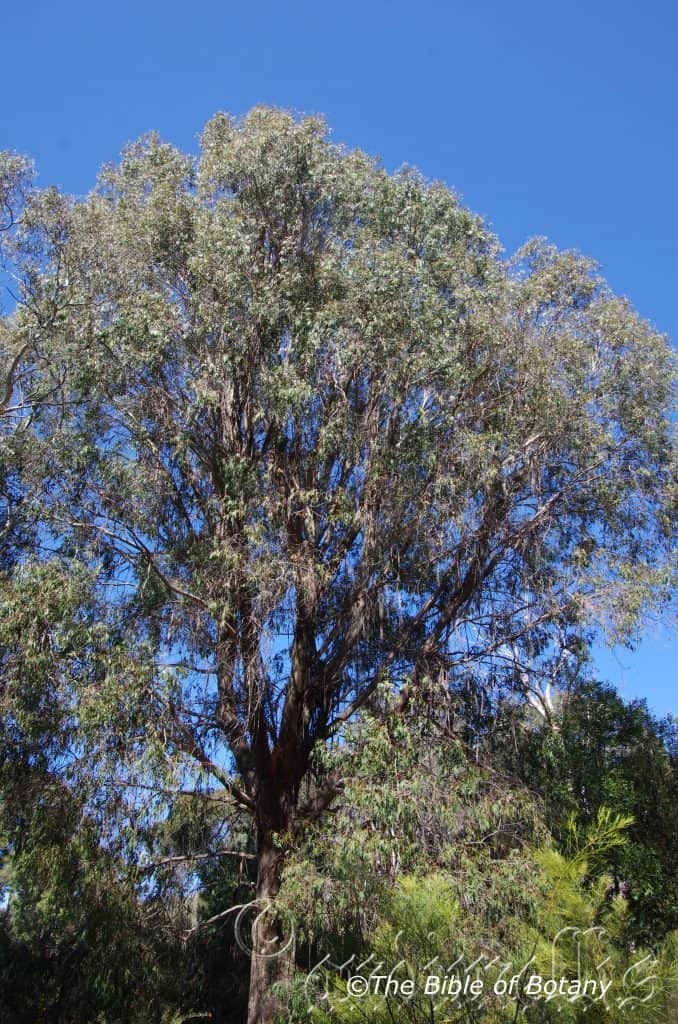
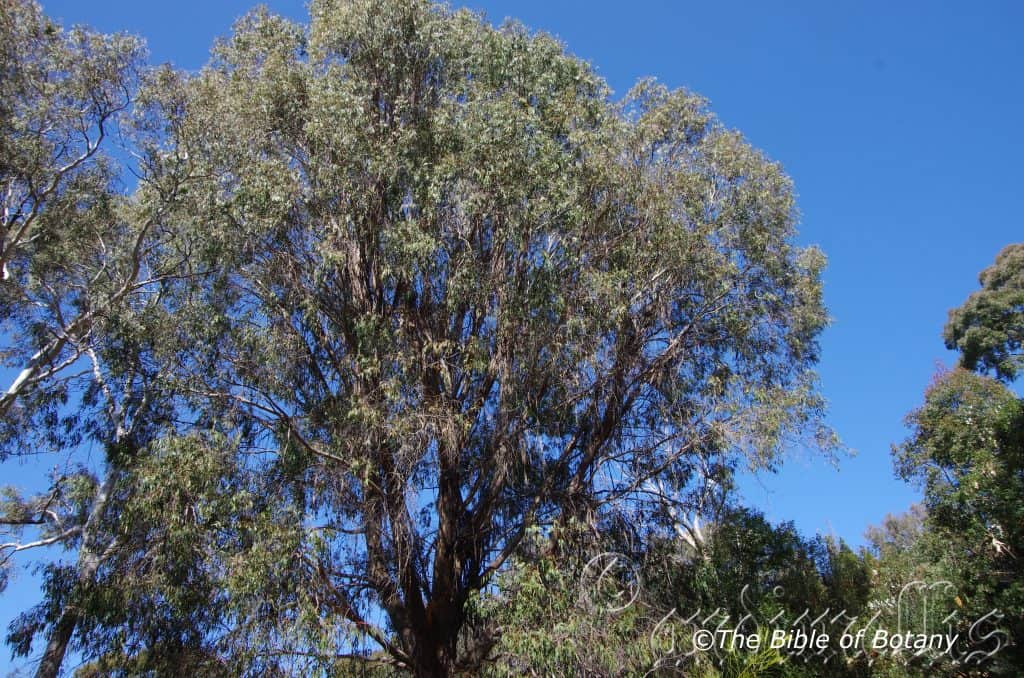
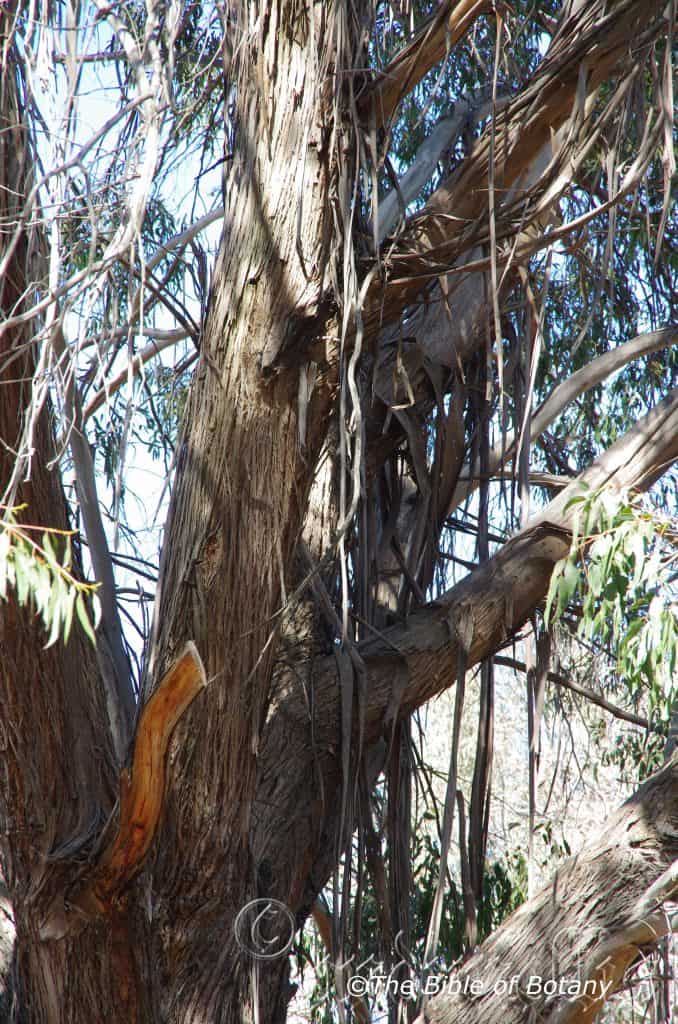
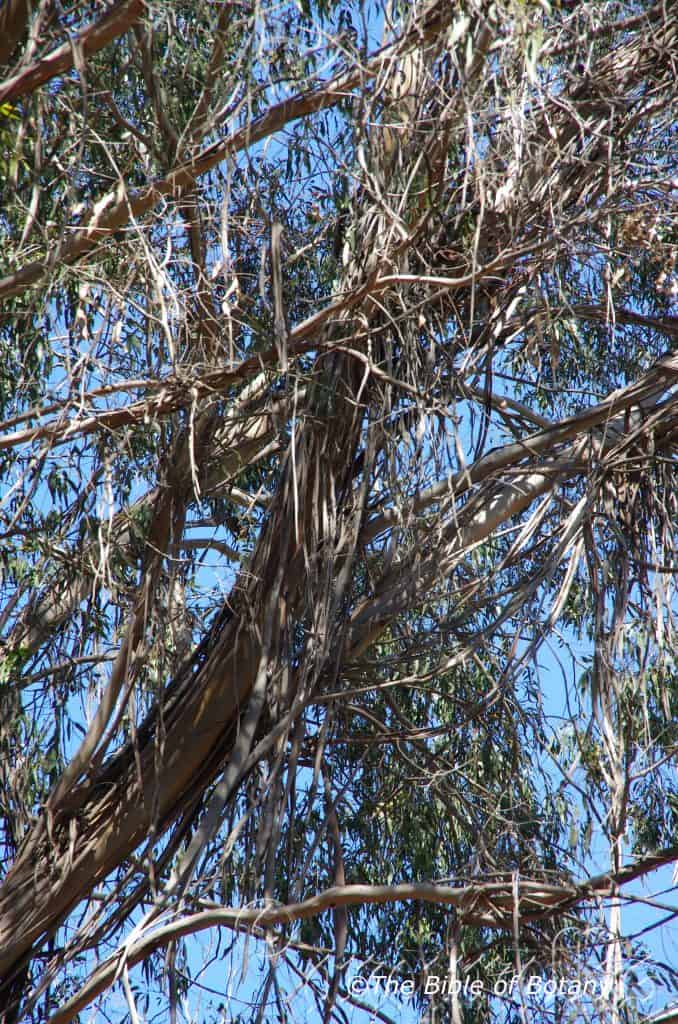
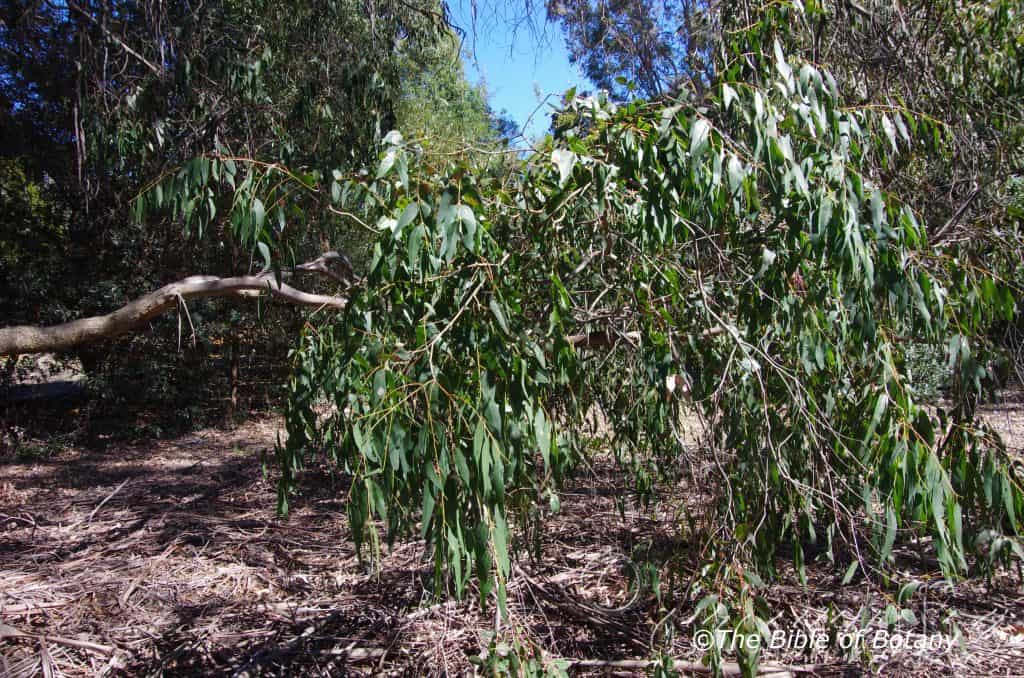
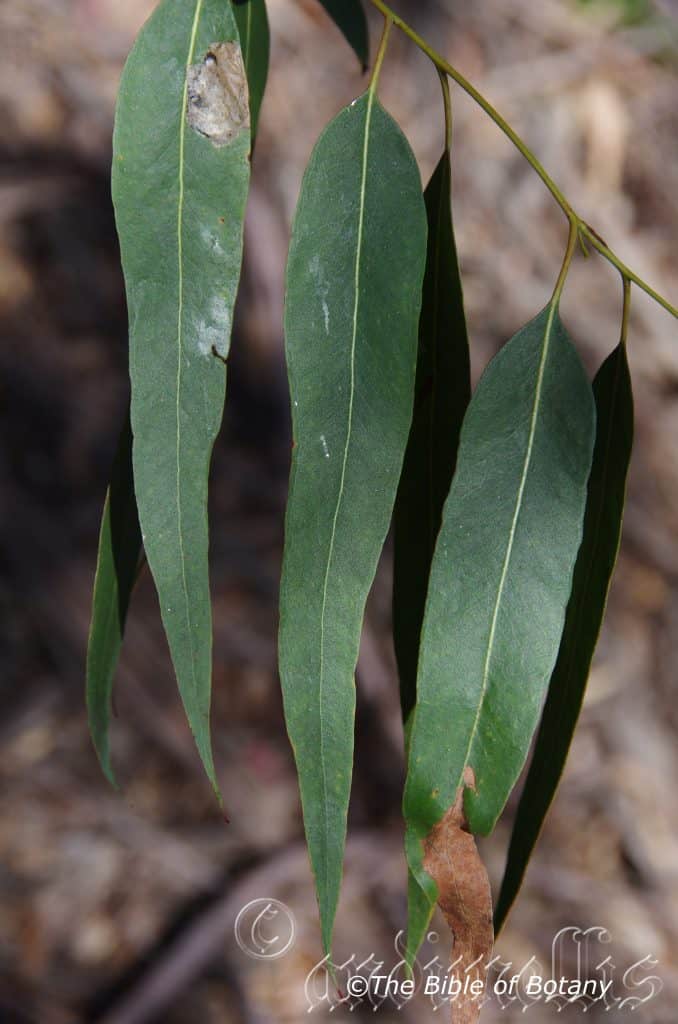
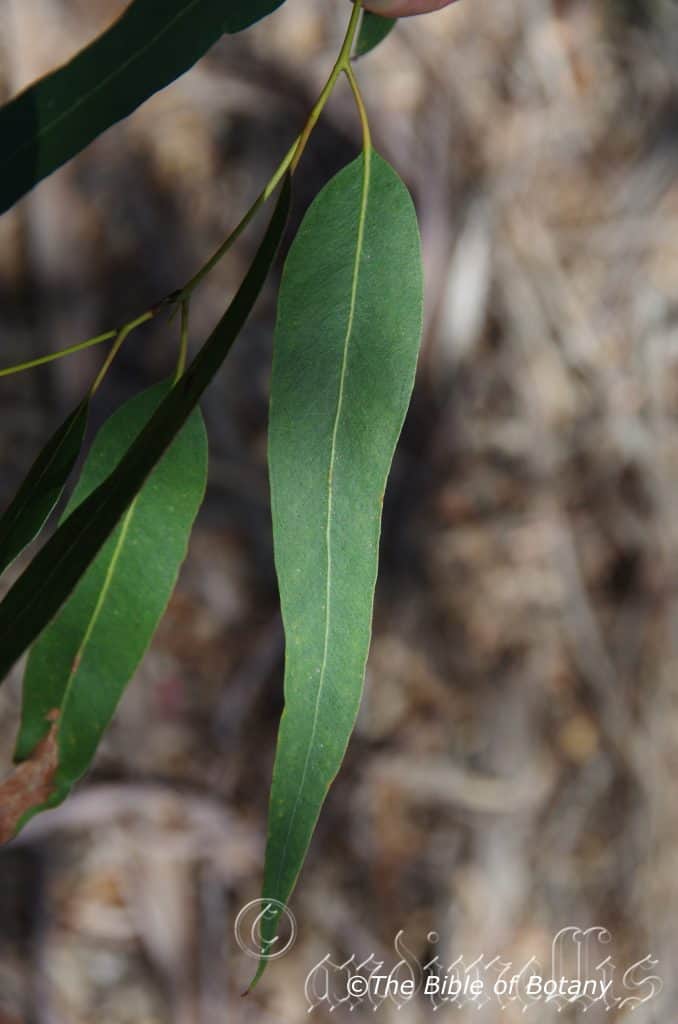
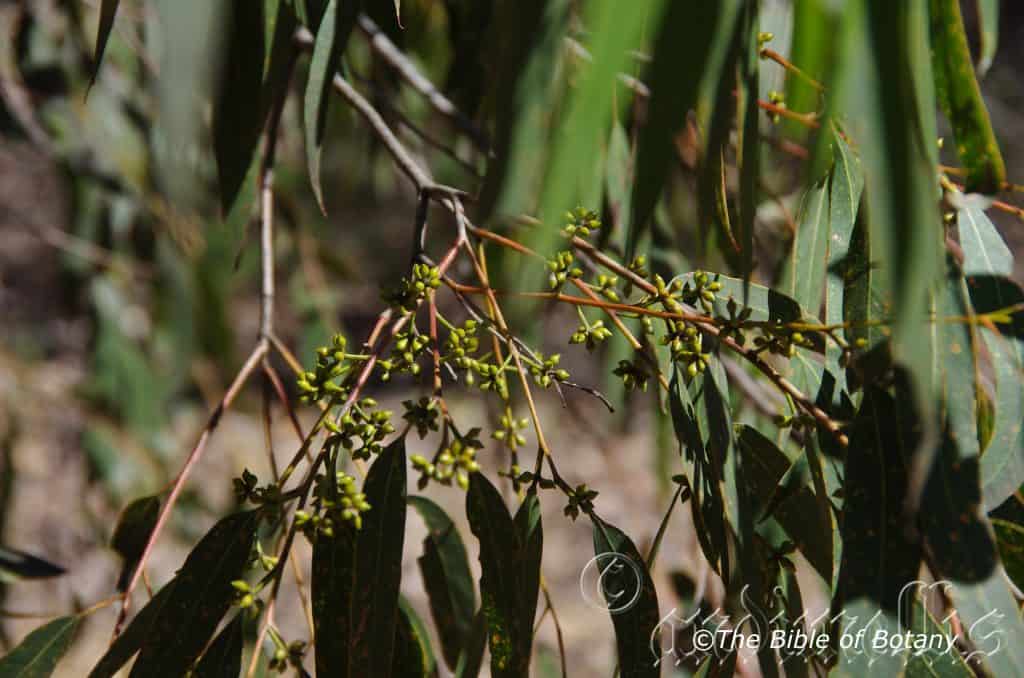

Eucalyptus macarthurii
Classification:
Unranked: Eudicots
Unranked: Rosids
Order: Myrtales
Family: Myrtaceae
Genus: From Eu, which is Greek a prefix for good or well and Kaluptos, which is Ancient Greek for to cover up. It refers to the stamens, which have a lid or cover over them in the bud stage prior to opening.
Specie: Is named in honour of William Macarthur; 1800-1882, who was an Australian botanist, horticulturalist and agriculturalist.
Sub specie:
Common Name: Camden Woollybutt.
Distribution:
Eucalyptus macarthurii is locally frequent but restricted to an area bounded by Kanangra Boyd National Park, Abercrombie Cave Reserve, Paddy’s River near Marulan and Camden to Goulburn in central eastern New South Wales.
https://avh.ala.org.au/occurrences/search?taxa=Eucalyptus+macarthurii#tab_mapView
Habitat Aspect Climate:
Eucalyptus macarthurii prefers full sun. It grows in exposed situations in open grassy woodlands on broad cold flats. The altitude ranges from 1000 meters ASL to 1200 meters ASL.
The temperatures range from minus 5 degree in August to 36 degrees in January.
The rainfall ranges from lows of 900mm to an average of 1500mm.
Soil Requirements:
Eucalyptus macarthurii prefers relatively fertile soils which consist of medium clays or bare shales or schists. The soils are usually derived from decomposed shale and metashales. The soils pH ranges from 4.5pH to 6pH. It does not tolerate water logged soils.Non saline soils to moderately saline soils and probably the low end of extremely saline soils are tolerated as are salt laden winds.
Height & Spread:
Wild Plants: 25m to 40m by 15m to 20m.
Characteristics:
Eucalyptus macarthurii is a large single trunk tree. The bark is persistent, thick, shortly fibrous and grey-brown from the base through to the larger branches. The branches are smooth and grey turning lime green and reddish-orange at the extremes when first flushing. The bark is shed in short ribbons on the smaller branches and branchlets.
Eucalyptus macarthurii’s juvenile and coppice stems are terete and glabrous. The opposite disjunct leaves are ovate to broad-lanceolate turning to broad-lanceolate at the base and lanceolate at the apex on older stems before changing to the mature leaf. The concolourous laminas are dull mid green and glabrous. The margins are entire.
The alternate, disjunct, leaves are narrow-lanceolate to lanceolate and are straight to falcate. Eucalyptus macarthurii’s leaves measure 80mm to 160mm in length by 8mm to 15mm in width. The terete petioles measure 9mm to 17mm in length. The bases broadly taper to the petiole while the apexes are narrow acute. The concolourous laminas are dull green and glabrous. The margins are entire while the mid vein is prominent on the lower lamina and clearly visible from the upper lamina. The lateral penniveins are visible on the both laminas while the intramarginal veins are close to the margin.
The inflorescences of Eucalyptus macarthuriiare umbellasters born auxiliary along the stems. There are 7 individual white flowers to an umbellaster. The new growth bearing the umbellasters is lime green and reddish-brown. The narrowly flattened or angular peduncles are glabrous and measure 2mm to 9mm in length while the terete pedicels measure 0mm to 2mm in length. The ovoid or fusiform buds are yellowish to lime green, glabrous and measure 3mm to 5mm in length by 2mm to3mm in diameter. The hemispherical or conical calyptra is shorter than or as long as and as wide as the hypanthium. A bud scar is present.
The white stamens measure 5mm to 6mm in length. The cream, orbicular anthers are dorsifixed and are all fertile. The creamy-green style measures 2mm to 4mm in length. The disc is glossy lime green to mid-green. The flowers appear from mid-March to July.
The fruits of Eucalyptus macarthurii are hemispherical, conical or campanulate woody capsules known as gum nuts. The deep green gum nuts turn grey-brown when ripe and measure 3mm to 5mm in length by 3.5mm to 6mm in diameter at the widest point. The disc is raised with the 4 broad triangular valves being exserted.
Wildlife:
The flowers of Eucalyptus macarthurii are average yielders of nectar and pollen. This makes them attractive to honeyeaters and lorikeets along the east coast. It also attracts many insects and insectivorous birds when in flower.
Cultivation:
Eucalyptus macarthurii is a large tree which is ideally suitable for larger gardens where a Eucalyptus is required. It is fast growing. This makes it an attractive garden specimen where it looks great and makes a good affect from an early age. It looks very affective when planted with mallees or small Eucalyptus trees with contrasting foliage, trunks and growth habits. In the garden good specimens may grow from 15 meters to 30 meters in height by 15 meters to 24 meters in diameter when grown in the open.
The beauty of Eucalyptus macarthurii is that it can be established on relatively fertile shale soils where water is a limiting factor and once established will help break up the shales for surrounding plants. Like all Eucalyptus spp. though some leaf drop and dropping of small branchlets means continual lawn maintenance but then this means good quantities of leaf litter mulch in a native garden.
Propagation:
Seeds: Sow into a seed raising mix. Cover the seeds with 2mm to 3mm of fine sand and place the trays in a warm sunny position. Keep the seeds moist but not wet. When the seedlings are 25mm to 50mm tall, prick them out and plant them into 50mm native tubes using a good organic mix.
Once the seedlings reach 200mm to 250mm in height plant them out into their permanent position. Mass plantings are best done in groups of 3 to 5 as a feature by planting them at 4 meter to 5 meter centers as a tree or 5 meters to 6 meters as a mallee.
Fertilize using Seaweed, fish emulsion or organic chicken pellets soaked in water and apply the liquid on an alternate basis. Fertilize every two month until the trees are well established then every spring to ensure good growth and flowering.
Further Comments from Readers:
“Hi reader, it seems you use The Bible of Botany a lot. That’s great as we have great pleasure in bringing it to you! It’s a little awkward for us to ask, but our first aim is to purchase land approximately 1,600 hectares to link several parcels of N.P. into one at The Pinnacles NSW Australia, but we need your help. We’re not salespeople. We’re amateur botanists who have dedicated over 30 years to saving the environment in a practical way. We depend on donations to reach our goal. If you donate just $5, the price of your coffee this Sunday, We can help to keep the planet alive in a real way and continue to bring you regular updates and features on Australian plants all in one Botanical Bible. Any support is greatly appreciated. Thank you.”
In the spirit of reconciliation we acknowledge the Bundjalung, Gumbaynggirr and Yaegl and all aboriginal nations throughout Australia and their connections to land, sea and community. We pay our respect to their Elders past, present and future for the pleasures we have gained.
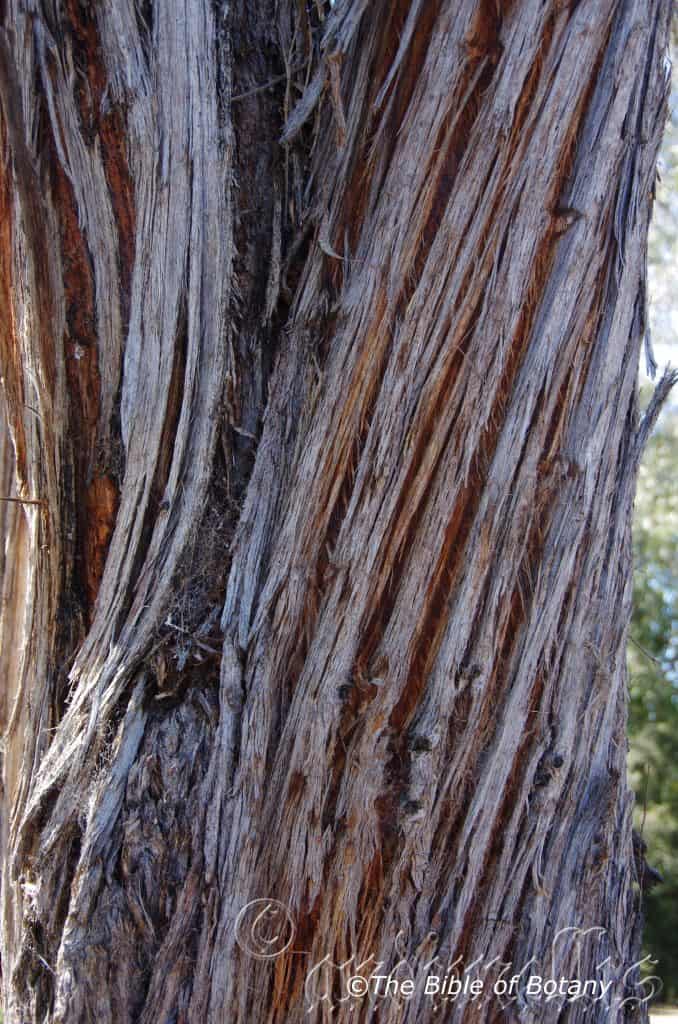




Eucalyptus macrorhyncha
Classification:
Unranked: Eudicots
Unranked: Rosids
Order: Myrtales
Family: Myrtaceae
Genus: From Eu, which is Greek a prefix for good or well and Kaluptos, which is Ancient Greek for to cover up. It refers to the stamens, which have a lid or cover over them in the bud stage prior to opening.
Specie: From Makros, which is Ancient Greek for large or very large and Rhynkos, which is Ancient Greek for a beak. It refers to operculums, which have a larger rostrate shaped apex than most other species in the genus.
Sub specie:
Common Name: Red Stringy Bark.
Distribution:
Eucalyptus macrorhyncha is widespread tree on the Great Dividing Range and Western Slopes.
It is found south from Gaman north of Inverell in New South Wales to Wilsons Promontory and west to Le chateau on the Grampians in Victoria.
In South Australia it is found in the Spring Gully Conservation Park.
https://avh.ala.org.au/occurrences/search?taxa=Eucalyptus+macrorhncha#tab_mapView
Habitat Aspect Climate:
Eucalyptus macrorhyncha prefers full sun. It grows in sheltered and exposed situations in dry schlerophyll woodlands, grassy woodlands on gentle to steep undulating slopes and mountainous country on flat ridges. The altitude ranges from 250 meters ASL to 1100 meters ASL.
The temperatures range from minus 5 degree in August to 38 degrees in January.
The rainfall ranges from lows of 600mm to an average of 850mm.
Soil Requirements:
Eucalyptus macrorhyncha prefers better quality deep light sandy loams to light fatty clays. The soils are usually derived from decomposed rocks of granites, sandstone or meta-sedimentary or meta-granite origin. The soils pH ranges from 5pH to 7pH. It does not tolerate water logged soils.Non saline soils to the higher end of moderately saline soils are tolerated.
Height & Spread:
Wild Plants: 20m to 30m by 12m to 15m.
Characteristics:
Eucalyptus macrorhyncha is a robust single trunk tree. The stringy bark is persistent on trunk and larger branches to the branchlets and is grey to red-brown. The branchlets are smooth grey, or lime green and reddish-brown at the extremes. The bark is shed in short ribbons on the smaller branches and branchlets.
Eucalyptus macrorhyncha’s juvenile and coppice stems are terete and glabrous. The initially opposite leaves soon become sub opposite to disjunct are elliptic to ovate, undulate. The concolourous laminas are glossy, green and are scabrous and covered in white hispid hairs. The margins are entire.
The alternate, disjunct, lanceolate leaves of Eucalyptus macrorhyncha measure 90mm to 150mm in length by 12mm to 27mm in width. The terete petioles measure 8mm to 12mm in length. The moderately to strongly oblique bases are rounded while the apexes are tapered obtuse to acuminate. The concolourous laminas are dull to semi glossy, blue-green and glabrous. The margins are entire while the mid vein is prominent on the basal half of both laminas. The lateral penniveins are visible on the both laminas while the intramarginal veins are relatively close to the margin. There are numerous island oil glands.
The inflorescences of Eucalyptus macrorhynchaare umbellasters born auxiliary along the stems. There are 7 to 11 individual white flowers to an umbellaster. The new growth bearing the umbellasters is yellowish-green or deep maroon. The terete or angular peduncles are glabrous and measure 7mm to 15mm in length while the terete or angular pedicels measure 2mm to 8mm in length. The fusiform buds are yellowish-green to lime-green, glabrous and measure 7mm to 9mm in length by 4mm to 5mm in diameter. The conical or elongate acute calyptra is most frequently strongly rostrate and as long as and as wide as the hypanthium. A bud scar is absent.
The cream to deep cream stamens are irregularly flexed and measure 6mm to 8mm in length. The cream, orbicular anthers are dorsifixed and are all fertile. The cream style measures 2mm to 3mm in length. The disc is maroon. The flowers appear from mid-January to June.
The fruits of Eucalyptus macrorhyncha are globose woody capsules known as gum nuts. The deep green gum nuts turn grey-brown when ripe and measure 5mm to 12mm usually 10mm in length by 7mm to 12mm usually 10mm in diameter at the widest point. The hemispherical disc is strongly raised with the 4 broad triangular valves being strongly exserted.
Wildlife:
The flowers of Eucalyptus macrorhyncha are heavy yielders of good quantities of high grade nectar and pollen. This makes it attractive to honeyeaters, lorikeets and apiarists along the east coast. It also attracts many insects and insectivorous birds when in flower.
Cultivation:
Eucalyptus macrorhyncha is a large tree which is ideally suitable for smaller gardens where a Eucalyptus is required. It is a fast growing eucalyptus. This makes it an attractive garden specimen once established. It looks great taking a good affect from an early age. It looks very affective when planted with mallees or small Eucalyptus trees with contrasting foliage and growth habits making it the center of attraction. In the garden good specimens may grow from 15 meters to 20 meters in height by 17 meters to 20 meters in diameter when grown in the open.
The beauty of Eucalyptus macrorhyncha is that it can be established on relatively poor, even skeletal soils, rugged sites where water is a limiting factor and once established looks at home in such conditions. Like all Eucalyptus spp. though some leaf drop and dropping of small branchlets means continual lawn maintenance but then this means good quantities of leaf litter mulch in a native garden.
Propagation:
Seeds: Sow the seeds of Eucalyptus macrorhyncha into a seed raising mix. Cover the seeds with 2mm to 3mm of fine sand and place the trays in a warm sunny position. Keep the seeds moist but not wet. When the seedlings are 25mm to 50mm tall, prick them out and plant them into 50mm native tubes using a good organic mix.
Once the seedlings reach 200mm to 250mm in height plant them out into their permanent position. Mass plantings are best done in groups of 3 to 5 as a feature by planting them at 4 meter to 5 meter centers as a tree or 5 meters to 6 meters as a mallee.
Fertilize using Seaweed, fish emulsion or organic chicken pellets soaked in water and apply the liquid on an alternate basis. Fertilize every two month until the trees are well established then every spring to ensure good growth and flowering.
Further Comments from Readers:
“Hi reader, it seems you use The Bible of Botany a lot. That’s great as we have great pleasure in bringing it to you! It’s a little awkward for us to ask, but our first aim is to purchase land approximately 1,600 hectares to link several parcels of N.P. into one at The Pinnacles NSW Australia, but we need your help. We’re not salespeople. We’re amateur botanists who have dedicated over 30 years to saving the environment in a practical way. We depend on donations to reach our goal. If you donate just $5, the price of your coffee this Sunday, We can help to keep the planet alive in a real way and continue to bring you regular updates and features on Australian plants all in one Botanical Bible. Any support is greatly appreciated. Thank you.”
In the spirit of reconciliation we acknowledge the Bundjalung, Gumbaynggirr and Yaegl and all aboriginal nations throughout Australia and their connections to land, sea and community. We pay our respect to their Elders past, present and future for the pleasures we have gained.
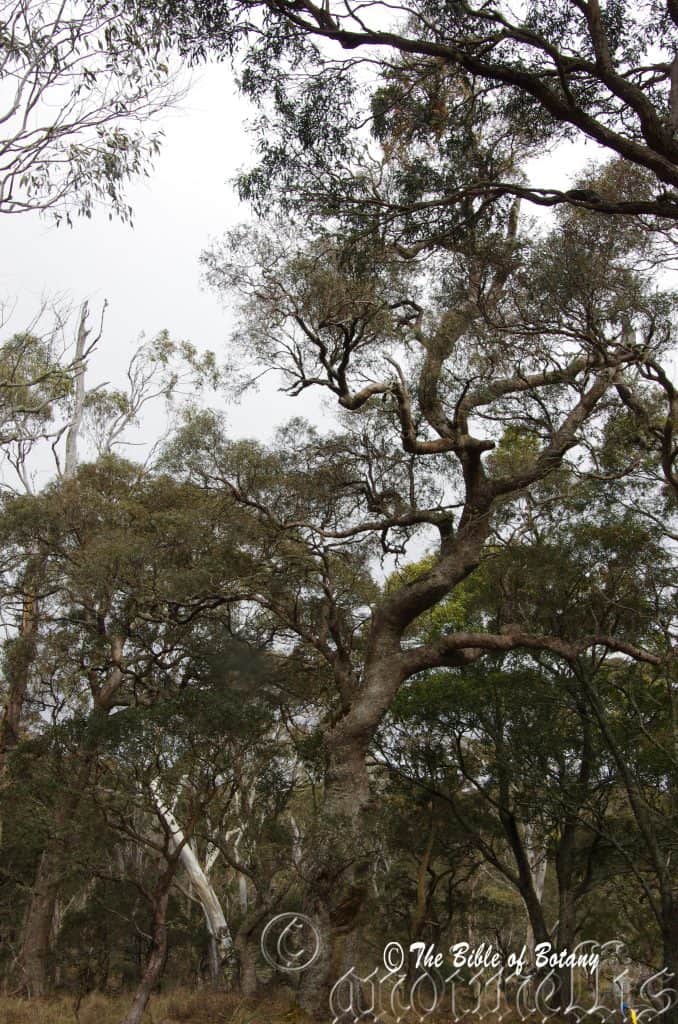
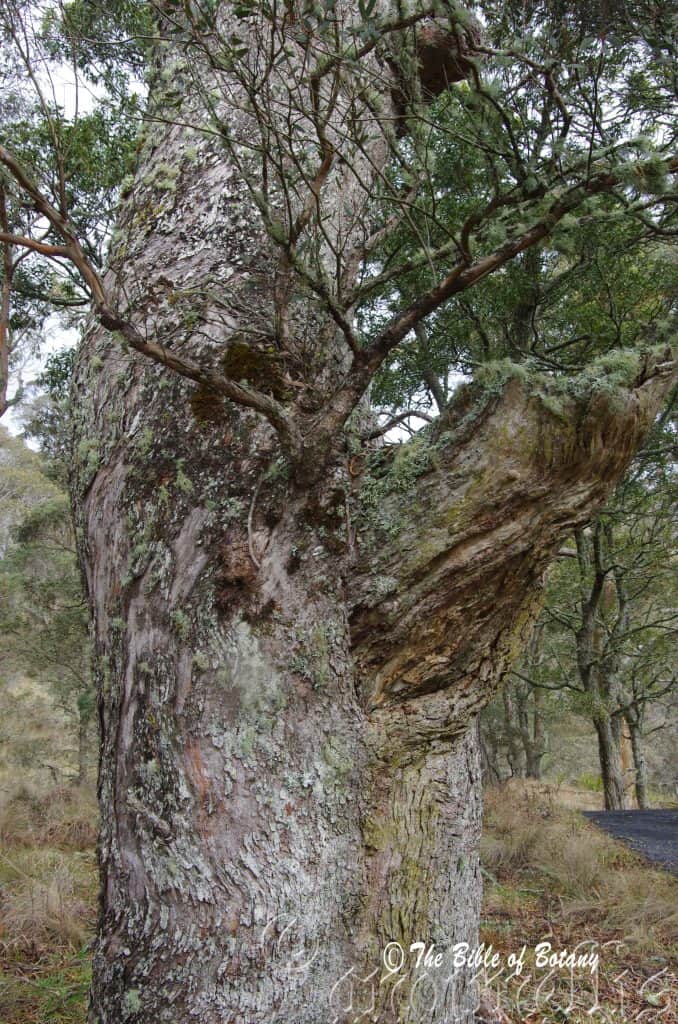
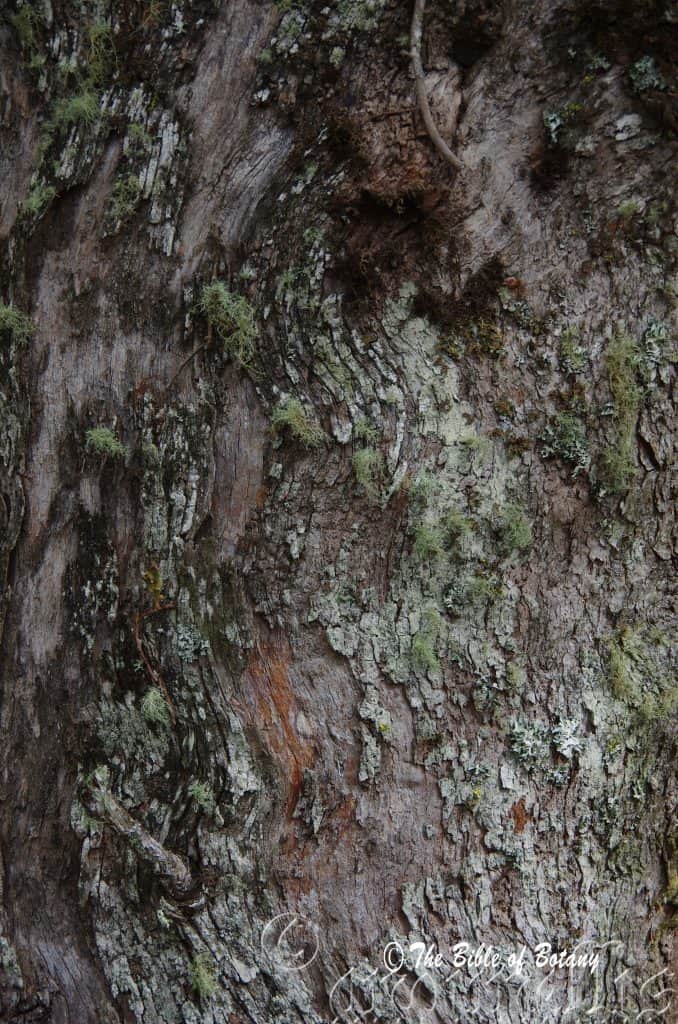
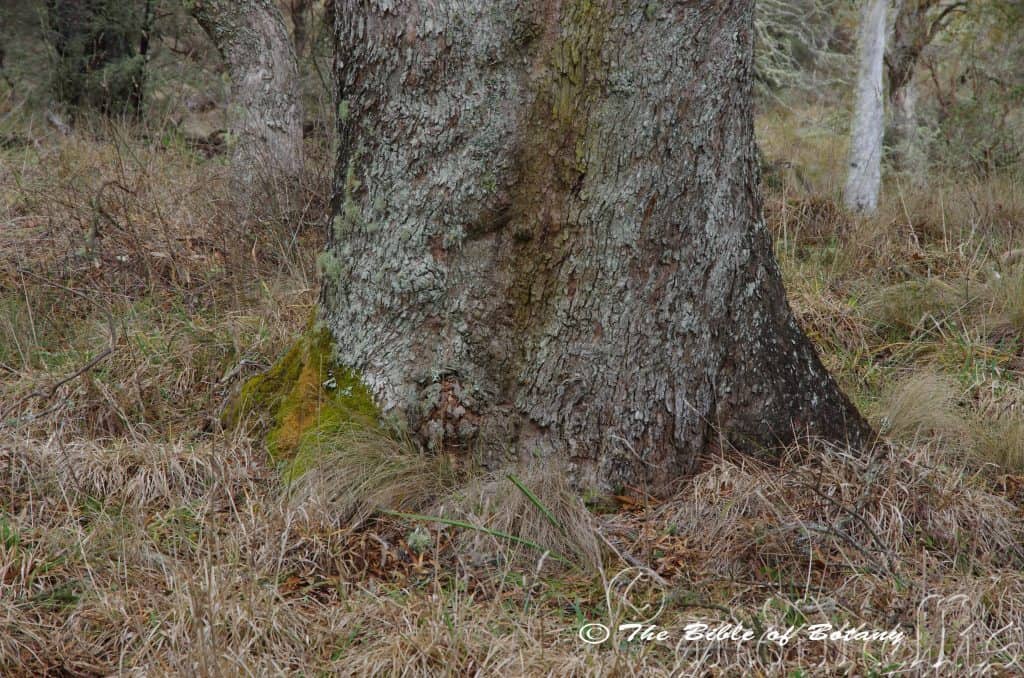
Eucalyptus magnificata
Classification:
Unranked: Eudicots
Unranked: Rosids
Order: Myrtales
Family: Myrtaceae
Genus: From Eu, which is Greek a prefix for good or well and Kaluptos, which is Ancient Greek for to cover up. It refers to the stamens, which have a lid or cover over them in the bud stage prior to opening.
Specie: From Magnificus, which is Latin for eminent, imposing, distinguished magnificent. It refers to the flowering displays, which are very impressive.
Sub specie:
Common Name:
Distribution:
Eucalyptus magnificata is found east of Armidale to Ebor in north eastern New South Wales.
https://avh.ala.org.au/occurrences/search?taxa=Eucalyptus+magnificata#tab_mapView
Habitat Aspect Climate:
Eucalyptus magnificata prefer full sun and light shade as a juvenile tree. It grows on gentle slopes to flats in moist open Eucalyptus forests and adjacent to cool moist rainforests. The altitude ranges from 1000 meters ASL to 1550 meters ASL.
The temperature range from minus 5 degrees in July to 36 degrees in January.
The rainfall ranges from lows of 1000mm to an average of 2000mm annually.
Soil Requirements:
Eucalyptus magnificata prefers shallow, poorer quality coarse sands to light fatty loams and gravelly light gritty clays. The soils are derived from decomposed granites. The soils pH ranges from 5pH to 6.5pH. It does not tolerate water logged soils. Non saline soils to moderately saline soils are tolerated.
Height & Spread:
Wild Plants: 12m to 18m by 10m to 15m.
Characteristics:
Eucalyptus magnificata is a medium size tree which has an extremely beautiful bole over half of its length. The bole is thick with a twisting rough grey fibrous bark which extends up the trunk to the branchlets. The greyish bark is shed in short flat strips to reveal a pale greyish-white new bark on the bole or short ribbons from the upper section and branches.
The opposite juvenile leaves of Eucalyptus magnificata are orbicular and measure 30mm to 40mm in length by 16mm to 22mm in width. The concolourous laminas are dull green.
The alternate, disjunct leaves are orbicular-lanceolate to broad lanceolate and measure 50mm to 110mm in length and 40mm to 60mm in width. The petioles measure 14mm to 20mm in length. The bases are broad tapering to rounded while the apexes are tapering. The concolourous laminas are dull green. The mid vein is distinctly visible on both surfaces and prominent while the lateral veins are clearly visible from both laminas. The leaf margins are entire.
The inflorescences of Eucalyptus magnificata are born as compound umbellasters containing 7 flowers from the leaf axils. The peduncules and pedicels are terete. The peduncles measure 7mm to 13mm in length while the pedicels measure 2mm to 5mm in length.
The clavate to shortly fusiform buds are pale creamy-green and measure 5mm to 7mm in length by 3mm to 4mm in diameter. The hemispherical or conical calyptras measure 4mm to 6mm in length. The bud scar is present.
The outer stamens are infertile and are white or cream and measure 8mm to 11mm in length. The creamy yellow anthers are cuboidal.
The stout pastel cream to cream style is undulating, curved or straight. It measures 7mm to 10mm in length. The disc is deep green. The flowers of Eucalyptus magnificata appear from September to January.
The fruits are broad conical gum nuts. The gum nuts measure 7mm to 10mm in length by 6mm to 9mm in diameter. The depressed disc has 4 enclosed valves.
The flattened seeds are long ovoid and measure 1mm to 1.5mm in length.
Wildlife:
Eucalyptus magnificata attracts native bees and insects when in flower. Birds like lorikeets and large honeyeaters also frequent the trees in large numbers.
Cultivation:
Eucalyptus magnificata is a medium tree for large gardens. It is ideal on lighter moisture retentive soils and alluvial flats. It is fast growing so give good effects at an early age. In cultivation it will probably grow from 10 meters to 15 meters in height by 10 meters to 15 meters in diameter.
It is ideal in a mixed park like situation where the barks contrast well with other Eucalyptus specie, Corymbia specie and Angophora specie especially if the trees selected have dissimilar barks and straight trunks.
Like most large Eucalyptus specie leaf drop, dropping of small branches means continual lawn maintenance but then in a forest garden supply good quantities of leaf litter is assured. The trees are better grown in the open on sandier loams so that they can establish the bole which is so embracingly beautiful with the fine wispy green foliage. If it is allowed to develop a strong root system in the first few years it is an excellent tree for erosion control and supporting other shrubs on the forest floor which can be used effectively for a wind break.
Propagation:
Seeds: Sow Eucalyptus magnificata seedsinto a seed raising mix. Cover the seeds with 2mm to 3mm of fine sand and place the trays in a warm sunny position. Keep moist but not wet. When the seedlings are 25mm to 50mm tall, prick them out and plant them into 50mm native tubes using a good organic mix.
Once the seedlings reach 200mm to 250mm in height plant them out into their permanent position. Mass plantings are best achieved by planting them at 5 meters to 8 meter centers where it is planted as small garden trees or specimen plants or 3 meters to 4 meters where clumps are required.
Fertilize using seaweed, fish emulsion or organic chicken pellets soaked in water on an alternate basis. Fertilize every two months until the plants are established then twice annually in early September or March to maintain health, vitality and better flowering.
Further Comments from Readers:
“Hi reader, it seems you use The Bible of Botany a lot. That’s great as we have great pleasure in bringing it to you! It’s a little awkward for us to ask, but our first aim is to purchase land approximately 1,600 hectares to link several parcels of N.P. into one at The Pinnacles NSW Australia, but we need your help. We’re not salespeople. We’re amateur botanists who have dedicated over 30 years to saving the environment in a practical way. We depend on donations to reach our goal. If you donate just $5, the price of your coffee this Sunday, We can help to keep the planet alive in a real way and continue to bring you regular updates and features on Australian plants all in one Botanical Bible. Any support is greatly appreciated. Thank you.”
In the spirit of reconciliation we acknowledge the Bundjalung, Gumbaynggirr and Yaegl and all aboriginal nations throughout Australia and their connections to land, sea and community. We pay our respect to their Elders past, present and future for the pleasures we have gained.
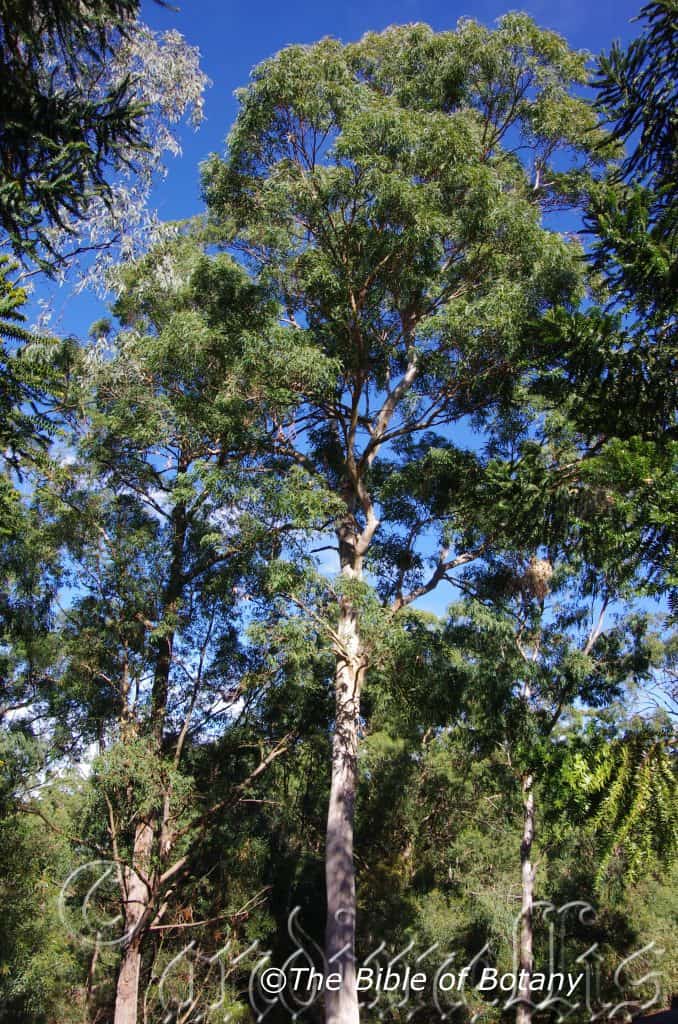

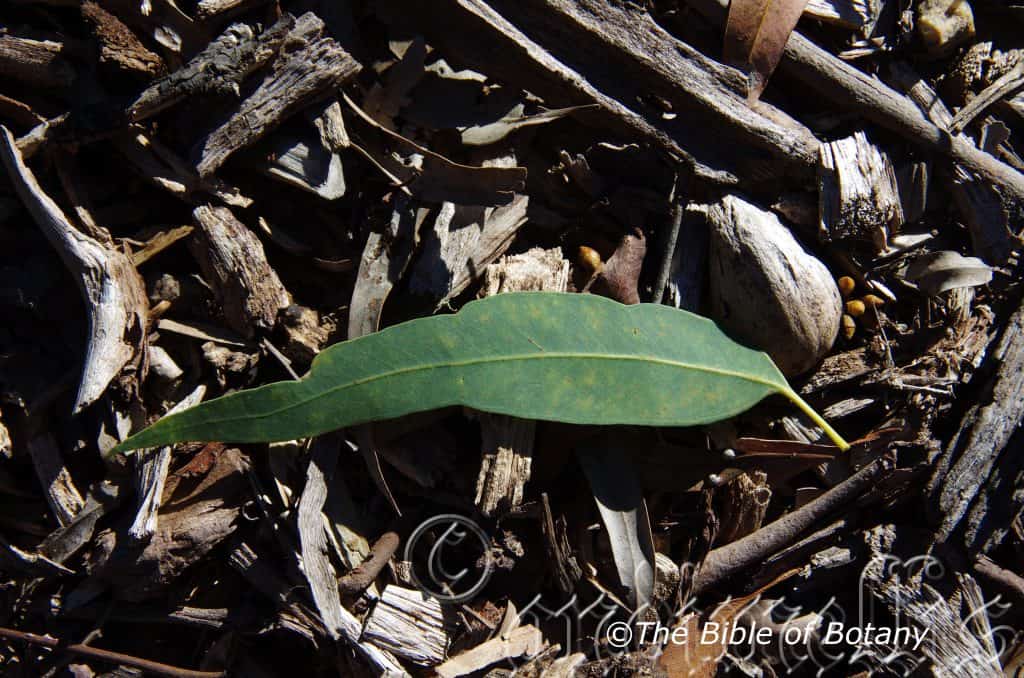

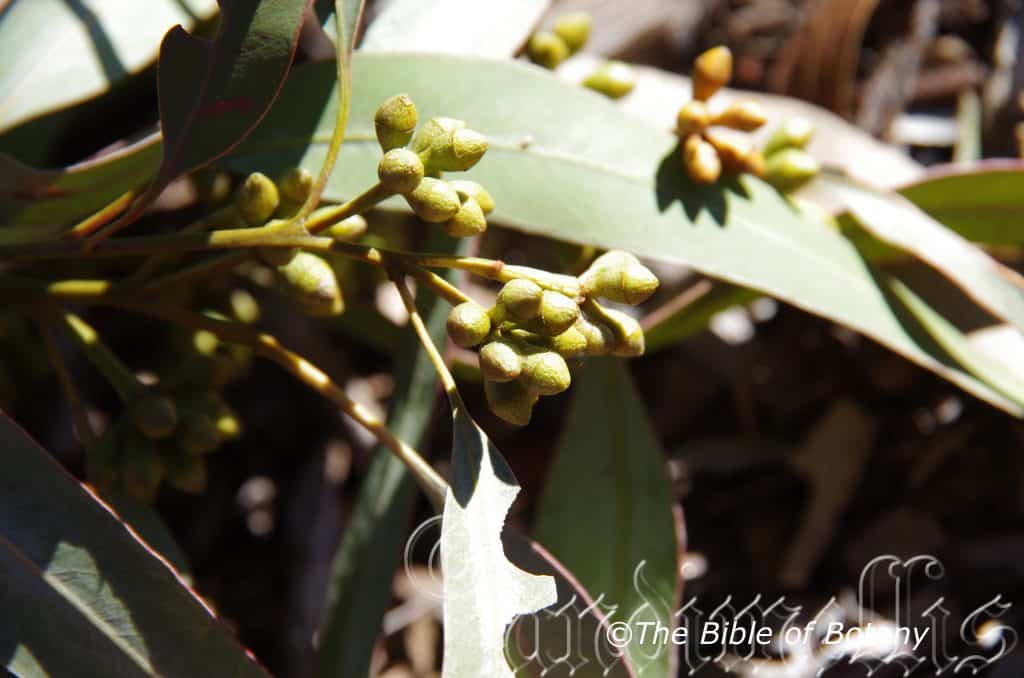
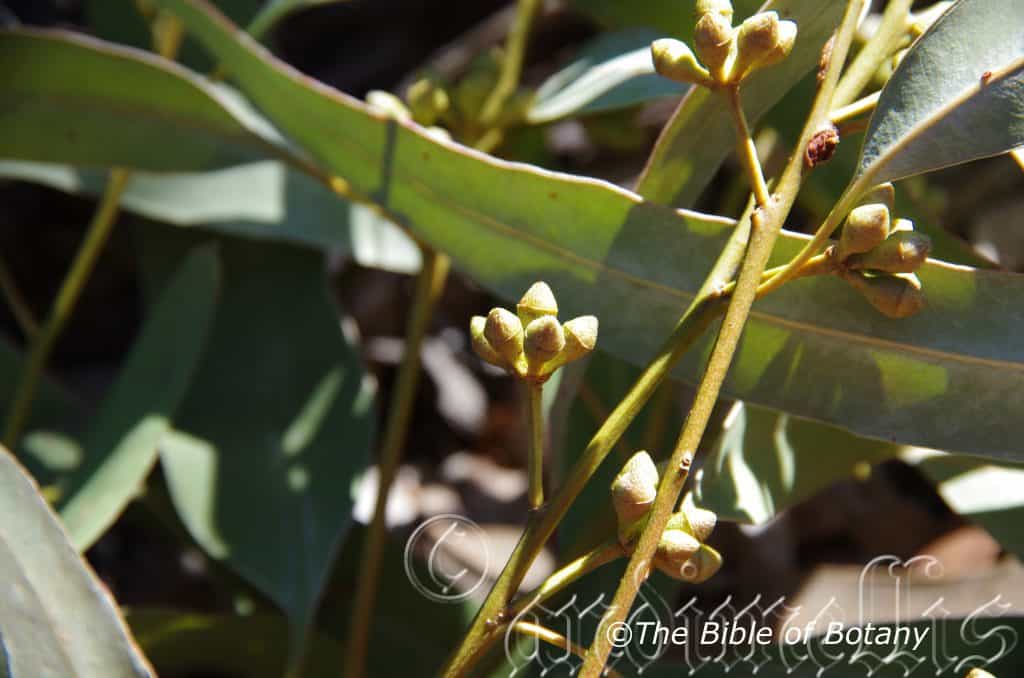
Eucalyptus major
Classification:
Unranked: Eudicots
Unranked: Rosids
Order: Myrtales
Family: Myrtaceae
Genus: From Eu, which is Greek a prefix for good or well and Kaluptos, which is Ancient Greek for to cover up. It refers to the stamens, which have a lid or cover over them in the bud stage prior to opening.
Specie: From Majus, which is Latin for greater than. It refers to the leaves, buds and capsules all being similar but a greater size than those found in Eucalyptus propinqua.
Sub specie:
Common Name: Grey Gum.
Distribution:
Eucalyptus major is found south and east of a line from the Blackdown Tablelands to Murwey in south east Queensland to Lismore in north eastern New South Wales. It is mainly found on and east of the Great Dividing Range to the coast.
https://avh.ala.org.au/occurrences/search?taxa=Eucalyptus+major#tab_mapView
Habitat Aspect Climate:
Eucalyptus major prefer full sun to light dappled shade. It grows on flat plains and gentle slopes in tall moist Eucalyptus forests. The altitude ranges from 5 meters ASL to 460 meters ASL.
The temperatures range from 2 degrees in July to 42 degrees in January.
The rainfall ranges from lows of 900mm to an average of 1600mm annually.
Soil Requirements:
Eucalyptus major prefers to grow on sandy loams to light gritty clays. The soils are usually derived from decomposed better quality lateritic sandstones, black basalts, shales and alluvial deposits. The soils pH ranges from 4.5pH to 6pH. It does not tolerate water logged soils. Non saline soils to moderately saline soils are tolerated.
Height & Spread:
Wild Plants: 15m to 20m by 8m to 12m.
Characteristics:
Eucalyptus major bark is smooth, becoming somewhat granular with age. The mottled grey and cream bark turns pink or orange when freshly exposed on decorticating in long strips. The juvenile stems are square to terete in cross-section, while the apexes are narrow acuminate.
The mature alternate leaves’ petioles measure 15mm to 30mm in length. The lanceolate to falcate, discolorous, glossy to semi glossy, deep green on the upper lamina, while the lower lamina is paler and duller. The leaves measures 90mm to 200m in length by 20mm to 40mm in width. The bases taper to the petiole, while the apexes are acuminate. The mid vein is slightly prominent on both laminas on the basal half, while the lateral veins are strongly penniveined and densely to very densely reticulate. The intramarginal veins are parallel to and just inside the margins. The oil glands are mostly island.
The inflorescence is usually axillary and unbranched with peduncles that measure 7mm to 15mm in length. The 7 flattened are shortly pedicellate or at times sessile. The mature ovoid to rhomboidal buds 5mm to 11mm in length by 4mm to 5.5mm in diameter. The scar is present, while the conical to slightly beaked operculum is discarded early before the inflexed filaments bloom. The cuboid, versatile, dorsifixed anthers dehisce along longitudinal slits. The short stout style tapers to the flat swollen stigma. The white flowers appear from November to early December.
The sessile or subsessile, obconical to cupular capsules measure 3mm to 5mm in length by 4.5mm to 8mm in diameter, while at times having faint longitudinal ribs. The disc is raised and is strongly convex, while 3 or 4 valves are strongly exserted.
The brown, obliquely pyramidal to cuboid, seeds have a glabrous dorsal surface or is shallowly pitted and measure1mm to 2mm in length.
Wildlife:
The flowers Eucalyptus major are medium nectar producers and are very attractive to most honeyeaters, lorikeets, flying foxes, possums and many insects.
Cultivation:
Eucalyptus major make excellent shelterbelts or shade trees for cattle, sheep and native animals in rural areas. The trees can be grown for their flowers that produce good quality honey for apiculture.
In the cultivation good specimens grow from 15 to 18 meters in height by 12 meters to 15 meters in diameter when grown in the open.
It is drought tolerant once established and can cope with moderate frosts.
This is not a popular cream flowering gum amongst home gardeners but should be considered where their smaller size makes them ideal for smaller gardens. The typical deep grey-black iron bark and blue leaves makes a strong contrasting silhouette against the house or beautiful attraction within the garden. The bark contrasts well with other Eucalyptus specie, Corymbia specie, or semi-arid specie with dissimilar trunks to high light the trunks and barks. Place it near the edge of a forest and give them room to reach their full potential as it is a not as tall and their wider spread is a feature worth showing off. Trees planted in full view make good bird watching trees for the nectar eating birds and insect eating birds alike. It is rather messy when the lorikeets clamber over the outer foliage.
It would be ideally suited to small to large park like scenes where they have the opportunity to spread out as they mature.
Like all Eucalyptus specie leaf drop, dropping of small branches means continual lawn maintenance but then this means good quantities of leaf litter mulch. If the trees are clumped or used in a bush garden this is not a problem.
Propagation:
Seeds: Sow the seeds of Eucalyptus major into a seed raising mix. Cover the seeds with 2mm to 3mm of fine sand and place the trays in a warm sunny position. Keep moist but not wet. When the seedlings are 25mm to 50mm tall, prick them out and plant them into 50mm native tubes using a good organic mix.
Once the seedlings reach 200mm to 250mm in height plant them out into their permanent position. Mass plantings are best done in groups of 3 to 5 as a feature by planting them at 14 meters to 16 meters centers or 8 meter to 18 meter centers for wind rows and shelter belts.
Fertilize using Seaweed, fish emulsion or organic chicken pellets soaked in water and apply the liquid on an alternate basis. Fertilize every two month until the trees are well established then every spring to ensure good growth and flowering.
Further Comments from Readers:
“Hi reader, it seems you use The Bible of Botany a lot. That’s great as we have great pleasure in bringing it to you! It’s a little awkward for us to ask, but our first aim is to purchase land approximately 1,600 hectares to link several parcels of N.P. into one at The Pinnacles NSW Australia, but we need your help. We’re not salespeople. We’re amateur botanists who have dedicated over 30 years to saving the environment in a practical way. We depend on donations to reach our goal. If you donate just $5, the price of your coffee this Sunday, We can help to keep the planet alive in a real way and continue to bring you regular updates and features on Australian plants all in one Botanical Bible. Any support is greatly appreciated. Thank you.”
In the spirit of reconciliation we acknowledge the Bundjalung, Gumbaynggirr and Yaegl and all aboriginal nations throughout Australia and their connections to land, sea and community. We pay our respect to their Elders past, present and future for the pleasures we have gained.

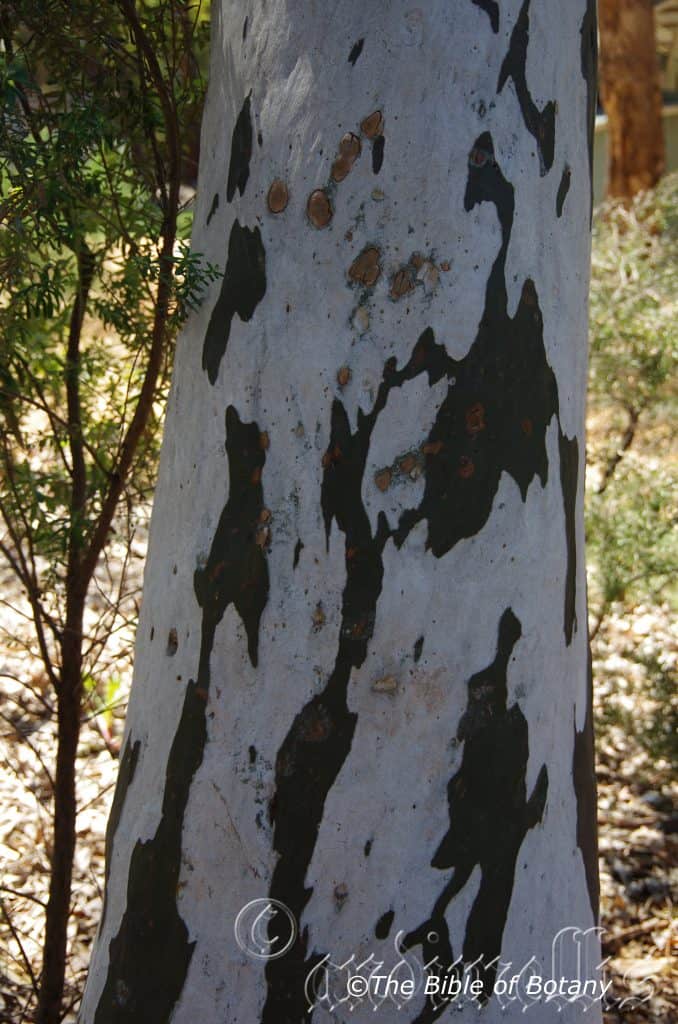

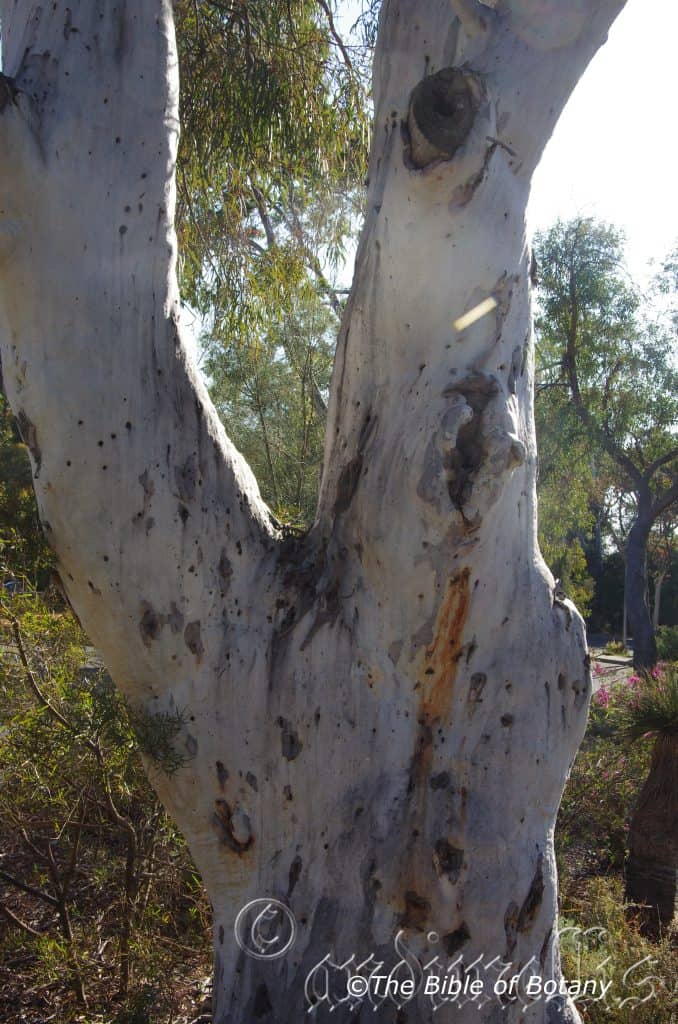
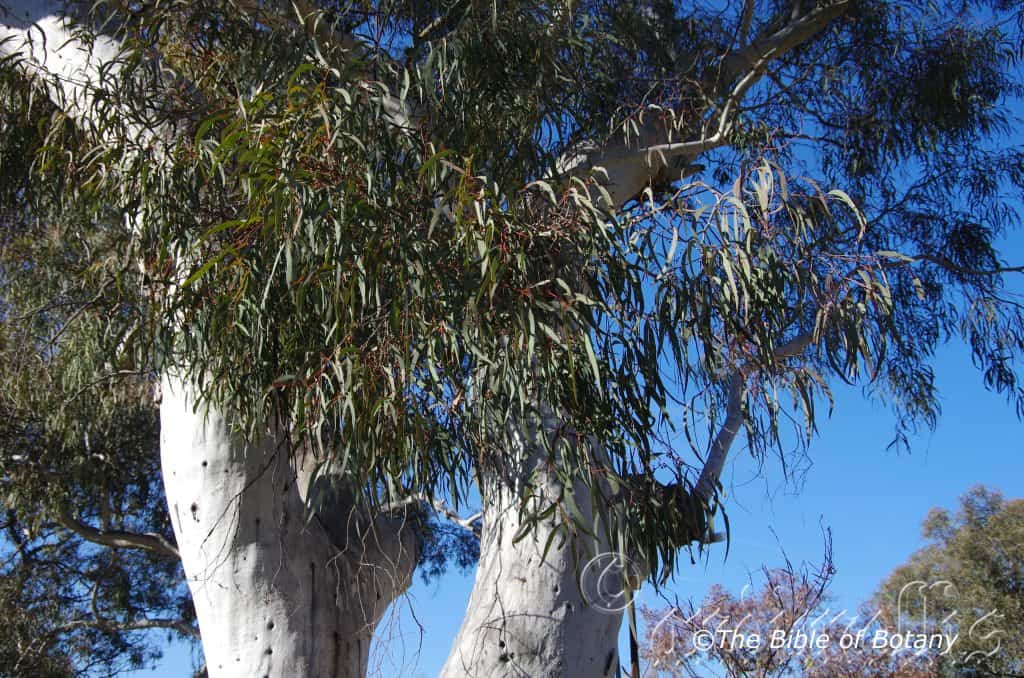
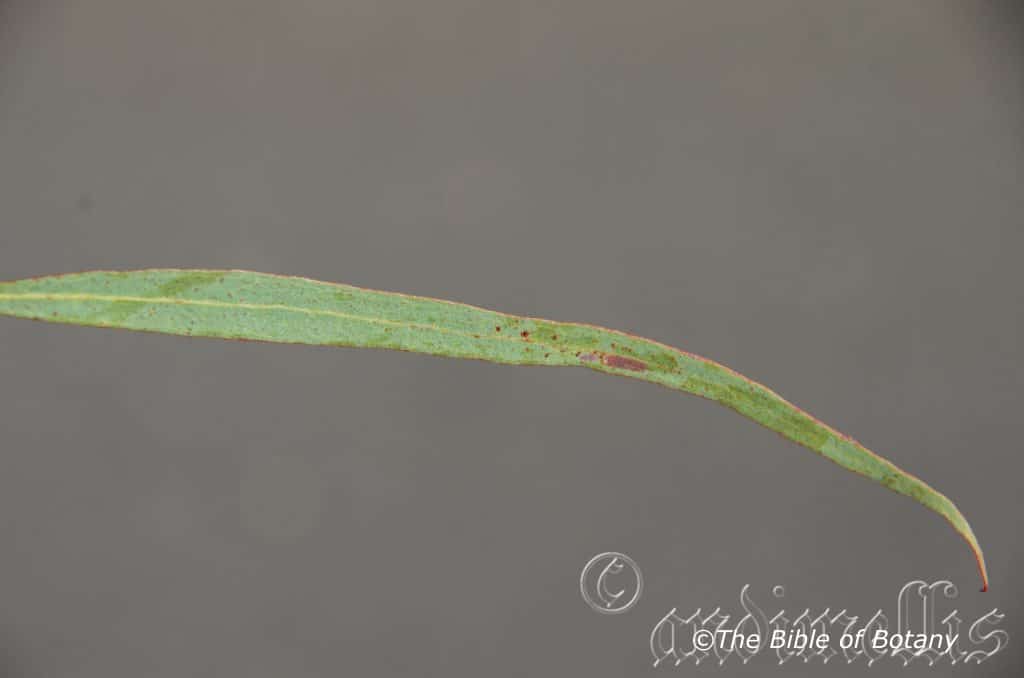

Eucalyptus mannifera
Classification:
Unranked: Eudicots
Unranked: Rosids
Order: Myrtales
Family: Myrtaceae
Genus: From Eu, which is Greek a prefix for good or well and Kaluptos, which is Ancient Greek for to cover up. It refers to the stamens, which have a lid or cover over them in the bud stage prior to opening.
Specie: From Manna, which is Ancient Greek or Latin for a sweet gum exudant and Ferae/Ferārum, which is Latin for to bear or bearing. It refers to trees, which exude a sweet gum from beneath the bark.
Sub specie: Eucalyptus mannifera subsp. gullickii. Is named in honour of Gullick.
Sub specie: Eucalyptus mannifera subsp. mannifera. From Manna, which is Ancient Greek or Latin for a sweet gum exudant and Ferae/Ferārum, which is Latin for to bear or bearing. It refers to trees, which exude a sweet gum from beneath the bark.
Common Name: Manna Gum.
Distribution:
Eucalyptus mannifera is widespread from far north eastern New South Wales to central southern Victoria. It is mainly found on the Western Slopes close to the Great Dividing Range and close to the coast in the central parts of its range.
It is found south from Crawney Pass NE of Murrurundi in north eastern New South to Warragul in southern Gippsland and west to Rose Gap near Halls Gap in Victoria.
https://avh.ala.org.au/occurrences/search?taxa=Eucalyptus+mannifera#tab_mapView
Habitat Aspect Climate:
Eucalyptus mannifera prefers full sun. It is widespread and abundant in sheltered to semi exposed situations in open dry sclerophyll woodlands on slopes along the foothills or ranges. The altitude ranges from 100 meters ASL to 1000 meters ASL.
The temperatures range from minus 5 degree in August to 36 degrees in January.
The rainfall ranges from lows of 500mm to an average of 1200mm.
Soil Requirements:
Eucalyptus mannifera prefers more infertile, skeletal soils usually on rocky light sandy loams to light fatty clays. The soils are usually derived from decomposed granites or at times sandstone and meta granites or shale. The soils pH ranges from 4.5pH to 7pH. It does not tolerate water logged soils.Non saline soils are tolerated.
Height & Spread:
Wild Plants: 20m to 25m by 10m to 15m.
Characteristics:
Eucalyptus mannifera is a medium stout, single trunk or at times two trunked trees. The typically smooth bark on this tree is white and powdery, often with patches of yellow or red. The bark is shed in short ribbons, large plates or small flakes.
Eucalyptus mannifera’s juvenile and coppice stems are terete and glabrous. The opposite disjunct, linear leaves are leaves shortly petiolate and soon become alternate and narrowly oblong falcate. The leaves measure 30mm to 100mm by 10mm to 13mm in width. The concolourous laminas are dull blue-green to glaucous and glabrous. The margins are entire.
The alternate, disjunct, narrow-lanceolate or lanceolate sometimes slightly falcate leaves of Eucalyptus mannifera measure 80mm to 150mm in length by 8mm to 18mm in width. The terete petioles measure 1mm to 2mm in length. The bases taper to the petiole while the apexes are narrow acute. The concolourous laminas are dull, blue-green to grey-green and glabrous. The margins are entire while the mid vein is slightly prominent on both laminas. The lateral penniveins are visible on the both laminas while the intramarginal veins are well away from the margin. The reticulation is dense with numerous, mostly island oil glands.
The inflorescences of Eucalyptus manniferaare umbellasters born auxiliary along the stems. There are 7 individual white flowers to an umbellaster. The new growth bearing the umbellasters is reddish to reddish-maroon. The terete peduncles are glabrous and measure 4mm to 6mm in length while the terete pedicels measure 0mm to 5mm in length. The broadly fusiform to ovoid buds are yellowish to lime green, glabrous and measure 3mm to 6mm in length by 2mm to 5mm in diameter. The conical to hemispherical calyptra is shorter than to as long as and is as wide as the hypanthium. A bud scar is present.
The inflexed, white stamens measure 2mm to 5mm in length. The cream, cuneata anthers are dorsifixed and are all fertile. The creamy-yellow style measures 2mm to 4mm in length. The disc is pale yellow to lemon-yellow. The flowers appear from mid-January to February.
The fruits of Eucalyptus mannifera are hemispherical woody capsules known as gum nuts. The deep green tinged maroon gum nuts turn grey-brown when ripe and measure 4mm to 6mm in length by 4mm to 7mm in diameter at the widest point. The disc is strongly obtuse and raised with the 3 broad triangular valves being slightly exserted.
Sub Specie Differences:
Eucalyptus mannifera subsp. gullickii’s buds acute on thick pedicels. The lanceolate to oblong juvenile leaves are deep green and glabrous. The adult foliage does not droop and measure 13mm to 18mm in width.
Eucalyptus mannifera subsp. mannifera’s buds are obtuse on slender pedicels. The linear juvenile leaves are slightly glaucous. The adult foliage is drooping and measures 8mm to 30mm in width.
Wildlife:
The flowers of Eucalyptus mannifera are average yielders of nectar and pollen. The quantity of flowers makes them attractive to honeyeaters, lorikeets and apiarists along the east coast. They also attract many insects and insectivorous birds when in flower.
This specie produces a lot of manna gum which is attractive to sugar gliders (Petaurus breviceps).
Cultivation:
Eucalyptus mannifera is a medium tree which is ideally suitable for larger gardens where a Eucalyptus is required. It is fast growing and makes an attractive garden specimen once established. It still looks great and makes a good affect from an early age. It looks very affective when planted with mallees or small Eucalyptus trees with contrasting foliage and growth habits. Another method is to interplant it with species that have upright deep coloured stringy barks or iron barks for a bold contrast. In the garden good specimens may grow from 15 meters to 20 meters in height by 12 meters to 16 meters in diameter when grown in the open. It makes an excellent specimen tree and a good street tree when planted on infertile, cold dry rocky soils which will limit its final height and spread.
The beauty of Eucalyptus mannifera is its beautiful chalky-white bark. Remember that once a Eucalyptus spp.; or in fact any tree, reaches a reasonable size, its trunk or bark is the most prominent features seen. Like all Eucalyptus spp. though some leaf drop and dropping of small branchlets means continual lawn maintenance but then this means good quantities of leaf litter mulch in a native garden.
Propagation:
Seeds: Sow the seeds of Eucalyptus mannifera into a seed raising mix. Cover the seeds with 2mm to 3mm of fine sand and place the trays in a warm sunny position. Keep the seeds moist but not wet. When the seedlings are 25mm to 50mm tall, prick them out and plant them into 50mm native tubes using a good organic mix.
Once the seedlings reach 200mm to 250mm in height plant them out into their permanent position. Mass plantings are best done in groups of 3 to 5 as a feature by planting them at 4 meter to 5 meter centers as a tree or 5 meters to 6 meters as a mallee.
Fertilize using Seaweed, fish emulsion or organic chicken pellets soaked in water and apply the liquid on an alternate basis. Fertilize every two month until the trees are well established then every spring to ensure good growth and flowering.
Further Comments from Readers:
“Hi reader, it seems you use The Bible of Botany a lot. That’s great as we have great pleasure in bringing it to you! It’s a little awkward for us to ask, but our first aim is to purchase land approximately 1,600 hectares to link several parcels of N.P. into one at The Pinnacles NSW Australia, but we need your help. We’re not salespeople. We’re amateur botanists who have dedicated over 30 years to saving the environment in a practical way. We depend on donations to reach our goal. If you donate just $5, the price of your coffee this Sunday, We can help to keep the planet alive in a real way and continue to bring you regular updates and features on Australian plants all in one Botanical Bible. Any support is greatly appreciated. Thank you.”
In the spirit of reconciliation we acknowledge the Bundjalung, Gumbaynggirr and Yaegl and all aboriginal nations throughout Australia and their connections to land, sea and community. We pay our respect to their Elders past, present and future for the pleasures we have gained.
Eucalyptus marginata
Classification:
Unranked: Eudicots
Unranked: Rosids
Order: Myrtales
Family: Myrtaceae
Genus: From Eu, which is Greek a prefix for good or well and Kaluptos, which is Ancient Greek for to cover up. It refers to the stamens, which have a lid or cover over them in the bud stage prior to opening.
Specie: From Margin or Margo, which is Latin for a border or edge. It refers to the specific epithet as classified by Smith that has leaf margins that are very similar to those of another species.
Sub specie:
Common Name: Jarrah.
Distribution:
Eucalyptus marginata is located in the south west corner of Western Australia in a line south west from Nambung National Park to Fitzgerald River to the coast.
https://avh.ala.org.au/occurrences/search?taxa=Eucalyptus+marginata#tab_mapView
Habitat Aspect Climate:
Eucalyptus marginata prefer full sun and light shade as a juvenile tree. It grows on gentle slopes to flats in moist Eucalyptus forests to moist rainforests. The altitude ranges from 10 meters ASL to 250 meters ASL.
The temperature range 2 degrees in July to 38 degrees in January.
The rainfall ranges from lows of 400mm to an average of 1600mm annually.
Soil Requirements:
Eucalyptus marginata prefers deep, better quality sandy loams, light gritty clays, clay loams to medium clays. The soils are usually derived from sandstones or at times granites. The soils pH ranges from 5pH to 6.5pH. It does not tolerate water logged soils. Non saline soils to moderately saline soils are tolerated.
Height & Spread:
Wild Plants: 20m to 40m by 10m to 15m.
Characteristics:
Eucalyptus marginata is a very tall straight trunked tree which has a bole over half of its length. The bole is to 1.4 meters in diameter. The rough grey fibrous bark extends up the trunk to the branchlets. The vertically grooved bark is shed in long flat strips to reveal a deep burnt seeana to deep red-brown new bark. Eucalyptus marginata develops a large lignotuber, to protect itself against severe fires. The roots grow down to a depth in the sandy loams equal to their height.
The opposite juvenile leaves are elliptical and measure 30mm to 40mm in length by 16mm to 22mm in width. They discolourous laminas are green to deep green above while the lower lamina is deep maroon to burgundy.
The alternate leaves are lanceolate to broad lanceolate falcate and measure 80mm to 130mm in length and 15mm to 30mm in width. The petioles measure 14mm to 20mm in length. The asymmetrical bases are broad tapering while the apexes are narrow tapering. The discolourous laminas are deep green to deep grey-green while the lower lamina is slightly paler. The mid vein is distinctly visible on both surfaces and the marginal vein is clearly visible and prominent. The leaf margins are entire curving slightly upwards.
The inflorescences of Eucalyptus marginata are born as umbellasters containing 7 flowers from the leaf axils. The peduncules and pedicels are terete. The peduncles measure 6mm to 8mm in length while the pedicels measure 6mm to 8mm in length.
The buds are pale creamy pink, spherical to globular, glaucous and measure 6mm to 8mm in length by 4mm to 5mm in diameter. The conical calyptra measures 5mm to 9mm in length. The calyptra turns an orange-green before being shed. The bud scar is absent.
The inflexed or irregularly flexed stamens are white, cream or pale pink and measure 7mm to 9mm in length. The creamy yellow anthers are oblong, dorsifixed and dehisce through longitudinal slits.
The stout yellow-green style is undulating, curved or straight. It measures 3mm to 6mm in length. The disc is deep green. The flowers of Eucalyptus marginata appear from June to January.
The fruits are spherical to globular shaped gum nuts. The gum nuts measure 9mm to 16mm in length by 9mm to 16mm in diameter. The disc is depressed revealing the 4 exserted valves.
The flattened seeds are long ovoid and measure 1mm to 1.5mm in length.
Wildlife:
Eucalyptus marginata attracts native bees and insects when in flower. Birds like lorikeets and large honeyeaters frequent it when nothing else is available as it contains little nectar or pollen.
Cultivation:
Eucalyptus marginata is a large tree for large gardens and very useful for that parkland scene. It is ideal on lighter moisture retentive soils and alluvial flats. It isfast growing so give good effects at an early age. In cultivation they will grow from 20 meters to 25 meters in height by 15 meters to 20 meters in diameter.
It is ideal in a mixed park like situation where the barks contrast well with other Eucalyptus specie, Corymbia specie and Angophora specie.
Like most large Eucalyptus specie leaf drop, dropping of small branches means continual lawn maintenance but then in a forest garden supply good quantities of leaf litter. Trees grown in the open are subject to branches breaking in strong winds and even the trees being completely uprooted. This is particularly apparent where trees are being fertilized and become top heavy. If it is allowed to develop a strong root system in the first few years it is excellent for erosion control and supporting other trees and shrubs being used for wind breaks.
Propagation:
Seeds: Sow Eucalyptus marginata seedsinto a seed raising mix. Cover the seeds with 2mm to 3mm of fine sand and place the trays in a warm sunny position. Keep moist but not wet. When the seedlings are 25mm to 50mm tall, prick them out and plant them into 50mm native tubes using a good organic mix.
Once the seedlings reach 200mm to 250mm in height plant them out into their permanent position. Mass plantings are best achieved by planting them at 5 meters to 8 meter centers where it is planted as small garden trees or specimen plants or 3 meters to 4 meters where clumps are required.
Fertilize using seaweed, fish emulsion or organic chicken pellets soaked in water on an alternate basis. Fertilize every two months until the plants are established then twice annually in early September or March to maintain health, vitality and better flowering.
Further Comments from Readers:
“Hi reader, it seems you use The Bible of Botany a lot. That’s great as we have great pleasure in bringing it to you! It’s a little awkward for us to ask, but our first aim is to purchase land approximately 1,600 hectares to link several parcels of N.P. into one at The Pinnacles NSW Australia, but we need your help. We’re not salespeople. We’re amateur botanists who have dedicated over 30 years to saving the environment in a practical way. We depend on donations to reach our goal. If you donate just $5, the price of your coffee this Sunday, We can help to keep the planet alive in a real way and continue to bring you regular updates and features on Australian plants all in one Botanical Bible. Any support is greatly appreciated. Thank you.”
In the spirit of reconciliation we acknowledge the Bundjalung, Gumbaynggirr and Yaegl and all aboriginal nations throughout Australia and their connections to land, sea and community. We pay our respect to their Elders past, present and future for the pleasures we have gained.
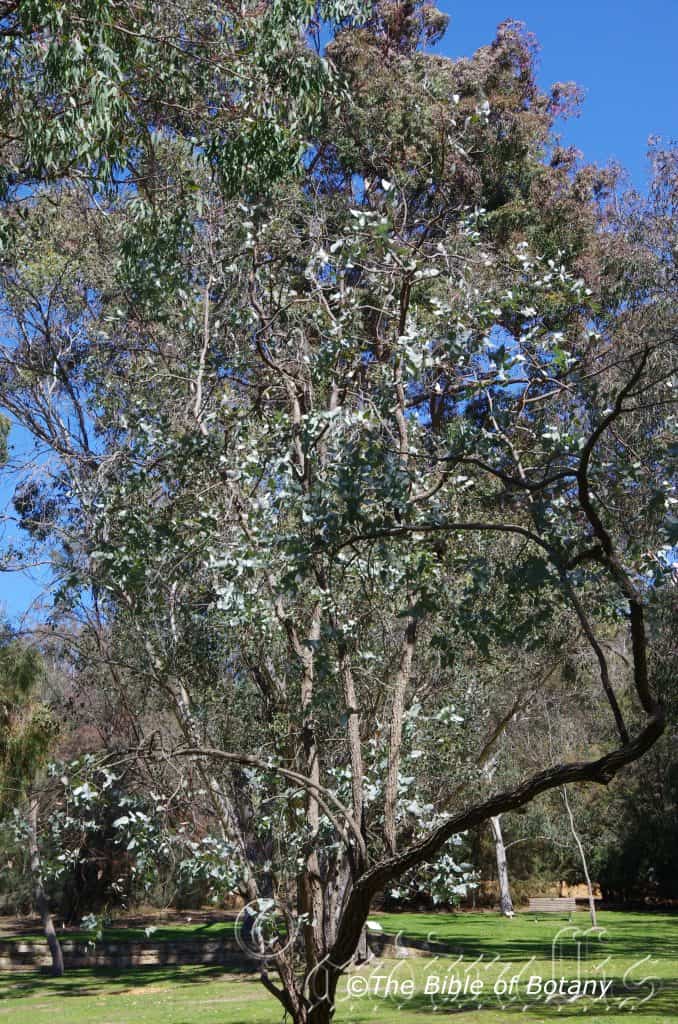
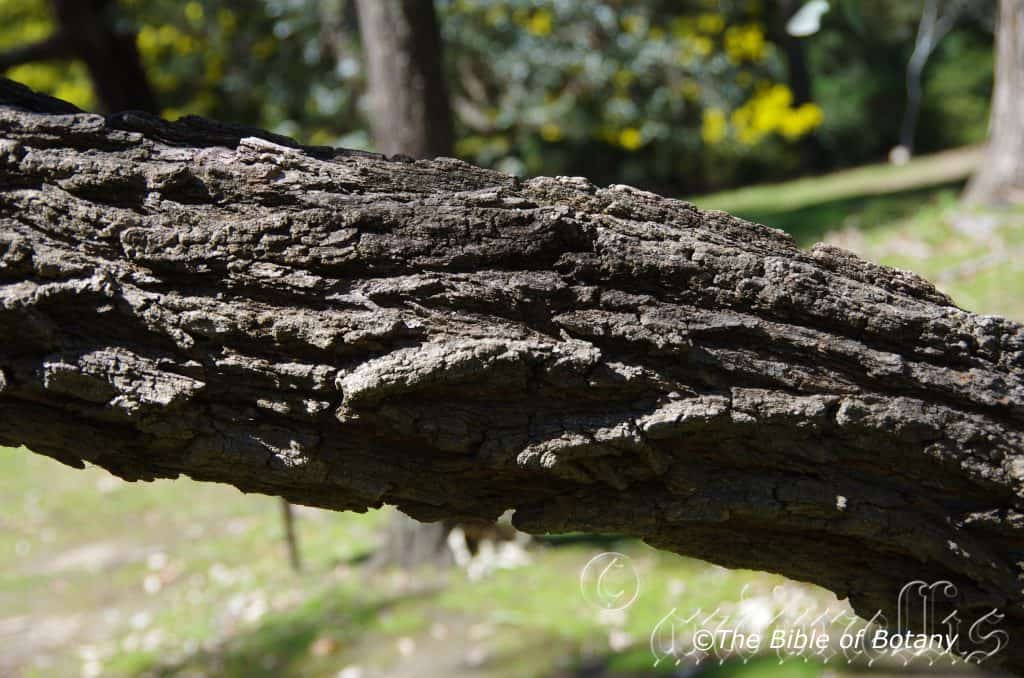

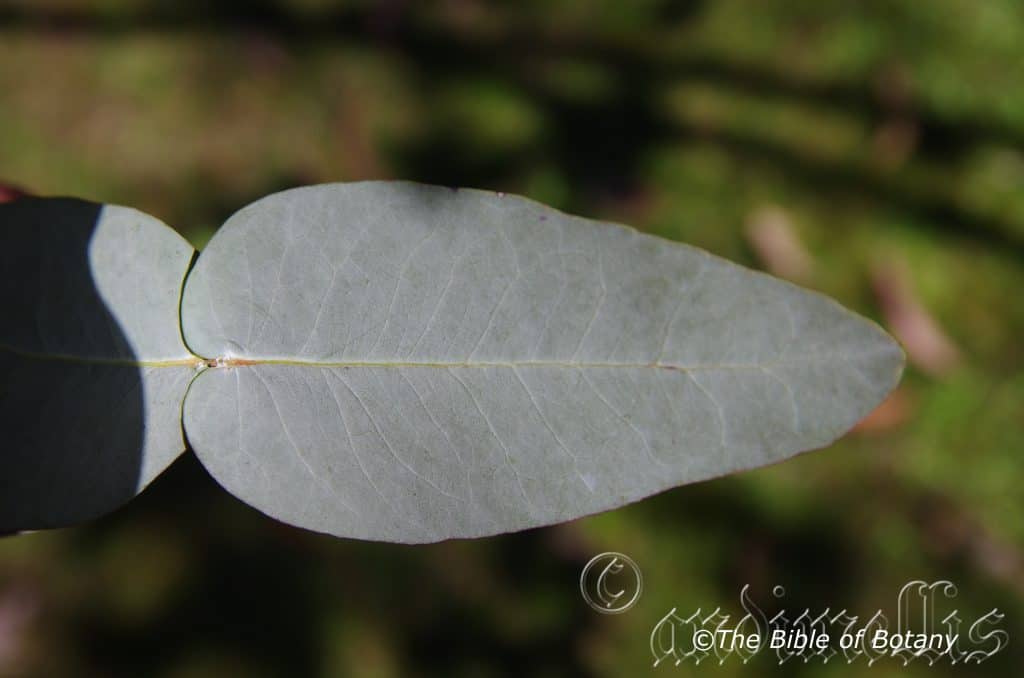
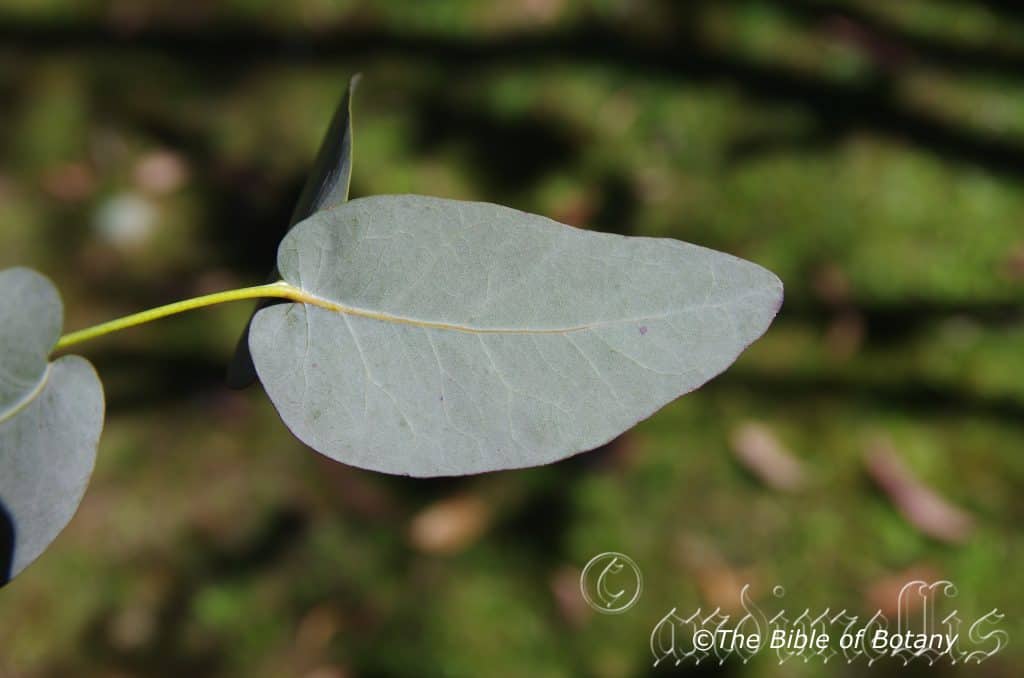
Eucalyptus melanophloia
Classification:
Unranked: Eudicots
Unranked: Rosids
Order: Myrtales
Family: Myrtaceae
Genus: From Eu, which is Greek a prefix for good or well and Kaluptos, which is Ancient Greek for to cover up. It refers to the stamens, which have a lid or cover over them in the bud stage prior to opening.
Specie: From Mélas, which is Ancient Greek for black and Phlóos, which is Ancient Greek for a bark. It refers to barks, which are black.
Sub specie:
Common Name: Silver Leaf Iron Bark.
Distribution:
Eucalyptus melanophloia is found south from the Edward River on Cape York Peninsular in far north Queensland to Dubbo in central New South Wales. It is found from the coast to Normanton in the north and Nombinnie Nature Reserve in the south on the western side of the Great Dividing Range. There is an outlying population around Mount Isa to Cloncurry in Queensland.
There is also an outlying population in the Northern Territory between Newhaven Homestead, the lower slopes of Mount Leichardt, Ennugon Mountains and Mount Dennison.
https://avh.ala.org.au/occurrences/search?taxa=Eucalyptus+melanophloia#tab_mapView
Habitat Aspect Climate:
Eucalyptus melanophloia prefer full sun to light dappled shade. It grows on flat plains and gentle slopes. The altitude ranges from 5 meters ASL to 460 meters ASL.
The temperatures range from 10 degrees in July to 42 degrees in January.
The rainfall ranges from lows of 150mm to an average of 2800mm annually.
Soil Requirements:
Eucalyptus melanophloia prefers to grow on sandy loams to light gritty clays. The soils are usually derived from lateritic sandstones. The soils pH ranges from 5pH to 6pH. It does not tolerate water logged soils. Non saline soils to moderately saline soils are tolerated.
Height & Spread:
Wild Plants: 5m to 20m by 4m to 12m.
Characteristics:
Eucalyptus melanophloia is a typical iron bark that has a long thin trunk with the branches being retained at around 25mm to 55mm of the trees height on mature trees. The trunk has deeply furrowed, longitudinal, rough, and grey to deep grey-black bark on the trunk with the bark becoming less deeply furrowed on the smaller branches. The branchlets are off white to pale blue-grey glaucous and glabrous. The lower bark is persistent and is shed in short ribbons or is persistent on the branches.
Eucalyptus melanophloia’s leaves are adjacent becoming opposite after the 13th node. The leaves are ovate to orbicular and measure 50mm to 70mm in length by 35mm to 45mm in width. The bases are rounded to slightly cordate while the apexes are obtuse with a mucronate tip. The concolourous laminas are grey-green to glaucous blue and glabrous. The margins are entire with a few undulations. The mid vein is prominent on the lower lamina and slightly prominent on the upper lamina near the base and is not prominent on the apex third. The dull grey-green, reddish tinged terete petioles measure 0mm to 2mm in length.
The disjunct alternate adult leaves of Eucalyptus melanophloia are broad lanceolate or ovate and straight. They measure 50mm to 90mm in length by 22mm to 37mm in width. The terete petioles measure 0mm to 2mm in length. The bases are rounded to slightly cordate while the apexes are tapering obtuse with an apiculate tip. The concolourous laminas are mid blue-green, grey-green or grey-blue, glaucous and glabrous. The margins are entire. The mid vein is prominent on the lower lamina and slightly prominent on the upper lamina near the base and is not prominent on the apex third. The lateral veins are at 45 degrees to the main vein. The lateral veins are penniveined while the intramarginjal veins are parallel to the margin. The oil glands are islands between the lateral veins and secondary veins.
The inflorescences of Eucalyptus melanophloia are compound umbellasters usually containing 7 flowers from near the terminal. The creamy yellow peduncules are terete or angular and glabrous while the pedicels are terete and glabrous. The peduncules measure 4mm to 16mm in length while the pedicels measure 1mm to 7mm in length.
The glabrous buds are fusiforme while the hypanthium are pale blue-green and glaucous. The hypanthium measure 3.5mm to 4.5mm by 3.5mm to 5mm in diameter. The pale blue-green conical calyptras are conical, glabrous and measure 3.5mm to 4.5mm in length. The bud scar is present.
The irregularly flexed stamens are cream to pastel yellow and measure 5mm to 8mm in length. The anthers are cream to pastel yellow.
The stocky, deep green styles measure 2.5mm to 3mm in length with a creamy fawn stigma. The disc is deep green. The flowers appear from October to February
The fruits of Eucalyptus melanophloia are globose, hemispherical, ovoidal or urceolate gum nuts. The gum nuts are resinous and measure 3mm to 8mm in length by 3mm to 8mm in diameter at the widest point. The disc is depressed with 3 or 4 slightly enclosed to slightly raised erect valves.
The tan to pale reddish-brown seeds are pyramidal or obliquely pyramidal and measure 1mm to 2mm in length while the trash is smaller and deeper in colour. The hilum is terminally positioned while the surfaces are very finely resinous.
Wildlife:
The flowers Eucalyptus melanophloia are medium nectar producers and are very attractive to most honeyeaters, lorikeets, flying foxes, possums and many insects.
Cultivation:
Eucalyptus melanophloia make excellent shelterbelts or shade trees for cattle, sheep and native animals in rural areas. The trees can be grown for their flowers that produce good quality honey for apiculture.
In the cultivation good specimens grow from 15 to 18 meters in height by 12 meters to 15 meters in diameter when grown in the open.
It is drought tolerant once established and can cope with moderate frosts.
This is not a popular cream flowering gum amongst home gardeners but should be considered where their smaller size makes them ideal for smaller gardens. The typical deep grey-black iron bark and blue leaves makes a strong contrasting silhouette against the house or beautiful attraction within the garden. The bark contrasts well with other Eucalyptus specie, Corymbia specie, or semi-arid specie with dissimilar trunks to high light the trunks and barks. Place it near the edge of a forest and give them room to reach their full potential as it is a not as tall and their wider spread is a feature worth showing off. Trees planted in full view make good bird watching trees for the nectar eating birds and insect eating birds alike. It is rather messy when the lorikeets clamber over the outer foliage.
They would be ideally suited to small to large park like scenes where they have the opportunity to spread out as they mature.
Like all Eucalyptus specie leaf drop, dropping of small branches means continual lawn maintenance but then this means good quantities of leaf litter mulch. If the trees are clumped or used in a bush garden this is not a problem.
Propagation:
Seeds: Sow the seeds of Eucalyptus melanophloia into a seed raising mix. Cover the seeds with 2mm to 3mm of fine sand and place the trays in a warm sunny position. Keep moist but not wet. When the seedlings are 25mm to 50mm tall, prick them out and plant them into 50mm native tubes using a good organic mix.
Once the seedlings reach 200mm to 250mm in height plant them out into their permanent position. Mass plantings are best done in groups of 3 to 5 as a feature by planting them at 14 meters to 16 meters centers or 8 meter to 18 meter centers for wind rows and shelter belts.
Fertilize using Seaweed, fish emulsion or organic chicken pellets soaked in water and apply the liquid on an alternate basis. Fertilize every two month until the trees are well established then every spring to ensure good growth and flowering.
Further Comments from Readers:
“Hi reader, it seems you use The Bible of Botany a lot. That’s great as we have great pleasure in bringing it to you! It’s a little awkward for us to ask, but our first aim is to purchase land approximately 1,600 hectares to link several parcels of N.P. into one at The Pinnacles NSW Australia, but we need your help. We’re not salespeople. We’re amateur botanists who have dedicated over 30 years to saving the environment in a practical way. We depend on donations to reach our goal. If you donate just $5, the price of your coffee this Sunday, We can help to keep the planet alive in a real way and continue to bring you regular updates and features on Australian plants all in one Botanical Bible. Any support is greatly appreciated. Thank you.”
In the spirit of reconciliation we acknowledge the Bundjalung, Gumbaynggirr and Yaegl and all aboriginal nations throughout Australia and their connections to land, sea and community. We pay our respect to their Elders past, present and future for the pleasures we have gained.
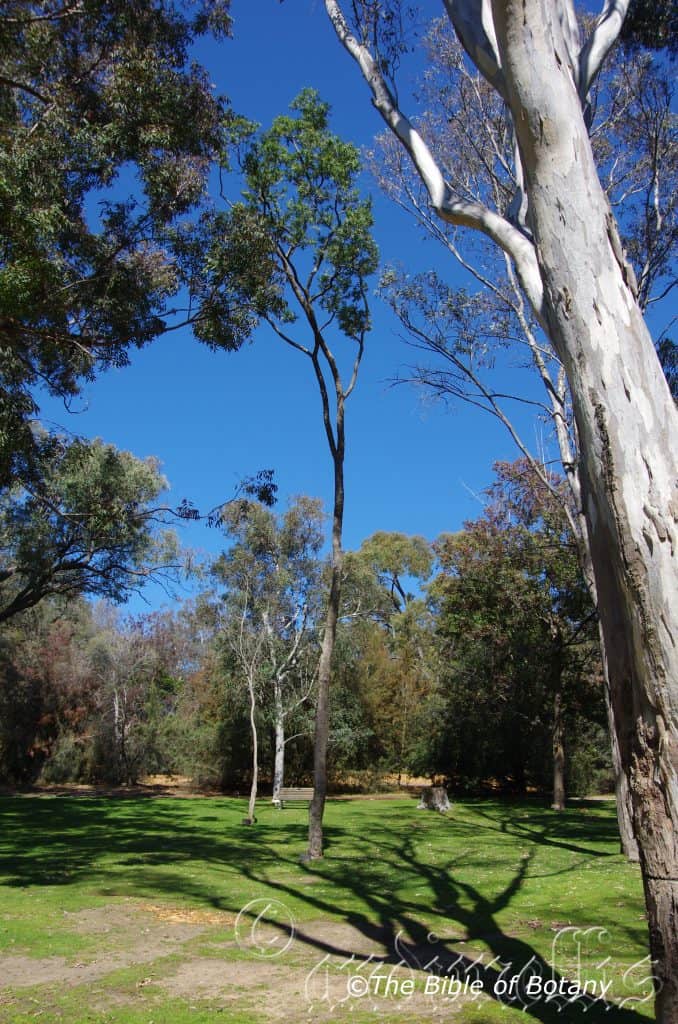
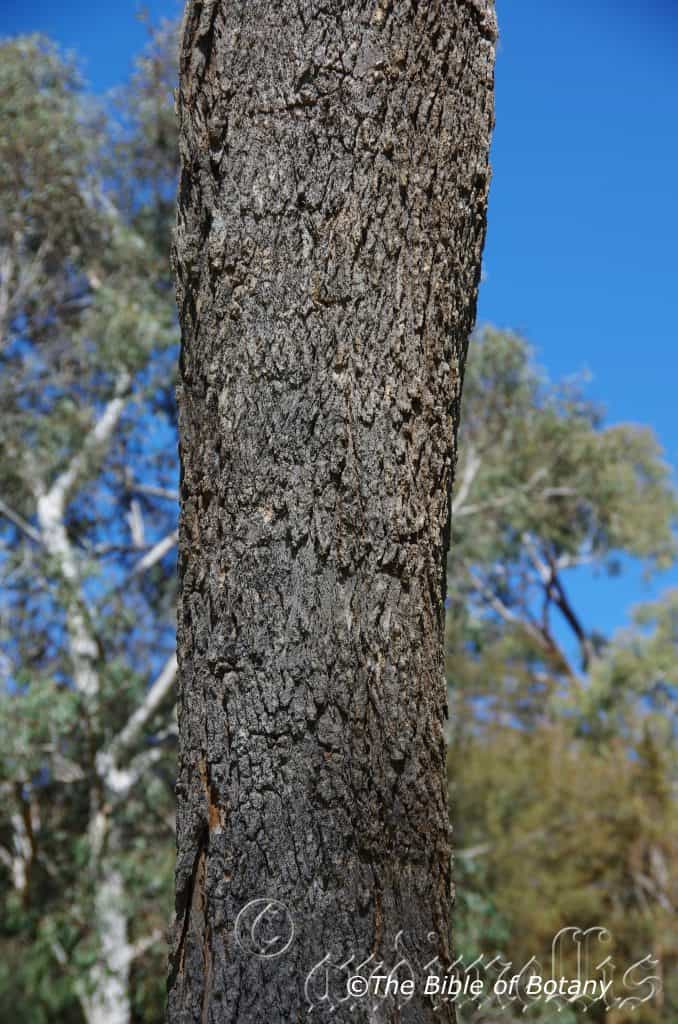
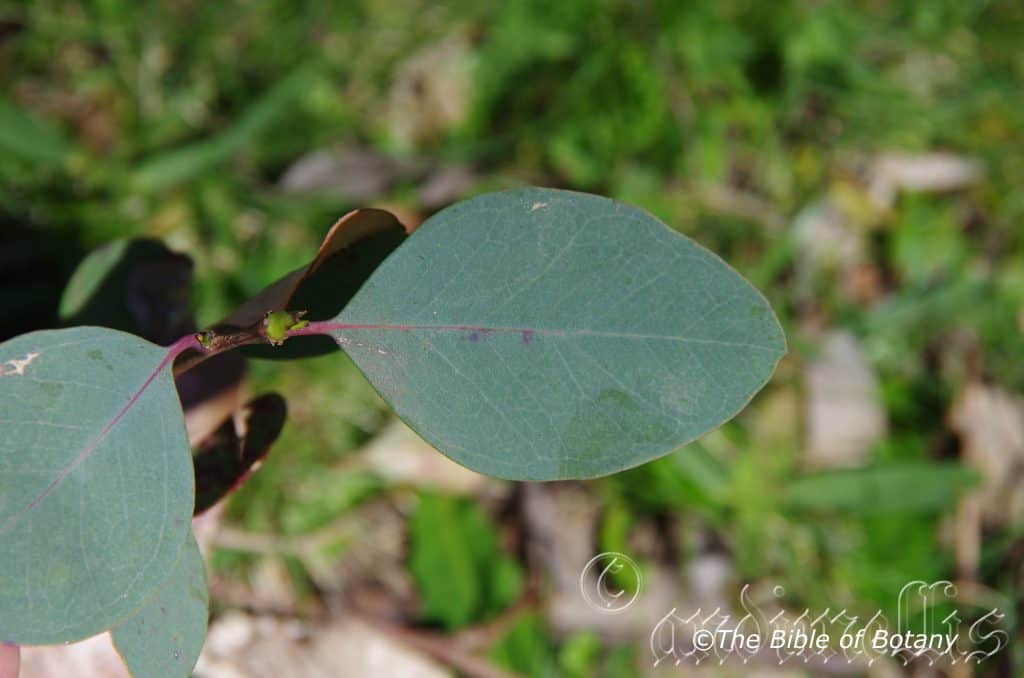

Eucalyptus melanoxylon
Classification:
Unranked: Eudicots
Unranked: Rosids
Order: Myrtales
Family: Myrtaceae
Genus: From Eu, which is Greek a prefix for good or well and Kaluptos, which is Ancient Greek for to cover up. It refers to the stamens, which have a lid or cover over them in the bud stage prior to opening.
Specie: From Mélās, which is Ancient Greek for black or very deep in colour and Xúlon, which is Ancient Greek for wood. It refers to trees, which produce a very deep brown to almost black timber.
Sub specie:
Common Name: Black Morrell.
Distribution:
Eucalyptus melanoxylon is found in the eastern wheat belt from Westonia, Kondinin and Lake King east to Salmon Gums and through the southern Goldfields to Balladonia and south to Breeboorinia Rock in southern Western Australia.
https://avh.ala.org.au/occurrences/search?taxa=Eucalyptus+melanoxylon#tab_mapView
Habitat Aspect Climate:
Eucalyptus melanoxylon prefers full sun to light shade. The trees grow in open grassy woodlands open Eucalyptus woodlands on plains, gentle slopes, low shallow depressions, along water courses and along seasonally dry riparian zones where sub terrainean water flows in the more arid areas of its distribution. The altitude ranges from 50 meters ASL to 600 meters ASL.
The temperatures range from minus 3 degrees in July to 36 degrees in January.
The rainfall ranges from lows of 300mm to an average of 450mm annually.
Soil Requirements:
Eucalyptus melanoxylon prefers deep, rich sandy loams, gritty clay loams, and light to heavy clays or light silts to heavy silts. The soils are usually derived from sandstone or old accumulated sands overlying calcite deposits or soils with lime. The soils pH ranges from 7 pH to 8pH. It tolerates seasonally water logged soils for short to long periods being very common followed by lengthy periods of drought. Non saline soils to very saline soils are tolerated.
Height & Spread:
Wild Plants: 10m to 15m by 7m to 12m.
Characteristics:
Eucalyptus melanoxylon is a well-developed tree which has a bole usually less than a third of its height. The rough bark usually extends to the medium size branches or at times as a true half bark covering the lower half of bole. The fissured bark is thick, spongy, deep grey to grey-brown or blackish-brown, while the smooth bark above is white to pale grey-brown. The juvenile stems are terete, glabrous or at times tuberculate.
The concolourous dull, green to grey-green juvenile leaves are sub sessile, alternate, lanceolate and measure 40mm to 75mm by 12mm to 30mm in width. The bases are rounded, while the apexes are broad acute.
The mature leaves petioles measure 7mm to 20mm in length. The concolourous, glossy green, linear to narrowly lanceolate mature leaves measure 72mm to 140mm in length by 7mm to 17mm in width. The bases taper to the petiole, while the apexes are narrow acute. The margins are entire. The mid vein is slightly prominent on the lower lamina on the basal half, while the lateral veins are less than 40 degrees and the reticulation is moderate to dense. The intramarginal vein runs parallel and close to the margin. The oil glands are island and intersectional.
The inflorescence is axillary unbranched on 8mm to 25mm pedicels. The 11, 13 or 15 individual flowers pedicels measure 3mm to 5mm in length. The mature ovoid buds are very faintly ribbed and measure 5mm to 8mm in length by 3mm to 5mm in diameter. The scar is present, while the bluntly conical to obtuse operculum measures 2mm to 4.5mm in length and is discarded before the inflexed 7mm to 8mm stamens emerge. The oblong, versatile, dorsifixed anthers dehisce along longitudinal slits. The erect style is slightly flared on the yellow disc and tapers to the stigma. The white flowers appear from November to mid December.
The capsule’s pedicels 2mm to 4mm in length. The obconical to cupular capsules are very faintly ribbed and measure 4mm to 6mm in length by 5mm to 6mm in diameter. The disc is descending with the 3 or 4 oblique valves being exserted and spreading.
The brown, spherical or flattened ovoidal seeds have the dorsal surface pitted with a ventral hymen and measure 1mm to 2mm.
Wildlife:
Eucalyptus melanoxylon attracts native bees and insects when in flower. Birds like the lorikeets and honeyeaters frequent the trees for the large quantities of rich nectar and larger parrots and cockatoos feed on the seeds. Many insects and butterflies also frequent the trees when it is in flower.
This is a favoured Koala feed tree west of the Great Dividing Range. Old trees are adorned with hollows which are suitable nesting holes for many parrots and cockatoos.
Cultivation:
Eucalyptus melanoxylon is a large tree for large gardens and very useful for that parkland scene. It is ideal on lighter moisture retentive soils and alluvial flats. It is fast growing so gives good effect at an early age. In cultivation it will grow from 15 meters to 25 meters in height by 15 meters to 20 meters in diameter.
It is ideal in a mixed park like situation where the barks contrast well with other Eucalyptus specie, Eucalyptus specie and Eucalyptus specie. The leaves of this Eucalyptus specie are particularly attractive.
Like most large Eucalyptus specie leaf drop, dropping of small branches means continual lawn maintenance but then in a forest garden supply good quantities of leaf litter. Trees grown in the open are subject to branches breaking in strong winds and even the trees being completely uprooted. This is particularly apparent where trees are being fertilized and become top heavy. If it is allowed to develop a strong root system in the first few years it is excellent for erosion control and supporting other trees and shrubs being used for wind breaks.
This is a beautiful spreading tree for large gardens. It is suitable for animal shelters as it is very quick growing. It is Australia’s best honey producing tree with a high class honey of good colour and flavour. It is also an excellent tree for shelter belts on farms. Its suitability in high wind zones could be in question as it often develops a large bushy crown. Trees that are planted in the open ground should not be fertilized after the initial dose as the trees tend to be top heavy and are subject to being blown over. It is best to let them first develop a strong deep root first.
Propagation:
Seeds: Sow the seeds of Eucalyptus melanoxylon into a seed raising mix. When the seedlings are 25mm to 50mm tall, prick them out and plant them into 50mm native tubes using a good organic mix.
Once the seedlings reach 200mm to 250mm in height plant them out into their permanent position.
Fertilize using seaweed, fish emulsion or organic chicken pellets soaked in water on an alternate basis. Fertilize every two months until the plants are established then twice annually in early September or March to maintain health, vitality and better flowering.
Further Comments from Readers:
“Hi reader, it seems you use The Bible of Botany a lot. That’s great as we have great pleasure in bringing it to you! It’s a little awkward for us to ask, but our first aim is to purchase land approximately 1,600 hectares to link several parcels of N.P. into one at The Pinnacles NSW Australia, but we need your help. We’re not salespeople. We’re amateur botanists who have dedicated over 30 years to saving the environment in a practical way. We depend on donations to reach our goal. If you donate just $5, the price of your coffee this Sunday, We can help to keep the planet alive in a real way and continue to bring you regular updates and features on Australian plants all in one Botanical Bible. Any support is greatly appreciated. Thank you.”
In the spirit of reconciliation we acknowledge the Bundjalung, Gumbaynggirr and Yaegl and all aboriginal nations throughout Australia and their connections to land, sea and community. We pay our respect to their Elders past, present and future for the pleasures we have gained.
Eucalyptus melliodora
Classification:
Unranked: Eudicots
Unranked: Rosids
Order: Myrtales
Family: Myrtaceae
Genus: From Eu, which is Greek a prefix for good or well and Kaluptos, which is Ancient Greek for to cover up. It refers to the stamens, which have a lid or cover over them in the bud stage prior to opening.
Specie: From Méli, which is Ancient Greek for honey and Odōrātum, is Ancient Greek for an aroma. It refers to plants, which have a strong honey scent when in flower.
Sub specie:
Common Name: Yellow box.
Distribution:
Eucalyptus melliodora is a common species west of the Great Dividing Range south from Carnarvon Gorge National Park and Rockhampton in south eastern Queensland to the Grampians in south western Victoria. It is found on the Western Plains, Western Slopes, on and east of the Great Dividing Range to the coast.
https://avh.ala.org.au/occurrences/search?taxa=Eucalyptus+melliodora#tab_mapView
Habitat Aspect Climate:
Eucalyptus melliodora prefers full sun to light shade as a juvenile tree and full sun as a mature tree. The trees grow in open grassy woodlands open Eucalyptus forests on plains, along water courses and along seasonally dry riparian zones in the more arid areas of its distribution. The altitude ranges from 50 meters ASL to 650 meters ASL.
The temperatures range from minus 3 degrees in July to 36 degrees in January.
The rainfall ranges from lows of 400mm to an average of 1300mm annually.
Soil Requirements:
Eucalyptus melliodora prefers deep, rich sandy loams, clay loams, and light to heavy clays or light silts to heavy silts. The soils are usually derived from most parent rocks and are laid down as alluvial deposits. The soils pH ranges from 4.5pH to 6pH. It tolerates water logged soils, seasonal water logged soils with seasonal flooding for short to long periods being very common. Non saline soils to very saline soils are tolerated.
Height & Spread:
Wild Plants: 15m to 30m by 12m to 18m.
Characteristics:
A well-developed tree which has a bole usually less than a third of its height. The white upper trunk has a decorticating bark which is pale grey and is shed in short ribbons to reveal a white to pale blue glaucous and glabrous bark. The lower two thirds of the trunk has a persistent rough fibrous bark in deep grey, deep yellow-brown or red-brown. The small branchlets are glabrous red, orange-red, yellow or burgundy.
The disjunct juvenile leaves are broad elliptical to almost cordate. It is pale green to pale blue-green and dull. They measure 20mm to 30mm in length by 15mm to 25mm in width.
The lanceolate to narrow lanceolate adult leaves of Eucalyptus melliodora measure 60mm to 140mm in length by 16mm to 20mm in width. The petioles measure 30mm to 35mm petioles. The bases are round-cuneate, asymmetrical or symmetrical while the apexes are tapering, narrow acute or acuminate. The concolourous laminas are pale blue to pale blue-green. The intramarginal vein is well away from the leaf margin. The laminas are flat while the leaf margins are entire. The lateral veins are penniveined and are 30 degrees to the midvein. The mid vein is slightly prominent on the lower lamina and is visible on the upper lamina.
The inflorescences of Eucalyptus melliodora are born as umbellasters containing 7 flowers from near the terminal leaf axis. The terete or slightly angular peduncle measures 7mm to 11mm in length while the pedicels measure 2mm to 9mm in length.
The buds are pale blue green, clavate to ovoid and measure 5mm to 9mm in length by 3mm to 4mm in diameter. The conical calyptra measures 2.5mm to 4.5mm in length.
The stamens are white with the white anthers and measure 9mm to 10mm in length. The outer row of anthers is sterile. The cream style measures 7mm to 9mm in length. The disc is pale yellow green to green with a paler rim. Eucalyptus melliodora flowers over a long period of time with some individuals starting in August while others finish in late December.
The fruits are hemispherical to ovoid shaped gum nuts. The gum nuts measure 4mm to 7mm in length by 4mm to 7mm in diameter. The disc is depressed revealing the 4 or 5 inserted valves.
Wildlife:
Eucalyptus melliodora attracts native bees and insects when in flower. Birds like the lorikeets and honeyeaters frequent the trees for the large quantities of rich nectar and larger parrots and cockatoos feed on the seeds. Many insects and butterflies also frequent the trees when it is in flower. This is a favoured Koala feed tree west of the Great Dividing Range. Old trees are adorned with hollows which are suitable nesting holes for many parrots and cockatoos.
Cultivation:
Eucalyptus melliodora is a large tree for large gardens and very useful for that parkland scene. It is ideal on lighter moisture retentive soils and alluvial flats. It is fast growing so give good effects at an early age. In cultivation they will grow from 15 meters to 20 meters in height by 15 meters to 20 meters in diameter.
It is ideal in a mixed park like situation where the barks contrast well with other Eucalyptus specie, Eucalyptus specie and Eucalyptus specie. The leaves of this Eucalyptus specie are particularly attractive.
Like most large Eucalyptus specie leaf drop, dropping of small branches means continual lawn maintenance but then in a forest garden supply good quantities of leaf litter. Trees grown in the open are subject to branches breaking in strong winds and even the trees being completely uprooted. This is particularly apparent where trees are being fertilized and become top heavy. If it is allowed to develop a strong root system in the first few years it is excellent for erosion control and supporting other trees and shrubs being used for wind breaks.
This is a beautiful tree for large gardens. It is suitable for animal shelters as it is very quick growing. It is Australia’s best honey producing tree with a high class honey of good colour and flavour. It is also an excellent tree for shelter belts on farms. Its suitability in high wind zones could be in question as it often develops a large bushy crown. Trees that are planted in the open ground should not be fertilized after the initial dose as the trees tend to be top heavy and are subject to being blown over. It is best to let them first develop a strong deep root first.
Propagation:
Seeds: Sow into a seed raising mix. When the seedlings are 25 to 50 mm tall, prick them out and plant them into 50mm native tubes using a good organic mix.
Once the seedlings reach 200 to 250mm in height plant them out into their permanent position.
Fertilize using seaweed, fish emulsion or organic chicken pellets soaked in water on an alternate basis. Fertilize every two months until the plants are established then twice annually in early September or March to maintain health, vitality and better flowering.
Further Comments from Readers:
“Hi reader, it seems you use The Bible of Botany a lot. That’s great as we have great pleasure in bringing it to you! It’s a little awkward for us to ask, but our first aim is to purchase land approximately 1,600 hectares to link several parcels of N.P. into one at The Pinnacles NSW Australia, but we need your help. We’re not salespeople. We’re amateur botanists who have dedicated over 30 years to saving the environment in a practical way. We depend on donations to reach our goal. If you donate just $5, the price of your coffee this Sunday, We can help to keep the planet alive in a real way and continue to bring you regular updates and features on Australian plants all in one Botanical Bible. Any support is greatly appreciated. Thank you.”
In the spirit of reconciliation we acknowledge the Bundjalung, Gumbaynggirr and Yaegl and all aboriginal nations throughout Australia and their connections to land, sea and community. We pay our respect to their Elders past, present and future for the pleasures we have gained.

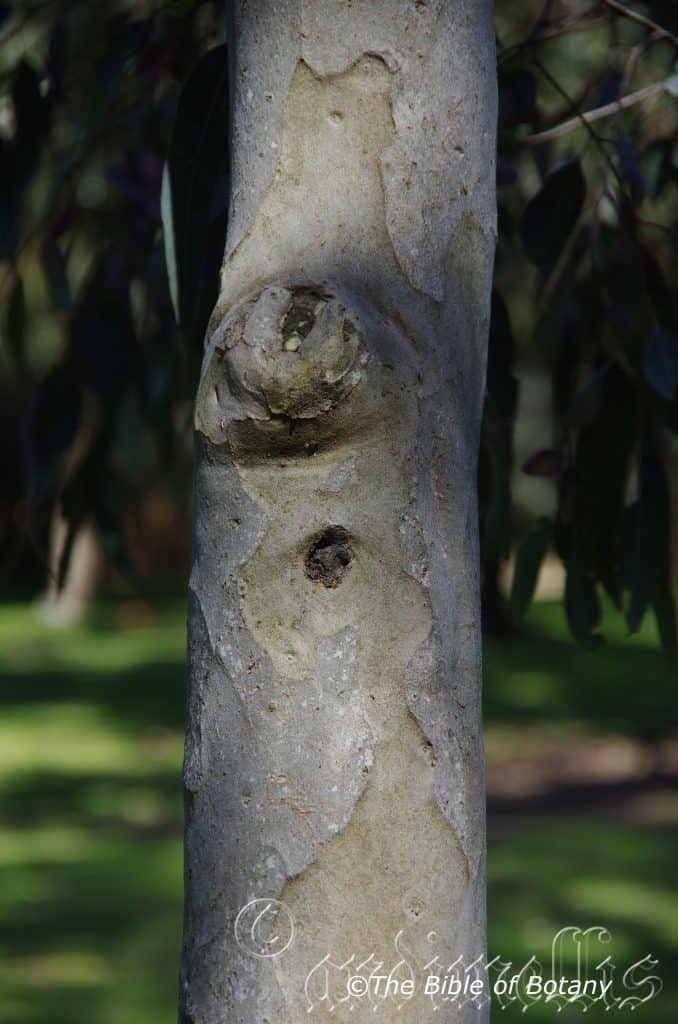
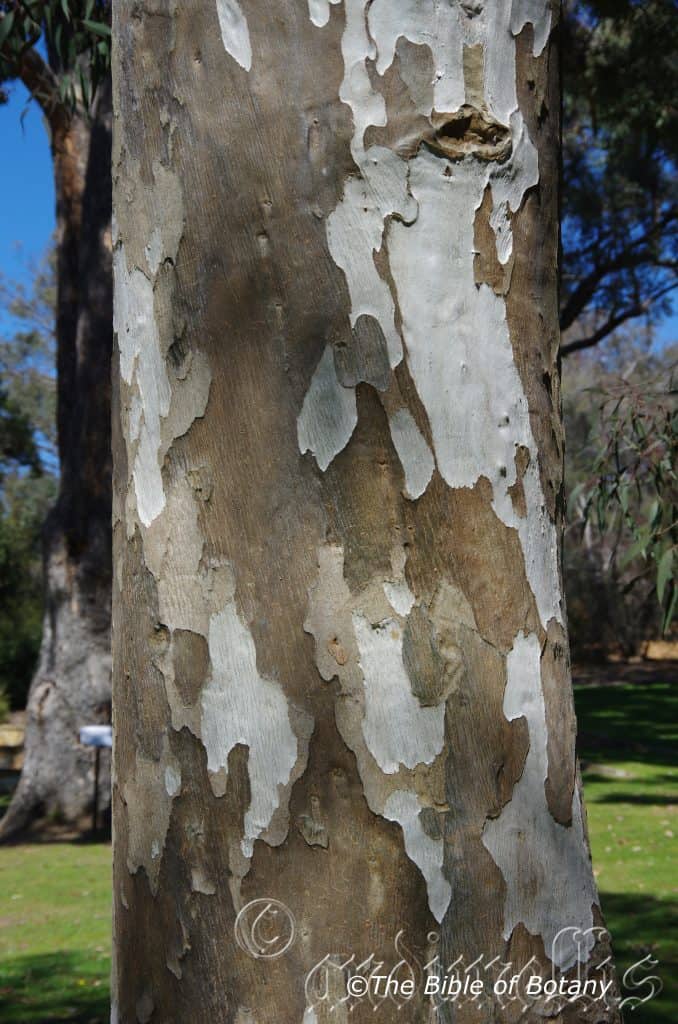
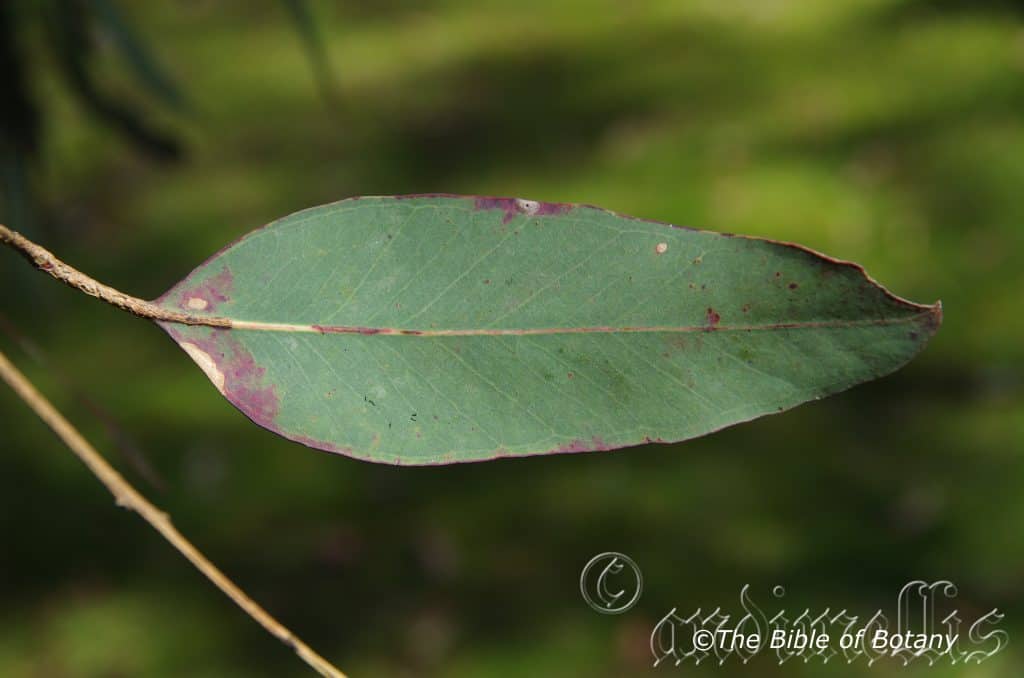
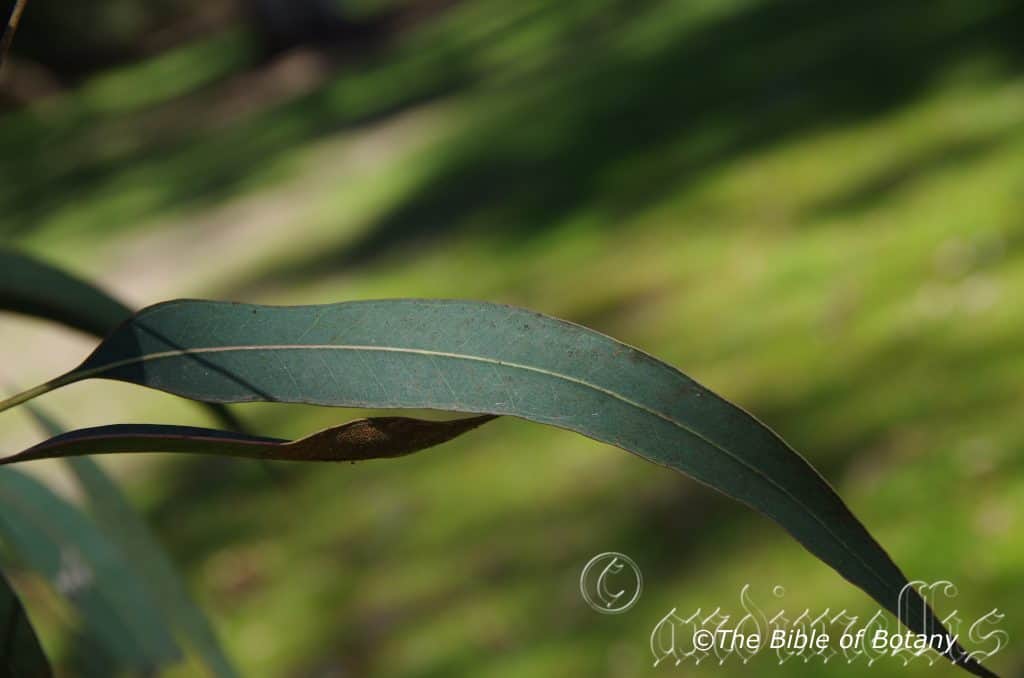
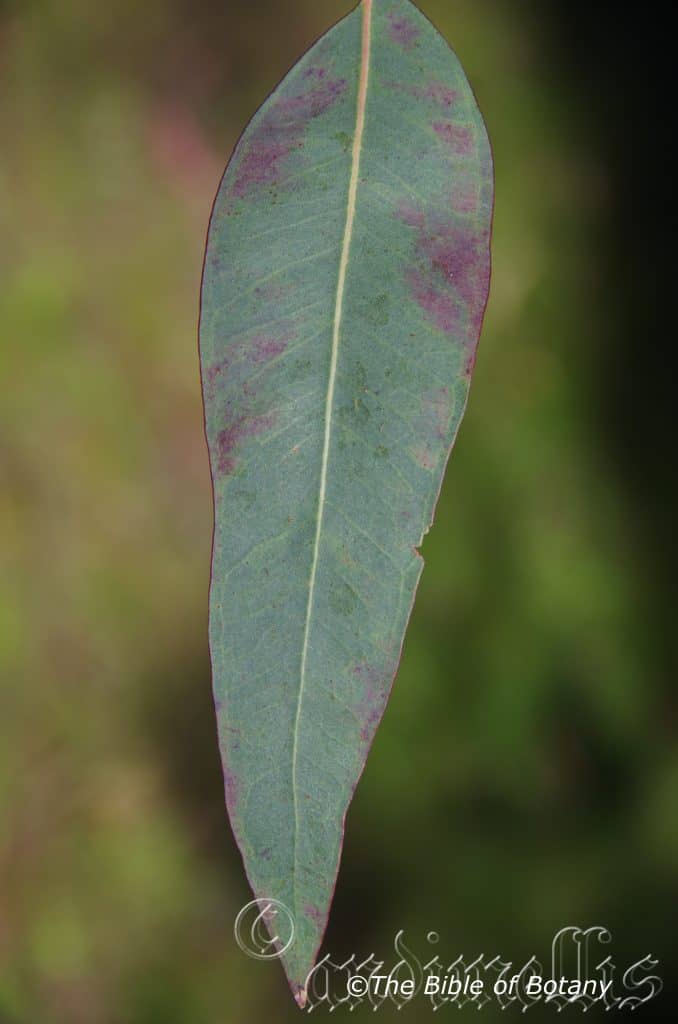

Eucalyptus michaeliana
Classification:
Unranked: Eudicots
Unranked: Rosids
Order: Myrtales
Family: Myrtaceae
Genus: From Eu, which is Greek a prefix for good or well and Kaluptos, which is Ancient Greek for to cover up. It refers to the stamens, which have a lid or cover over them in the bud stage prior to opening.
Specie: Is named in honour of Rev. Norman Michael; 1884–1951, who was a clergyman He had a life long interest in the flora of Queensland and collected extensively. He collected the type species in 1937 at Boonah.
Sub specie:
Common Name:
Distribution:
Eucalyptus michaeliana is found in several disjunct populations south from Mount Ballow in far south east Queensland to Lithgow and Umina Beach in central coastal New South Wales. It is mainly found on and east of the Great Dividing Range.
https://avh.ala.org.au/occurrences/search?taxa=Eucalyptus+michaeliana#tab_mapView
Habitat Aspect Climate:
Eucalyptus michaeliana prefers full sun. It grows in exposed situations in dry schlerophyll woodlands on gentle slopes and plains. The altitude ranges from 30 meters ASL to 1300 meters ASL.
The temperatures range from minus 3 degree in August to 40 degrees in January.
The rainfall ranges from lows of 400mm to an average of 1200mm.
Soil Requirements:
Eucalyptus michaeliana prefers moderately fertile, deeper sandy loams to light fatty clays. The soils are usually derived from decomposed granites, sandstone and black basalt. The soils pH ranges from 5pH to 6pH. It does not tolerate water logged soils.Non saline soils to moderately saline soils are tolerated.
Height & Spread:
Wild Plants: 25m to 30m by 8m to 12m.
Characteristics:
Eucalyptus michaeliana usually grows as a medium single trunk tree or at times a large multi trunked mallee. The smooth, mottled grey to blue-grey and white and are cream, yellow, or pink on freshly exposed bark following decortication. The juvenile stems are square or terete in cross-section. The bark is shed in small patches on the trunk and ribbons along the branches and branchlets.
The juvenile, peltate, leaves are opposite for 6 to 8 nodes then become sub-opposite to alternate. The lanceolate to broadly lanceolate, concolorous, dull green leaves measure 50mm to 150mm in length by 12mm to 55mm in width. The bases are rounded, while the apexes are acute.
The petioles measure 15mm to 30mm in length. The concolourous, lanceolate to falcate, alternate mature leaves are dull green to grey-green and measure 90mm to 180mm in length by 10mm to 23mm in width. The bases are obtuse or taper to the petiole, while the apexes are acute to narrow acute. The mid vein is slightly prominent on both laminas for most of its length, while the lateral veins are greater than 45° to midrib, densely reticulated with the intramarginal vein parallel to and well away from margins. The oil glands are small, islands, intersectional or obscure.
The inflorescence is an axillary compound umbel usually of 3 to 5 separate smaller umbels. The peduncles measure 3mm to 5mm in length. The 3 or 7 buds’ pedicels measure 2mm to 5mm in length. The mature yellowish, oblong buds measure 5mm to 6mm in length by 3mm to 4.5mm in diameter. The scar is present, while the conical to obtuse operculum is discarded before the first irregularly flexed filaments appear. The cuboid to oblong, versatile, dorsifixed anthers dehisce along longitudinal slits. The erect style flares slightly on the yellow disc, while the stigma is blunt. The white flowers appear in March.
The capsules yellow-green, terete pedicels measure 1mm to 3mm in length. The cupular or barrel-shaped, capsules measure 3mm to 5mm in length by 4mm to 6mm in diameter. The yellowish disc is level, while the 3 or 4 valves are enclosed or level with the rim.
The brown, somewhat pyramidal, angular with the margins crenate and dorsal surface glabrous seeds measure 0.9mm to 1.1mm in length.
Wildlife:
The flowers on Eucalyptus michaeliana bear heavy yields nectar and pollen. This makes it attractive to honeyeaters, lorikeets and apiarists along the east coast. It also attract many insects and insectivorous birds when in flower.
Cultivation:
Eucalyptus michaeliana is a large mallee or medium tree which is ideally suitable for smaller gardens where a Eucalyptus is required. It is fast growing and this makes it an attractive garden specimen once established. It looks great from an early age. It has the advantage of being grown as a mallee or small Eucalyptus tree with contrasting foliage and growth habits to many of the other mallees. One method is to grow one or two as trees and interplant with several plants that have been cut to induce the growth of several trunks forming mallees or to interplant with various species of mallees. In the garden good specimens may grow from 8 meters to 18 meters in height by 4 meters to 8 meters in diameter when grown in the open as a single trunk tree or 10 meters to 12 meters in height by 6 meters to 8 meters as a mallee when grown in the open.
The beauty of Eucalyptus michaeliana is that it can be established on infertile soils to high fertility soils where water is a limiting factor and once established looks at home in such conditions. Like all Eucalyptus spp. it offers the gardener the basis of a truly bush garden with heath plants like Correa spp. Grevillea spp. and Hakea spp. being planted in between for great affect. Some leaf drop and dropping of small branchlets means continual maintenance in lawns but then it also means good quantities of leaf litter mulch in a native garden.
Eucalyptus michaeliana can be used like many small Eucalyptus spp. to create that little bit of Australiana in the suburban back yard or the outback garden to give shade from a relentless hot sun.
Often floral characteristics of a plant dictate our selection of plants for the garden. Remember that once a Eucalyptus spp.; or in fact any tree, reaches a reasonable size, its trunk or bark can are the most prominent features seen. Among the eucalypts there are many different types of barks which include some of our beautiful peppermint barks. Grouping, mallees as mallees or as single trunk trees can add immeasurably to the interest within a small space. Eucalyptus microcarpa is one of those species whose multi stems and bark contrasts well with single stem species.
Small shrubs can be used to emphasize the open spaces surrounding a mallee or a small tree especially when mass plantings are done.
Eucalyptus michaeliana can look great when placed in the corner against a fence to add privacy and remove the barrenness of the yard while giving extra depth.
Propagation:
Seeds: Sow the seeds of Eucalyptus michaeliana into a seed raising mix. Cover the seeds with 2mm to 3mm of fine sand and place the trays in a warm sunny position. Keep the seeds moist but not wet. When the seedlings are 25mm to 50mm tall, prick them out and plant them into 50mm native tubes using a good organic mix.
Once the seedlings reach 200mm to 250mm in height plant them out into their permanent position. Mass plantings are best done in groups of 3 to 5 as a feature by planting them at 4 meter to 5 meter centers as a tree or 5 meters to 6 meters as a mallee.
Fertilize using Seaweed, fish emulsion or organic chicken pellets soaked in water and apply the liquid on an alternate basis. Fertilize every two month until the trees are well established then every spring to ensure good growth and flowering.
Further Comments from Readers:
“Hi reader, it seems you use The Bible of Botany a lot. That’s great as we have great pleasure in bringing it to you! It’s a little awkward for us to ask, but our first aim is to purchase land approximately 1,600 hectares to link several parcels of N.P. into one at The Pinnacles NSW Australia, but we need your help. We’re not salespeople. We’re amateur botanists who have dedicated over 30 years to saving the environment in a practical way. We depend on donations to reach our goal. If you donate just $5, the price of your coffee this Sunday, We can help to keep the planet alive in a real way and continue to bring you regular updates and features on Australian plants all in one Botanical Bible. Any support is greatly appreciated. Thank you.”
In the spirit of reconciliation we acknowledge the Bundjalung, Gumbaynggirr and Yaegl and all aboriginal nations throughout Australia and their connections to land, sea and community. We pay our respect to their Elders past, present and future for the pleasures we have gained.


Eucalyptus microcarpa
Classification:
Unranked: Eudicots
Unranked: Rosids
Order: Myrtales
Family: Myrtaceae
Genus: From Eu, which is Greek a prefix for good or well and Kaluptos, which is Ancient Greek for to cover up. It refers to the stamens, which have a lid or cover over them in the bud stage prior to opening.
Specie: From Mikrós, which is Ancient Greek for small or very small and Karpós, which is Ancient Greek for a fruit. It refers to fruits, which are rather small compared to other species in the genus.
Sub specie:
Common Name: Small Fruited Gum.
Distribution:
Eucalyptus microcarpa is widespread from southern Queensland to south eastern South Australia. It is mainly found on the western plains.
It is found in an area mainly bound by Caldervale and Tambo south east to Burra Burri in Queensland then south to Lyndhurst in Victoria, west to Glenelg, north to Willunga in South Australia, to south east to Lake Albacutya back in Victoria, north east to Mt Boppy and north west to Walgett in New South Wales.
https://avh.ala.org.au/occurrences/search?taxa=Eucalyptus+microcarpa#tab_mapView
Habitat Aspect Climate:
Eucalyptus microcarpa prefers full sun. It grows in exposed situations in dry schlerophyll woodlands on gentle slopes and plains. The altitude ranges from 30 meters ASL to 720 meters ASL.
The temperatures range from minus 3 degree in August to 40 degrees in January.
The rainfall ranges from lows of 400mm to an average of 800mm.
Soil Requirements:
Eucalyptus microcarpa prefers moderately fertile, deeper sandy loams to light fatty clays. The soils are usually derived from decomposed granites, sandstone and are often alluvial based. The soils pH ranges from 5pH to 7pH. It does not tolerate water logged soils.Non saline soils to moderately saline soils are tolerated.
Height & Spread:
Wild Plants: 8m to 25m by 3m to 10m.
Characteristics:
Eucalyptus microcarpa usually grows as a medium single trunk tree or at times a large multi trunked mallee. The typically box bark is rough over whole trunk extending to the base of the larger branches. The trunk is grey to deep grey and fibrous and flaky while the branches and branchlets are smooth pale grey to whitish-grey with the extremes being maroon-brown. The bark is shed in short ribbons on the branches and branchlets.
Eucalyptus microcarpa’s juvenile and coppice stems are terete and glabrous. The opposite disjunct leaves are ovate to broadly lanceolate and measure 60mm to 150mm in length by 20 mm to 50mm in width. The concolourous laminas are dull and glabrous. The margins are entire.
The alternate, disjunct, narrowly lanceolate to lanceolate or rarely broadly lanceolate leaves of Eucalyptus microcarpa measure 80mm to 180mm in length by 10mm to 25mm in width. The terete petioles measure 10mm to 20mm in length. The bases taper to the petiole and can be shortly attenuate while the apexes are acute or rarely narrow acute. The concolourous laminas are glossy, green and glabrous. The margins are entire while the mid vein is prominent on both laminas but more so on the lower lamina. The lateral penniveins are visible on the both laminas while the intramarginal veins are well away from the margin. The reticulation is very dense, with scattered intersectional oil glands.
The inflorescences of Eucalyptus microcarpaare compound umbellasters born terminally. There are 7 individual white flowers to an umbellaster. The new growth bearing the umbellasters is lime green tinged red or orange to reddish-brown. The narrow flattened or angular peduncles are farinaceous, ribbed and measure 3mm to 10mm in length while the terete pedicels measure 1mm to 5mm in length. The clavate to ovoid buds are yellowish to lime green tinged red, farinaceous, ribbed and measure 5mm to 9mm in length by 2mm to 4.5mm in diameter. The conical calyptra is shorter than to as long as and is as wide as the hypanthium. A bud scar is absent.
The irregularly flexed, white stamens measure 4mm to 7mm in length. The cream, globoid anthers are adnately fixed and are all fertile. The creamy-yellow style is stout and measures 1.5mm to 2mm in length. The disc is pale olive-green. The flowers appear from mid-March to May.
The fruits of Eucalyptus microcarpa are cupular to shortly oblong-cupular woody capsules known as gum nuts. The deep green gum nuts turn grey-brown when ripe and measure 3mm to 7mm in length by 3mm to 5mm in diameter at the widest point. The disc is inserted with the 3 or 4 broad triangular valves which are slightly inserted to level with the rim.
The brown seeds are irregularly ovoid and slightly flattened, shallowly reticulate with a ventral hilum.
Wildlife:
The flowers on Eucalyptus microcarpa bear heavy yields nectar and pollen. This makes it attractive to honeyeaters, lorikeets and apiarists along the east coast. It also attract many insects and insectivorous birds when in flower.
Cultivation:
Eucalyptus microcarpa is a large mallee or medium tree which is ideally suitable for smaller gardens where a Eucalyptus is required. It is fast growing and this makes it an attractive garden specimen once established. It looks great from an early age. It has the advantage of being grown as a mallee or small Eucalyptus tree with contrasting foliage and growth habits to many of the other mallees. One method is to grow one or two as trees and interplant with several plants that have been cut to induce the growth of several trunks forming mallees or to interplant with various species of mallees. In the garden good specimens may grow from 8 meters to 18 meters in height by 4 meters to 8 meters in diameter when grown in the open as a single trunk tree or 10 meters to 12 meters in height by 6 meters to 8 meters as a mallee when grown in the open.
The beauty of Eucalyptus microcarpa is that it can be established on infertile soils to high fertility soils where water is a limiting factor and once established looks at home in such conditions. Like all Eucalyptus spp. it offers the gardener the basis of a truly bush garden with heath plants like Correa spp. Grevillea spp. and Hakea spp. being planted in between for great affect. Some leaf drop and dropping of small branchlets means continual maintenance in lawns but then it also means good quantities of leaf litter mulch in a native garden.
Eucalyptus microcarpa can be used like many small Eucalyptus spp. to create that little bit of Australiana in the suburban back yard or the outback garden to give shade from a relentless hot sun.
Often floral characteristics of a plant dictate our selection of plants for the garden. Remember that once a Eucalyptus spp.; or in fact any tree, reaches a reasonable size, its trunk or bark can are the most prominent features seen. Among the eucalypts there are many different types of barks which include some of our beautiful peppermint barks. Grouping, mallees as mallees or as single trunk trees can add immeasurably to the interest within a small space. Eucalyptus microcarpa is one of those species whose multi stems and bark contrasts well with single stem species.
Small shrubs can be used to emphasize the open spaces surrounding a mallee or a small tree especially when mass plantings are done.
Eucalyptus microcarpa can look great when placed in the corner against a fence to add privacy and remove the barrenness of the yard while giving extra depth.
Propagation:
Seeds: Sow the seeds of Eucalyptus microcarpainto a seed raising mix. Cover the seeds with 2mm to 3mm of fine sand and place the trays in a warm sunny position. Keep the seeds moist but not wet. When the seedlings are 25mm to 50mm tall, prick them out and plant them into 50mm native tubes using a good organic mix.
Once the seedlings reach 200mm to 250mm in height plant them out into their permanent position. Mass plantings are best done in groups of 3 to 5 as a feature by planting them at 4 meter to 5 meter centers as a tree or 5 meters to 6 meters as a mallee.
Fertilize using Seaweed, fish emulsion or organic chicken pellets soaked in water and apply the liquid on an alternate basis. Fertilize every two month until the trees are well established then every spring to ensure good growth and flowering.
Further Comments from Readers:
“Hi reader, it seems you use The Bible of Botany a lot. That’s great as we have great pleasure in bringing it to you! It’s a little awkward for us to ask, but our first aim is to purchase land approximately 1,600 hectares to link several parcels of N.P. into one at The Pinnacles NSW Australia, but we need your help. We’re not salespeople. We’re amateur botanists who have dedicated over 30 years to saving the environment in a practical way. We depend on donations to reach our goal. If you donate just $5, the price of your coffee this Sunday, We can help to keep the planet alive in a real way and continue to bring you regular updates and features on Australian plants all in one Botanical Bible. Any support is greatly appreciated. Thank you.”
In the spirit of reconciliation we acknowledge the Bundjalung, Gumbaynggirr and Yaegl and all aboriginal nations throughout Australia and their connections to land, sea and community. We pay our respect to their Elders past, present and future for the pleasures we have gained.

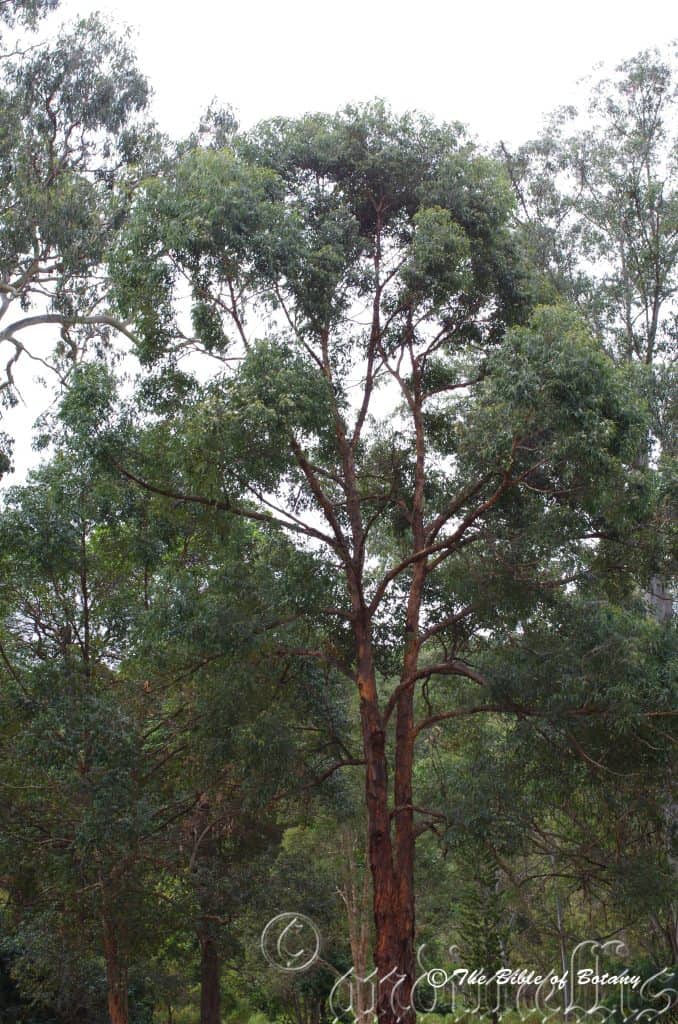
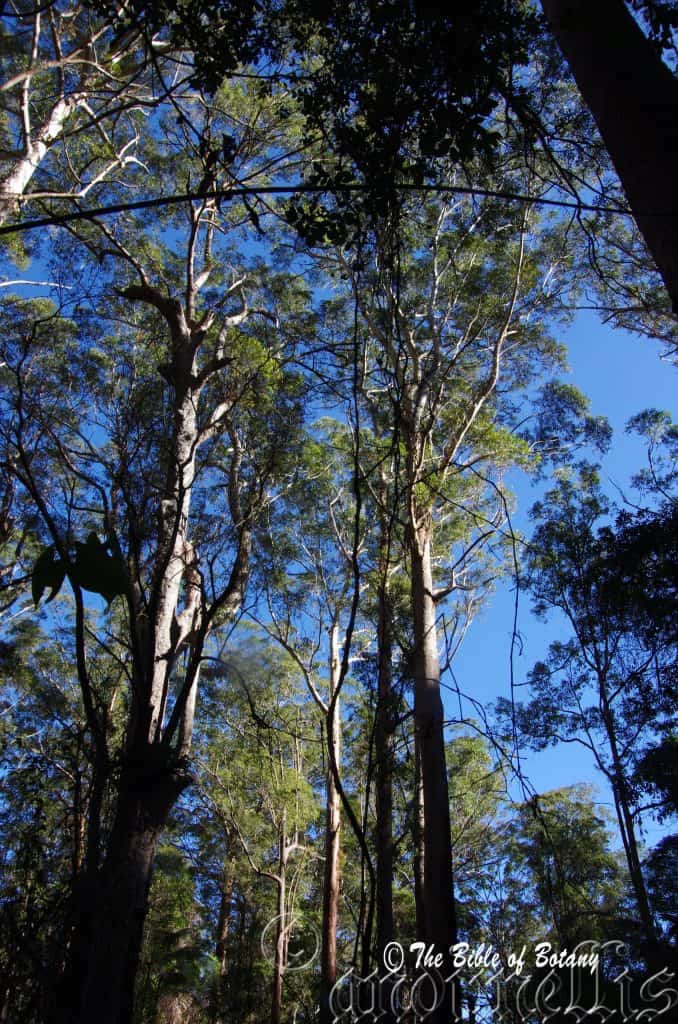
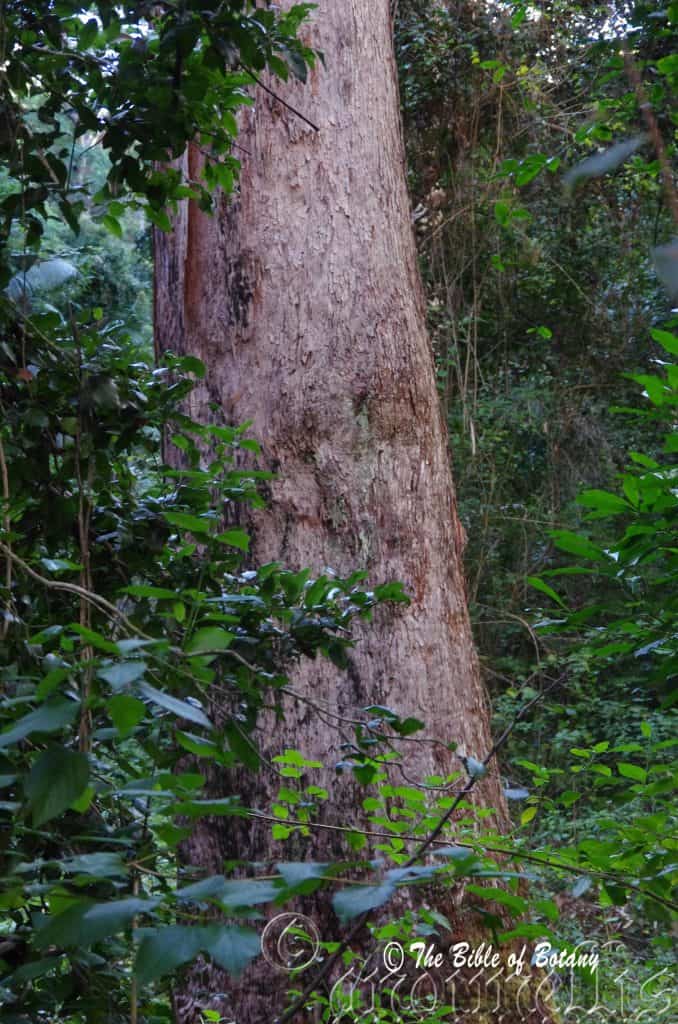

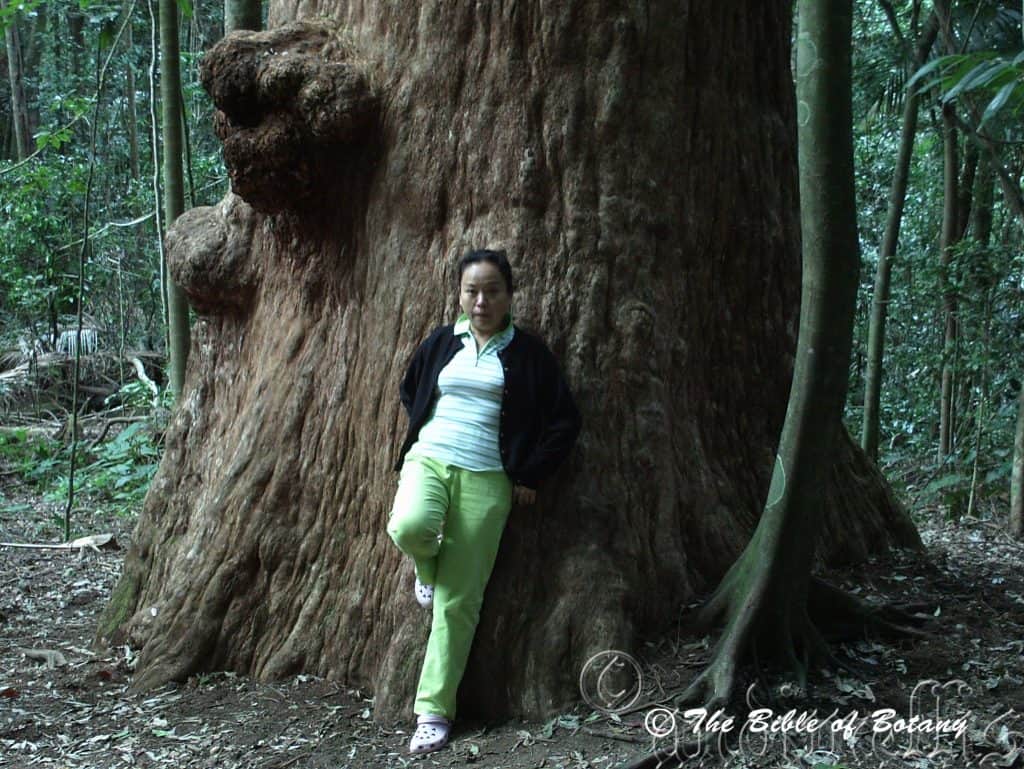

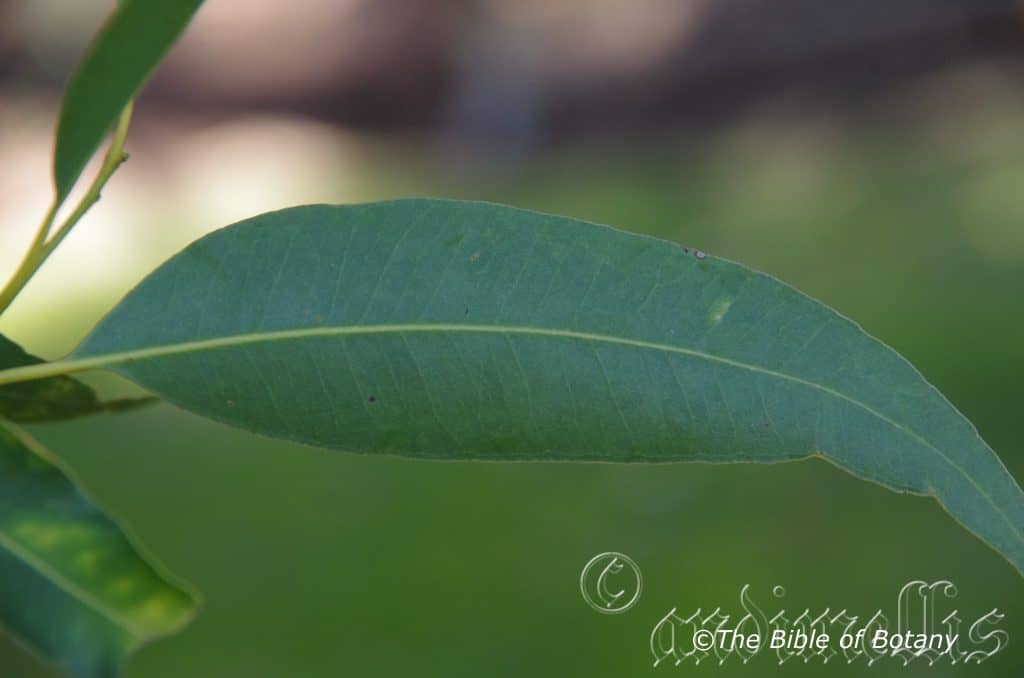
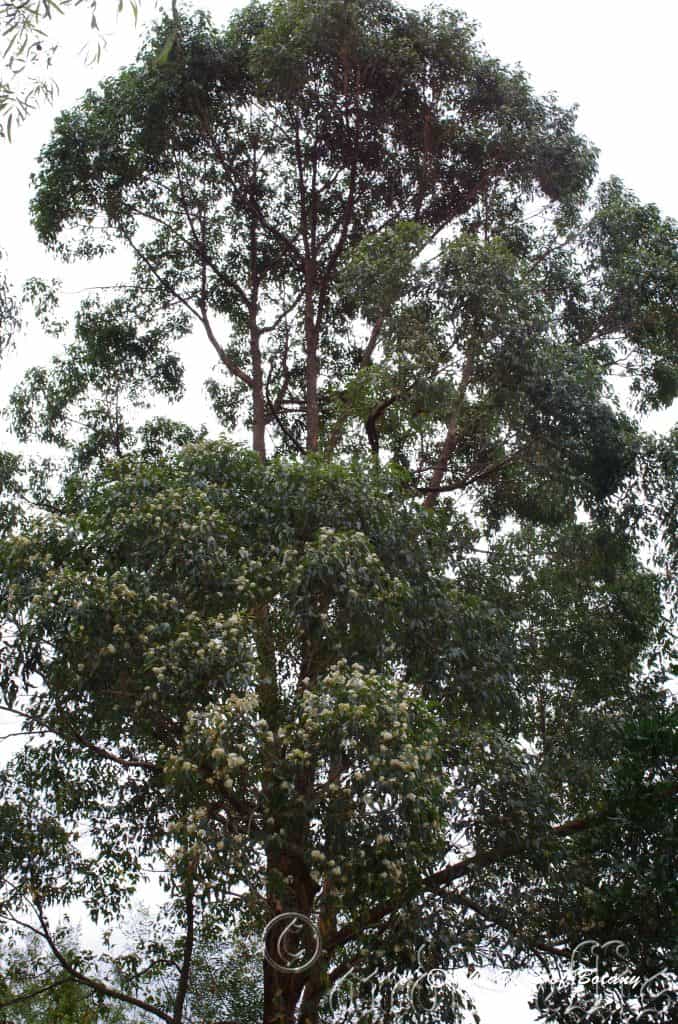

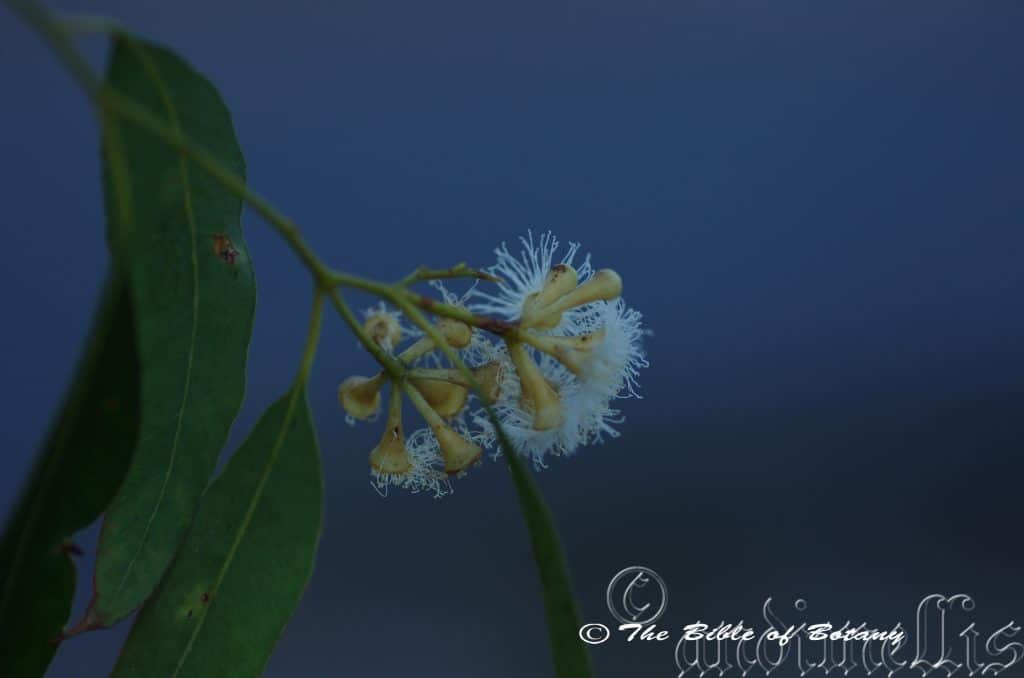

Eucalyptus microcorys
Classification:
Unranked: Eudicots
Unranked: Rosids
Order: Myrtales
Family: Myrtaceae
Genus: From Eu, which is Greek a prefix for good or well and Kaluptos, which is Ancient Greek for to cover up. It refers to the stamens, which have a lid or cover over them in the bud stage prior to opening.
Specie: From Mikrós, which is Ancient Greek for small or very small and Korys, which is Ancient Greek for a helmet. It refers to calyptra on the buds, which are smaller than most other species in the genus.
Sub specie:
Common Name: Tallow Wood.
Distribution:
Eucalyptus microcorys is found south from Fraser Island and Marybough in southern coastal Queensland to Cooranbong in central coastal New South Wales. It is mainly found on and east of the Great Dividing Range on coastal lowland ranges.
https://avh.ala.org.au/occurrences/search?taxa=Eucalyptus+microcorys#tab_mapView
Habitat Aspect Climate:
Eucalyptus microcorys prefer full sun. It grows amongst tall trees or low trees in low moist forests adjacent to rainforests, in wet eucalyptus forests and moist gallery forests. The altitude ranges from 20 meters ASL to 1350 meters ASL.
The temperatures range from minus 2 degrees in August to39 degrees in January.
The rainfalls range from lows of 80mm to an average of 1650mm annually.
Soil Requirements:
Eucalyptus microcorys has no preferences for soil types as it grows in almost every soil from sandy loams to heavy clays and heavy silts provided it is moderately to very fertile. The soils pH ranges from 6pH to 7.5pH. It does not tolerate water logged soils however good soil moisture is often associated with those plants growing on alluvial flats and in gallery forests. Non saline soils to moderately saline soils are tolerated.
Height & Spread:
Wild Plants: 35m to 58m by 12m to 15m
Characteristics:
This is a well-developed tree which has a bole usually less than a half of its height. The red-brown to yellow-brown soft, stringy bark is persistent with the bark extending to the larger branches. The branchlets are glabrous, red to maroon and semi glossy.
The disjunct juvenile leaves are elliptical to ovate, glossy green and glabrous.
The disjunct adult leaves of Eucalyptus microcorys are lanceolate and measure 80mm to 120mm in length by 15mm to 25mm in width. The slightly compressed, yellowish-green petioles measure 8mm to 11mm in length. The leaf bases are broad cuneate to rounded-cuneate, even or slightly oblique while the apexes are tapering. The discolourous laminas are deep glossy olive green to deep green on the upper lamina while the lower lamina is paler. The laminas are flat to slightly curving upwards from the mid vein to the margins. The leaf margins are entire. The flattened petioles measure 10mm to 18mm in length. The mid vein is yellow-green and slightly prominent on the lower lamina and prominent on the upper lamina. The lateral veins are penniveined are greater than 45 degrees to the mid rib and the intramarginal vein is parallel to and just within margin. The oil glands are island and intersectional.
The inflorescences of Eucalyptus microcorys are born as umbellasters containing 7 to 11 flowers from near the terminal leaf axis. At times there are two umbellasters from the same leaf axis. The narrowly flattened peduncle measures 6mm to 18mm in length while the terete pedicels measure 2mm to 6mm in length.
The clavate buds are pale creamy yellow to creamy lemon while the hypanthium measure 2mm to 3.5mm in length by 2mm to 3mm in diameter. The hypanthium has 4 faint longitudinal ribs running down to the pedicel. The hemispherical calyptra measures 2mm to 2.6mm in length. The bud scar is absent however the suture line is often visible.
The stamens are white to pastel yellow or creamy-white with white anthers and measure 6.5mm to 9mm in length while the creamy yellow style measures 5mm to 10mm in length. The disc is pale creamy yellow to pale creamy lemon. Eucalyptus microcorys flowers over a long period of time with some individuals starting in early August while others finish in late November.
The fruits are conical to pyriform shaped gum nuts with longitudinal striations. The gum nuts measure 5mm to 9mm in length by 4mm to 6mm in diameter. The disc is flat to slightly depressed revealing 4 slightly exserted valves.
Wildlife:
Eucalyptus microcorys attracts native bees and insects when in flower. Despite being a poor producer of nectar lorikeets and honeyeaters still frequent the trees for whatever nectar is there. Myriads of insects and butterflies also frequent the trees attracting smaller insectivorous birds especially the likes of Thornbills (Acanthiza pusilla diemenensis, Acanthiza reguloides, Acanthiza uropygialis and Acanthiza chrysorrhoa.)
The hairy, brown gum snout moth (Entometa fervens) has been observed feeding on the leaves. This is a very variable species which indicates that more than one specie or subspecies are involved.
The Gum Leaf Katydid, Torbia viridissima is a common predator of most Eucalyptus and we have observed its eggs and nymphs feeding on this Eucalyptus.
Cultivation:
Eucalyptus microcorys is a large tree for large gardens and very useful for that parkland scenes in sub-tropical and warm temperate zones. It is ideal on lighter moisture retentive soils and alluvial flats. It is fast growing so give good effects at an early age. In cultivation it will grow from 20 meters to 40 meters in height by 20 meters to 30 meters in diameter when grown in the open.
It is ideal in a mixed park like situation where it’s bark contrast well with barks of other Eucalyptus specie, Corymbia specie and Angophora specie.
Like most large Eucalyptus specie leaf drop, dropping of small branches means continual lawn maintenance but then in a forest garden supply good quantities of leaf litter. Trees grown in the open are subject to branches breaking in strong winds and even the trees being completely uprooted. This is particularly apparent where trees are being fertilized and become top heavy. If it is allowed to develop a strong root system in the first few years it is excellent for erosion control and supporting other trees and shrubs.
This is a beautiful tree for large gardens. It is suitable for animal shelters as it is very quick growing. It is also an excellent tree for shelter belts on farms. Its suitability in high wind zones could be in question as it often develops a large bushy crown. Trees that are planted in the open ground should not be fertilized after the initial dose as the trees tend to be top heavy and are better suited to deeper sandy loams than heavy clays. It is best to let them first develop a strong deep root first.
Propagation:
Seeds: Sow the fresh seeds into a seed raising mix and place the trays in a sheltered position with 30mm shade. Keep the seeds moist wet to avoid damping off. When the seedlings are 25mm to 50mm tall, prick them out and plant them into 50mm native tubes using a good organic mix.
Once the seedlings reach 200mm to 250mm in height plant them out into their permanent position ensuring a deep wide hole. If the ground is heavy clay break the sides by driving a pick end into the sides and levering it apart while the hole is dry. This will allow the roots to penetrate the cavities and cracks where they will eventually break the clay up. Water thoroughly and using our recommended fertilizer program. Fertilize sparingly on heavy soils will suffice until the trees are well established.
Fertilize using seaweed, fish emulsion or organic chicken pellets soaked in water on an alternate basis. Fertilize every two months until the plants are established then twice annually in early September or March to maintain health, vitality and better flowering.
Further Comments from Readers:
“Hi reader, it seems you use The Bible of Botany a lot. That’s great as we have great pleasure in bringing it to you! It’s a little awkward for us to ask, but our first aim is to purchase land approximately 1,600 hectares to link several parcels of N.P. into one at The Pinnacles NSW Australia, but we need your help. We’re not salespeople. We’re amateur botanists who have dedicated over 30 years to saving the environment in a practical way. We depend on donations to reach our goal. If you donate just $5, the price of your coffee this Sunday, We can help to keep the planet alive in a real way and continue to bring you regular updates and features on Australian plants all in one Botanical Bible. Any support is greatly appreciated. Thank you.”
In the spirit of reconciliation we acknowledge the Bundjalung, Gumbaynggirr and Yaegl and all aboriginal nations throughout Australia and their connections to land, sea and community. We pay our respect to their Elders past, present and future for the pleasures we have gained.
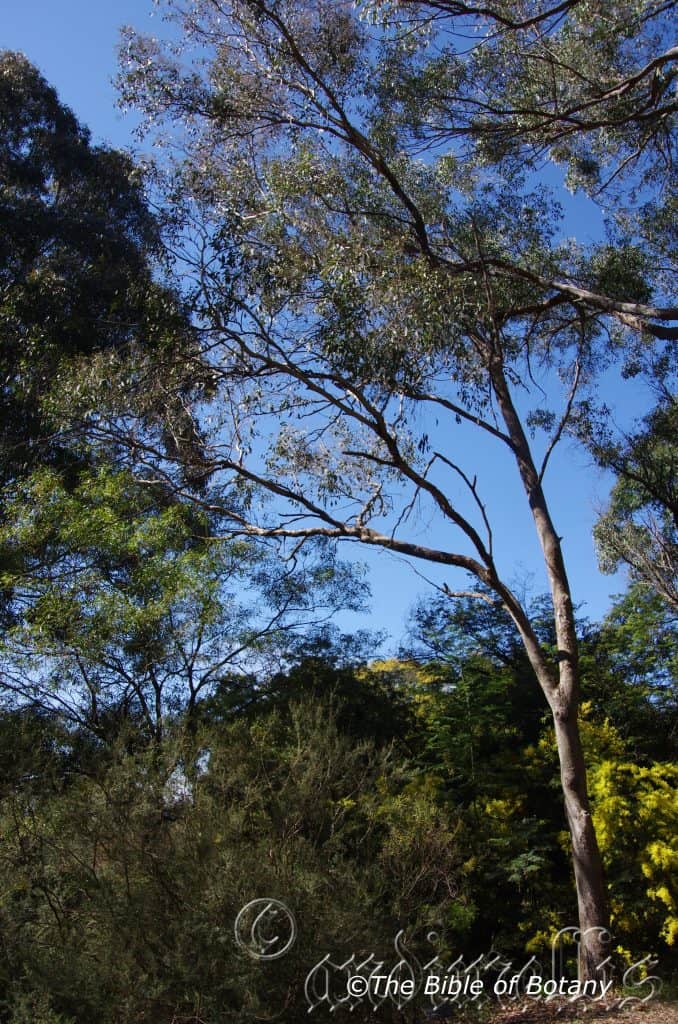
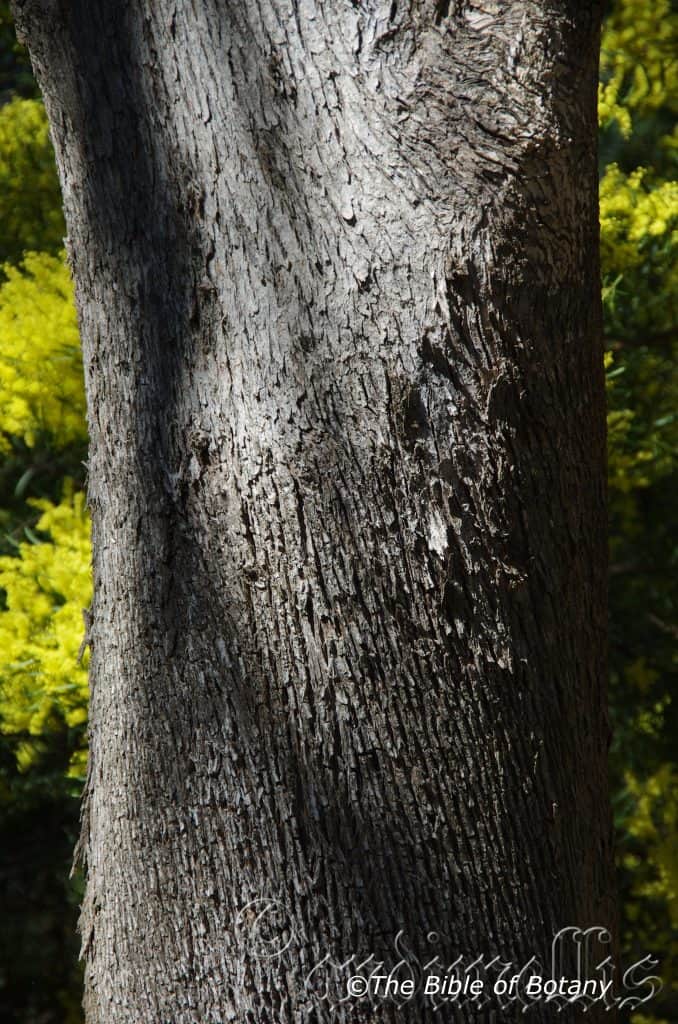
Eucalyptus moluccana
Classification:
Unranked: Eudicots
Unranked: Rosids
Order: Myrtales
Family: Myrtaceae
Genus: From Eu, which is Greek a prefix for good or well and Kaluptos, which is Ancient Greek for to cover up. It refers to the stamens, which have a lid or cover over them in the bud stage prior to opening.
Specie: From Moluccānum, which is Latin for the Molong district and Anum/Ensis, which is Latin for to originate from. It refers to plants, which were first discovered in the Molucca Islands.
Sub specie:
Common Name: Grey Box.
Distribution:
Eucalyptus moluccana is found south from the Anon River in far north Queensland to south of Naowra in southern New South Wales and west to Munghorn Gap Nature Reserve. It is found on the Western Plains, Western Slopes, on and east of the Great Dividing Range to the coast and off shore islands.
https://avh.ala.org.au/occurrences/search?taxa=Eucalyptus+moluccana#tab_mapView
Habitat Aspect Climate:
Eucalyptus moluccana prefers full sun to light dappled shade. It grows on flat plains and gentle slopes. The altitude ranges from 5 meters ASL to 1050 meters ASL.
The temperatures range minus 2 degrees in July to 40 degrees in January.
The rainfall ranges from lows of 620mm to an average of 2800mm annually.
Soil Requirements:
Eucalyptus moluccana prefers coarse sands, fine sands, sandy loams, light gravelly clay loams to medium clays. The soils are usually derived from granites, sandstones or at times basalts or accumulated coral sands. The soils pH ranges from 5pH to 8pH. It does not tolerate water logged soils. Non saline soils to moderately saline soils are tolerated as are salt laden winds.
Height & Spread:
Wild Plants: 8m to 25m by 6m to 12m.
Characteristics:
Eucalyptus moluccana has long thin trunk with the branches being retained at around 40mm to 50mm of the trees height on mature trees. The trunk is typical of a half bark with a rough, course or small tessellated near the base and almost fibrous on the upper sections of the trunk. The grey to deep grey-brown tessellated section gives way to a smooth creamy to pale grey bark above the first branches to the small branches. The branchlets are pale grass-green to pale grey-green and glabrous. The lower bark is persistent while the upper smooth bark is decorticating and is shed in long ribbons.
Eucalyptus moluccana’s disjunct juvenile leaves are opposite slowly becoming alternate. The ovate to orbicular leaves measure 25mm to 40mm in length by 20mm to 30mm in width. The dull grey-green, reddish tinged petioles measure 3mm to 6mm in length. The bases are oblique and rounded while the apexes are obtuse with a mucronate to apiculate tip. The concolourous laminas are dull grey-green and glabrous. The margins are entire with a few undulations. The mid vein is prominent on both laminas for about 50mm of its length on the basal half.
The disjunct alternate disjunct adult leaves are very variable even on the one stem. The leaves are broad lanceolate to ovate and straight. The bases are slightly oblique, broad cuneate to cuneate and often slightly attenuate while the apexes are broad acuminate, broad acute or almost obtuse with a mucronate to apiculate tip. They measure 80mm to 140mm in length by 20mm to 33mm in width. The concolourous laminas are mid green to grey-green, semi glossy to glossy and glabrous. The margins are entire. The mid vein is slightly prominent on both laminas for most of its length on the basal end. The lateral veins are at 30 degrees to 35 degrees to the mid vein. It is sparsely to moderately reticulate while the intramarginal veins are parallel to and well removed from margin. The few oil glands are islands between the lateral veins and secondary veins. The terete petioles measure 8mm to 13mm in length.
The inflorescences of Eucalyptus moluccana’s are born as compound umbellasters usually containing 7 flowers from the terminal. The pale grass-green to pale grey-green peduncules are terete or angular and glabrous or faintly striated while the pedicels are flattened, or faintly striated and glabrous. The peduncules measure 5mm to 13mm in length while the pedicels measure 1mm to 7mm in length.
The buds are obovoid or fusiform while the hypanthium are pale grass-green to mid grass-green. The hypanthium measure 2.5mm to 5mm by 3mm to 4mm in diameter. The pale grass-green to mid grass-green conical to elongated conical calyptras often have a rostrate apex and measure 2.5mm to 4mm in length. The bud scar is absent.
The regularly flexed stamens are white and measure 4.5mm to 6mm in length. The anthers are cream to pastel yellow. The stocky, pastel green style measures 4mm to 5mm in length. The disc is mid grass-green to mid lime-green. The flowers appear from February to May.
The fruits of Eucalyptus moluccana are cylindrical, ovoidal or urceolate gum nuts. The gum nuts are resinous with several faint longitudinal striations and measure 5mm to 10mm in length by 4mm to 6mm in diameter at the widest point. The disc is depressed with 4 slightly enclosed valves.
The tan to pale reddish-brown seeds are pyramidal or obliquely pyramidal and measure 1mm to 2.3mm in length while the trash is smaller and deeper in colour.
Wildlife:
The flowers of Eucalyptus moluccana’s are medium nectar producers but are still are very attractive to most honeyeaters, lorikeets, flying foxes, possums and many insects. Myriads of insects and butterflies also frequent the trees attracting smaller insectivorous birds especially the likes of Thornbills (Acanthiza pusilla diemenensis, Acanthiza reguloides, Acanthiza uropygialis and Acanthiza chrysorrhoa.)
The blossoms are also sort after and eaten by the Grey-headed Flying Fox, Pteropus poliocephalus.
The Gum Leaf Katydid, Torbia viridissima is a common predator of most Eucalyptus and we have observed its eggs and nymphs feeding on this Eucalyptus.
Cultivation:
Eucalyptus moluccana make excellent shelterbelts or shade trees for cattle, sheep and native animals in rural areas. The trees can be grown for their flowers that produce good quality honey for apiculture.
In the cultivation good specimens grow from 12 to 16 meters in height by 12 meters to 16 meters in diameter when grown in the open.
It is drought tolerant once established and can cope with moderate frosts.
This is not a popular cream flowering gum amongst home gardeners but should be considered where the smaller size trees make typical but strong contrasting silhouettes against the house or garden. The bark contrasts well with other Eucalyptus specie, Corymbia specie with dissimilar trunks to high light the trunks and barks. Place it near the edge of a forest or make them the center of attraction and give them room to reach their full potential. Trees planted in full view make good bird watching trees for the nectar eating birds and insect eating birds alike. It is rather messy when the lorikeets clamber over the outer foliage.
It would be ideally suited to small to large park like scenes where it has the opportunity to spread out as it matures
Like all Eucalyptus specie leaf drop, dropping of small branches means continual lawn maintenance but then this means good quantities of leaf litter mulch. If the trees are clumped or used in a bush garden this is not a problem.
Propagation:
Seeds: Sow the seeds of Eucalyptus moluccana into a seed raising mix. Cover the seeds with 2mm to 3mm of fine sand and place the trays in a warm sunny position. Keep moist but not wet. When the seedlings are 25mm to 50mm tall, prick them out and plant them into 50mm native tubes using a good organic mix.
Once the seedlings reach 200mm to 250mm in height plant them out into their permanent position. Mass plantings are best done in groups of 3 to 5 as a feature by planting them at 15 meters to 20 meters centers.
Fertilize using Seaweed, fish emulsion or organic chicken pellets soaked in water and apply the liquid on an alternate basis. Fertilize every two month until the trees are well established then every spring to ensure good growth and flowering.
Further Comments from Readers:
“Hi reader, it seems you use The Bible of Botany a lot. That’s great as we have great pleasure in bringing it to you! It’s a little awkward for us to ask, but our first aim is to purchase land approximately 1,600 hectares to link several parcels of N.P. into one at The Pinnacles NSW Australia, but we need your help. We’re not salespeople. We’re amateur botanists who have dedicated over 30 years to saving the environment in a practical way. We depend on donations to reach our goal. If you donate just $5, the price of your coffee this Sunday, We can help to keep the planet alive in a real way and continue to bring you regular updates and features on Australian plants all in one Botanical Bible. Any support is greatly appreciated. Thank you.”
In the spirit of reconciliation we acknowledge the Bundjalung, Gumbaynggirr and Yaegl and all aboriginal nations throughout Australia and their connections to land, sea and community. We pay our respect to their Elders past, present and future for the pleasures we have gained.
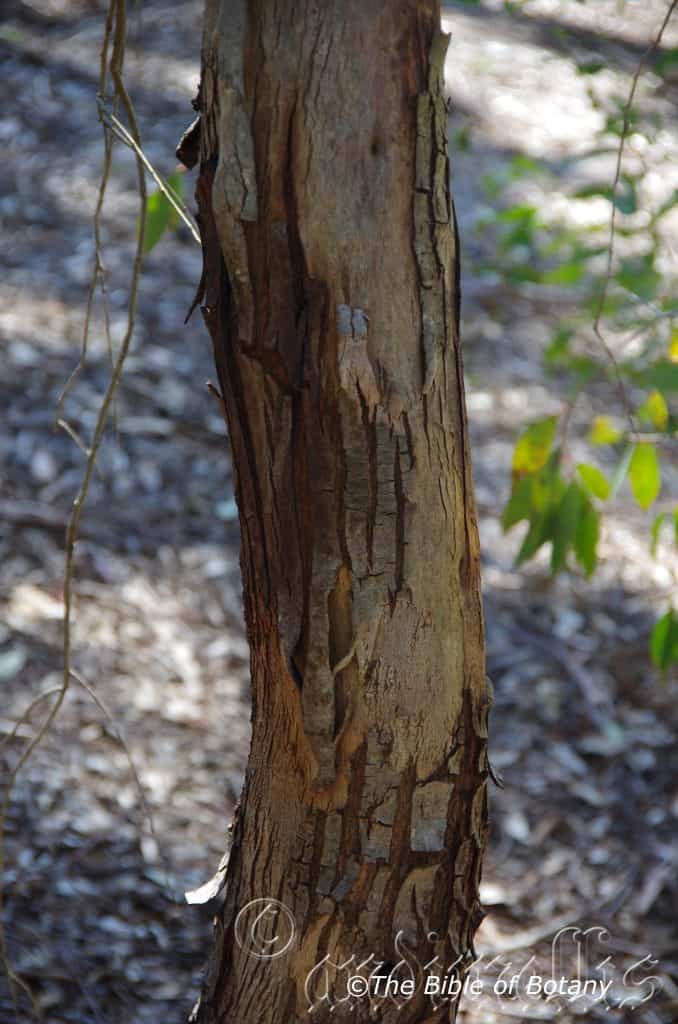
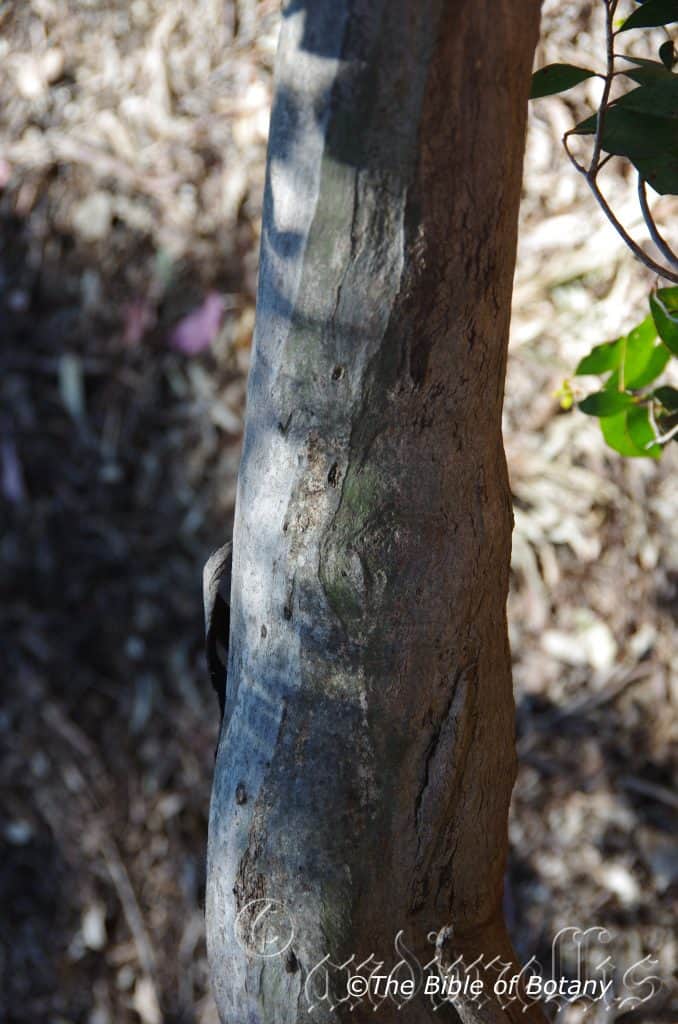
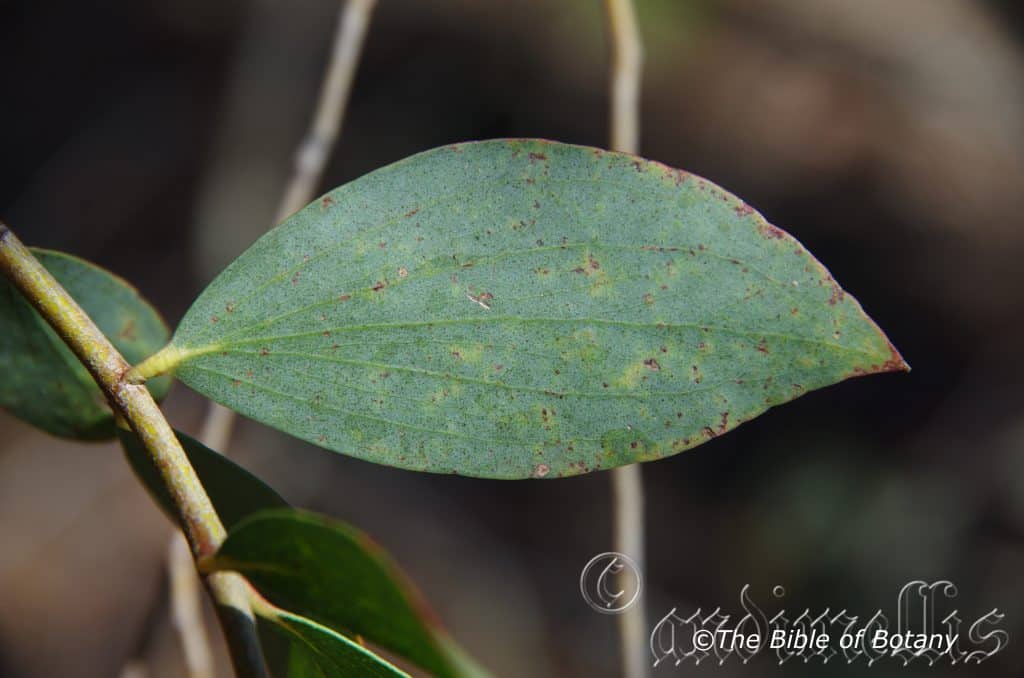
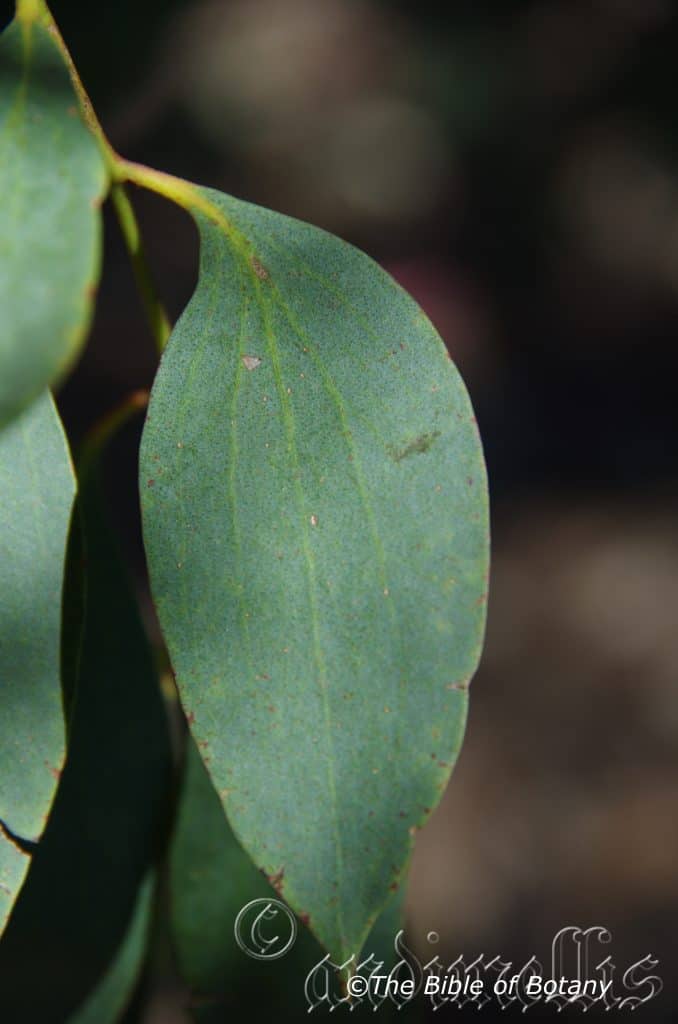

Eucalyptus morrisbyi
Classification:
Unranked: Eudicots
Unranked: Rosids
Order: Myrtales
Family: Myrtaceae
Genus: From Eu, which is Greek a prefix for good or well and Kaluptos, which is Ancient Greek for to cover up. It refers to the stamens, which have a lid or cover over them in the bud stage prior to opening.
Specie: Is named in honour of John Robert Morrisby; 1832-1923, who was a farmer who grew and established the original colony of plants on his property as well as supplying the seed from the tree for others.
Sub specie:
Common Name:
Distribution:
Eucalyptus morrisbyi is restricted to two populations in the south eastern side of Tasmania.It is founding in an area around Risdon Hills Nature Reserve with the second area around Cremorne.
https://avh.ala.org.au/occurrences/search?taxa=Eucalyptus+morrisbyi#tab_mapView
Habitat Aspect Climate:
Eucalyptus morrisbyi prefers full sun. It grows in exposed situations in dry coastal, sclerophyll woodlands on flats to gentle slopes close to the coast. The altitude ranges from 5 meters ASL to 60 meters ASL.
The temperatures range from minus 2 degree in August to 34 degrees in January.
The rainfall ranges from lows of 550mm to an average of 800mm.
Soil Requirements:
Eucalyptus morrisbyi prefers deep infertile soils of fine silts to fatty clays overlying dolerite. The soils are usually derived from decomposed mudstone or recent silt deposits. The soil’s pH ranges from 4pH to 5.5pH. It tolerates water logged soils and seasonal wet periods.Non saline soils to the higher end of moderately saline soils are tolerated as are salt laden winds.
Height & Spread:
Wild Plants: 5m to 12m by 3m to 5m.
Characteristics:
Eucalyptus morrisbyi is a small single trunk small tree. The typically box bark is rough and persistent on the lower trunk while upper portion of the trunk and the branches are smooth, brown, off white, pale grey or pinkish-grey. The bark is shed in short ribbons or small patches. The new growth is purplish-red and glaucous. The tree develops a lignotuber at ground level.
Eucalyptus morrisbyi’s juvenile and coppice stems are terete, glaucous and glabrous. The sessile opposite disjunct leaves are ovate to broad oblong with a rounded base and an obtuse apex which has an apiculate tip. The concolourous laminas are dull blue-green to dull bluish-green, glaucous and glabrous. The leaves measure 20mm to 30mm in length by 2mm to 40mm in width. The margins are entire.
The alternate, disjunct, lanceolate to broad lanceolate leaves of Eucalyptus morrisbyi measure 50mm to 100mm in length by 15mm to 40mm in width. The terete petioles are yellowish and measure 10mm to 18mm in length. The bases are rounded and shortly attenuate while the apexes are acuminate to broad acute. The concolourous laminas are semi glossy deep green to deep grey-green and glabrous. The margins are entire while the mid vein is slightly prominent on both laminas. The lateral penniveins are faintly visible on the both laminas while the intramarginal veins are well away from the margin.
The inflorescences of Eucalyptus morrisbyiare umbellasters born auxiliary along the stems from the leaf axils. There are 3 individual white flowers to an umbellaster. The new growth bearing the umbellasters is generally glaucous green or at times glaucous reddish-brown. The thick terete peduncles are glaucous, glabrous and measure 7mm to 9mm in length while the terete pedicels measure 3mm to 4mm in length. The clavate buds are bluish, ribbed, glaucous or pulverulent and glabrous. The buds measure 9mm to 11mm in length by 5.5mm to 6mm in diameter. The flattened, hemispherical calyptra is much shorter than and is not as wide as the hypanthium. A bud scar is absent.
The usually cream or at times white or rarely yellow stamens measure 6mm to 8mm in length. The cream, orbicular anthers are dorsifixed and are all fertile. The pale creamy-green style measures 1.5mm to 2mm in length. The disc is pale creamy-green. The flowers appear from mid-February to May.
The fruits of Eucalyptus morrisbyi are cupular to cylindrical woody capsules known as gum nuts. The glaucous green gum nuts turn glaucous brown when ripe and measure 6mm to 9mm in length by 5.5mm to 6mm in diameter at the widest point. The disc is deeply inserted with the 4 broad triangular valves being inserted.
Confusing Subspecies Varieties:
Eucalyptus morrisbyi is a coastal lowland species. The buds and capsules are covered in farinaceous to protuberances. The smaller capsules only occur in the leaf axils in mature.
Eucalyptus gunnii prefers higher altitudes. The buds and capsules are smooth.
Eucalyptus cordata has larger capsules which occur in the leaf axils, cauliferous and terminally.
It readily hybridizes with Eucalyptus viminalis and where the two species overlap a large proportion of the trees are hybrids.
Wildlife:
The wildlife of Eucalyptus morrisbyi is unknown to the author.
Cultivation:
Eucalyptus morrisbyi is a beautiful small to medium tree which is ideally suitable for smaller gardens where a Eucalyptus is required. It is fast growing even on poor soils that it is normally associated with. It makes an attractive garden specimen once established due it its beautiful blue glaucous foliage and stems. It looks great and makes a good contrast plant from an early age. It looks very affective when planted with other mallees or small Eucalyptus trees with contrasting glossy green foliage and growth habits. Another method is to grow one or two as trees and interplant with several smaller mallees that have been cut to induce the growth of several trunks. In the garden good specimens may grow from 12 meters to 15 meters in height by 4 meters to 6 meters in diameter when grown in the open as a single trunk tree or 3 meters to 5 meters in height by 4 meters to 5 meters in diameter as a multi trunk tree when grown in the open.
The beauty of Eucalyptus morrisbyi is that it can be established on sites that have poor drainage and the soils are cold for extended periods from autumn to mid spring. Once established it looks at home in such conditions. Like all Eucalyptus spp. though some leaf drop and dropping of small branchlets means continual lawn maintenance but then this species is far better in garden beds and native heath gardens than in lawns.
Eucalyptus morrisbyi can be used like many small Eucalyptus spp. to create that little bit of Australiana in the suburban back yard or the outback garden to give shade from a relentless hot sun.
Often floral characteristics of a plant dictate our selection of plants for the garden. Remember that once a Eucalyptus spp.; or in fact any tree, reaches a reasonable size, its trunk or bark can are the most prominent features seen. Among the Eucalypts there are many different types of barks which include some of our beautiful peppermint barks. Grouping, mallees as mallees or as single trunk trees can add immeasurably to the interest within a small space. Eucalyptus morrisbyi is one of those species whose multi stems and bark contrasts well with single stem species.
Small shrubs can be used to emphasize the open spaces surrounding a mallee or a small tree especially when mass plantings are done.
Eucalyptus morrisbyi can look great when placed in the corner against a fence to add privacy and remove the barrenness of the yard while giving extra depth. Here try a deep red brick fence as a background or
Propagation:
Seeds: Sow the seeds of Eucalyptus morrisbyi into a seed raising mix. Cover the seeds with 2mm to 3mm of fine sand and place the trays in a warm sunny position. Keep the seeds moist but not wet. When the seedlings are 25mm to 50mm tall, prick them out and plant them into 50mm native tubes using a good organic mix.
Once the seedlings reach 200mm to 250mm in height plant them out into their permanent position. Mass plantings are best done in groups of 3 to 5 as a feature by planting them at 4 meter to 5 meter centers as a tree or 5 meters to 6 meters as a mallee.
Fertilize using Seaweed, fish emulsion or organic chicken pellets soaked in water and apply the liquid on an alternate basis. Fertilize every two month until the trees are well established then every spring to ensure good growth and flowering.
Further Comments from Readers:
“Hi reader, it seems you use The Bible of Botany a lot. That’s great as we have great pleasure in bringing it to you! It’s a little awkward for us to ask, but our first aim is to purchase land approximately 1,600 hectares to link several parcels of N.P. into one at The Pinnacles NSW Australia, but we need your help. We’re not salespeople. We’re amateur botanists who have dedicated over 30 years to saving the environment in a practical way. We depend on donations to reach our goal. If you donate just $5, the price of your coffee this Sunday, We can help to keep the planet alive in a real way and continue to bring you regular updates and features on Australian plants all in one Botanical Bible. Any support is greatly appreciated. Thank you.”
In the spirit of reconciliation we acknowledge the Bundjalung, Gumbaynggirr and Yaegl and all aboriginal nations throughout Australia and their connections to land, sea and community. We pay our respect to their Elders past, present and future for the pleasures we have gained.

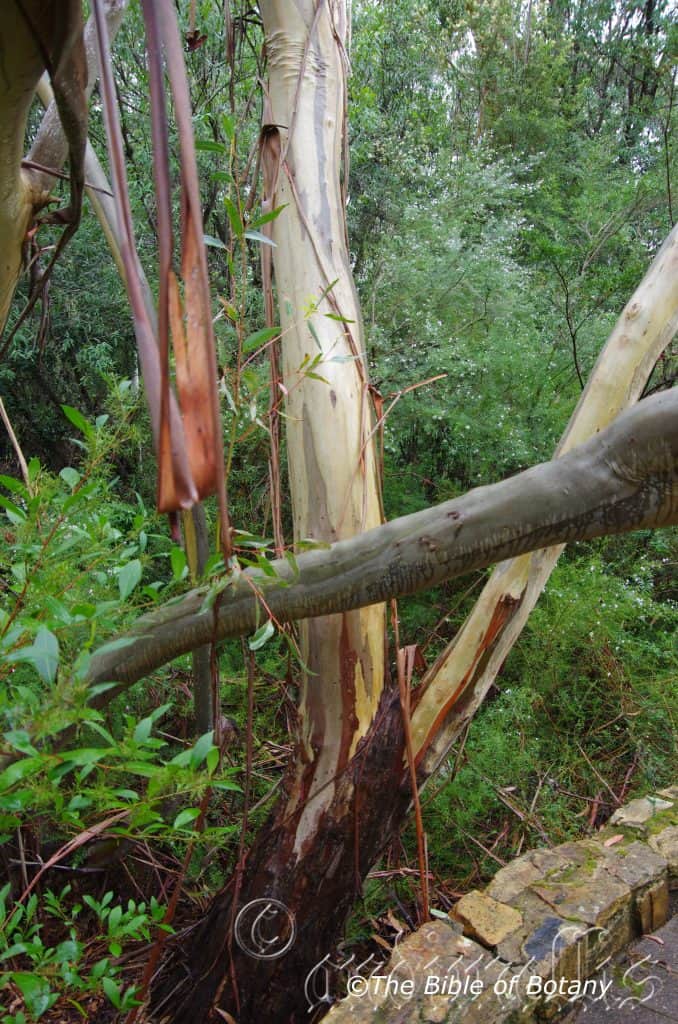
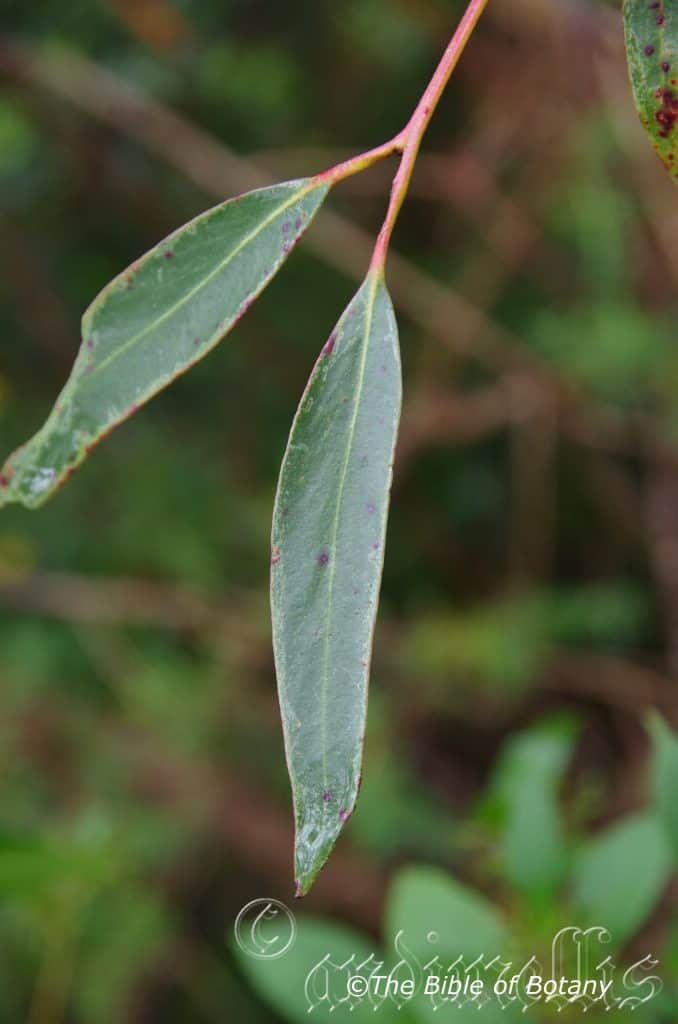

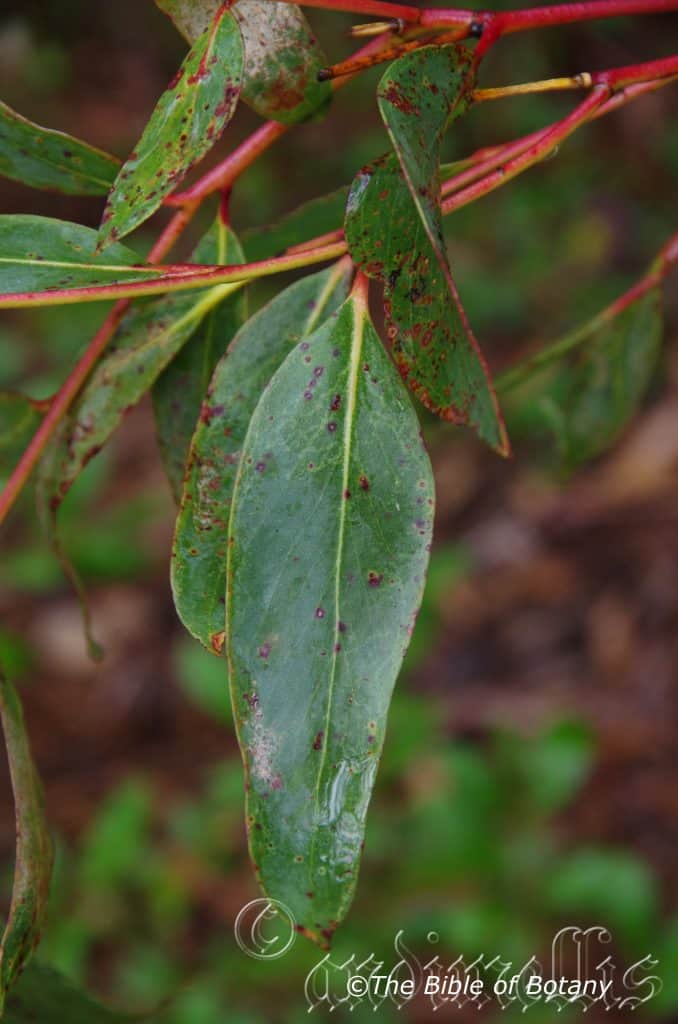
Eucalyptus multicaulis
Classification:
Unranked: Eudicots
Unranked: Rosids
Order: Myrtales
Family: Myrtaceae
Genus: From Eu, which is Greek a prefix for good or well and Kaluptos, which is Ancient Greek for to cover up. It refers to the stamens, which have a lid or cover over them in the bud stage prior to opening.
Specie: From Multum which is Latin for many and Kaulós which is Ancient Greek, or later Caulis, which is Latin for a stem or a twig. It refers to plants, which have many stems or branches.
Sub specie:
Common Name: Whipstick Mallee Ash.
Distribution:
Eucalyptus multicaulis is restricted to a small area south from Kariong to Murrengenburg, in central eastern New South Wales. It is found on and east of the Great Dividing Range to near the coast.
https://avh.ala.org.au/occurrences/search?taxa=Eucalyptus+multicaulis#tab_mapView
Habitat Aspect Climate:
Eucalyptus multicaulis prefers full sun to part shade or dappled sunlight. It grows as an understorey tree along river flats and along gullies in the high country. The altitude ranges from 100 meters ASL to 1200 meters ASL.
The temperatures range from minus 3 degree in August to 39 degrees in January.
The rainfall ranges from lows of 800mm to an average of 1100mm.
Soil Requirements:
Eucalyptus multicaulis prefers deep fertile soils of course silts to fine silts, light fatty clays and gravelly sands overlying dolerite. The soils are usually derived from decomposed granites, metagranites laid down in alluvial deposits. The soil’s pH ranges from 4pH to 5.5pH. It tolerates water logged soils and seasonal wet periods.Non saline soils to moderately saline soils are tolerated.
Height & Spread:
Wild Plants: 5m to 8m by 5m to 6m.
Characteristics:
Eucalyptus multicaulis bark is smooth throughout or with less than 500mm of persistent rough bark at the base of the trunks, while the upper trunk and branches are grey or white. The juvenile stems are terete, reddish-brown or reddish-maroon or at times slightly glaucous;
The sub sessile juvenile leaves are opposite for a few nodes becoming alternate. The broadly ovate leaves are blue-green to grey-green and measure 50mm to 95mm in length by 20mm to 45mm in width. The oblique bases taper to the petiole, while the apexes are acute.
The petiole measures 10mm to 30mm in length. The concolourous, glossy, green, lanceolate to falcate leaves measure 70mm to 150mm in length by 14mm to 30mm in width. The bases are oblique to tapering to petiole, while the apexes are narrow acute. The mid vein is prominent on both laminas for most of its length, while the lateral veins are at around 25 degrees with a faint, sparse to invisible reticulation. The intramarginal vein is parallel to and well away from the margins. The oil glands are islands.
The axillary unbranched, peduncles measure 10mm to 16mm in length. There are 7, 9, 11 or 13 individual flowers to an umbel. The pedicels measure 4mm to 6mm in length. The mature obovoid or clavate buds measure 3mm to 4mm in length by 3mm to 3.5mm in diameter. The scar is absent, while the obtuse operculum is discarded well before the inflexed, outer staminodes begin to expand. The reniform to cordate, versatile, dorsifixed anthers dehisce along confluent slits. The short, stout style has a blunt stigma. The white flowers appear from September to November.
The pedicels on the capsules measure 2mm to 4mm in length. The green, glossy to semi glossy, obconical capsules measure 7mm to 9mm in length by 6mm to 8mm in diameter. The disc is level to descending, while the 4 valves are enclosed to close to the rim.
The deep brown to black or deep grey seeds are pyramidal or obliquely pyramidal with a glabrous dorsal surface and measure 1.6mm to 2.5mm in length. The hilum is terminal.
Wildlife:
The wildlife of Eucalyptus multicaulis is unknown to the author.
Cultivation:
Eucalyptus multicaulis is a beautiful small to medium tree which is ideally suitable for smaller gardens where a Eucalyptus is required. It is fast growing even on poor sandy, cold soils that it are normally associated with. It makes an attractive garden specimen once established due it its beautiful blue glaucous foliage and white stems.
It looks great and makes a good contrast plant from an early age. It looks very affective when planted with other mallees or small Eucalyptus trees with contrasting glossy green foliage and growth habits. Another method is to grow one or two as trees and interplant with several smaller mallees that have been cut to induce the growth of several trunks. In the garden good specimens may grow from 6 meters to 9 meters in height by 4 meters to 6 meters in diameter when grown in the open.
The beauty of Eucalyptus multicaulis is that it branches close to the ground and accepts soils that are cold for extended periods from autumn to mid spring. Once established it looks at home in such conditions. Like all Eucalyptus sp. though some leaf drop and dropping of small branchlets means continual lawn maintenance but then this species is far better in garden beds and native heath gardens than in lawns.
Eucalyptus multicaulis can be used like many small Eucalyptus sp. to create that little bit of Australiana in the suburban back yard or the outback garden to give shade from a relentless hot sun.
Often floral characteristics of a plant dictate our selection of plants for the garden. Remember that once a Eucalyptus sp.; or in fact any tree, reaches a reasonable size, its trunk or bark can and are the most prominent features seen for the longest period over the year. Among the Eucalypts there are many different types of barks which include some of our beautiful peppermint barks. Grouping, mallees as mallees or as single trunk trees can add immeasurably to the interest within a small space. Eucalyptus multicaulis is one of those species whose multi stems and bark contrasts well with single stem species.
Small shrubs can be used to emphasize the open spaces surrounding a mallee or a small tree especially when mass plantings are done.
Eucalyptus multicaulis can look great when placed in the corner against a fence to add privacy and remove the barrenness of the yard while giving extra depth. Against a fence it will soon detract from the fence and gain self-recognition. This then offers the opportunity place other shrubs or more small mallees, which will extend the garden out making the area look larger than it is.
Propagation:
Seeds: Sow the seeds of Eucalyptus multicaulis into a seed raising mix. Cover the seeds with 2mm to 3mm of fine sand and place the trays in a warm sunny position. Keep the seeds moist but not wet. When the seedlings are 25mm to 50mm tall, prick them out and plant them into 50mm native tubes using a good organic mix.
Once the seedlings reach 200mm to 250mm in height plant them out into their permanent position. Mass plantings are best done in groups of 3 to 5 as a feature by planting them at 4 meter to 5 meter centers as a tree or 5 meters to 6 meters as a mallee.
Fertilize using Seaweed, fish emulsion or organic chicken pellets soaked in water and apply the liquid on an alternate basis. Fertilize every two month until the trees are well established then every spring to ensure good growth and flowering.
Further Comments from Readers:
“Hi reader, it seems you use The Bible of Botany a lot. That’s great as we have great pleasure in bringing it to you! It’s a little awkward for us to ask, but our first aim is to purchase land approximately 1,600 hectares to link several parcels of N.P. into one at The Pinnacles NSW Australia, but we need your help. We’re not salespeople. We’re amateur botanists who have dedicated over 30 years to saving the environment in a practical way. We depend on donations to reach our goal. If you donate just $5, the price of your coffee this Sunday, We can help to keep the planet alive in a real way and continue to bring you regular updates and features on Australian plants all in one Botanical Bible. Any support is greatly appreciated. Thank you.”
In the spirit of reconciliation we acknowledge the Bundjalung, Gumbaynggirr and Yaegl and all aboriginal nations throughout Australia and their connections to land, sea and community. We pay our respect to their Elders past, present and future for the pleasures we have gained.
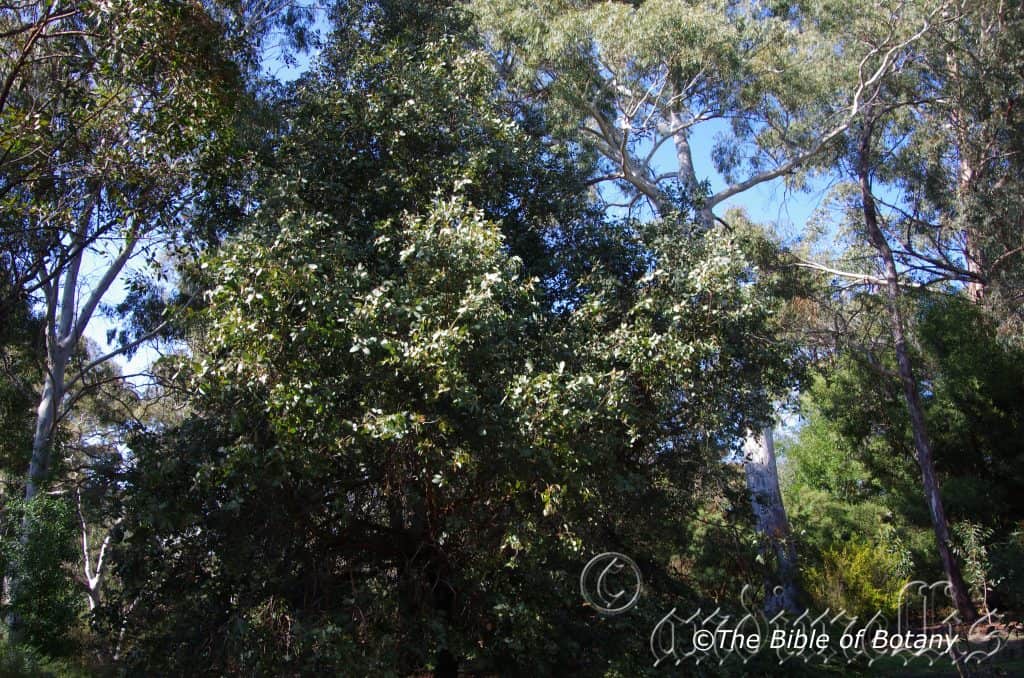
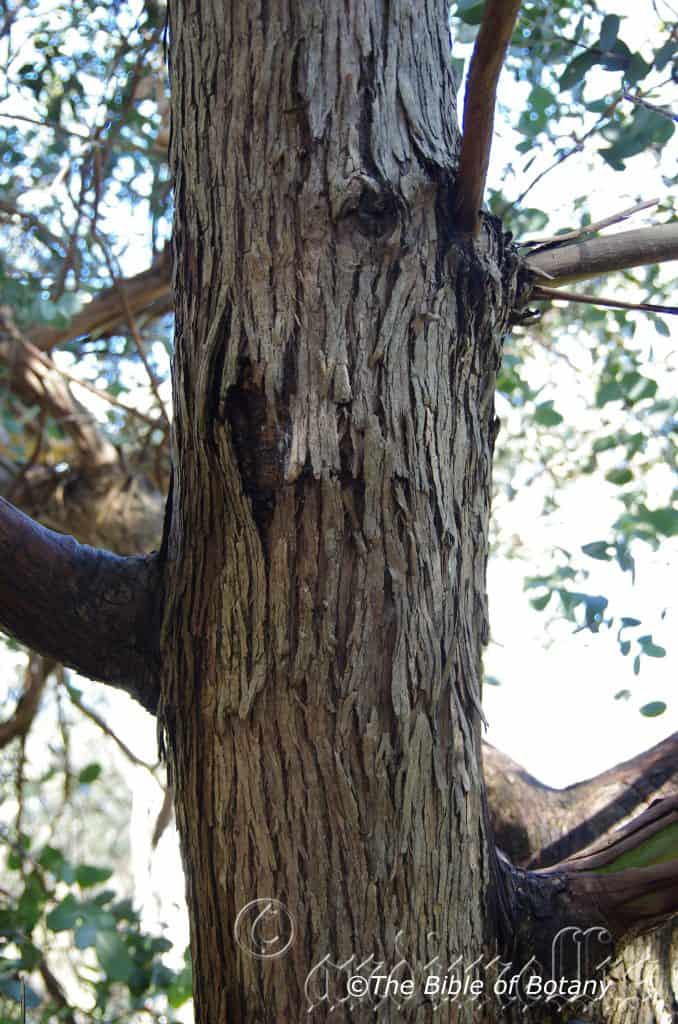
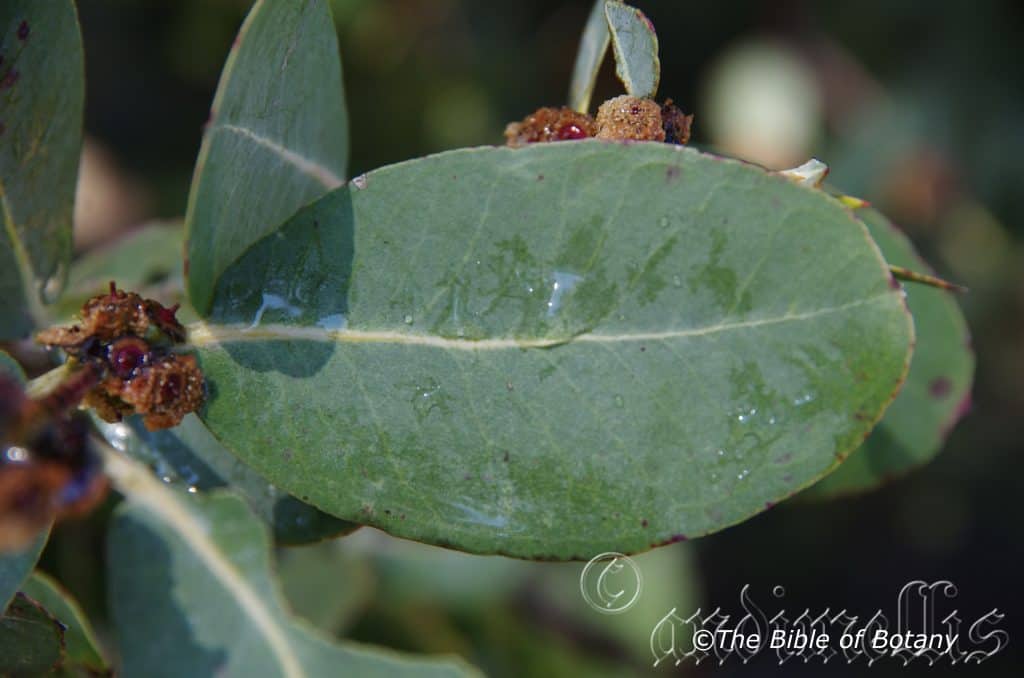

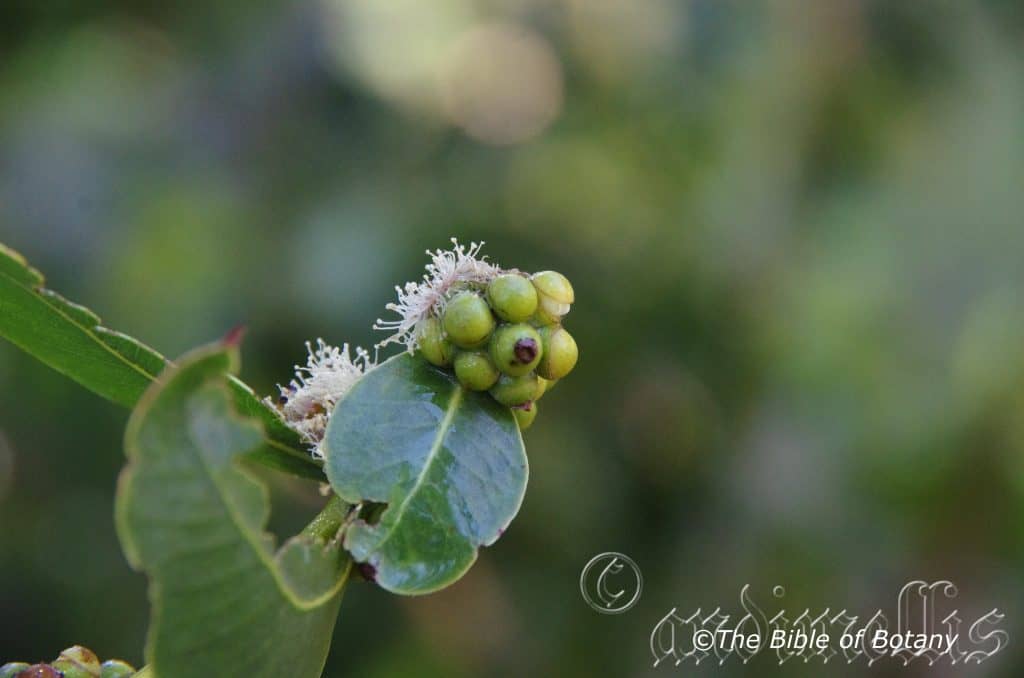
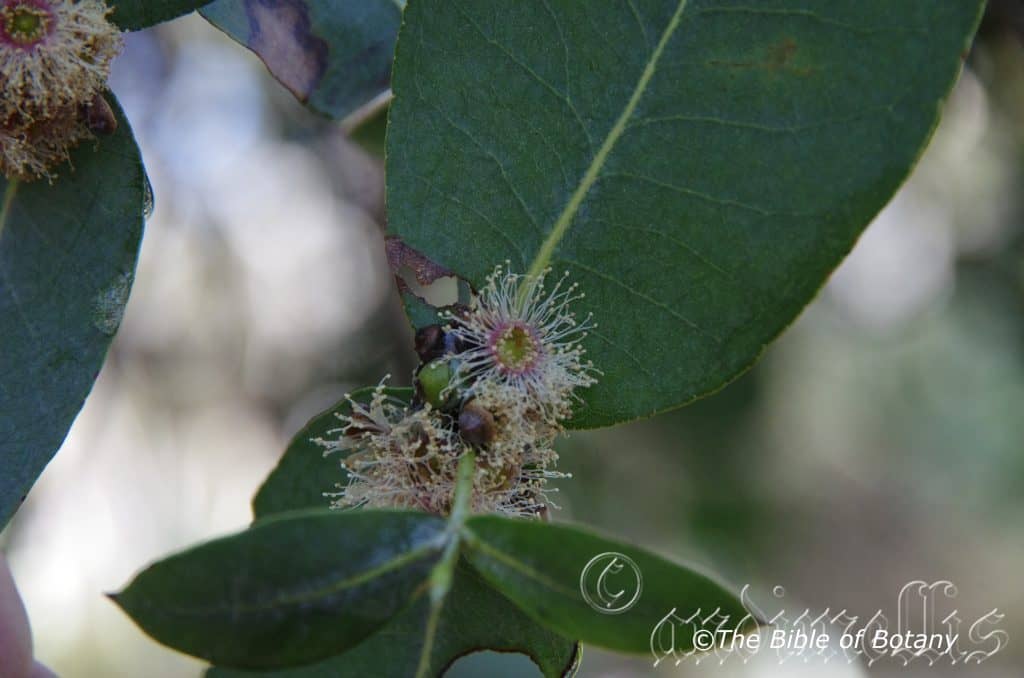


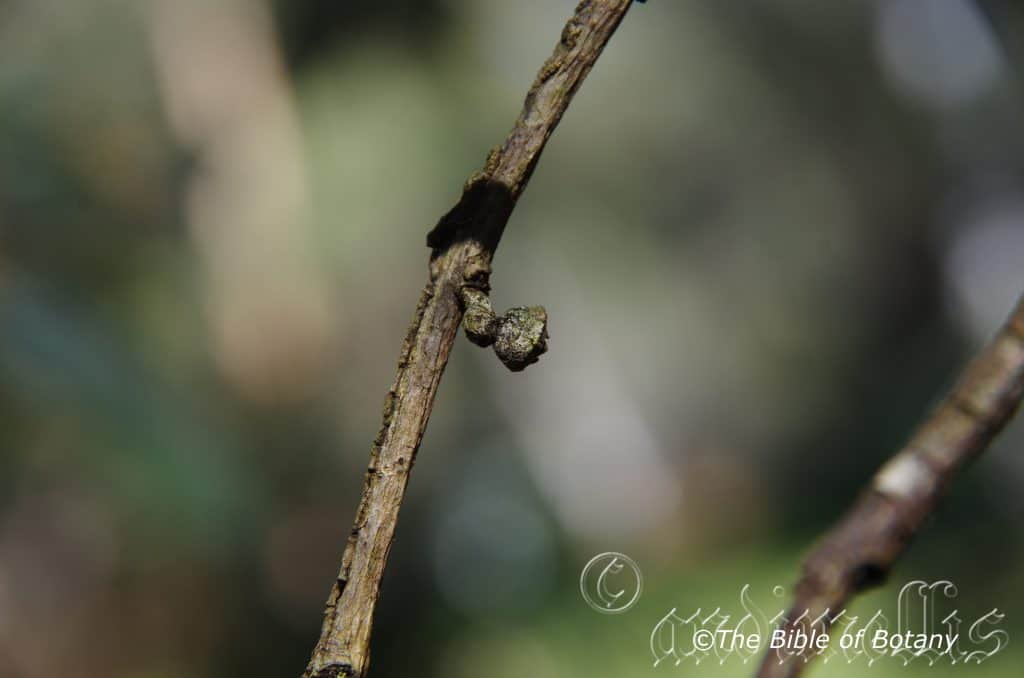
Eucalyptus neglecta
Classification:
Unranked: Eudicots
Unranked: Rosids
Order: Myrtales
Family: Myrtaceae
Genus: From Eu, which is Greek a prefix for good or well and Kaluptos, which is Ancient Greek for to cover up. It refers to the stamens, which have a lid or cover over them in the bud stage prior to opening.
Specie: From Neglēcta/Neclēcta, which is Latin for to pay no attention to. It refers to the plants, which are often being over looked because they have no or few stand out qualities.
Sub specie:
Common Name: Omeo Gum.
Distribution:
Eucalyptus neglecta is restricted to fragmented populations due to excessive clearing from near the Victorian, New South Wales border to east of the Dandenong Range. It is found from Davies Plain south-west to Omeo, Dargo High Plains and the upper reaches of Jamieson River in the high country. It is also found at lower elevation on the Buckland River with an isolated population near Lismore in central western Victoria.
https://avh.ala.org.au/occurrences/search?taxa=Eucalyptus+neglecta#tab_mapView
Habitat Aspect Climate:
Eucalyptus neglecta prefers full sun to part shade or dappled sunlight. It grows as an understorey tree along river flats and along gullies in the high country. The altitude ranges from 700 meters ASL to 1300 meters ASL except for the population at Lismore which is around 200 meters to 300 meters ASL.
The temperatures range from minus 6 degree in August to 30 degrees in January.
The rainfall ranges from lows of 800mm to an average of 1600mm however orographic precipitation would decrease the evaporation rate from plants and maintain ground moisture.
Soil Requirements:
Eucalyptus neglecta prefers deep fertile soils of course silts to fine silts, light fatty clays and gravelly sands overlying dolerite. The soils are usually derived from decomposed granites, metagranites laid down in alluvial deposits. The soil’s pH ranges from 4pH to 5.5pH. It tolerates water logged soils and seasonal wet periods.Non saline soils to moderately saline soils are tolerated.
Height & Spread:
Wild Plants: 5m to 7m by 3m to 5m.
Characteristics:
Eucalyptus neglecta is a small tree which branches freely from the near the ground. The typically box bark is rough and persistent on the trunk and major stems. The glabrous branches and branchlets are pale grey to greenish-grey. The bark is shed in small patches. The new growth is purplish-green. The tree’s canopy comprises of mature leaves, juvenile leaves and intermediate leaves.
Eucalyptus neglecta’s juvenile and coppice stems are terete, glaucous and glabrous. The sessile opposite disjunct leaves are ovate to broad elliptical with a rounded base and an obtuse apex which has a short apiculate tip. The concolourous laminas are dull bluish-grey to blue-green or dull bluish-green, glaucous and glabrous. The leaves measure 40mm to 110mm in length by 30mm to 70mm in width. The margins are entire.
The alternate, disjunct, lanceolate leaves of Eucalyptus neglecta measure 70mm to 150mm in length by 25mm to 40mm in width. The terete petioles are yellowish or purplish-pink and measure 0mm to 13mm in length. The bases are rounded and shortly attenuate while the apexes are obtuse with an apiculate tip to broad acuminate. The concolourous laminas are dull grey-green, bluish-green to deep green and glabrous. The margins are entire while the mid vein is strongly prominent at the base becoming very faintly prominent at the apex on both laminas. The lateral penniveins are faintly visible on the both laminas while the intramarginal veins are well away from the margin. The reticulation is dense, with numerous, large, island and intersectional oil glands.
The inflorescences of Eucalyptus neglectaare unbranched umbellasters born auxiliary along the stems from the leaf axils. There are 7 to 15 individual white flowers to an umbellaster. The new growth bearing the umbellasters is generally glaucous grey-green or at times glaucous reddish-brown. The thick terete peduncles are glaucous, glabrous and measure 4mm to 5mm in length. The sessile, ovoid buds are bluish, glaucous and glabrous. The buds measure 3.5mm to 4.5mm in length by 3mm to 3.5mm in diameter. The flattened, hemispherical, brown calyptra imperfectly dehisces and is much shorter than and is not as wide as the hypanthium. A bud scar is present.
The white, irregularly flexed stamens measure 4mm to 5mm in length. The creamy, cuneate anthers are dorsifixed and are all fertile. The pale creamy-green style measures 1.5mm to 2mm in length. The disc is pale creamy-green. The flowers appear from November to May.
The fruits of Eucalyptus neglecta are hemispherical to obconical woody capsules known as gum nuts. The glaucous green gum nuts turn glaucous brown when ripe and measure 5mm to 6mm in length by 4.5mm to 5mm in diameter at the widest point. The annular raised, disc is has 3 or 4 broad triangular valves, which are level or slightly exserted.
The grey-brown or brown seeds are, more or less flattened elliptic, shallowly reticulate, lacunose with a ventral hilum.
Confusing Subspecies Varieties:
Eucalyptus neglecta’s bark extends up the trunk and major stems to the branches. The leaves comprise of mature leaves, juvenile leaves and intermediate leaves. The Buds are ovoid with the calyptra being flattened, hemispherical and brown. The capsules are cylindrical.
Eucalyptus ovata’s bark only extends on the lower two thirds of the trunk and major stems and not to the major branches. The leaves are ovate to broadly lanceolate while the Buds are uniform in colour and fusiform. The capsules are conical.
Wildlife:
The wildlife of Eucalyptus neglecta is unknown to the author.
Cultivation:
Eucalyptus neglecta is a beautiful small to medium tree which is ideally suitable for smaller gardens where a Eucalyptus is required. It is fast growing even on poor, cold soils that it is normally associated with. It makes an attractive garden specimen once established due it its beautiful blue glaucous foliage and stems. It looks great and makes a good contrast plant from an early age. It looks very affective when planted with other mallees or small Eucalyptus trees with contrasting glossy green foliage and growth habits. Another method is to grow one or two as trees and interplant with several smaller mallees that have been cut to induce the growth of several trunks. In the garden good specimens may grow from 12 meters to 15 meters in height by 4 meters to 6 meters in diameter when grown in the open as a single trunk tree or 3 meters to 5 meters in height by 4 meters to 5 meters in diameter as a multi trunk tree when grown in the open.
The beauty of Eucalyptus neglecta is that it branches close to the ground and accepts soils that are cold for extended periods from autumn to mid spring. Once established it looks at home in such conditions. Like all Eucalyptus spp. though some leaf drop and dropping of small branchlets means continual lawn maintenance but then this species is far better in garden beds and native heath gardens than in lawns.
Eucalyptus neglecta can be used like many small Eucalyptus spp. to create that little bit of Australiana in the suburban back yard or the outback garden to give shade from a relentless hot sun.
Often floral characteristics of a plant dictate our selection of plants for the garden. Remember that once a Eucalyptus spp.; or in fact any tree, reaches a reasonable size, its trunk or bark can are the most prominent features seen. Among the Eucalypts there are many different types of barks which include some of our beautiful peppermint barks. Grouping, mallees as mallees or as single trunk trees can add immeasurably to the interest within a small space. Eucalyptus neglecta is one of those species whose multi stems and bark contrasts well with single stem species.
Small shrubs can be used to emphasize the open spaces surrounding a mallee or a small tree especially when mass plantings are done.
Eucalyptus neglecta can look great when placed in the corner against a fence to add privacy and remove the barrenness of the yard while giving extra depth. Here try a deep red brick fence as a background or
Propagation:
Seeds: Sow into a seed raising mix. Cover the seeds with 2mm to 3mm of fine sand and place the trays in a warm sunny position. Keep the seeds moist but not wet. When the seedlings are 25mm to 50mm tall, prick them out and plant them into 50mm native tubes using a good organic mix.
Once the seedlings reach 200mm to 250mm in height plant them out into their permanent position. Mass plantings are best done in groups of 3 to 5 as a feature by planting them at 4 meter to 5 meter centers as a tree or 5 meters to 6 meters as a mallee.
Fertilize using Seaweed, fish emulsion or organic chicken pellets soaked in water and apply the liquid on an alternate basis. Fertilize every two month until the trees are well established then every spring to ensure good growth and flowering.
Further Comments from Readers:
“Hi reader, it seems you use The Bible of Botany a lot. That’s great as we have great pleasure in bringing it to you! It’s a little awkward for us to ask, but our first aim is to purchase land approximately 1,600 hectares to link several parcels of N.P. into one at The Pinnacles NSW Australia, but we need your help. We’re not salespeople. We’re amateur botanists who have dedicated over 30 years to saving the environment in a practical way. We depend on donations to reach our goal. If you donate just $5, the price of your coffee this Sunday, We can help to keep the planet alive in a real way and continue to bring you regular updates and features on Australian plants all in one Botanical Bible. Any support is greatly appreciated. Thank you.”
In the spirit of reconciliation we acknowledge the Bundjalung, Gumbaynggirr and Yaegl and all aboriginal nations throughout Australia and their connections to land, sea and community. We pay our respect to their Elders past, present and future for the pleasures we have gained.

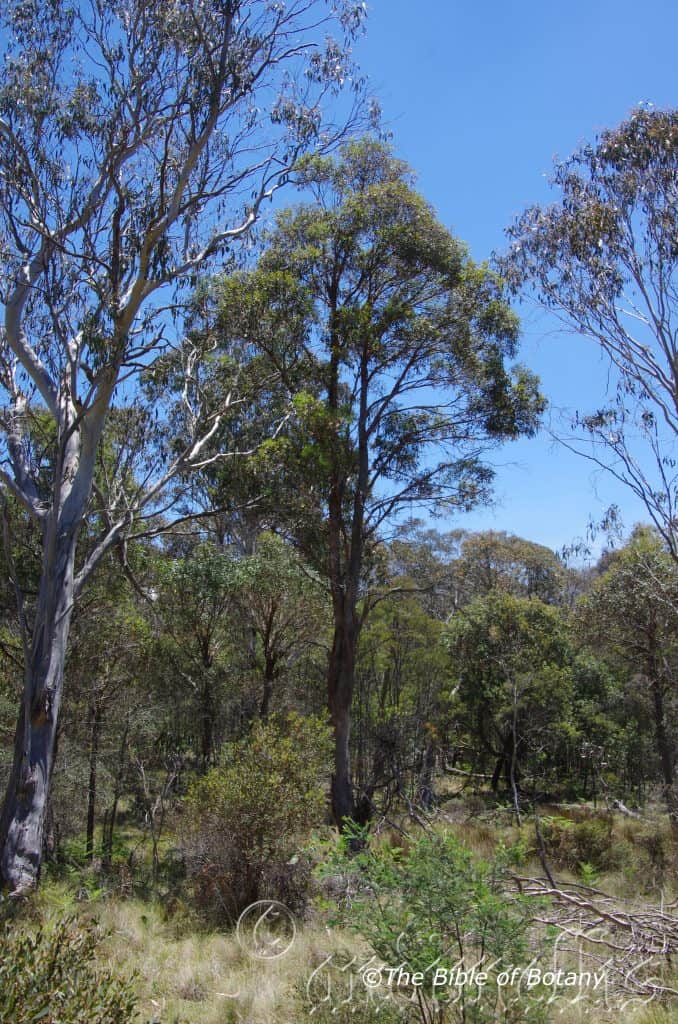
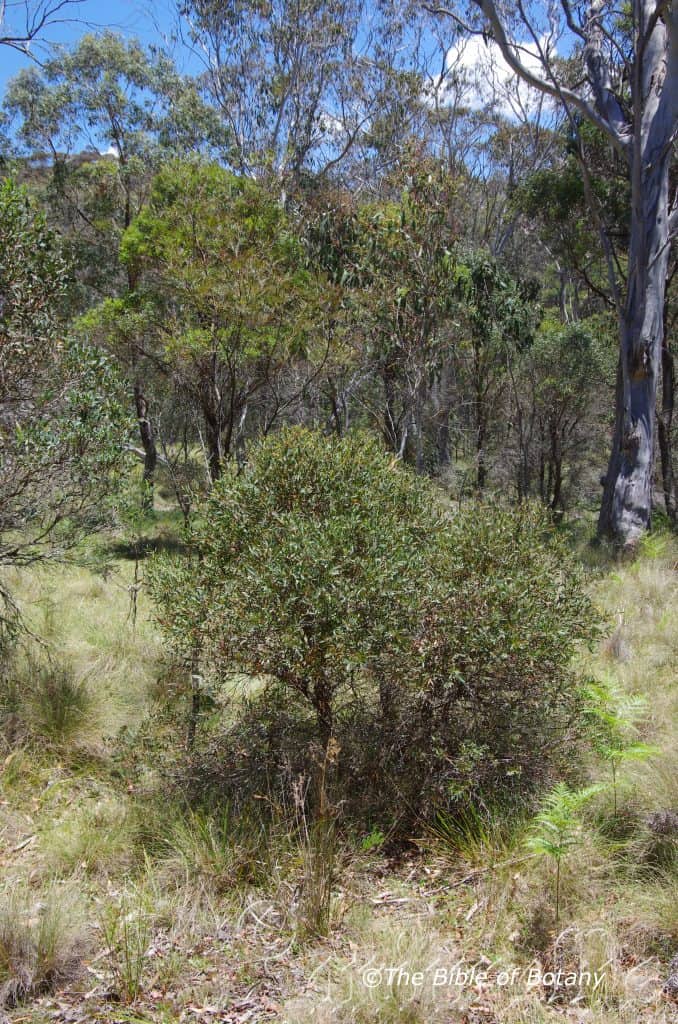
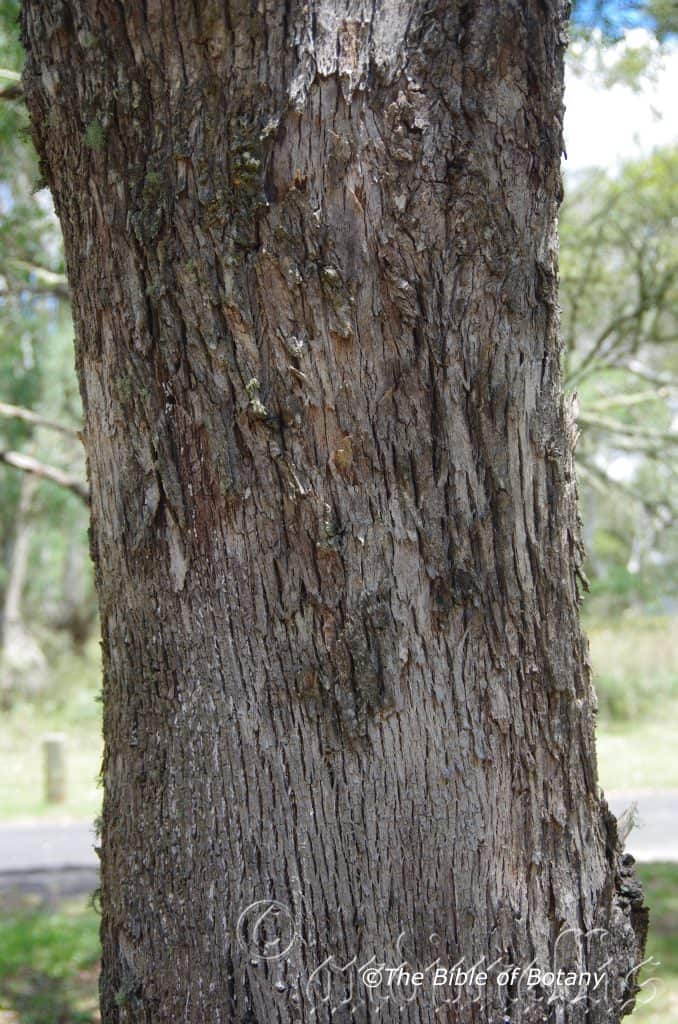

Eucalyptus nicholii
Classification:
Unranked: Eudicots
Unranked: Rosids
Order: Myrtales
Family: Myrtaceae
Genus: From Eu, which is Greek a prefix for good or well and Kaluptos, which is Ancient Greek for to cover up. It refers to the stamens, which have a lid or cover over them in the bud stage prior to opening.
Specie: Is named in honour of Richard Nichol; 1866–1947, who was an Australian joined the staff of the Sydney Botanic Gardens as a herbarium assistant in 1888. He was initially a label writer, museum attendant, storekeeper and in his later years a chief clerk, on occasions acting as private secretary to J.H. Maiden.
Sub specie:
Common Name: Peppermint Iron Bark or Narrow Leaved Black Peppermint.
Distribution:
Eucalyptus nicholii is found south from north Tenterfield to Walcha in north eastern New South Wales. It is found on the Great Dividing Range.
https://avh.ala.org.au/occurrences/search?taxa=Eucalyptus+nicholii#tab_mapView
Habitat:
Aspect / Climate:
Eucalyptus nicholii prefers full sun to light dappled shade. It grows on gentle slopes and rolling mountains in moist closed forests, tall grassy woodlands and adjacent to cool sub-tropical rainforests. The altitude ranges from 1000 meters to 1800 meters ASL.
The temperatures range minus 6 degrees in August to 38 degrees in January.
The rainfall ranges from lows of 750mm to an average of 800mm annually however many areas have some orographic precipitation and dense fogs are a usual occurrence throughout the year adding to the moisture retention within the soils.
Soil Requirements:
Eucalyptus nicholii prefers sandy loams, sandy clays, and light gravelly clay loams to medium clays. The soils are mainly derived from granites, brown basalts, black basalts, shale or sandstones. The soils pH ranges from 5pH to 6pH. It does not tolerate water logged soils however soils with year round moisture are preferred. Non saline soils to moderately saline soils are tolerated.
Height & Spread:
Wild Plants: 8m to 15m by 6m to 8m.
Characteristics:
Eucalyptus nicholii has long thin trunk with the branches being retained at around 50mm to 60mm of the trees height on mature trees. The trunk is typical of an iron bark having a rough texture to the small branches. The thick, fibrous, deep grey almost black or deep grey-brown bark is strongly longitudinally furrowed. The juvenile stems are terete and reddish to reddish-maroon.
E Eucalyptus nicholii’s disjunct juvenile leaves are opposite slowly becoming alternate after 5 or 6 pairs of nodes. The leaves are linear to narrowly lanceolate. The bases are oblique and rounded while the apexes are obtuse with a mucronate or apiculate tip. The leaves measure 20mm to 65mm in length by 2mm to 10mm in width. The concolourous laminas are dull, grey-green and glabrous. The margins are entire with a few undulations. The mid vein is prominent on both laminas for about 50mm of its length on the basal half. The dull grey-green, reddish tinged petioles measure 3mm to 6mm in length.
The alternate disjunct adult leaves of Eucalyptus nicholii are very variable even on the one stem. The narrow lanceolate to lanceolate leaves measure 60mm to 140mm in length by 5mm to 12mm in width. The terete petioles measure 5mm to 15mm in length. The bases taper to the petioles while the apexes are obtuse with a small mucronate or apiculate tip. The concolourous laminas are dull, greenish grey. The margins are entire. The mid vein is slightly prominent on both laminas for most of its length while the lateral veins are at 45 degrees to the mid vein, while the lateral veins are moderately to densely reticulate and the intramarginal vein is parallel to the margin at variable distances. The few oil glands are islands between the lateral veins and secondary veins.
The inflorescences of Eucalyptus nicholii are born as compound umbellasters with 7 individual flowers in an umbel. The pale grass-green to pale grey-green peduncules are narrowly flattened to angular, glabrous or faintly striated while the pedicels are terete and glabrous. The peduncules measure 3mm to 8mm in length while the pedicels measure 2mm to 4mm in length.
The buds are ovoid while the hypanthia are pale grass-green to mid grass-green. The hypanthia measure 4mm to 5mm by 3mm to 5mm in diameter. The pale grass-green to mid grass-green conical to elongated conical calyptras often have a rostrate apex and measure 4.5mm to 7mm in length. The scar is present.
The conical operculum is discarded early on the irregularly flexed filaments, while the cuboid to oblong, versatile, dorsifixed anthers dehisce along longitudinal slits. The long style flares at the base on the pale yellow-olive discs and tapers to a pointed or blunt stigma.
The white or pale cream flowers appear in March.
The strongly wrinkled fruits of Eucalyptus nicholii are hemispherical to campanulate or obconical capsules and measure 1mm to 3mm in length by 3mm to 4mm in diameter. The disc is raised, convex to angular with 3 or at times 4 slightly exserted valves.
The brown seeds are ovoid or flattened-ovoid, often pointed at one end, not lacunose or furrowed and measure 1mm to 1.5mm in length while the trash is smaller and deeper in colour. The dorsal surface is smooth and glabrous, while the hilum is positioned ventrally.
Wildlife:
The flowers of Eucalyptus nicholii are poor nectar producers but are still are very attractive to most honeyeaters and lorikeets.
Cultivation:
Eucalyptus nicholii makes an excellent shelter belts or shade trees for cattle, sheep and native animals in rural areas. In the cultivation good specimens grow from 10 meters to 15 meters in height by 6 meters to 8 meters in diameter when grown in the open or shorter as a multi trunk tree.
It is drought tolerant once established and can cope with heavy frosts and short cold periods with snow.
This is a popular cream to white flowering small gum tree amongst home gardeners for its wonderful peppermint aroma of the leaves when crushed. The black strong iron bark contrasts well with other barks found on Mallees like the browns of Eucalyptus curtisii and the white and greys on Eucalyptus multicaulis. Place it in the centre of a forest or park like garden to make it the center of attraction but give it room to reach its full potential. Trees planted in full view make good bird watching trees for the nectar eating birds and insect eating birds alike as it flowers when little else is around to attract large numbers of birds. It is rather messy when the lorikeets clamber over the outer foliage.
It would be ideally suited to smaller or large park like scenes where it has the opportunity to spread out as it matures.
Like all Eucalyptus specie leaf drop, dropping of small branches means continual lawn maintenance but then this means good quantities of leaf litter mulch. If the trees are clumped or used in a bush garden with mulch then this is not a problem.
Propagation:
Seeds: Sow the seeds of Eucalyptus nicholii into a seed raising mix following 5 to 6 weeks of storing in the vegetable crisper of the refrigerator. Cover the seeds with 2mm to 3mm of fine sand and place the trays in a warm sunny position. Keep moist but not wet. When the seedlings are 25mm to 50mm tall, prick them out and plant them into 50mm native tubes using a good organic mix.
Once the seedlings reach 200mm to 250mm in height plant them out into their permanent position. Mass plantings are best done in groups of 3 to 5 as a feature by planting them at 15 meters to 20 meters centers.
Fertilize using Seaweed, fish emulsion or organic chicken pellets soaked in water and apply the liquid on an alternate basis. Fertilize every two month until the trees are well established then every spring to ensure good growth and flowering.
Further Comments from Readers:
“Hi reader, it seems you use The Bible of Botany a lot. That’s great as we have great pleasure in bringing it to you! It’s a little awkward for us to ask, but our first aim is to purchase land approximately 1,600 hectares to link several parcels of N.P. into one at The Pinnacles NSW Australia, but we need your help. We’re not salespeople. We’re amateur botanists who have dedicated over 30 years to saving the environment in a practical way. We depend on donations to reach our goal. If you donate just $5, the price of your coffee this Sunday, We can help to keep the planet alive in a real way and continue to bring you regular updates and features on Australian plants all in one Botanical Bible. Any support is greatly appreciated. Thank you.”
In the spirit of reconciliation we acknowledge the Bundjalung, Gumbaynggirr and Yaegl and all aboriginal nations throughout Australia and their connections to land, sea and community. We pay our respect to their Elders past, present and future for the pleasures we have gained.
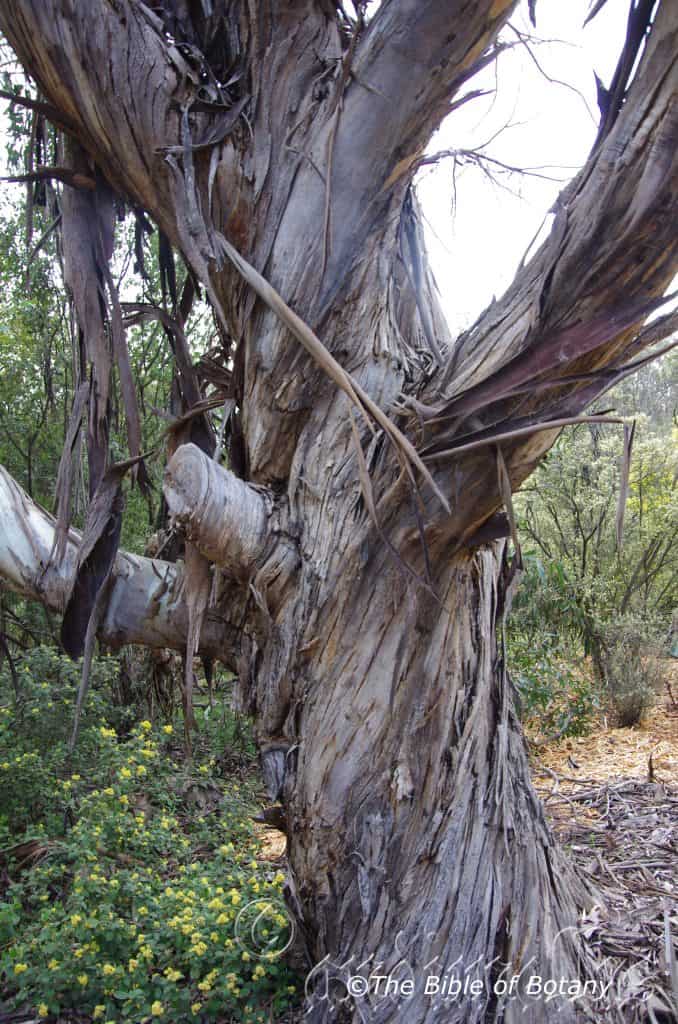

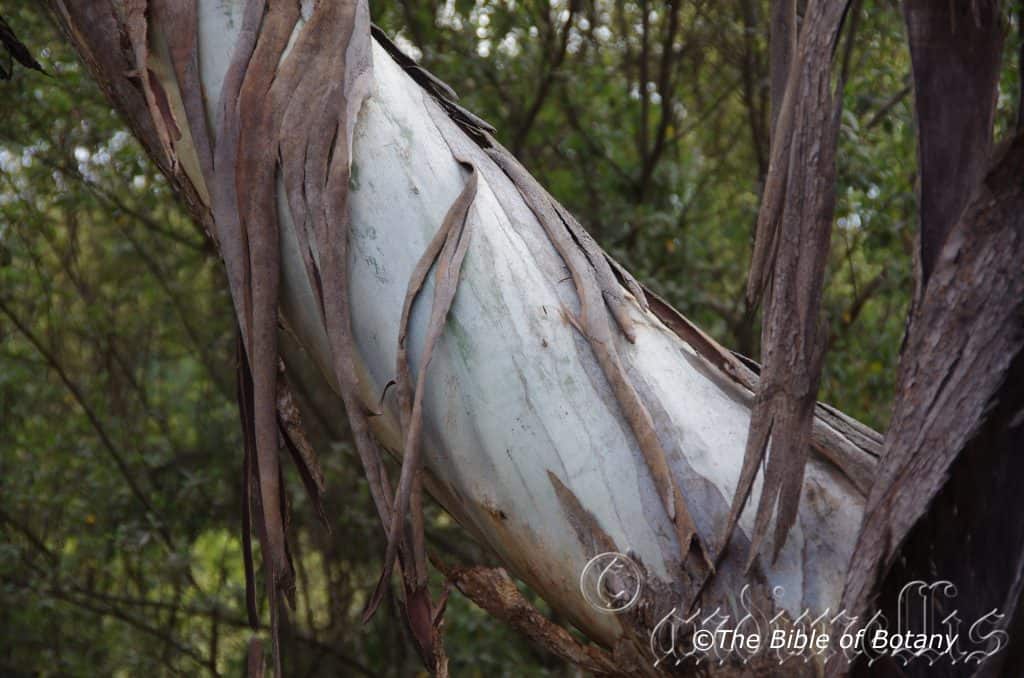
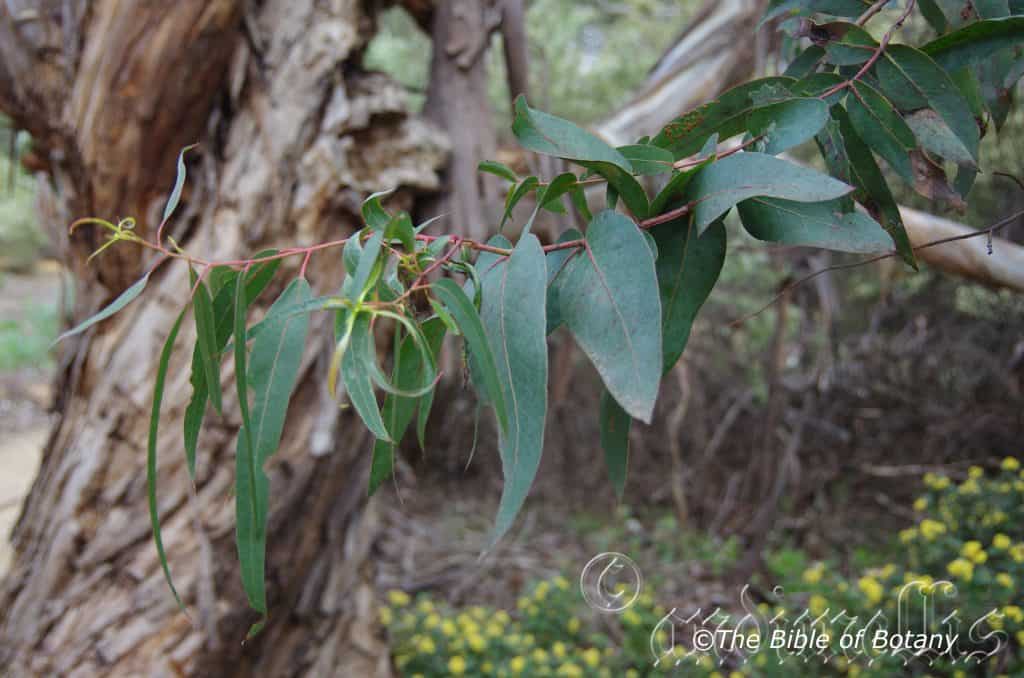
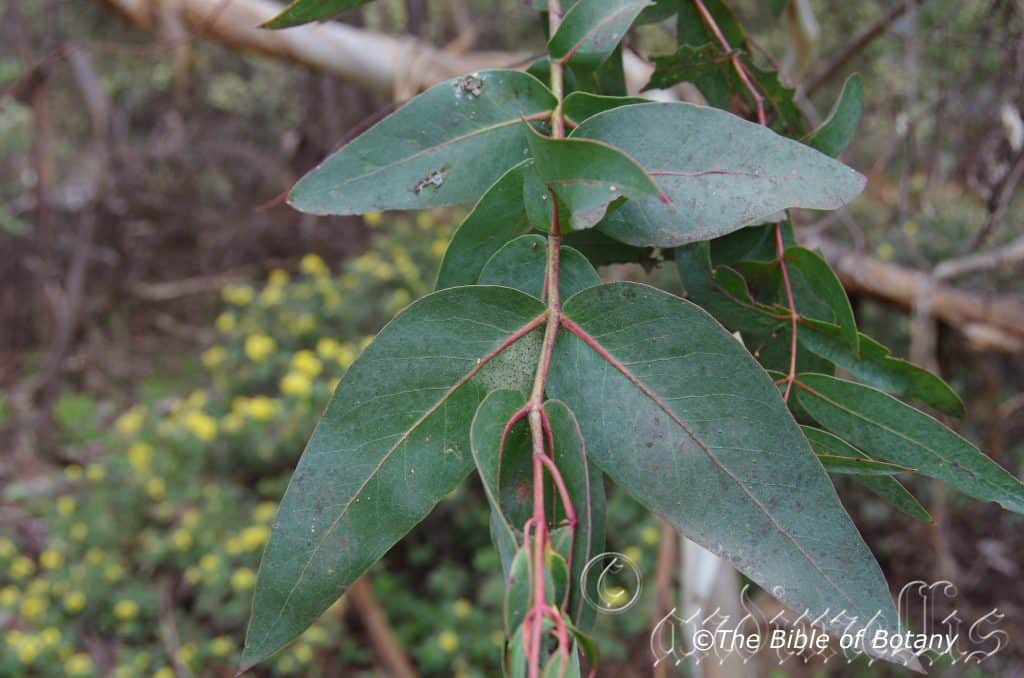
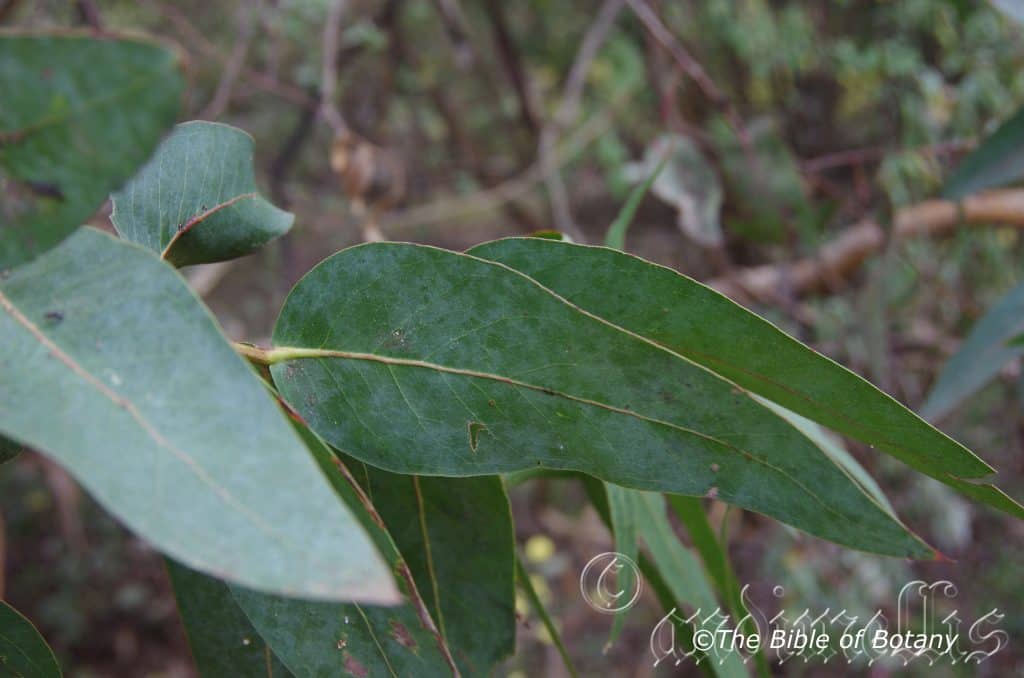
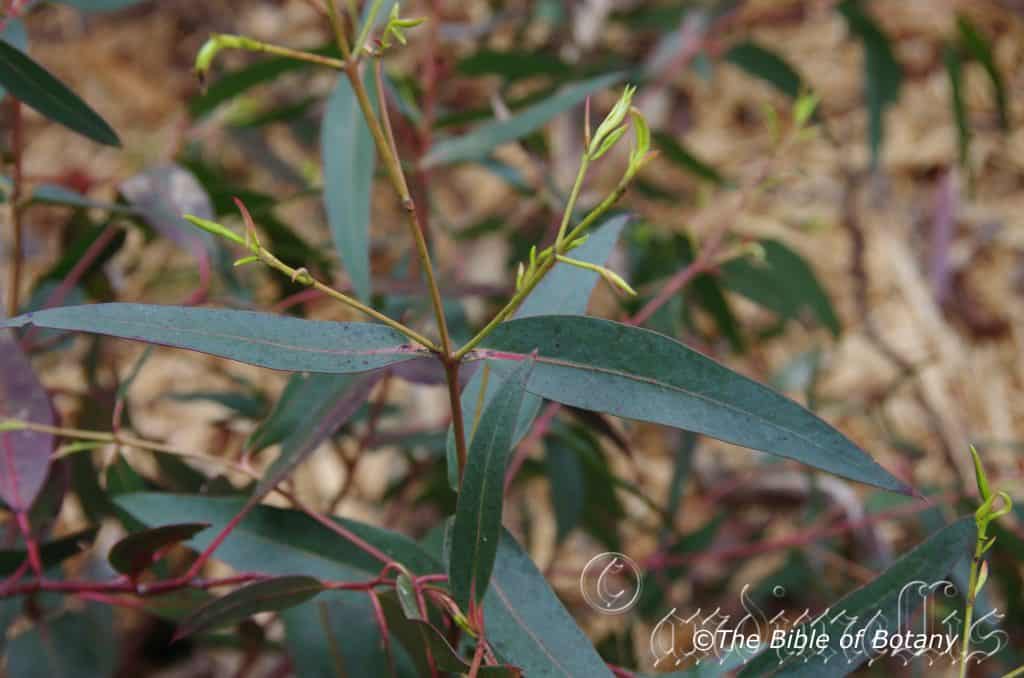
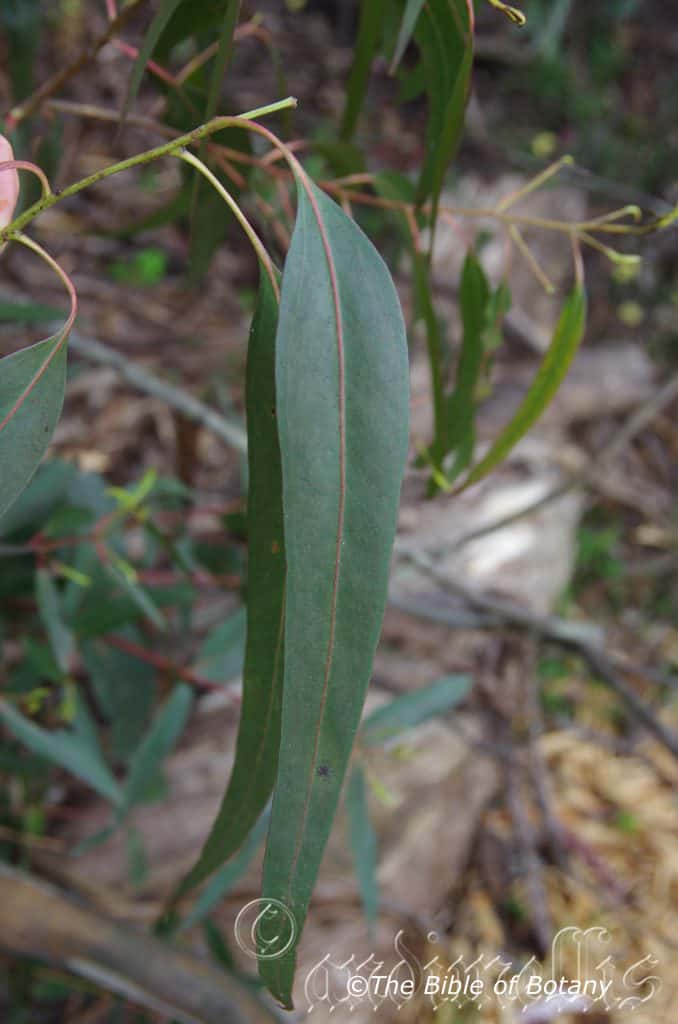
Eucalyptus nitens
Classification:
Unranked: Eudicots
Unranked: Rosids
Order: Myrtales
Family: Myrtaceae
Genus: From Eu, which is Greek a prefix for good or well and Kaluptos, which is Ancient Greek for to cover up. It refers to the stamens, which have a lid or cover over them in the bud stage prior to opening.
Specie: From Nitēns which is Latin for glittering, shinning or bright. It refers to plants, which have organs or structures, which are very bright or glossy.
Sub specie:
Common Name: Shining Gum or Silver Top Gum.
Distribution:
Eucalyptus nitens is found south from major’s Point near Ebor in north eastern New South Wales to Mount Kaye in far north eastern Victoria. It is also found from Murrindindi to Mount Useful in south eastern Victoria. It is mainly found on the higher peaks of the Great Dividing Range.
In Tasmania it is found in the far north east and south eastern districts.
https://avh.ala.org.au/occurrences/search?taxa=Eucalyptus+nitens#tab_mapView
Habitat:
Aspect / Climate:
Eucalyptus nitens prefers full sun to light dappled shade. It grows on gentle slopes and rolling mountains in moist closed forests and adjacent to temperate rainforests. The altitude ranges from 500 meters ASL to 1450 meters ASL.
The temperatures range from minus 6 degrees in August to 35 degrees in January.
The rainfall ranges from lows of 750mm to an average of 1100mm annually, however most habitats are subjected to origraphic precipitation throughout the year which keep the soils.
Soil Requirements:
Eucalyptus nitens prefers sandy loams, sandy clays, and light gravelly clay loams to medium clays. The soils are mainly derived from granites and at times brown basalts, black basalts, shale or sandstones. The soils pH ranges from 4.5pH to 6pH. It does not tolerate water logged soils however soils with year round moisture are preferred. Non saline soils to slightly saline soils are tolerated.
Height & Spread:
Wild Plants: 30m to 70m by 12m to 20m.
Characteristics:
Eucalyptus nitens has long thin, straight trunk with the branches being retained at around 60mm to 80mm of the trees height on mature trees. The trunk is typical of a smooth barked, grey gum being smooth throughout or with a 1 meter stocking of rough grey bark at the base of the bole. The bark is smooth and predominantly pale grey to greenish-grey with patches of white, cream or fawn with horizontal black scars sometimes present. The bark is persistent while the upper stems smooth bark decorticates and is shed in long ribbons. The glaucous or non-glaucous reddish-orange juvenile stems are square in cross-section and prominently winged.
The juvenile opposite, sessile leaves for many pairs, until it reaches the sapling stage are ovate to lanceolate. The concolourous, blue-green or glaucous leaves are glabrous and measure 65mm to 180mm in length by 30mm to 90mm in width. The bases are amplexicaulis, while the apexes are broad acute with an extended accumulate tip.
The disjunct alternate, concolourous to slightly discolourous adult leaves are glossy, green on the upper lamina, while the lower lamina is slightly paler. The lanceolate to falcate measure 100mm to 300mm in length by 15mm to 40mm in width. The terete petiole measures 10mm to 40mm in length. The bases taper to the petiole, while the apexes are long acuminate. The margins are entire. The reddish-orange or reddish-yellow mid vein is prominent on both laminas for most of its length. The faint lateral veins are at around 45 degrees to 35 degrees to the mid vein and moderately to densely reticulate, while the intramarginal veins are parallel to and well removed from margin. The few obscure oil glands are islands between the lateral veins and secondary veins.
The inflorescences of Eucalyptus nitens are born on axillary unbranched, peduncles that measure 5mm to 12mm in length. There are 7 sessile, oblong to ovoid individual flower buds on each umbel. The glossy to semi glossy mature buds measure 6mm to 8mm in length by 3mm to 4.5mm in diameter.
The buds are ovoid while the hypanthia are pale grass-green to mid grass-green. The hypanthia measure 4mm to 5mm by 3mm to 5mm in diameter. The pale grass-green to mid grass-green conical to elongated conical calyptras often have a rostrate apex and measure 4.5mm to 7mm in length. The scar is present. The conical, operculum is discarded prior to the inflexed or irregularly flexed filaments being released. The cuboid to oblong, versatile, dorsifixed anthers dehisce along longitudinal slits. The long or short style is slightly flared on the disc and tapers to the blunt stigma. The white flowers appear from January to March.
The fruits of Eucalyptus nitens are cylindrical, globose or ovoidal capsules. The cupular to to barrel-shaped, capsules are resinous and measure 4mm to 7mm in length by 4mm to 7mm in diameter at the widest point. The disc is descending and level with the rim and has 3 or 4 slightly exserted valves.
The black, brown or grey seeds are ovoid or flattened-ovoid are often acute at one end with a lacunose, dorsal surface that is shallowly pitted, and measure 1.5mm to 2.5mm in length while the trash is smaller and deeper in colour. The hilum is positioned ventrally on the seeds.
Wildlife:
The flowers of Eucalyptus nitens are only average nectar producers but are still are very attractive to most honeyeaters and lorikeets.
Cultivation:
Eucalyptus nitens is a tree for only the large garden or rural reforestation in temperate zones. In the cultivation good specimens will grow from 50 meters to 60 meters in height by 18 meters to 22 meters in diameter when grown in the open.
It is not drought tolerant and requires even soil moisture for best results.
This is not a popular tree amongst home gardeners because of its sheer size. The bark contrasts well with Eucalyptus specie and Corymbia with dissimilar deep brown, grey or black iron barks or brown fibrous barks.
It would be ideally suited to a large park like scene where it has the opportunity to spread out as it matures. Even here it needs to be planted in deep sandy loams so that it can develop a long tap root system to offset the chances of being blown over in strong winds.
Like all Eucalyptus specie leaf drop, dropping of small branches means continual lawn maintenance but then this means good quantities of leaf litter mulch. If the trees are clumped or used in a bush garden this is not a problem.
Propagation:
Seeds: Sow the seeds of Eucalyptus nitens into a seed raising mix following 5 to 6 weeks of storing in the vegetable crisper of the refrigerator. Cover the seeds with 2mm to 3mm of fine sand and place the trays in a warm sunny position. Keep moist but not wet. When the seedlings are 25mm to 50mm tall, prick them out and plant them into 50mm native tubes using a good organic mix.
Once the seedlings reach 200mm to 250mm in height plant them out into their permanent position. Mass plantings are best done in groups of 3 to 5 as a feature by planting them at 15 meters to 20 meters centers.
Fertilize using Seaweed, fish emulsion or organic chicken pellets soaked in water and apply the liquid on an alternate basis. Fertilize every two month until the trees are well established then every spring to ensure good growth and flowering.
Further Comments from Readers:
“Hi reader, it seems you use The Bible of Botany a lot. That’s great as we have great pleasure in bringing it to you! It’s a little awkward for us to ask, but our first aim is to purchase land approximately 1,600 hectares to link several parcels of N.P. into one at The Pinnacles NSW Australia, but we need your help. We’re not salespeople. We’re amateur botanists who have dedicated over 30 years to saving the environment in a practical way. We depend on donations to reach our goal. If you donate just $5, the price of your coffee this Sunday, We can help to keep the planet alive in a real way and continue to bring you regular updates and features on Australian plants all in one Botanical Bible. Any support is greatly appreciated. Thank you.”
In the spirit of reconciliation we acknowledge the Bundjalung, Gumbaynggirr and Yaegl and all aboriginal nations throughout Australia and their connections to land, sea and community. We pay our respect to their Elders past, present and future for the pleasures we have gained.


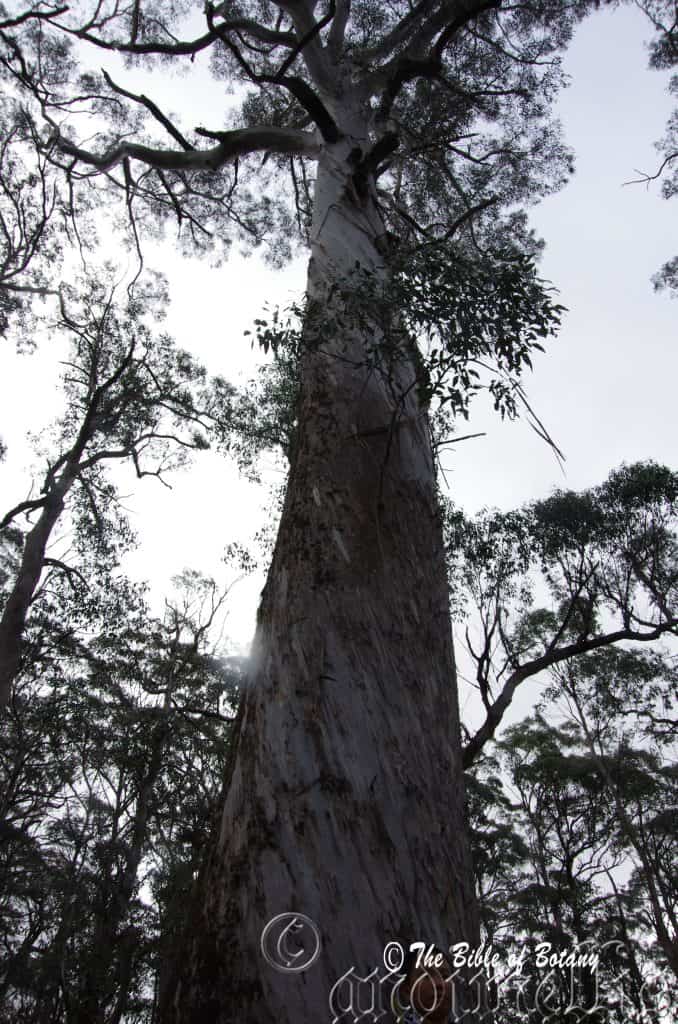

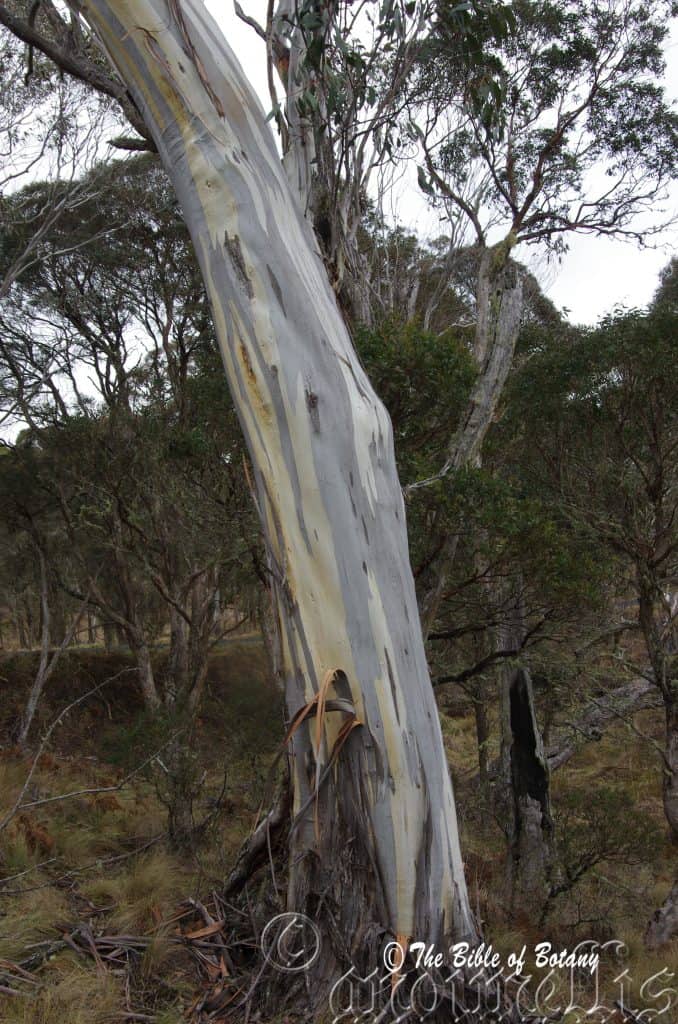
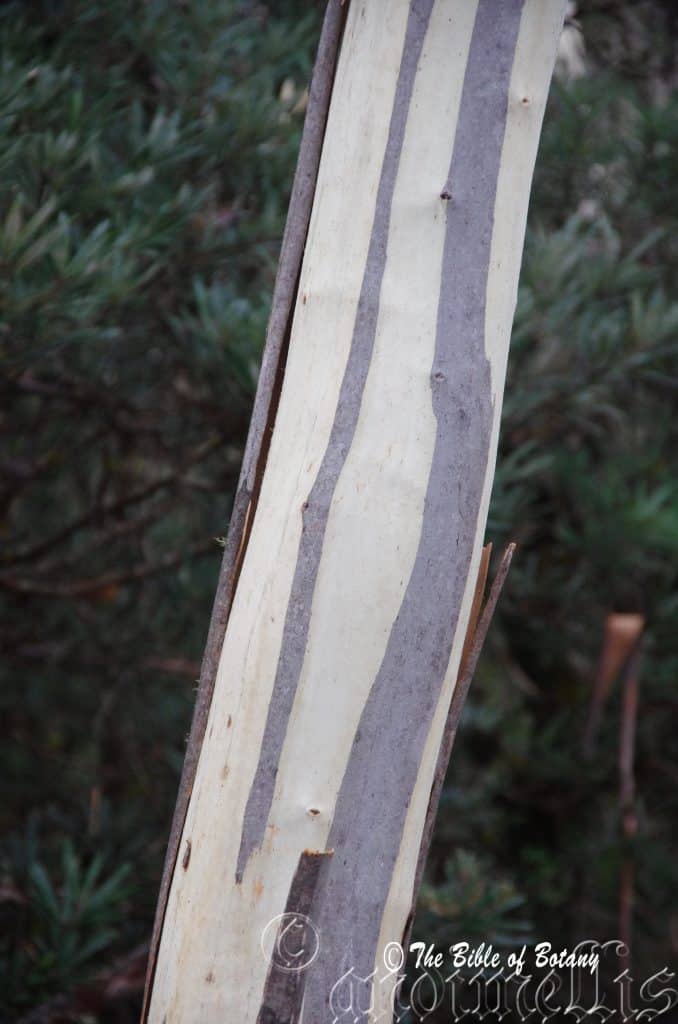

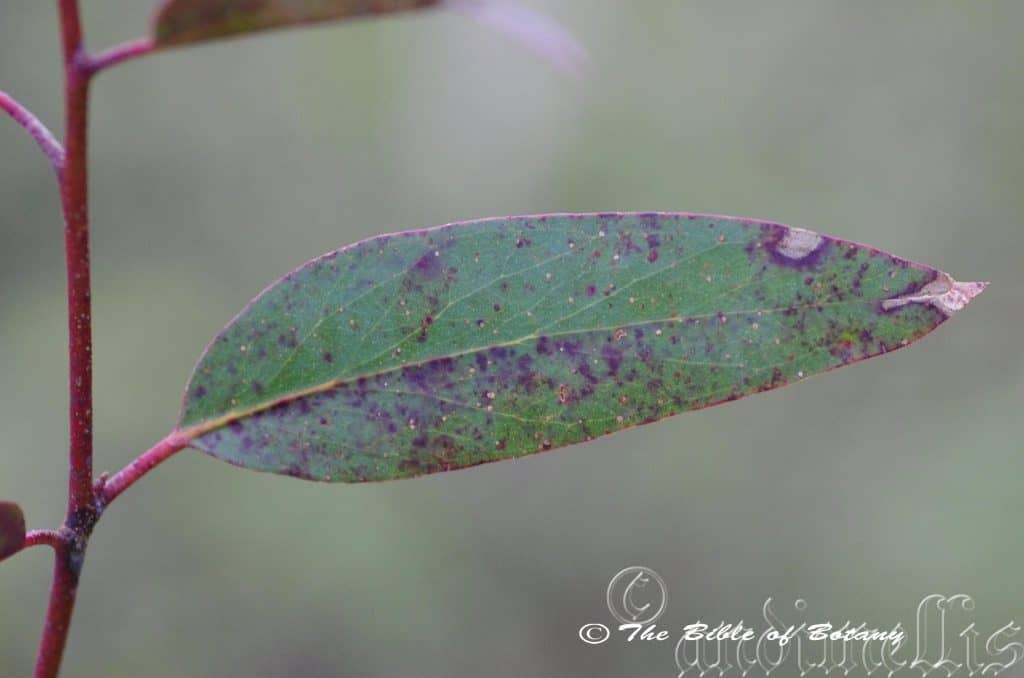
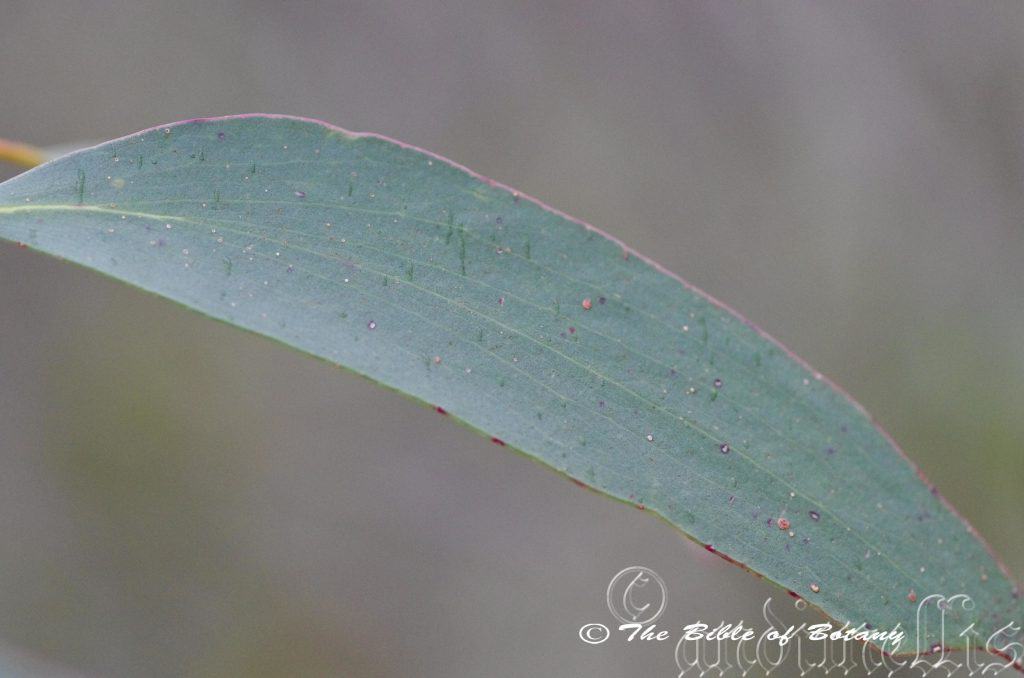
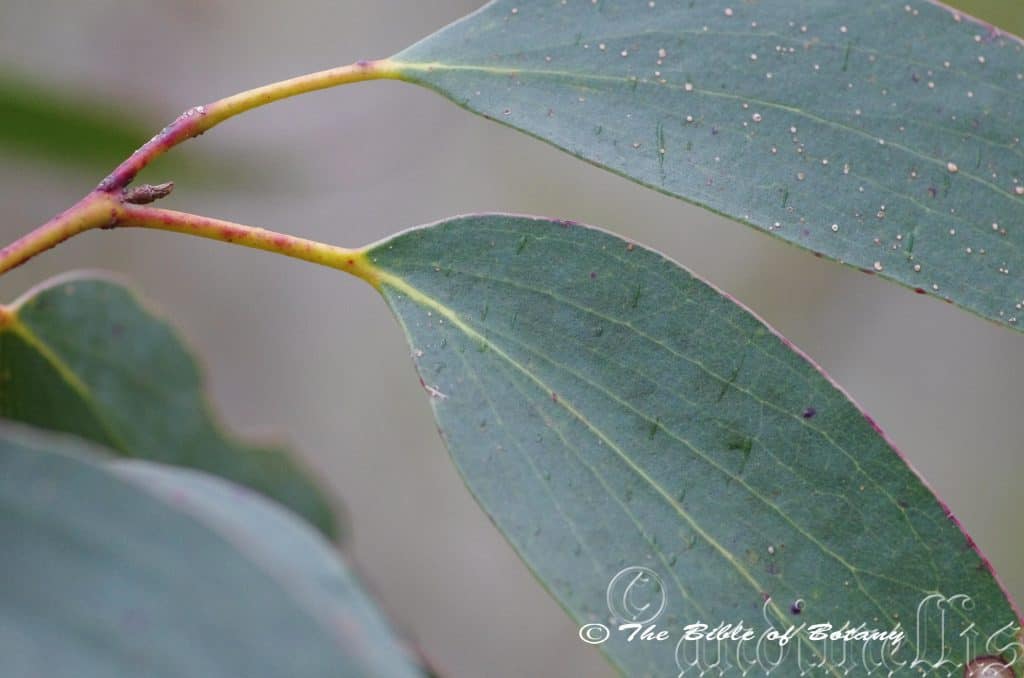

Eucalyptus nobilis
Classification:
Unranked: Eudicots
Unranked: Rosids
Order: Myrtales
Family: Myrtaceae
Genus: From Eu, which is Greek a prefix for good or well and Kaluptos, which is Ancient Greek for to cover up. It refers to the stamens, which have a lid or cover over them in the bud stage prior to opening.
Specie: rom Nobile, which is Latin for noticeable, showy or highly ranked. It refers to plants, which are much showier than other species in the genus.
Sub specie:
Common Name: Mountain Mahogany.
Distribution:
Eucalyptus nobilis is found south from north Toowoomba in south eastern Queensland to the Barrington Tops National Park and Blayney in central coastal New South Wales and west to the Warrumbungle National Park. It is mainly found on the Western Slopes and on the Great Dividing Range.
https://avh.ala.org.au/occurrences/search?taxa=Eucalyptus+nobilis#tab_mapView
Habitat:
Aspect / Climate:
Eucalyptus nobilis prefers full sun to light dappled shade. It grows on gentle slopes and rolling mountains in moist closed forests, tall grassy woodlands and adjacent to cool sub-tropical rainforests. The altitude ranges from 50 meters ASL to 1450 meters ASL.
The temperatures range minus 3 degrees in August to 38 degrees in January.
The rainfall ranges from lows of 450mm to an average of 1500mm annually.
Soil Requirements:
Eucalyptus nobilis prefers sandy loams, sandy clays, and light gravelly clay loams to medium clays. The soils are mainly derived from granites, brown basalts, black basalts, shale or sandstones. The soils pH ranges from 5pH to 6pH. It does not tolerate water logged soils however soils with year round moisture are preferred. Non saline soils to moderately saline soils are tolerated.
Height & Spread:
Wild Plants: 30m to 70m by 12m to 18m.
Characteristics:
Eucalyptus nobilis has long thin trunk with the branches being retained at around 50mm to 60mm of the trees height on mature trees. The trunk is typical of a half bark with a rough, course or small tessellated section near the base. The grey to deep grey-brown tessellated section gives way to a smooth creamy, pale grey or even pale grey-green bark to the small branches. The branchlets are pale grass-green to pale grey-green and glabrous. The lower bark is persistent while the upper smooth bark is decorticating and is shed in long ribbons.
Eucalyptus nobilis’s disjunct juvenile leaves are opposite slowly becoming alternate. The leaves are broad lanceolate. The bases are oblique and rounded while the apexes are obtuse with a mucronate to apiculate tip. The leaves measure 25mm to 40mm in length by 20mm to 30mm in width. The concolourous laminas are dull green and glabrous. The margins are entire with a few undulations. The mid vein is prominent on both laminas for about 50mm of its length on the basal half. The dull grey-green, reddish tinged petioles measure 3mm to 6mm in length.
The disjunct alternate disjunct adult leaves of Eucalyptus nobilis are very variable even on the one stem. The narrow lanceolate to lanceolate leaves measure 80mm to 200mm in length by 10mm to 30mm in width. The terete petiole measures 7mm to 24mm in length. The bases are slightly oblique, broad cuneate to cuneate and often slightly attenuate while the apexes are broad acuminate, broad acute or almost obtuse with a mucronate to apiculate tip. The concolourous laminas are mid green to grey-green, semi glossy to glossy and glabrous. The margins are entire. The mid vein is slightly prominent on both laminas for most of its length on the basal end. The lateral veins are at 30 degrees to 35 degrees to the mid vein. The lateral veins are penniveined and the intramarginal veins are parallel to and well removed from margin. The few oil glands are islands between the lateral veins and secondary veins. The terete petioles measure 7mm to 24mm in length.
The inflorescences of Eucalyptus nobilis’s are born as compound umbellasters usually containing 7 individual flowers from the terminal. The pale grass-green to pale grey-green peduncules are narrowly flattened to angular and glabrous or faintly striated while the pedicels are terete and glabrous. The peduncules measure 5mm to 10mm in length while the pedicels measure 0.5mm to 3mm in length.
The buds are ovoid while the hypanthia are pale grass-green to mid grass-green. The hypanthia measure 4mm to 5mm by 3mm to 5mm in diameter. The pale grass-green to mid grass-green conical to elongated conical calyptras often have a rostrate apex and measure 4.5mm to 7mm in length. The bud scar is absent.
The stamens are white and measure 4.5mm to 6mm in length. The anthers are cream to pastel yellow versatile and cuboidal. The stocky, pastel green style measures 3mm to 4mm in length. The disc is mid grass-green to mid lime-green. The flowers appear from October to March.
The fruits of Eucalyptus nobilis are cylindrical, globose or ovoidal gum nuts. The gum nuts are resinous and measure 5mm to 9mm in length by 5mm to 9mm in diameter at the widest point. The disc is raised with 4 exserted valves.
The tan to pale reddish-brown seeds are pyramidal or obliquely pyramidal and measure 1mm to 2.3mm in length while the trash is smaller and deeper in colour. The seeds are released in late autumn and are not held on the trees.
Wildlife:
The flowers of Eucalyptus nobilis is attractive to many honeyeaters and Lorikeets.
Cultivation:
Eucalyptus nobilis make excellent shelterbelts or shade trees for cattle, sheep and native animals in rural areas. In the cultivation good specimens grow from 20 meters to 26 meters in height by 12 meters to 16 meters in diameter when grown in the open.
It is drought tolerant once established and can cope with moderate frosts.
This is not a popular cream flowering gum amongst home gardeners because of its huge size. The bark contrasts well with other Eucalyptus specie like the red stringy bark, Eucalyptus planchoniana or the spotted gum, Corymbia maculata which have dissimilar barks. Place it near the edge of a forest or make it the center of attraction and give them room to reach their full potential. Trees planted in full view make good bird watching trees for the nectar eating birds and insect eating birds alike. It is rather messy when the lorikeets clamber over the outer foliage.
It would be ideally suited to large park like scenes where it has the opportunity to spread out as it matures.
Like all Eucalyptus specie leaf drop, dropping of small branches means continual lawn maintenance but then this means good quantities of leaf litter mulch. If the trees are clumped or used in a bush garden this is not a problem.
Propagation:
Seeds: Sow Eucalyptus nobilis seeds into a seed raising mix. Cover the seeds with 2mm to 3mm of fine sand and place the trays in a warm sunny position. Keep moist but not wet. When the seedlings are 25mm to 50mm tall, prick them out and plant them into 50mm native tubes using a good organic mix.
Once the seedlings reach 200mm to 250mm in height plant them out into their permanent position. Mass plantings are best done in groups of 3 to 5 as a feature by planting them at 15 meters to 20 meters centers.
Fertilize using Seaweed, fish emulsion or organic chicken pellets soaked in water and apply the liquid on an alternate basis. Fertilize every two month until the trees are well established then every spring to ensure good growth and flowering.
Further Comments from Readers:
“Hi reader, it seems you use The Bible of Botany a lot. That’s great as we have great pleasure in bringing it to you! It’s a little awkward for us to ask, but our first aim is to purchase land approximately 1,600 hectares to link several parcels of N.P. into one at The Pinnacles NSW Australia, but we need your help. We’re not salespeople. We’re amateur botanists who have dedicated over 30 years to saving the environment in a practical way. We depend on donations to reach our goal. If you donate just $5, the price of your coffee this Sunday, We can help to keep the planet alive in a real way and continue to bring you regular updates and features on Australian plants all in one Botanical Bible. Any support is greatly appreciated. Thank you.”
In the spirit of reconciliation we acknowledge the Bundjalung, Gumbaynggirr and Yaegl and all aboriginal nations throughout Australia and their connections to land, sea and community. We pay our respect to their Elders past, present and future for the pleasures we have gained.
Eucalyptus notabilis
Classification:
Unranked: Eudicots
Unranked: Rosids
Order: Myrtales
Family: Myrtaceae
Genus: From Eu, which is Greek a prefix for good or well and Kaluptos, which is Ancient Greek for to cover up. It refers to the stamens, which have a lid or cover over them in the bud stage prior to opening.
Specie: From Notābilis, which is Latin for noteworthy. It refers to plants, which are rather beautiful and worthy of taking note of.
Sub specie:
Common Name: Mountain Mahogany.
Distribution:
Eucalyptus notabilis is found south from the Border Ranges National Park in far south eastern Queensland to Bargo in central coastal New South Wales. It is mainly found on and east of the Great Dividing Range.
https://avh.ala.org.au/occurrences/search?taxa=Eucalyptus+notabilis#tab_mapView
Habitat Aspect Climate:
Eucalyptus notabilis prefers full sun to light dappled shade. It grows in dry schlerophyll forests or moist schlerophyll forests on gentle slopes to moderate slopes. The altitude ranges from 200 meters ASL to 1100 meters ASL.
The temperatures range 10 degrees in July to 40 degrees in January.
The rainfall ranges from lows of 960mm to an average of 1650mm annually.
Soil Requirements:
Eucalyptus notabilis prefers better quality fertile, sandy loams, sandy clays or light gravelly clays which are moisture retentive. The soils pH ranges from 5pH to 6.5pH. It does not tolerate water logged soils. Non saline soils to moderately saline soils are tolerated.
Height & Spread:
Wild Plants: 25m to 50m by 10m to 20m.
Characteristics:
Eucalyptus notabilis has long thin trunk with the branches being retained at around 45mm to 55mm of the trees height on mature trees. The trunk is typical stringy bark with a rough, course grey to reddish-brown shallowly furrowed bark to the branchlets. The branches and branchlets are twisted to verging on gnarled. The branchlets are smooth pale off white to mid green and glabrous. The bark is persistent throughout the tree.
Eucalyptus notabilis’s disjunct juvenile leaves are ovate to broad lanceolate slowly becoming alternate. The bases are oblique to and rounded while the apexes are obtuse with a mucronate. The leaves measure 45mm to 70mm in length by 20mm to 40mm in width. The concolourous laminas are deep green, semi glossy to glossy and glabrous. The margins are entire. The mid vein is prominent on both laminas for its entire length. The dull deep green petioles measure 5mm to 10mm in length.
The disjunct alternate, disjunct adult leaves are lanceolate and straight to slightly falcate even on the same branchlets. The leaves measure 100mm to 160mm in length by 17mm to 35mm in width. The terete petioles measure 12mm to 24mm in length. The bases are oblique to strongly oblique and broad rounded-cuneate to rounded while the apexes are long tapering acute or bluntly acute. The discolourous laminas are deep green semi glossy to glossy and glabrous on the upper laminas while the lower laminas are paler. The margins are entire and slightly thickened. The mid vein is strongly prominent on the lower lamina and prominent on the upper lamina. The lateral veins are penniveined are at 30 degrees to 35 degrees to the mid vein. The few oil glands are islands between the lateral veins and secondary veins.
The inflorescences of Eucalyptus notabilis’s are born as compound umbellasters usually containing 7 to 11 flowers from the terminal. The pale yellow-green to deep green peduncules are flattened or angular and glabrous while the pedicels are terete and glabrous. The peduncules measure 6mm to 16mm in length while the pedicels measure 0.5mm to 6mm in length.
The buds are ovoidal, clavate conical and measure 9mm to 15mm overall. The hypanthium is pale grass-green to mid green. The hypanthium measure 4mm to 7mm by 4mm to 6mm in diameter. The grass-green to mid green conical calyptras have a small rostrate apex and measure 5mm to 8mm in length. The bud scar is absent.
The regularly flexed stamens are white and measure 5mm to 6mm in length. The anthers are white and cuboidal.
The stocky, pastel green style measures 4mm to 5mm in length. The disc is deep green flat, level or slightly exserted while the valves are exserted in the center of the disc. The flowers appear from October to late January.
The fruits of Eucalyptus notabilis are conical or hemispherical gum nuts which are faintly ribbed. The gum nuts are glabrous and measure 6mm to 9mm in length by 6mm to 11mm in diameter at the widest point. The disc is flat and level to slightly raised while the 4 valves are exserted
The tan to pale reddish-brown seeds are pyramidal or obliquely pyramidal and measure 1mm to 2.3mm in length while the trash is smaller and deeper in colour.
Wildlife:
The flowers Eucalyptus notabilis’ are medium nectar producers but are still are very attractive to most honeyeaters, lorikeets, flying foxes, possums and many insects. Myriads of insects and butterflies also frequent the trees attracting smaller insectivorous birds especially the likes of Thornbills (Acanthiza pusilla diemenensis, Acanthiza reguloides, Acanthiza uropygialis and Acanthiza chrysorrhoa.)
The hairy, brown gum snout moth (Entometa fervens) has been observed feeding on the leaves. This is a very variable species which indicates that more than one specie or subspecies maybe involved.
The Gum Leaf Katydid, Torbia viridissima is a common predator of most Eucalyptus and we have observed its eggs and nymphs feeding on this Eucalyptus.
Cultivation:
Eucalyptus notabilis make excellent shelterbelts or shade trees for cattle, sheep and native animals in higher altitude rural areas on better quality loams. In the cultivation good specimens grow from 20 to 25 meters in height by 18 meters to 25 meters in diameter when grown in the open with a good rounded canopy. The branches will start to spread from about 8 meters from the ground.
It is drought tolerant once established and can cope with heavy frosts and light snows.
This is not a popular white flowering gum amongst home gardeners but should be considered where good shaped trees are sought. The trees make typical but strong contrasting silhouettes against the house or garden. The bark contrasts well with other Eucalyptus specie, Corymbia specie with dissimilar trunks to high light the trunks and barks. Place it near the edge of a forest or make them the center of attraction and give them room to reach their full potential. Trees planted in full view make good bird watching trees for the nectar eating birds and insect eating birds alike. It is rather messy when the lorikeets clamber over the outer foliage.
It would be ideally suited to small to large park like scenes where they have the opportunity to spread out as they mature.
Like all Eucalyptus specie leaf drop, dropping of small branches means continual lawn maintenance but then this means good quantities of leaf litter mulch. If the trees are clumped or used in a bush garden this is not a problem.
Propagation:
Seeds: Sow Eucalyptus notabilis seeds into a seed raising mix. Cover the seeds with 2mm to 3mm of fine sand and place the trays in a warm sunny position. Keep moist but not wet. When the seedlings are 25mm to 50mm tall, prick them out and plant them into 50mm native tubes using a good organic mix.
Once the seedlings reach 200mm to 250mm in height plant them out into their permanent position. Mass plantings are best done in groups of 3 to 5 as a feature by planting them at 15 meters to 20 meters centers.
Fertilize using Seaweed, fish emulsion or organic chicken pellets soaked in water and apply the liquid on an alternate basis. Fertilize every two month until the trees are well established then every spring to ensure good growth and flowering.
Further Comments from Readers:
“Hi reader, it seems you use The Bible of Botany a lot. That’s great as we have great pleasure in bringing it to you! It’s a little awkward for us to ask, but our first aim is to purchase land approximately 1,600 hectares to link several parcels of N.P. into one at The Pinnacles NSW Australia, but we need your help. We’re not salespeople. We’re amateur botanists who have dedicated over 30 years to saving the environment in a practical way. We depend on donations to reach our goal. If you donate just $5, the price of your coffee this Sunday, We can help to keep the planet alive in a real way and continue to bring you regular updates and features on Australian plants all in one Botanical Bible. Any support is greatly appreciated. Thank you.”
In the spirit of reconciliation we acknowledge the Bundjalung, Gumbaynggirr and Yaegl and all aboriginal nations throughout Australia and their connections to land, sea and community. We pay our respect to their Elders past, present and future for the pleasures we have gained.
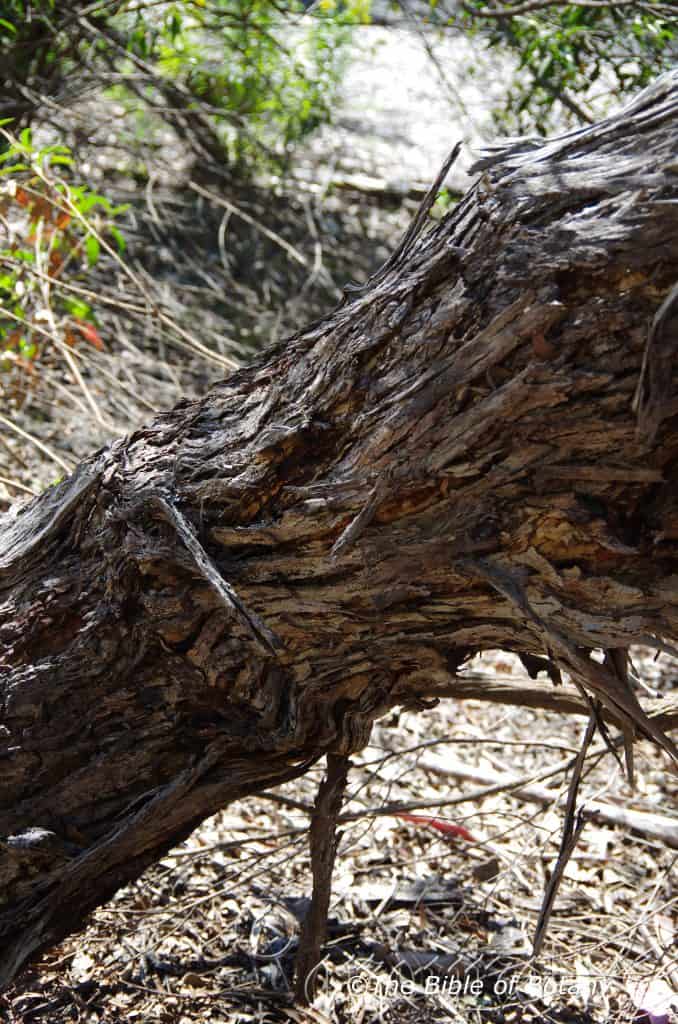

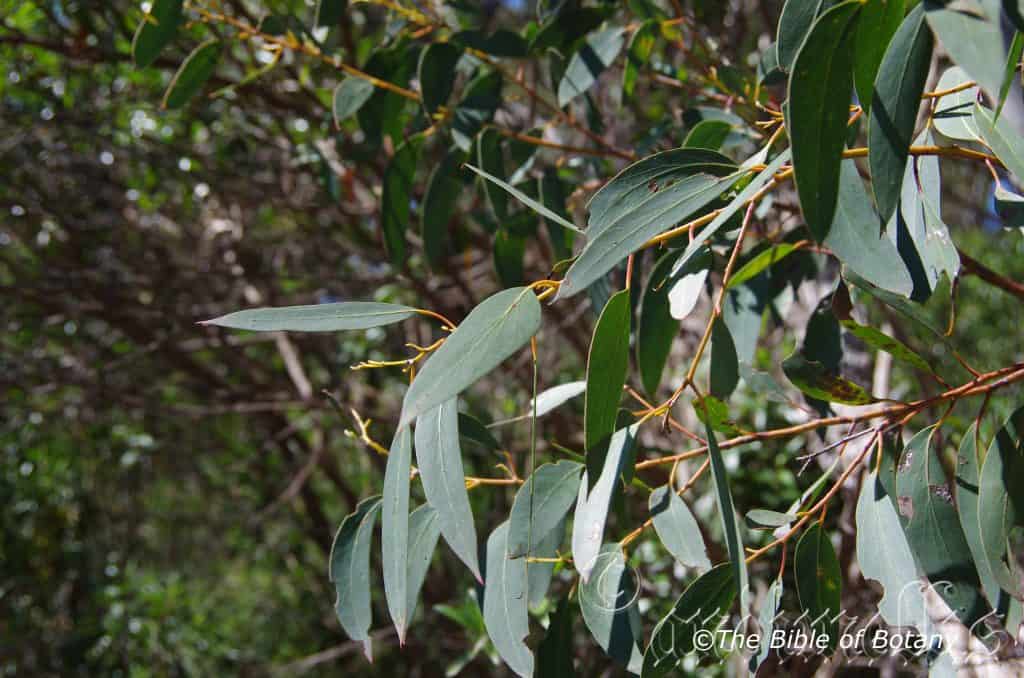

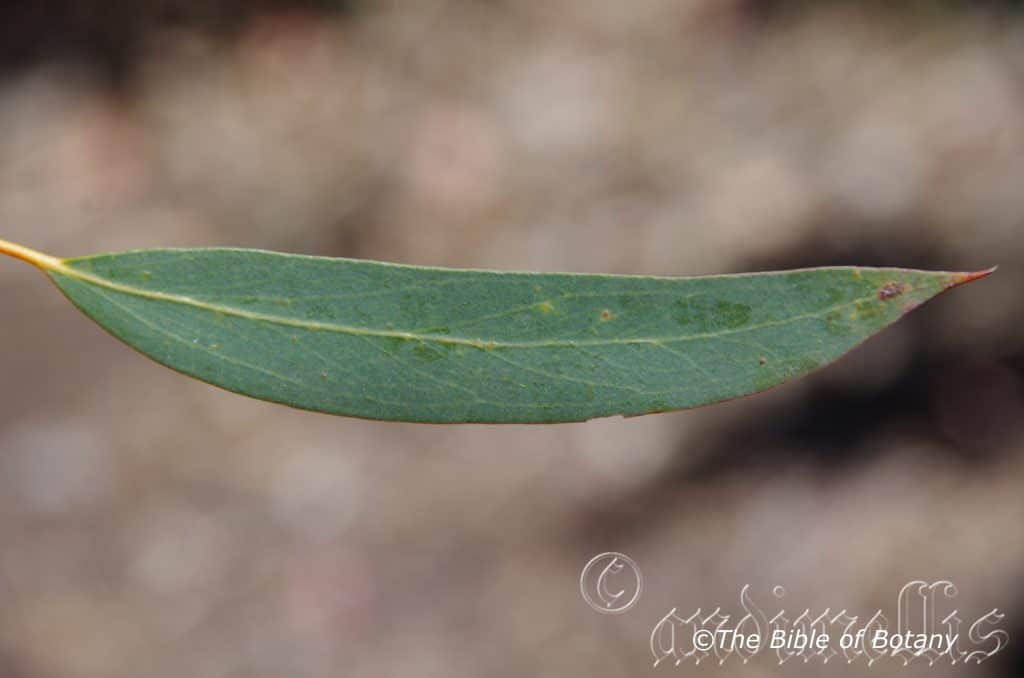
Eucalyptus obliqua
Classification:
Unranked: Eudicots
Unranked: Rosids
Order: Myrtales
Family: Myrtaceae
Genus: From Eu, which is Greek a prefix for good or well and Kaluptos, which is Ancient Greek for to cover up. It refers to the stamens, which have a lid or cover over them in the bud stage prior to opening.
Specie: From Obliquus, which is Latin for a slant or to slant. It refers to the base of leaves, which are at different distances from the stem along the stem. That is to have the two sides of the same leaf near the base at different positions.
Sub specie:
Common Name: Messmate Stringy Bark.
Distribution:
Eucalyptus obliqua is found south from Warwick in far south eastern Queensland through eastern New South Wales and Victoria to Kangaroo Island in southern South Australia. It is mainly found on and east of the Great Dividing Range in the north until it begins its movement west to South Australia in Victoria.
It is also found on Deal Island and Crawfish Creek Circular Head in Bass Straight and most of Tasmania. Though no sightings have been found in south eastern Tasmania it is highly likely the trees would be found in this area as topography, climate, rainfall and soils are all consistently within its bounds as are latitude and altitude.
https://avh.ala.org.au/occurrences/search?taxa=Eucalyptus+obliqua#tab_mapView
Habitat Aspect Climate:
Eucalyptus obliqua prefers full sun to light dappled shade. It grows on mountains, slopes, valleys, drainage lines and moist gallery forests in moist to wet schlerophyll forests. It is found where cool to cold pockets of air accumulate in higher rainfall areas. The altitude ranges from 20 meters ASL to 1450 meters ASL.
The temperatures range from minus 5 degrees in August to 35 degrees in January.
The rainfall ranges from lows of 900mm to an average of 1800mm annually. Orographic precipitation and along drainage channels are as important as actual rainfall especially in the lower rainfall areas.
Soil Requirements:
Eucalyptus obliqua prefers better quality deep sandy loams, sandy clays, and light gravelly clay loams to medium clays. The soils are usually derived from decomposed brown basalt, black basalt, serpentines and granites. The soils pH ranges from 5pH to 6pH. It does not tolerate water logged soils however constant soil moisture is available throughout the year. Non saline soils to moderately saline soils are tolerated.
Height & Spread:
Wild Plants: 30m to 90m by 15m to 25m.
Characteristics:
Eucalyptus obliqua has long thin trunk with the branches being retained at around 45mm to 55mm of the trees height on mature trees. The trunk is typical stringy bark with a rough, short, grey, reddish-brown shallowly and sparsely furrowed bark to the medium branches. The branches and branchlets are smooth pale grey to greyish–green and glabrous with the apexes being reddish green or mid grass-green and glabrous. The bark on the trunk is persistent while the glabrous upper bark is decorticating in long ribbons.
Eucalyptus obliqua’s juvenile leaves are initially opposite and sub sessile before becoming disjunct and alternate. The juvenile leaves are ovate to elliptical and straight. The bases are oblique and rounded while the apexes are long acuminate to long acute. The leaves measure 30mm to 60mm in length by 30mm to 50mm in width. The concolourous laminas are mid green, semi glossy and glabrous. The margins are entire. The mid vein is prominent on both laminas for its entire length. The dull pale red petioles measure 4mm to 6mm in length.
The disjunct alternate, disjunct adult leaves are lanceolate to broad lanceolate and falcate even on the same branchlets. They measure 80mm to 220mm in length by 17mm to 60mm in width. The terete yellow-green petioles measure 7mm to 34mm in length. The oblique to strongly oblique bases are rounded-cuneate while the apexes are acute. The concolourous laminas are deep green semi glossy to glossy and glabrous. The laminas are flat. The margins are entire. The mid vein is prominent on both laminas though it is more prominent on the lower lamina. The lateral veins are penniveined are at about 60 degrees to 65 degrees to the mid vein. The intramarginal vein is well removed from the margin. The oil glands are islands between the lateral veins and secondary veins and are obscure.
The inflorescences of Eucalyptus obliqua’s are born as compound umbellasters usually containing 9 to 11 individual flowers but can contain up to 15 flowers from the terminal. The pale yellow-green to grass-green peduncules are terete or angular and glabrous while the pedicels are terete and glabrous. The peduncules measure 4mm to 15mm in length while the pedicels measure 1mm to 6mm in length.
The buds are clavate to ovoidal while the hypanthia are pale yellow-green to pale blue-green. The hypanthium measure 4mm to 7mm by 3mm to 5mm in diameter. The pale yellow-green obtuse calyptras have an obtuse apex and measure 2mm to 2.5mm in length. The bud scar is absent.
The irregularly flexed filaments are white and measure 3mm to 6mm in length. The white to pastel yellow versatile, reniform to cordate anthers are dorsifixed and dehisce through confluent slits.
The stocky, pastel green style measures 4mm to 5mm in length while the stigma tapers to a point. The disc is mid lime-green to deep green. The flowers appear from April to May.
The fruits of Eucalyptus obliqua are ovoidal to urceolate gum nuts. The gum nuts are glabrous and measure 6mm to 12mm in length by 5mm to 11mm in diameter at the widest point. The disc is depressed while the 4 valves are usually enclosed or rarely level. The pedicels measure 1mm to 5mm in length.
The deep reddish-brown seeds are long pyramidal or obliquely pyramidal and measure 1.5mm to 3mm in length while the trash is smaller and deeper in colour. The hilum is terminally positioned while the surfaces are glabrous.
Wildlife:
The flowers of Eucalyptus obliqua are medium nectar producers but are still are very attractive to most honeyeaters, lorikeets, flying foxes, possums and many insects. Myriads of insects and butterflies also frequent the trees attracting smaller insectivorous birds especially the likes of Thornbills (Acanthiza pusilla diemenensis, Acanthiza reguloides, Acanthiza uropygialis and Acanthiza chrysorrhoa.)
The hairy, brown gum snout moth (Entometa fervens) feeds on the leaves. This is a very variable species which indicates that more than one specie or subspecies is involved.
The Gum Leaf Katydid (Torbia viridissima) is a common predator of most Eucalyptus and its eggs and nymphs feed on this Eucalyptus.
Cultivation:
Eucalyptus obliqua make excellent tall elegant park trees. In cultivation good specimens grow from 35 to 50 meters in height by 20 meters to 25 meters in diameter when grown in the open with a good rounded canopy. The branches will start to spread from about 8 meters from the ground.
It is drought tolerant once established and can cope with heavy frosts and light snows.
This is not a popular white flowering gum amongst home gardeners because of its huge size. It needs a deep open soil to hold and support its structure and size.
The trees make typical but strong contrasting silhouettes against the house or garden. The bark contrasts well with other Eucalyptus specie, Corymbia specie with dissimilar trunks to high light the trunks and barks. Place it near the edge of a forest or make them the center of attraction and give them room to reach their full potential. Trees planted in full view make good bird watching trees for the nectar eating birds and insect eating birds alike. It is rather messy when the lorikeets clamber over the outer foliage.
It would be ideally suited to small to large park like scenes where it has the opportunity to spread out as its mature.
Like all Eucalyptus specie leaf drop, dropping of small branches means continual lawn maintenance but then this means good quantities of leaf litter mulch. If the trees are clumped or used in a bush garden this is not a problem.
Propagation:
Seeds: Sow Eucalyptus obliqua seeds into a seed raising mix. Cover the seeds with 2mm to 3mm of fine sand and place the trays in a warm sunny position. Keep moist but not wet. When the seedlings are 25mm to 50mm tall, prick them out and plant them into 50mm native tubes using a good organic mix.
Once the seedlings reach 200mm to 250mm in height plant them out into their permanent position. Mass plantings are best done in groups of 3 to 5 as a feature by planting them at 15 meters to 20 meters centers.
Fertilize using Seaweed, fish emulsion or organic chicken pellets soaked in water and apply the liquid on an alternate basis. Fertilize every two month until the trees are well established then every spring to ensure good growth and flowering.
Further Comments from Readers:
“Hi reader, it seems you use The Bible of Botany a lot. That’s great as we have great pleasure in bringing it to you! It’s a little awkward for us to ask, but our first aim is to purchase land approximately 1,600 hectares to link several parcels of N.P. into one at The Pinnacles NSW Australia, but we need your help. We’re not salespeople. We’re amateur botanists who have dedicated over 30 years to saving the environment in a practical way. We depend on donations to reach our goal. If you donate just $5, the price of your coffee this Sunday, We can help to keep the planet alive in a real way and continue to bring you regular updates and features on Australian plants all in one Botanical Bible. Any support is greatly appreciated. Thank you.”
In the spirit of reconciliation we acknowledge the Bundjalung, Gumbaynggirr and Yaegl and all aboriginal nations throughout Australia and their connections to land, sea and community. We pay our respect to their Elders past, present and future for the pleasures we have gained.
Eucalyptus ophitica
Classification:
Unranked: Eudicots
Unranked: Rosids
Order: Myrtales
Family: Myrtaceae
Genus: From Eu, which is Greek a prefix for good or well and Kaluptos, which is Ancient Greek for to cover up. It refers to the stamens, which have a lid or cover over them in the bud stage prior to opening.
Specie: From Ophī́s/Ophī́tēs, which is Ancient Greek for serpentine stones. It refers to plants, which prefer to grow on serpentine soils/clays to grow in.
Sub specie:
Common Name: Silver Leaf Iron Bark.
Distribution:
Eucalyptus ophitica is locally common however it is restricted to small pockets in 2 disjunct populations in the southern section of the Torringtong State Forest and along the Clarence Way 15 to 50 kilometres north of Copmanhurst in northern New South Wales. It is found east of the Great Dividing Range.
https://avh.ala.org.au/occurrences/search?taxa=Eucalyptus+ophitica#tab_mapView
Habitat Aspect Climate:
Eucalyptus ophitica prefers full sun to light dappled shade. It grows on undulating hills and river flats. The altitude ranges from 20 meters ASL to 80 meters ASL.
The temperatures range 0 degrees in July to 38 degrees in January.
The rainfall ranges from lows of 1000mm to an average of 1450mm annually.
Soil Requirements:
Eucalyptus ophitica prefers orange to red medium sandy clays overlying serpentine. The soils pH ranges from 5.5pH to 6pH however if the roots were to extend down to the serpentine the soils may have a transitional zone before rising to 7.5pH to 8pH depending on the type, volume and quality of the Ca(OH) and/or Magnesium present. High iron serpentines are unstable and the acidity can vary greatly whereas the alkaloid serpentines are more stable. It does not tolerate water logged soils however the soils usually retain even moisture throughout the year. Non saline soils to moderately saline soils are tolerated.
Height & Spread:
Wild Plants: 8m to 15m by 4m to 10m.
Characteristics:
Eucalyptus ophitica is a long trunked tree with a bole to over half its height. The deep grey to black persistent bark is deeply furrowed, hard, and typical of iron bark gums and often with orange brown furrows. The larger branches are deep grey turning reddish-brown, glabrous and glossy as they approach the smaller branchlets. The bark is persistent on the upper section and decorticating on the lower section.
The disjunct juvenile leaves of Eucalyptus ophitica’s are opposite, sessile and dull grey-green to grey-blue glaucous and glabrous. The elliptical to ovate or orbicular leaves are glaucous and measure 30mm to 60mm in length by 30mm to 40mm in width.
The alternate disjunct adult leaves are lanceolate to narrow lanceolate and falcate. They measure 70mm to 150mm in length and 13mm to 32mm in width. The petioles are terete to slightly compressed and measure 8mm to 12mm in length. The bases are cuneate while the apexes are acuminate to long tapering acute or falcate-acute. The concolourous leaves are coriaceous, dull, and grey-green to mid green. The margins are entire with the mid vein being prominent on the lower lamina and slightly prominent on the upper lamina at least on the basal half.
Inflorescences of Eucalyptus ophitica are born as compound umbellasters containing 3 to 7 individual flowers from near the terminals or terminal leaf axils. The terete peduncules measure 2mm to 12mm in length while terete or angular pedicels measure 4mm to 7mm.
The buds are clavate with a conical to elevated acute calyptra, which are green tinged yellow and semi glossy. The hypanthia measure 5mm to 8mm in length by 4mm to 5mm in diameter. The conical calyptras measure 4mm to 5mm in length. The bud scar is present.
The white stamens are irregularly flexed while the white to pastel yellow anthers measure 6mm to 9mm in length. All the stamens are fertile with the anthers being basifixed and dehisce longitudinally. The creamy green style measures 5mm to 8mm in length. The flowers appear from September August to January.
The fruits of Eucalyptus ophitica are hemispherical or conical especially when the pedicels swell as they approach the fruits of the gum nuts. The gum nuts measure 5.5mm to 8mm in length by 5.5mm to 8mm in diameter at the hypanthia. The discs are flat and inserted while the 4 valves are level or slightly exerted.
The flattened seeds are ovoidal, flattened and measure 2mm to 2.5mm in length by 1.2mm to 1.6mm in width.
Wildlife:
The flowers Eucalyptus ophitica are medium nectar producers and are very attractive to most honeyeaters and lorikeets, native bees and beetles.
Cultivation:
Eucalyptus ophitica is a smaller gum tree which is very suitable for medium size gardens where a small iron bark Eucalyptus is wanted to create a small parkland scene in warm temperate cool tropical and sub-tropical zones. It is ideal on sandy loams, sandy alluvial flats or heavier clays that are well drained. It is fast growing so give good effects at an early age. In the garden good specimens grow from 9 meters to 12 meters in height by 9 meters to 12 meters in diameter with a rather bushy crown. It is drought resistant and resistant to mild to heavy frosts once established.
Like all Eucalyptus specie leaf drop, dropping of small branches means continual lawn maintenance but then this means good quantities of natural leaf litter mulch.
Propagation:
Seeds: Sow Eucalyptus ophitica seed directly into a seed raising mix. Cover the seeds with 2mm to 3mm of fine sand and place the trays in a warm sunny position. Keep moist but not wet to avoid damping off. When the seedlings are 25mm to 50mm tall, prick them out and plant them into 50mm native tubes using a good organic mix.
Fertilize using Seaweed, fish emulsion or organic chicken pellets soaked in water and apply the liquid on an alternate basis. Fertilize every two months.
Once the seedlings reach 200mm to 250mm in height plant them out into their permanent position. Mass plantings are best achieved by planting them from 6 meter to 8 meter centers to create a small forest or 15 meters to 20 meters to create that park scene.
Further Comments from Readers:
“Hi reader, it seems you use The Bible of Botany a lot. That’s great as we have great pleasure in bringing it to you! It’s a little awkward for us to ask, but our first aim is to purchase land approximately 1,600 hectares to link several parcels of N.P. into one at The Pinnacles NSW Australia, but we need your help. We’re not salespeople. We’re amateur botanists who have dedicated over 30 years to saving the environment in a practical way. We depend on donations to reach our goal. If you donate just $5, the price of your coffee this Sunday, We can help to keep the planet alive in a real way and continue to bring you regular updates and features on Australian plants all in one Botanical Bible. Any support is greatly appreciated. Thank you.”
In the spirit of reconciliation we acknowledge the Bundjalung, Gumbaynggirr and Yaegl and all aboriginal nations throughout Australia and their connections to land, sea and community. We pay our respect to their Elders past, present and future for the pleasures we have gained.
Eucalyptus oreades
Classification:
Unranked: Eudicots
Unranked: Rosids
Order: Myrtales
Family: Myrtaceae
Genus: From Eu, which is Greek a prefix for good or well and Kaluptos, which is Ancient Greek for to cover up. It refers to the stamens, which have a lid or cover over them in the bud stage prior to opening.
Specie: From Oreias/Oreios, which is Latin for of the mountains. It refers to plants, which prefer mountainous habitats.
Sub specie:
Common Name: Blue Mountains Ash.
Distribution:
Eucalyptus oreades is found in several disjunct populations south from Davies Creek to Binna Burra in south eastern Queensland to Yerrinbool in central coastal New South Wales. It is mainly found on and east of the Great Dividing Range, with the exception being for those trees found from the ranges to Rylestone.
https://avh.ala.org.au/occurrences/search?taxa=Eucalyptus+oreades#tab_mapView
Habitat Aspect Climate:
Eucalyptus oreades prefers full sun to light dappled shade. It usually grows in moist closed schlerophyll forests but can be found in or adjacent to dry schlerophyll forests to closed Eucalyptus forests. The altitude ranges from 600 meters ASL to 1200 meters ASL.
The temperatures range minus 4 degrees in July to 37 degrees in January.
The rainfall ranges from lows of 700mm to an average of 2000mm annually.
Soil Requirements:
Eucalyptus oreades prefers to grow on skeletal to shallow, poorer sandy loams to skeletal light sandy clays. The soils are usually derived from decomposed sandstone, shale or poor quality basalt. The soils pH ranges from 5pH to 6pH. It does not tolerate water logged soils. Non saline soils to moderately saline soils are not tolerated.
Height & Spread:
Wild Plants: 25m to 40m by 10m to 15m.
Characteristics:
Eucalyptus oreades is a long trunked tree with a bole to over half it’s the first branches appearing from 60mm to 70mm of its height of the trunk. The pale grey, yellowish to off white bark is smooth and glabrous to the smallest branches. The branchlets are pale green smooth and glabrous. The bark is decorticating and shed in long ribbons.
Eucalyptus oreades’s disjunct juvenile leaves are ovate to ovate-elliptical and dull grey-green to grey-blue, glaucous and glabrous. The ovate to orbicular leaves measure 30mm to 90mm in length by 30mm to 70mm in width.
The alternate, disjunct adult leaves are lanceolate and slightly falcate to falcate. They measure 110mm to 170mm in length and 15mm to 23mm in width. The petioles are terete slightly flattened and measure 8mm to 13mm in length. The bases are oblique to strongly oblique and cuneate while the apexes are tapering acute. The concolourous leaves are mid grey-green. The margins are entire with the mid vein is prominent on the lower lamina and is prominent on the basal two thirds on the upper lamina.
Inflorescences of Eucalyptus oreades are born as umbellasters containing 7 flowers from the leaf axils. The peduncules are flattened-terete to angular and measure 9mm to 25mm in length while the terete pedicels measure 0mm to 2mm with a thin swelling of 3mm near the peduncles.
The buds are clavate to fusiform and slightly angled while the calyptras are hemispherical to conical and are pale green tinged yellow and semi glossy. The buds measure 6mm to 8mm in length by 4mm to 8mm in diameter. The calyptra measures 4mm to 8mm long. The bud scar is absent.
The white to cream stamens have white to creamy white anthers and measure 5mm to 8mm long while the pale creamy green style measures 5mm to 8mm in length. The flowers appear in mid-August to January.
The fruits of Eucalyptus oreades are urceolate to ovoid gum nuts with 4 or 5 locules. The gum nuts measure 6mm to 10mm in length by 6mm to 10mm in diameter at the hypanthia.
The valves and discs are slightly inserted with the valves. The flattened seeds are linear cuboidal and measure 1mm to 2.5mm in length and are distinctly darker than the chaff.
Wildlife:
The flowers Eucalyptus oreades are light nectar producers but are still are very attractive to most honeyeaters and lorikeets, native bees and beetles.
Cultivation:
Eucalyptus oreades is a large gum tree which is very suitable for gardeners looking for a Eucalyptus specie to create a large parkland scene in tropical and sub-tropical zones. It is ideal on sandy loams, sandy alluvial flats or light gritty clays that are well drained. It is fast growing so give good effects at an early age. In the garden good specimens grow from 20 meters to 25 meters in height by 15 meters to 20 meters in diameter with an open crown when grown in an open situation.
It also makes an excellent plantation tree in areas where a cool moist positions are prevail. It is drought tolerant once established and can cope with moderate frosts.
This is not a popular white flowering gum amongst home gardeners because of its size but should be considered for its beautiful bark and straight trunk. The bark contrasts well with other Eucalyptus specie, Corymbia specie, or rainforest specie with dissimilar trunks to high light the trunks and barks. Place it in the center of a forest and give them room to reach their full potential.
It would be ideally suited to a medium or large park like scenes and avenue trees along long driveways accentuating the length of the driveway.
Like all Eucalyptus specie leaf drop, dropping of small branches means continual lawn maintenance but then this means good quantities of leaf litter mulch. If the trees are clumped or used in a bush garden this is not a problem.
Propagation:
Seeds: Sow Eucalyptus oreades seed directly into a seed raising mix. Cover the seeds with 2 to 3mm of fine sand and place the trays in a warm sunny position. Keep moist but not wet to avoid damping off. When the seedlings are 25 to 50 mm tall, prick them out and plant them into 50mm native tubes using a good organic mix.
Fertilize using Seaweed, fish emulsion or organic chicken pellets soaked in water and apply the liquid on an alternate basis. Fertilize every two months.
Once the seedlings reach 200 to 250mm in height plant them out into their permanent position. Mass plantings are best achieved planting them from 15 meters to 25 meters when it is grown in the open and depending on the soil types.
Further Comments from Readers:
“Hi reader, it seems you use The Bible of Botany a lot. That’s great as we have great pleasure in bringing it to you! It’s a little awkward for us to ask, but our first aim is to purchase land approximately 1,600 hectares to link several parcels of N.P. into one at The Pinnacles NSW Australia, but we need your help. We’re not salespeople. We’re amateur botanists who have dedicated over 30 years to saving the environment in a practical way. We depend on donations to reach our goal. If you donate just $5, the price of your coffee this Sunday, We can help to keep the planet alive in a real way and continue to bring you regular updates and features on Australian plants all in one Botanical Bible. Any support is greatly appreciated. Thank you.”
In the spirit of reconciliation we acknowledge the Bundjalung, Gumbaynggirr and Yaegl and all aboriginal nations throughout Australia and their connections to land, sea and community. We pay our respect to their Elders past, present and future for the pleasures we have gained.
Eucalyptus pachycalyx
Classification:
Unranked: Eudicots
Unranked: Rosids
Order: Myrtales
Family: Myrtaceae
Genus: From Eu, which is Greek a prefix for good or well and Kaluptos, which is Ancient Greek for to cover up. It refers to the stamens, which have a lid or cover over them in the bud stage prior to opening.
Specie: From Pakhús, which is Ancient Greek for thick or thickness and Kalyx, which is Ancient Greek for a cup. It refers to calyxes, which are much thicker than other species in the genus.
Sub specie: Eucalyptus pachycalyx subsp. banyabba. From Banyabba, which is Latinized for the local Aboriginal vernacular for Macropus rufogriseus (Red Neck Wallaby). It refers to plants, which were first discovered in the Banyabba National Park north of Grafton on New South Wales.
Sub specie: Eucalyptus pachycalyx subsp. pachycalyx. From Pakhús, which is Ancient Greek for thick or thickness and Kalyx, which is Ancient Greek for a cup. It refers to calyxes, which are much thicker than other species in the genus.
Sub specie: Eucalyptus pachycalyx subsp. waajensis. From Waaje, which is Latinized from the local Aboriginal word for the trees found there and Ana/Ensis, which is Latin for to originate from. It refers to plants which were first discovered in the Barakula State Forest.
Common Name: Baker’s Mallee or Banyabba Mallee.
Distribution:
Eucalyptus pachycalyx subsp. pachycalyx is found in a few disjunct populations south from Mount Mulligan to Lake Koombooloomba west of Cairns to west of Tully in far north Queensland.
Eucalyptus pachycalyx subsp. banyabba is also found from Fortis Creek Floral Reserve to Banyabba National Park north east of Grafton in northern New South Wales.
Eucalyptus pachycalyx subsp. waajensis is found in a few isolated disjunct populations from Bull Creek Gorge, south of Springsure and an isolated population in the Banyabba National Park north east of Grafton in northern New South Wales.
https://avh.ala.org.au/occurrences/search?taxa=Eucalyptus+pachycalyx#tab_mapView
Habitat:
Aspect / Climate:
Eucalyptus pachycalyx prefers full sun to light dappled shade. It usually grows in small patches on skeletal sandy soils along the upper escarpment of steep sandstone ranges and ridges. The altitude ranges from 170 meters ASL to 310 meters ASL.
The temperatures range from 2 degrees in July to 40 degrees in January.
The rainfall ranges from lows of 900mm to an average of 1500mm annually.
Soil Requirements:
Eucalyptus pachycalyx prefers better quality red or orange skeletal to deep sands close to the parent rocks. The soils are usually derived from decomposed sandstone. The soils pH ranges from 5.5pH to 6pH. It does not tolerate water logged soils. Non saline soils to moderately saline soils are not tolerated.
Height & Spread:
Wild Plants: 6m to 11m by 4m to 7m.
Characteristics:
Eucalyptus pachycalyx is a short thick trunk tree with a bole to around 30mm to 35mm of its height or at times can be a multi trunked mallee. The bark is glabrous and smooth or with small epicormic lumps especially near the base. The patchy pale grey and deep grey bark often has patches and tinges of yellow and orange. The smaller branches are yellow-green turning yellow-orange near the apexes, glabrous and glossy. The bark is decorticating in small patches or scales.
Eucalyptus pachycalyx’s juvenile leaves are ovate and measure 30mm to 60mm in length by 30mm to 40mm in width. The concolourous laminas are grey-green and glabrous.
The alternate, disjunct adult leaves are lanceolate to broad lanceolate and falcate. They measure 60mm to 130mm in length by 18mm to 33mm in width. The terete, yellow-orange petioles measure 25mm to 32mm in length. The oblique bases are cuneate while the apexes are tapering acute. The concolourous leaves are thin, dull, and pale bluish-green. The margins are entire with the mid vein being slightly prominent on both laminas.
Inflorescences of Eucalyptus pachycalyx are born as paired umbellasters containing 7 flowers from the leaf axils. This is 1 or 2 Eucalyptus specie that have paired umbellasters. The yellow-orange to yellow-orange tinged lime-green peduncules and pedicels are glabrous. The terete peduncles measure 8mm to 16mm length while the terete pedicels measure 3mm to 6mm.
The buds are ovoid with a hemispherical calyptra, which are lime-green at times tinged yellow and semi glossy. The buds measure 7mm to 9mm in length by 4mm to 5mm in diameter at the hypanthia. The calyptra measures 3mm to 6mm long. The bud scar is present.
The white to cream irregularly flexed stamens have white to creamy white anthers and measure 5mm to 8mm long while the pale creamy green style measures 5mm to 8mm in length. The flowers appear in mid-June to July.
The fruits of Eucalyptus pachycalyx are hemispherical, 3 or 4 locular gum nuts. The gum nuts measure 6mm to 7mm in length by 7mm to 9mm in diameter at the hypanthia.
The valves and discs are exerted revealing the 4 valves. The flattened seeds are linear-cuboid and measure 1mm to 2.5mm in length and are distinctly darker than the chaff. Seeds are unknown to the author at this stage.
Wildlife:
The flowers Eucalyptus pachycalyx are light nectar producers but are still are very attractive to most honeyeaters and lorikeets, native bees and beetles.
Cultivation:
Eucalyptus pachycalyx is a small gum tree which is very suitable for gardeners looking for a Eucalyptus to create a medium parkland scene in warm temperate, cool tropical and sub-tropical zones. It is ideal on sandy loams, sandy alluvial flats or light gritty clays that are well drained. It is fast growing so give good effects at a relatively early age. It is difficult to gauge the height and spread and width of cultivated plants as wild plants are often growing in the open on the poorest of sandy soils and I have not witnessed any grown on good quality sandy loams. I would expect them to grow from 8 meters to 12 meters in height by 8 meters to 12 meters in diameter with an open crown when grown in an open situation. It is drought resistant once established.
This is not a popular white flowering gum amongst home gardeners because most people fear anything that grows more than 3 meters especially if it spreads more than 3 meters but here is a very beautiful medium spreading tree that should be considered for its beautiful bark and trunk. The bark contrasts well with other Eucalyptus specie, Corymbia specie, or rainforest specie with dissimilar trunks to high light the trunks and barks. Place it in the center of a mixed forest and give them room to reach their full potential.
It would be ideally suited to a medium or large park like scenes and avenue trees along long driveways where they could be used to accentuate the breadth of the driveway with their wide spread.
It also makes an excellent specimen tree when large enough to plant
the various local grass trees like, Xanthorrhoea glauca, Xanthorrhoea johnsonii, Xanthorrhoea latifolia and mixed with native annuals or perennials for colour on the ground.
Like all Eucalyptus leaf drop, dropping of small branches means continual lawn maintenance but then this means good quantities of leaf litter mulch. If the trees are clumped or used in a bush garden this is not a problem.
Propagation:
Seeds: Sow Eucalyptus pachycalyx seed directly into a seed raising mix. Cover the seeds with 2mm to 3mm of fine sand and place the trays in a warm sunny position. Keep moist but not wet to avoid damping off. When the seedlings are 25mm to 50 mm tall, prick them out and plant them into 50mm native tubes using a good organic mix.
Once the seedlings reach 200mm to 250mm in height plant them out into their permanent position. Mass plantings are best achieved planting them from 10 meters to 15 meters depending on the soil types.
Fertilize using seaweed, fish emulsion or organic chicken pellets soaked in water on an alternate basis. Fertilize every two months until the plants are established then twice annually in early September or March to maintain health, vitality and better flowering.
Further Comments from Readers:
“Hi reader, it seems you use The Bible of Botany a lot. That’s great as we have great pleasure in bringing it to you! It’s a little awkward for us to ask, but our first aim is to purchase land approximately 1,600 hectares to link several parcels of N.P. into one at The Pinnacles NSW Australia, but we need your help. We’re not salespeople. We’re amateur botanists who have dedicated over 30 years to saving the environment in a practical way. We depend on donations to reach our goal. If you donate just $5, the price of your coffee this Sunday, We can help to keep the planet alive in a real way and continue to bring you regular updates and features on Australian plants all in one Botanical Bible. Any support is greatly appreciated. Thank you.”
In the spirit of reconciliation we acknowledge the Bundjalung, Gumbaynggirr and Yaegl and all aboriginal nations throughout Australia and their connections to land, sea and community. We pay our respect to their Elders past, present and future for the pleasures we have gained.
Eucalyptus pachyphylla
Classification:
Unranked: Eudicots
Unranked: Rosids
Order: Myrtales
Family: Myrtaceae
Genus: From Eu, which is Greek a prefix for good or well and Kaluptos, which is Ancient Greek for to cover up. It refers to the stamens, which have a lid or cover over them in the bud stage prior to opening.
Specie: From Pakhús, which is Ancient Greek for thick or thickness and Phullon/Phýllon, which is Ancient Greek for a leaf. It refers to the leaves, which are somewhat thicker than other species in the genus.
Sub specie:
Common Name: Red Budded Mallee or Thick leaf Mallee.
Distribution:
Eucalyptus pachyphylla is a widespread species found east from the Collier Range National Park in the west of Western Australia to Buchanan in the Northern Territory and far western Queensland.
https://avh.ala.org.au/occurrences/search?taxa=Eucalyptus+pachyphylla#tab_mapView
Habitat Aspect Climate:
Eucalyptus pachyphylla prefers full sun. It grows in open woodlands, inland sand dunes and on rocky ridges. The altitude ranges from 300 meters ASL to 820 meters ASL.
The temperatures range from 3 degrees in July to 40 degrees in January.
The rainfalls range from lows of 250mm to an average of 700mm annually.
Soil Requirements:
Eucalyptus pachyphylla prefer better quality orange, grey or red sand to sandy loams to gritty light clays. The soils are derived from decomposed sandstones, shale or granites. The soils pH ranges from 5pH to 6pH. It does not tolerate water logged soils. Non saline soils to moderately saline soils are tolerated.
Height & Spread:
Wild Plants:1.5m to 7m by 2m to 4m.
Characteristics:
Eucalyptus pachyphylla is a thin multi trunked mallee branching from near the ground. The trunk has a persistent rough stocking which is deep grey almost black to grey-brown. The bark on the upper trunk and branches is smooth, glabrous, grey creamy orange, creamy pink to mid orange-brown. The branchlets are smooth, glabrous reddish-brown to mid orange-brown. The bark is shed long slim ribbons to reveal a pink-grey to coppery-pink new bark. The trees form a lignotuber just beneath the ground.
Eucalyptus pachyphylla’s juvenile leaves are opposite becoming disjunct early. The petioles measure 10mm to 20mm in length. The ovoid to ovate leaves measure 40mm to 70mm in length by 40mm to 60mm in width. The concolourous leaves are dull grey-green to dull blue-green and coriaceous.
The alternate adult leaves of Eucalyptus pachyphylla are lanceolate, to narrow ovate slightly falcate to falcate and measure 90mm to 160mm in length and 30mm to 50mm in width. The reddish to reddish-orange, terete petioles measures 12mm to 17mm in length. The bases are oblique and cuneate while the apexes are tapering acute with a small thickened tip. The concolourous laminas are dull grey-green to dull blue-green and coriaceous. The laminas are flat while the margins are entire and thickened. The mid vein is yellowish to yellow-orange near the base and is strongly prominent on the lower lamina and prominent on the upper lamina. The faint lateral veins are penniveined are less than 45 degrees to the main vein.
Inflorescences of Eucalyptus pachyphylla are born as umbellasters from the leaf axils with 3 flowers in each umbellaster. The terete deep red, peduncules measure 4mm to 8mm in length while the terete deep red pedicels measure 10mm to 14mm in length.
The deep pinkish-red to crimson-red buds are broad, shallow spreading cupular hypanthium with 4 to 6 ribs and 2 or 3 smaller ribs. The hypanthium measure 13mm to 16mm in length by 26mm to 32mm in diameter. The deep pinkish-red to crimson-red hemispherical calyptra has a tapering apex with a rostrate tip and 5 to 7 major ribs with 3 to 5 minor ribs. The calyptras measure 33mm to 43mm in length by 29mm to 35mm in width. The disc is pale yellow to bright yellow and glossy. The bud scar is visible.
The erect to spreading inflexed stamens are creamy yellow to bright yellow with creamy yellow to yellow anthers. The stamens measure 26mm to 32mm in length.
The creamy yellow to yellow style measures 20mm to 25mm in length. The disc is crimson-red or reddish-brown. The flowers appear from April to July.
The fruits are flattened hemispherical gum nuts. The gum nuts measure 24mm to 27mm in length by 30mm to 35mm in diameter at the widest point. The disc is exserted with erect sides and measure 4mm to 5mm in length by 15mm to 18mm in diameter. The 4 valves are slightly exserted to exserted and form a distinct cross in the middle of the disc. The hypanthium is strongly ribbed, glabrous and dull. The gum nuts turn grey-green before turning deep brown on ripening. The pedicels lengthen to 22mm to 27mm in length.
Wildlife:
The flowers Eucalyptus pachyphylla are good nectar producers and are very attractive to most honeyeaters and lorikeets early in the morning and late in the afternoon. Native bees, beetles and ants forage over the flowers during the heat of day.
Cultivation:
Eucalyptus pachyphylla is a smaller gum tree or medium size mallee which is very suitable for small gardeners looking for a Eucalyptus specie to create a small bush scene in arid and semi-arid areas. It is ideal on sandy loams, sandy alluvial flats or light to medium clays that are well drained. It is fast growing so give good effects at an early age.
This shrub is worthwhile trying in coastal areas in Western Australia and certainly in temperate drier areas in Victoria and South Australia. I would also be tempted to try it as far north as Mount Isa in Queensland and anywhere west Of the Great Dividing Range. Its rainfall distribution is greater than most Eucalyptus specie from the west and moves into the Northern Territory where the humidity can be very high in the monsoonal season. I am so impressed by this little mallee that I am prepared to give it a go at the Pinnacles on the sandstone country.
In the garden good specimens grow from 4 meters to 8 meters in height by 3 meters to 4 meters in diameter as a single trunk tree or 3 meters to 4 meters in height by 3 meters to 5 meters in diameter as a multi trunk mallee.
It has an open to dense crown and are drought resistant once established. This is a mallee that should be far more widely grown than it is in arid areas. When it is planted it is too often planted singularly with gardeners not prepared to experiment. It has a lignotuber so this opens up a wide field for landscapers. Because of their naturally spreading growth habit they can be easily mass planted to give a good colourful screen or trimmed to give an undulating backdrop to smaller natives in the foreground. Use them as a feature with 2 or 3 or even 5 in a group using curves or irregular shapes. Their branches can overlap giving a bushier appearance. Keep 2 or 3 as small trees and prune the others in the clump back hard so it is forced to re shoot from the lignotuber and grow them as shrubs. This will create an effect of various heights and greater flowering in the following season from those which were pruned. They can be used very affectively with taller growing mallees to break up lines and to contrast the flowers and leaves. A good example would be to mix it with Eucalyptus cassia, Eucalyptus goniantha or Corymbia curtisii.
Like all Eucalyptus specie leaf drop, dropping of small branches means continual lawn maintenance but then this means good quantities of leaf litter mulch. If the trees are clumped or used in a bush garden this is not a problem.
Propagation:
Seeds: Sow Eucalyptus specie seed directly into a seed raising mix. Cover the seeds with 2mm to 3mm of fine sand and place the trays in a warm sunny position. Keep moist but not wet. When the seedlings are 25mm to 50mm tall, prick them out and plant them into 50mm native tubes using a good organic mix.
Fertilize using Seaweed, fish emulsion or organic chicken pellets soaked in water and apply the liquid on an alternate basis. Fertilize every two months until established then once a year as the wet season approaches or after the first good rains.
Once the seedlings reach 200mm to 250mm in height plant them out into their permanent position. Mass plantings are best achieved with a spacing ranging from 4 meters to 8 meters where it is planted as specimen plants or 2 meters to 3 meters where clumps are required.
Further Comments from Readers:
“Hi reader, it seems you use The Bible of Botany a lot. That’s great as we have great pleasure in bringing it to you! It’s a little awkward for us to ask, but our first aim is to purchase land approximately 1,600 hectares to link several parcels of N.P. into one at The Pinnacles NSW Australia, but we need your help. We’re not salespeople. We’re amateur botanists who have dedicated over 30 years to saving the environment in a practical way. We depend on donations to reach our goal. If you donate just $5, the price of your coffee this Sunday, We can help to keep the planet alive in a real way and continue to bring you regular updates and features on Australian plants all in one Botanical Bible. Any support is greatly appreciated. Thank you.”
In the spirit of reconciliation we acknowledge the Bundjalung, Gumbaynggirr and Yaegl and all aboriginal nations throughout Australia and their connections to land, sea and community. We pay our respect to their Elders past, present and future for the pleasures we have gained.

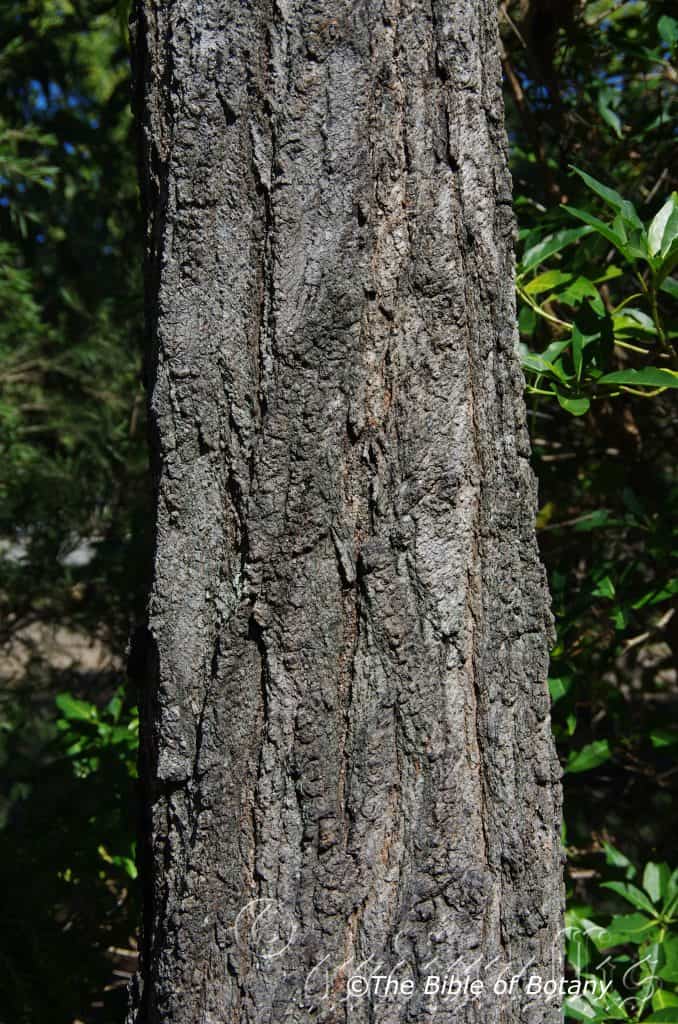

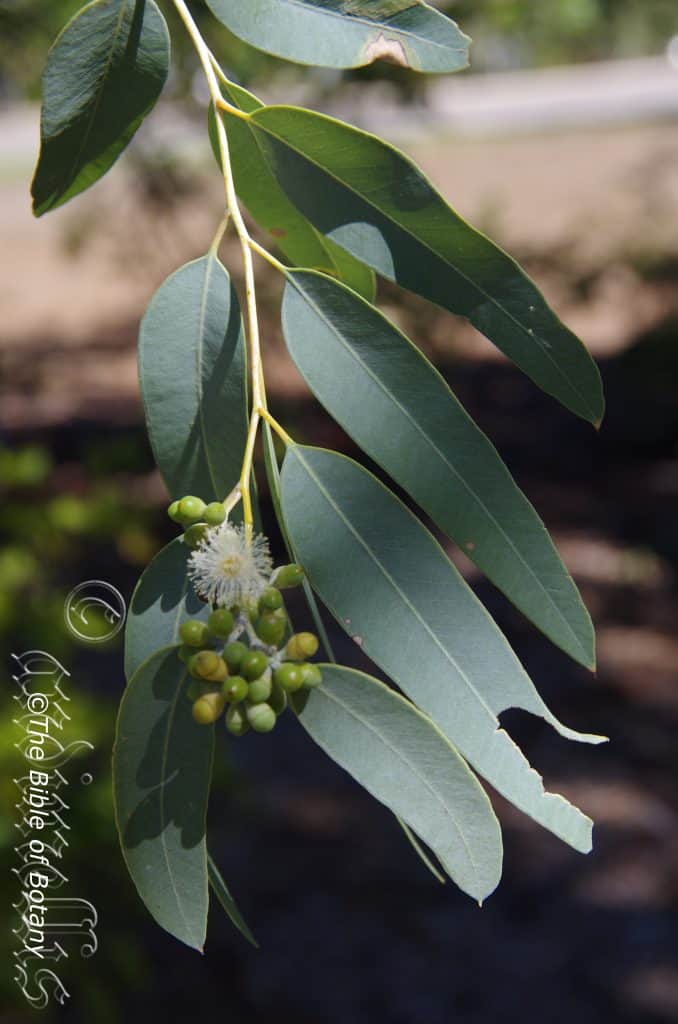
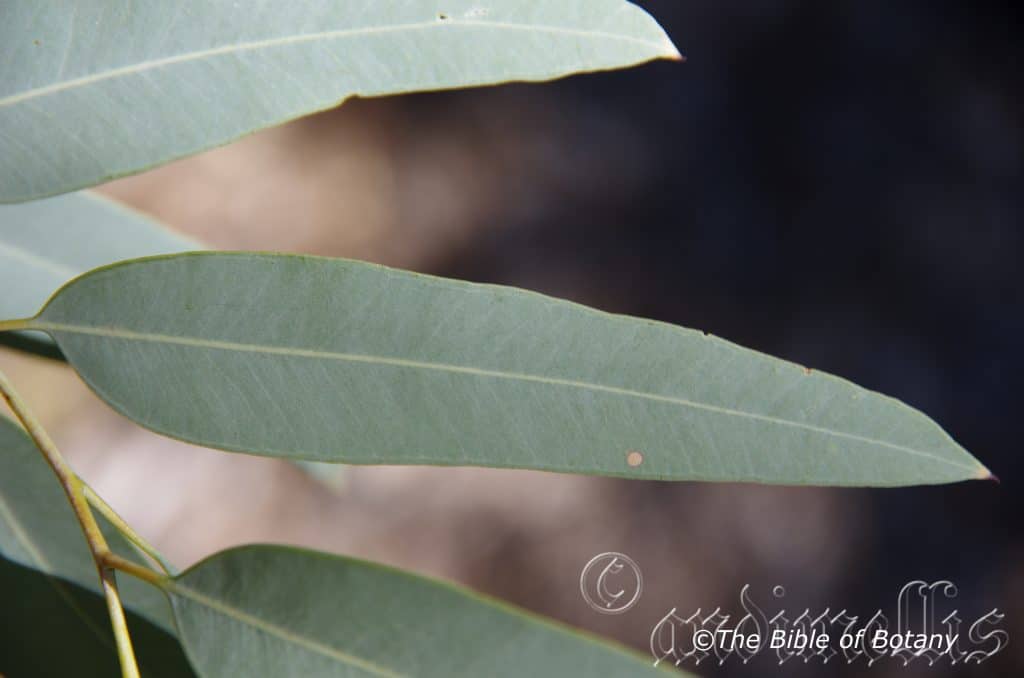
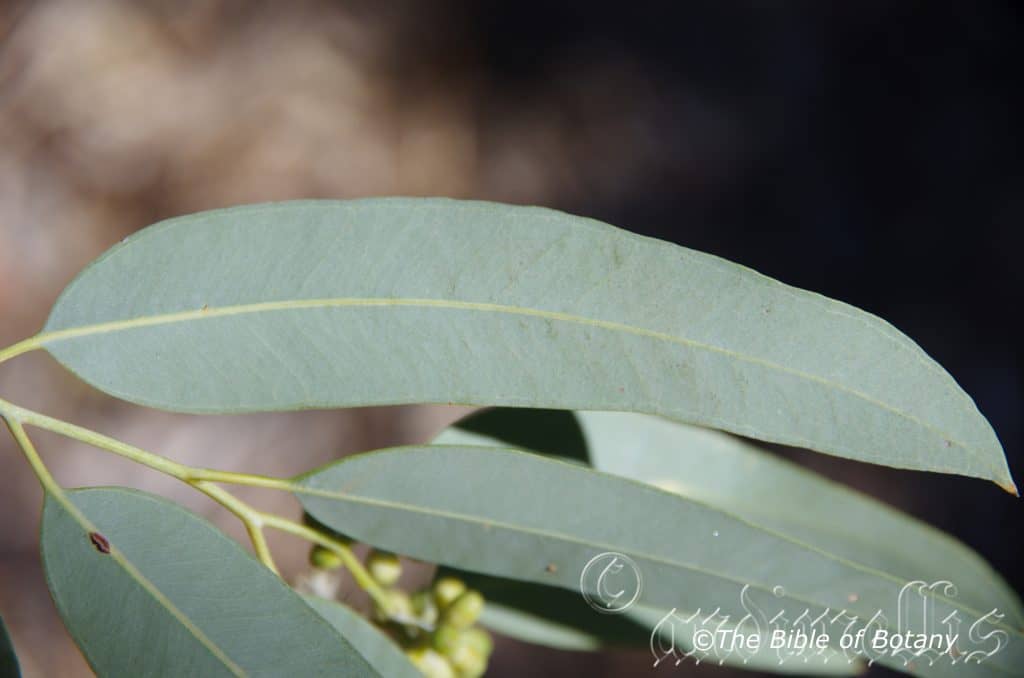
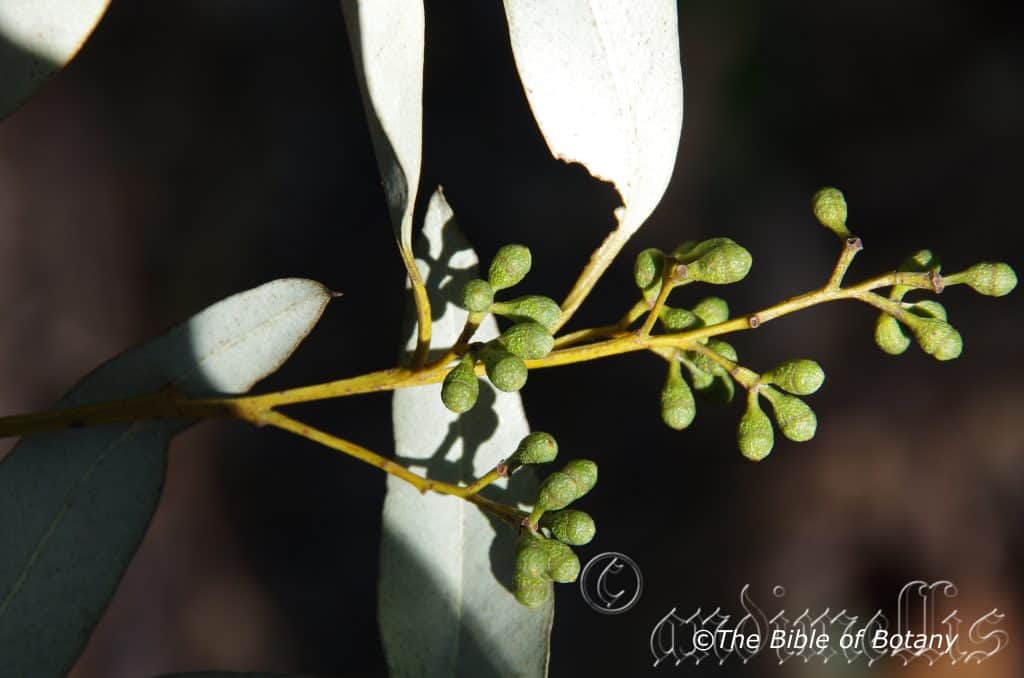

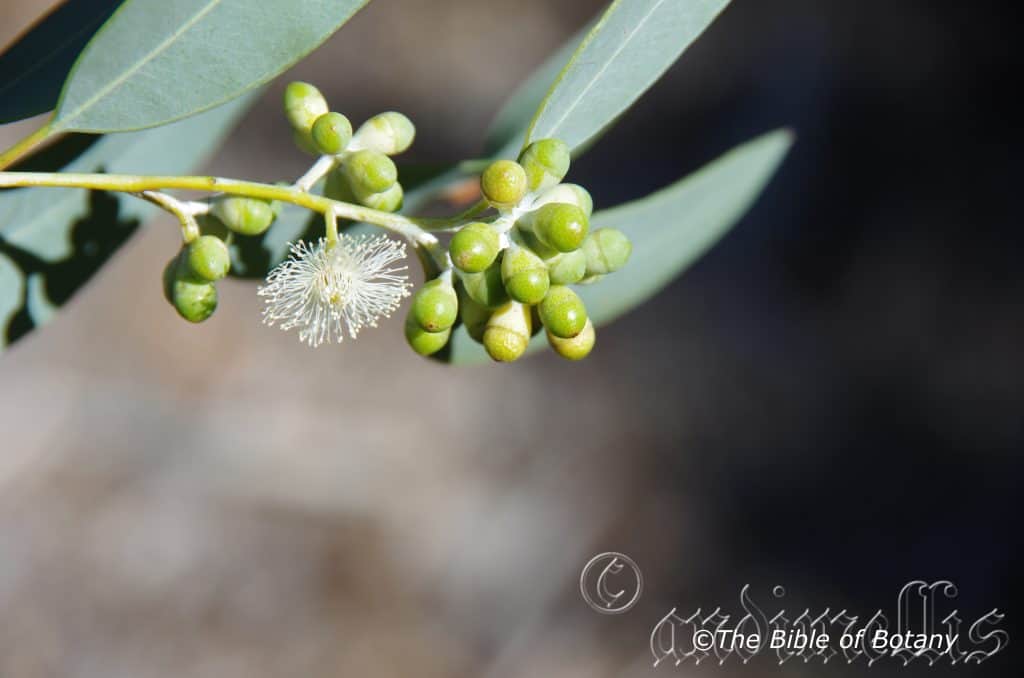
Eucalyptus paedoglauca
Classification:
Unranked: Eudicots
Unranked: Rosids
Order: Myrtales
Family: Myrtaceae
Genus: From Eu, which is Greek a prefix for good or well and Kaluptos, which is Ancient Greek for to cover up. It refers to the stamens, which have a lid or cover over them in the bud stage prior to opening.
Specie: From Paeonia, which is Greek and named by Theophrastus for Paeon, the physician to the Gods who, in mythology, was changed into a flower by Pluto and Glauko/Glaukós which are Ancient Greek for opaque grey or greyish. It refers to leaves, which are opaque grey similar to the leaves on Papaver somniferum.
Sub specie:
Common Name: Mount Stuart Iron Bark.
Distribution:
Eucalyptus paedoglauca is restricted to a small area around Townsville in Queensland. There is a disjunct populations near Pentland on the Hughendon Road.
https://avh.ala.org.au/occurrences/search?taxa=Eucalyptus+paedoglauca#tab_mapView
Habitat Aspect Climate:
Eucalyptus paedoglauca prefers full sun. It grows in exposed situations on steep slopes and along flat to rounded ridge tops. The altitude ranges from 160 meters ASL to 580 meters ASL.
The temperatures range from 6 degrees in August to 36 degrees in January.
The rainfall ranges from lows of 800mm to an average of 1200mm.
Soil Requirements:
Eucalyptus paedoglauca prefers skeletal to moderately deep infertile soils of course sand, fine sand or light fatty clays overlying granite. The soils are derived from decomposed granites. The soil’s pH ranges from 4.5pH to 6pH. It does not tolerate water logged soils.Non saline soils to moderately saline soils are tolerated as are salt laden winds.
Height & Spread:
Wild Plants: 5m to 12m by 3m to 6m.
Characteristics:
Eucalyptus paedoglauca is a small usually single trunk small tree. The typically persistent iron bark which is rough, furrowed, very hard, deep grey almost black on trunk and larger branches. The branches and branchlets are smooth, brown, off white, pale grey or yellow. The bark on the branches is shed in short ribbons or small patches. The new growth is purplish-red and glaucous.
Eucalyptus paedoglauca’s juvenile and coppice stems are terete, glaucous and glabrous. The sessile opposite disjunct leaves are ovate to broad oblong with a rounded base while the apex is obtuse. The concolourous laminas are dull blue-green to dull bluish-grey, glaucous and glabrous. The leaves measure 20mm to 30mm in length by 2mm to 40mm in width. The margins are entire.
The alternate, disjunct, lanceolate to slightly falcate leaves of Eucalyptus paedoglauca measure 60mm to 140mm in length by 12mm to 30mm in width. The terete petioles are yellowish and measure 7.5mm to 18mm in length. The bases are rounded while the apexes are broad acute with an apiculate tip. The concolourous laminas are dull blue-green to dull bluish-grey, glaucous and glabrous. The margins are entire while the mid vein is prominent on the lamina near the base and slightly prominent near the apex. The lateral penniveins are faintly visible on the both laminas while the intramarginal veins are away from the margin. It has a strong reticulation.
The inflorescences of Eucalyptus paedoglaucaare umbellasters born auxiliary along the stems from the leaf axils. There are 3 to 7 individual white flowers to an umbellaster. The new growth bearing the umbellasters is generally yellow to yellowish-green or maroon and glabrous. The thick terete peduncles are finely striated and measure 5mm to 8mm in length while the terete pedicels measure 2mm to 4.5mm in length. The clavate buds are mid green, glabrous, glossy and covered in lepidote or farinaceous lumps. The buds measure 6mm to 8.5mm in length by 4mm to 5.5mm in diameter. The flattened, hemispherical calyptra often has a small raised apex and is much shorter than and is as wide as the hypanthium. A bud scar is absent.
The white stamens measure 5mm to 6mm in length. The cream, orbicular to ovate anthers are dorsifixed and are all fertile. The stout pale greenish-yellow style measures 1.5mm to 2mm in length. The disc is pale greenish-yellow. The flowers appear from mid-April to early July.
The fruits of Eucalyptus paedoglauca are cupular woody capsules known as gum nuts. The mid grass-green gum nuts turn grey-brown when ripe and measure 6mm to 7mm in length by 5mm to 6mm in diameter at the widest point. The disc is inserted with the 4 or 5 triangular valves being slightly exserted.
Confusing Subspecies Varieties:
Eucalyptus paedoglauca’s juvenile leaves are ovate, glaucous and waxy. The 3 to 7 buds measure 6mm to 8mm in length while the fruits measure 6mm to 8mm in length.
Eucalyptus drepanophylla’s juvenile leaves are ovate-lanceolate, dull grey-green. The 7 buds measure 5mm to 5.5mm in length while the fruits measure 5mm to 5.5mm in length.
Wildlife:
The wildlife of Eucalyptus paedoglauca is unknown to the author.
Cultivation:
Eucalyptus paedoglauca is a beautiful small to medium tree which is ideally suitable for smaller gardens where a Eucalyptus is required. It is fast growing even on poor soils that it is normally associated with. It makes a very attractive garden specimen once established due it its beautiful blue foliage contrasting against green, glossy foliage or left as a stark contrast against outbuildings. It looks great and makes a good contrast plant from an early age. Another method is to grow one or two as trees and interplant with several smaller mallees that have several glabrous trunks with green foliage on display. In the garden good specimens may grow from 12 meters to 15 meters in height by 4 meters to 6 meters in diameter when grown in the open.
The beauty of Eucalyptus paedoglauca is that it can be established on sites that have infertile skeletal soils. Once established it looks at home in such conditions. Like all Eucalyptus spp. though some leaf drop and dropping of small branchlets will occur in severe droughts which means continual lawn maintenance but then this species is just at home in native heath gardens as it is as a lawn specimen.
Eucalyptus paedoglauca can be used like many small Eucalyptus spp. to create that little bit of Australiana in the suburban back yard or the outback garden to give shade from a relentless hot sun.
Often floral characteristics of a plant dictate our selection of plants for the garden. Remember that once a Eucalyptus spp.; or in fact any tree, reaches a reasonable size, its trunk or bark can are the most prominent features seen. Among the Eucalypts there are many different types of barks which include some of our beautiful peppermint barks. Grouping, mallees as mallees or as single trunk trees can add immeasurably to the interest within a small space. Eucalyptus paedoglauca is one of those species whose multi stems and bark contrasts well with single stem species.
Small shrubs can be used to emphasize the open spaces surrounding a mallee or a small tree especially when mass plantings are done.
Eucalyptus paedoglauca can look great when placed in the corner against a fence to add privacy and remove the barrenness of the yard while giving extra depth.
Propagation:
Seeds: Sow into a seed raising mix. Cover the seeds with 2mm to 3mm of fine sand and place the trays in a warm sunny position. Keep the seeds moist but not wet. When the seedlings are 25mm to 50mm tall, prick them out and plant them into 50mm native tubes using a good organic mix.
Once the seedlings reach 200mm to 250mm in height plant them out into their permanent position. Mass plantings are best done in groups of 3 to 5 as a feature by planting them at 4 meter to 5 meter centers as a tree or 5 meters to 6 meters as a mallee.
Fertilize using Seaweed, fish emulsion or organic chicken pellets soaked in water and apply the liquid on an alternate basis. Fertilize every two month until the trees are well established then every spring to ensure good growth and flowering.
Further Comments from Readers:
“Hi reader, it seems you use The Bible of Botany a lot. That’s great as we have great pleasure in bringing it to you! It’s a little awkward for us to ask, but our first aim is to purchase land approximately 1,600 hectares to link several parcels of N.P. into one at The Pinnacles NSW Australia, but we need your help. We’re not salespeople. We’re amateur botanists who have dedicated over 30 years to saving the environment in a practical way. We depend on donations to reach our goal. If you donate just $5, the price of your coffee this Sunday, We can help to keep the planet alive in a real way and continue to bring you regular updates and features on Australian plants all in one Botanical Bible. Any support is greatly appreciated. Thank you.”
In the spirit of reconciliation we acknowledge the Bundjalung, Gumbaynggirr and Yaegl and all aboriginal nations throughout Australia and their connections to land, sea and community. We pay our respect to their Elders past, present and future for the pleasures we have gained.
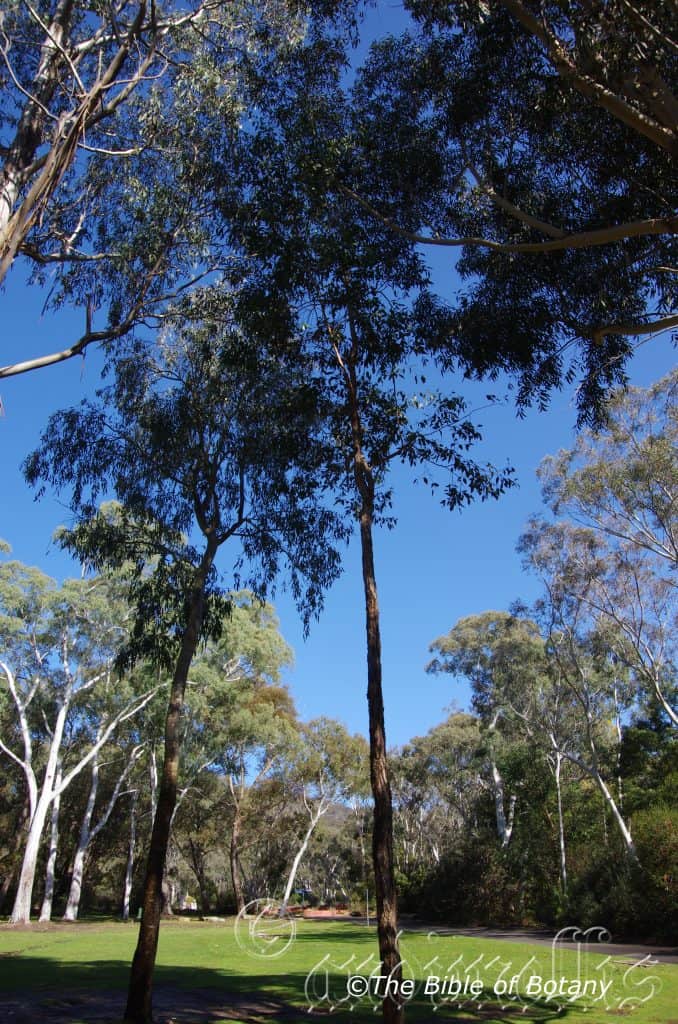

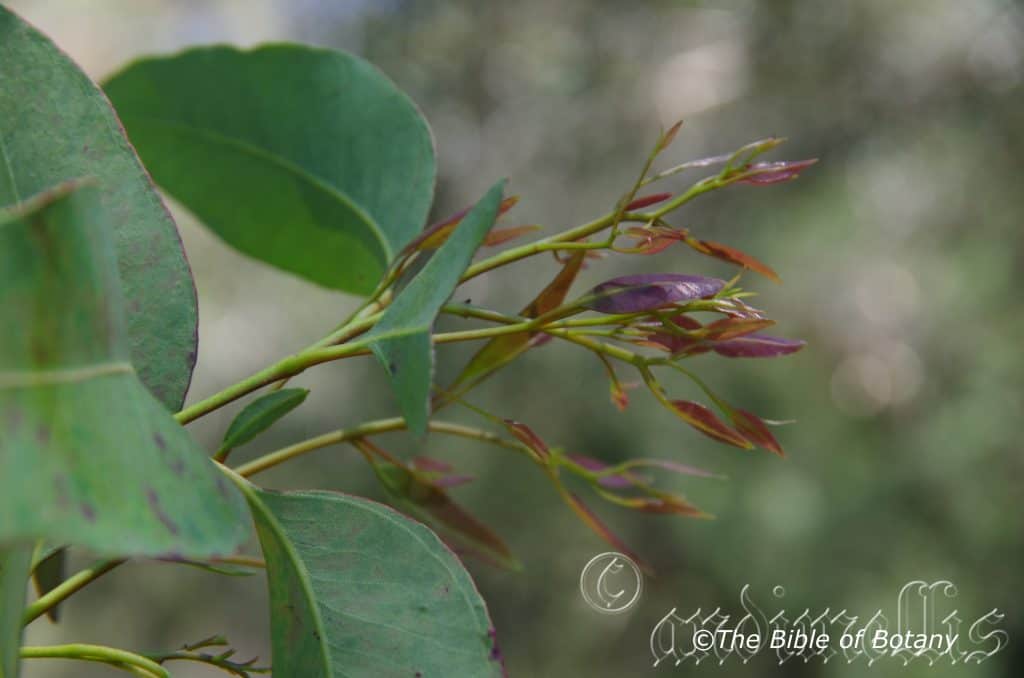


Eucalyptus paniculata
Classification:
Unranked: Eudicots
Unranked: Rosids
Order: Myrtales
Family: Myrtaceae
Genus: From Eu, which is Greek a prefix for good or well and Kaluptos, which is Ancient Greek for to cover up. It refers to the stamens, which have a lid or cover over them in the bud stage prior to opening.
Specie: From Panos, which is Ancient Greek or Pānicula, which is Latin for a flower head. It refers to flowers, which are arranged in a typical panicle.
Sub specie: Eucalyptus paniculata subsp. matutina. From Panos, which is Ancient Greek or Pānicula, which is Latin for a flower head. It refers to flowers, which are arranged in a typical panicle.
Sub specie: Eucalyptus paniculata subsp. paniculata. From Panos, which is Ancient Greek or Pānicula, which is Latin for a flower head. It refers to flowers, which are arranged in a typical panicle.
Common Name: Grey Ironbark.
Distribution:
Eucalyptus paniculata is restricted to populations from near Flagstone Creek in the Richmond Valley in far north eastern New South Wales to Tilba. It is found on and east of the Great Dividing Range to the coast at lower elevations behind the frontal dunes.
https://avh.ala.org.au/occurrences/search?taxa=Eucalyptus+paniculata#tab_mapView
Habitat Aspect Climate:
Eucalyptus paniculata prefers full sun to part shade and dappled sunlight. It grows on flat plains and undulating hills in moister situations. The altitude ranges from 10 meters ASL to 300 meters ASL.
The temperatures range from minus 4 degrees in August to 33 degrees in January.
The rainfall ranges from lows of 800mm to an average of 1600mm.
Soil Requirements:
Eucalyptus paniculata prefers deep average to higher fertility soils. The soils range from course silts to fine silts or fine sands to light fatty clays which often overly sandstone. The soils are usually derived from decomposed sandstones or accumulated beach sands. The soil’s pH ranges from 5pH to 7pH. It does not tolerate water logged soils however seasonal high water tables maybe experienced for short periods.Non saline soils to moderately saline soils are tolerated as are salt laden winds.
Height & Spread:
Wild Plants: 20m to 50m (usually 25m to 30m) by 12m to 18m.
Characteristics:
Eucalyptus paniculata is a medium single trunk small tree. This ironbark has an almost flaky appearance on immature trees though it is rough and persistent on the trunk and larger branches. The bark is deep grey to almost black while the branchlets are off white, cream, pale grey or pinkish-grey.
Eucalyptus paniculata’s juvenile and coppice stems are terete and glabrous. The sessile opposite disjunct leaves are ovate. The discolourous laminas are glossy, deep green to dull, deep green and glabrous. The margins are entire.
The alternate, disjunct, lanceolate to broad lanceolate leaves of Eucalyptus paniculata measure 80mm to 120mm in length by 8mm to 30mm in width. The terete petioles are purplish-red and measure 10mm to 18mm in length. The bases are tapering to tapering-rounded while the apexes are acute to broad acute. The discolourous laminas are semi glossy deep green and glabrous on the upper lamina while the lower lamina is much paler. The margins are entire while the mid vein is prominent on both laminas. The lateral penniveins are almost at right angles to 80 degrees while the intramarginal veins are away from the margin.
The inflorescences of Eucalyptus paniculataare compound umbellasters born auxiliary along the stems from the leaf axils. There are 7 individual white flowers to an umbellaster. The new growth bearing the umbellasters is pale green. The narrowly flattened or angular peduncles are glabrous and measure 6mm to 15mm in length while the terete pedicels measure 2mm to 7mm in length. The ovoid or shortly fusiform buds are pale green to yellowish-green and glabrous. The buds measure 7mm to 9mm in length by 3mm to 5mm in diameter. The conical calyptra is shorter than and is narrower than the hypanthium. A bud scar is present.
The white stamens measure 7mm to 9mm in length. The cream, orbicular to cuboidal anthers are dorsifixed with only the outer anthers being fertile. The pale cream style measures 1.5mm to 2mm in length. The disc is deep green. The flowers appear from late May through to early January.
The fruits of Eucalyptus paniculata are quite variable being hemispherical, conical or pyriform or at times ovoidal woody capsules known as gum nuts. The deep green gum nuts turn grey-brown when ripe and measure 6mm to 9mm in length by 5mm to 8mm in diameter at the widest point. The disc is inserted or level with the 4 or 5 valves being inserted or level with the rim.
Sub Specie Differences:
Eucalyptus paniculata subsp. paniculata leaves have stomata confined to the lower lamina except for a narrow band of scattered stomata along the midrib on the upper lamina
Eucalyptus paniculata subsp. matutina leaves have a greater number of regular scattering of stomata on the upper lamina with a much lower density on the lower surface.
Wildlife:
The wildlife of Eucalyptus paniculata is attractive to most lorikeets and small to medium honeyeaters.
Cultivation:
Eucalyptus paniculata is a strong, medium to large tree which is ideally suitable for larger gardens where a Eucalyptus is required. It is fast growing and makes an attractive park like specimen once established due it its beautiful blue glaucous foliage and strong ironbark trunk. It looks very affective when planted with other tall straight bole Eucalyptus species. In the garden good specimens may grow from 25 meters to 30 meters in height by 15 meters to 20 meters in diameter when grown in the open.
The beauty of Eucalyptus paniculata is that it can be established on sites that have poorer than ideal drainage and where the soils are particularly silts to course sands. Like all Eucalyptus spp. though some leaf drop and dropping of small branchlets means continual lawn maintenance where it is looks far better than crammed into a native heath garden unless it is the sole tree surrounded by a large heath similar to where it often grows.
Propagation:
Seeds: Sow into a seed raising mix. Cover the seeds with 2mm to 3mm of fine sand and place the trays in a warm sunny position. Keep the seeds moist but not wet. When the seedlings are 25mm to 50mm tall, prick them out and plant them into 50mm native tubes using a good organic mix.
Once the seedlings reach 200mm to 250mm in height plant them out into their permanent position. Mass plantings are best done in groups of 3 to 5 as a feature by planting them at 4 meter to 5 meter centers as a tree or 5 meters to 6 meters as a mallee.
Fertilize using Seaweed, fish emulsion or organic chicken pellets soaked in water and apply the liquid on an alternate basis. Fertilize every two month until the trees are well established then every spring to ensure good growth and flowering.
Further Comments from Readers:
“Hi reader, it seems you use The Bible of Botany a lot. That’s great as we have great pleasure in bringing it to you! It’s a little awkward for us to ask, but our first aim is to purchase land approximately 1,600 hectares to link several parcels of N.P. into one at The Pinnacles NSW Australia, but we need your help. We’re not salespeople. We’re amateur botanists who have dedicated over 30 years to saving the environment in a practical way. We depend on donations to reach our goal. If you donate just $5, the price of your coffee this Sunday, We can help to keep the planet alive in a real way and continue to bring you regular updates and features on Australian plants all in one Botanical Bible. Any support is greatly appreciated. Thank you.”
In the spirit of reconciliation we acknowledge the Bundjalung, Gumbaynggirr and Yaegl and all aboriginal nations throughout Australia and their connections to land, sea and community. We pay our respect to their Elders past, present and future for the pleasures we have gained.


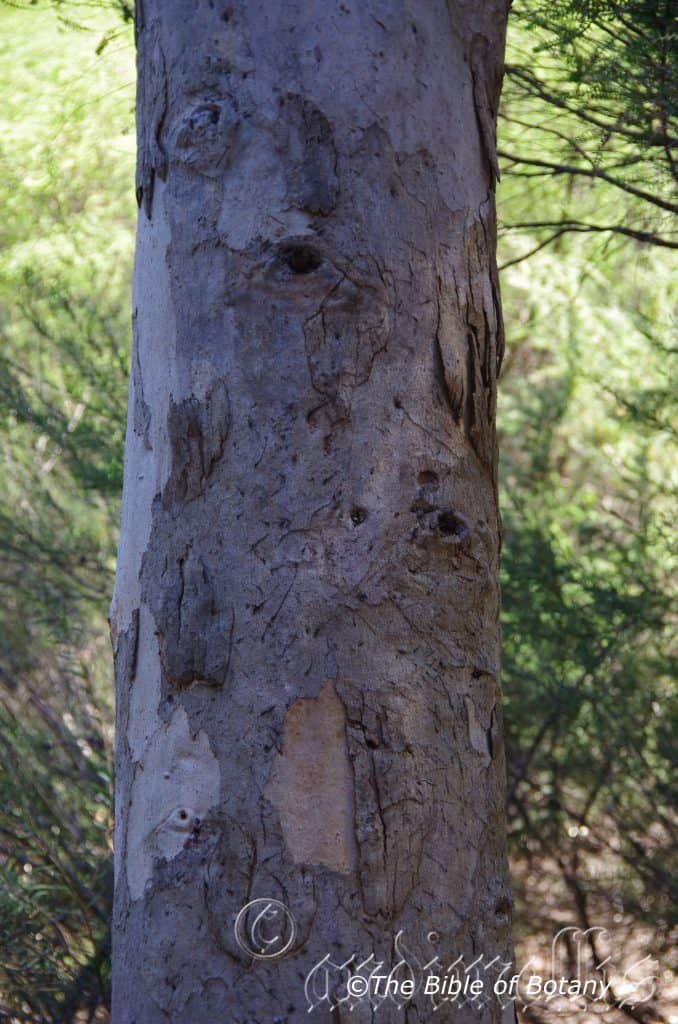
Eucalyptus parramattensis
Classification:
Unranked: Eudicots
Unranked: Rosids
Order: Myrtales
Family: Myrtaceae
Genus: From Eu, which is Greek a prefix for good or well and Kaluptos, which is Ancient Greek for to cover up. It refers to the stamens, which have a lid or cover over them in the bud stage prior to opening.
Specie: From Paramatta, which is Latinized from the aboriginal vernacular for a place where the eels lie down. It refers to plants, which were first discovered in the Parramatta area west of Sydney.
Sub specie: Eucalyptus parramattensis subsp. decadens. From De, which is Greek/Latin for down and Cadens, which is Latin for falling down. It refers to plants, which naturally cascade over rocks cliffs or rock overhangs.
Sub specie: Eucalyptus parramattensis subsp. parramattensis. From Paramatta, which is a Latinized for the Parramatta district in Sydney. It refers to plants, which were first discovered in the Parramatta area west of Sydney.
Sub specie: Eucalyptus parramattensis var. sphaerocalyx. From Sphaîra, which is Ancient Greek for a sphere or a globe and Kályx/Kalýptein, which is Ancient Greek for the specialized leaves that surround the immature bud which are often cupular in shape – calyx. It refers to the calyxes which are sphere to spathulate in shape.
Common Name:.
Distribution:
Eucalyptus parramattensis subsp. parramattensis is restricted to New South Wales in an area from the coast bounded by Hawks Nest Peninsula, southeast of Kindalwry Mountain, Near Green Hills, west of Ulan, in Cope State Forest, Shepherds Swamp, Hill Top and Malabar: There is a disjunct population further north at Dunbogan.
Eucalyptus parramattensis subsp. decadens is restricted to New South Wales between Newcastle and north of Nelson Bay east of the Great Dividing Range.
Eucalyptus parramattensis var. sphaerocalyx is restricted to New South Wales between Sydney and the Blue Mountains.
https://avh.ala.org.au/occurrences/search?taxa=Eucalyptus+parramattensis#tab_mapView
Habitat Aspect Climate:
Eucalyptus parramattensis prefers full sun to part shade and dappled sunlight. It grows in shallow depressions in dry sclerophyll woodlands which are often seasonally wet. The altitude ranges from 20 meters ASL to 450 meters ASL.
The temperatures range from minus 4 degree in August to 34 degrees in January.
The rainfall ranges from lows of 800mm to an average of 1600mm.
Soil Requirements:
Eucalyptus parramattensis prefers skeletal sands where the substrate is of Pleistocene origin which is typical of the geography of the Sydney basin and surrounding hills. The soils are usually derived from decomposed sandstone. The soil’s pH ranges from 4pH to 5.5pH. It tolerates short periods of seasonal inundations and water logged soils.Non saline soils to moderately saline soils are tolerated as are salt laden winds.
Height & Spread:
Wild Plants: 12m to 15m by 3m to 5m.
Characteristics:
Eucalyptus parramattensis is a small single trunk small tree. The typically smooth bark is white and various shades of grey and fawnish-grey. The bark is shed in irregularly and not cleanly in variable size medium to large plates or flakes. The new growth is pale green tinged orange-red to orange-red and glabrous.
Eucalyptus parramattensis’s juvenile and coppice stems are terete and glabrous. The sessile opposite disjunct leaves are narrow-lanceolate to lanceolate with a base that tapers to the petiole while the apex is acute. The concolourous laminas are dull blue-green to dull bluish-green and glabrous. The leaves measure 60mm to 160mm in length by 12mm to 40mm in width. The margins are entire.
The alternate, disjunct, lanceolate to broad lanceolate leaves of Eucalyptus neglecta measure 70mm to 200mm in length by 10mm to 35mm in width. The terete petioles are pale green tinged orange-red to orange-red and glabrous and measure 7mm to 18mm in length. The bases are broadly tapering to the petiole while the apexes are acute. The concolourous laminas are dull blue-green to dull bluish-green and glabrous. The margins are entire while the mid vein is prominent on both laminas but more soon the lower lamina. The lateral penniveins are visible on both laminas while the intramarginal veins are close to the margin.
The inflorescences of Eucalyptus parramattensisare umbellasters born auxiliary along the stems from the leaf axils. There are 7 individual white flowers to an umbellaster. The new growth bearing the umbellasters is pale green tinged orange-red to orange-red and glabrous. The terete or angular peduncles are glabrous and measure 5mm to 10mm in length while the terete pedicels measure 2mm to 8mm in length. The ovoidal buds are pale green to lime-green and glabrous. The buds measure 4mm to 11mm in length by 4mm to 6mm in diameter. The hemispherical to conical calyptra is equal to or slightly longer than and is as wide as the hypanthium. A bud scar is present.
The white stamens measure 9mm to 12mm in length. The cream, obloidal anthers are dorsifixed and are all fertile. The pale creamy-yellow style measures 1.5mm to 2.5mm in length. The disc is creamy-yellow to pale greenish-yellow. The flowers appear from mid-November to January.
The fruits of Eucalyptus parramattensis are hemispherical or globose woody capsules known as gum nuts. The green gum nuts turn grey when ripe and measure 4mm to 9mm in length by 5mm to 9mm in diameter at the widest point. The disc is flat or at times slightly raised with the 4 broad valves being exserted.
Confusing Subspecies Varieties:
Eucalyptus parramattensis subsp. parramattensis’ seed capsules are greater than 7mm in diameter. The buds are conical.
Eucalyptus parramattensis subsp. decadens’s seed capsules are less than 7mm in diameter. The buds are conical.
Eucalyptus parramattensis var. sphaerocalyx’s has hemispherical buds.
Wildlife:
The wildlife of Eucalyptus parramattensis is very attractive to nectar feeding birds.
Cultivation:
Eucalyptus parramattensis is a small to medium tree which is ideally suitable for smaller gardens where a Eucalyptus is required. It is fast growing even on poor, wet soils which it is normally associated with. It makes an attractive garden specimen once established due it its bark decorticating in irregular patches especially when it is grown with two or three trunks. It looks great and makes a good contrast plant from an early age. It looks more affective when planted with other small, straight bole trees with various contrasting barks and contrasting pale blue foliage.
The beauty of Eucalyptus parramattensis is that it can be established on seasonally wet sites with two or three strong trunks which are not mallee in appearance. Once established it looks great even in small gardens in the lawn or small heath settings. Like all Eucalyptus spp. though some leaf drop and dropping of small branchlets means continual lawn maintenance. This species is just as much at home in a native heath garden as it is in a lawn.
Eucalyptus parramattensis can be used like many small Eucalyptus spp. to create that little bit of Australiana in the suburban back yard or the outback garden to give shade from a relentless hot sun.
Often floral characteristics of a plant dictate our selection of plants for the garden. Remember that once a Eucalyptus spp.; or in fact any tree, reaches a reasonable size, its trunk or bark can are the most prominent features seen. Among the Eucalypts there are many different types of barks which include some of our beautiful peppermint barks. Grouping, mallees as mallees or as single trunk trees can add immeasurably to the interest within a small space. Eucalyptus parramattensis is one of those species whose multi stems and bark contrasts well with single stem species.
Small shrubs can be used to emphasize the open spaces surrounding a mallee or a small tree especially when mass plantings are done.
Eucalyptus parramattensis can look great when placed in the corner against a fence to add privacy and remove the barrenness of the yard while giving extra depth.
Propagation:
Seeds: Sow into a seed raising mix. Cover the seeds with 2mm to 3mm of fine sand and place the trays in a warm sunny position. Keep the seeds moist but not wet. When the seedlings are 25mm to 50mm tall, prick them out and plant them into 50mm native tubes using a good organic mix.
Once the seedlings reach 200mm to 250mm in height plant them out into their permanent position. Mass plantings are best done in groups of 3 to 5 as a feature by planting them at 4 meter to 5 meter centers as a tree or 5 meters to 6 meters as a mallee.
Fertilize using Seaweed, fish emulsion or organic chicken pellets soaked in water and apply the liquid on an alternate basis. Fertilize every two month until the trees are well established then every spring to ensure good growth and flowering.
Further Comments from Readers:
“Hi reader, it seems you use The Bible of Botany a lot. That’s great as we have great pleasure in bringing it to you! It’s a little awkward for us to ask, but our first aim is to purchase land approximately 1,600 hectares to link several parcels of N.P. into one at The Pinnacles NSW Australia, but we need your help. We’re not salespeople. We’re amateur botanists who have dedicated over 30 years to saving the environment in a practical way. We depend on donations to reach our goal. If you donate just $5, the price of your coffee this Sunday, We can help to keep the planet alive in a real way and continue to bring you regular updates and features on Australian plants all in one Botanical Bible. Any support is greatly appreciated. Thank you.”
In the spirit of reconciliation we acknowledge the Bundjalung, Gumbaynggirr and Yaegl and all aboriginal nations throughout Australia and their connections to land, sea and community. We pay our respect to their Elders past, present and future for the pleasures we have gained.

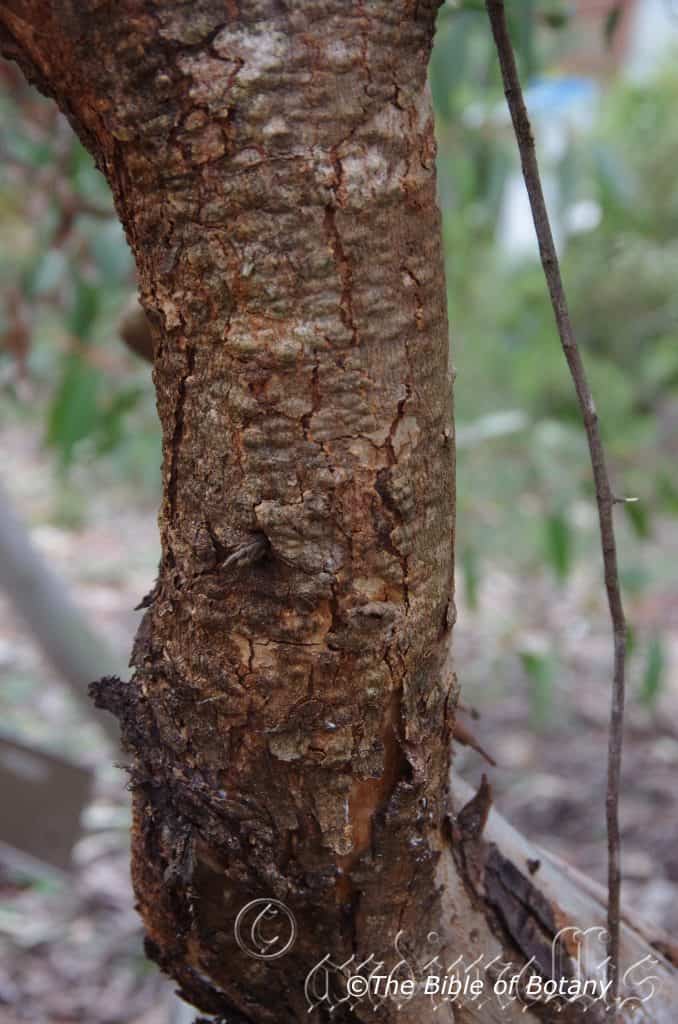
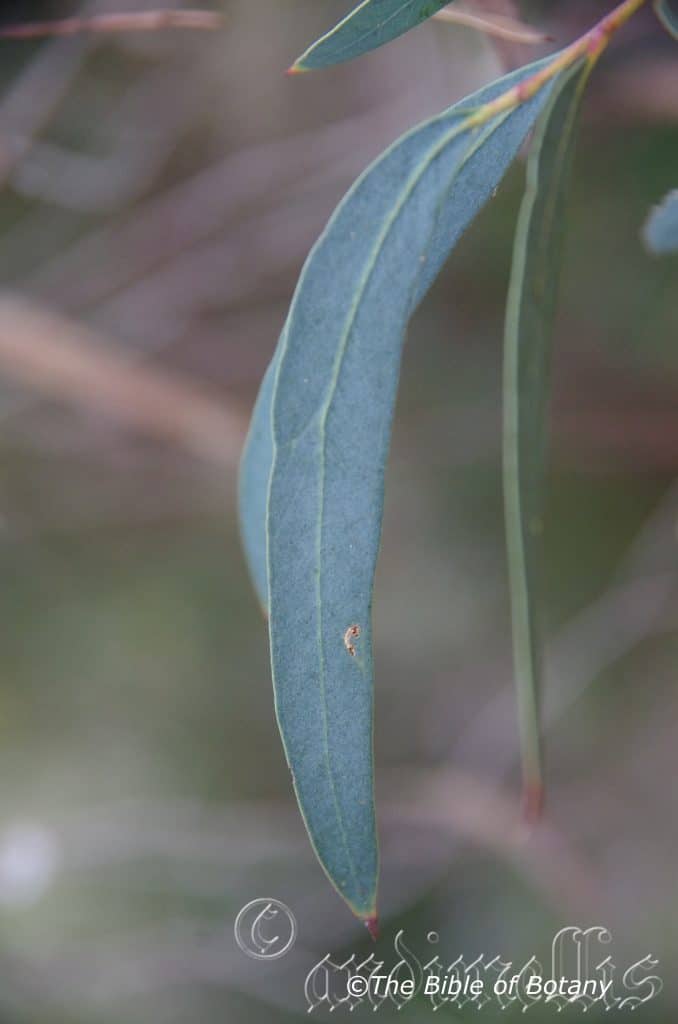
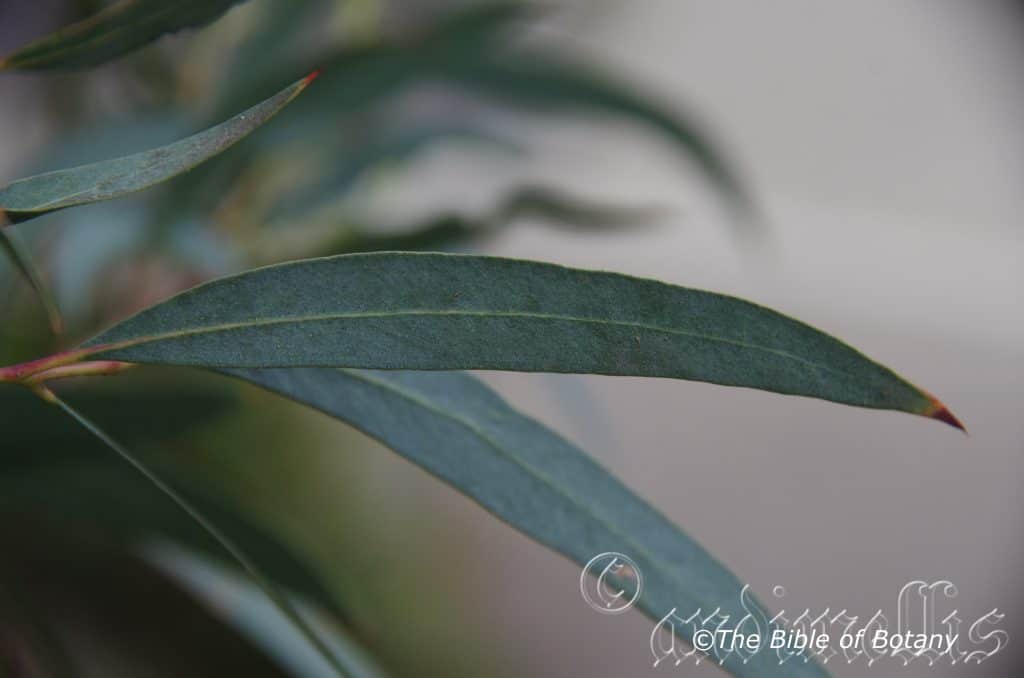
Eucalyptus parvula
Classification:
Unranked: Eudicots
Unranked: Rosids
Order: Myrtales
Family: Myrtaceae
Genus: From Eu, which is Greek a prefix for good or well and Kaluptos, which is Ancient Greek for to cover up. It refers to the stamens, which have a lid or cover over them in the bud stage prior to opening.
Specie: From Parvula, which is Latin for tiny small or petite. It refers to plants, their organs or structures which are small in size. Here it refers to the overall size of the trees and its leaves.
Sub specie:
Common Name: Small Leaved Gum Tree.
Distribution:
Eucalyptus parvula is restricted to a small area between Canberra and the Tantawangalo State Forest in south eastern New South Wales. It is found on the eastern side of the Great Dividing Range.
https://avh.ala.org.au/occurrences/search?taxa=Eucalyptus+parvula#tab_mapView
Habitat:
Aspect / Climate:
Eucalyptus parvula prefers full sun. It grows in more open moist Eucalyptus woodlands in colder damp habitats at higher altitudes along the Great Dividing Range. The altitude ranges from 600 meters ASL to 800 meters ASL.
The temperatures range from minus 5 degrees in August to 36 degrees in January.
The rainfall ranges from lows of 500mm to an average of 950mm annually though orographic precipitation can add a lot more to this total by keeping the soils moist for long periods.
Soil Requirements:
Eucalyptus parvula prefer medium to deep soils of variable quality from poor to average. The soils are usually derived from decomposed shale. The soils pH ranges from 4.5pH to 5.5pH. It does not tolerate water logged soils though most soils are moisture retentive. Non saline soils to slightly saline soils are tolerated.
Height & Spread:
Wild Plants:6m to 10m by 6m to 10m.
Characteristics:
Eucalyptus parvula is a small to medium size tree that has a deep grey or brownish-grey rather smooth bark. The decorticating bark sheds in ribbons. The branchlets are white, pale grey or yellowish-grey and smooth. The terete juvenile stems are yellowish-green or reddish.
The juvenile leaves are opposite for many nodes, while the sessile, elliptical to ovate or lanceolate, concolourous green leaves measure 16mm to 40mm in length by 9mm to 15mm in width.
The crown has a mixture of juvenile leaves, some petiolate, lanceolate intermediate leaves and adult leaves. The opposite or alternate, concolorous adults leaves are dull, green, elliptical to lanceolate and measure 30mm to 80mm in length by 5mm to 15mm in width. The petiole measures 5mm to 10mm in length. The bases taper to the petiole, while the lateral veins are less than 45° to midrib are moderately reticulated. The intramarginal veins run parallel to and are very close to the margins. The margins are entire. The oil glands are mostly island.
The axillary unbranched, peduncles measure 2mm to 7mm in length. There are 7 sessile buds on each umbel. The mature ovoid to obovoid or fusiform buds are smooth or slightly tuberculate and measure 3.5mm to 4mm in length by 2mm to 3mm in diameter. The scar is present. The conical to obtuse operculum is discarded before the irregularly flexed or inflexed filaments emerge. The cuboid to globoid, anthers are versatile with the slits separate. The short style flares slightly on the discs and has a blunt stigma. The white flowers appear in January.
The capsules are sessile or rarely have a pedicel, which measures up to 10mm in length. The cupular capsules measure 03mm to 4mm in length by 3mm to 5mm in diameter. The convex or annular disc is level with the rim or descending, while the 3 or 4 valves are inserted.
The deep brown, ovoid or flattened-ovoid seeds are often lacunose with the dorsal surface glabrous and measure 1mm to 1.5mm in length. The hilum is positioned ventrally.
Wildlife:
The flowers of Eucalyptus parvula are medium nectar producers and are very attractive to most honeyeaters and lorikeets.
Various native bees swarm to the flowers during the flowering season.
Cultivation:
Eucalyptus parvula is a medium to small size tree for smaller gardens in cold higher altitude areas. It is very useful as an accent plant on clay shales where ground water can be maintained through capillary action. It is moderate in growth so gives a good effect after a few year. The trees have been known to flower from the third year from seed.
It is only suitable for areas that are frost free and suffer badly where winter temperatures drop below 5 degrees even for a short period of time. It grows 10 meters to 13 meters in height by 4 meters to 6 meters in diameter as a single trunk tree. As a multi trunk tree the plants usually grow 3 or 4 trunks out rather than form a shrub. Here they will grow 5 meter to 6 meters in height by 6 meters to 10 meters in diameter.
The flowering as its name reflects is rather poor. Scatter planted in small groups of 3 or 4 plants with single trunks and multi trunks are a very attractive site which makes up for the poor flowering. Used in this manner annuals set out below can really enhance the garden so do not be afraid to use annuals with small perennial shrubs. Another method for their use would be to surround them with smaller mallee type plants that flower at different times of the year or mass plant the ground with ground covers which have white flowers or glaucous foliage.
Like most medium Eucalyptus specie leaf drop, dropping of small branches means continual lawn maintenance but then in a rainforest garden supply good quantities of leaf litter. Trees grown in the open are subject to being completely uprooted. This is particularly apparent where trees are being fertilized and are top heavy.
Propagation:
Seeds: Sow the seeds of Eucalyptus parvula into a seed raising mix. When the seedlings are 25mm to 50mm tall, prick them out and plant them into 50mm native tubes using a good organic mix.
Once the seedlings reach 200mm to 250mm in height plant them out into their permanent position.
Fertilize using seaweed, fish emulsion or organic chicken pellets soaked in water on an alternate basis. Fertilize every two months until the plants are established then twice annually in early September or March to maintain health, vitality and better flowering.
Further Comments from Readers:
“Hi reader, it seems you use The Bible of Botany a lot. That’s great as we have great pleasure in bringing it to you! It’s a little awkward for us to ask, but our first aim is to purchase land approximately 1,600 hectares to link several parcels of N.P. into one at The Pinnacles NSW Australia, but we need your help. We’re not salespeople. We’re amateur botanists who have dedicated over 30 years to saving the environment in a practical way. We depend on donations to reach our goal. If you donate just $5, the price of your coffee this Sunday, We can help to keep the planet alive in a real way and continue to bring you regular updates and features on Australian plants all in one Botanical Bible. Any support is greatly appreciated. Thank you.”
In the spirit of reconciliation we acknowledge the Bundjalung, Gumbaynggirr and Yaegl and all aboriginal nations throughout Australia and their connections to land, sea and community. We pay our respect to their Elders past, present and future for the pleasures we have gained.

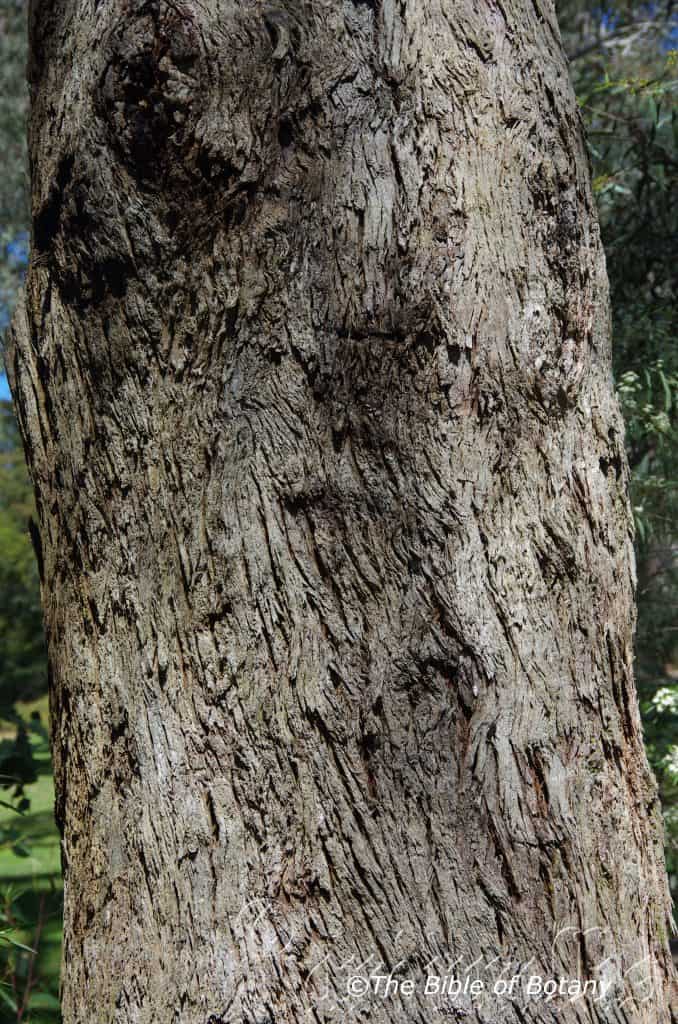
Eucalyptus patens
Classification:
Unranked: Eudicots
Unranked: Rosids
Order: Myrtales
Family: Myrtaceae
Genus: From Eu, which is Greek a prefix for good or well and Kaluptos, which is Ancient Greek for to cover up. It refers to the stamens, which have a lid or cover over them in the bud stage prior to opening.
Specie: From Patens, which is Latin for to spread out. It refers to plants, which have a spreading habit of growth. Here the meaning is obscure as the trees are not spreading out physically.
Sub specie:
Common Name: Blackbutt or Yarri. (The local aboriginal name for the tree.)
Distribution:
Eucalyptus patens is found south from the Darling Range north of Perth to Albany in the far south west corner of Western Australia.
https://avh.ala.org.au/occurrences/search?taxa=Eucalyptus+patens#tab_mapView
Habitat:
Aspect / Climate:
Eucalyptus patens prefers full sun to light dappled shade. It grows in open flat moist Eucalyptus forests often associated with wallum country. The altitude ranges from 10 meters ASL to 400 meters ASL.
The temperatures range from minus 1 degrees in August to 40 degrees in January.
The rainfall ranges from lows of 450mm to an average of 600mm annually.
Soil Requirements:
Eucalyptus patens prefer medium to deep soils of variable quality from poor to average. The soils are usually derived from decomposed granite, sandstones or laterites. The soils pH ranges from 5pH to 7pH. It does not tolerate water logged soils though annual inundations for short periods are acceptable. Non saline soils to moderately saline soils are tolerated.
Height & Spread:
Wild Plants:15m to 45m by 4m to 10m but usually much smaller.
Characteristics:
Eucalyptus patens grey-brown somewhat stringy to crumbly, corky bark is deeply fissured longitudinally to the small branches. The juvenile reddish-yellow stems are terete. The juvenile opposite leaves are sessile, stem-clasping for up to 8 to 12 nodes then becoming alternate and petiolate, while the apexes are broad acute with a long apiculate tip. The discolorous, green, ovate leaves are paler on the lower lamina and measure 80mm to 200mm in length by 45mm to 105mm in width.
The petiole on the mature leaves are alternate and measure12mm to 28mm in length. The lanceolate to falcate leaves are concolorous, dull, green and measure 80mm to 170mm in length by 15mm to 30mm in width. The base tapers to the petiole or at times is oblique, while the apexes are acute. The margins are entire. The mid vein is prominent on lower lamina, while the lateral veins are less than 45° to midrib, reticulation moderate to dense, while the intramarginal vein runs parallel and close to the margins. The oil glands are obscure or absent.
The unbranched, terete peduncles measure 5mm to 22mm in length. There are 7, 9 or 11 buds in each umbel. The terete pedicels measure 3mm to 7mm in length. The mature pyriform to obovate, buds measure 7mm to 11mm in length by 5mm to 7mm in diameter. The scar is absent. The obtuse operculum has an apiculate tip and is discarded before the first, irregularly flexed or outer more or less erect and inner inflexed stamens unfurl. The oblong to reniform, versatile, dorsifixed anthers dehisce along longitudinal slits that are not confluent apically. The long erect style tapers to the stigma. The white flowers appear during August, November, January or February.
The pedicels on the capsules are truncate to globose, barrel-shaped or rarely narrowing below rim to form a neck and measure 1mm to 7mm in length by 7mm to 13mm in diameter. The disc is descending, while the 4 valves are enclosed.
The mid to deep brown seeds are similar in size, shape and colour to the chaff particles and measure 1.5mm to 3mm in length. It is D-shaped to more or less pyramidal, with the dorsal surface is convex while the hilum is terminal.
Wildlife:
The flowers of Eucalyptus patens are medium nectar producers and are very attractive to most honeyeaters, lorikeets, flying foxes, possums and many insects. Various native bees swarm to the flowers during the flowering season.
Cultivation:
Eucalyptus patens is a medium to small size tree for small gardens in cold high altitude areas. It is very useful as an accent plant on light sandy loams or granites where ground water can be maintained through capillary action. It is fast growing so gives a good effect at an early age. The trees have been known to flower from the third year from seed.
It is only suitable for areas that are frost free and suffer badly where winter temperatures drop below 5 degrees even for a short period of time. It grows 10 meters to 13 meters in height by 4 meters to 6 meters in diameter as a single trunk tree. As a multi trunk tree the plants usually grow 3 or 4 trunks out rather than form a shrub. Here they will grow 5 meter to 6 meters in height by 6 meters to 10 meters in diameter.
The flowering as its name reflects is rather poor. Scatter planted in small groups of 3 or 4 plants with single trunks and multi trunks are a very attractive site which makes up for the poor flowering. Used in this manner annuals set out below can really enhance the garden so do not be afraid to use annuals with small perennial shrubs. Another method for their use would be to surround them with smaller mallee type plants that flower at different times of the year or mass plant the ground with ground covers which have white flowers or glaucous foliage.
Like most medium Eucalyptus specie leaf drop, dropping of small branches means continual lawn maintenance but then in a rainforest garden supply good quantities of leaf litter. Trees grown in the open are subject to branches breaking in strong winds and even the trees being completely uprooted. This is particularly apparent where trees are being fertilized and are top heavy.
Propagation:
Seeds: Sow the seeds of Eucalyptus patens into a seed raising mix. When the seedlings are 25mm to 50mm tall, prick them out and plant them into 50mm native tubes using a good organic mix.
Once the seedlings reach 200mm to 250mm in height plant them out into their permanent position.
Fertilize using seaweed, fish emulsion or organic chicken pellets soaked in water on an alternate basis. Fertilize every two months until the plants are established then twice annually in early September or March to maintain health, vitality and better flowering.
Further Comments from Readers:
“Hi reader, it seems you use The Bible of Botany a lot. That’s great as we have great pleasure in bringing it to you! It’s a little awkward for us to ask, but our first aim is to purchase land approximately 1,600 hectares to link several parcels of N.P. into one at The Pinnacles NSW Australia, but we need your help. We’re not salespeople. We’re amateur botanists who have dedicated over 30 years to saving the environment in a practical way. We depend on donations to reach our goal. If you donate just $5, the price of your coffee this Sunday, We can help to keep the planet alive in a real way and continue to bring you regular updates and features on Australian plants all in one Botanical Bible. Any support is greatly appreciated. Thank you.”
In the spirit of reconciliation we acknowledge the Bundjalung, Gumbaynggirr and Yaegl and all aboriginal nations throughout Australia and their connections to land, sea and community. We pay our respect to their Elders past, present and future for the pleasures we have gained.

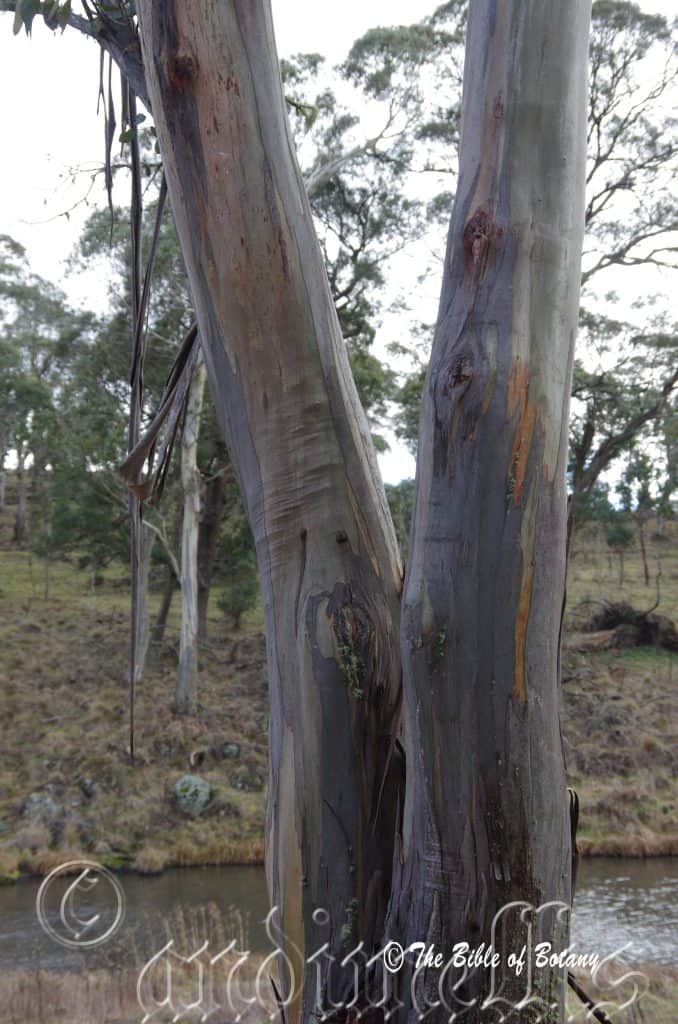
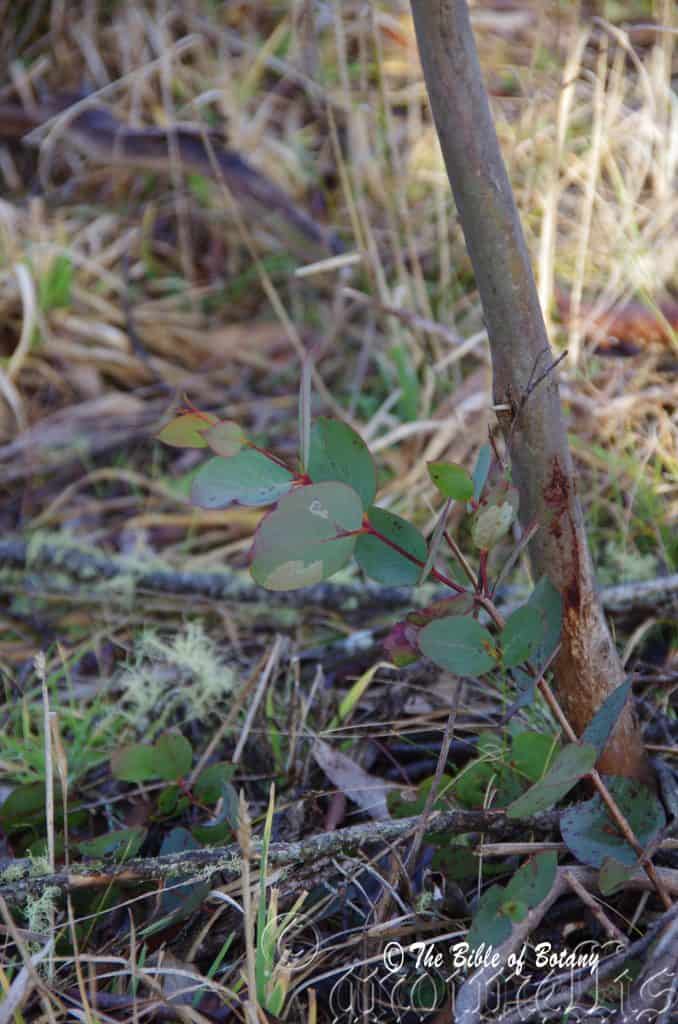

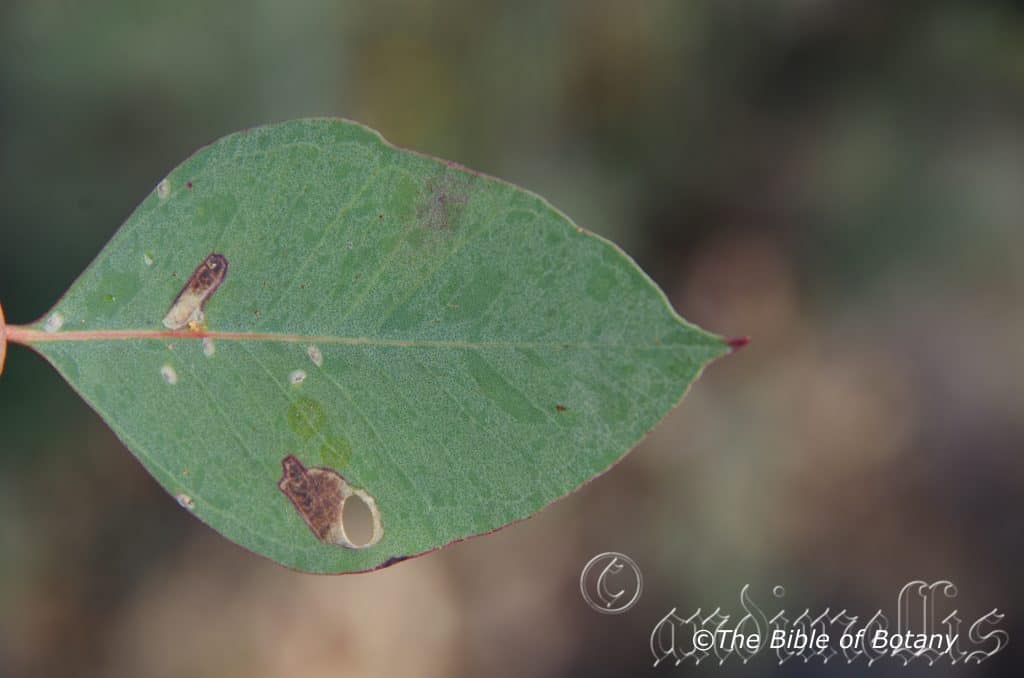

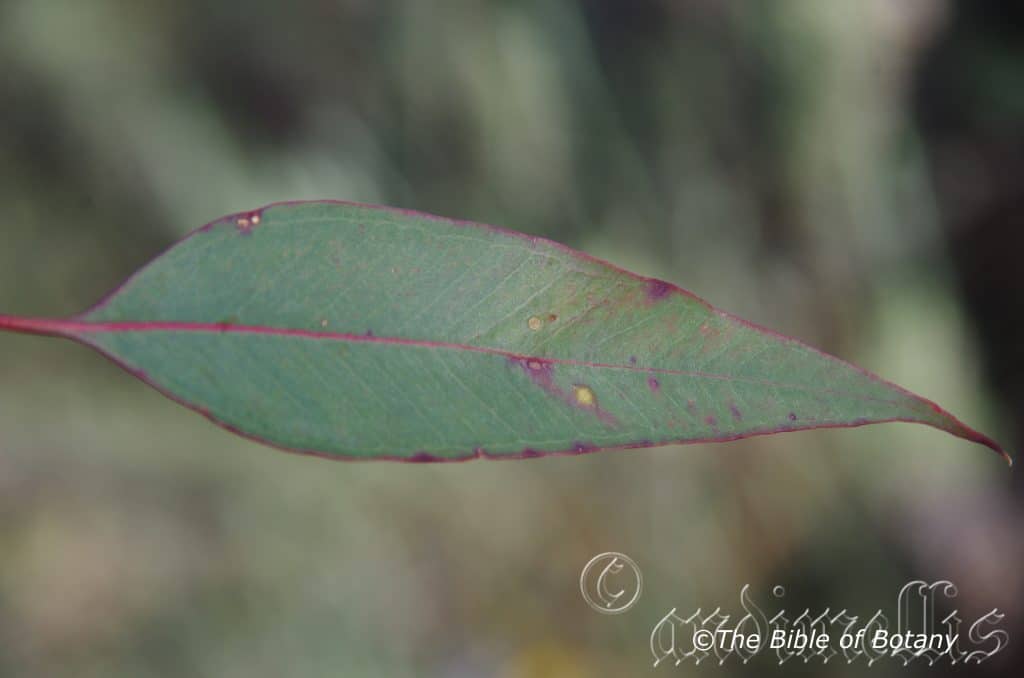

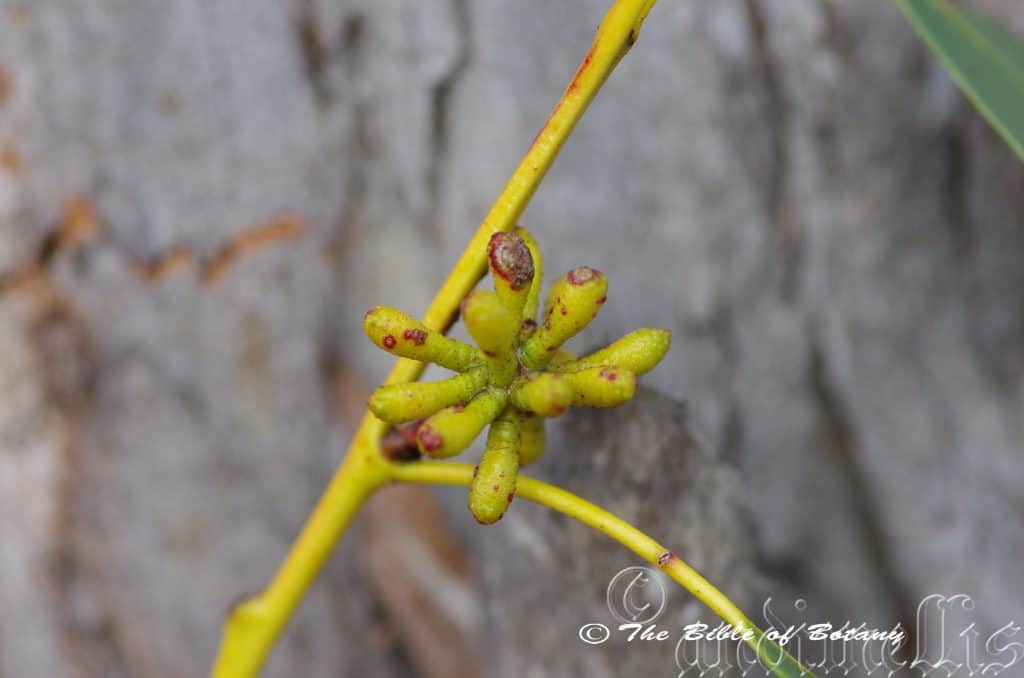
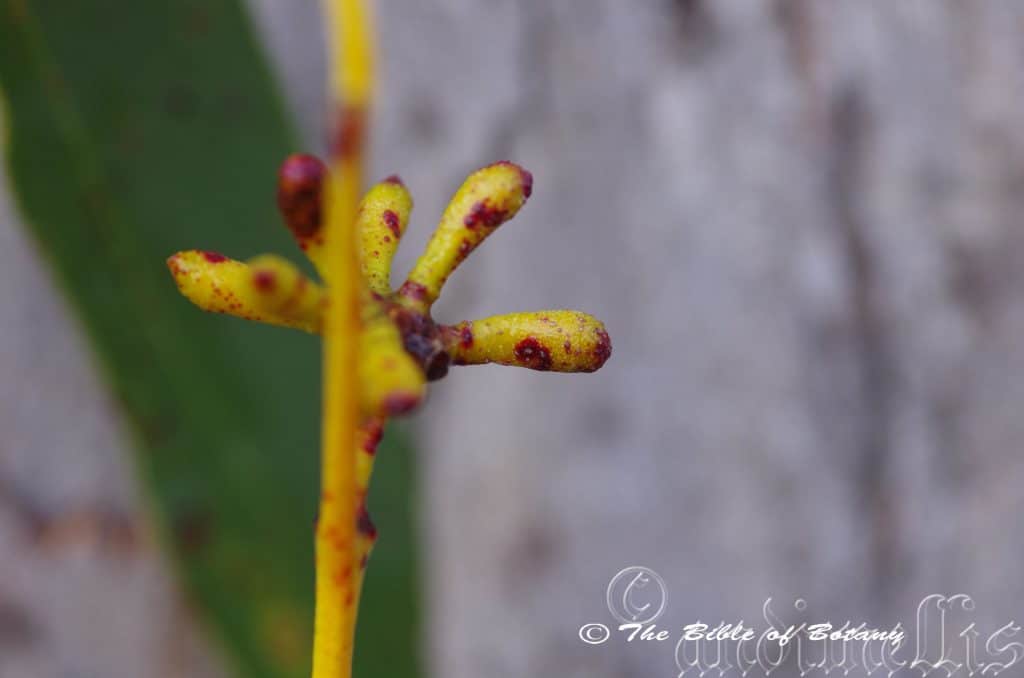
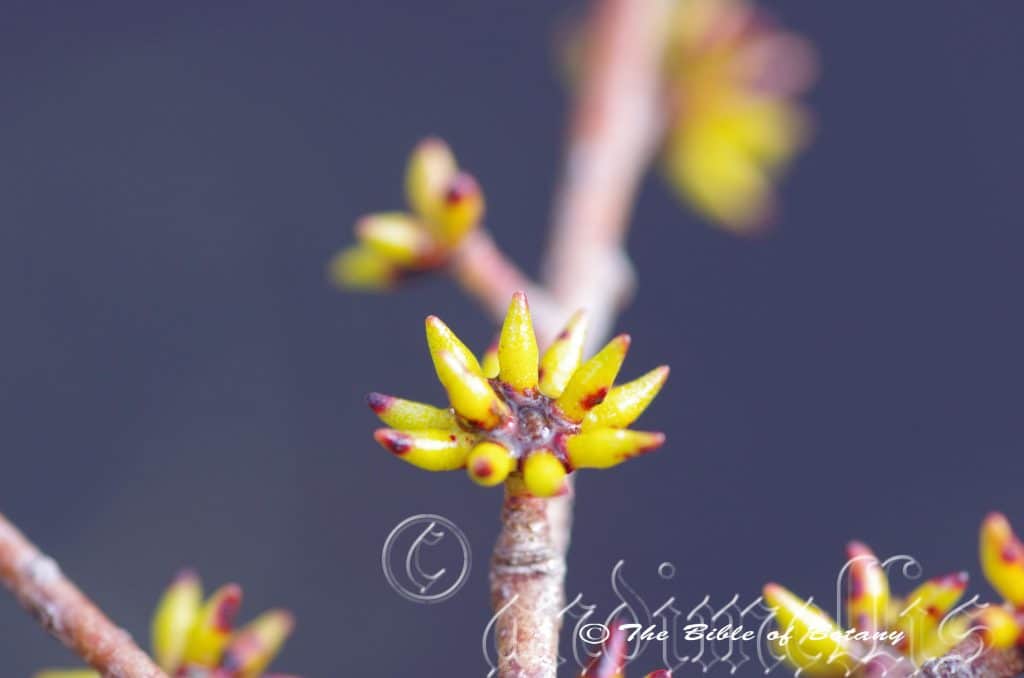
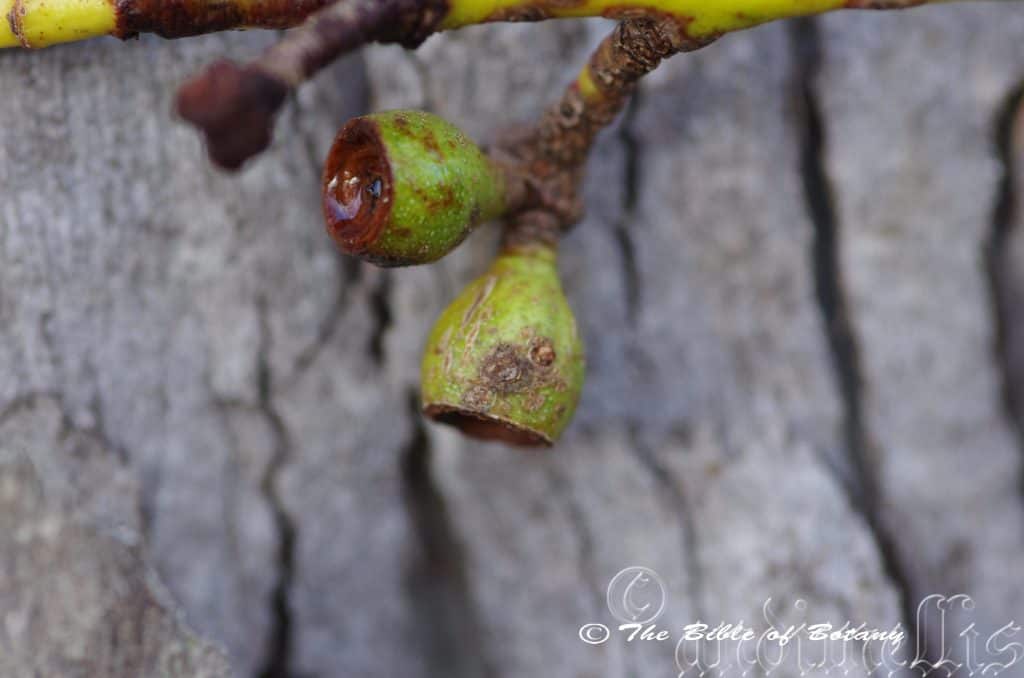
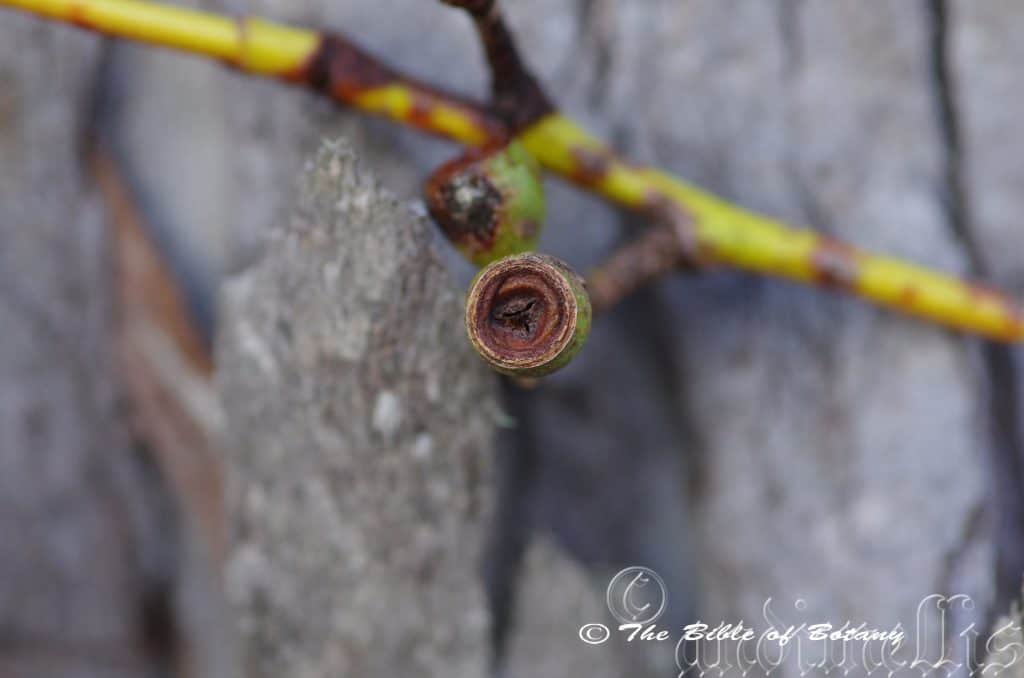
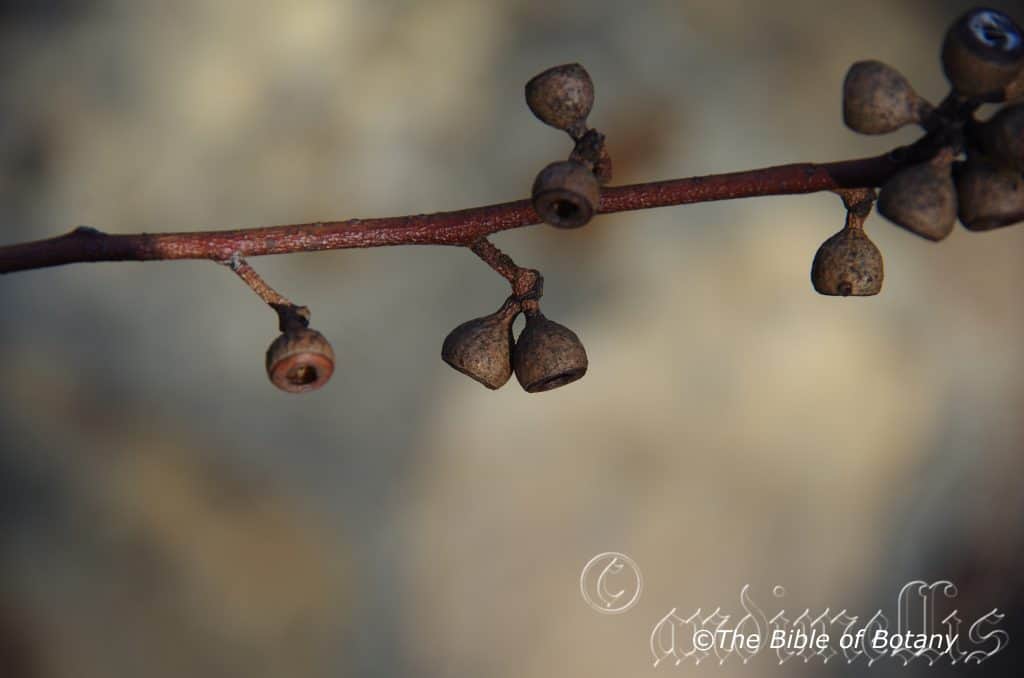
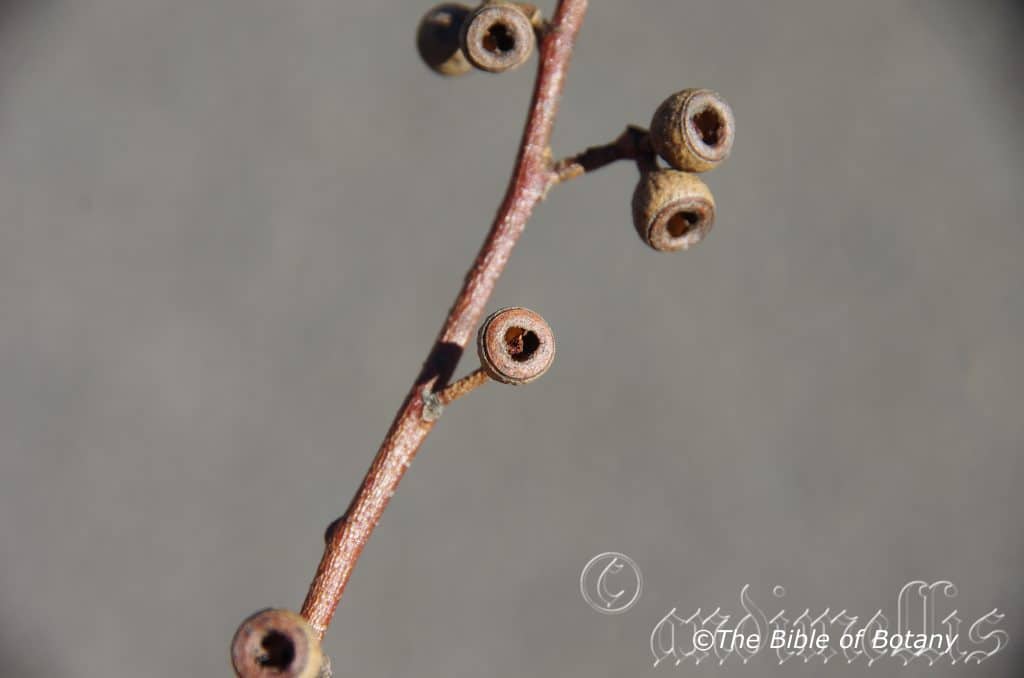
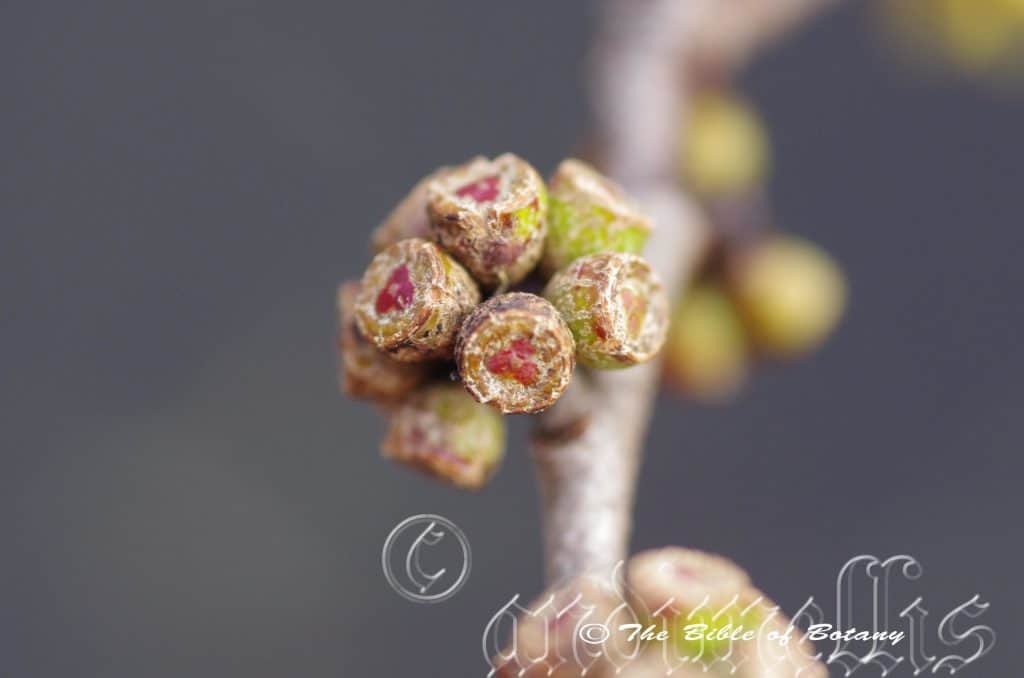

Eucalyptus pauciflora
Classification:
Unranked: Eudicots
Unranked: Rosids
Order: Myrtales
Family: Myrtaceae
Genus: From Eu, which is Greek a prefix for good or well and Kaluptos, which is Ancient Greek for to cover up. It refers to the stamens, which have a lid or cover over them in the bud stage prior to opening.
Specie: From Paucī, which is Latin for a few and Flōris, which is Latin for a flower or Flōs, which is the Roman goddess of spring and flowers. It refers to plants, which produce fewer flowers or which are poorer bloomers than other species in the genus.
Sub specie:
Common Name: Snow Gum.
Distribution:
Eucalyptus pauciflora is found from near Stanthorpe in south eastern Queensland south to Tasmania. It mainly grows on the higher plateaus of the Great Dividing Range.
https://avh.ala.org.au/occurrences/search?taxa=Eucalyptus+pauciflora#tab_mapView
Habitat:
Aspect / Climate:
Eucalyptus pauciflora prefers full sun. It grows close or open moist Eucalyptus forests at higher altitudes along the Great Dividing Range. The altitude ranges from 670 meters ASL to 2000 meters ASL.
The temperatures range from minus 8 degrees in August to 36 degrees in January.
The rainfall ranges from lows of 800mm to an average of 1600mm annually though orographic precipitation can add a lot more to this total.
Soil Requirements:
Eucalyptus pauciflora prefer medium to deep soils of variable quality from poor to very good. The soils are usually derived from decomposed granite or at times basalt. The soils pH ranges from 5pH to 7pH. It does not tolerate water logged soils though annual inundations for short periods are acceptable. Non saline soils to moderately saline soils are tolerated.
Height & Spread:
Wild Plants:8m to 30m by 4m to 10m.
Characteristics:
Eucalyptus pauciflora is a small to medium size tree that has a white, pale grey or yellowish-grey smooth, with scribbles. The decorticating bark sheds in ribbons. The branchlets are white, pale grey or yellowish-grey and smooth.
Juvenile stems are red-brown terete and covered in long red-brown hirsute hairs. The opposite leaves soon give way to alternate disjunct leaves. The ovate leaves are dull grey-green and glabrous.
The alternate, disjunct adult leaves of Eucalyptus pauciflora are lanceolate to slightly falcate and measure 65mm to 160mm in length by 12mm to 32mm in width. The terete petioles measure 10mm to 28mm in length. The concolourous laminas are mid green and semi glossy to glossy. The bases are cuneate to rounded while the apex is tapering to narrow acute. The mid vein is sub prominent on both laminas as are the almost parallel lateral veins. The intramarginal vein is close to the margin. Leaf margins are entire.
The inflorescences of Eucalyptus pauciflora is an umbellaster born with 11 flowers from existing leaf axis on the branchlets. The umbellasters form spherical domes. The terete or angular peduncles measure 3mm to 16mm in length while the pedicels measure 0mm to 3mm.
The clavate buds are bright green and measure 6mm to 9mm long by 3mm to 5mm in diameter. The bud scar is absent. The calyptra is hemispherical or rounded-conical and is sparsely and finely warty. The calyptra measures 4mm to 6mm in length by 3mm to 5mm in diameter. The hypanthia have weak longitudinal striations.
The cream to creamy-white filaments have pale yellow anthers. They measure 9mm to 12mm in length. The disc is cream to creamy-white. The cream to creamy-white style remains attached to its disc for several days after fertilization. The flowers of Eucalyptus pauciflora appear in mid-September to December and appears to be dependent upon the arrival of warmer temperatures.
The fruits of Eucalyptus pauciflora are hemispherical or conical gum nuts. The gum nuts are finely warty and measure 6mm to 10mm in length by 5mm to 9mm in diameter. The disc is slightly raised revealing the slightly enclosed valves.
Wildlife:
The flowers are medium nectar producers and are very attractive to most honeyeaters, lorikeets, flying foxes, possums and many insects. Various native bees swarm to the flowers during the flowering season.
Cultivation:
Eucalyptus pauciflora is a medium to small size tree for small gardens in cold high altitude areas. It is very useful as an accent plant on light sandy loams or granites where ground water can be maintained through capillary action. It is relatively fast growing so gives a good effect at an early age. The trees have been known to flower from the fifth year from seed.
It is suitable for areas that suffer severe frost, where winter temperatures drop below 5 degrees even for a short period of time or extended periods. It grows 10 meters to 15 meters in height by 4 meters to 6 meters in diameter as a single trunk tree. As a multi trunk tree the plants usually grow 3 or 4 trunks out rather than form a shrub. Here it will grow 5 meter to 6 meters in height by 6 meters to 10 meters in diameter.
The flowering as its name reflects is rather poor. Scatter planted in small groups of 3 or 4 plants with single trunks and multi trunks are a very attractive feature which makes up for the poor flowering. Used in this manner annuals set out below can really enhance the garden so do not be afraid to use annuals with small perennial shrubs. Another method for its use would be to surround them with smaller mallee type plants that flower at different times of the year or mass plant the ground with ground covers which have brightly coloured flowers or glaucous foliage.
Like most medium Eucalyptus specie leaf drop, dropping of small branches means continual lawn maintenance but then in a temperate rainforest garden it can help by adding a layer of leaf litter. Trees grown in the open are subject to branches breaking in strong winds and even the trees being completely uprooted. This is particularly apparent where trees are being fertilized and are top heavy in skeletal soils thus indicating deep sandy soils are a better option.
Propagation:
Seeds: Sow the seeds of Eucalyptus pauciflora into a seed raising mix. When the seedlings are 25mm to 50mm tall, prick them out and plant them into 50mm native tubes using a good organic mix.
Once the seedlings reach 200mm to 250mm in height plant them out into their permanent position.
Fertilize using seaweed, fish emulsion or organic chicken pellets soaked in water on an alternate basis. Fertilize every two months until the plants are established then twice annually in early September or March to maintain health, vitality and better flowering.
Further Comments from Readers:
“Hi reader, it seems you use The Bible of Botany a lot. That’s great as we have great pleasure in bringing it to you! It’s a little awkward for us to ask, but our first aim is to purchase land approximately 1,600 hectares to link several parcels of N.P. into one at The Pinnacles NSW Australia, but we need your help. We’re not salespeople. We’re amateur botanists who have dedicated over 30 years to saving the environment in a practical way. We depend on donations to reach our goal. If you donate just $5, the price of your coffee this Sunday, We can help to keep the planet alive in a real way and continue to bring you regular updates and features on Australian plants all in one Botanical Bible. Any support is greatly appreciated. Thank you.”
In the spirit of reconciliation we acknowledge the Bundjalung, Gumbaynggirr and Yaegl and all aboriginal nations throughout Australia and their connections to land, sea and community. We pay our respect to their Elders past, present and future for the pleasures we have gained.
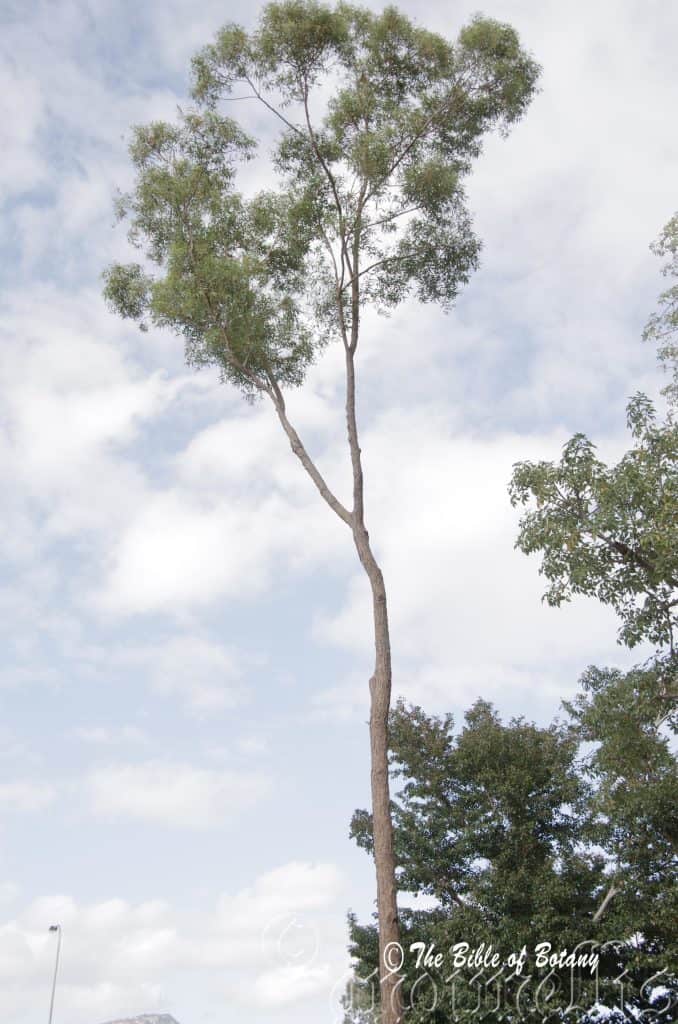

Eucalyptus phoenicea
Classification:
Unranked: Eudicots
Unranked: Rosids
Order: Myrtales
Family: Myrtaceae
Genus: From Eu, which is Greek a prefix for good or well and Kaluptos, which is Ancient Greek for to cover up. It refers to the stamens, which have a lid or cover over them in the bud stage prior to opening.
Specie: From Phoenix, which is Ancient Greek for the mythical bird or the colour purplish-red to viminea orange. It usually refers to the colour of the flowers or at times the bark.
Sub specie:
Common Name: Phoenix Gum, Scarlet gum or Gnaingar (which is the local Aboriginal name for the plant).
Distribution:
Eucalyptus phoenicea is found east from the Drysdale River National Park in far north eastern Western Australia to north of Timber Creek near the Timor Sea and the Nathan River to the Wearyan River in the western Gulf of the Northern Territory.
https://avh.ala.org.au/occurrences/search?taxa=Eucalyptus+phoenicea#tab_mapView
In far north east Queensland it is found in the Lakefield National Park.
Habitat Aspect Climate:
Eucalyptus phoenicea prefers full sun. It grows close to creeks rivers soaks and billabongs along creek riparian zones. It also grows on plains hill tops and sandstone outcrops. The altitude ranges from 5 meters ASL to 500 meters ASL.
The temperatures range from 14 degrees in August to 42 degrees in January.
The rainfall ranges from lows of 1000mm to an average of 2600mm annually.
Soil Requirements:
Eucalyptus phoenicea prefer deep sandstone escarpments, plateaus and sandstone alluvial flats. The soils pH ranges from 6pH to 6.5pH. It does not tolerate water logged soils though annual inundations for short periods are acceptable. Non saline soils to moderately saline soils are tolerated.
Height & Spread:
Wild Plants: 4m to 12m by 4m to 6m.
Characteristics:
Eucalyptus phoenicea is a small to medium size tree which often has a twisting look on the trunk because of the way in which the bark twists around the trunk. The decorticating pale yellow-brown fibrous bark is shed in flakes from the trunk and main branches. Branchlets are smooth, glabrous, and cream to pale pink especially when the old bark is shed. The trees form a lignotuber which when needed will form one sometimes two trunks.
Juvenile stems are red-brown terete and covered in long red-brown hirsute hairs. The opposite leaves soon give way to alternate leaves. The leaves are ovate and densely covered in long red-brown hirsute hairs and measure 20mm to 40mm long by 15mm to 20mm wide. The red petioles are covered in white hairs and measure 8mm to 10mm in length. The bases are obtuse or slightly cordate while the apexes are obtuse. The discolourous laminas are pale green and covered in reddish hirsute hairs on the upper lamina while the lower lamina is glaucous. The margins are entire.
The adult alternate leaves of Eucalyptus phoenicea are lanceolate to semi falcate and measure 80mm to 120mm in length by 12mm to 20mm in width. The concolourous laminas are mid blue green to yellow-green. The base is cuneate to rounded while the apex is tapering to narrow acute. The mid vein is prominent on both laminas as is the intramarginal vein which is close to the margin. Leaf margin is entire. The margins curve slightly upwards from the mid vein. The midvein is slightly prominent on the lower lamina and is visible from the upper lamina. The terete petioles measure 13mm to 26mm in length.
The inflorescences of Eucalyptus phoenicea is an umbellaster born as auxiliary single umbels containing 12 to 20 flowers from existing and old leaf axis on smaller branches and branchlets. The umbellasters form spherical domes. The peduncle measures 35mm to 50mm in length while the pedicels measure 6mm to 8mm.
The clavate to strongly pyriform buds are bright green and measure 23mm to 25mm long by 10mm to 13mm in diameter. The bud scar is absent while the calyptra is hemispherical and measures 6mm to 7mm in length. The hypanthia have weak longitudinal striations.
The stamens are various shades of orange, yellow-orange or rarely white with yellow anthers. They measure 23mm to 28mm in length while the orange to yellow-orange style measures 20mm to 25mm in length. The disc is orange to a golden honey colour with the rim being slightly paler. The style remains on the disc for several days after fertilization. The flowers of Eucalyptus phoenicea appear in mid-April to September and is dependent upon the arrival of the monsoons and ground moisture.
The fruits of Eucalyptus phoenicea are cylindrical to urceolate with week longitudinal striations on the gum nuts. The gum nuts measure 23mm to 25mm long by 10mm to 16mm in diameter. The disc is depressed revealing 2 deeply enclosed valves. Seeds are flattened, ovoid, grey black and measure 3mm in diameter.
Wildlife:
The flowers are medium nectar producers and are very attractive to most honeyeaters, lorikeets, flying foxes, possums and many insects. Various native bees swarm to the flowers during the flowering season.
Cultivation:
Eucalyptus phoenicea is a medium to small size tree for small gardens and very useful for an accent plant in sub-tropical and tropical gardens in semi-arid areas. It is ideal on light sandy loams or sandstone where ground water can be maintained through capillary action. It is fast growing if given a little care and additional watering. The trees have been known to flower from the third year from seed’s
It is only suitable for areas that are frost free and doesn’t perform as well where winter temperatures drop below 5 degrees even for a short period of time. It will grow 10 meters to 13 meters in height by 4 meters in diameter as a single trunk tree if grown in the open. As a multi trunk tree the plants usually grow 3 or 4 trunks out rather than form a shrub. Here it will grow 5 meter to 6 meters in height by 4 meters to 6 meters in diameter.
The flowering is the greatest feature of this tree and it is really worth persevering with it in frost free locations. The blooms of vivid vimineum, oranges are a rare colour in the garden. In fact the whole tree can be smothered in flowers in cultivation but unfortunately are quickly devoured by sugar gliders and lorikeets.
Scatter planted in small groups of 3 or 4 plants with single trunks and multi trunks are a very attractive site even when it is not in flower. Used in this manner nothing else is needed to enhance the garden so let them stand alone? Another method for their use would be to surround them with smaller mallee type plants that flower at different times of the year or mass plant the ground with ground covers which have white flowers or glaucous foliage.
This is one tree that I am persevering with at The Pinnacles on sandstone. I have recently planted nearly 20 trees out in a small clump where some will be allowed to grow as single trunk trees and the others will be pruned to form shrubs and semi shrubs in order to make a huge mound of orange and hopefully to have some variation in colour as well. Use your imagination when planting to take advantage of the flowers and foliage.
Like most Eucalyptus specie leaf drop, dropping of small branches means continual lawn maintenance but then in a rainforest garden supply good quantities of leaf litter. Trees grown in the open are subject to branches breaking in strong winds and even the trees being completely uprooted. This is particularly apparent where trees are being fertilized and are top heavy. This is one of the best for small tropical gardens.
Propagation:
Seeds: Sow the seeds of Eucalyptus phoenicea into a seed raising mix. When the seedlings are 25 to 50 mm tall, prick them out and plant them into 50mm native tubes using a good organic mix.
Once the seedlings reach 200 to 250mm in height plant them out into their permanent position.
Fertilize using seaweed, fish emulsion or organic chicken pellets soaked in water on an alternate basis. Fertilize every two months until the plants are established then twice annually in early September or March to maintain health, vitality and better flowering.
Further Comments from Readers:
“Hi reader, it seems you use The Bible of Botany a lot. That’s great as we have great pleasure in bringing it to you! It’s a little awkward for us to ask, but our first aim is to purchase land approximately 1,600 hectares to link several parcels of N.P. into one at The Pinnacles NSW Australia, but we need your help. We’re not salespeople. We’re amateur botanists who have dedicated over 30 years to saving the environment in a practical way. We depend on donations to reach our goal. If you donate just $5, the price of your coffee this Sunday, We can help to keep the planet alive in a real way and continue to bring you regular updates and features on Australian plants all in one Botanical Bible. Any support is greatly appreciated. Thank you.”
In the spirit of reconciliation we acknowledge the Bundjalung, Gumbaynggirr and Yaegl and all aboriginal nations throughout Australia and their connections to land, sea and community. We pay our respect to their Elders past, present and future for the pleasures we have gained.
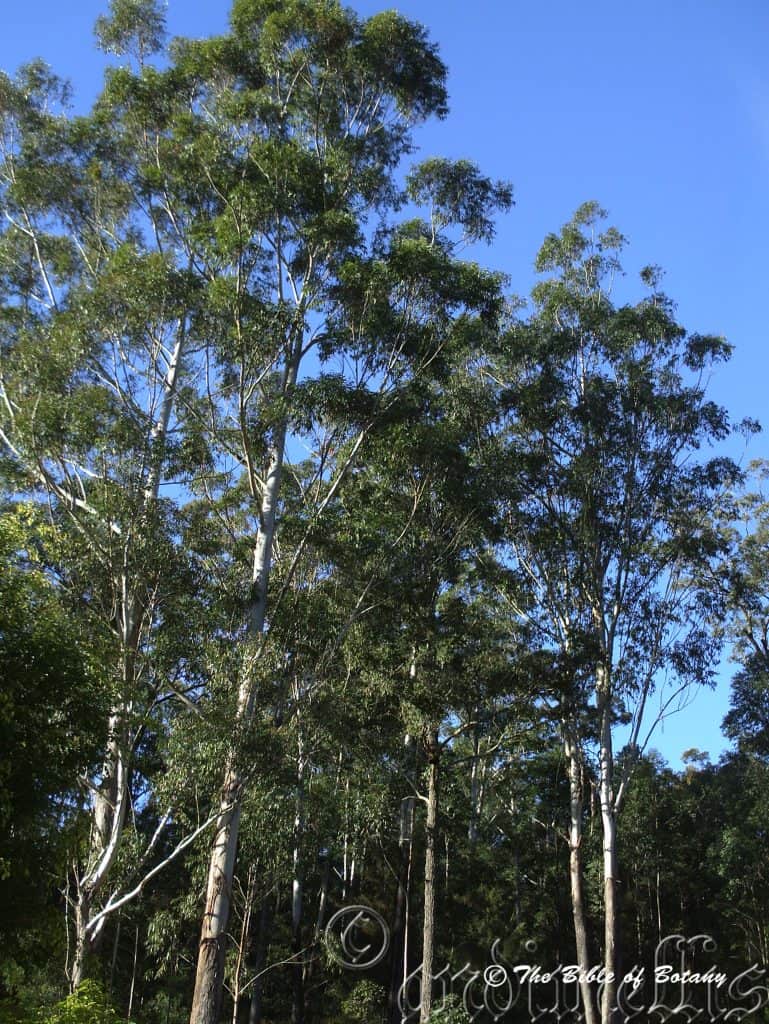

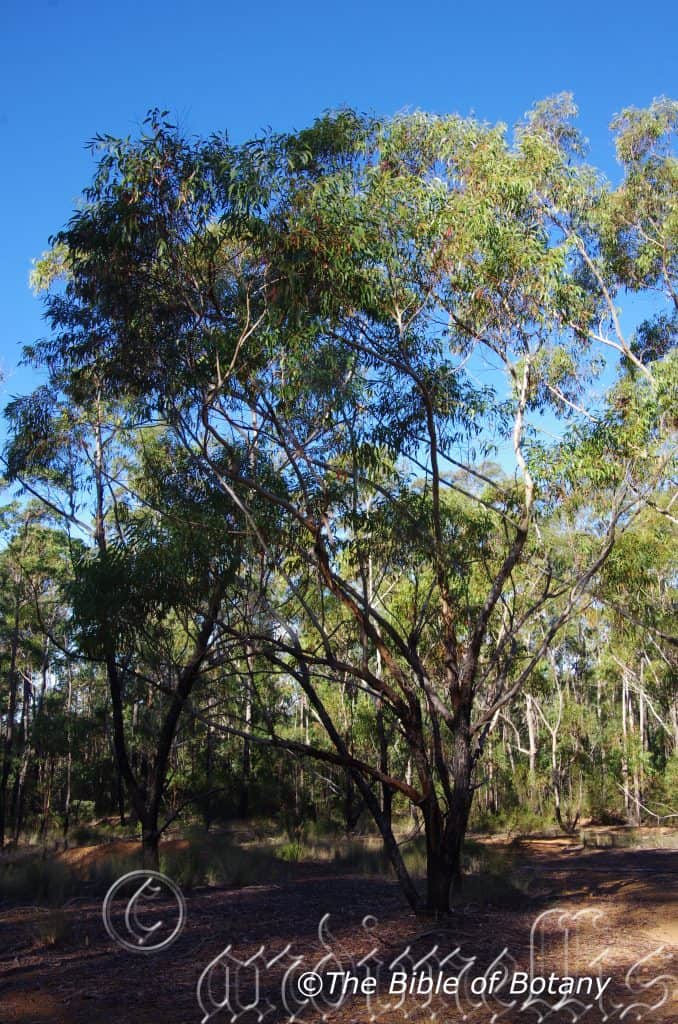



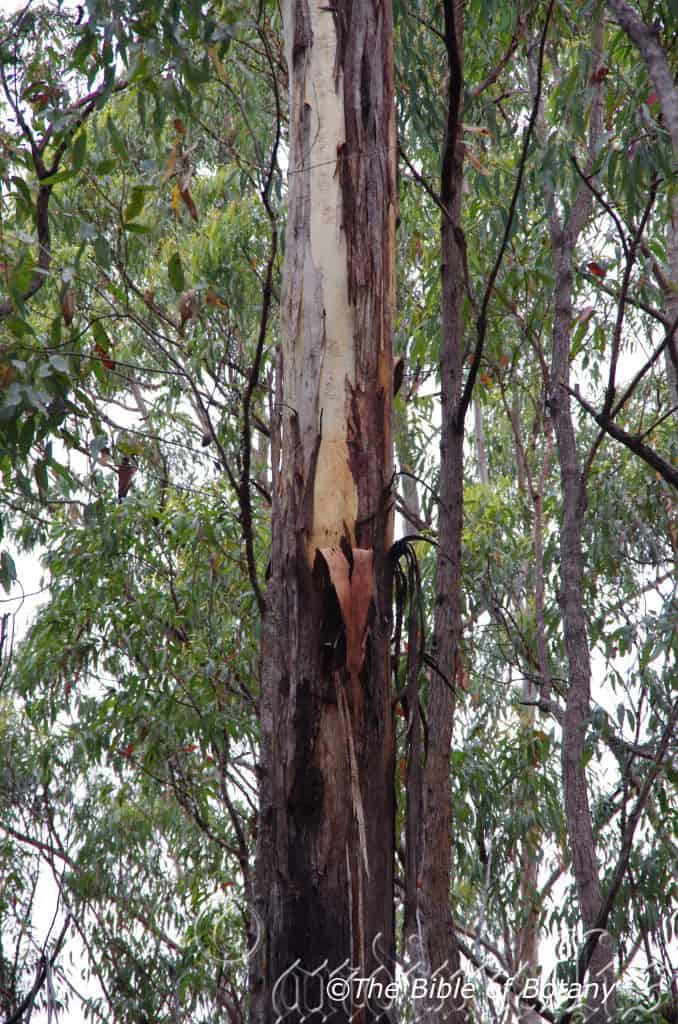

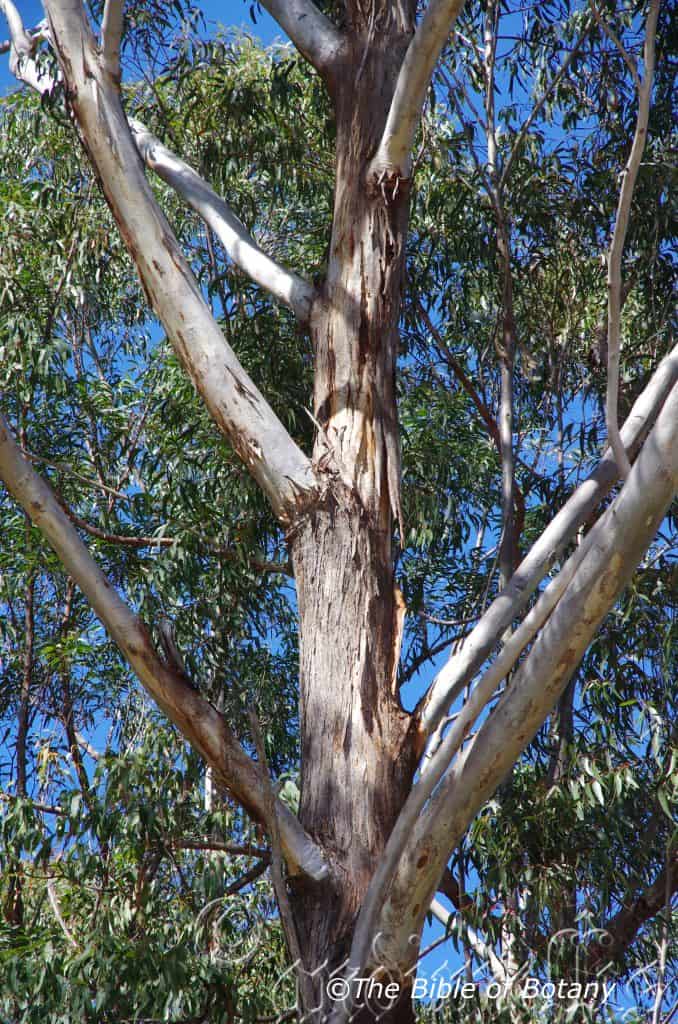

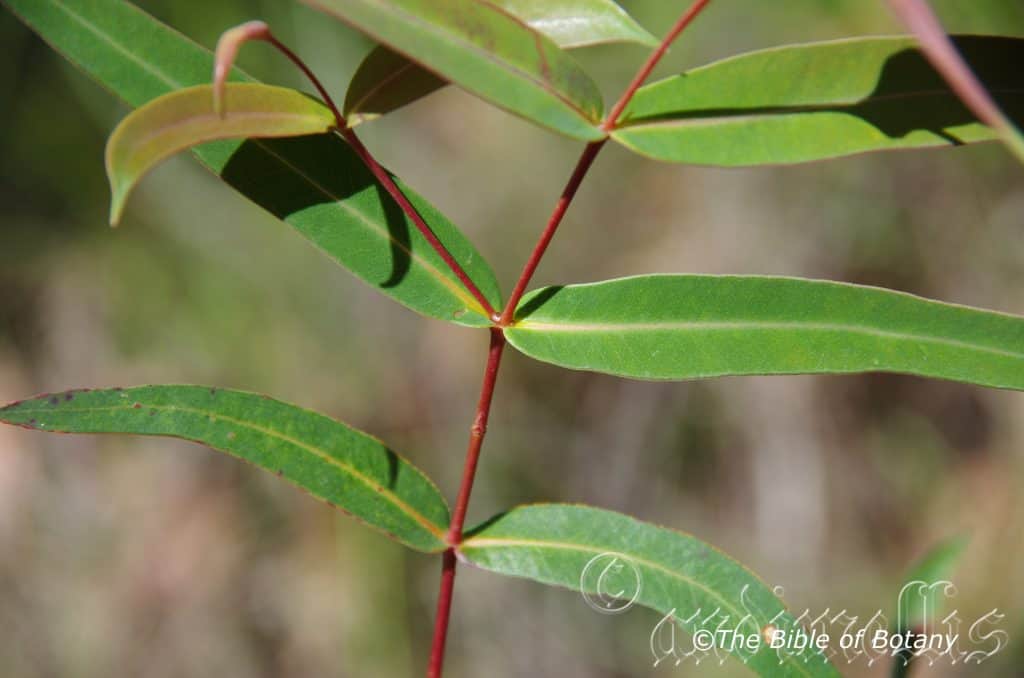
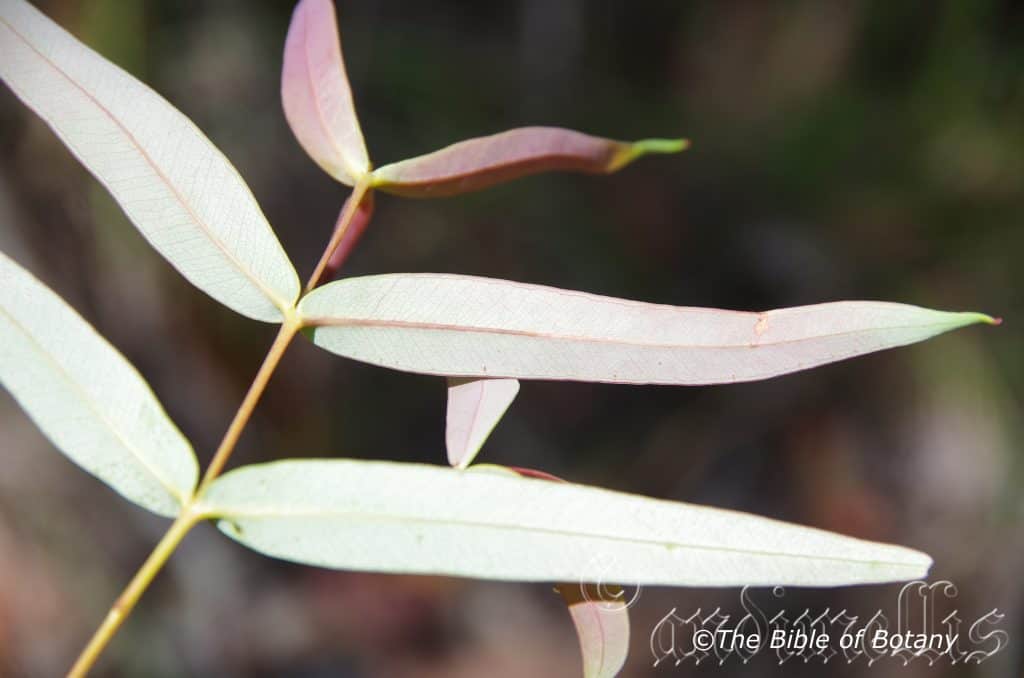
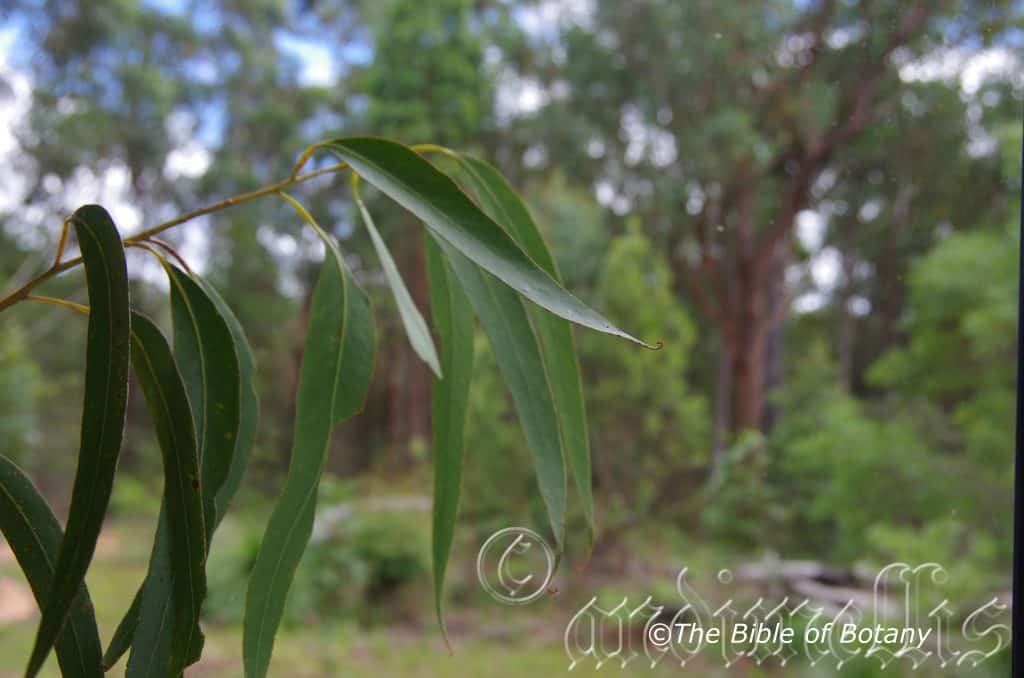
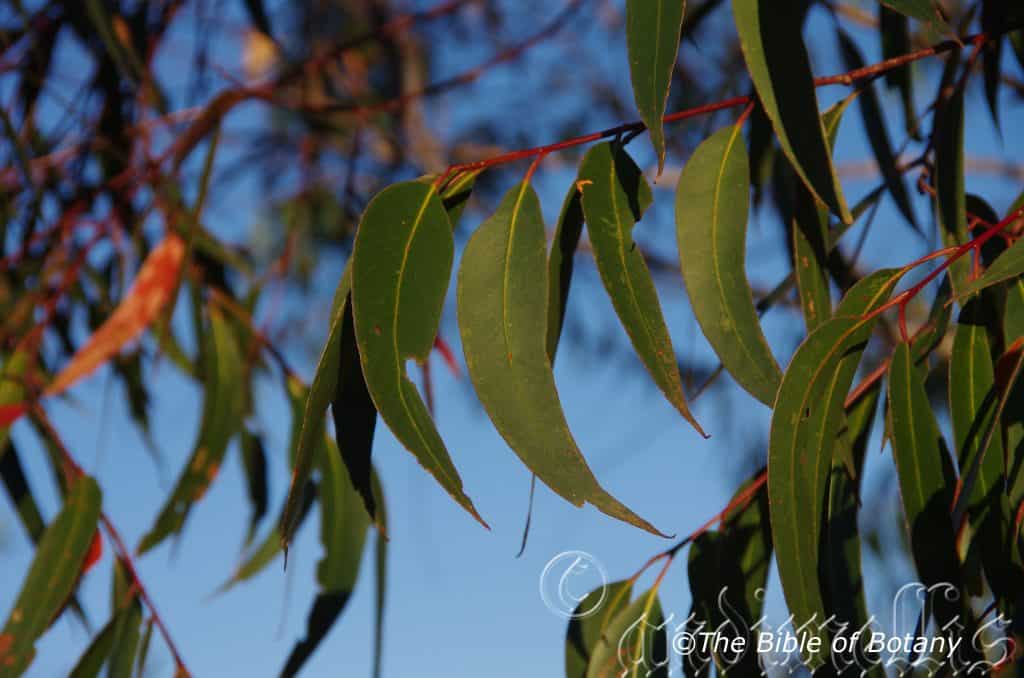
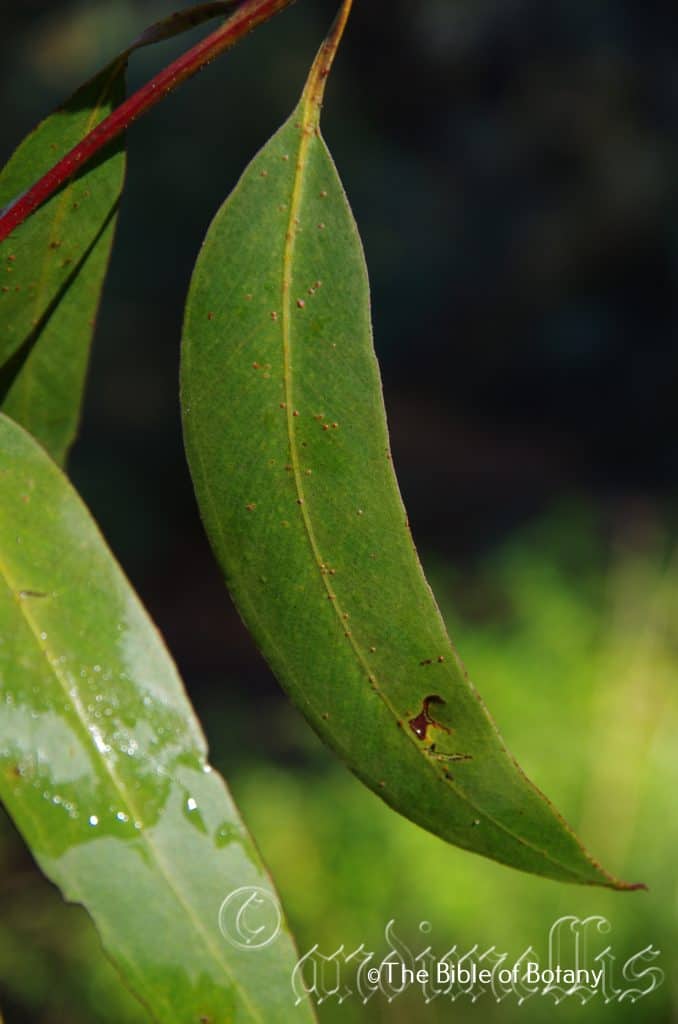
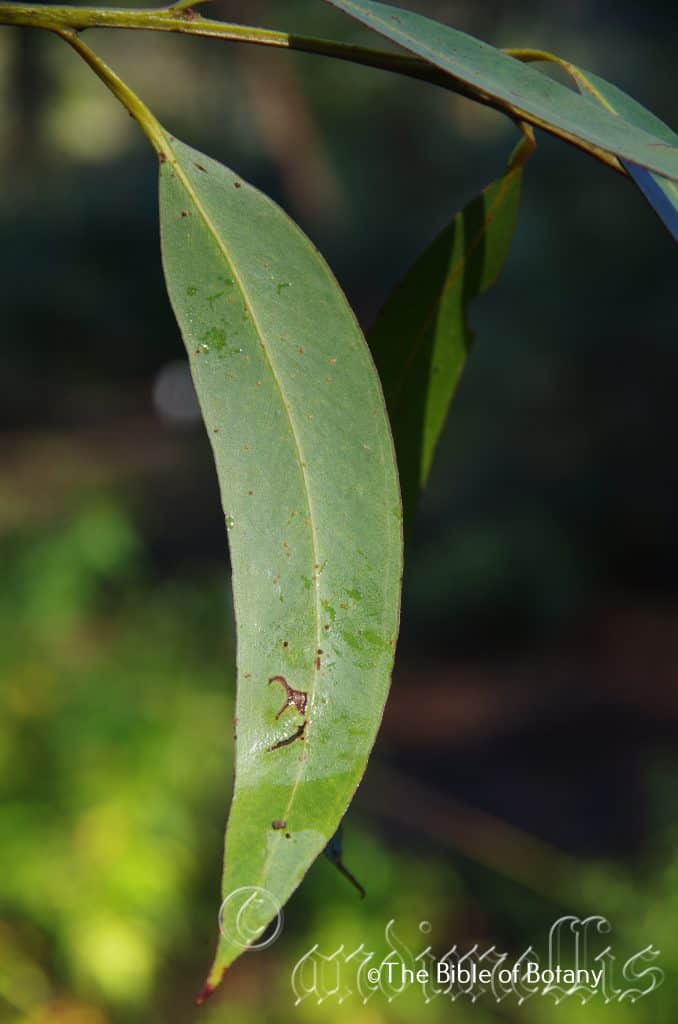
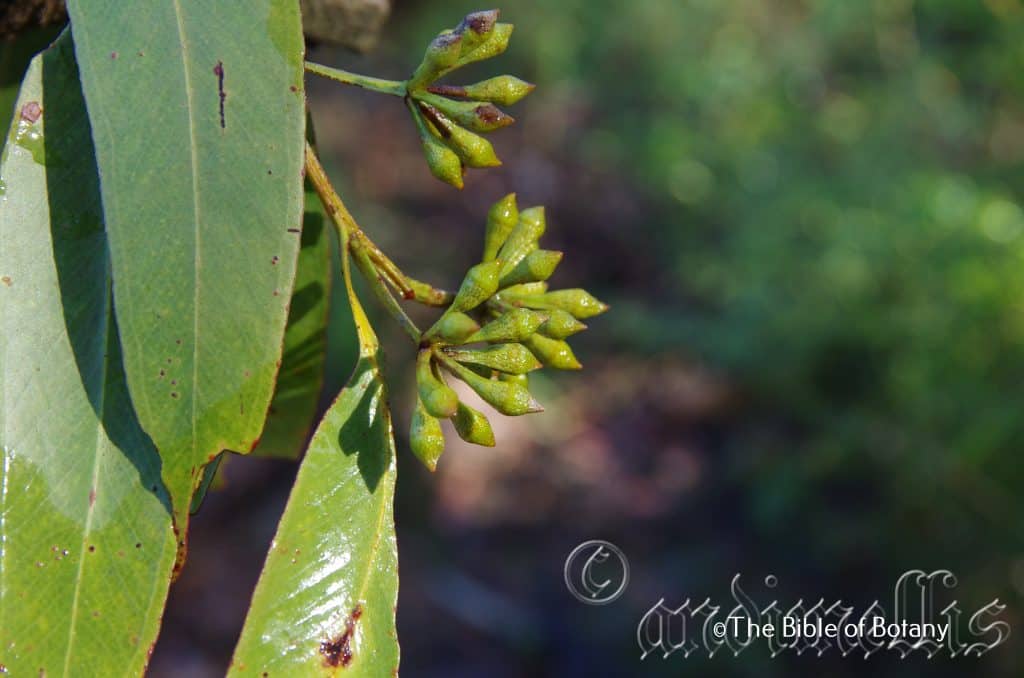
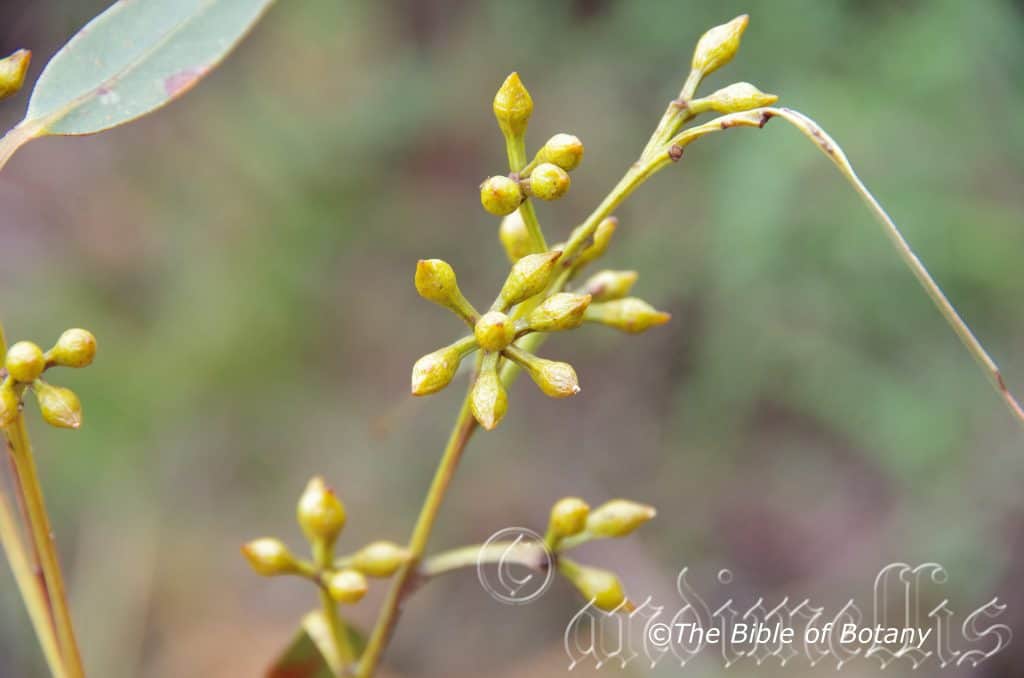
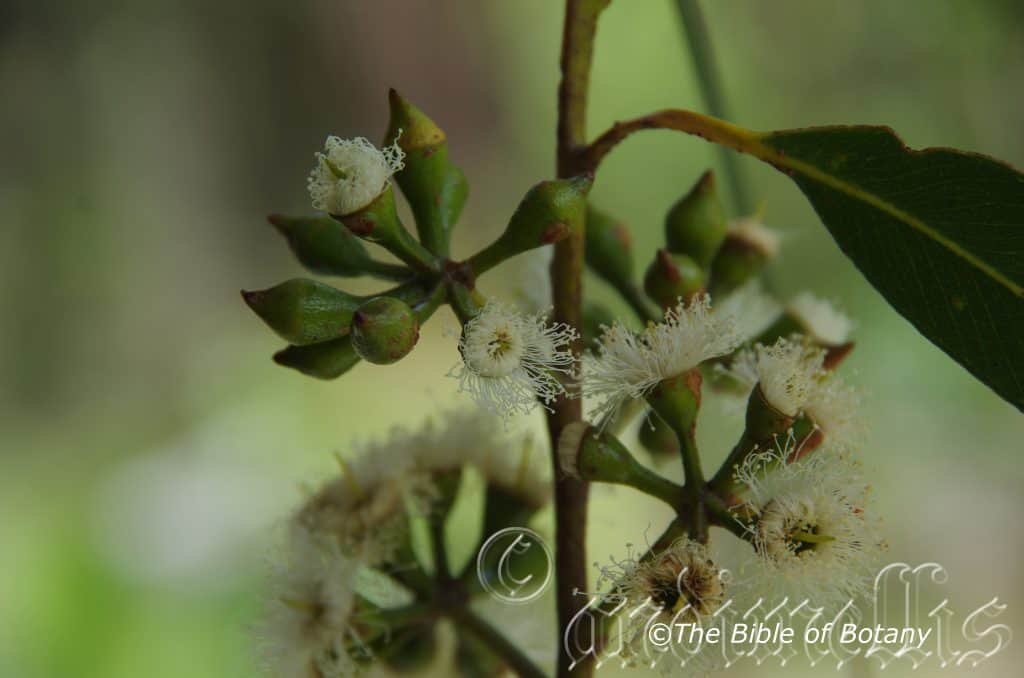
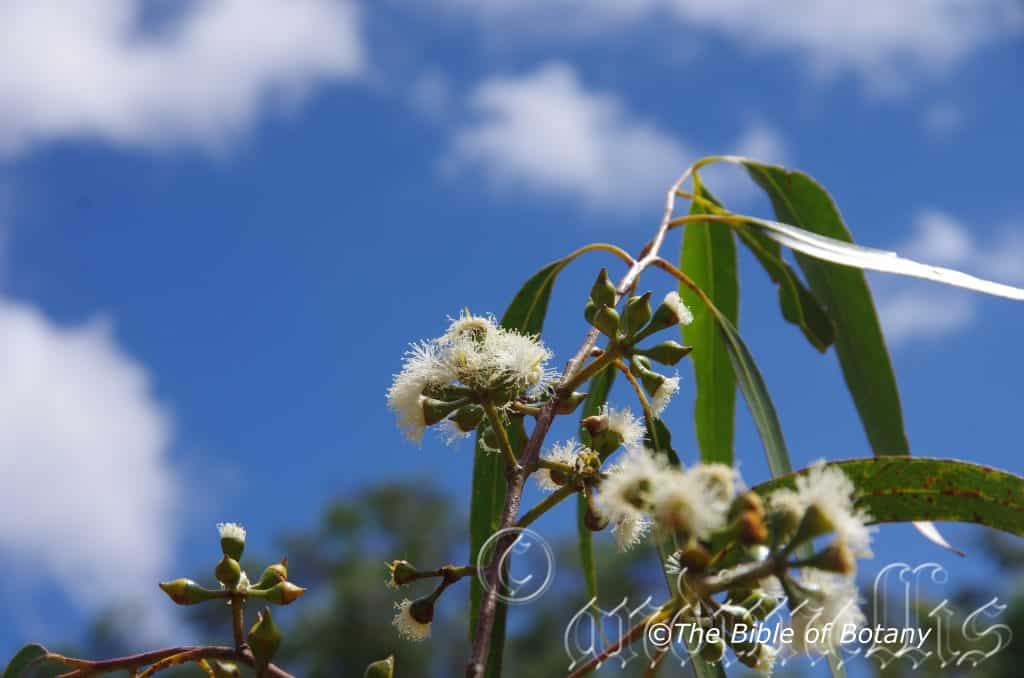
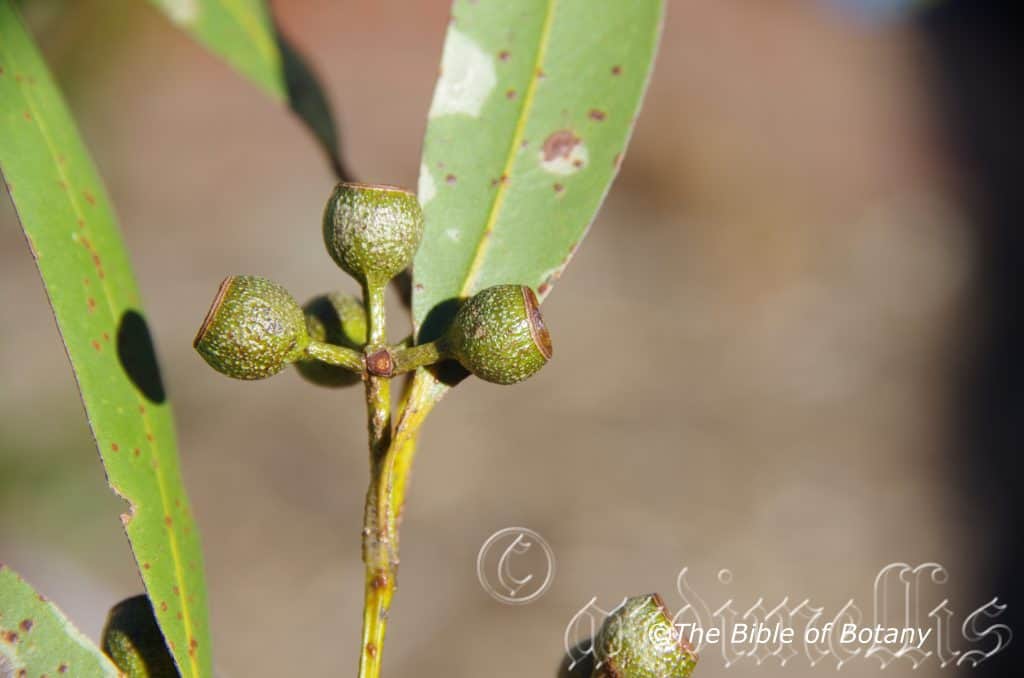


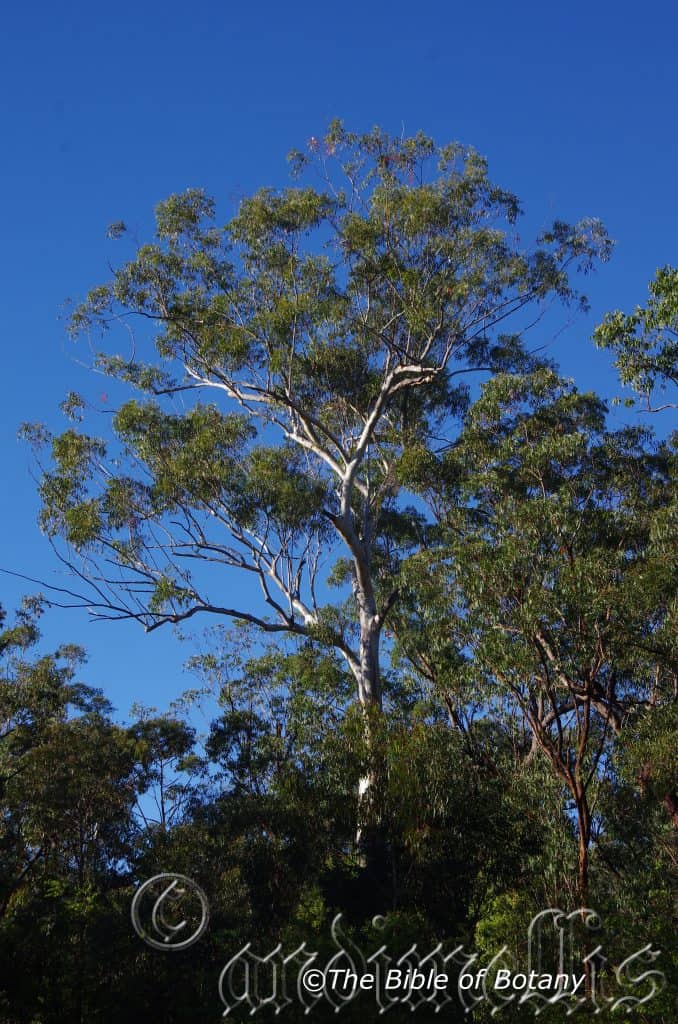
Eucalyptus pilularis
Classification:
Unranked: Eudicots
Unranked: Rosids
Order: Myrtales
Family: Myrtaceae
Genus: From Eu, which is Greek a prefix for good or well and Kaluptos, which is Ancient Greek for to cover up. It refers to the stamens, which have a lid or cover over them in the bud stage prior to opening.
Specie: From Pilule, which is Latin for a pill, small globules or balls. It refers to buds which resemble small globules.
Sub specie:
Common Name: Black Butt.
Distribution:
Eucalyptus pilularis is a common species growing on and east of the Great Dividing Range south from Fraser Island and Maryborough in south east Queensland to Nadgee in southern New South Wales.
https://avh.ala.org.au/occurrences/search?taxa=Eucalyptus+pilularis#tab_mapView
Habitat Aspect Climate:
Eucalyptus pilularis prefers full sun to light shade as a juvenile tree and full sun as it matures. It grows on slopes or alluvial flats adjacent to rainforests or in wet Eucalyptus forests. The altitude ranges from 2 meters ASL to 900 meters ASL.
The temperatures range from 0 degrees in July to 38 degrees in January.
The rainfalls range from lows of 800mm to an average of 1600mm annually.
Soil Requirements:
Eucalyptus pilularis prefers better quality sandy loams, light gritty clays, clay loams to medium clays. The soils are usually derived from brown basalts, black basalts, and shale or deep alluvial deposits. The soils pH ranges from 5pH to 6.5pH. It tolerates seasonal water logged soils, periodic inundation on the alluvial flats or along creeks and rivers or high water tables along creeks close to the coast. Non saline soils to very saline soils are tolerated as are salt laden winds.
Height & Spread:
Wild Plants: 45m to 80m by 10 to 25m.
Characteristics:
Eucalyptus pilularis is a very tall straight trunked tree, which has a bole nearly two thirds of its length. The lower third of the trunk is rough flaky, fibrous and is persistent. This fibrous bark is deep grey-brown in colour. The white or creamy white bark on the upper section is decorticating. It is shed in long thin ribbons up to 1500mm in length. The glabrous branches are white while the branchlets are reddish brown glabrous to semi rough. Only the new juvenile growth is pale lime green.
Juvenile leaves are opposite, concolourous, broad lanceolate and dull green.
The alternate disjunct adult leaves of Eucalyptus pilularis are lanceolate straight or slightly falcate and measure 90mm to 160mm in length and 15mm to 30mm in width. The bases are tapering to cuneate and oblique while the apexes are acute. The petioles measure 5mm to 8mm in length. The concolourous laminas are semi glossy, and olive green. The laminas are flat while the margins are entire. The very faint lateral veins are penniveined.
The inflorescences of Eucalyptus pilularis are born as umbellasters containing 7 to 11 flowers from near the terminal leaf axis. The flattened peduncle measures 10mm to 17mm in length while the pedicels measure 3mm to 6mm in length.
The buds are clavate or fusiform, glaucous and measure 7mm to 10mm in length by 3mm to 5mm in diameter. The conical buds have a long rostrate beak on the operculum. The calyptra measures 2.5mm to 3mm in length.
The stamens are white with white or cream anthers. They measure 5mm to 6mm in length while the greenish yellow style measures 5.5mm to 6.5mm in length the disc is deep green. The flowers of Eucalyptus pilularis appear from October through to April.
Fruit globose, hemispherical or ovoid, 6–11 mm long, 7–11 mm diam.; disc depressed or flat; valves enclosed or rim-level.
The farinaceous fruits are globose hemispherical to ovoid gum nuts. The gum nuts measure 6mm to 11mm in length by 7mm to 11mm in diameter. The disc and 4 valves are both depressed.
The rusty brown flattened ovoidal seeds measure 2mm to 2.5mm in length.
Wildlife:
The flowers are light nectar producers but are still are very attractive to most honeyeaters, lorikeets, flying foxes, possums and many insects.
The trees are a host to the leaf fungi from the Teratosphaeria genus. These fungi distort the leaves and cause necrosis in the leaves. (Necrosis is the loss of colour and pigmentation.) Leaves eventually die and fall off. It can completely defoliate young trees and thus inhibits healthy growth. Bellbirds can always be seen on the trees in the mountains so they must support a large variety of thrips, lerps and other sap sucking insects.
This is a very important tree for koalas and is planted along most parks and farms to support them. The brush tail and ring tail possums also inhabit the trees hollows and feed on the flowers. The small sugar gliders make small hollows communal homes therefore it is important to preserve large trees close to the city. These hollows may have entrances as small as a few centimetres in diameter.
This specie produces a manna gum which is attractive to the eastern sugar glider, Petaurus breviceps.
Cultivation:
Eucalyptus pilularis is a large tree for large gardens and very useful for that parkland scenes in sub-tropical and warm temperate zones. It is ideal on lighter moisture retentive soils and alluvial flats. It is fast growing so gives good effects at an early age. In cultivation it will grow from 35 meters to 40 meters in height by 20 meters to 25 meters in diameter. If planted in isolation as a specimen tree, care should be taken to ensure it is planted in deep friable soils as it can become top heavy and be blown over in gale force winds.
It is ideal in a mixed park like situation where the barks contrast well with other Eucalyptus specie, Corymbia specie and Angophora specie.
This is a beautiful tree for large gardens and parks. It is suitable for animal shelters as it is very quick growing. It is also an excellent tree for shelter belts on farms. Its suitability in high wind zones could be in question as it often develops a large bushy crown. Trees that are planted in the open ground should not be fertilized after the initial dose as the trees tend to become top heavy and are subject to being blown over. It is best to let them first develop a strong deep root first or plant them in groups so that they help protect each other.
Like most large Eucalyptus specie leaf drop, dropping of small branches means continual lawn maintenance but then in a rainforest or bush garden they supply good quantities of leaf litter. Trees grown in the open are subject to branches breaking in strong winds and even the trees being completely uprooted. This is particularly apparent where trees are being fertilized with plants becoming top heavy.
Propagation:
Seeds: Sow fresh seeds of Eucalyptus pilularis into a seed raising mix. When the seedlings are 25mm to 50mm tall, prick them out and plant them into 50mm native tubes using a good organic mix.
Fertilize using Seaweed, fish emulsion or organic chicken pellets soaked in water and apply the liquid on an alternate basis. Fertilize every two months.
Once the seedlings reach 200 to 250mm in height plant them out into their permanent position. Use centers of 5 meters to 6 meters if planting for plantation use, 10 meters to 12 meters for bush regeneration projects or 10 meters to 20 meters for a park like scene.
Further Comments from Readers:
“Hi reader, it seems you use The Bible of Botany a lot. That’s great as we have great pleasure in bringing it to you! It’s a little awkward for us to ask, but our first aim is to purchase land approximately 1,600 hectares to link several parcels of N.P. into one at The Pinnacles NSW Australia, but we need your help. We’re not salespeople. We’re amateur botanists who have dedicated over 30 years to saving the environment in a practical way. We depend on donations to reach our goal. If you donate just $5, the price of your coffee this Sunday, We can help to keep the planet alive in a real way and continue to bring you regular updates and features on Australian plants all in one Botanical Bible. Any support is greatly appreciated. Thank you.”
In the spirit of reconciliation we acknowledge the Bundjalung, Gumbaynggirr and Yaegl and all aboriginal nations throughout Australia and their connections to land, sea and community. We pay our respect to their Elders past, present and future for the pleasures we have gained.

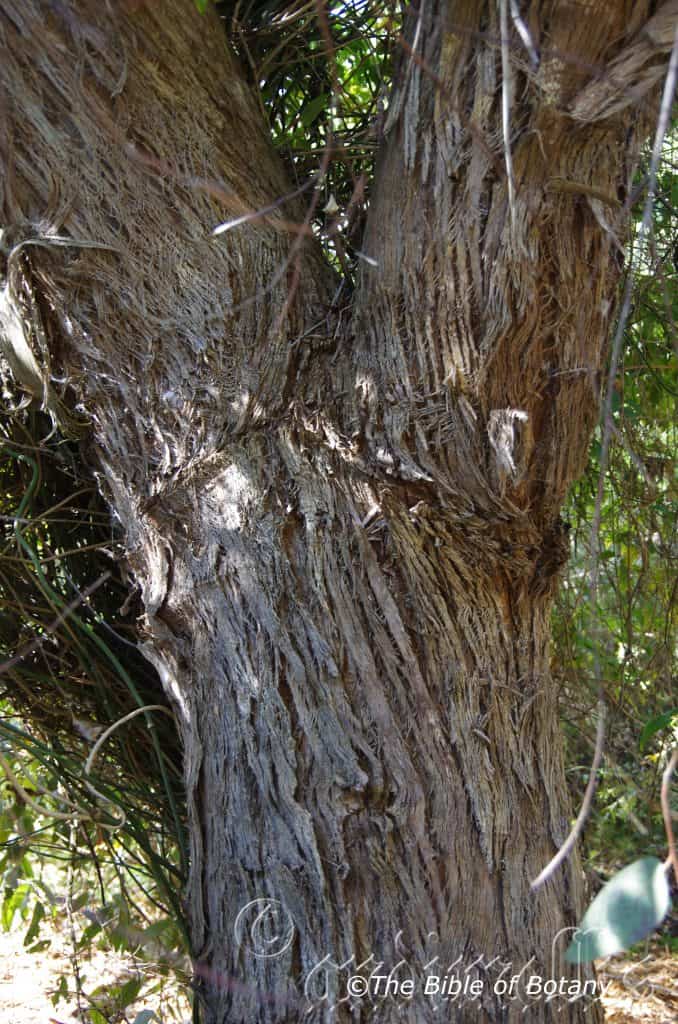
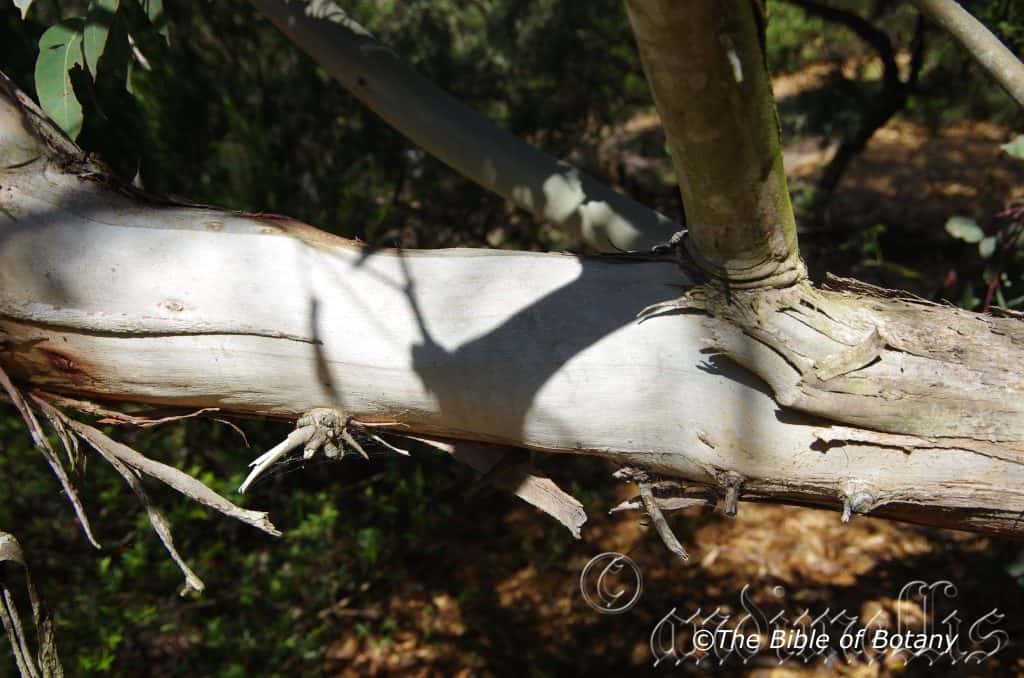
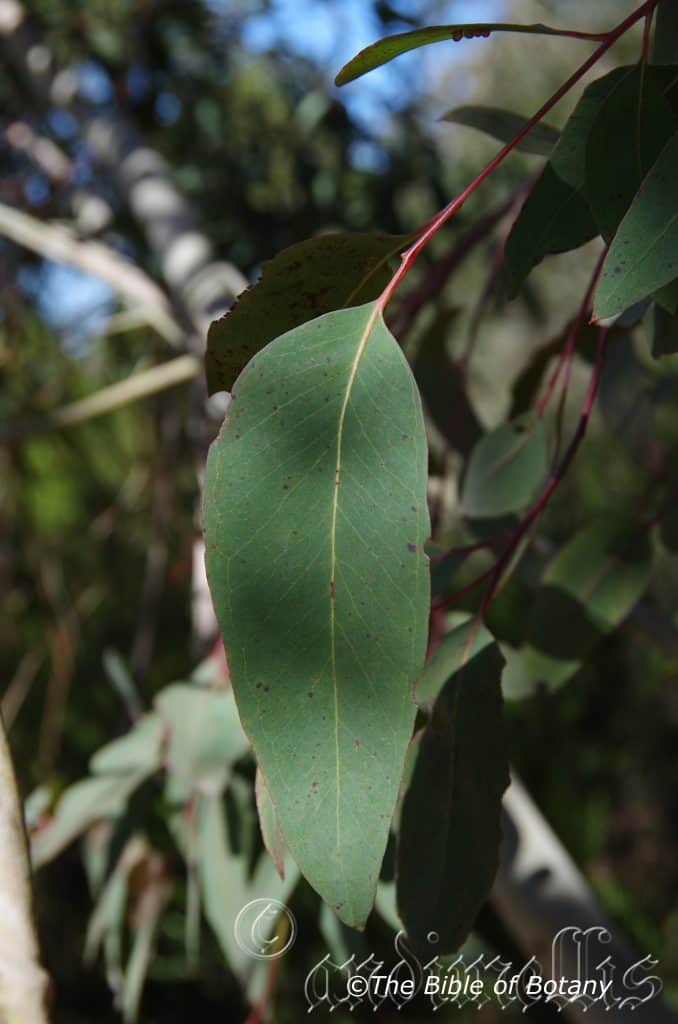

Eucalyptus piperita
Classification:
Unranked: Eudicots
Unranked: Rosids
Order: Myrtales
Family: Myrtaceae
Genus: From Eu, which is Greek a prefix for good or well and Kaluptos, which is Ancient Greek for to cover up. It refers to the stamens, which have a lid or cover over them in the bud stage prior to opening.
Specie: From Peperita, which is latin for peppermint. It refers to usually the leaves, which have a strong peppermint fragrance.
Sub specie:
Common Name:
Distribution:
Eucalyptus piperita is found in a line south and to the coast from Taree west to Mudgee and Hill End and south to Nelligen in central eastern New South Wales. It is found east of the Great Dividing Range to the coast.
https://avh.ala.org.au/occurrences/search?taxa=Eucalyptus+piperita#tab_mapView
Habitat Aspect Climate:
Eucalyptus piperita prefers full sun to light shade. It usually grows in open forest and dry closed woodlands. The altitude ranges from 5 meters to 1000 meters ASL.
The temperatures range from minus 4 degrees in July to 39 degrees in January.
The rainfall ranges from lows of 600mm to an average of 1000mm annually.
Soil Requirements:
Eucalyptus piperita prefers deep fertile sandy loams. The soils are usually derived from sandstones, basalt rocks or alluvial screes and alluvial deposits. The soils pH ranges from 4.5pH to 6.5pH. It does not tolerate water logged soils though soils often have good supplies of ground water. Non saline soils to slightly saline soils are tolerated.
Height & Spread:
Wild Plants: 12m to 20m by 7m to 12m.
Characteristics:
Eucalyptus piperita bark is rough on the trunk and larger limbs. It is grey or grey-brown and finely fibrous. The limbs are usually smooth, white to cream or grey and often powdery. The terete juvenile stems are glabrous or at times sparsely covered in tuberculate lumps. The opposite juvenile leaves are sessile to subsessile and amplexicaulis for 5 to 7 nodes becoming alternate and petiolate. The ovate to elliptical, discolorous leaves are dull, blue-green on the upper lamina and strongly glaucous on the lower lamina and measure 43mm to 125mm in length by 18mm to 65mm in width. The bases are truncate or taper to the petiole, tending to oblique, while the apexes are acute.
The terete petioles on mature leaves measure 12mm to 27mm in length. The lanceolate to falcate, concolorous, dull, green to blue-green leaves measure 70mm to 170mm in length by 12mm to 35mm in width. The bases are oblique or taper to the petiole. The mid vein is prominent on both laminas on the basal half, while the lateral veins at about 45 degrees to the midvein, moderately to densely reticulate, with the intramarginal vein parallel to and away from margins. The oil glands are island or obscure.
The inflorescences of Eucalyptus planchoniana are born as umbellasters containing 9,11,13 or at times 15 flowers from near the terminal leaf axis. The flattened peduncle measures 8mm to 25mm in length while the terete pedicels measure 2mm to 6mm in length. The mature fusiform buds measure 5mm to 7 mm in length by 2mm to 3mm in diameter. The scar is absent. The conical to beaked operculum is discarded as the stamens emerge. The irregularly flexed, reniform to cordate, fertile, anthers are versatile, dorsifixed and dehisce along confluent slits. The short, stout style tapers from the deep green disc to the stigma. The white flowers white in April, May and December.
The sessile to sub sessile barrel-shaped capsules measure 5mm to 8mm in length by 4mm to 7mm in diameter. The disc is descending, while the 4 or at times 3 valves are enclosed.
The deep brown to deep grey or black, pyramidal or obliquely pyramidal, dorsal surface usually smooth seeds measure 1.5mm to 2.5mm in length. The hilum is terminal.
Wildlife:
The flowers on Eucalyptus piperita are medium to high nectar producers, supply a high protein pollen but are known as a breeding interrupting tree sending the queen off laying eggs. It is very attractive to most honeyeaters, lorikeets, flying foxes, possums and many insects. It is a substandard koala tree that is used at times sparingly. Sugar gliders also frequent the tree when in flower especially when the trees have a continuous corridor. This may have something to do with the needle like bark splinters of trees in the open or safety reasons in getting to these trees. Black cockatoos red tailed cockatoos and sulphur crested cockatoos eat the ripening seeds. The ground below our trees are always littered with flowers buds and gum nuts for 6 months of the year.
Cultivation:
Eucalyptus piperita is a medium size tree for medium to large gardens and very useful for that parkland scene or starting a forest garden in temperate to tropical zones including semi-arid areas. It is ideal on light sandy to pure sand or sandstone where they dry out very quickly. It is fast growing so give good effects at an early age. The trees can also be used very effectively as a large shrub by continually tip pruning. They will grow 15 meters to 18 meters tall by 6 meters to 8 meters in diameter as a tree in the open or 4 meters to 5 meters tall by 4 meters to 5 meters in diameter as a large shrub.
A friend has one that is 4 meters by 6 meters but insists he has to cut it back hard every 2 years to maintain the shape and size. The flowering is really worth it as it produces excellent size blooms in great quantities. In fact the whole tree is smothered in flowers which are quickly devoured by sugar gliders and lorikeets.
For the wildlife, its medium size, attractiveness, heavy flowering, large leaves and the ability to grow on very poor sandy soils this Eucalyptus should be grown far more than it is. It can tolerate frosts with temperatures down to minus 4 degrees once established and is drought tolerant on the coast.
It is ideal in a mixed park like situation where the barks contrast well with other smooth bark Eucalyptus specie, Corymbia specie and Angophora specie. Its suitability in high wind zones on sandy soils is unquestionable despite its large bushy crown. Trees in the open on headlands often form large shrubs with a strong bias on the opposite side to the prevailing winds which makes them an ideal tree for that large heath project or as a shelter belt. This is an unusual characteristic for plants with very large leaves.
Like most large Eucalyptus specie leaf drop, dropping of small branches means continual lawn maintenance but then in a rainforest or bush garden they supply good quantities of leaf litter. Trees grown in the open are subject to branches breaking in strong winds and even the trees being completely uprooted. This is particularly apparent where trees are being fertilized with plants becoming top heavy.
Propagation:
Seeds: Sow the seeds of Eucalyptus piperita into a seed raising mix. When the seedlings are 25 to 50 mm tall, prick them out and plant them into 50mm native tubes using a good organic mix.
Fertilize using Seaweed, fish emulsion or organic chicken pellets soaked in water and apply the liquid on an alternate basis. Fertilize every two months.
Once the seedlings reach 200 to 250mm in height plant them out into their permanent position.
Further Comments from Readers:
“Hi reader, it seems you use The Bible of Botany a lot. That’s great as we have great pleasure in bringing it to you! It’s a little awkward for us to ask, but our first aim is to purchase land approximately 1,600 hectares to link several parcels of N.P. into one at The Pinnacles NSW Australia, but we need your help. We’re not salespeople. We’re amateur botanists who have dedicated over 30 years to saving the environment in a practical way. We depend on donations to reach our goal. If you donate just $5, the price of your coffee this Sunday, We can help to keep the planet alive in a real way and continue to bring you regular updates and features on Australian plants all in one Botanical Bible. Any support is greatly appreciated. Thank you.”
In the spirit of reconciliation we acknowledge the Bundjalung, Gumbaynggirr and Yaegl and all aboriginal nations throughout Australia and their connections to land, sea and community. We pay our respect to their Elders past, present and future for the pleasures we have gained.
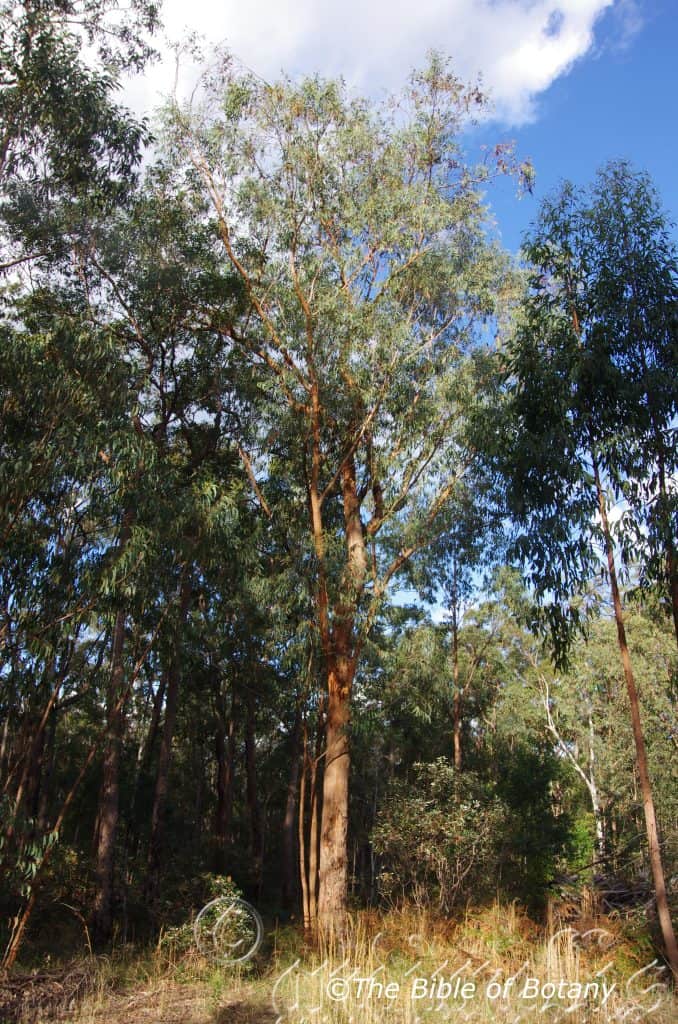
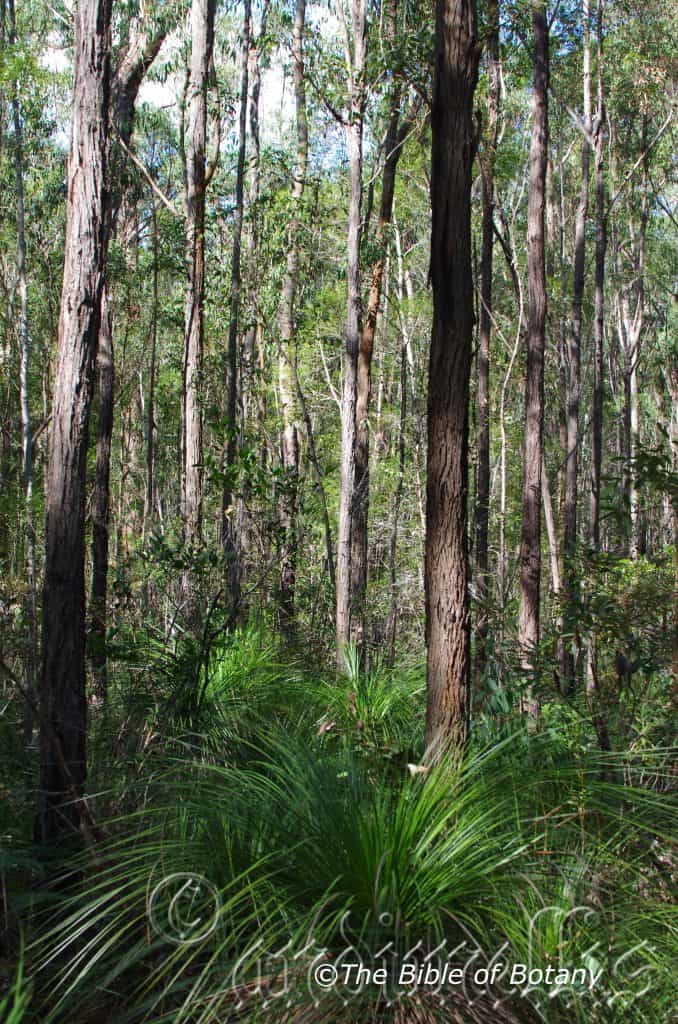

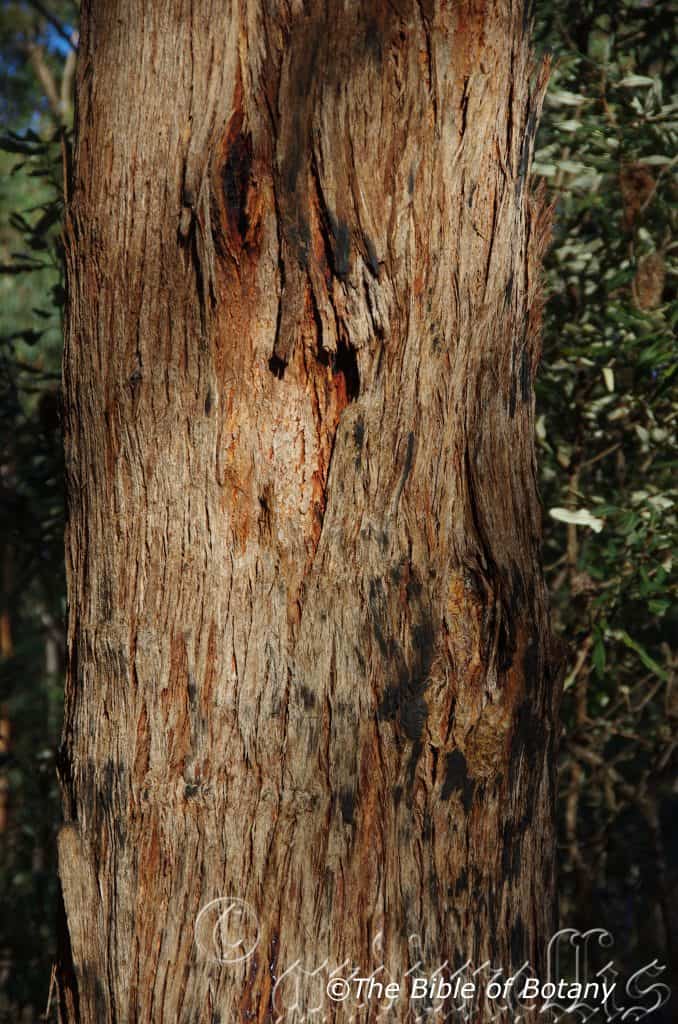

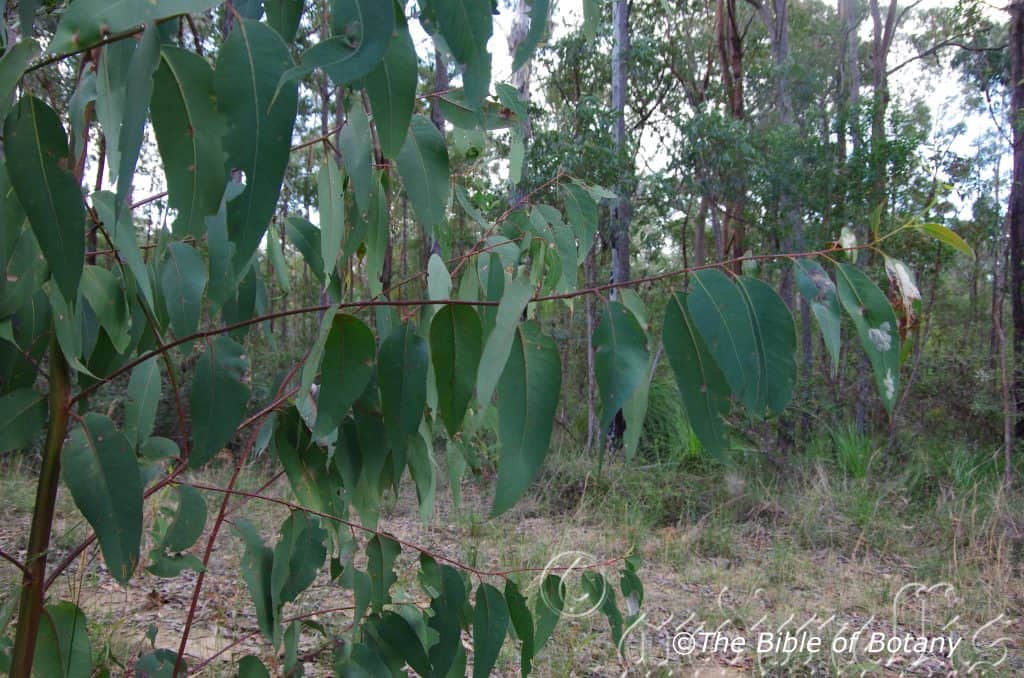

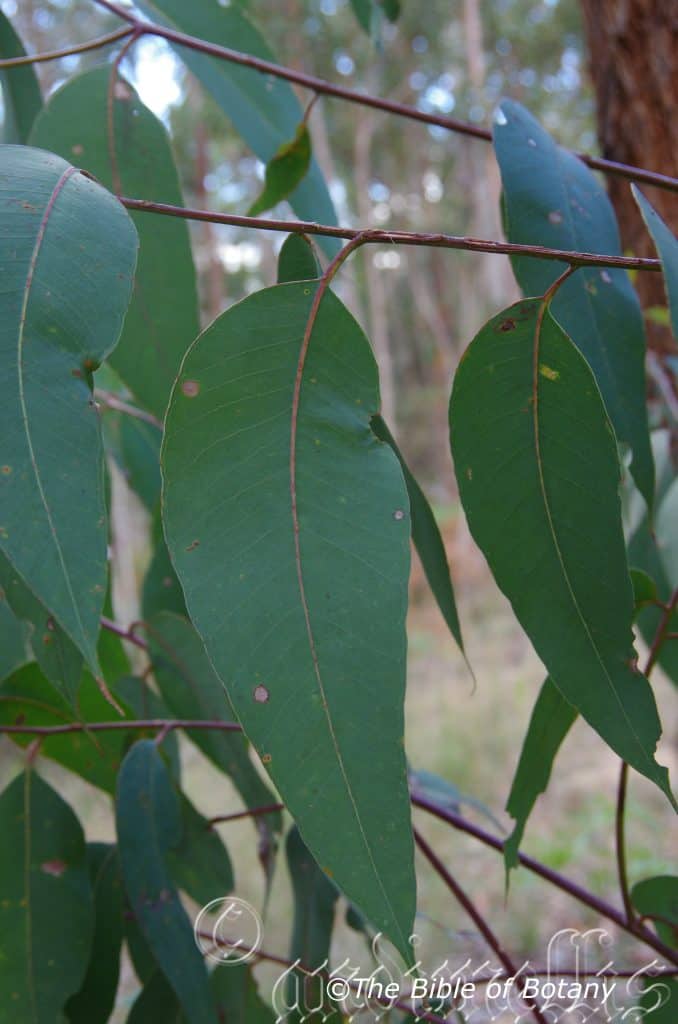
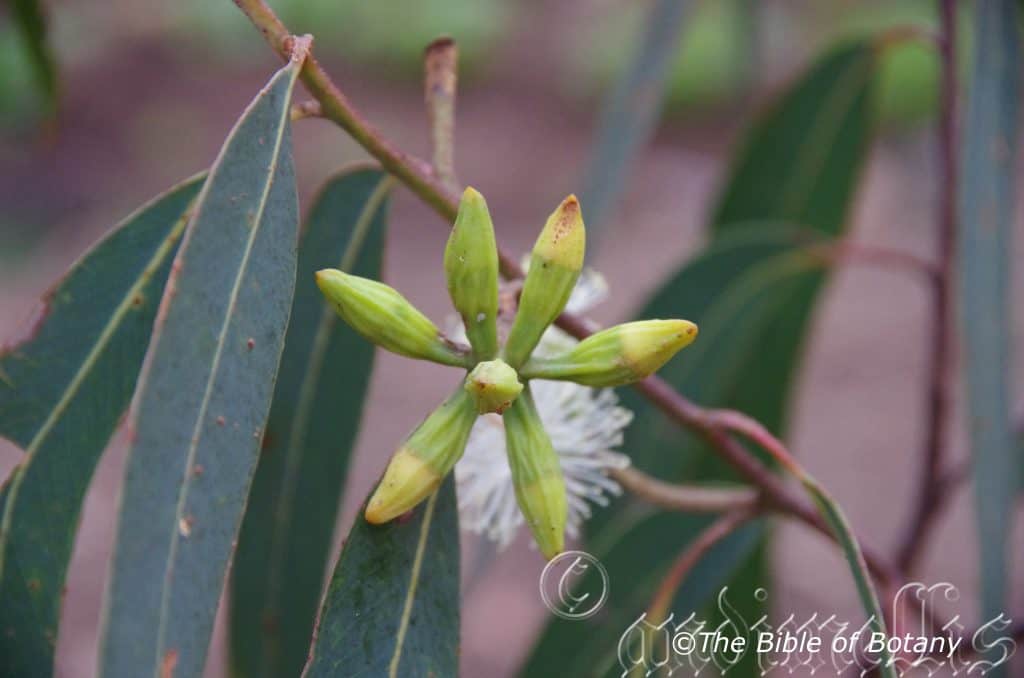
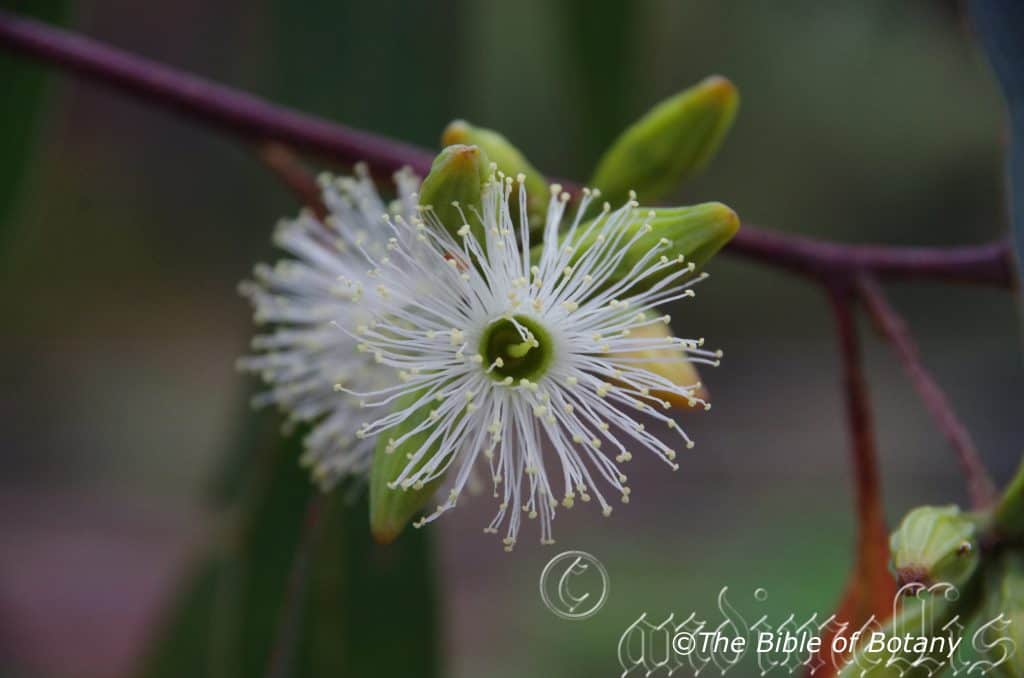
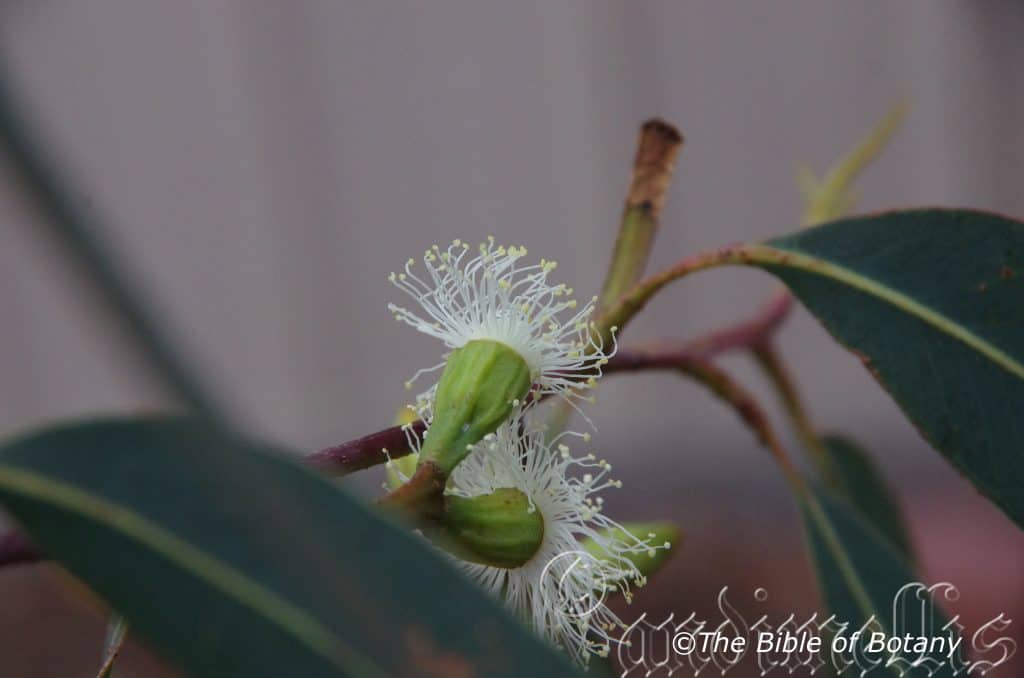
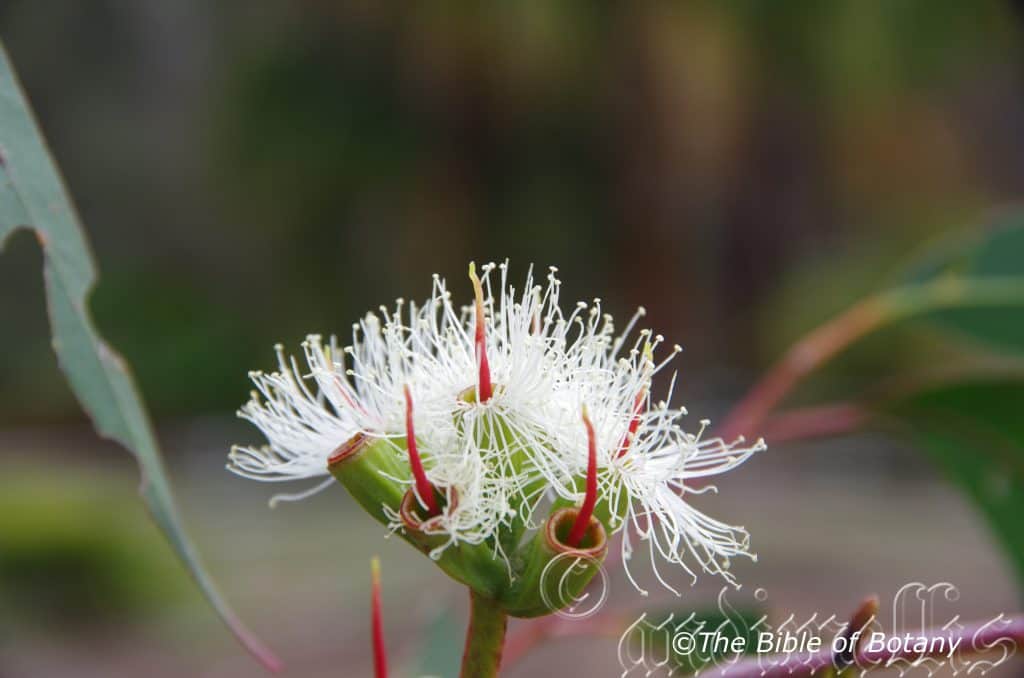
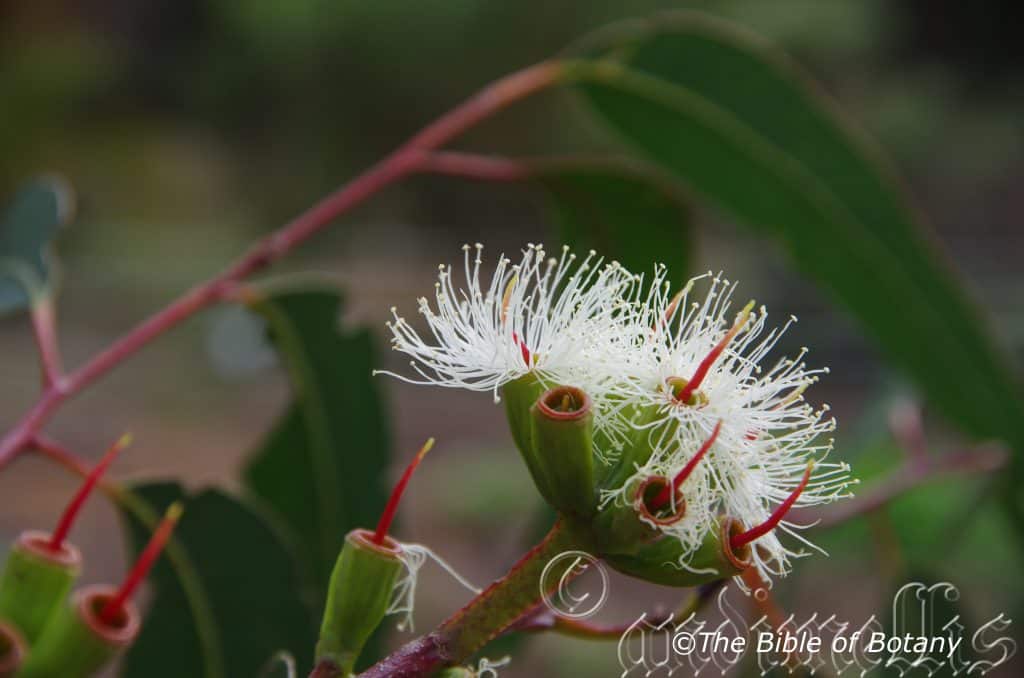
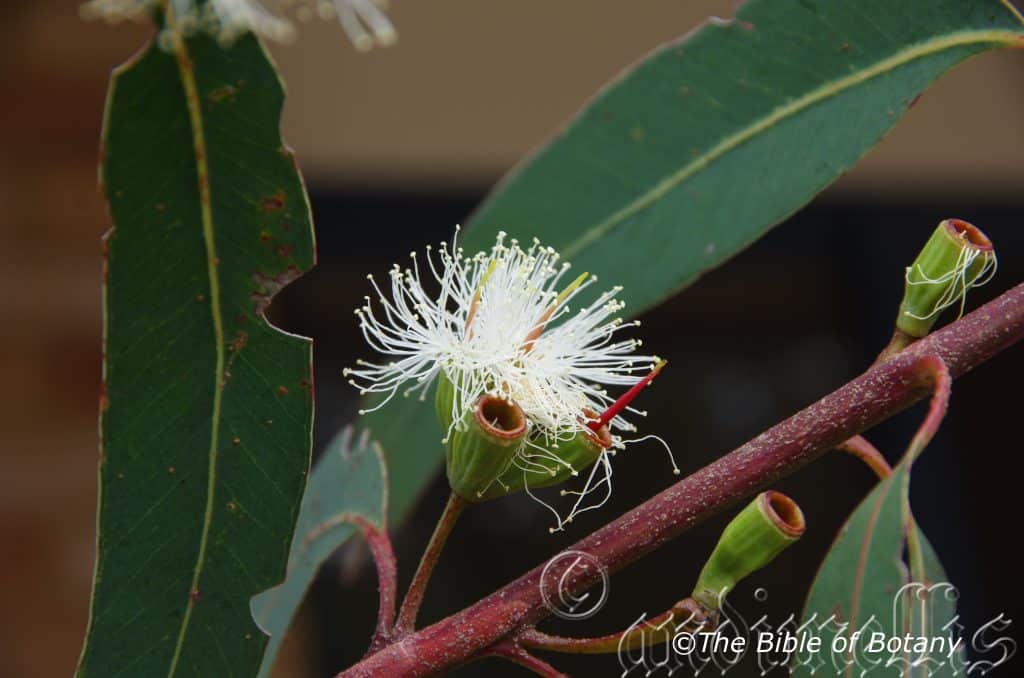

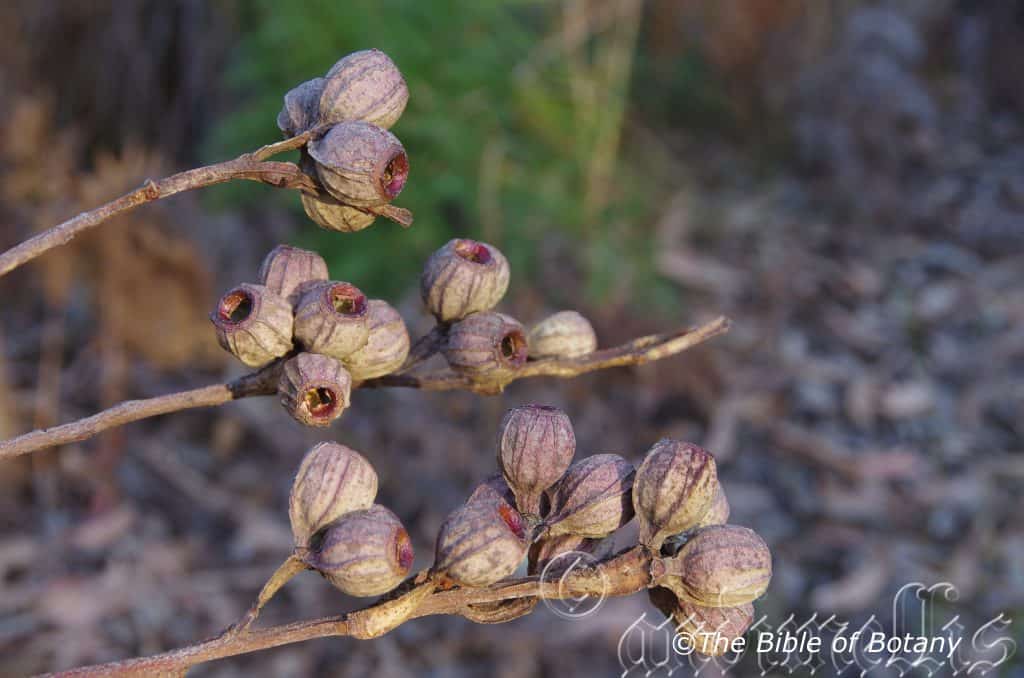
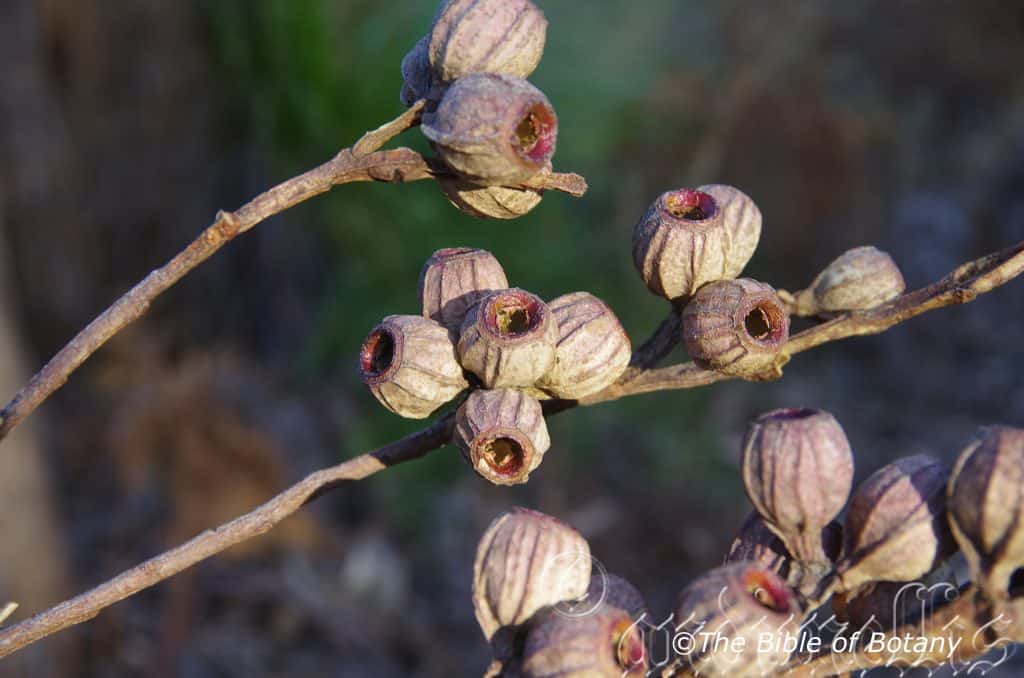

Eucalyptus planchoniana
Classification:
Unranked: Eudicots
Unranked: Rosids
Order: Myrtales
Family: Myrtaceae
Genus: From Eu, which is Greek a prefix for good or well and Kaluptos, which is Ancient Greek for to cover up. It refers to the stamens, which have a lid or cover over them in the bud stage prior to opening.
Specie: Is named in Honour of Jules Emile Planchon; 1823-1888, who was a professor of medicine and botany.
Sub specie:
Common Name: Planchonia’s Gum Tree or Needle Bark or Bastard Tallow Wood.
Distribution:
Eucalyptus planchoniana is found south from Brisbane, Redland Bay and Moreton Island to Stradbroke Island in south east Queensland to Laurieton in north eastern New South Wales. It is found east of the Great Dividing Range to the coast and off shore islands.
https://avh.ala.org.au/occurrences/search?taxa=Eucalyptus+planchoniana#tab_mapView
Habitat Aspect Climate:
Eucalyptus planchoniana prefers full sun to light shade as a juvenile tree. It usually grows close to the beaches on the back dunes but around the Grafton and Glenreagh areas the trees can be found growing at the tops of sand stone ridges in dry Eucalyptus forests as very large shrubs or small trees. The altitude ranges from 5 meters ASL to 300 meters ASL.
The temperatures range from 4 degrees in July to 36 degrees in January.
The rainfall ranges from lows of 800mm to an average of 1600mm annually.
Soil Requirements:
Eucalyptus planchoniana prefers skeletal to deep white to reddish or brownish coarse sands, fine sands to light fatty sands. The soils are usually derived from sandstones or accumulated peaty beach sands. The soils pH ranges from 4.5pH to 6.5pH. It does not tolerate water logged soils. Non saline soils to very saline soils are tolerated.
Height & Spread:
Wild Plants: 5m to 25m by 7m to 12m.
Characteristics:
Eucalyptus planchoniana is a small to medium size tree which often has a twisting look on the trunk. The persistent thick spongy yellow brown to a light red-brown bark is maintained to the medium branches. The bark is needle like and will break off in needle like pieces into the skin and may cause some local infection. The branches are smooth creamy grey to cream. The branchlets are deep red-maroon to burgundy-maroon and is decorticating. It is shed in short ribbons or patches.
Juvenile leaves are disjunct elliptical to ovate and concolourous being a blue green on both surfaces.
The adult alternate leaves of Eucalyptus planchoniana are lanceolate to broad lanceolate more often the latter and slightly falcate and measure 120mm to 180mm in length and 20mm to 45mm in width. The margins are entire. The dull, slightly compressed red-green, reddish-maroon or burgundy-maroon petiole measures 15mm to 22mm in length. The base is broad rounded-cuneate and is symmetrical or very slightly oblique while the apex is tapering or long acuminate. The concolourous laminas are semi glossy, are a mid blue-green on both laminas and hang perpendicularly downwards on the branchlets.
The inflorescences of Eucalyptus planchoniana are born as umbellasters containing 7 flowers from near the terminal leaf axis. The flattened peduncle measures 13mm to 30mm in length while the round pedicels measure 2mm to 10mm in length.
The bud’s hypanthium and calyptra are both covered in strong longitudinal striations. The buds are large cylindrical nuts that measure 20mm to 30mm in length by 8mm to 10mm in diameter. The bud scar is absent while the operculum is conical and measures 9mm to 16mm in length.
The filaments are white or creamy white with cream anthers. The filaments measure 10mm to 13mm in length.
The cream style measures 13mm to 16mm in length. The disc is a mid blue-green. The flowers of Eucalyptus planchoniana appear from December to February.
The fruits are ovoid gum nuts which are prominently ribbed. The gum nuts measure 18mm to 26mm in length by 16mm to 28mm in diameter. The disc is depressed revealing 4 enclosed valves. Seeds are ovoid to circular, flat to 4mm and reddish brown to deep brown in colour.
Wildlife:
The flowers are medium to high nectar producers, supply a high protein pollen but are known as a breeding interrupting tree sending the queen off laying eggs. It is very attractive to most honeyeaters, lorikeets, flying foxes, possums and many insects. It is a substandard koala tree that is used at times sparingly. Sugar gliders also frequent the tree when in flower especially when the trees have a continuous corridor. This may have something to do with the needle like bark splinters of trees in the open or safety reasons in getting to these trees. Black cockatoos red tailed cockatoos and sulphur crested cockatoos eat the ripening seeds. The ground below our trees are always littered with flowers buds and gum nuts for 6 months of the year.
Cultivation:
Eucalyptus planchoniana is a medium size tree for medium to large gardens and very useful for that parkland scene or starting a forest garden in temperate to tropical zones including semi-arid areas. It is ideal on light sandy to pure sand or sandstone where they dry out very quickly. It is fast growing so give good effects at an early age. The trees can also be used very effectively as a large shrub by continually tip pruning. They will grow 15 meters to 18 meters tall by 6 meters to 8 meters in diameter as a tree in the open or 4 meters to 5 meters tall by 4 meters to 5 meters in diameter as a large shrub.
A friend has one that is 4 meters by 6 meters but insists he has to cut it back hard every 2 years to maintain the shape and size. The flowering is really worth it as it produces excellent size blooms in great quantities. In fact the whole tree is smothered in flowers which are quickly devoured by sugar gliders and lorikeets.
For the wildlife, its medium size, attractiveness, heavy flowering, large leaves and the ability to grow on very poor sandy soils this Eucalyptus should be grown far more than it is. It can tolerate frosts with temperatures down to minus 4 degrees once established and is drought tolerant on the coast.
It is ideal in a mixed park like situation where the barks contrast well with other smooth bark Eucalyptus specie, Corymbia specie and Angophora specie. Its suitability in high wind zones on sandy soils is unquestionable despite its large bushy crown. Trees in the open on headlands often form large shrubs with a strong bias on the opposite side to the prevailing winds which makes them an ideal tree for that large heath project or as a shelter belt. This is an unusual characteristic for plants with very large leaves.
Like most large Eucalyptus specie leaf drop, dropping of small branches means continual lawn maintenance but then in a rainforest or bush garden they supply good quantities of leaf litter. Trees grown in the open are subject to branches breaking in strong winds and even the trees being completely uprooted. This is particularly apparent where trees are being fertilized with plants becoming top heavy.
Propagation:
Seeds: Sow the seeds of Eucalyptus planchoniana into a seed raising mix. When the seedlings are 25 to 50 mm tall, prick them out and plant them into 50mm native tubes using a good organic mix. Once the seedlings reach 200 to 250mm in height plant them out into their permanent position.
Fertilize using Seaweed, fish emulsion or organic chicken pellets soaked in water and apply the liquid on an alternate basis. Fertilize every two months.
Further Comments from Readers:
“Hi reader, it seems you use The Bible of Botany a lot. That’s great as we have great pleasure in bringing it to you! It’s a little awkward for us to ask, but our first aim is to purchase land approximately 1,600 hectares to link several parcels of N.P. into one at The Pinnacles NSW Australia, but we need your help. We’re not salespeople. We’re amateur botanists who have dedicated over 30 years to saving the environment in a practical way. We depend on donations to reach our goal. If you donate just $5, the price of your coffee this Sunday, We can help to keep the planet alive in a real way and continue to bring you regular updates and features on Australian plants all in one Botanical Bible. Any support is greatly appreciated. Thank you.”
In the spirit of reconciliation we acknowledge the Bundjalung, Gumbaynggirr and Yaegl and all aboriginal nations throughout Australia and their connections to land, sea and community. We pay our respect to their Elders past, present and future for the pleasures we have gained.
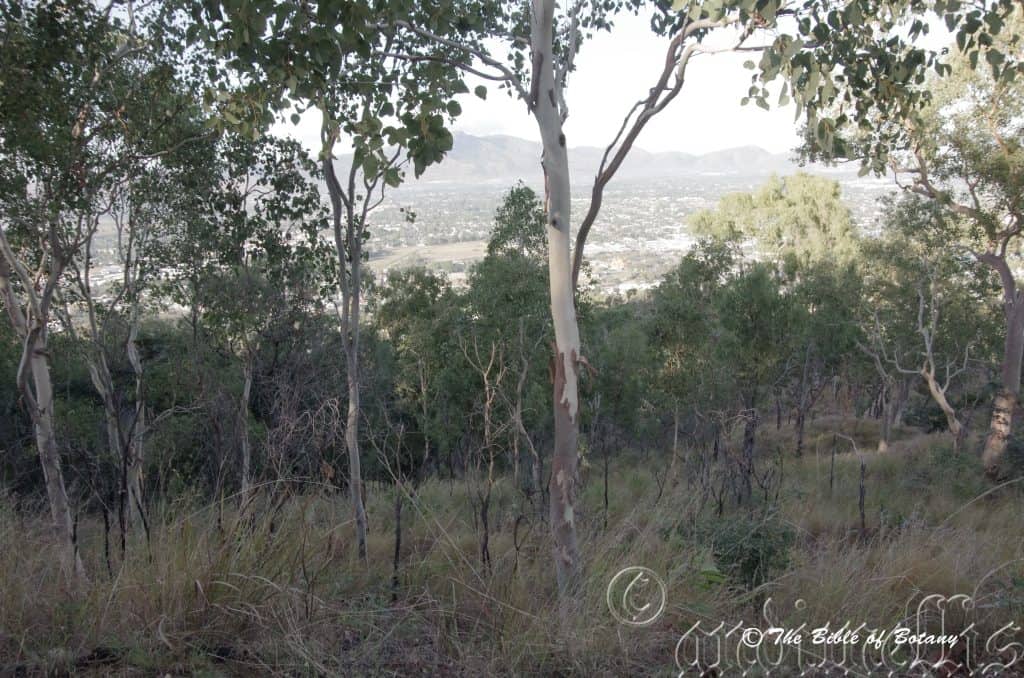
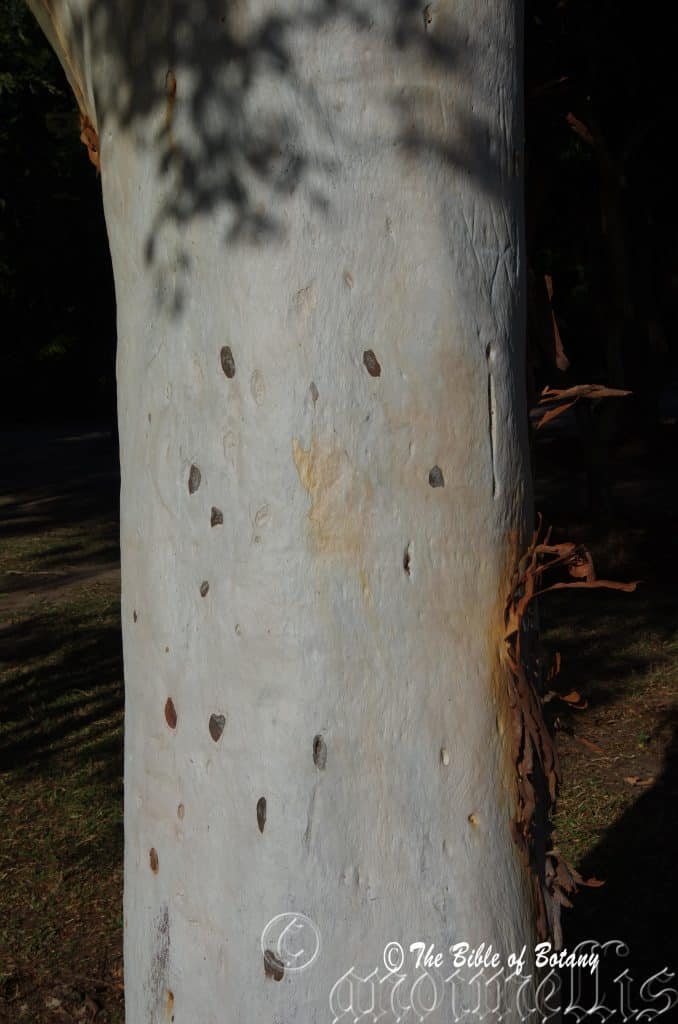
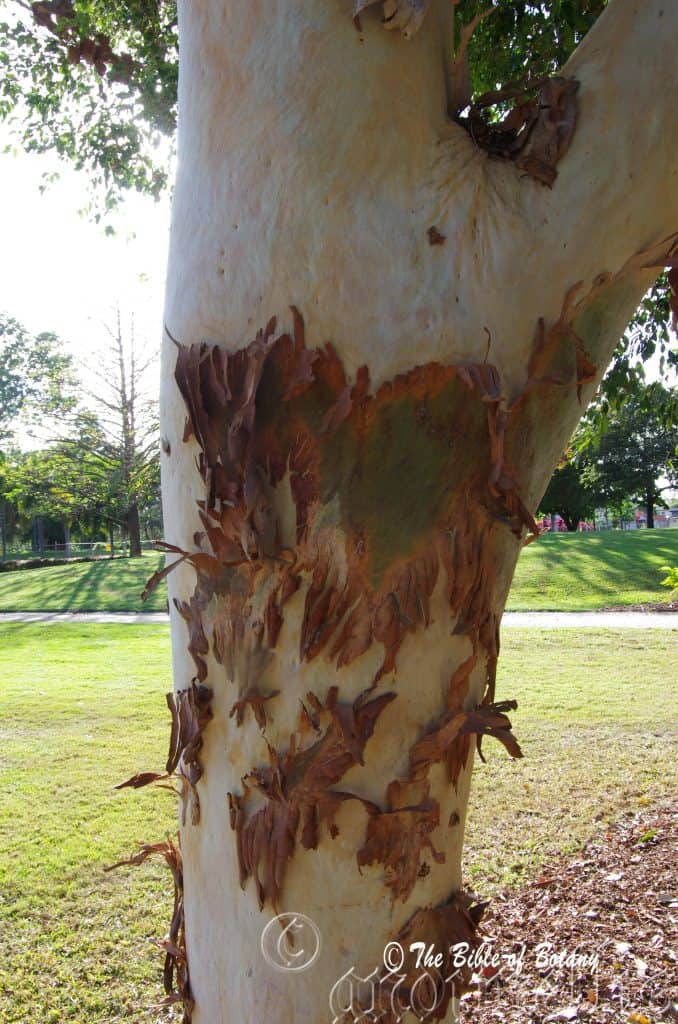

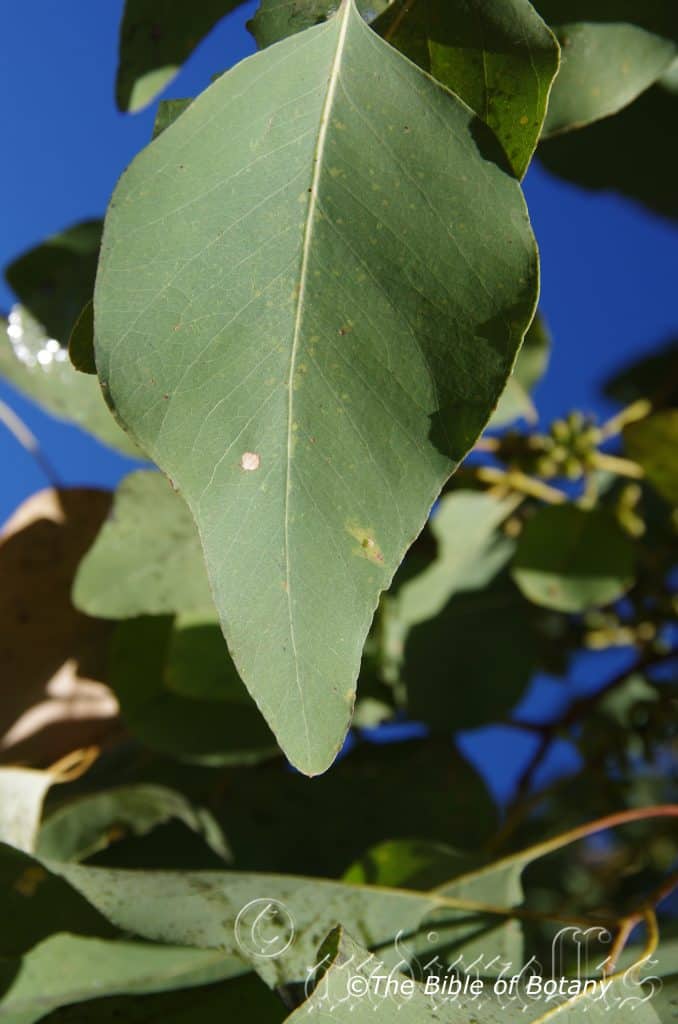
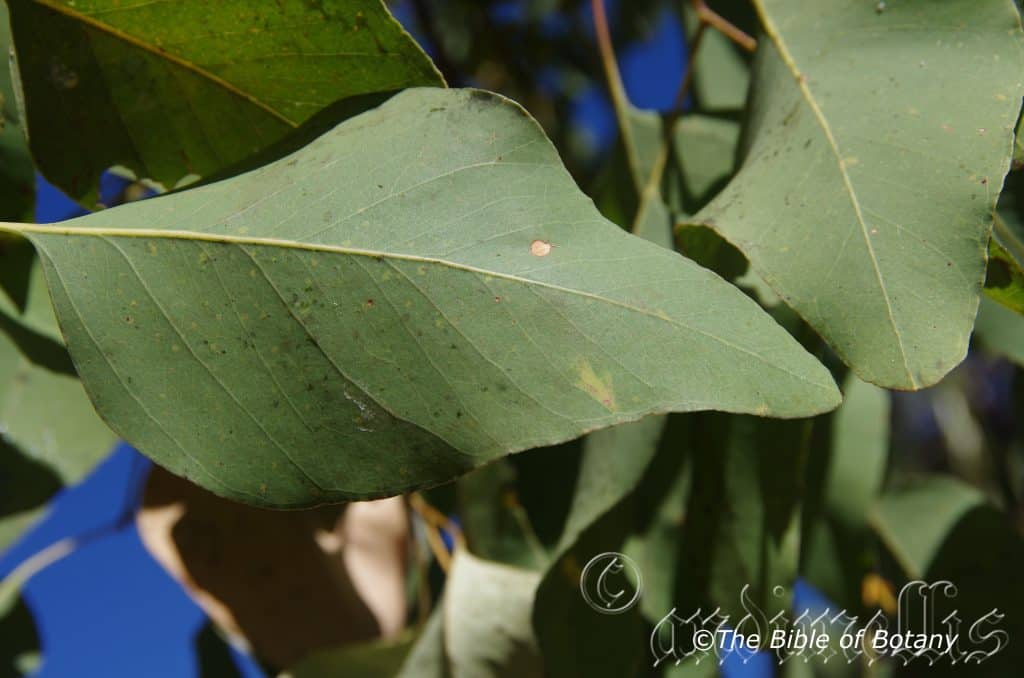
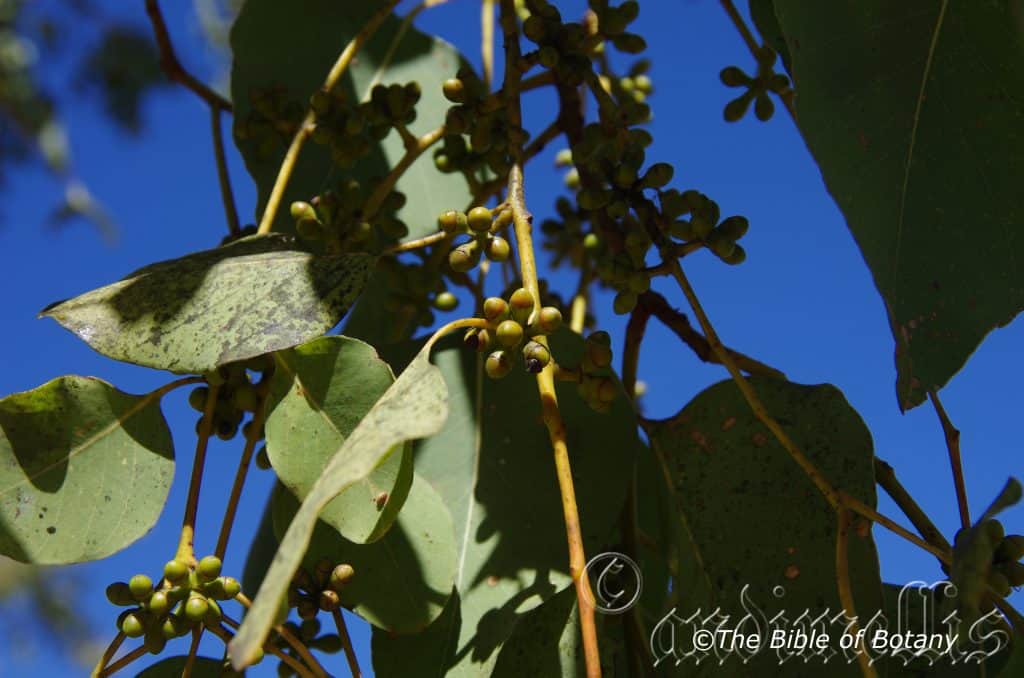
Eucalyptus platyphylla
Classification:
Unranked: Eudicots
Unranked: Rosids
Order: Myrtales
Family: Myrtaceae
Genus: From Eu, which is Greek a prefix for good or well and Kaluptos, which is Ancient Greek for to cover up. It refers to the stamens, which have a lid or cover over them in the bud stage prior to opening.
Specie: From Platy, which is Ancient Greek for flat and broad and Phullon/Phýllon, which is Ancient Greek for a leaf. It refers to leaves, which are distinctly flat.
Sub specie:
Common Name: Poplar Gum.
Distribution:
Eucalyptus platyphylla is found south from near the tip of Cape York Peninsular to near Gladstone in coastal eastern Queensland. It is found on the western slopes within 260 kilometres of the coast (Usually150 kilometres), on and east of the Great Dividing Range to the coast.
There is an isolated population in the Northern Territory between Plateau west of Pine Creek and Wandai on the Daley River.
https://avh.ala.org.au/occurrences/search?taxa=Eucalyptus+platyphylla#tab_mapView
Habitat Aspect Climate:
Eucalyptus platyphylla prefers full sun to light dappled shade. It often becomes the dominant Eucalyptus in the district. It is a very versatile tree growing close to the beaches behind the back dunes, along river and creek estuaries, on slopes escarpments and ridges. The altitude ranges from 10 meters ASL to 500 meters ASL.
The temperatures range from 3 degrees in July to 36 degrees in January.
The rainfall ranges from lows of 800mm to an average of 3200mm annually.
Soil Requirements:
Eucalyptus platyphylla prefers skeletal to deep, eroded, leached, podsolic soils, duplex soils in, on or over lateritic rock. They can be coarse sands, fine sands, light fatty clays to heavy clays or light to heavy silts or screes. The soils are usually derived from granites, sandstones, basalts or alluvial deposits. The soils pH ranges from 4.5pH to 7pH. It does not tolerate water logged soils though seasonal flooding may occur in many areas during the wet season. Non saline soils to very saline soils are tolerated as are salt laden winds.
Height & Spread:
Wild Plants: 8m to 20m by 5m to 15m.
Characteristics:
Eucalyptus platyphylla is a small to medium size spreading tree. The white, pale grey, or pale creamy-grey bark extends to the branchlets. The decorticating bark is shed in patches to reveal a pale salmon bark beneath. The terete branchlets are yellow-green to olive-green and glabrous
The juvenile opposite disjunct leaves of Eucalyptus platyphylla are ovate and measure 40mm to 280mm in length. The concolourous laminas are blue-green.
The adult alternate leaves of Eucalyptus platyphylla are ovate and measure 70mm to 130mm in length and 60mm to 110mm in width. The flattened petioles measure 20mm to 30mm in length. The asymmetrical bases are broad rounded to rounded-truncate while the apexes are obtuse or broad obtuse. The concolourous laminas are dull, blue-green and hang perpendicularly downwards on the branchlets. The laminas are flat while the margins are entire. The mid vein is prominent on both laminas while the 16 to 18 lateral veins are clearly visible at 45 to 55 degrees. The intramarginal veins are 1mm to 1.5mm from the margin.
Eucalyptus platyphylla is one of the few Eucalyptus species that is deciduous. The trees resort to being deciduous in times of drought. The amount of leaf drop depends on the severity of the drought with the trees becoming fully leafed again as soon as good rains fall.
The inflorescences of Eucalyptus platyphylla are born as umbellasters containing 3 to 7 individual flowers from near the terminal leaf axis. The usually compressed or at times terete peduncle measures 5mm to 6mm in length while the pedicels measure 1mm to 2mm in length.
The ovoidal buds measure 6mm to 8mm in length by 5mm to 6mm in diameter. The bi ridged, obconical hypanthium has an obtuse apex and measures 4mm to 5mm in length.
The filaments are white or creamy white with cream anthers. The filaments measure 7mm to 9mm in length.
The cream style measures 7mm to 9mm in length. The disc is a mid yellowish-green. The flowers of Eucalyptus platyphylla appear from August to October.
The fruits are semi globose to awl shaped gum nuts. The gum nuts measure 5mm to 6mm in length by 7mm to 10mm in diameter. The moderately broad discs 3 or 4 valves are exserted. The seeds are ovoid to circular, flat and reddish brown to deep brown in colour.
Wildlife:
The flowers of Eucalyptus platyphylla are low to medium nectar producers, supply high protein pollen but are rather unreliable in both indicating the plants maybe reliant on weather conditions to produce even moderate flows. The trees are attractive to most honeyeaters and lorikeets. Sugar gliders also frequent the tree when in flower especially when the trees have a continuous corridor.
Cultivation:
Eucalyptus platyphylla a medium size tree for medium to large gardens and very useful for that parkland scene or starting a forest garden in warm temperate to tropical zones including semi-arid areas. It is ideal on light sandy to pure sand or sandstone where they dry out very quickly. It is fast growing so gives a good effect at an early age. It grows 10 meters to 18 meters tall by 6 meters to 10 meters in diameter as a tree when grown in the open.
It is ideal in a mixed park like situation where the barks contrast well with other Eucalyptus specie, Corymbia specie and Angophora specie. Its suitability in high wind zones on sandy to heavy clay soils is not good as it is known to drop limbs in cyclone areas but would prove more reliable in more sheltered areas.
Like most large Eucalyptus specie leaf drop, dropping of small branches means continual lawn maintenance but then in a rainforest or bush garden it supplies good quantities of leaf litter.
Propagation:
Seeds: Sow into a seed raising mix. When the seedlings are 25mm to 50mm tall, prick them out and plant them into 50mm native tubes using a good organic mix.
Once the seedlings reach 200mm to 250mm in height plant them out into their permanent position.
Fertilize using Seaweed, fish emulsion or organic chicken pellets soaked in water and apply the liquid on an alternate basis. Fertilize every two months.
Further Comments from Readers:
“Hi reader, it seems you use The Bible of Botany a lot. That’s great as we have great pleasure in bringing it to you! It’s a little awkward for us to ask, but our first aim is to purchase land approximately 1,600 hectares to link several parcels of N.P. into one at The Pinnacles NSW Australia, but we need your help. We’re not salespeople. We’re amateur botanists who have dedicated over 30 years to saving the environment in a practical way. We depend on donations to reach our goal. If you donate just $5, the price of your coffee this Sunday, We can help to keep the planet alive in a real way and continue to bring you regular updates and features on Australian plants all in one Botanical Bible. Any support is greatly appreciated. Thank you.”
In the spirit of reconciliation we acknowledge the Bundjalung, Gumbaynggirr and Yaegl and all aboriginal nations throughout Australia and their connections to land, sea and community. We pay our respect to their Elders past, present and future for the pleasures we have gained.
Eucalyptus pleurocarpa
Classification:
Unranked: Eudicots
Unranked: Rosids
Order: Myrtales
Family: Myrtaceae
Genus: From Eu, which is Greek a prefix for good or well and Kaluptos, which is Ancient Greek for to cover up. It refers to the stamens, which have a lid or cover over them in the bud stage prior to opening.
Specie: From Pleuron, which is Ancient Greek for on the side or of a rib and Karpós, which is Ancient Greek for fruit. It refers to the fruits, which have at least one very prominent rib.
Sub specie:
Common Name: Tallerack.
Distribution:
Eucalyptus pleurocarpa is a found in 3 disjunct areas in southern Western Australia. The north western population is found around Jurien Bay while the eastern population is found at Eucla near the Western Australian and South Australian Border. The third and largest population is found from Condingup in the east near Esperence to the Frankland River in the west and north to Kandinin.
https://avh.ala.org.au/occurrences/search?taxa=Eucalyptus+pleurocarpa#tab_mapView
Habitat Aspect Climate:
Eucalyptus pleurocarpa prefers full sun. It grows in open woodlands, on plains or rolling hills. It grows behind the frontal dunes on sandy dunes and sand plains. The altitude ranges from 5 meters ASL to 200 meters ASL.
The temperatures range from 0 degrees in July to 40 degrees in January.
The rainfalls range from lows of 280mm to an average of 770mm annually.
Soil Requirements:
Eucalyptus pleurocarpa prefers white or yellow sands to sandy loams. The soils pH ranges from 5pH to 6.4pH. It does not tolerant of water logged soils. Non saline soils to moderately saline soils are tolerated.
Height & Spread:
Wild Plants: 3m to 4m by 3m to 5m.
Characteristics:
Eucalyptus pleurocarpa is a thin multi trunked mallee with almost divaricate spreading branches from near the ground. The trunk has a persistent rough stocking which is deep grey almost black to grey-brown. The bark on the upper trunk and branches is smooth, glabrous, off white to pale grey or creamy pale brown. The small stems are glaucous, square in cross section with wings. The decorticating bark is shed in long slim ribbons to reveal a pink-grey to coppery-pink new bark. The trees form a lignotuber just beneath the ground.
Eucalyptus pleurocarpa’s juvenile leaves are opposite becoming disjunct early. The petioles measure 10mm to 20mm in length. The ovoid to ovate leaves measure 40mm to 70mm in length by 40mm to 60mm in width. The concolourous leaves are dull grey-green to dull blue-green and coriaceous.
The alternate adult leaves of Eucalyptus pachyphylla are broad lanceolate, to oblong-ovate, straight to slightly falcate and measure 90mm to 160mm in length and 30mm to 60mm in width. The glaucous, terete petioles measures 12mm to 20mm in length. The bases are rounded while the apexes are tapering acute. The laminas are flat while the margins are entire and thickened. The concolourous laminas are dull sliver-grey to dull blue-green and coriaceous. The mid vein is glaucous, glaucous-yellowish to pale yellow-tinged pink near the base and is strongly prominent on the lower lamina and prominent on the upper lamina for at least half its length. The very faint lateral veins are at 70 degrees to 80 degrees to the main vein.
Inflorescences of Eucalyptus pleurocarpa are born as umbellasters from the leaf axils with 3 flowers in each umbellaster. The flattened, glaucous, peduncules measure 5mm to 10mm in length while the flattened, glaucous pedicels measure 6mm to 12mm in length.
The glaucous buds have a square-cylindrical hypanthium with 4 ribs very distinct flattened ribs with hemispherical calyptras. The hypanthium measure 14mm to 18mm in length by 7mm to 9mm in diameter. The glaucous calyptras measure 4mm to 4.5mm in length. The bud scar is absent.
The erect to spreading inflexed stamens are cream to creamy yellow and are produced in 4 bundles while the pale cream to creamy yellow anthers are difficult to distinguish from the filaments. The stamens measure 12mm to 15mm in length.
The creamy yellow to yellow style measures 5mm to 8mm in length. The disc is bright golden yellow. The flowers appear from April to July.
The fruits are glaucous, square in cross section, cupular gum nuts. The gum nuts measure 15mm to 18mm in length by 15mm to 18mm in diameter at the widest point. The disc is exserted with erect sides and measure 4mm to 5mm in length by 15mm to 18mm in diameter. The 4 valves are inserted and form a distinct cross in the middle of the raised disc. The hypanthium is strongly ribbed, glabrous and dull. The gum nuts turn grey-green before turning grey on ripening.
Wildlife:
The flowers Eucalyptus pleurocarpa are good nectar producers and are very attractive to most honeyeaters and lorikeets early in the morning and late in the afternoon. Native bees, beetles and ants forage over the flowers during the heat of day. The seeds are eaten by Carnaby’s Cockatoo, Calyptorhynchus latirostris.
Cultivation:
Eucalyptus pleurocarpa is a smaller gum tree or medium size mallee which is very suitable for small gardeners looking for a Eucalyptus specie to create a small bush scene in arid and semi-arid areas. It is ideal on sandy loams, sandy alluvial flats or light to medium clays that are well drained. It is fast growing so give good effects at an early age.
This shrub is worthwhile trying in coastal areas in South Australia and inland areas of Victoria. I would also be tempted to try it as far north as the Darling Downs in southern Queensland and anywhere west Of the Great Dividing Range. Its rainfall distribution is greater than most Eucalyptus from the west. I am prepared to give it a go at the Pinnacles on the sandstone country.
In the garden good specimens grow from 4 meters to 6 meters in height by 3 meters to 7 meters in diameter when grown in the open.
They have an open to dense crown and are drought resistant once established. This is a mallee that should be far more widely grown than it is in arid areas. When it is planted it is too often planted singularly with gardeners not prepared to experiment. It has a lignotuber so this opens up a wide field for landscapers. Because of their naturally spreading growth habit they can be easily mass planted in groups of 3 to give a good colourful screen or trimmed to give an undulating backdrop to smaller natives in the foreground. Use them as a feature with 2 or 3 or even 5 in a group using curves or irregular shapes. Their branches can overlap giving a bushier appearance. Keep 2 or 3 as small trees and prune the others in the clump back hard so it is forced to re shoot from the lignotuber and grow them as shrubs. This will create an effect of various heights and greater flowering in the following season from those which were pruned. They can be used very affectively with taller growing mallees to break up lines and to contrast the flowers and leaves. A good example would be to mix it with Eucalyptus cassia, Eucalyptus goniantha or Corymbia curtisii or Eucalyptus pachycalyx.
Like all Eucalyptus specie leaf drop, dropping of small branches means continual lawn maintenance but then this means good quantities of leaf litter mulch. If the trees are clumped or used in a bush garden this is not a problem.
Propagation:
Seeds: Sow the seeds of Eucalyptus pleurocarpa directly into a seed raising mix. Cover the seeds with 2mm to 3mm of fine sand and place the trays in a warm sunny position. Keep moist but not wet. When the seedlings are 25mm to 50 mm tall, prick them out and plant them into 50mm native tubes using a good organic mix.
Once the seedlings reach 200mm to 250mm in height plant them out into their permanent position. Mass plantings are best achieved with spacing ranging from 4 meters to 8 meters where it is planted as specimen plants and best mixed with different species. Plant them at 3 meters to 4 meters where clumps are required.
Fertilize using Seaweed, fish emulsion or organic chicken pellets soaked in water and apply the liquid on an alternate basis. Fertilize every two months.
Further Comments from Readers:
“Hi reader, it seems you use The Bible of Botany a lot. That’s great as we have great pleasure in bringing it to you! It’s a little awkward for us to ask, but our first aim is to purchase land approximately 1,600 hectares to link several parcels of N.P. into one at The Pinnacles NSW Australia, but we need your help. We’re not salespeople. We’re amateur botanists who have dedicated over 30 years to saving the environment in a practical way. We depend on donations to reach our goal. If you donate just $5, the price of your coffee this Sunday, We can help to keep the planet alive in a real way and continue to bring you regular updates and features on Australian plants all in one Botanical Bible. Any support is greatly appreciated. Thank you.”
In the spirit of reconciliation we acknowledge the Bundjalung, Gumbaynggirr and Yaegl and all aboriginal nations throughout Australia and their connections to land, sea and community. We pay our respect to their Elders past, present and future for the pleasures we have gained.

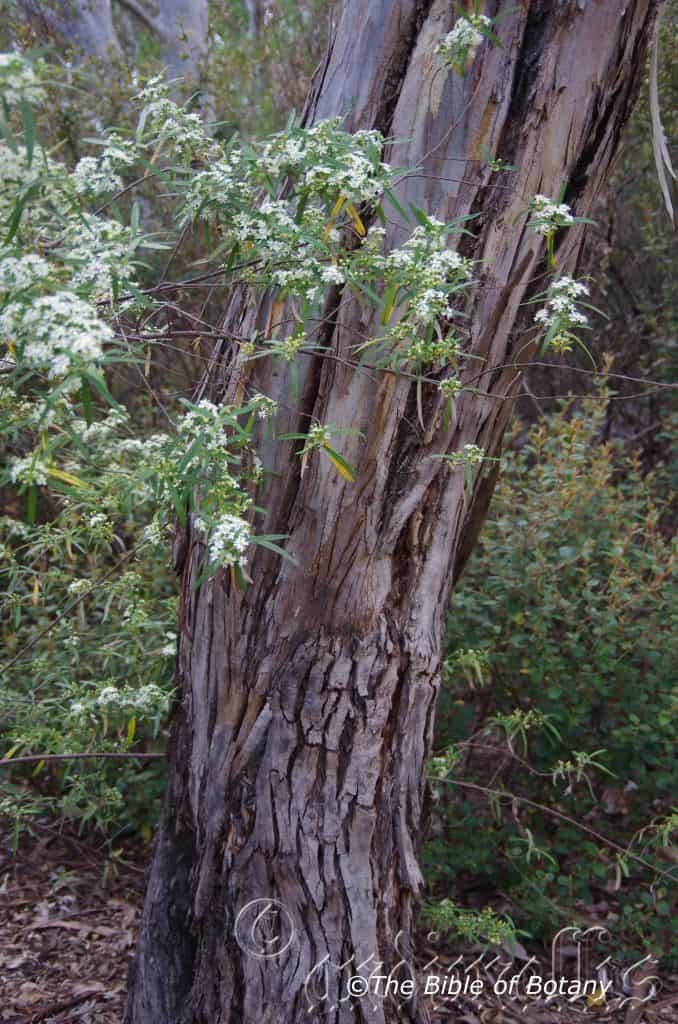
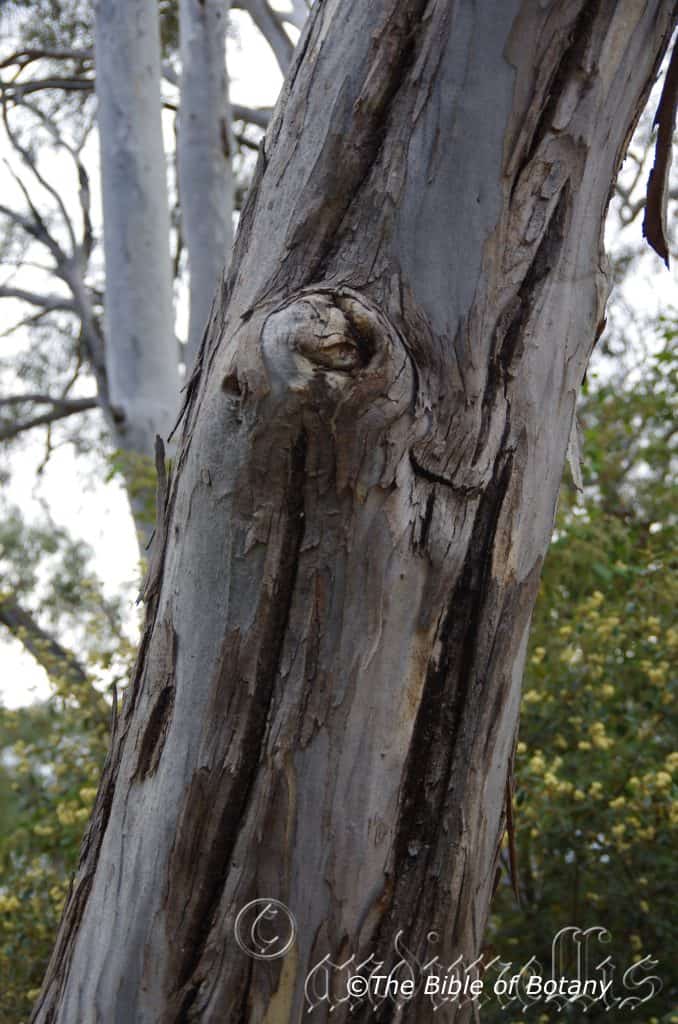
Eucalyptus polyanthemos
Classification:
Unranked: Eudicots
Unranked: Rosids
Order: Myrtales
Family: Myrtaceae
Genus: From Eu, which is Greek a prefix for good or well and Kaluptos, which is Ancient Greek for to cover up. It refers to the stamens, which have a lid or cover over them in the bud stage prior to opening.
Specie: From Polús, which is Ancient Greek for much or many and Xántha/ánthos, which are Ancient Greek for the male reproductive organs in a flower or the flower. It refers to plants, which are prolific bloomers.
Sub specie:
Common Name: Red Box.
Distribution:
Eucalyptus polyanthemos is found south from Hill Grove near Armidale in north eastern New South Wales to north east of the Grampians in central western Victoria. There is a disjunct population further north near Moree in far north eastern New South Wales. It is found on the western slopes of the Great Dividing Range, on and on the eastern slopes of The Great Dividing Range.
https://avh.ala.org.au/occurrences/search?taxa=Eucalyptus+prava#tab_mapView
Habitat Aspect Climate:
Eucalyptus polyanthemos prefers full sun. It is found at higher levels on mountainous open dry schlerophyll forests to open dry woodlands. The altitude ranges from 300 meters to 1400? meters ASL.
The temperatures range from minus 8 degrees in July to 34 degrees in January.
The rainfall ranges from lows of 350mm to an average of 870mm annually.
Soil Requirements:
Eucalyptus polyanthemos prefers poorer quality white, grey or brown podsolic clays, clay sands and planosols (Is a soil with a light-coloured, coarse grainy textured on the surface that shows signs of periodic water stagnation and abruptly overlies a dense, slowly permeable subsoil with significantly more clay than the surface horizon). The soils are usually derived from partially decomposed to decomposed granites or at times sandstone. The soils pH ranges from 4.5pH to 5.5pH. It does not tolerate water logged soils however water stagnation is often found along drainage lines and shallow depressions.Non saline soils to slightly saline soils are tolerated.
Height & Spread:
Wild Plants: 12m to 20m by 10m to 18m.
Characteristics:
Eucalyptus polyanthemos can have a short thick bole or stunted and crooked depending on its exposure to the elements with the branches appearing from a meter or on straight boled trees at around 40mm to 50mm of the trees height on mature trees. The bark is decorticating from the base of the trunk to the medium sized branches in strips. The
bark is smooth, mottled cream, grey, white and yellow throughout, with persistent flakes of rough grey bark at base of trunk. The juvenile stems are glaucous or non-glaucous, reddish brown to yellowish. The juvenile leaves are always petiolate, opposite for 4 to 6 nodes becoming alternate. The orbicular to broadly ovate, Leaves are green to blue-grey or rarely glaucous and measure 25mm to 80mm in length by 25mm to 60mm in length. The bases are truncate, obtuse or broadly taper to the petiole, while the apexes are obtuse often with an emarginate tip.
The crown leaves are a mixture of juvenile, intermediate and mature leaves. The petioles measure 10mm to 20mm in length. The lanceolate to ovate or orbicular leaves are concolorous laminas are dull, green to blue-grey or grey-green, or glaucous. The leaves measure 50mm to 110mm in length by 18mm to 50mm in width. The bases usually taper to the petioles, while the apexes are mucronate. The mid vein is prominent on both laminas for most of its length, while the lateral veins are around 45 degrees to midrib, densely to very densely reticulate. The intramarginal vein is well away from the margin and loops back near the apex. The oil glands are obscure or intersectional.
The terete peduncles measure 2mm to 10m in length, while the terete pedicels measure 1mm to 5mm in length. The terminal inflorescence is compound, with 7 buds on each umbel. The mature buds dare rhomboidal to ovoid and measure 3mm to 5mm in length by 2mm to 3mm in diameter. The scar is present. The conical or slightly beaked operculum is discarded well after the last of the stamens uncoil. The inflexed, adnate, positioned obliquely at filament tip, cuboid to cuneate anthers dehisce from terminal pores. The short style has an orbicular base and a blunt or pin head stigma. The white flowers appear from October to November.
The capsules pedicels measure 1mm to 4mm in length. The barrel shaped to obconical capsules are reddish green or at times glaucous measure 3mm to 6mm in length by 3mm to 6mm in diameter. The disc is descending, while the 3 or 4 valves are enclosed.
The brown or grey, ovoid or flattened-ovoid, seeds have a dorsal surface, which is shallowly pitted and measure 0.8mm to1.4 mm in length. The hilum is positioned ventrally on the seeds.
Wildlife:
The flowers Eucalyptus polyanthemos are light nectar producers but are still are very attractive to most honeyeaters and lorikeets, native bees and beetles.
Cultivation:
Eucalyptus polyanthemos is a small gum tree which is very suitable for gardeners looking for a Eucalyptus specie to create a medium parkland scene in warm temperate, cool tropical and sub-tropical zones. It is ideal on sandy loams, sandy alluvial flats or light gritty clays that are well drained. It is fast growing so give good effects at a relatively early age. It is difficult to gauge the height and spread and width of cultivated plants as wild plants are often growing in the open on the poorest of sandy soils and I have not witnessed any grown on good quality sandy loams. I would expect them to grow from 12 meters to 16 meters in height by 6 meters to 8 meters in diameter with an open crown when grown in an open situation as a small single trunk tree or from 7 meters to 10 meters in height by 7 meters to 12 meters in diameter when grown as a tree with several trunks when grown in the open on poorer sandy loams. It is drought resistant once established.
This is not a popular white flowering gum amongst home gardeners but should be considered for its smaller size, well developed crown and beautiful patchwork on the trunk. The bark contrasts well with other Eucalyptus specie, Corymbia specie, or dry forest type trees which prefer sand like Cupaniopsis anachariodes with dissimilar trunks to high light the trunks and barks. Place it in the center of a mixed open forest garden along with other small trees where the trunks are highly visible and wild flowers and annuals can be scattered beneath to help highlight the trunks and openness of the plain.
It would be ideally suited to medium or large park like scenes and avenue trees along long driveways where they could be used to accentuate the breadth and shortening of the driveway with their wide spread branches.
It is also make excellent specimen trees when large enough to plant
Xanthorrhoea glauca, Xanthorrhoea johnsonii, Xanthorrhoea latifolia and mixed with native annuals or perennials for colour on the ground.
Like all Eucalyptus specie leaf drop, dropping of small branches means continual lawn maintenance but then this means good quantities of leaf litter mulch. If the trees are clumped or used in a bush garden this is not a problem.
Propagation:
Seeds: Sow the seeds of Eucalyptus polyanthemos directly into a seed raising mix. Cover the seeds with 2mm to 3mm of fine sand and place the trays in a warm sunny position. Keep them moist, not wet to avoid damping off. When the seedlings are 25mm to 50mm tall, prick them out and plant them into 50mm native tubes using a good organic mix.
Fertilize using Seaweed, fish emulsion or organic chicken pellets soaked in water and apply the liquid on an alternate basis. Fertilize every two months.
Once the seedlings reach 200mm to 250mm in height plant them out into their permanent position. Mass plantings are best achieved by planting them at 8 meters to 15 meters depending on the natural rainfall of the property.
Further Comments from Readers:
“Hi reader, it seems you use The Bible of Botany a lot. That’s great as we have great pleasure in bringing it to you! It’s a little awkward for us to ask, but our first aim is to purchase land approximately 1,600 hectares to link several parcels of N.P. into one at The Pinnacles NSW Australia, but we need your help. We’re not salespeople. We’re amateur botanists who have dedicated over 30 years to saving the environment in a practical way. We depend on donations to reach our goal. If you donate just $5, the price of your coffee this Sunday, We can help to keep the planet alive in a real way and continue to bring you regular updates and features on Australian plants all in one Botanical Bible. Any support is greatly appreciated. Thank you.”
In the spirit of reconciliation we acknowledge the Bundjalung, Gumbaynggirr and Yaegl and all aboriginal nations throughout Australia and their connections to land, sea and community. We pay our respect to their Elders past, present and future for the pleasures we have gained.
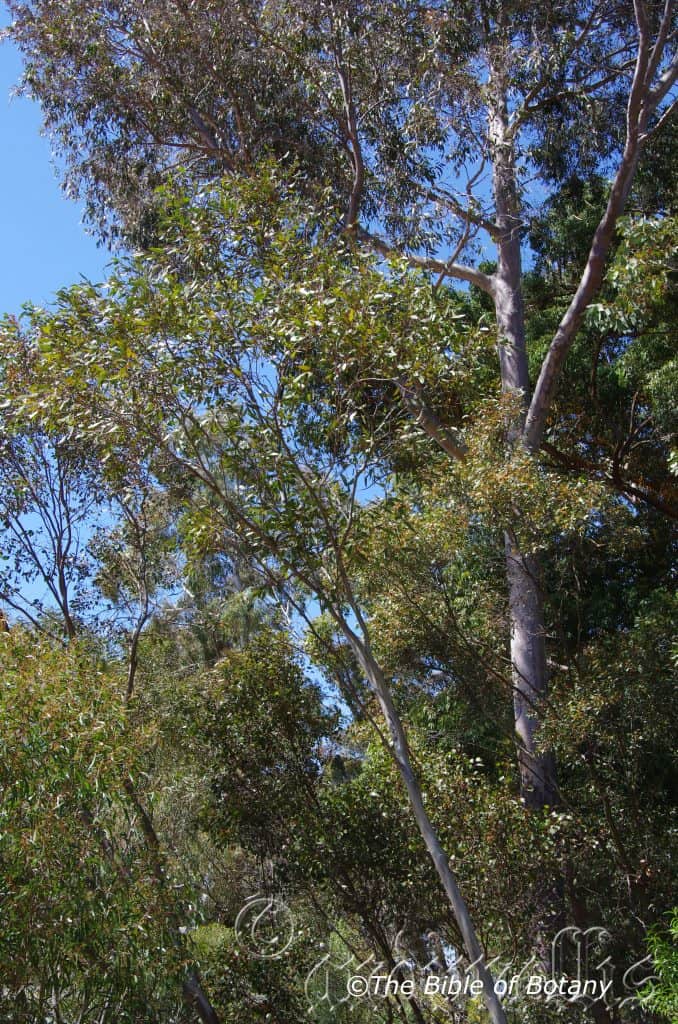

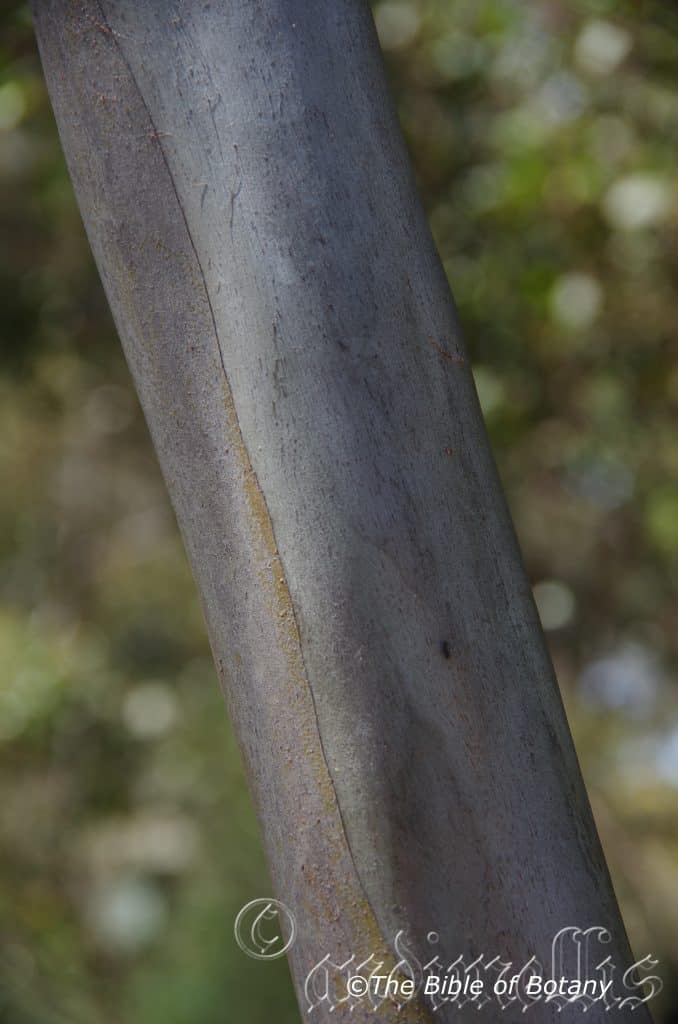

Eucalyptus polybractea
Classification:
Unranked: Eudicots
Unranked: Rosids
Order: Myrtales
Family: Myrtaceae
Genus: From Eu, which is Greek a prefix for good or well and Kaluptos, which is Ancient Greek for to cover up. It refers to the stamens, which have a lid or cover over them in the bud stage prior to opening.
Specie: From Polús, which is Ancient Greek for much or many and bractea, which is Latin for a thin sheet of metal or veneer. It refers to plants, in which the bracts are a stronger or more prominent feature compared to other species in the genus.
Sub specie: Eucalyptus polybractea subsp. polybractea From Polús, which is Ancient Greek for much or many and bractea, which is Latin for a thin sheet of metal or veneer. It refers to plants, in which the bracts are a stronger or more prominent feature compared to other species in the genus.
Eucalyptus polybractea subsp. subcerea From Sub, which is Ancient Greek for below or under and Cērea, which is Latin for waxy. It refers to plant organs, which look or feel as though they have a wax coating. It refers to plants, which have organs that have a somewhat waxy appearance.
Common Name: Blue leaved mallee or Blue Mallee.
Distribution:
Eucalyptus polybractea subsp. polybractea is found in a few isolated populations from near Port Augusta in southern South Australia to Rushworth state Forest in Victoria and Wyalong in southern central New South Wales.
Eucalyptus polybractea subsp. subcerea is found in 2 main disjunct populations from Mount Arapiles to Smiths Reserve near Horsham in north western Victoria.
https://avh.ala.org.au/occurrences/search?taxa=Eucalyptus+polybractea#tab_mapView
Habitat Aspect Climate:
Eucalyptus polybractea prefers full sun and light shade as a juvenile tree. It grows on hills, gentle slopes or flats adjacent to dry rainforests in wet Eucalyptus forests and dry Eucalyptus forests. The altitude ranges from 150 meters to 400 meters ASL.
The temperatures range from minus 2 degrees in July to 40 degrees in January.
The rainfalls range from lows of 300mm to an average of 500mm annually.
Soil Requirements:
Eucalyptus polybractea prefers poor to medium fertile gritty clays to heavy clays. The soils pH ranges from 4.5pH to 5.5pH. It does not tolerate poorly drained soils or those that have seasonal high water tables. Non saline soils to moderately saline soils are tolerated.
Height & Spread:
Wild Plants:5m to 8m by 6m to 10m.
Characteristics:
Eucalyptus polybractea is a very tall straight trunked tree which has a bole over half of its length. The large white and grey blotchy trunk is smooth but densely pitted with fine pin holes. The tree has a decorticating bark which is shed in large flakes or scales in spring. The new exposed bark is bright pink or brilliant pale orange before turning grey and white. The branches are pale grey to white and glabrous. The branchlets are glabrous, yellow green. The trunks are often covered in scratch marks of Koalas or finer scratches of possums.
Juvenile disjunct leaves are lanceolate, concolourous, glossy, pale green and glabrous.
The disjunct alternate adult leaves of Eucalyptus propinqua are lanceolate and measure 80mm to 140mm in length by 15mm to 25mm in width. The petioles measure 10mm to 15mm in length. The bases are rounded and slightly oblique while the apexes are tapering to narrowly acute. The discolourous laminas are glossy, dark green on the upper lamina and paler below. The lamina is flat to slightly curving upwards from the midvein towards the margins. The mid vein is slightly prominent on the upper lamina while the lower lamina is more prominent near the base, round to triangular near the base becoming less prominent towards the apex. The margins are entire.
The inflorescences of Eucalyptus polybractea are born as umbellasters containing 7 to 11 flowers from near the terminal leaf axis. The terete peduncle measures 5mm to 15mm in length while the terete pedicels measure 2mm to 5mm in length.
The buds are ovoid to globose, glaucous and measure 4mm to 5mm in length by 3mm to 4mm in diameter. The bud scar is distinctly visible after releasing the conical to hemispherical operculum which measures 2mm to 2.5mm in length. The peduncle, pedicle, buds and disc area pale lime green.
The stamens are white with white or cream anthers. They measure 8mm to 10mm in length while the white style measures 3mm to 4mm in length. The flowers of Eucalyptus polybractea appear from January to the end of February.
The fruits are conical to hemispherical gum nuts. The gum nuts measure 2.5mm to 5mm in length by 3mm to 6mm in diameter. The disc is flat to slightly raised, revealing the 4 exserted valves.
Wildlife:
The flowers of Eucalyptus polybractea are medium to high nectar producers and are very attractive to most honeyeaters and lorikeets.
Cultivation:
Eucalyptus polybractea has a rough, pale grey to grey-brown bark on the lower 1 meter to 2 meters of the trunk. The smooth light grey to deep grey, brown or pinkish to orange when the bark is decorticating in long ribbons on the upper trunk and main branches. The smaller stems are usually glaucous or rarely non-glaucous.
The juvenile plant stems are terete or square in cross-section stems are glaucous or non-glaucous. The juvenile usually blue-grey or glaucous, lanceolate to linear leaves are always shortly petiolate and opposite for 4 or 7 nodes becoming alternate and measure 4omm to 2150mm in length by 2mm to 16mm in width. The bases taper to the petiole, while the apexes are narrow acuminate.
The petiole on mature leaves measure 4mm to 15mm in length. The lanceolate, concolorous, dull, blue-green, blue-grey or glaucous leaves measure 60mm to 170mm in length by 4mm to 20mm in width. The bases taper to the petiole, while the apexes are narrow acute to long acuminate. The mid vein is very slightly prominent on the upper lamina and prominent on the lower lamina for most its length, while the lateral veins are very acute and sparsely or obscurely reticulate. The intramarginal veins are parallel and well away from the margins. The oil glands are mostly island, or obscure.
The peduncles measure 4mm to 12 mm in length, while the pedicels are sessile 6mm in length. There are 7, 9 or 11 buds on each umbel. The mature green or glaucous, clavate to rhomboidal buds measure 4mm to 8mm in length by 3mm to 4mm in diameter. The scar is absent. The conical to obtuse operculum is discarded as the irregularly flexed, stamens begin to unfold. The adnate, globoid, anthers dehisce through small lateral pores. The long stigma is blunt or shaped pin-head. The white flowers appear from May to June or August or November.
The pedicels on the capsules measure 1mm to 6mm in length. The reddish-grey to maroon-grey, cupular or barrel-shaped capsules measure 4mm to 7mm in length by 3mm to 5m in diameter. The disc is descending, while the 3, 4 or at times 5 valves are level with the rim or are enclosed.
The brown, flattened-ovoid, dorsal surface shallowly pitted measure 0.5mm to1.5mm in length. The hilum is positioned ventrally.
Propagation:
Seeds: Sow fresh seeds of Eucalyptus polybractea into a seed raising mix. Place the seed tray where daily temperatures are in excess of 25 degrees for more even and rapid germination. When the seedlings are 25mm to 50mm tall, prick them out and plant them into 50mm native tubes using a good organic mix.
Once the seedlings reach 200mm to 250mm in height plant them out into their permanent position.
Fertilize using seaweed, fish emulsion or organic chicken pellets soaked in water on an alternate basis. Fertilize every two months until the plants are established then twice annually in early September or March to maintain health, vitality and better flowering.
Further Comments from Readers:
“Hi reader, it seems you use The Bible of Botany a lot. That’s great as we have great pleasure in bringing it to you! It’s a little awkward for us to ask, but our first aim is to purchase land approximately 1,600 hectares to link several parcels of N.P. into one at The Pinnacles NSW Australia, but we need your help. We’re not salespeople. We’re amateur botanists who have dedicated over 30 years to saving the environment in a practical way. We depend on donations to reach our goal. If you donate just $5, the price of your coffee this Sunday, We can help to keep the planet alive in a real way and continue to bring you regular updates and features on Australian plants all in one Botanical Bible. Any support is greatly appreciated. Thank you.”
In the spirit of reconciliation we acknowledge the Bundjalung, Gumbaynggirr and Yaegl and all aboriginal nations throughout Australia and their connections to land, sea and community. We pay our respect to their Elders past, present and future for the pleasures we have gained.
Eucaly
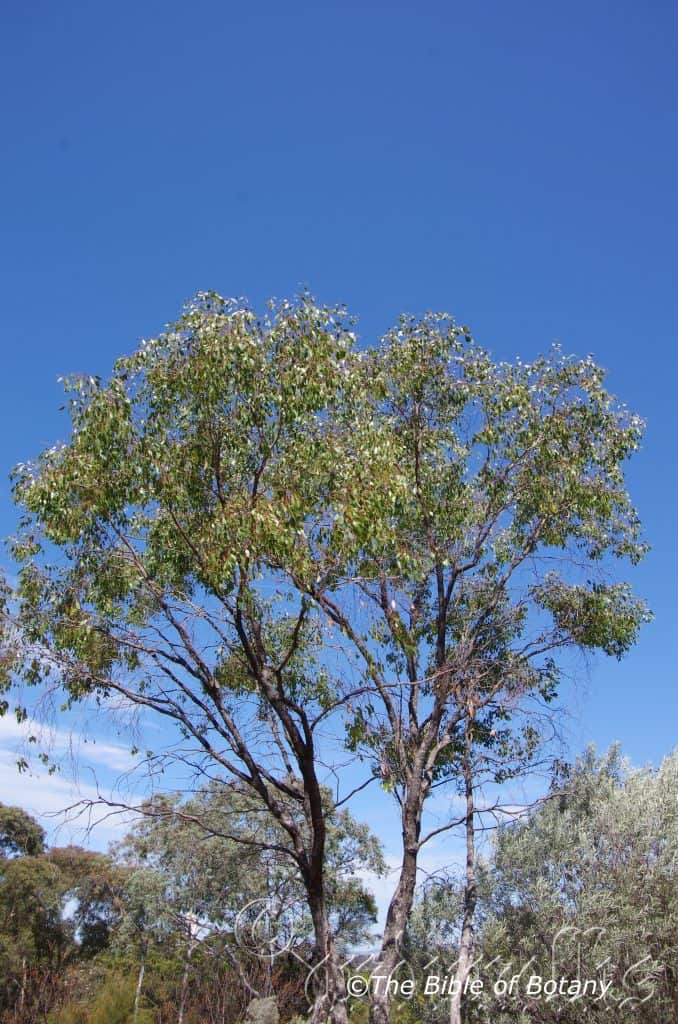


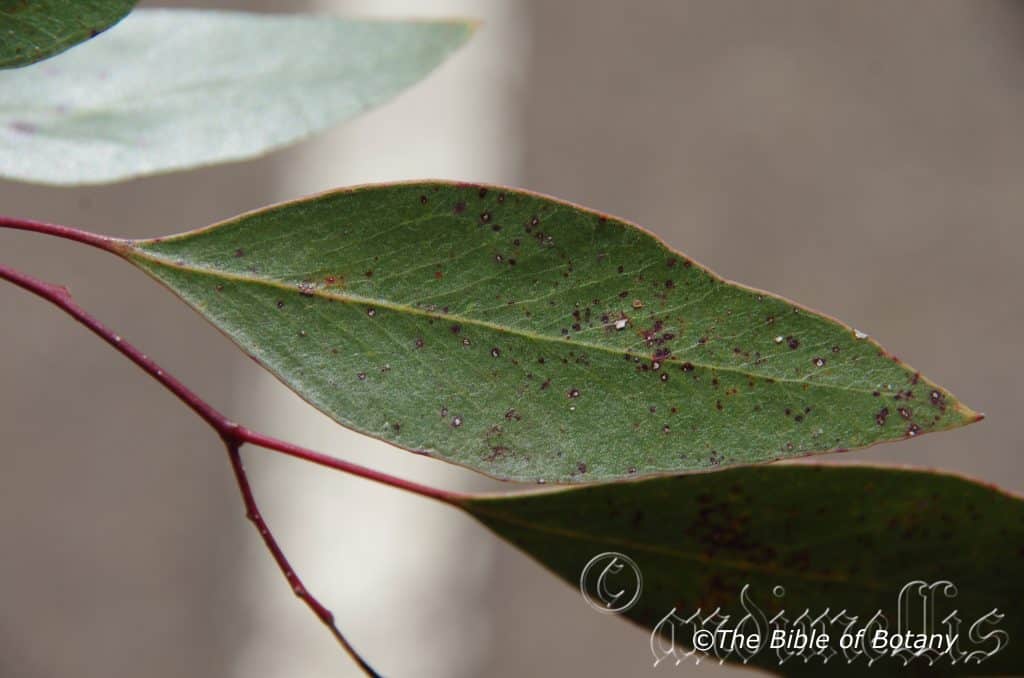


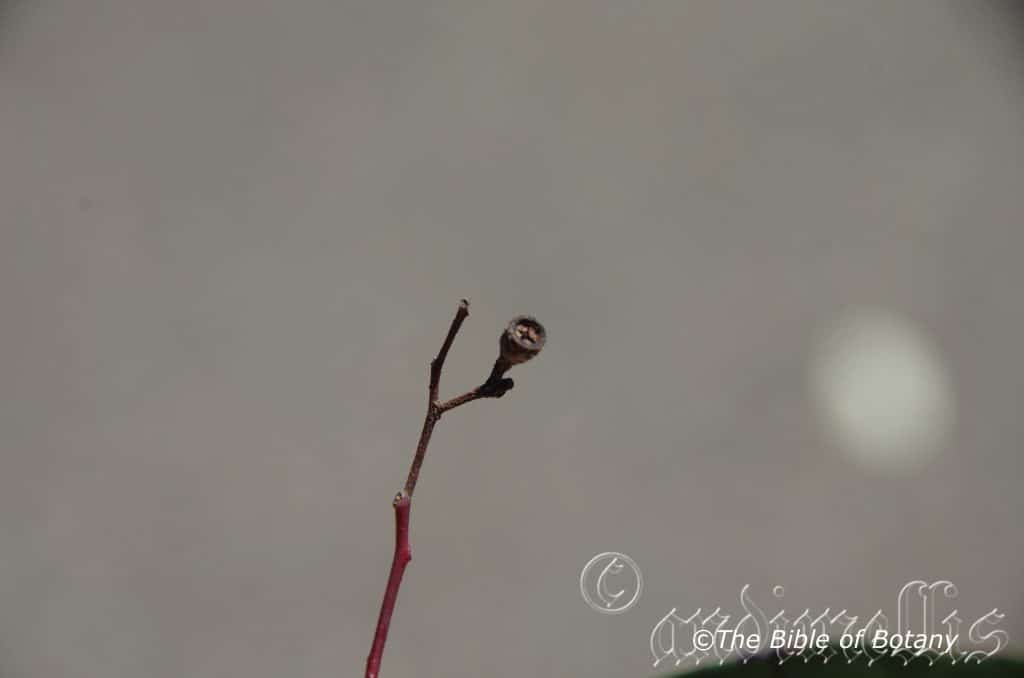
Eucalyptus populnea
Classification:
Unranked: Eudicots
Unranked: Rosids
Order: Myrtales
Family: Myrtaceae
Genus: From Eu, which is Greek a prefix for good or well and Kaluptos, which is Ancient Greek for to cover up. It refers to the stamens, which have a lid or cover over them in the bud stage prior to opening.
Specie: From Populus, which is Latin for the popular tree. It refers to plants, which have leaves that resemble those of the European Poplar tree.
Sub specie:
Common Name: Poplar Box or Bimbil Box.
Distribution:
Eucalyptus populnea is found south from Herbert’s Creek in north east Queensland to Gillenbah State Forest in southern New South Wales across to the border with South Australia. It is mainly found on and west of the Great Dividing Range.
https://avh.ala.org.au/occurrences/search?taxa=Eucalyptus+populnea#tab_mapView
Habitat Aspect Climate:
Eucalyptus populnea prefers full sun. It is found on mountains valleys in open dry schlerophyll forests to open woodlands. The altitude ranges from 300 meters ASL to 1100 meters ASL.
The temperatures range from minus 3 degrees in July to 44 degrees in January.
The rainfall ranges from lows of 200mm to an average of 600mm annually.
Soil Requirements:
Eucalyptus populnea prefers better quality deeper, red loamy soils that are slightly better watered than the surrounding country. The soils are usually derived from partially decomposed to decomposed granites and sandstone. The soils pH ranges from 4.5pH to 5.5pH. It does not tolerate water logged soils.Non saline soils to moderately saline soils are tolerated.
Height & Spread:
Wild Plants: 12m to 20m by 9m to 14m.
Characteristics:
Eucalyptus populnea bark is rough, grey to grey-brown, box-type or tessellated from the ground to the small branches.
The juvenile leaves are always petiolate, opposite for a few nodes becoming alternate, ovate or orbicular and measure 60mm to 115mm in length by 35mm to 90mm in width. The bases are obtuse or broadly taper to the petiole. The concolourous leaves are first dull green to grey-green, soon transforming to glossy, green.
The crown is made up of juvenile, intermediate and mature leaves. The petiole measures 10mm to 30mm in length. The orbicular to ovate or elliptical, rarely narrowly elliptical, concolorous, glossy, deep green leaves measure 40mm to 100mm in length by 18mm to 50mm in width. The bases taper to the petiole, while the apexes are broadly acute to obtuse often with a small emarginate tip. The mid vein is slightly prominent on both laminas as are the acute lateral veins, densely to very densely reticulate. The intramarginal vein is parallel to and distant from the margins. The oil glands are mostly intersectional.
The inflorescence of Eucalyptus populnea are terminal compound, or with some compound in sub-terminal axils. The peduncles measure 4mm to 11mm in length, while the pedicels 1mm to 4mm in length. There are 7, 9, 11, 13 or rarely 15 buds on each umbel. The mature oblong to obovoid or globular buds are green or yellow and measure 3mm to 5mm in length by 2mm to 3mm in diameter. The scar is present. The conical to obtuse operculum is discarded during the time the irregularly flexed stamens are expanding. The adnate, cuboid to globoid anthers dehisce by broad lateral pores. The long or short style extends from the pale yellow-green disc to the blunt or pin-head shaped stigma. The white flowers appear in May or from August to December.
The pedicels on the capsule are sessile to 3mm in length. The obconical to hemispherical or cupular capsules measure 2.5mm to 5mm in length by 2mm to 4mm in diameter. The disc is descending, while the 4 valves are level with the rim or are enclosed.
The deep brown or grey-brown seeds are flattened-ovoid, often pointed at one end with the dorsal surface shallowly pitted and measure 1mm to 1.5mm in length. The hilum is positioned ventrally.
Wildlife:
The flowers Eucalyptus populnea are light nectar producers but are still are very attractive to most honeyeaters and lorikeets, native bees and beetles.
Cultivation:
Eucalyptus populnea is a small gum tree which is very suitable for gardeners looking for a Eucalyptus specie to create a medium parkland scene in warm temperate, cool tropical and sub-tropical zones. It is ideal on sandy loams, sandy alluvial flats or light gritty clays that are well drained but moisture retentive. It is much slower growing than coastal trees but considering its habitat would make it a wonderful addition in out back yards big or small. It is difficult to gauge the height and spread and width of cultivated plants as wild plants are often growing in the open on the poorest of sandy soils and I have not witnessed any grown on good quality sandy loams. I would expect it to grow from 12 meters to 16 meters in height by 6 meters to 8 meters in diameter with an open crown when grown in an open situation as a small single trunk tree. It is very drought resistant once established.
This should be a popular white flowering gum amongst home gardeners because of its smaller size, well developed crown and beautiful patchwork on the trunk. The bark contrasts well with other Eucalyptus specie, Corymbia specie, or dry forest type trees which prefer sand like Cupaniopsis anachariodes with dissimilar trunks to high light the trunks and barks. Place it in the center of a mixed open forest garden along with other small trees where the trunks are highly visible and wild flowers and annuals can be scattered beneath to help highlight the trunks and openness of the plain.
It would be ideally suited to medium or large park like scenes west of the Range and avenue trees along long driveways where it could be used to accentuate the breadth and shortening of the driveway with their wide spread branches.
Like all Eucalyptus specie leaf drop, dropping of small branches means continual lawn maintenance but then this means good quantities of leaf litter mulch. If the trees are clumped or used in a bush garden this is not a problem.
Propagation:
Seeds: Sow the seeds of Eucalyptus populnea directly into a seed raising mix. Cover the seeds with 2mm to 3mm of fine sand and place the trays in a warm sunny position. Keep them moist, not wet to avoid damping off. When the seedlings are 25mm to 50mm tall, prick them out and plant them into 50mm native tubes using a good organic mix.
Fertilize using Seaweed, fish emulsion or organic chicken pellets soaked in water and apply the liquid on an alternate basis. Fertilize every two months.
Once the seedlings reach 200mm to 250mm in height plant them out into their permanent position. Mass plantings are best achieved by planting them at 8 meters to 15 meters depending on the natural rainfall of the property.
Further Comments from Readers:
“Hi reader, it seems you use The Bible of Botany a lot. That’s great as we have great pleasure in bringing it to you! It’s a little awkward for us to ask, but our first aim is to purchase land approximately 1,600 hectares to link several parcels of N.P. into one at The Pinnacles NSW Australia, but we need your help. We’re not salespeople. We’re amateur botanists who have dedicated over 30 years to saving the environment in a practical way. We depend on donations to reach our goal. If you donate just $5, the price of your coffee this Sunday, We can help to keep the planet alive in a real way and continue to bring you regular updates and features on Australian plants all in one Botanical Bible. Any support is greatly appreciated. Thank you.”
In the spirit of reconciliation we acknowledge the Bundjalung, Gumbaynggirr and Yaegl and all aboriginal nations throughout Australia and their connections to land, sea and community. We pay our respect to their Elders past, present and future for the pleasures we have gained.
Eucalyptus prava
Classification:
Unranked: Eudicots
Unranked: Rosids
Order: Myrtales
Family: Myrtaceae
Genus: From Eu, which is Greek a prefix for good or well and Kaluptos, which is Ancient Greek for to cover up. It refers to the stamens, which have a lid or cover over them in the bud stage prior to opening.
Specie: From Prāvum, which is Latin for crooked or twisted. It refers to structures, which are at different angles and or twisted along the stems as though it is deformed.
Sub specie:
Common Name: Orange Gum.
Distribution:
Eucalyptus prava is found between Stanthorpe, in far south east Queensland to Mount Kaputar, Moonbi and near Girard State Forest in northern New South Wales. There are 2 isolated populations further east between Busby’s flat and Whiporie and on Coaldale road on the southern edge of Fortis Creek nature Reserve and 1 to the south near Murrurundi.
https://avh.ala.org.au/occurrences/search?taxa=Eucalyptus+prava#tab_mapView
Habitat Aspect Climate:
Eucalyptus prava prefers full sun. It is found on mountains valleys in open dry schlerophyll forests to open woodlands. The altitude ranges from 600 meters ASL to 1100 meters ASL.
The temperatures range from minus 5 degrees in July to 36 degrees in January.
The rainfall ranges from lows of 500mm to an average of 1300mm annually.
Soil Requirements:
Eucalyptus prava prefers poorer quality white or grey skeletal sands close to the parent rock. The soils are usually derived from partially decomposed to decomposed granites or at times sandstone. The soils pH ranges from 5pH to 6pH. It does not tolerate water logged soils.Non saline soils to moderately saline soils are tolerated.
Height & Spread:
Wild Plants: 8m to 15m by 8m to 12m.
Characteristics:
Eucalyptus prava can have a short thick bole or stunted and crooked depending on its exposure to the elements with the branches appearing from a meter or on straight bole trees at around 40mm to 50mm of the trees height on mature trees. The bark is decorticating from the base of the trunk to the medium sized branches. The trunk and branches are smooth, patchy, grey to grey-brown which turn orange to orange-brown especially after the bark is shed in large plates and small flakes in spring. The smaller branches are mid grey green.
Eucalyptus prava’s Juvenile disjunct leaves are sessile or with short petioles to 2mm and dull grey-green to glaucous grey-green. It is ovate to orbicular and measure 50mm to 80mm in length by 30mm to 50mm wide.
The alternate disjunct adult leaves of Eucalyptus prava are broad lanceolate, to ovate, straight or slightly falcate and measure 60mm to 140mm in length and 18mm to 55mm in width. The petioles are terete to slightly flattened and measure 10mm to 15mm in length. The bases are slightly oblique and cuneate while the apex is tapering acute. The concolourous laminas are grey-green to glaucous grey-green and glabrous. The margins are entire. The mid vein is slightly prominent on both laminas and is often a cream.
Inflorescences of Eucalyptus prava are born as umbellasters from the leaf axils with 7 flowers in each umbellaster. The terete to 4 angled peduncles are green and measure 10mm to 16mm in length while the terete pedicels are green and measure 2mm to 6mm in length.
The buds are a conical tapering to the pedicel with a cylindrical calyptra and straight to small curved rostrate tip, which are pale yellow and dull. The hypanthia measure 4mm to 5mm in length by 5mm to 7mm in diameter. The calyptras measure 12mm to 18mm in length. The bud scar is present.
The stamens are white to creamy white with white anthers and measure 5mm to 8mm in length while the creamy style measures 4mm to 7mm in length. The disc is green. The flowers appear from September to January.
The fruits of Eucalyptus prava are globose, hemispherical or conical gum nuts. The gum nuts measure 8mm to 13mm in length by 8mm to 13mm in diameter at the hypanthia. The disc is raised but level with the hypanthia’s rim while the valves are exerted revealing the 4 narrow triangular valves.
The flattened seeds are long ovoid and measure 1mm to 2.5mm in length and are distinctly darker than the chaff.
Wildlife:
The flowers Eucalyptus prava are light nectar producers but are still are very attractive to most honeyeaters and lorikeets, native bees and beetles.
Cultivation:
Eucalyptus prava is a small gum tree which is very suitable for gardeners looking for a Eucalyptus specie to create a medium parkland scene in warm temperate, cool tropical and sub-tropical zones. It is ideal on sandy loams, sandy alluvial flats or light gritty clays that are well drained. It is fast growing so give good effects at a relatively early age. It is difficult to gauge the height and spread and width of cultivated plants as wild plants are often growing in the open on the poorest of sandy soils and I have not witnessed any grown on good quality sandy loams. I would expect them to grow from 12 meters to 16 meters in height by 6 meters to 8 meters in diameter with an open crown when grown in an open situation as a small single trunk tree or from 7 meters to 10 meters in height by 7 meters to 12 meters in diameter when grown as a tree with several trunks when grown in the open on poorer sandy loams. It is drought resistant once established.
This is not a popular white flowering gum amongst home gardeners but should be considered for its smaller size, well developed crown and beautiful patchwork on the trunk. The bark contrasts well with other Eucalyptus specie, Corymbia specie, or dry forest type trees which prefer sand like Cupaniopsis anachariodes with dissimilar trunks to high light the trunks and barks. Place it in the center of a mixed open forest garden along with other small trees where the trunks are highly visible and wild flowers and annuals can be scattered beneath to help highlight the trunks and openness of the plain.
They would be ideally suited to medium or large park like scenes and avenue trees along long driveways where they could be used to accentuate the breadth and shortening of the driveway with their wide spread branches.
They also make excellent specimen trees when large enough to plant
Xanthorrhoea glauca, Xanthorrhoea johnsonii, Xanthorrhoea latifolia and mixed with native annuals or perennials for colour on the ground.
Like all Eucalyptus specie leaf drop, dropping of small branches means continual lawn maintenance but then this means good quantities of leaf litter mulch. If the trees are clumped or used in a bush garden this is not a problem.
Propagation:
Seeds: Sow the seeds of Eucalyptus prava’s directly into a seed raising mix. Cover the seeds with 2mm to 3mm of fine sand and place the trays in a warm sunny position. Keep them moist, not wet to avoid damping off. When the seedlings are 25mm to 50mm tall, prick them out and plant them into 50mm native tubes using a good organic mix.
Fertilize using Seaweed, fish emulsion or organic chicken pellets soaked in water and apply the liquid on an alternate basis. Fertilize every two months.
Once the seedlings reach 200mm to 250mm in height plant them out into their permanent position. Mass plantings are best achieved by planting them at 8 meters to 15 meters depending on the natural rainfall of the property.
Further Comments from Readers:
“Hi reader, it seems you use The Bible of Botany a lot. That’s great as we have great pleasure in bringing it to you! It’s a little awkward for us to ask, but our first aim is to purchase land approximately 1,600 hectares to link several parcels of N.P. into one at The Pinnacles NSW Australia, but we need your help. We’re not salespeople. We’re amateur botanists who have dedicated over 30 years to saving the environment in a practical way. We depend on donations to reach our goal. If you donate just $5, the price of your coffee this Sunday, We can help to keep the planet alive in a real way and continue to bring you regular updates and features on Australian plants all in one Botanical Bible. Any support is greatly appreciated. Thank you.”
In the spirit of reconciliation we acknowledge the Bundjalung, Gumbaynggirr and Yaegl and all aboriginal nations throughout Australia and their connections to land, sea and community. We pay our respect to their Elders past, present and future for the pleasures we have gained.
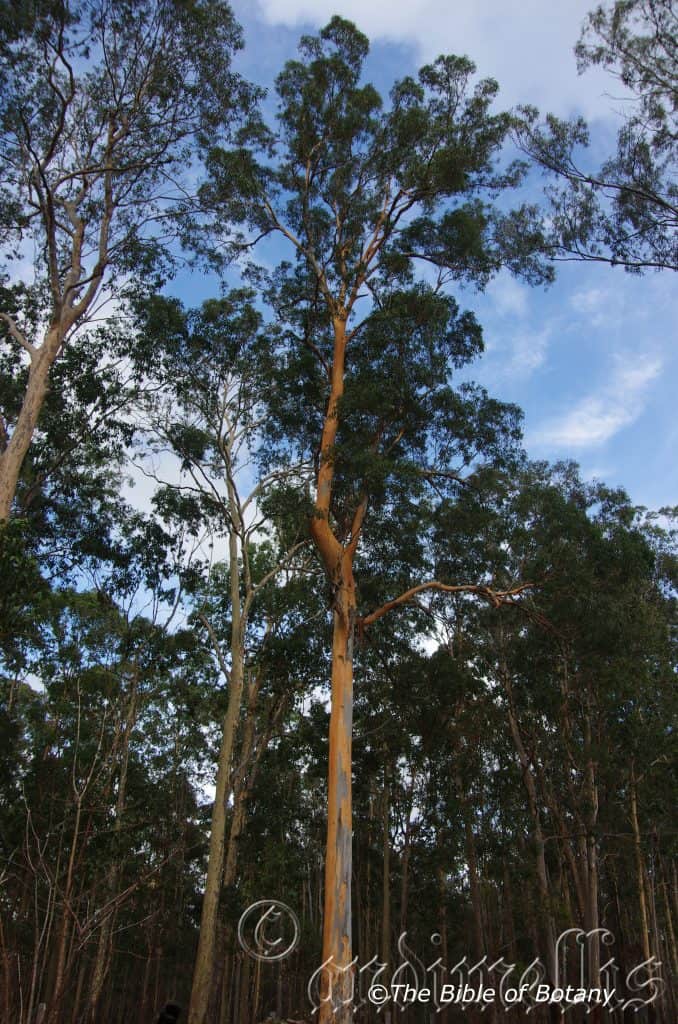


Eucalyptus propinqua
Classification:
Unranked: Eudicots
Unranked: Rosids
Order: Myrtales
Family: Myrtaceae
Genus: From Eu, which is Greek a prefix for good or well and Kaluptos, which is Ancient Greek for to cover up. It refers to the stamens, which have a lid or cover over them in the bud stage prior to opening.
Specie: From Propinqua, which is Latin for a close kinship or near to. It refers to species which look similar to several other species in the genus.
Sub specie:
Common Name: Small fruited Gum or Orange Bark Gum.
Distribution:
Eucalyptus propinqua is found east of the Great Dividing Range in its southern distribution crossing the Range in southern Queensland. It is found south from the Blackdown Tablelands and west to the Carnarvon Gorge in southern central Queensland to Wyong in central coastal New South Wales.
https://avh.ala.org.au/occurrences/search?taxa=Eucalyptus+propinqua#tab_mapView
Habitat Aspect Climate:
Eucalyptus propinqua prefers full sun and light shade as a juvenile tree. It grows on hills, gentle slopes or flats adjacent to dry rainforests in wet Eucalyptus forests and dry Eucalyptus forests. The altitude ranges from 5 meters ASL to 600 meters ASL.
The temperatures range from 2 degrees in July to 34 degrees in January.
The rainfalls range from lows of 700mm to an average of 1500mm annually.
Soil Requirements:
Eucalyptus propinqua prefers poor to medium fertile sandy loams to heavy clays. The soils pH ranges from 5pH to 6.5pH. It tolerates poorly drained soils and grows on soils with seasonal high water tables. Non saline soils to very saline soils are tolerated.
Height & Spread:
Wild Plants:30m to 40m by 10m to 15m.
Characteristics:
Eucalyptus propinqua is a very tall straight trunked tree which has a bole over half of its length. The large white and grey blotchy trunk is smooth but densely pitted with fine pin holes. The tree has a decorticating bark which is shed in large flakes or scales in spring. The new exposed bark is bright pink or brilliant pale orange before turning grey and white. The branches are pale grey to white and glabrous. The branchlets are glabrous, yellow green. The trunks are often covered in scratch marks of Koalas or finer scratches of possums.
Juvenile disjunct leaves are lanceolate, concolourous, glossy, pale green and glabrous.
The disjunct alternate adult leaves of Eucalyptus propinqua are lanceolate and measure 80mm to 140mm in length by 15mm to 25mm in width. The petioles measure 10mm to 15mm in length. The bases are rounded and slightly oblique while the apexes are tapering to narrowly acute. The discolourous laminas are glossy, dark green on the upper lamina and paler below. The lamina is flat to slightly curving upwards from the midvein towards the margins. The mid vein is slightly prominent on the upper lamina while the lower lamina is more prominent near the base, round to triangular near the base becoming less prominent towards the apex. The margins are entire.
The inflorescences of Eucalyptus propinqua are born as umbellasters containing 7 to 11 flowers from near the terminal leaf axis. The terete peduncle measures 5mm to 15mm in length while the terete pedicels measure 2mm to 5mm in length.
The buds are ovoid to globose, glaucous and measure 4mm to 5mm in length by 3mm to 4mm in diameter. The bud scar is distinctly visible after releasing the conical to hemispherical operculum which measures 2mm to 2.5mm in length. The peduncle, pedicle, buds and disc area pale lime green.
The stamens are white with white or cream anthers. They measure 8mm to 10mm in length while the white style measures 3mm to 4mm in length. The flowers of Eucalyptus propinqua appear from January to the end of February.
The fruits are conical to hemispherical gum nuts. The gum nuts measure 2.5mm to 5mm in length by 3mm to 6mm in diameter. The disc is flat to slightly raised, revealing the 4 exserted valves.
Wildlife:
The flowers of Eucalyptus propinqua are medium to high nectar producers and are very attractive to most honeyeaters, lorikeets, flying foxes, possums and many insects. The pollen is also a rich source of protein for apriasts. Bellbirds and other small birds can always be seen on the trees so they must support a large variety of thrips, lerps and other sap sucking insects especially when in flower. The trees are a main source of food for Koalas and Flying foxes. The yellow belly Glider uses this tree as a staple food source eating the sap.
( www.saveourwaterwaysnow.com.au)
Cultivation:
Eucalyptus propinqua is a large tree for large gardens and very useful for that parkland scene or starting a forest garden. It is ideal on heavier drier or wet soils that may suffer from annual inundations and alluvial flats. It is fast growing so give good effects at an early age. As it is moderately salt resistant they can be used close to the coast where salt laden winds and the occasional tidal inundation occur.
Eucalyptus propinqua main feature is the extraordinary bark at the time of decorticating. The new bark is a brilliant orange. In the evenings after a summer storm the orange seems to be more vivid and glistens even more spectacularly with the setting sun.
It is fast growing so give good effects at an early age. They will grow 25 meters to 30 meters tall by 12 meters to 18 meters in diameter as a tree.
For the wildlife, heavy flowering, and the ability to grow on very poor wet soils this Eucalyptus specie should be grown far more than it is on large blocks in wildlife corridors. It can tolerate frosts and temperatures down to minus 4 degrees once established, require low maintenance and is drought resistant on the coast.
It is ideal in a mixed park like situation where the barks contrast well with other Eucalyptus, Corymbia and Angophora specie. Its suitability in high wind zones on sandy soils is questionable as they have a tendency to be uprooted especially where fertilizers have been added to the soil to promote fast growth. They become top heavy so should not be fertilized after the initial year after planting out.
Like most large Eucalyptus specie leaf drop, dropping of small branches means continual lawn maintenance but then in a rainforest garden supply good quantities of leaf litter. Trees grown in the open are subject to branches breaking in strong winds and even the trees being completely uprooted. This is particularly apparent where trees are being fertilized and are top heavy.
Propagation:
Seeds: Sow fresh seeds into a seed raising mix. Place the seed tray where daily temperatures are in excess of 25 degrees for more even and rapid germination. When the seedlings are 25mm to 50mm tall, prick them out and plant them into 50mm native tubes using a good organic mix.
Once the seedlings reach 200mm to 250mm in height plant them out into their permanent position.
Fertilize using seaweed, fish emulsion or organic chicken pellets soaked in water on an alternate basis. Fertilize every two months until the plants are established then twice annually in early September or March to maintain health, vitality and better flowering.
Further Comments from Readers:
“Hi reader, it seems you use The Bible of Botany a lot. That’s great as we have great pleasure in bringing it to you! It’s a little awkward for us to ask, but our first aim is to purchase land approximately 1,600 hectares to link several parcels of N.P. into one at The Pinnacles NSW Australia, but we need your help. We’re not salespeople. We’re amateur botanists who have dedicated over 30 years to saving the environment in a practical way. We depend on donations to reach our goal. If you donate just $5, the price of your coffee this Sunday, We can help to keep the planet alive in a real way and continue to bring you regular updates and features on Australian plants all in one Botanical Bible. Any support is greatly appreciated. Thank you.”
In the spirit of reconciliation we acknowledge the Bundjalung, Gumbaynggirr and Yaegl and all aboriginal nations throughout Australia and their connections to land, sea and community. We pay our respect to their Elders past, present and future for the pleasures we have gained.
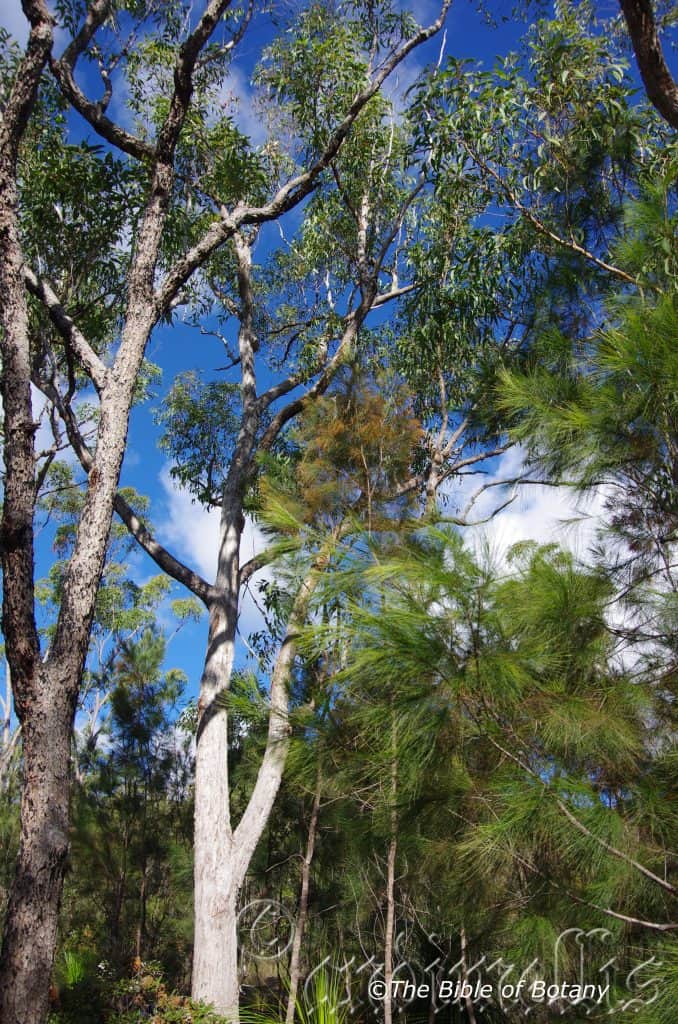
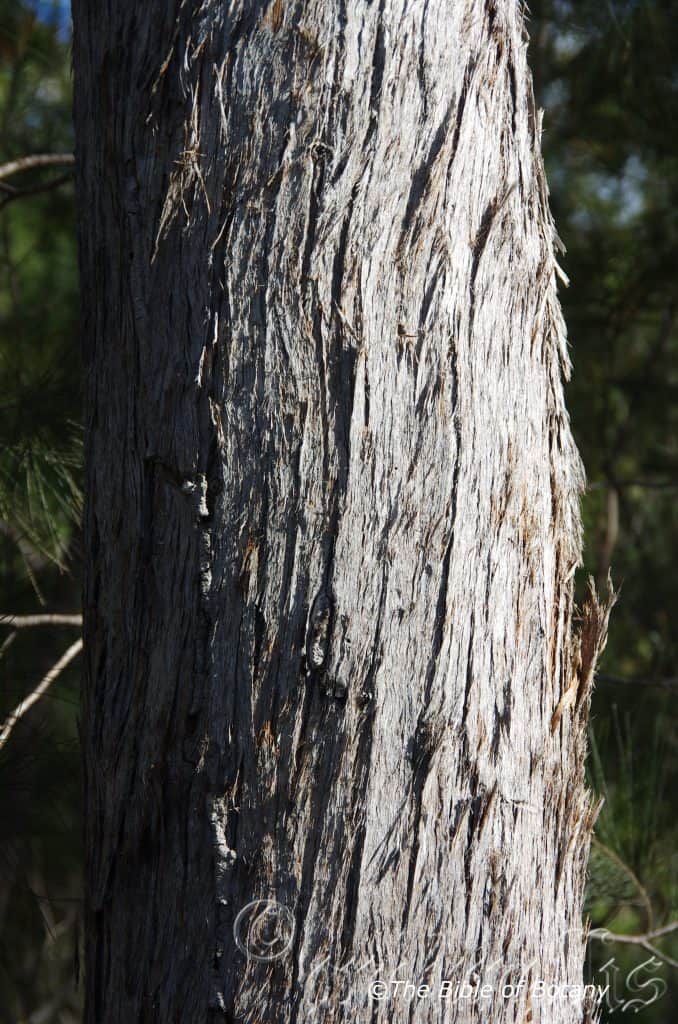
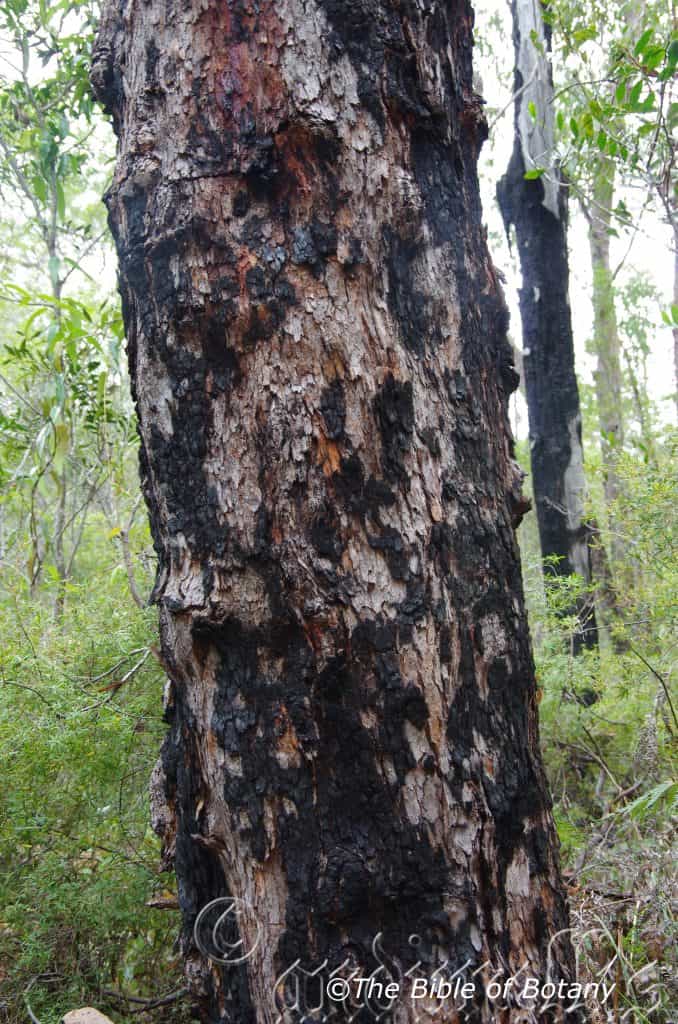
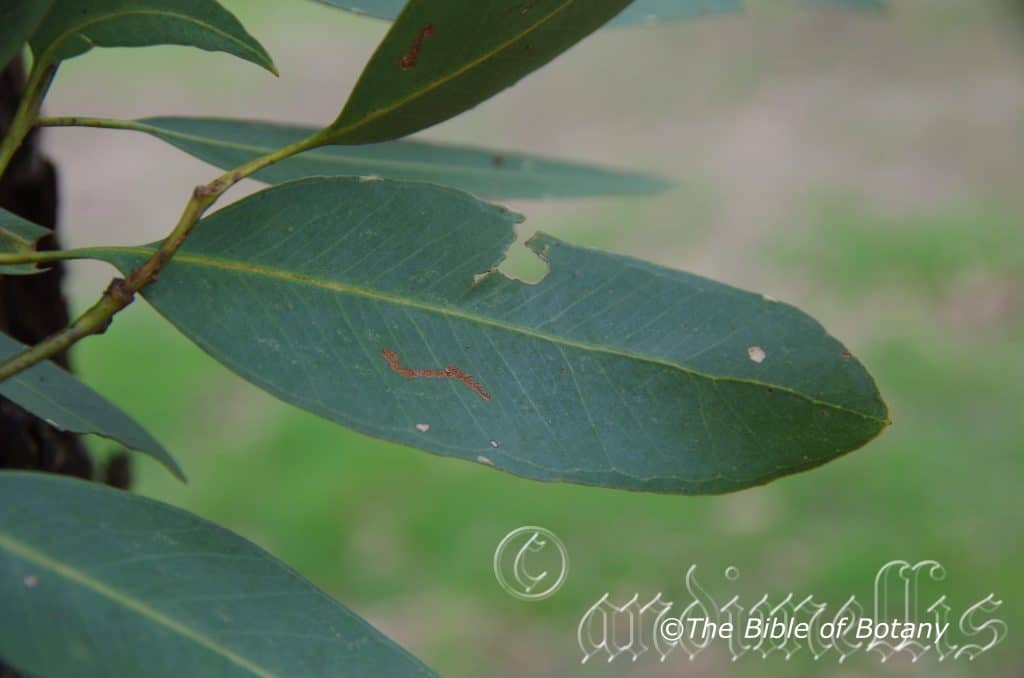
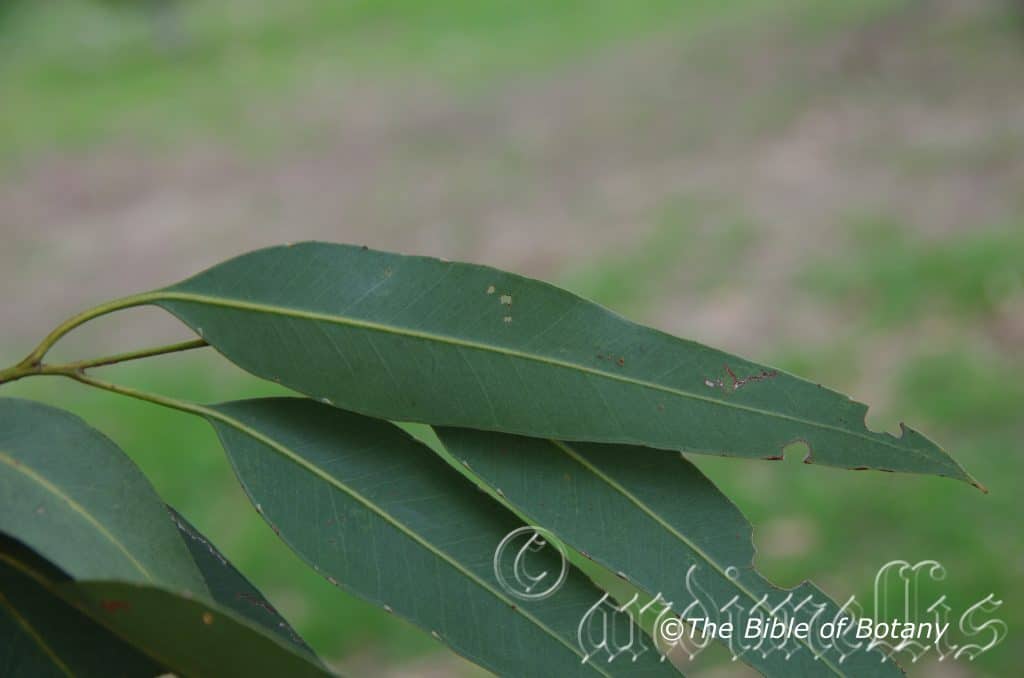

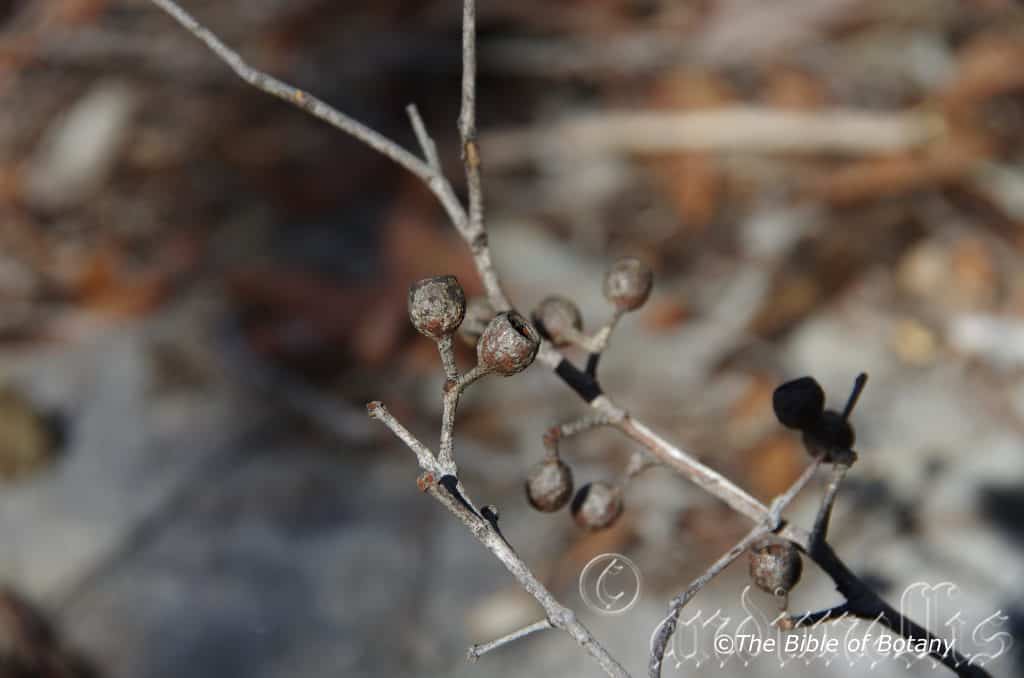
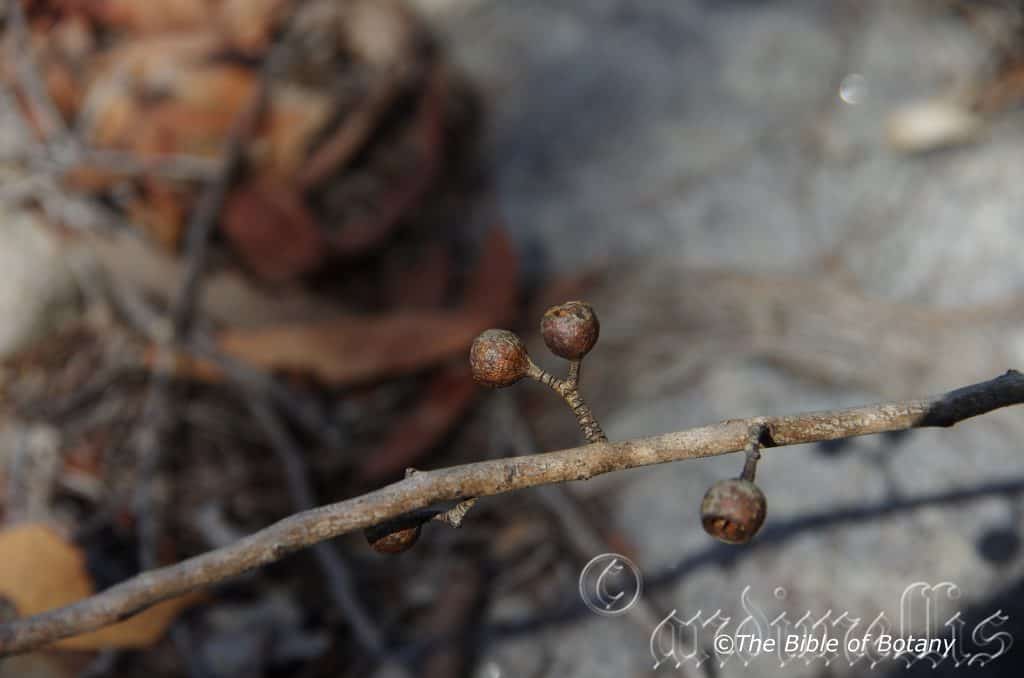
Eucalyptus psammitica
Classification:
Unranked: Eudicots
Unran: Rosids
Order: Myrtales
Family: Myrtaceae
Genus: From Eu, which is Greek a prefix for good or well and Kaluptos, which is Ancient Greek for to cover up. It refers to the stamens, which have a lid or cover over them in the bud stage prior to opening.
Specie: From Psamnos, which is Ancient Greek for sand and Geiton, which is Greek/Latin for a neighbour. It refers to plants which have a preference for sandy soils and grow in communities with other sand loving Eucalyptus species.
Sub specie:
Common Name: Bastard White Mahogany.
Distribution:
Eucalyptus psammitica is found south from Brisbane in southern coastal Queensland to Kungala and Shannon Creek south of Grafton in north eastern New South Wales. It is found east of the Great Dividing Range.
https://avh.ala.org.au/occurrences/search?taxa=Eucalyptus+psammitica#tab_mapView
Habitat Aspect Climate:
Eucalyptus psammitica prefers Full sun. It grows in dry schlerophyll forest or in open woodlands on flats and gentle slopes. The altitude ranges from 25 meters ASL to 220 meters ASL.
The temperature range from minus 2 degrees in August to 40 degrees in January.
The rainfall ranges from lows of 850mm to an average of 1500mm annually.
Soil Requirements:
Eucalyptus psammitica prefers skeletal, red, orange or grey sand or fatty sandy soils over sandstone or granite. The soils are derived from decomposed sandstones or granite. The soils pH ranges from 4.5pH to 5.5pH. It does not tolerate water logged soils. Non saline soils to moderately saline soils are tolerated.
Height & Spread:
Wild Plants: 6m to 20m by 6m to 9m.
Characteristics:
Eucalyptus psammitica is a small to medium size tree which often has a twisting look on the trunk. The persistent thick spongy reddish-brown to pale grey stringy bark is maintained to the small branches. The bark is needle like and will break off in needle like pieces into the skin and may cause some local infection. The branchlets are smooth and reddish-brown or mid grey and smooth. The bark is persistent throughout the tree.
Juvenile leaves are disjunct narrow lanceolate to broad lanceolate. The concolourous laminas are mid green and dull to semi glossy.
The adult disjunct leaves of Eucalyptus psammitica are narrow lanceolate to lanceolate more often the latter and slightly falcate to falcate and measure 90mm to 160mm in length and 15mm to 26mm in width. The yellow-green petioles have a faint channel on the upper surface as they approach the base of the laminas and measure 12mm to 20mm in length. The bases are slightly oblique and cuneate while the apexes are tapering acute. The discolourous laminas are mid green, dull to semi glossy on the upper laminas while the lower laminas are slightly paler. The margins are entire. The yellow-green midvein is prominent on the lower lamina and is very slightly prominent on the basal half of the upper lamina. The lateral veins are regularly spaced are at 42 degrees to 46 degrees from the main vein while the intramarginal vein is well away from the margin.
The inflorescences of Eucalyptus psammitica are born as umbellasters containing 7 to 11 individual flowers from near the terminal leaf axis. The narrowly flattened to angular peduncles measure 7mm to 16mm in length while the round angular pedicels measure 7mm to 8mm in length.
The bud’s hypanthia are grass–green and cupular while the calyptras are conical with a rostrate apex. The hypanthium measure 3mm to 4mm in length by 3mm to 4mm in diameter. The operculum is conical and measures 4mm to 5.5mm in length. The bud scar is absent.
The divaricate filaments are inflexed white or creamy white with cream anthers. The filaments measure 6mm to 8mm in length.
The cream style measures 6mm to 8mm in length. The disc is a mid grass-green to deep grass-green. The flowers of Eucalyptus psammitica appear from November to February.
The fruits of Eucalyptus psammitica are resinous, globose to hemispherical gum nuts. The gum nuts measure 7mm to 10mm in length by 7mm to 10mm in diameter. The disc is flat or slightly domed and level to exserted while the 4 valves are exserted. The reddish brown to deep brown seeds are ovoid to circular, flat and measure 3mm to 4mm in length.
Wildlife:
The flowers of Eucalyptus psammitica are medium to high nectar producers, supply high protein pollen but are known as a breeding interrupting tree sending the queen off laying eggs. It is very attractive to most honeyeaters, lorikeets, flying foxes, possums and many insects. It is a substandard koala tree that is used at times sparingly. Sugar gliders also frequent the tree when in flower especially when the trees have a continuous corridor. This may have something to do with the needle like bark splinters of trees in the open or safety reasons in getting to these trees.
Cultivation:
Eucalyptus psammitica is a medium size tree for medium to large gardens and very useful for that parkland scene or starting a forest garden in temperate to tropical zones including semi-arid areas. It is ideal on light sandy to pure sand or sandstone where they dry out very quickly. It is fast growing so give good effects at an early age. They will grow 10 meters to 14 meters tall by 8 meters to 10 meters in diameter as a tree in the open.
For the wildlife, its medium size, attractiveness, heavy flowering, large leaves and the ability to grow on very poor sandy soils gives Eucalyptus psammitica an advantage that should see it grown far more than it is. The disadvantage in small gardens is the needle like stringy bark around children. It can tolerate frosts and temperatures down to minus 4 degrees once established and are drought tolerant on the coast.
It is ideal in a mixed park like situation where the barks contrast well with other Eucalyptus specie, Corymbia specie and Angophora specie. Its suitability in high wind zones on sandy soils is unquestionable despite its large bushy crown. Trees in the open on headlands often form large shrubs with a strong bias on the opposite side to the prevailing winds which makes them an ideal tree for that large heath project or as a shelter belt. This is an unusual characteristic for plants with very large leaves.
Like most large Eucalyptus specie leaf drop, dropping of small branches means continual lawn maintenance but then in a rainforest or bush garden they supply good quantities of leaf litter. Trees grown in the open are subject to branches breaking in strong winds and even the trees being completely uprooted. This is particularly apparent where trees are being fertilized with plants becoming top heavy.
Propagation:
Seeds: Sow into a seed raising mix. When the seedlings are 25mm to 50mm tall, prick them out and plant them into 50mm native tubes using a good organic mix.
Fertilize using Seaweed, fish emulsion or organic chicken pellets soaked in water and apply the liquid on an alternate basis. Fertilize every two months until established then only on an annual basis. Do not use high nitrogenous fertilizers as the plants will become top heavy and may succumb to windy weather especially in exposed locations.
Once the seedlings reach 200mm to 250mm in height plant them out into their permanent position.
Further Comments from Readers:
“Hi reader, it seems you use The Bible of Botany a lot. That’s great as we have great pleasure in bringing it to you! It’s a little awkward for us to ask, but our first aim is to purchase land approximately 1,600 hectares to link several parcels of N.P. into one at The Pinnacles NSW Australia, but we need your help. We’re not salespeople. We’re amateur botanists who have dedicated over 30 years to saving the environment in a practical way. We depend on donations to reach our goal. If you donate just $5, the price of your coffee this Sunday, We can help to keep the planet alive in a real way and continue to bring you regular updates and features on Australian plants all in one Botanical Bible. Any support is greatly appreciated. Thank you.”
In the spirit of reconciliation we acknowledge the Bundjalung, Gumbaynggirr and Yaegl and all aboriginal nations throughout Australia and their connections to land, sea and community. We pay our respect to their Elders past, present and future for the pleasures we have gained.
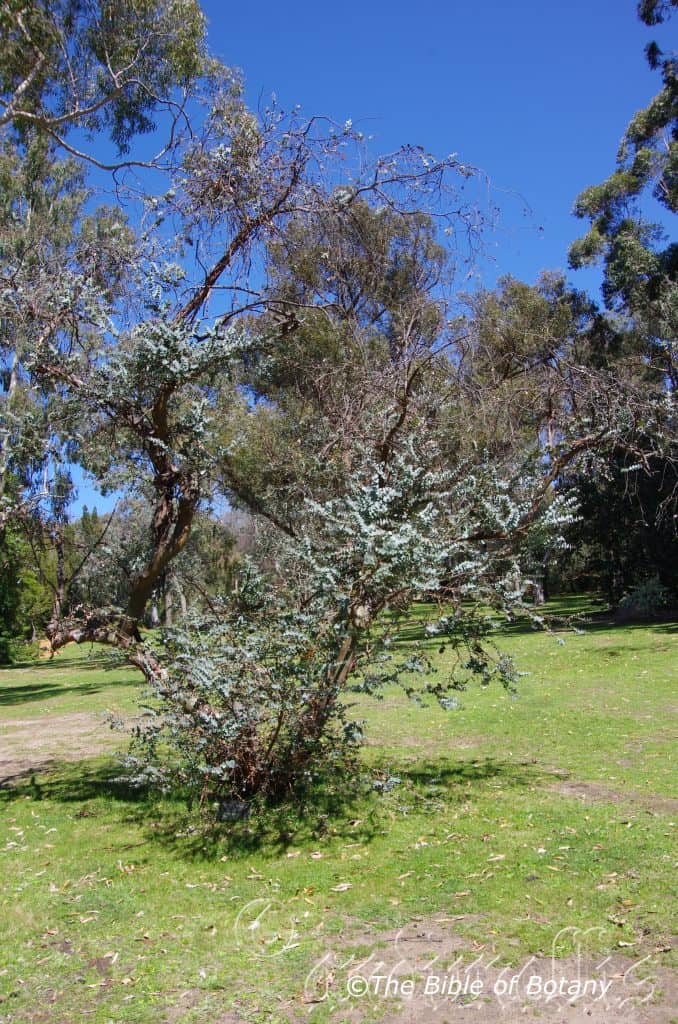
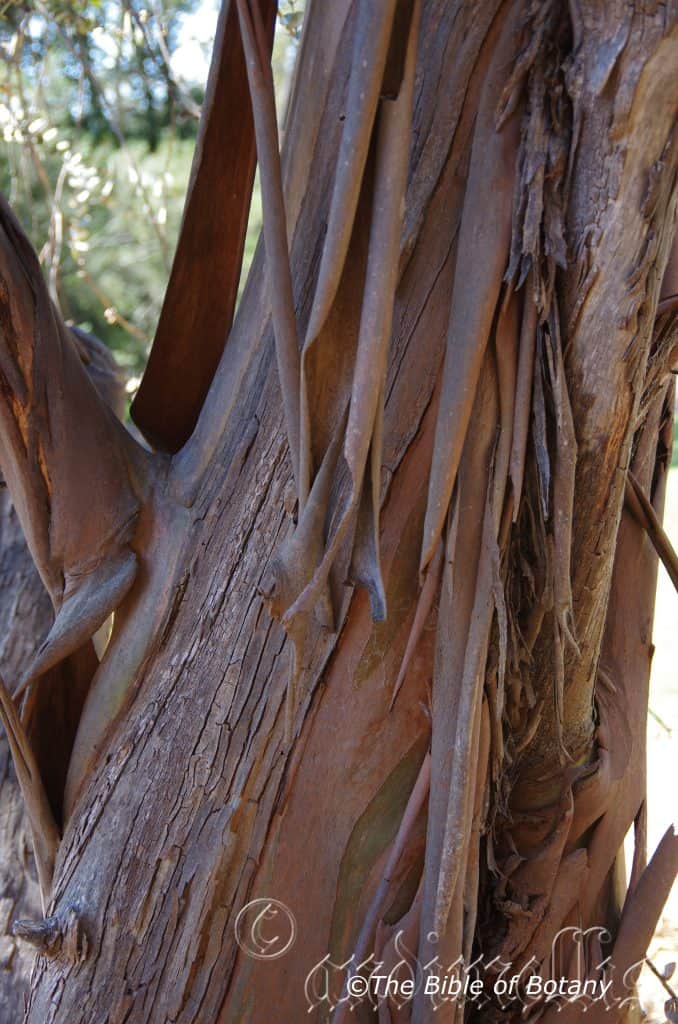
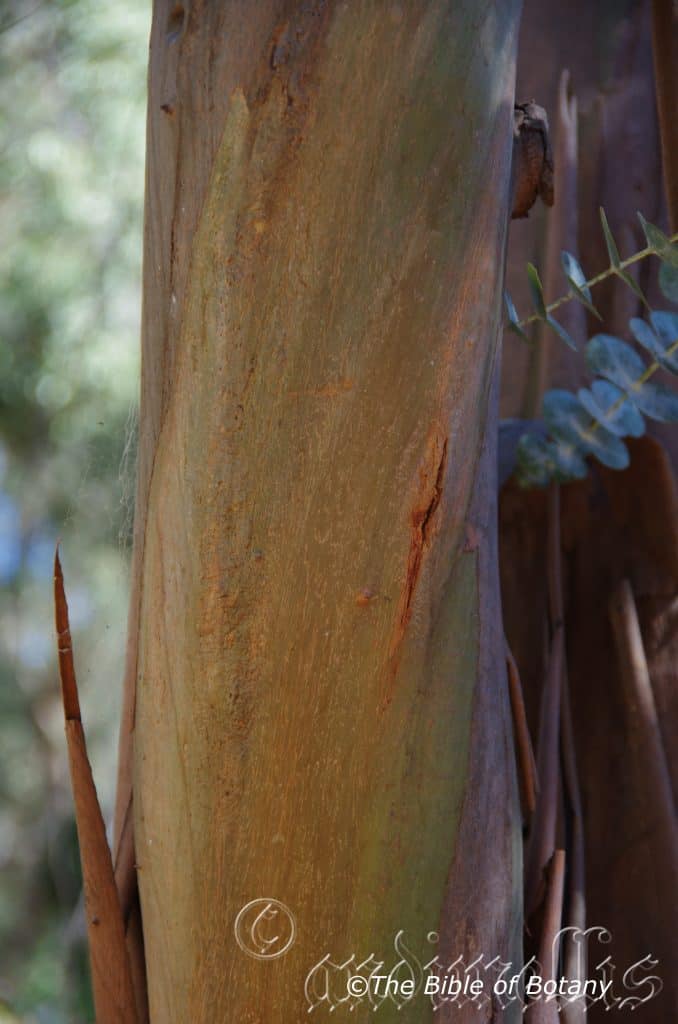
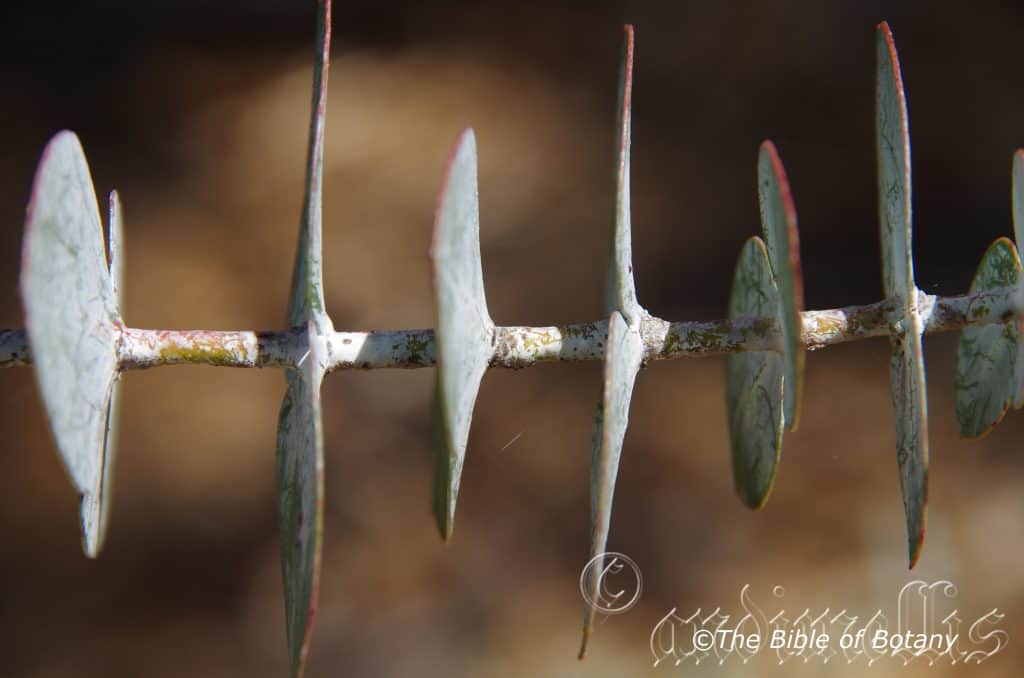
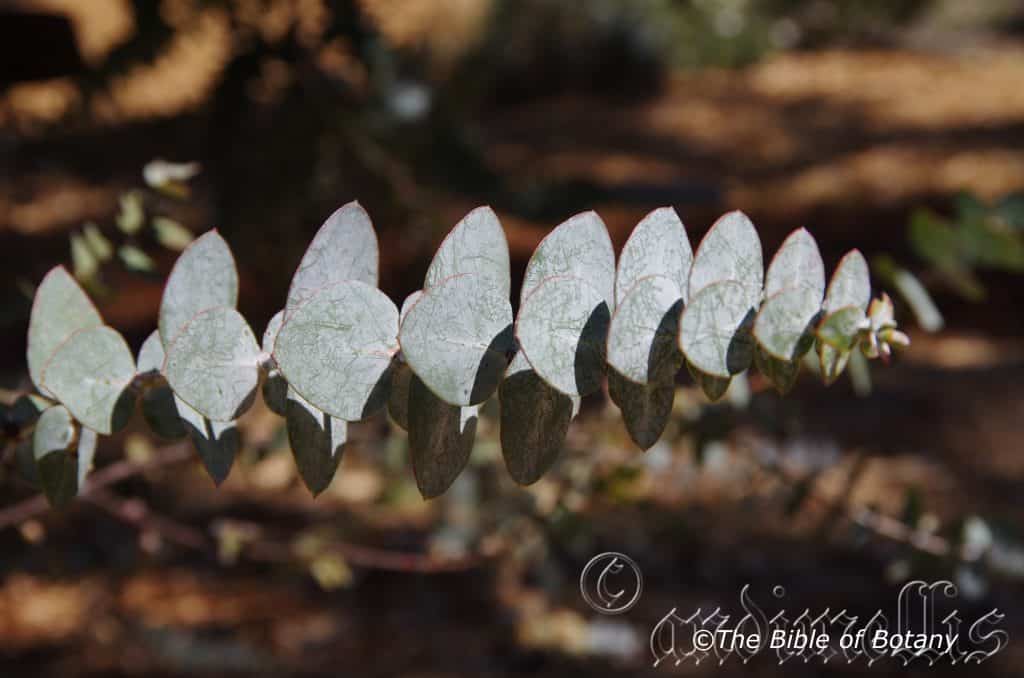

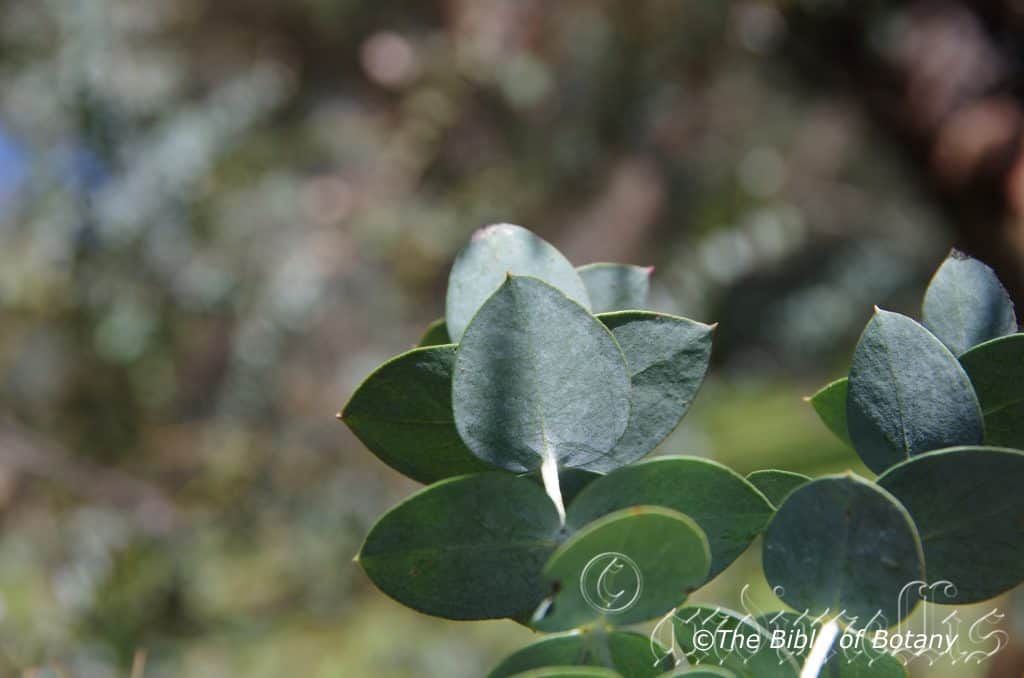
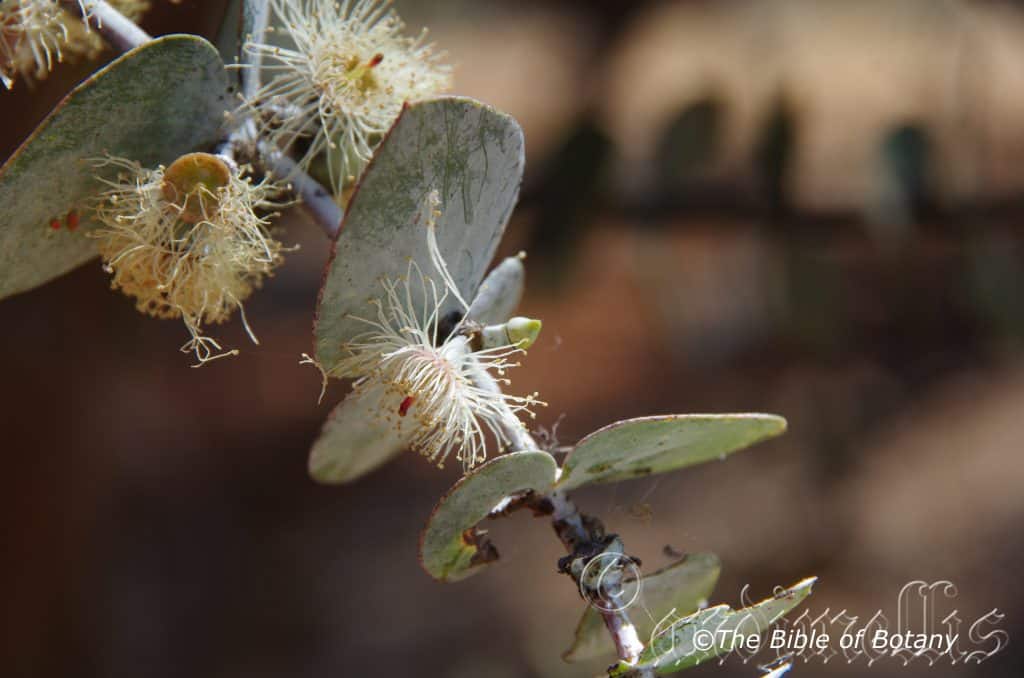
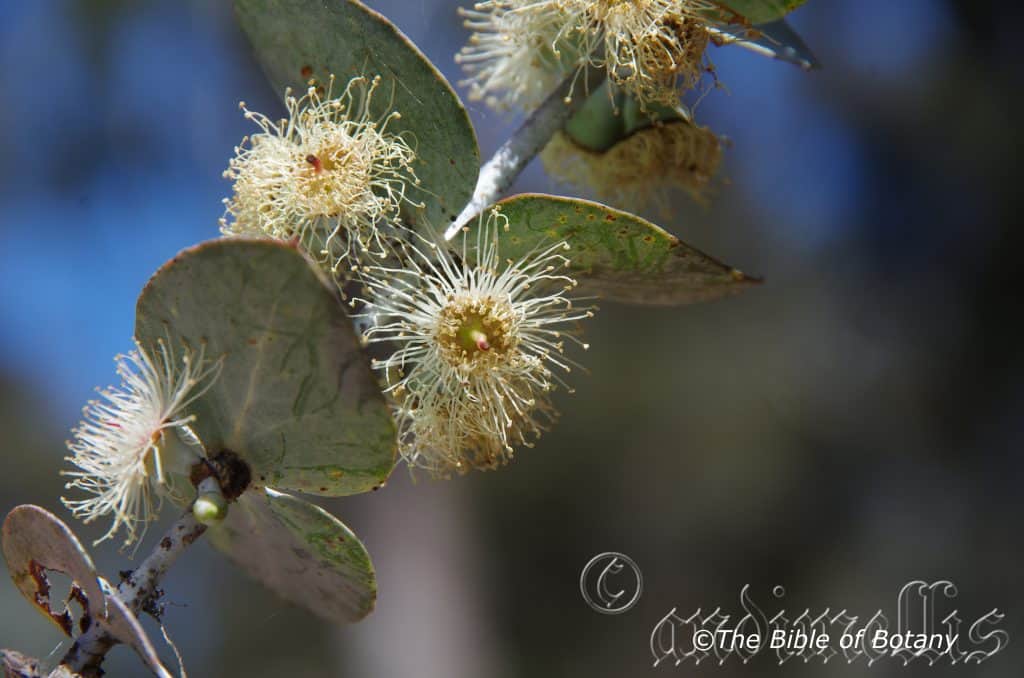
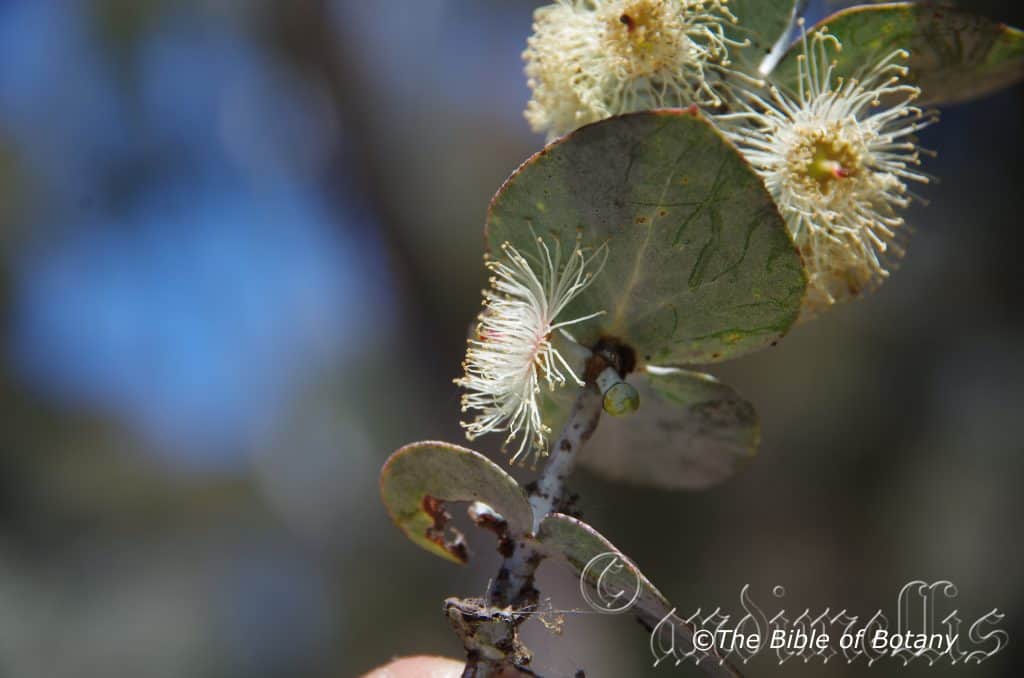

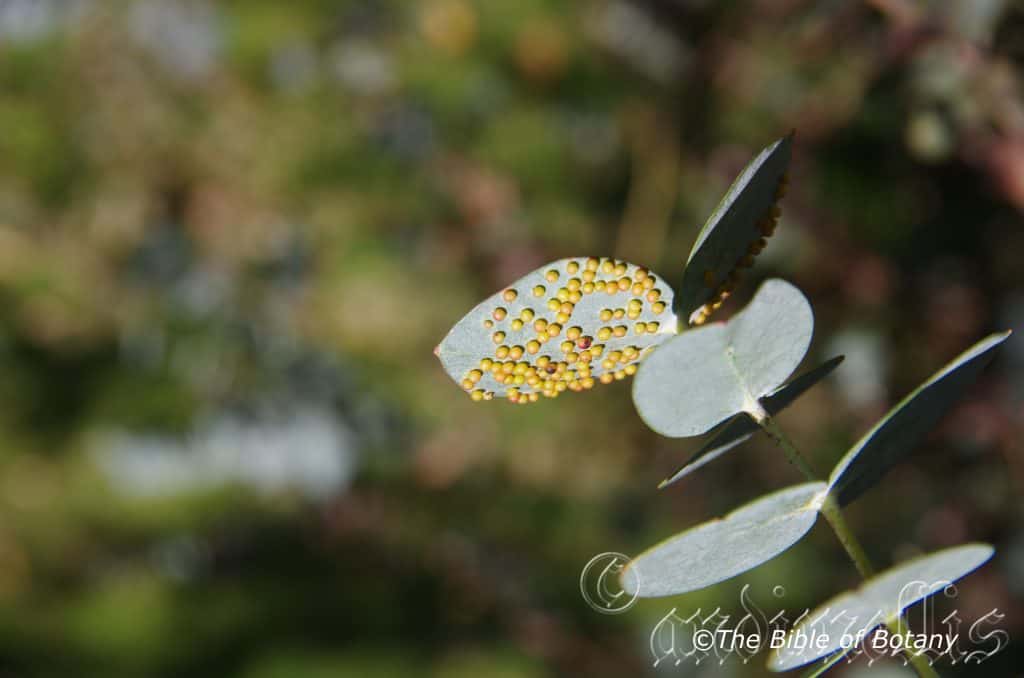
Eucalyptus pulverulenta
Classification:
Unranked: Eudicots
Clade: Rosids
Order: Myrtales
Family: Myrtaceae
Genus: From Eu, which is Greek a prefix for good or well and Kaluptos, which is Ancient Greek for to cover up. It refers to the stamens, which have a lid or cover over them in the bud stage prior to opening.
Specie: From Pulvis, which is Latin for Dust and Ulentus, which is Latin an abundance of. It refers to surfaces or organs, which appear to be covered in a grey dust.
Sub specie:
Common Name: Dusty Gum or Silver leaf Mountain Gum.
Distribution:
Eucalyptus pulverulenta is a rare gum growing in scattered small stands between from Mudgee to Bombala in southern New South Wales. It grows on and east of the Great Dividing Range.
https://avh.ala.org.au/occurrences/search?taxa=Eucalyptus+pulverulenta#tab_mapView
Habitat Aspect Climate:
Eucalyptus pulverulenta prefers full sun to part shade or dappled sunlight. It grows in dry sclerophyll forests, dry sclerophyll woodland and open grassy woodlands. It is found on crests or upper slopes of moderately steep hillsides or mountains. The altitude ranges from 450 meters to 850 meters ASL.
The temperatures range from minus 5 degree in August to 34 degrees in January.
The rainfall ranges from lows of 400mm to an average of 600mm.
Soil Requirements:
Eucalyptus pulverulenta prefers skeletal, poor soils of medium sands to course sands. The soils are usually derived from decomposed shales or at times granite or sandstone. The soil’s pH ranges from 5pH to 7.5pH. It does not tolerate water logged soils.Non saline soils to moderately saline soils are tolerated.
Height & Spread:
Wild Plants: 5m to 12m by 4m to 6m.
Characteristics:
Eucalyptus pulverulenta is a small tree or medium size mallee which branches freely from the near the ground. A typically grey gum bark is smooth grey or grey-bronze, shedding in long ribbons to reveal green and pink new bark. The branchlets are whiteish-grey as if covered in grey dust.
Eucalyptus pulverulenta’s juvenile and coppice stems are terete, and pulverulent. The sessile opposite, leaves are orbiculate to cordate and glaucous. The concolourous laminas are dull pale blue-green and glaucous. The leaves measure 40mm to 50mm in diameter. The margins are entire.
The alternate, disjunct, broad-lanceolate to elliptic measure 50mm to 100mm in length by 12mm to 20mm in width. The concolourous leaves are dull pale blue-green and glaucous.
The inflorescences of Eucalyptus pulverulenta are unbranched umbellasters born auxiliary along the stems from the leaf axils. There are 3 individual white flowers to an umbellaster. The terete peduncles measure 5mm to 9mm in length. The ovoid to shortly fusiform buds are sessile, glaucous and measure 7mm to 9mm in length by 4mm to 6mm in diameter. A bud scar is present. The calyptra is conical, shorter than and at least as wide as hypanthium.
The white stamens measure 7mm to 11mm in length. The pale creamy, orbicular anthers are dorsifixed and are all fertile. The stout, lemon to lemon-green style measures is central on the deep yellow-ochre disc. The flowers appear from May to November.
The fruits of Eucalyptus pulverulenta are cylindrical or hemispherical woody capsules known as gum nuts. The green gum nuts turn grey when ripe and measure 5mm to 8mm in length by 6mm to 8mm in diameter at the widest point. The disc is flat to with the 4 triangular valves being level or slightly exserted.
Wildlife:
The wildlife of Eucalyptus pulverulenta is especially attractive to birds while the flowers produces a good quality nectar and quantity for honey production and the pollen is also a valuable protein for many insects.
Cultivation:
Eucalyptus pulverulenta is a beautiful small tree or medium mallee, which is ideally suitable for small, medium or larger suburban gardens where a Eucalyptus tree is required. It is fast growing provided heavy clays are broken up. Planting adjacent to or with an acacia species to assist in breaking the clay up and organic fertilizers are used in the initial years. It looks rather affective when planted with other single trunk trees and mallees with contrasting glossy green or blue-grey foliage and growth habits. In the garden good specimens may grow to 10 meters as a single trunk tree or 4 meters to 6 meters by 4 meters in diameter when grown in the open.
Like all Eucalyptus spp. though some leaf drop and dropping of small branchlets means continual lawn maintenance but then this species is far better in garden beds and native heath gardens than in lawns. It is not a Eucalyptus for street planting or planting close to out buildings or underground amenities due to its eventual size. The foliage can also be used in flower arrangements.
Propagation:
Seeds: Sow into a seed raising mix. Cover the seeds with 2mm to 3mm of fine sand and place the trays in a warm sunny position. Keep the seeds moist but not wet. When the seedlings are 25mm to 50mm tall, prick them out and plant them into 50mm native tubes using a good organic mix.
Once the seedlings reach 200mm to 250mm in height plant them out into their permanent position. Mass plantings are best done in groups of 3 to 5 as a feature by planting them at 4 meter to 5 meter centers as a tree or 5 meters to 6 meters as a mallee.
Fertilize using Seaweed, fish emulsion or organic chicken pellets soaked in water and apply the liquid on an alternate basis. Fertilize every two month until the trees are well established then every spring to ensure good growth and flowering.
Further Comments from Readers:
“Hi reader, it seems you use The Bible of Botany a lot. That’s great as we have great pleasure in bringing it to you! It’s a little awkward for us to ask, but our first aim is to purchase land approximately 1,600 hectares to link several parcels of N.P. into one at The Pinnacles NSW Australia, but we need your help. We’re not salespeople. We’re amateur botanists who have dedicated over 30 years to saving the environment in a practical way. We depend on donations to reach our goal. If you donate just $5, the price of your coffee this Sunday, We can help to keep the planet alive in a real way and continue to bring you regular updates and features on Australian plants all in one Botanical Bible. Any support is greatly appreciated. Thank you.”
In the spirit of reconciliation we acknowledge the Bundjalung, Gumbaynggirr and Yaegl and all aboriginal nations throughout Australia and their connections to land, sea and community. We pay our respect to their Elders past, present and future for the pleasures we have gained.
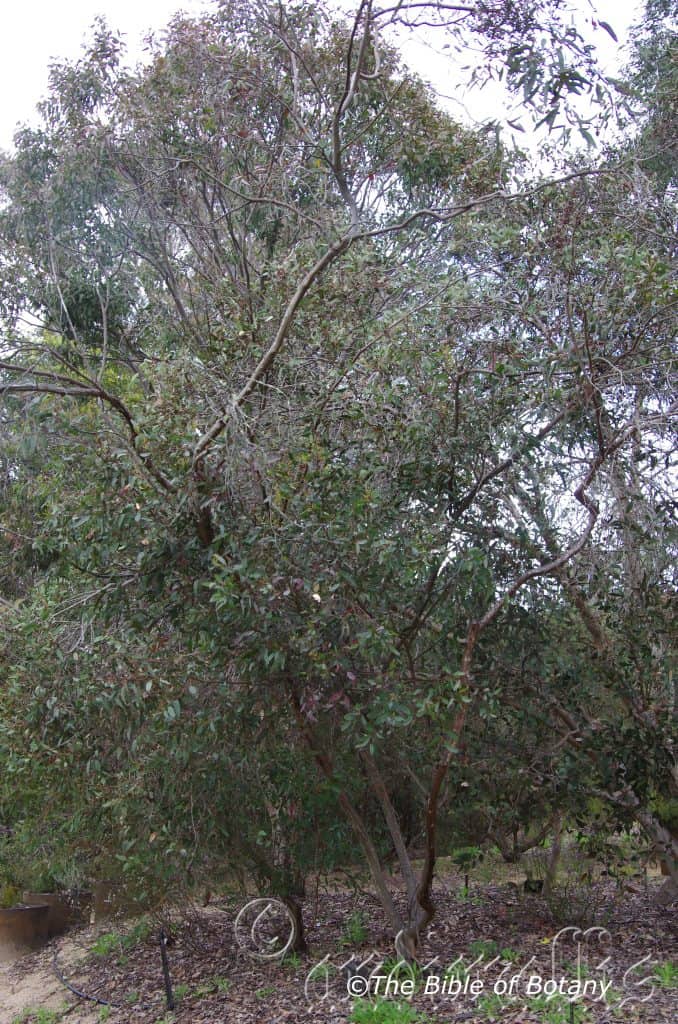

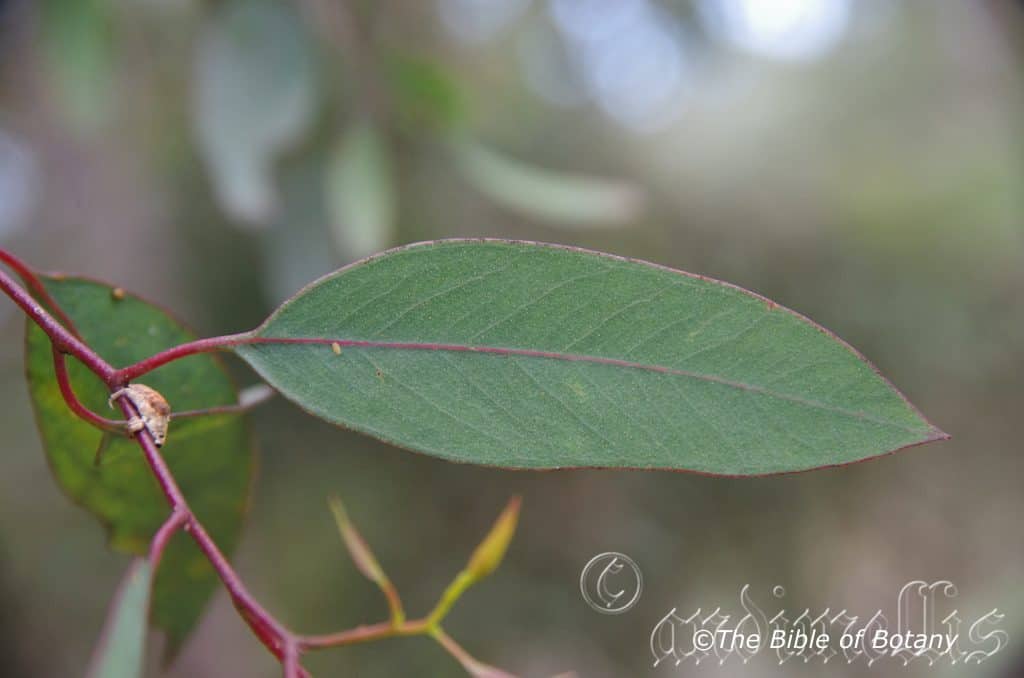
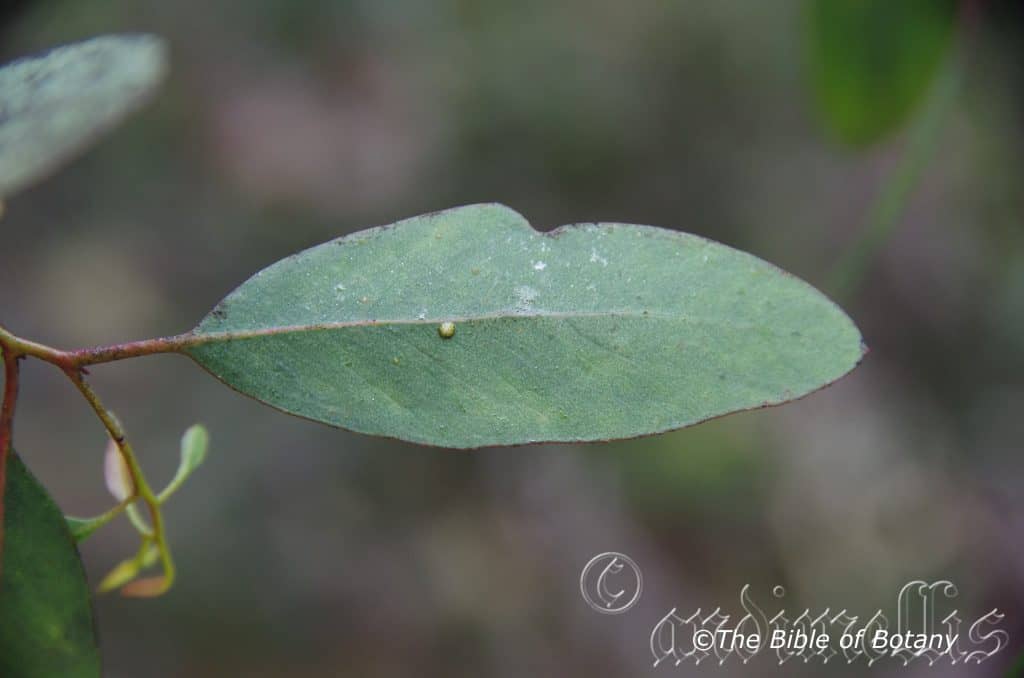
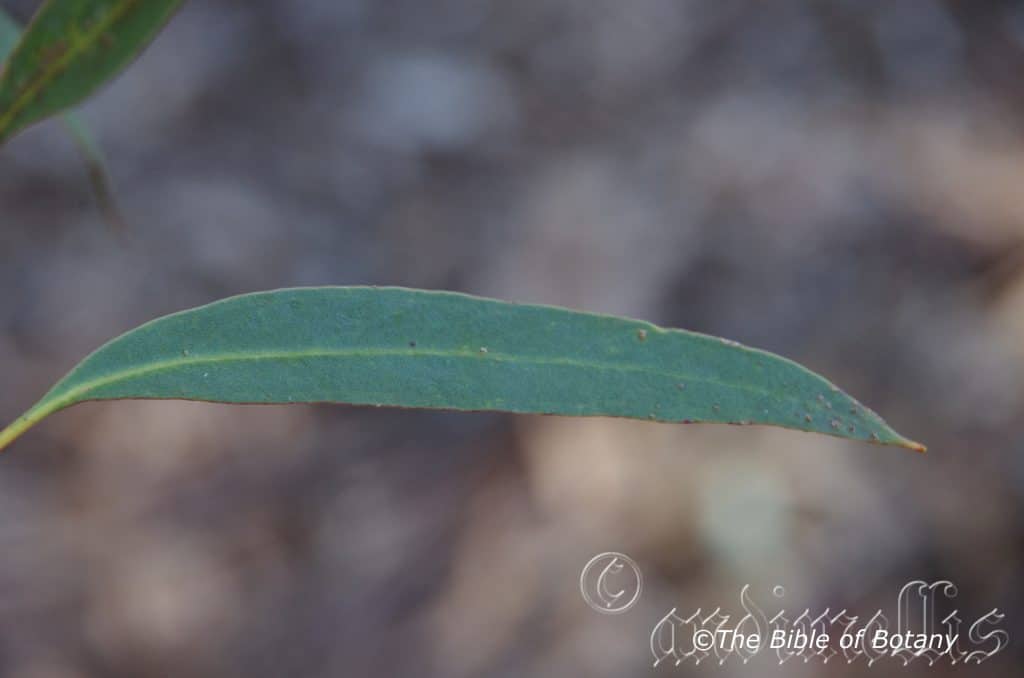
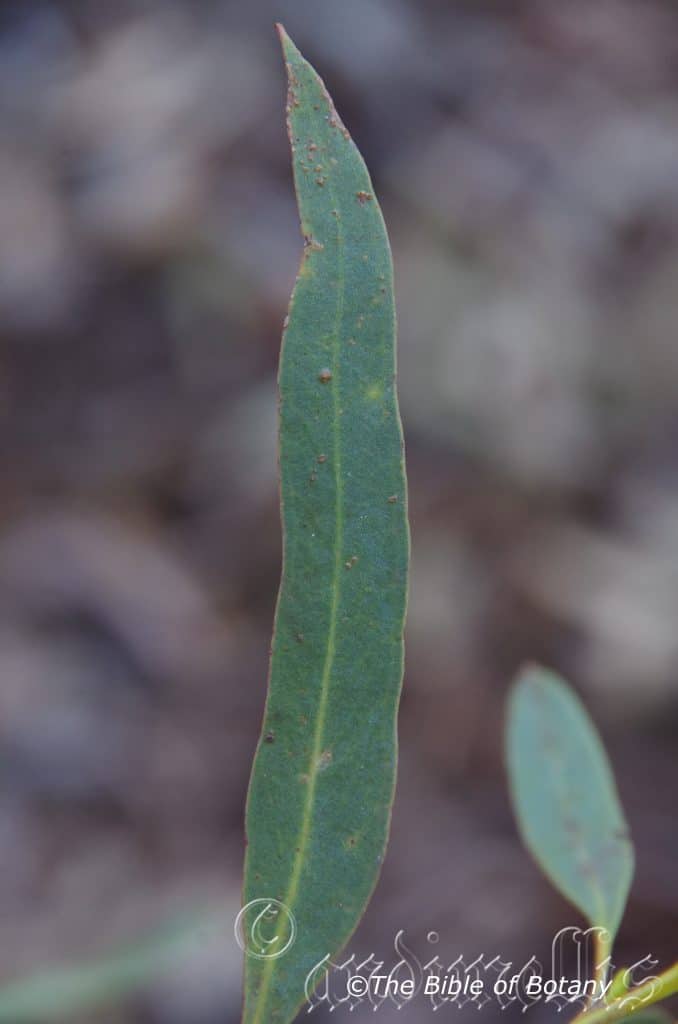
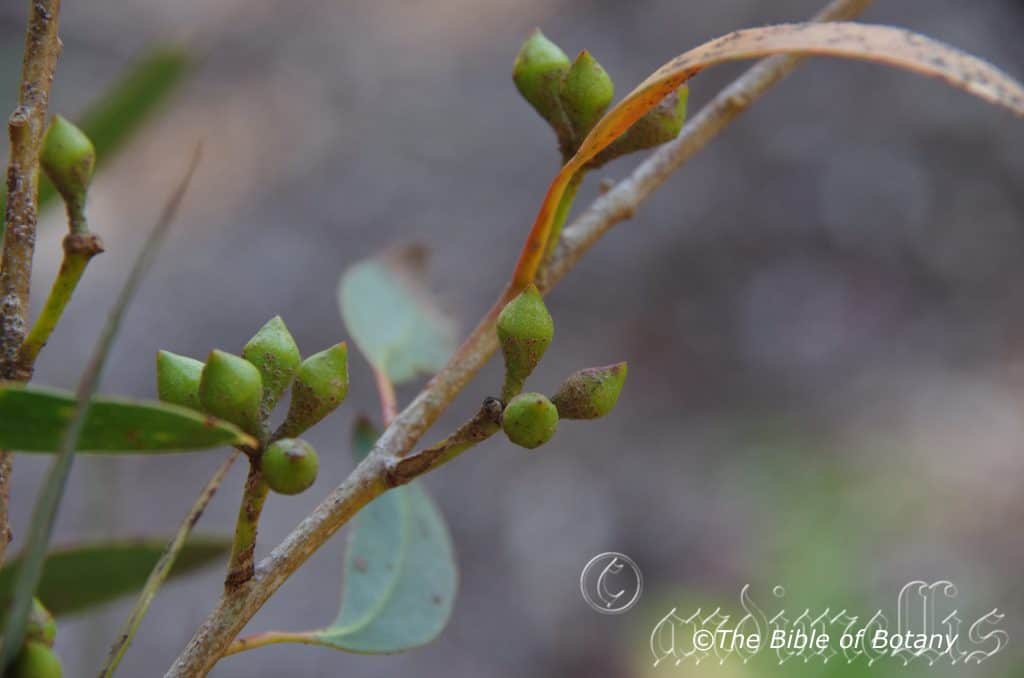
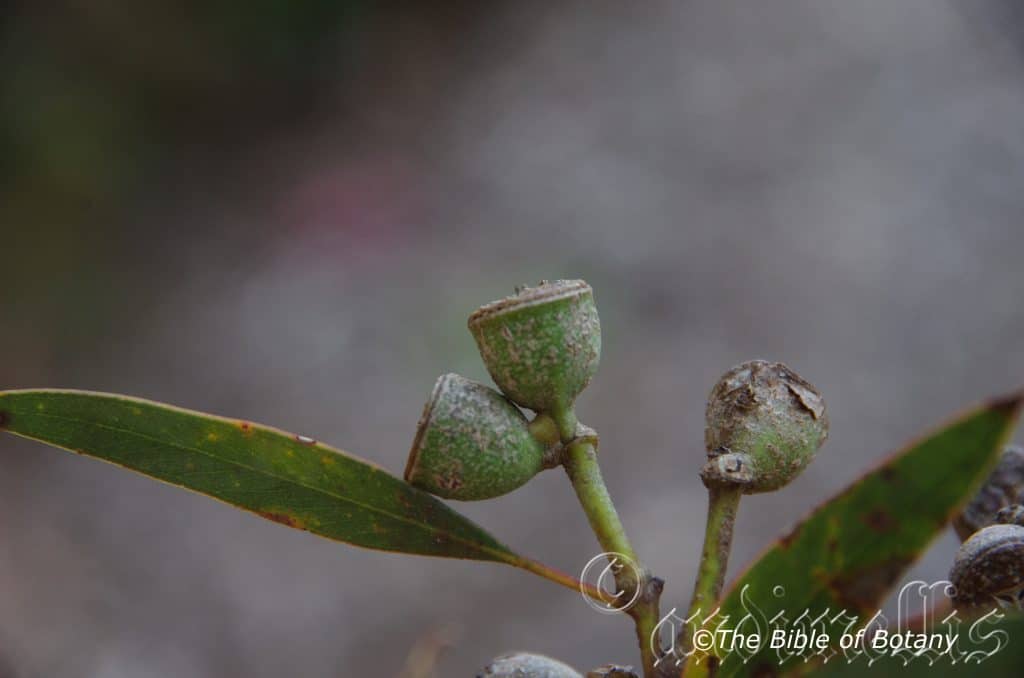
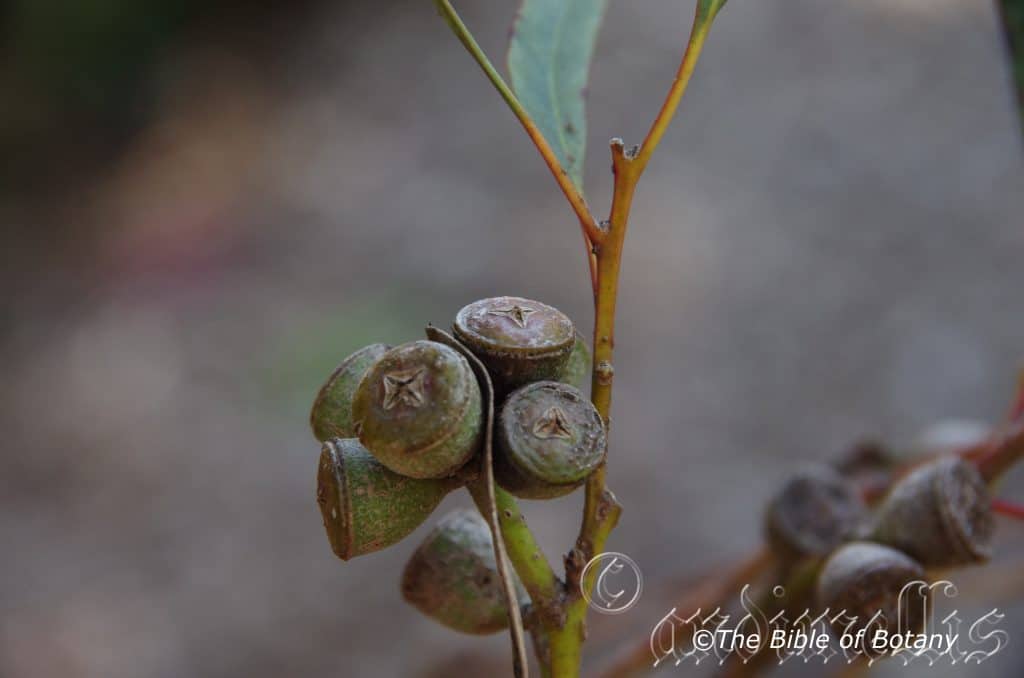
Eucalyptus pumila
Classification:
Unranked: Eudicots
Clade: Rosids
Order: Myrtales
Family: Myrtaceae
Genus: From Eu, which is Greek a prefix for good or well and Kaluptos, which is Ancient Greek for to cover up. It refers to the stamens, which have a lid or cover over them in the bud stage prior to opening.
Specie: From Pūmilus, which is Latin for a child or a puppet. It refers to the plant being like a dwarf compared to the other trees in its habitat.
Common Name: Dwarf Mountain Gum.
Distribution:
Eucalyptus pumila is restricted to a single stand between Broke and Cessnock near Pokolbin in central eastern New South Wales.
https://avh.ala.org.au/occurrences/search?taxa=Eucalyptus+pumila#tab_mapView
Habitat Aspect Climate:
Eucalyptus pumila prefers full sun to part shade or dappled sunlight. It grows in a sclerophyll woodland. The altitude ranges from 400 meters ASL to 500 meters ASL.
The temperatures range from minus 6 degree in August to 36 degrees in January.
The rainfall and snow ranges from lows of 500mm to an average of 800mm.
Soil Requirements:
Eucalyptus pumila prefers skeletal sands derived from decomposed sandstone. The soil’s pH ranges from 5pH to 7.5pH. It does not tolerate water logged soils.Non saline soils to moderately saline soils are tolerated.
Height & Spread:
Wild Plants: 4m to 6m by 3m to 4m.
Characteristics:
Eucalyptus pumila is a small mallee which branches freely from the near the ground. A typically grey gum bark, being smooth, pale grey or grey-brown. The bark is shed in short ribbons to reveal a pale blueish-green inner bark.
Eucalyptus pumila’s juvenile and coppice stems are terete, red and glabrous. The disjunct concolourous, ovate leaves are glossy deep green. The juvenile leaves measure 60mm to 90mm in length by 30mm to 60mm in width.
The alternate, disjunct, lanceolate, straight leaves of Eucalyptus pumilameasure 80mm to 120mm in length by 15mm to 25mm in width. The terete petioles are red and measure 15mm to 25mm in length. The oblique bases are rounded, while the apexes are acute to shortly accuminate. The concolourous laminas are glossy deep green and glabrous. The margins are entire while the mid vein is strongly prominent on both laminas. The lateral penniveins are faintly visible on the both laminas while the intramarginal veins are close to the margin.
The inflorescences of Eucalyptus pumilaare unbranched umbellasters born auxiliary along the stems from the leaf axils. There are 7 individual white flowers to an umbellaster. The peduncle is somewhat angular or slightly flattened and measures 10mm to 12mm in length, while the terete pedicels measure 2mm to 3mm in length. The ovoidal to orbicular buds are pale olive-green and glabrous. The fusiform buds measure 7mm to 12mm in length by 4mm to 7mm in diameter. A scar is present. The calyptra is conical or elongate with an acute apex, which is longer than and as wide as hypanthium. A bud scar is present.
The white stamens measure 7mm to 11mm in length. The creamy, orbicular anthers are dorsifixed and are all fertile. The pale lemon to pale lemon-green style measures 1.5mm to 2mm in length. The disc is pale lemon. The flowers appear from February and August.
The fruits of Eucalyptus pumilaare hemispherical woody capsules known as gum nuts. The green gum nuts turn grey when ripe and measure 6mm to 7mm in length by 7mm to 9mm in diameter at the widest point. The disc is raised with the 4 triangular valves being exserted.
The linear to cuboidal seeds are brown to reddish-brown and distinctly deeper in colour to the chaff.
Wildlife:
The wildlife of Eucalyptus pumilais especially attractive to birds while the flowers produces a good quality nectar and quantity for honey production and the pollen is also a valuable protein for many insects.
Cultivation:
Eucalyptus pumila is a small mallee, which is ideally suitable for smaller gardens where a Eucalyptus tree is required. It is fast growing but has a definite liking for sandy soils. It looks rather affective when planted with other small single trunk trees and mallees with contrasting glossy green or blue-grey foliage and growth habits.
Its thin whip like branches could be easily worked to form ideal shapes.
Propagation:
Seeds: Sow into a seed raising mix. Cover the seeds with 2mm to 3mm of fine sand and place the trays in a warm sunny position. Keep the seeds moist but not wet. When the seedlings are 25mm to 50mm tall, prick them out and plant them into 50mm native tubes using a good organic mix.
Once the seedlings reach 200mm to 250mm in height plant them out into their permanent position. Mass plantings are best done in groups of 3 to 5 as a feature by planting them at 4 meter to 5 meter centers as a tree or 5 meters to 6 meters as a mallee.
Fertilize using Seaweed, fish emulsion or organic chicken pellets soaked in water and apply the liquid on an alternate basis. Fertilize every two month until the trees are well established then every spring to ensure good growth and flowering.
Further Comments from Readers:
“Hi reader, it seems you use The Bible of Botany a lot. That’s great as we have great pleasure in bringing it to you! It’s a little awkward for us to ask, but our first aim is to purchase land approximately 1,600 hectares to link several parcels of N.P. into one at The Pinnacles NSW Australia, but we need your help. We’re not salespeople. We’re amateur botanists who have dedicated over 30 years to saving the environment in a practical way. We depend on donations to reach our goal. If you donate just $5, the price of your coffee this Sunday, We can help to keep the planet alive in a real way and continue to bring you regular updates and features on Australian plants all in one Botanical Bible. Any support is greatly appreciated. Thank you.” In the spirit of reconciliation we acknowledge the Bundjalung, Gumbaynggirr and Yaegl and all aboriginal nations throughout Australia and their connections to land, sea and community. We pay our respect to their Elders past, present and future for the pleasures we have gained.


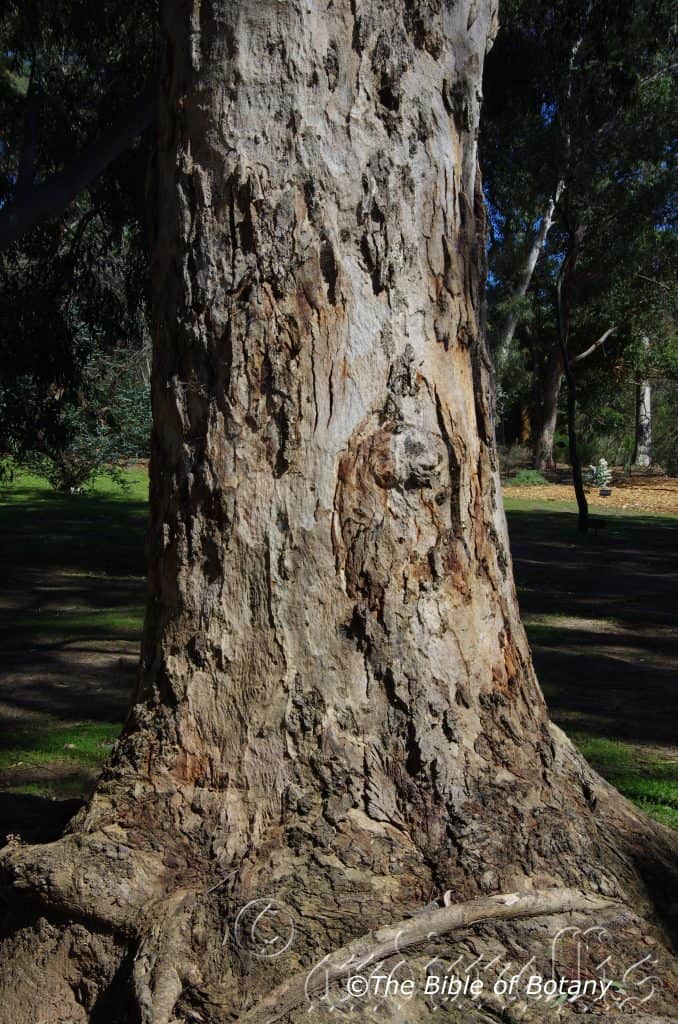
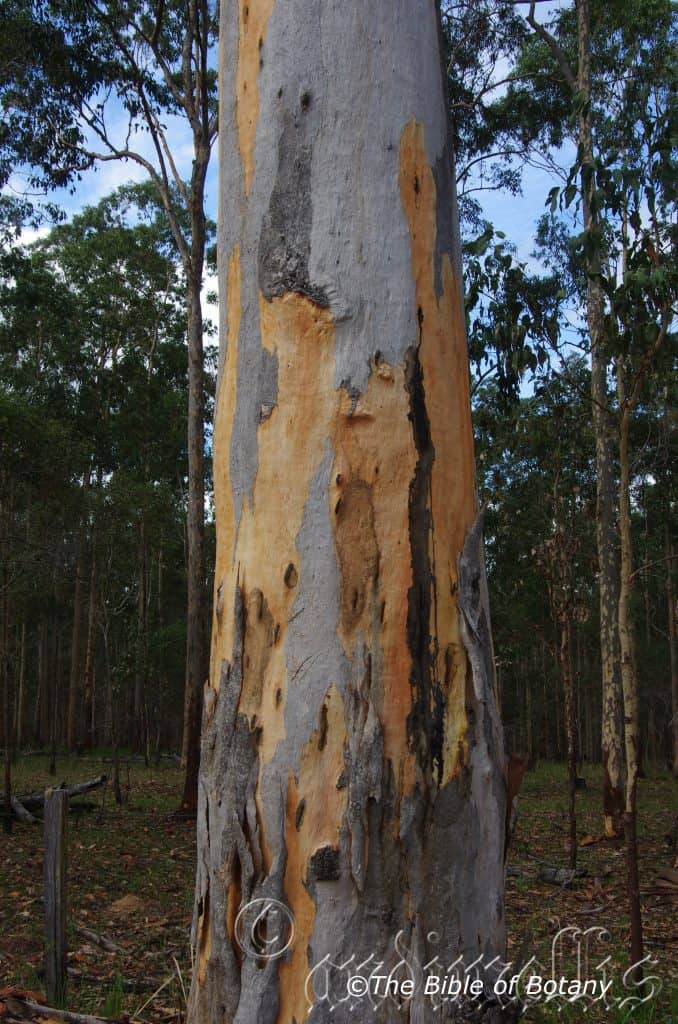
Eucalyptus punctata
Classification:
Unranked: Eudicots
Clade: Rosids
Order: Myrtales
Family: Myrtaceae
Genus: From Eu, which is Greek a prefix for good or well and Kaluptos, which is Ancient Greek for to cover up. It refers to the stamens, which have a lid or cover over them in the bud stage prior to opening.
Specie: From Punctatus, which is Latin for small dots or small depressions. It refers to surfaces or organs, which have small dots or small depressions.
Sub specie:
Common Name: Grey Gum.
Distribution:
Eucalyptus punctata is widespread down the east coast on and east of the Great Dividing Range. It is found south from Kilkivin in south east Queensland to Nowra central coastal New South Wales.
There is a disjunct population further north at Pumphole Spring and Dooloogarah Creek in the Murweh Shire.
https://avh.ala.org.au/occurrences/search?taxa=Eucalyptus+punctata#tab_mapView
Habitat Aspect Climate:
Eucalyptus punctata prefers full sun to part shade or dappled sunlight. It grows dry sclerophyll forests, dry sclerophyll woodland and open woodlands. The altitude ranges from 700 meters ASL to 1300 meters ASL except for the population at Lismore which is around 5 meters to 700 meters ASL.
The temperatures range from minus 5 degree in August to 34 degrees in January.
The rainfall ranges from lows of 800mm to an average of 1600mm.
Soil Requirements:
Eucalyptus punctata prefers deep, moderately fertile soils of medium sandy loams, course silts to fine silts, light fatty clays to heavy clays and gravelly clays overlying various substrata. The soils are usually derived from decomposed granites, metagranites, black basalts, brown basalts, metamorphic rocks, shales and metashales. The soil’s pH ranges from 5pH to 7.5pH. It does not tolerate water logged soils.Non saline soils to moderately saline soils are tolerated.
Height & Spread:
Wild Plants: 25m to 60m by 10m to 18m.
Characteristics:
Eucalyptus punctata is a large tree which branches freely from the near the ground. The typically grey gum bark is smooth, patchy, matte, white, pale grey or pale grey-brown. The glabrous branches and branchlets are pale grey to reddish-brown. The bark is shed in large plates and flakes to reveal the brilliant salmon or orange inner bark.
Eucalyptus punctata’s juvenile and coppice stems are terete, glaucous and glabrous. The sessile opposite, disjunct leaves are narrow-lanceolate to lanceolate. The base tapers to the petiole while the apex is acute to narrow acute. The discolourous laminas are semi glossy, green and glabrous on the upper lamina and paler below. The leaves measure 70mm to 140mm in length by 5mm to 7mm in width. The margins are entire.
The alternate, disjunct, lanceolate, straight or falcate leaves of Eucalyptus punctata measure 80mm to 150mm in length by 15mm to 30mm in width. The terete petioles are yellowish or purplish-pink and measure 15mm to 25mm in length. The bases taper to the petiole while the apexes are acute. The discolourous laminas are glossy deep green and glabrous. The margins are entire while the mid vein is strongly prominent at the base becoming very faintly prominent at the apex on both laminas. The lateral penniveins are faintly visible on the both laminas while the intramarginal veins are close to the margin.
The inflorescences of Eucalyptus punctataare unbranched umbellasters born auxiliary along the stems from the leaf axils. There are 7 individual white flowers to an umbellaster. The new growth bearing the umbellasters is purplish-green to reddish-brown and glabrous. The narrowly flattened or angular, or broadly flattened peduncles are glabrous and measure 5mm to 19mm in length by 1mm to 3.5mm in length. The terete pedicels measure 2mm to 9mm in length. The ovoidal to orbicular buds are pale olive-green and glabrous. The buds measure 9mm to 11mm in length by 4mm to 6mm in diameter. The extended obloidal to conical calyptra is much shorter than and is slightly narrower to as wide as the hypanthium. A bud scar is present.
The white stamens measure 5.5mm to 9mm in length. The creamy, orbicular anthers are dorsifixed and are all fertile. The pale lemon to pale lemon-green style measures 1.5mm to 2mm in length. The disc is pale lemon. The flowers appear from November to February.
The fruits of Eucalyptus punctata are hemispherical to cylindrical woody capsules known as gum nuts. The green gum nuts turn grey when ripe and measure 5mm to 12mm in length by 5mm to 10mm in diameter at the widest point. The disc is flat to slightly raised with the 4 triangular valves being exserted.
The linear to cuboidal seeds are brown to reddish-brown and distinctly deeper in colour to the chaff.
Wildlife:
The wildlife of Eucalyptus punctata is especially attractive to birds while the flowers produces a good quality nectar and quantity for honey production and the pollen is also a valuable protein for many insects.
Cultivation:
Eucalyptus punctata is a beautiful medium tree which is ideally suitable for medium to larger gardens where a Eucalyptus tree is required. It is fast growing provided heavy clays are broken up (planting adjacent to or with an acacia species is the best method of assisting clay breakup) and organic fertilizers are used in the initial years. It looks rather affective when planted with other single trunk trees and mallees with contrasting glossy green or blue-grey foliage and growth habits. In the garden good specimens may grow from 20 meters to 30 meters in height by 15 meters to 25 meters in diameter when grown in the open.
The beauty of Eucalyptus punctata is that when the bark is decorticating the inner bark is a brilliant orange which draws everyone’s attention to it. It also looks at home once established in a park like scenario. Like all Eucalyptus spp. though some leaf drop and dropping of small branchlets means continual lawn maintenance but then this species is far better in garden beds and native heath gardens than in lawns. It is not a Eucalyptus for street planting or planting close to out buildings or underground amenities due to its eventual size.
Propagation:
Seeds: Sow into a seed raising mix. Cover the seeds with 2mm to 3mm of fine sand and place the trays in a warm sunny position. Keep the seeds moist but not wet. When the seedlings are 25mm to 50mm tall, prick them out and plant them into 50mm native tubes using a good organic mix.
Once the seedlings reach 200mm to 250mm in height plant them out into their permanent position. Mass plantings are best done in groups of 3 to 5 as a feature by planting them at 4 meter to 5 meter centers as a tree or 5 meters to 6 meters as a mallee.
Fertilize using Seaweed, fish emulsion or organic chicken pellets soaked in water and apply the liquid on an alternate basis. Fertilize every two month until the trees are well established then every spring to ensure good growth and flowering.
Further Comments from Readers:
“Hi reader, it seems you use The Bible of Botany a lot. That’s great as we have great pleasure in bringing it to you! It’s a little awkward for us to ask, but our first aim is to purchase land approximately 1,600 hectares to link several parcels of N.P. into one at The Pinnacles NSW Australia, but we need your help. We’re not salespeople. We’re amateur botanists who have dedicated over 30 years to saving the environment in a practical way. We depend on donations to reach our goal. If you donate just $5, the price of your coffee this Sunday, We can help to keep the planet alive in a real way and continue to bring you regular updates and features on Australian plants all in one Botanical Bible. Any support is greatly appreciated. Thank you.”
In the spirit of reconciliation we acknowledge the Bundjalung, Gumbaynggirr and Yaegl and all aboriginal nations throughout Australia and their connections to land, sea and community. We pay our respect to their Elders past, present and future for the pleasures we have gained.
Eucalyptus pyriformis
Classification:
Unranked: Eudicots
Clade: Rosids
Order: Myrtales
Family: Myrtaceae
Genus: From Eu, which is Greek a prefix for good or well and Kaluptos, which is Ancient Greek for to cover up. It refers to the stamens, which have a lid or cover over them in the bud stage prior to opening.
Specie: From Pyros, which is Ancient Greek for a pear and Forme, which is Latin for a shape or take the form of. It refers to fruits, which are pear shaped.
Sub specie:
Common Name: Pink Flowering Bloodwood.
Distribution:
Eucalyptus pyriformis is a widespread species located in central Western Australia. It is found south west from Carnarvon to near Southern Cross.
https://avh.ala.org.au/occurrences/search?taxa=Eucalyptus+pyriformis#tab_mapView
Habitat Aspect Climate:
Eucalyptus pyriformis prefers full sun to light dappled shade. It grows on sand plains sandy hills and slopes in open woodlands.
The temperatures range from 3 degrees in July to 40 degrees in January.
The rainfalls range from lows of 250mm to an average of 520mm annually.
Soil Requirements:
Eucalyptus pyriformis prefer red, white, cream, yellow, grey or brown laterites and Aeolian sands. The soils range from a PH of 5.5 to 7.5.It does not tolerant of water logged soils. Non saline soils to moderately saline are tolerated.
Height & Spread:
Wild Plants: 2m to 5m by 2m to 5m.
Characteristics:
Eucalyptus pyriformis is a thin multi or single trunked mallee branching from near the ground. The pale grey to white bark on the trunk and larger branches is glabrous. The decorticating bark peels off in short ribbons to reveal a pure white new bark. The bark is not fully self-cleaning and is often seen still attached to the trees many months later. The glabrous branchlets are lime-green to yellow-green and often orange on the smallest branchlets. They form a lignotuber just beneath the ground.
Eucalyptus pyriformis’s disjunct, opposite juvenile leaves are ovate to broad elliptical and measure 60mm to 90mm in length by 45mm to 50mm in width. The bases are rounded while the apexes are acuminate. The concolourous leaves are grey-green to a pale blue-green and dull. The petioles measure 8mm to 12mm in length.
The disjunct, alternate adult leaves of Eucalyptus pyriformis are broad lanceolate to lanceolate-elliptical, almost straight to falcate and measure 60mm to 105mm in length by 15mm to 33mm wide. The orange-green to pale yellow-brown petioles are terete or slightly compressed and measures 20 to 3mm in length. The bases are round to round-tapering whiles the apexes are tapering or acuminate. The concolourous laminas are grey to grey-green, coriaceous, and glabrous. The laminas are flat while the margins are entire. The mid vein is strongly prominent on the lower lamina and slightly prominent on the upper lamina.
The inflorescences of Eucalyptus pyriformis are born as pendulous umbellasters containing 3 individual flowers at each the leaf axils. The yellow-green to olive–green, terete to quadrangle peduncle measures 30mm to 60mm in length while the terete pedicels measure 20mm to 45mm in length.
The bud’s hypanthium is green to reddish or reddish-brown, quadrangle with several longitudinal ribs while the calyptras are green to reddish or reddish-brown, quadrangle with several longitudinal ribs and a distinct rostrate apex. The hypanthia measure 32mm to 50mm in length by 38mm to 55mm in diameter. The calyptras measure 35mm to 45mm in length with a 6mm to 10mm rostrate. The bud scar is absent.
The deep pink, pink, orange, yellow, cream or rarely white inflexed filaments measure 34mm to 45mm in length while the anthers cream to pale yellow stamens are basifixed and measure 1.5mm to 2mm in diameter.
The stout creamy orange, yellow or pale crimson-yellow style measures 12mm to 15mm in length. The disc is yellow to orange-yellow and glossy. The flowers appear from July to October.
The fruits are nodding quadrangle, faintly ribbed gum nuts. The gum nuts measure 32mm to 50mm in diameter at the hypanthia apex by 25mm to 32mm in length. The disc and 4 valves are inserted. The cuboidal seeds are linear and measure 2.7mm to 3.5mm in length and are deep red-brown. The mid rusty brown seeds are very uniform in size and shape and measure 5mm to 6mm in length by 3mm to 4.5mm in width.
Wildlife:
The flowers Eucalyptus pyriformis are good nectar producers and are very attractive to most honeyeaters and lorikeets early in the morning and late in the afternoon. Native bees, beetles and ants forage over the flowers during the heat of day.
Cultivation:
Eucalyptus pyriformis is a smaller gum tree which is very suitable for small gardeners looking for a Eucalyptus to create a small bush scene or parkland scene in arid and semi-arid areas. It is ideal on sandy loams, sandy alluvial flats or light to medium clays that are well drained. It is fast growing so give good effects at an early age. In the garden good specimens grow from 5 meters to 6 meters tall by 3 meters to 4 meters in diameter as a single trunk tree. It is more suitable as a medium shrub where they will grow 3 meters to 4 meters in height by 3 meters to 4 meters to 6 meters in diameter with an open canopy. It is drought resistant once established.
This is a popular red flowering gum amongst home gardeners in the west and should be tried as far east as Adelaide. It is too often planted singularly with gardeners not prepared to plant them in small groups of three or 5 plants together. It has a lignotuber so this opens up a wide field for landscapers. Because of their naturally broad growth habit they can be easily mass planted to give a good colourful backdrop to smaller natives in the foreground. As features of 2 or 3 or even 5 in a group using curves or irregular shapes their branches can overlap giving a bushier appearance at different levels particularly if hard pruning is done at different times.
Another method is to keep 2 or 3 as small trees and prune the others in the clump back hard so it is forced to re shoot from the lignotuber and grow them as shrubs. This will create an effect of various heights and greater flowering in the following season from those which were pruned. They can be used very affectively with taller growing mallees to break up lines and to contrast the flowers and leaves. A good example would be to mix them with Eucalyptus cassia or Eucalyptus goniantha.
Another method is to plant them as the taller tree and plant smaller semi prostrate plants below them with contrasting foliage. This type of planting extends the flowering scene of the area or makes a strong statement when it is all in flower together. To use this method it is best to use contrasting flowers so you would need to know the flower colours before planting the plants out below.
Because of the irregular and often crooked or gnarled trunk they can be used in a bed where the theme is toughness and ruggedness is wanted.
Like all Eucalyptus specie leaf drop, dropping of small branches means continual lawn maintenance but then this means good quantities of leaf litter mulch. If the trees are clumped or used in a bush garden this is not a problem.
Propagation:
Seeds: Sow Eucalyptus pyriformis’s seed directly into a seed raising mix. Cover the seeds with 2 to 3mm of fine sand and place the trays in a warm sunny position. Keep moist but not wet. When the seedlings are 25mm to 50mm tall, prick them out and plant them into 50mm native tubes using a good organic mix.
Once the seedlings reach 200mm to 250mm in height plant them out into their permanent position. Mass plantings are best achieved with a spacing ranging from 4 meters to 5 meters where it is planted as specimen plants or 2.5 meters to 3 meters where clumps are required and to aid in a more compact bushy plant.
Fertilize using seaweed, fish emulsion or organic chicken pellets soaked in water on an alternate basis. Fertilize every two months until the plants are established then twice annually in early September or March to maintain health, vitality and better flowering.
Further Comments from Readers:
“Hi reader, it seems you use The Bible of Botany a lot. That’s great as we have great pleasure in bringing it to you! It’s a little awkward for us to ask, but our first aim is to purchase land approximately 1,600 hectares to link several parcels of N.P. into one at The Pinnacles NSW Australia, but we need your help. We’re not salespeople. We’re amateur botanists who have dedicated over 30 years to saving the environment in a practical way. We depend on donations to reach our goal. If you donate just $5, the price of your coffee this Sunday, We can help to keep the planet alive in a real way and continue to bring you regular updates and features on Australian plants all in one Botanical Bible. Any support is greatly appreciated. Thank you.”
In the spirit of reconciliation we acknowledge the Bundjalung, Gumbaynggirr and Yaegl and all aboriginal nations throughout Australia and their connections to land, sea and community. We pay our respect to their Elders past, present and future for the pleasures we have gained.
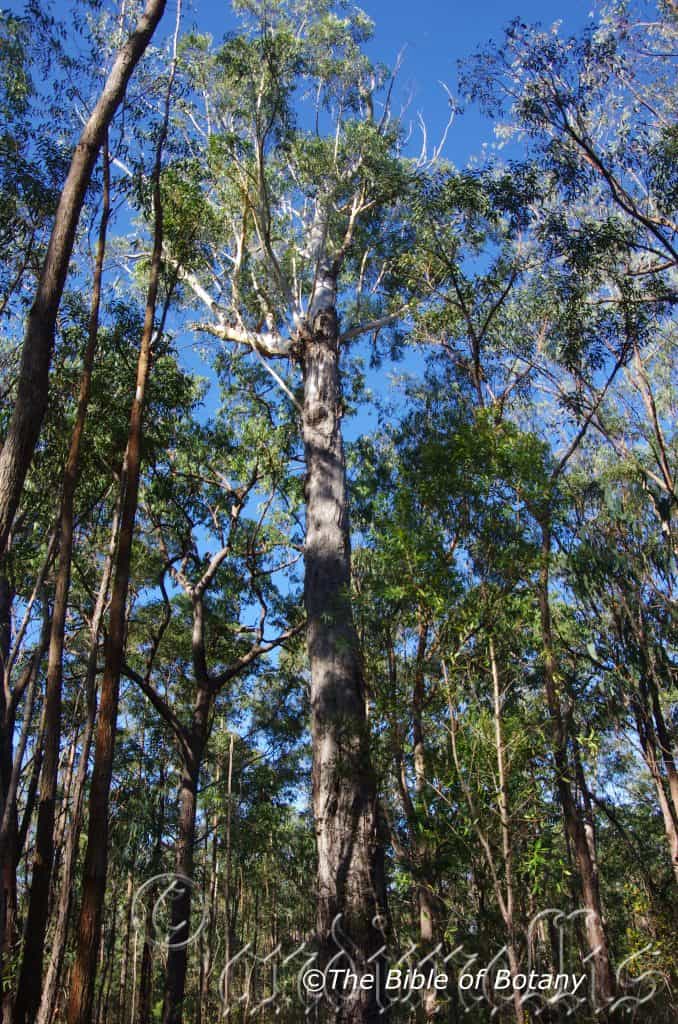
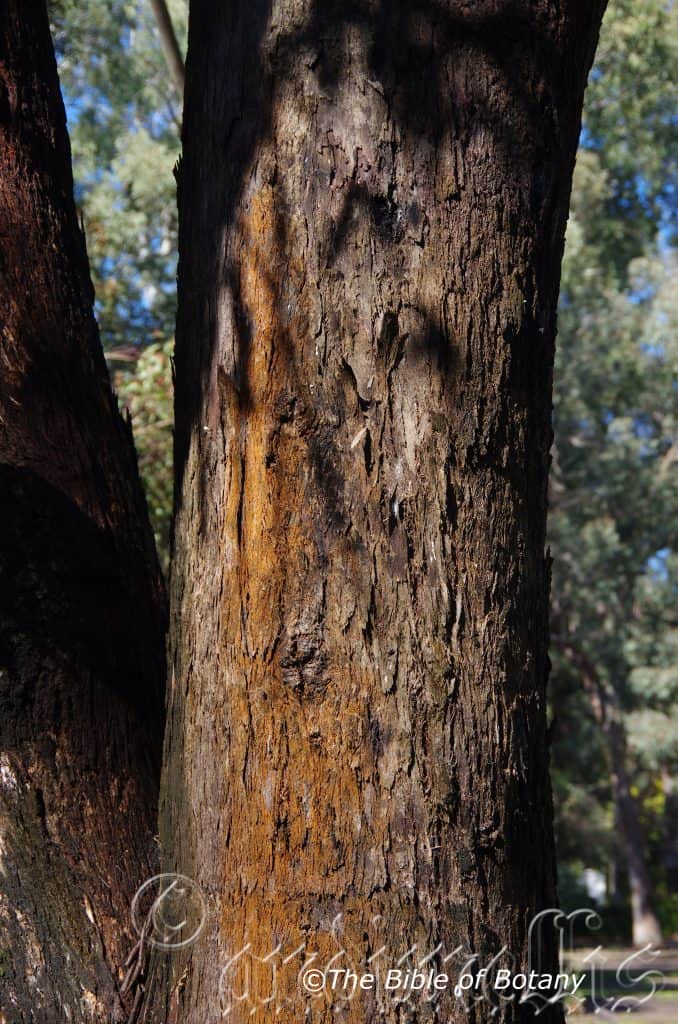
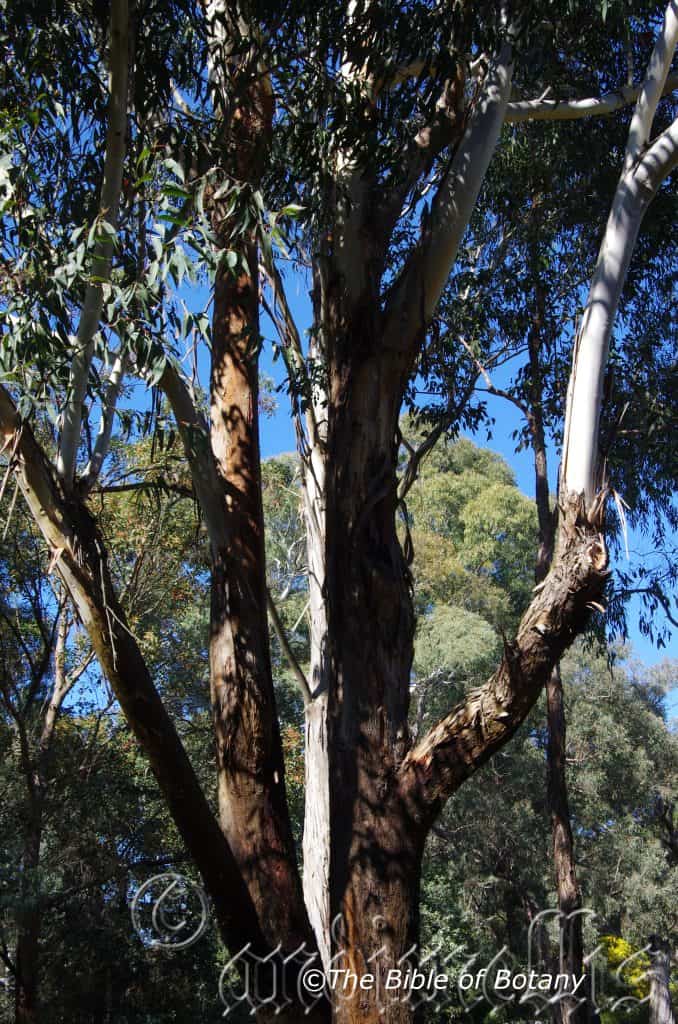
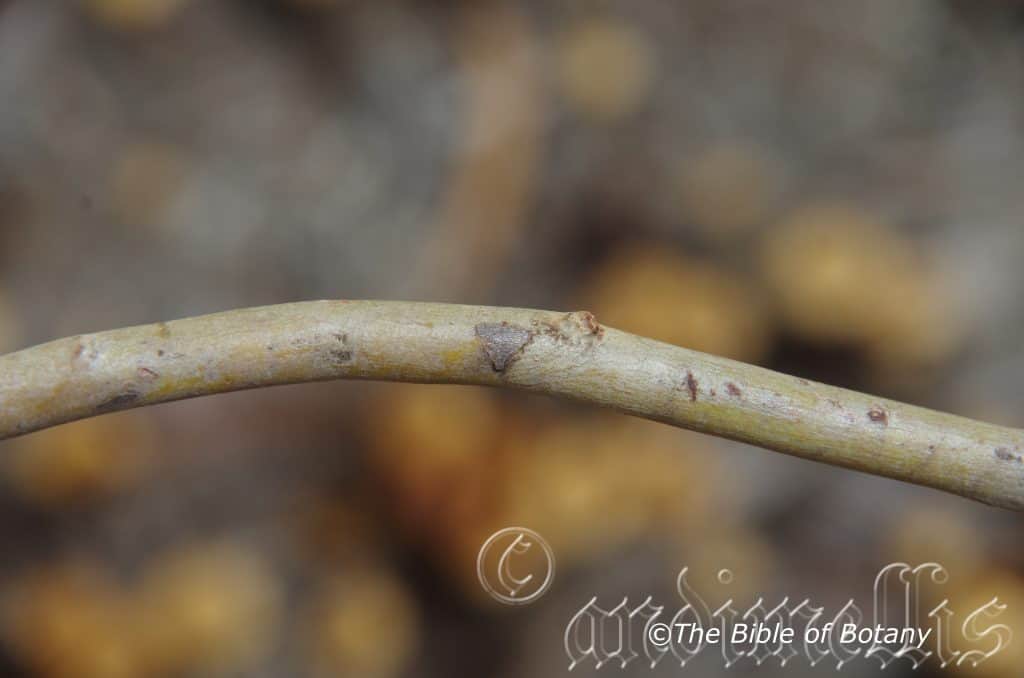
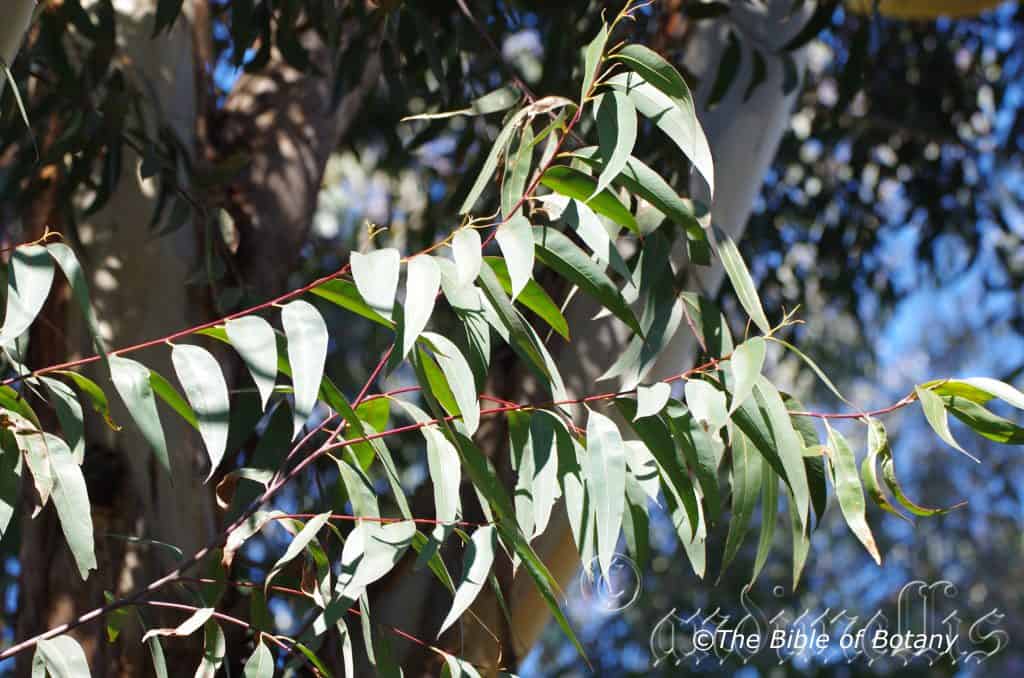
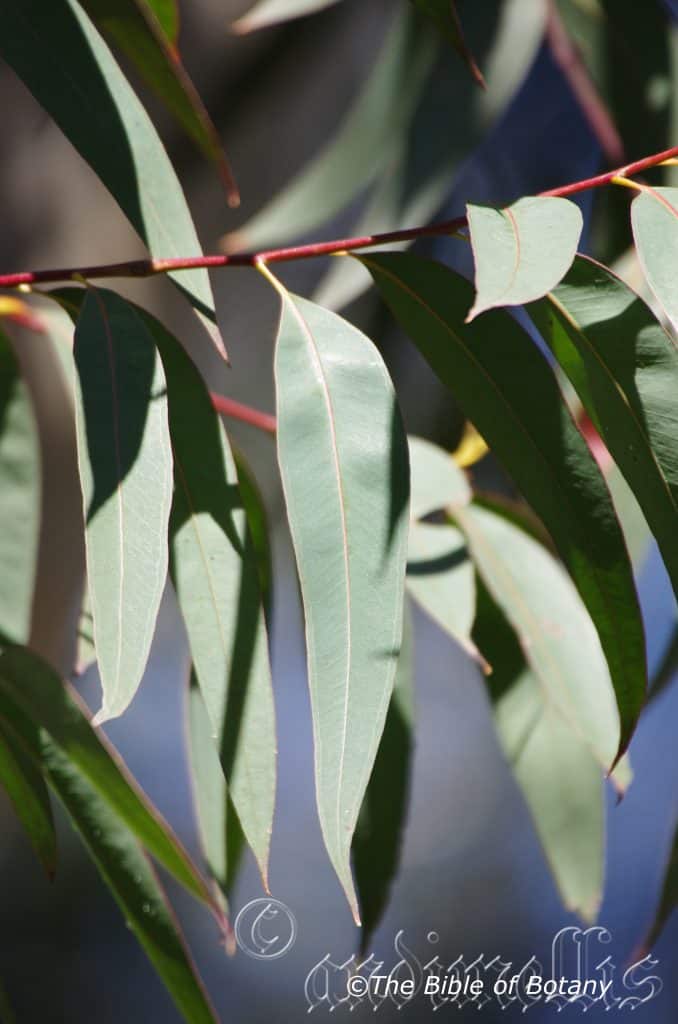
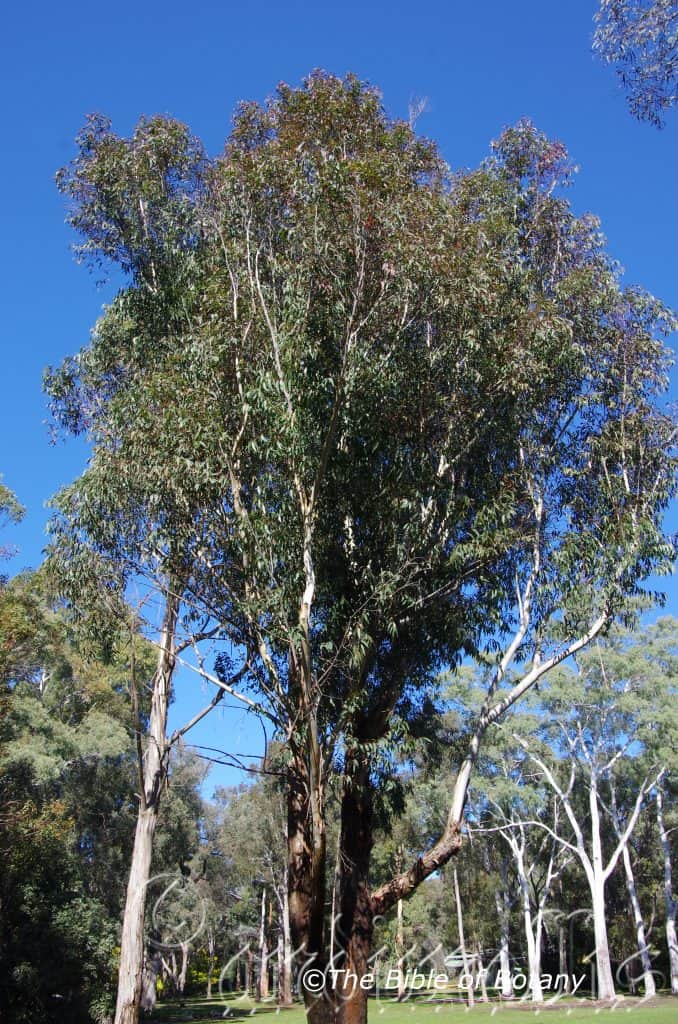
Eucalyptus pyrocarpa
Classification:
Unranked: Eudicots
Clade: Rosids
Order: Myrtales
Family: Myrtaceae
Genus: From Eu, which is Greek a prefix for good or well and Kaluptos, which is Ancient Greek for to cover up. It refers to the stamens, which have a lid or cover over them in the bud stage prior to opening.
Specie: From Pápȳros, which is Latin for thin, flimsy and dry and Karpós, which is Ancient Greek for a fruit. It refers to the petals, leaves or bark, which resemble paper.
Sub specie:
Common Name: Large Fruited Blackbutt.
Distribution: Eucalyptus pyrocarpa is restricted to a few disjunct populations south from the Washpool National Park to Heron’s Creek on the Broken Bago Range in north eastern coastal New South Wales. It is found on and east of the Great Dividing Range.
https://avh.ala.org.au/occurrences/search?taxa=Eucalyptus+pyrocarpa#tab_mapView
Habitat:
Habitat Aspect Climate:
Eucalyptus pyrocarpa prefers full sun to dappled shade. It grows in moist schlerophyll forest, open woodlands or savannah woodlands on gentle to medium slopes. The altitude ranges from 20 meters ASL to 930 meters ASL.
The temperature range from minus 3 degrees in August to 38 degrees in January.
The rainfall ranges from lows of 850mm to an average of 1600mm annually.
Soil Requirements:
Eucalyptus pyrocarpa prefers deeper red, orange, brown or grey fatty sandy loams to light gritty clays. The soils are usually derived from decomposed sandstones or brown basalt or a mixture of the 2.The soils pH ranges from 5pH to 6.5pH. It does not tolerate water logged soils. Non saline soils to moderately saline soils are tolerated.
Height & Spread:
Wild Plants: 20m to 30m by 6m to 9m.
Characteristics:
Eucalyptus pyrocarpa has a long thin bole with the branches appearing at around 40mm of the trees height on mature trees. The bark is persistent on the trunk to the large branches. The bark on the trunk is grey-brown, shortly fibrous to stringy. The main branches to the branchlets are smooth white, cream, pale grey or fawn, smooth and glabrous. The small stems are reddish-purple to purple. The decorticating bark on the upper limbs is shed in long ribbons and is often seen hanging from the branches many years later.
Eucalyptus pyrocarpa’s Juvenile leaves are opposite and ovate to broad lanceolate. The concolourous leaves are bluish-green to grey-green and dull. They measure 45mm to 80mm in length by 30mm to 40mm in width.
The disjunct, alternate adult leaves are lanceolate, falcate and measure 100mm to 200mm in length and 15mm to 35mm in width. The compressed petiole measures 6mm to 20mm in length. The bases are oblique and cuneate while the apexes are narrow acute. The concolourous leaves are mid green, semi glossy to glossy. The laminas are flat or nearly so while the margins are entire. The mid vein is prominent on the lower lamina near the base and very slightly prominent at the apex while the upper lamina is not as strongly prominent. The lateral veins are 25 degrees to 35 degrees to the main vein while the intramarginal veins are well away from the margin and parallel to the margin. The oil glands are at the junctions of the lateral and auxiliary veins.
The inflorescences of Eucalyptus pyrocarpa are born as umbellasters containing 7 to 11 individual flowers from the leaf axils. The lime green peduncules are slightly flattened and measure 10mm to 25mm in length while the lime-green terete pedicels measure 2mm to 7mm in length.
The narrow fusiform bud’s hypanthia are long cupular pale yellow-green and glabrous while the calyptras are hemi-orbicular with a large rostrate beak, lime-green and glabrous. The hypanthia measure 7mm to 10mm by 5mm to 6mm in diameter. The calyptras measure 5mm to 6mm in length. The bud scar is present on the hypanthia.
The erect stamens are pastel cream and measure 7mm to 13mm in length. The white to cream anthers are oblong to reniform. The versatile, dorsifixed anthers dehisce through short lateral slits. The white style measures 6mm to 13mm in length. The disc is pale green. The flowers appear in mid-August to December or as late as January in favourable seasons.
The fruits of Eucalyptus pyrocarpa are broad hemispherical, pyriform or ovoidal gum nuts. The 4 locular gum nuts measure 8mm to 15mm in length by 7mm to 18mm in diameter at the widest point. The disc is inserted, flat while the valves are inserted or level with the hypanthia’s rim.
The flattened seeds are long ovoid and measure 1mm to 2.5mm in length.
Wildlife:
The flowers Eucalyptus pyrocarpa are light nectar producers but are still are very attractive to most honeyeaters, lorikeets, flying foxes, possums and many insects. The Brush Tail Possum (Trichosurus vulpecula) has frequently been seen foraging through the trees.
This specie produces a manna gum which is attractive to sugar gliders (Petaurus breviceps).
Cultivation:
Eucalyptus pyrocarpa make excellent shelterbelts or shade trees for cattle, sheep and native animals in rural areas as they withstand compacted soils a little better than most Eucalyptus or the areas that are growing them for shelters are not being overgrazed. The trees can be grown for their flowers that produce good quality honey for apiculture.
In the cultivation good specimens grow from 20 to 25 meters in height by 15 meters to 20 meters in diameter when grown in the open.
It is drought tolerant once established and can cope with moderate frosts.
This is not a popular cream flowering gum amongst home gardeners but should be considered into medium to large gardens just for bark alone. The atypical deep brown half bark and blue leaves makes a strong contrasting silhouette against the house (Planted far enough back as not to cause problems with leaf and branch drop) or beautiful attraction within the garden. The bark contrasts well with other Eucalyptus specie whether it is smooth ghost gums, iron barks, stringy barks or other half barks and tessellated trunks, Corymbia specie, or semi-arid specie with dissimilar trunks to high light the trunks and barks. Place it near the edge of a forest and give them room to reach their full potential as it is a not as tall and their wider spread is a feature worth showing off. Trees planted in full view make good bird watching trees for the nectar eating birds and insect eating birds alike. It is rather messy when the lorikeets clamber over the outer foliage.
They would be ideally suited to small to large park like scenes where they have the opportunity to spread out as they mature.
Like all Eucalyptus specie leaf drop, dropping of small branches means continual lawn maintenance but then this means good quantities of leaf litter mulch. If the trees are clumped or used in a bush garden this is not a problem.
Propagation:
Seeds: Sow Eucalyptus pyrocarpa seeds into a seed raising mix. Cover the seeds with 2mm to 3mm of fine sand and place the trays in a warm sunny position. Keep moist but not wet. When the seedlings are 25mm to 50mm tall, prick them out and plant them into 50mm native tubes using a good organic mix.
Once the seedlings reach 200mm to 250mm in height plant them out into their permanent position. Mass plantings are best done in groups of 3 to 5 as a feature by planting them at 4 meter centers. For hedge rows or wind breaks they can be planted at 3 meter centers.
Fertilize using Seaweed, fish emulsion or organic chicken pellets soaked in water and apply the liquid on an alternate basis. Fertilize every two month until the trees are well established then every spring to ensure good growth and flowering.
Further Comments from Readers:
“Hi reader, it seems you use The Bible of Botany a lot. That’s great as we have great pleasure in bringing it to you! It’s a little awkward for us to ask, but our first aim is to purchase land approximately 1,600 hectares to link several parcels of N.P. into one at The Pinnacles NSW Australia, but we need your help. We’re not salespeople. We’re amateur botanists who have dedicated over 30 years to saving the environment in a practical way. We depend on donations to reach our goal. If you donate just $5, the price of your coffee this Sunday, We can help to keep the planet alive in a real way and continue to bring you regular updates and features on Australian plants all in one Botanical Bible. Any support is greatly appreciated. Thank you.”
In the spirit of reconciliation we acknowledge the Bundjalung, Gumbaynggirr and Yaegl and all aboriginal nations throughout Australia and their connections to land, sea and community. We pay our respect to their Elders past, present and future for the pleasures we have gained.
Eucalyptus quadrangulata
Classification:
Unranked: Eudicots
Clade: Rosids
Order: Myrtales
Family: Myrtaceae
Genus: From Eu, which is Greek a prefix for good or well and Kaluptos, which is Ancient Greek for to cover up. It refers to the stamens, which have a lid or cover over them in the bud stage prior to opening.
Specie: From Quād, which is Latin for four and Angulāris, which is Latin for an angle. It refers to stems, which are squarish.
Sub specie:
Common Name: White top Box or Coastal Box.
Distribution:
Eucalyptus quadrangulata is found south from Toowoomba in southern coastal Queensland to Bundanoon in eastern central New South Wales. It is mainly found at higher altitudes on the eastern side of the Great Dividing Range.
https://avh.ala.org.au/occurrences/search?taxa=Eucalyptus+quadrangulata#tab_mapView
Habitat Aspect Climate:
Eucalyptus quadrangulata prefer Full sun. It grows in tall moist closed schlerophyll forest. It grows on slopes and hills. The altitude ranges from 5 meters ASL to 850 meters ASL.
The temperature range from 2 degrees in August to 34 degrees in January.
The rainfall ranges from lows of 850mm to an average of 1700mm annually.
Soil Requirements:
Eucalyptus quadrangulata prefers medium to deeper, better quality sandy loams to medium clays. The soils are usually derived from decomposed brown basalts, sandstones or granites. The soils pH ranges from 5pH to 6.5pH. It does not tolerate water logged soils. Non saline soils to moderately saline soils are tolerated.
Height & Spread:
Wild Plants: 40m to 50m by 16m to 20m.
Characteristics:
Eucalyptus quadrangulata has a short thick bole with the branches appearing at around 20mm to 30mm of the trees height on mature trees. The bark is persistent on the trunk and larger branches. The bark is grey to grey-brown in small flaky, fibrous, irregular patches and plates of bark which may break off with age. The smaller branches and branchlets are smooth and glabrous are fawnish with off white patches and flaky to glabrous on the trunks to the branchlets. The smaller branches are smooth white, cream to pale grey. The decorticating bark is shed in long ribbons branches.
Eucalyptus quadrangulata’s opposite Juvenile leaves are ovate to broad lanceolate. The bases are sessile and cordate while the apexes are acute. The discolourous straight leaves are bluish-green and dull on the upper laminas while the lower laminas are paler. The leaves measure 80mm to 130mm in length by 20mm to 30mm in width.
The opposite, disjunct adult leaves are narrow lanceolate to lanceolate, straight to slightly falcate leaves measure 120mm to 205mm in length by 10mm to 20mm in width. The leaves are sessile.
The bases are cordate while the apexes are acute. The discolourous leaves are mid green to deep green, semi glossy to dull. The laminas are flat while the margins are finely toothed and undulating. The mid vein is strongly prominent on the lower lamina near the base and slightly prominent at the apex while the mid vein is slightly prominent on the upper lamina. The lateral veins are penniveined and are at less than 50 degrees to 60 degrees to the main vein and are sparsely reticulate and faintly visible. The intramarginal veins are well removed from the margin. The oil glands are near the margins.
The inflorescences of Eucalyptus quadrangulata are born as umbellasters containing 7 individual flowers from the terminal leaf axils. The deep purple, slightly flattened terete peduncules measure 8mm to 12mm in length while the terete pedicels measure 0mm to 2mm in length.
The deep green tinged purple, cupular hypanthia are glabrous while the conical calyptras are conical, deep green tinged purple and glabrous. The hypanthia measure 3mm to 4mm by 3mm to 4mm in diameter while the calyptras measure 3mm to 4mm in length. The bud scar is present.
The erect stamens are pastel cream and measure 5mm to 6mm in length. The white to cream anthers are oblong to reniform.
The white style measures 3mm to 4mm in length. The disc is green. The flowers appear in mid-August to January.
The fruits of Eucalyptus quadrangulata are broad cupular to conical gum nuts. The gum nuts measure 5mm to 7mm in length by 4mm to 6mm in diameter at the widest point. The disc is flat while the 4 valves are exserted.
The flattened seeds are long ovoid and measure 1mm to 2.5mm in length.
Wildlife:
The flowers Eucalyptus quadrangulata are light nectar producers but are still are very attractive to most honeyeaters, lorikeets, flying foxes, possums and many insects.
Cultivation:
Eucalyptus quadrangulata is a medium forest tree which is suitable for gardeners looking for Eucalyptus specie for the garden or to create a large parkland scene. It is ideal on sandy soils and sandy alluvial flats that are well drained. It is fast growing so give good effects at an early age. As a forest tree it will grow as wide as it is tall when given the chance to-do so in an open environment. In the garden good specimens grow from 20 meters to 25 meters in height by 20 meters to 25 meters in diameter. A beautiful tree growing at Frensham School has been measured at 29 meters in height by 32 meters in diameter.
They would be ideally suited to small to large park like scenes where they have the opportunity to spread out as they mature. It is drought tolerant once established and can cope with moderate frosts.
This is not a popular white flowering gum amongst home gardeners but should be considered into medium to large gardens just for bark alone. The atypical deep brown half bark and green leaves makes a strong contrasting silhouette against the house (Planted far enough back as not to cause problems with leaf and branch drop) or beautiful attraction within the garden. The bark contrasts well with other Eucalyptus specie whether it is smooth ghost gums, iron barks, and tessellated trunks, Corymbia specie, or semi-arid specie with dissimilar trunks to high light the trunks and barks. Place it near the edge of a park scene for an informal look or at the center and surround it with taller upright specie or shorter upright species or for that really formal look, alternate the tall and shorter species at the perimeter. Give them plenty of room to reach their full potential as it is a not as tall and their wider spread is a feature worth showing off. Trees planted in full view make good bird watching trees for the nectar eating birds and insect eating birds alike. It is rather messy when the lorikeets clamber over the outer foliage.
They would be ideally suited to small to large park like scenes where they have the opportunity to spread out as they mature.
Like all Eucalyptus specie leaf drop, dropping of small branches means continual lawn maintenance but then this means good quantities of leaf litter mulch.
Propagation:
Seeds: Sow Eucalyptus quadrangulata seeds into a seed raising mix. Cover the seeds with 2mm to 3mm of fine sand and place the trays in a warm sunny position. Keep moist but not wet. When the seedlings are 25mm to 50mm tall, prick them out and plant them into 50mm native tubes using a good organic mix.
Once the seedlings reach 200mm to 250mm in height plant them out into their permanent position. Mass plantings are best done in groups of 3 to 5 as a feature by planting them at 4 meter centers. For hedge rows or wind breaks they can be planted at 3 meter centers.
Fertilize using Seaweed, fish emulsion or organic chicken pellets soaked in water and apply the liquid on an alternate basis. Fertilize every two month until the trees are well established then every spring to ensure good growth and flowering.
Further Comments from Readers:
“Hi reader, it seems you use The Bible of Botany a lot. That’s great as we have great pleasure in bringing it to you! It’s a little awkward for us to ask, but our first aim is to purchase land approximately 1,600 hectares to link several parcels of N.P. into one at The Pinnacles NSW Australia, but we need your help. We’re not salespeople. We’re amateur botanists who have dedicated over 30 years to saving the environment in a practical way. We depend on donations to reach our goal. If you donate just $5, the price of your coffee this Sunday, We can help to keep the planet alive in a real way and continue to bring you regular updates and features on Australian plants all in one Botanical Bible. Any support is greatly appreciated. Thank you.”
In the spirit of reconciliation we acknowledge the Bundjalung, Gumbaynggirr and Yaegl and all aboriginal nations throughout Australia and their connections to land, sea and community. We pay our respect to their Elders past, present and future for the pleasures we have gained.

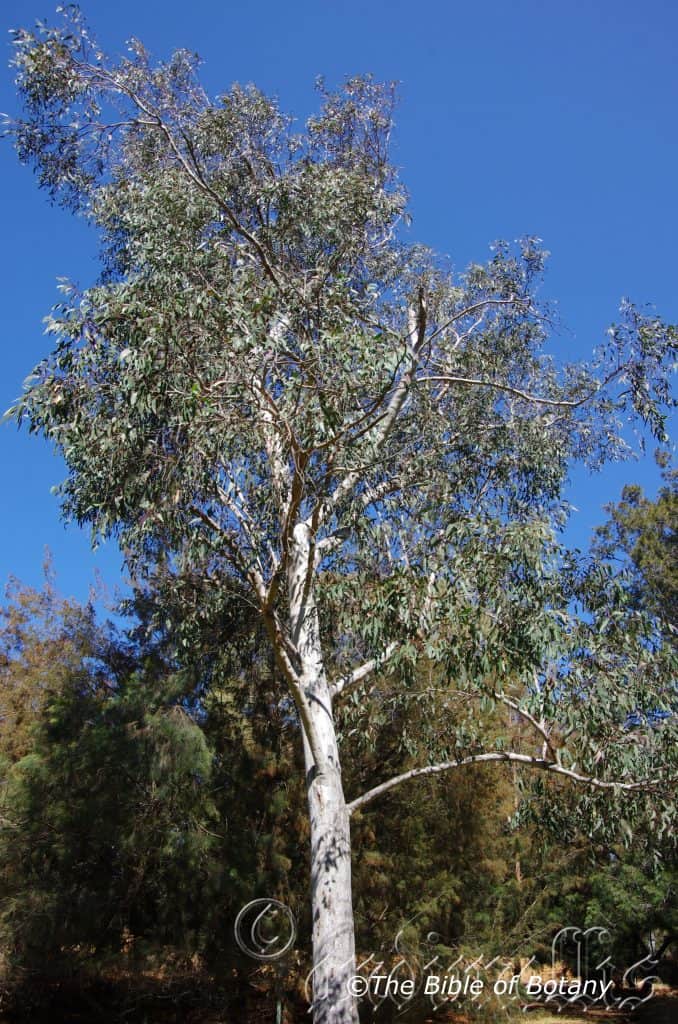


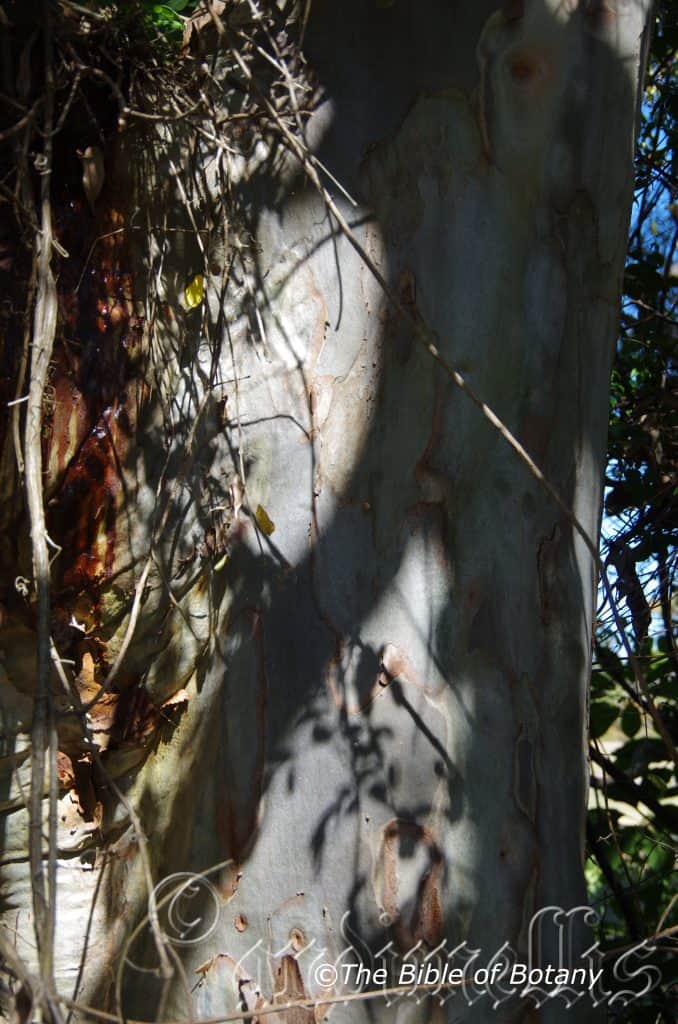

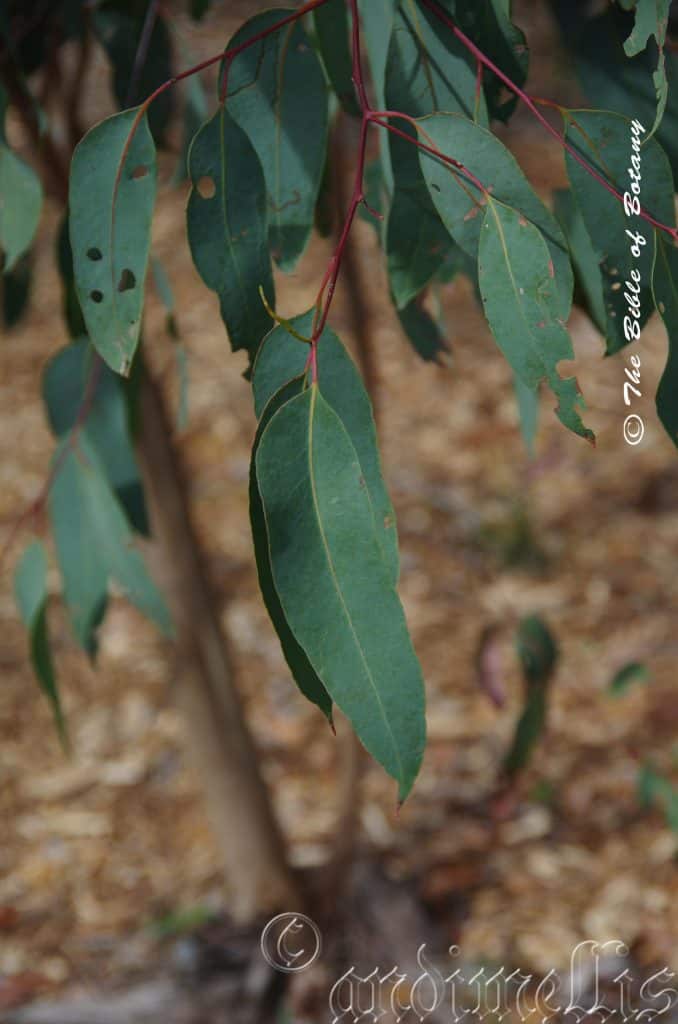
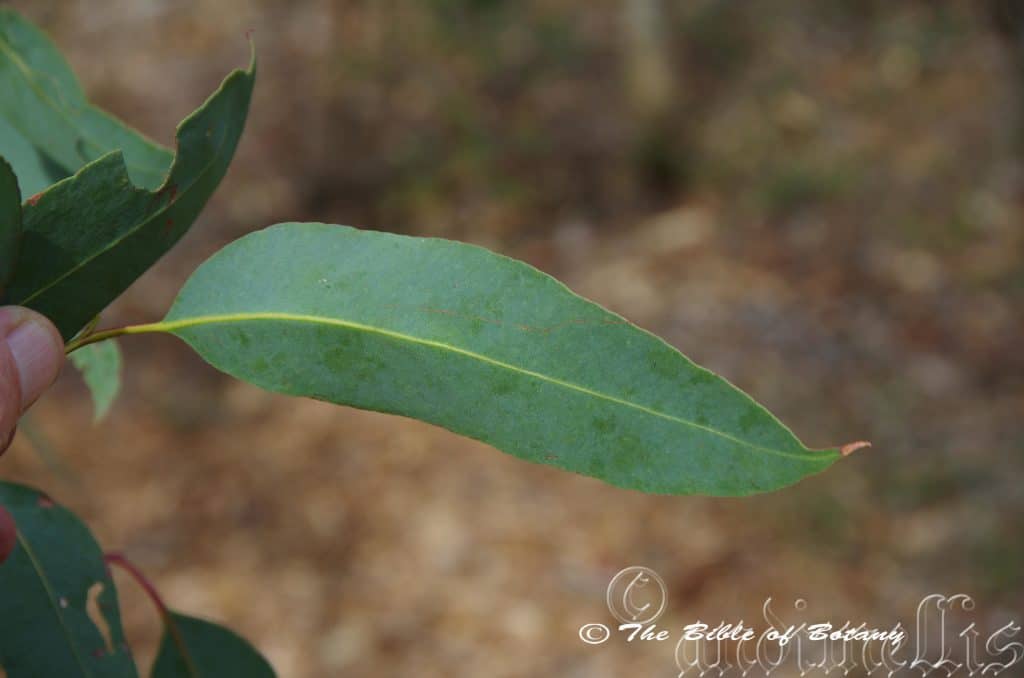
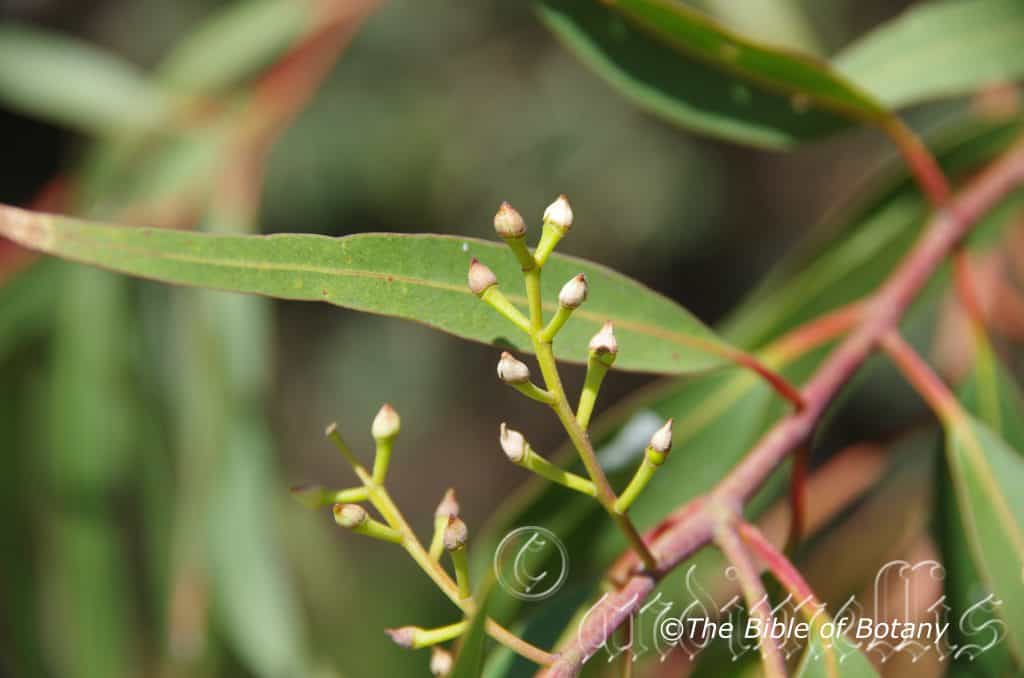
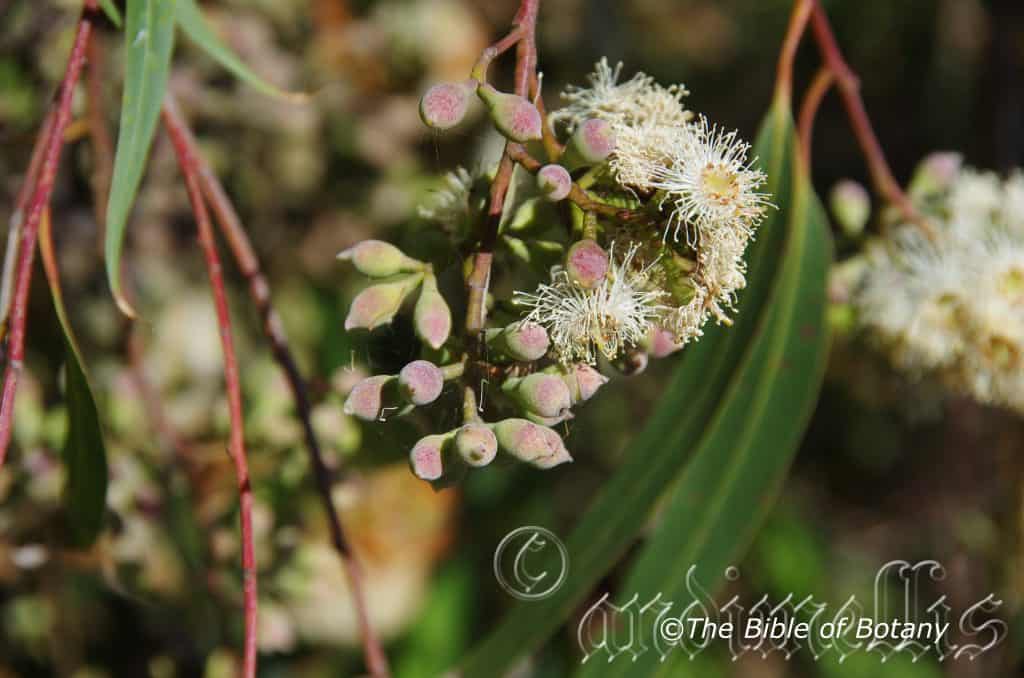
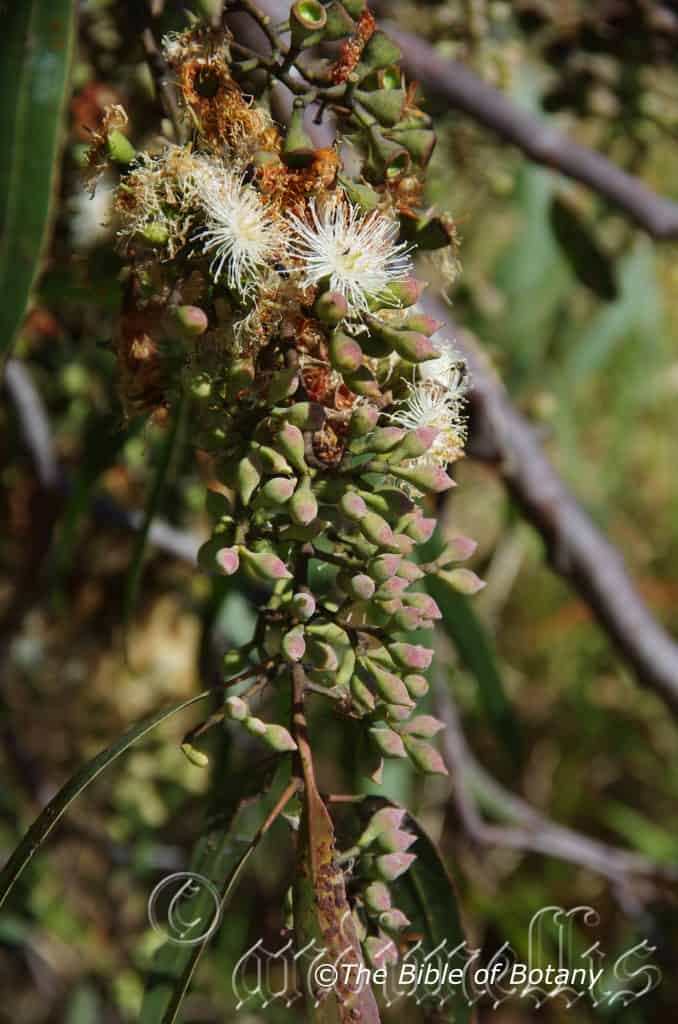
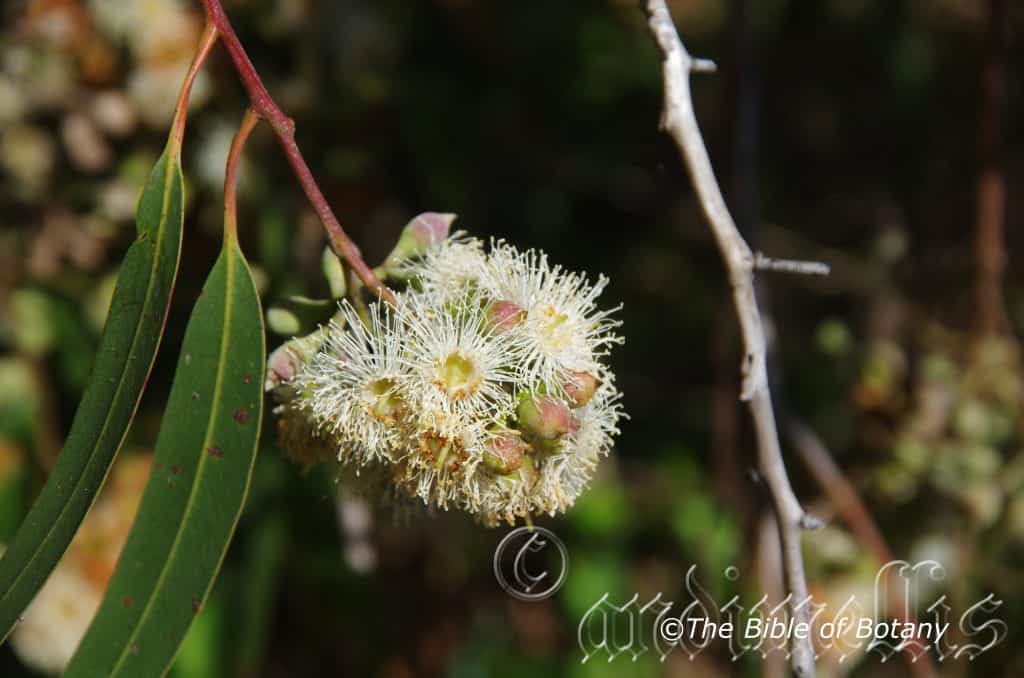




Eucalyptus racemosa
Classification:
Unranked: Eudicots
Clade: Rosids
Order: Myrtales
Family: Myrtaceae
Genus: From Eu, which is Greek a prefix for good or well and Kaluptos, which is Ancient Greek for to cover up. It refers to the stamens, which have a lid or cover over them in the bud stage prior to opening.
Specie: From Racēmōsa, which is Latin for a cluster. It refers to flowers, which are born on densely packed racemes.
Sub specie:
Common Name: Narrow Leaf Scribbly Gum.
Distribution:
Eucalyptus racemosa is found on the eastern side of the Great Dividing Range south from Port Jackson to Pokolbin in central coastal New South Wales.
https://avh.ala.org.au/occurrences/search?taxa=Eucalyptus+racemosa#tab_mapView
Habitat Aspect Climate:
Eucalyptus racemosa prefers full sun to light dappled shade as juvenile trees. It is found on slopes or flats in open dry Eucalyptus and dry schlerophyll forests. The altitude ranges from 10 meters ASL to 200 meters ASL.
The temperatures range from 0 degrees in July to 38 degrees in January.
The rainfalls range from lows of 900mm to an average of 1600mm annually.
Soil Requirements:
Eucalyptus racemosa prefers poor to average coarse sands to light fatty clays. The soils are usually derived from decomposed sandstones. The soils pH ranges from 5.5pH to 6.5pH. It does not tolerate of water logged soils. Non saline soils to moderately saline soils are tolerated.
Height & Spread:
Wild Plants: 8m to 15m by 4m to 5m.
Characteristics:
Eucalyptus racemosa is a tall straight or leaning trunked tree which has a bole over half of its length. The white, grey or yellowish bark is smooth scribbled and shed in short ribbons. The branchlets are green mottled yellowish and are glabrous.
The disjunct juvenile leaves are alternate, broad lanceolate. It is dull grey-green. They measure from 60mm to 120mm in length by 30mm to 70mm wide.
The alternate, disjunct adult leaves of Eucalyptus racemosa are narrow lanceolate to lanceolate and straight or at times slightly to moderately falcate. They measure 70mm to 150mm in length and 10mm to 17mm in width. The terete petioles measure 10mm to 15mm in length. The asymmetrical bases are broad cuneate while the apexes are tapered to narrow acute. The concolourous laminas are dull green to grey-green. The margins are entire. The lamina is flat. The mid vein is slightly prominent on both laminas while the lateral veins are hardly noticeable.
The inflorescences of Eucalyptus racemosa are born as umbellasters containing 7 to 13 usually 11 flowers. The flattened or angular peduncles measures 7mm to 12mm in length by 2.5mm to 3.5mm in width while the pedicels measure 4mm to 6mm in length.
The pale grey-green clavate buds are grey-green and measure 3mm to 6mm in length by 2mm to 3.5mm in diameter. The bud scar is absent. The hemispherical calyptra shorter than and narrower or as wide as hypanthium and measures 1.5mm to 4mm in length by 2 to 2.5mm in diameter.
The stamens are white with white anthers with the outer row of stamens being sterile. They measure 7mm to 9mm in length while the stout yellow style measures 6mm to 8mm in length. The disc is green. The flowers appear in mid-November to the end of January.
The fruits of Eucalyptus racemosa are pyriform to ovoid gum nuts. They measure 4mm to 5mm in length by 5mm to 7mm in diameter. The disc is flat to slightly raised revealing the 3 or 4 enclosed valves or at times level with the hypanthium rim. The seeds are linear cuboidal and are the same colour as the chaff.
Wildlife:
Eucalyptus racemosa flowers are light nectar producers but are still are very attractive to most honeyeaters, lorikeets, flying foxes, possums and many insects. It is koala tree along the coast and sugar gliders will open up wounds so the trees bleed their sap.
Cultivation:
Eucalyptus racemosa is a small gum tree which is very suitable for gardeners looking for Eucalyptus specie to create a small bush scene. It is ideal on sandy alluvial flats to medium clays that are dry or moisture retentive. It is fast growing so give good effects at an early age. In the garden good specimens grow from 6 meters to 12 meters in height by 3 meters to 5 meters in diameter. It is drought resistant once established and can cope with moderate frosts.
This is not a popular cream flowering gum amongst home gardeners as most tend to favour the red flowering gum trees or those with a deep black furrowed bark. The bark contrasts well with other small Eucalyptus specie and Corymbia specie when mixed planted to high light the trunks. Place it near the edge of such forests as it is a lot smaller and will allow more light to penetrate deeper into the forest. It is too often planted singularly with gardeners not prepared to let their hair down and experiment.
It would be ideally suited to a small park like scenes where they have the opportunity to spread out as they mature. With a little persistence this gum tree can be tip pruned so that it develops 2 or 3 trunks.
Like all Eucalyptus specie leaf drop, dropping of small branches means continual lawn maintenance but then this means good quantities of leaf litter mulch. If the trees are clumped or used in a bush garden this is not a problem.
Propagation:
Seeds: Sow into a seed raising mix. When the seedlings are 25mm to 50mm tall, prick them out and plant them into 50mm native tubes using a good organic mix.
Once the seedlings reach 200mm to 250mm in height plant them out into their permanent position.
Fertilize using seaweed, fish emulsion or organic chicken pellets soaked in water on an alternate basis. Fertilize every two months until the plants are established then twice annually in early September or March to maintain health, vitality and better flowering.
Further Comments from Readers:
“Hi reader, it seems you use The Bible of Botany a lot. That’s great as we have great pleasure in bringing it to you! It’s a little awkward for us to ask, but our first aim is to purchase land approximately 1,600 hectares to link several parcels of N.P. into one at The Pinnacles NSW Australia, but we need your help. We’re not salespeople. We’re amateur botanists who have dedicated over 30 years to saving the environment in a practical way. We depend on donations to reach our goal. If you donate just $5, the price of your coffee this Sunday, We can help to keep the planet alive in a real way and continue to bring you regular updates and features on Australian plants all in one Botanical Bible. Any support is greatly appreciated. Thank you.”
In the spirit of reconciliation we acknowledge the Bundjalung, Gumbaynggirr and Yaegl and all aboriginal nations throughout Australia and their connections to land, sea and community. We pay our respect to their Elders past, present and future for the pleasures we have gained.
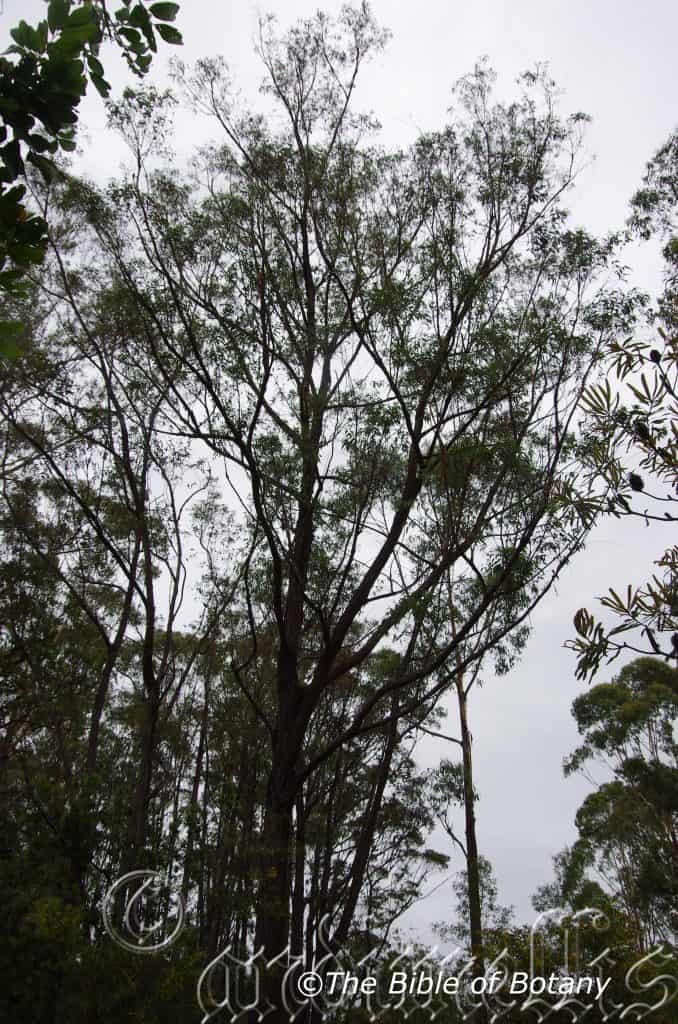
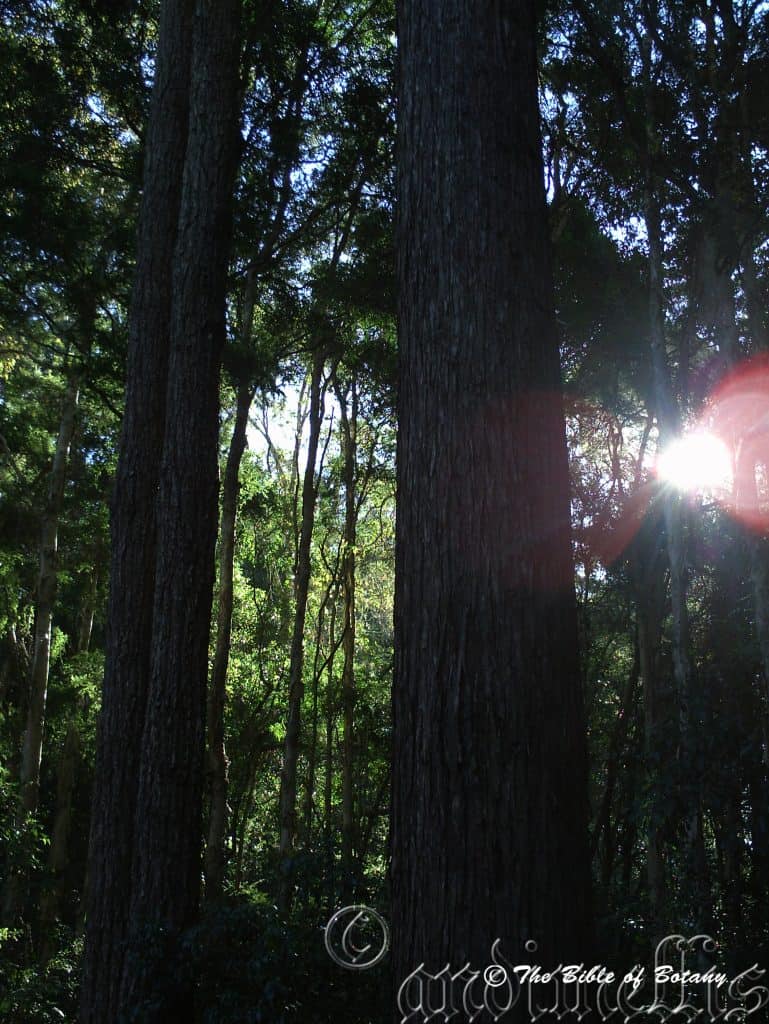
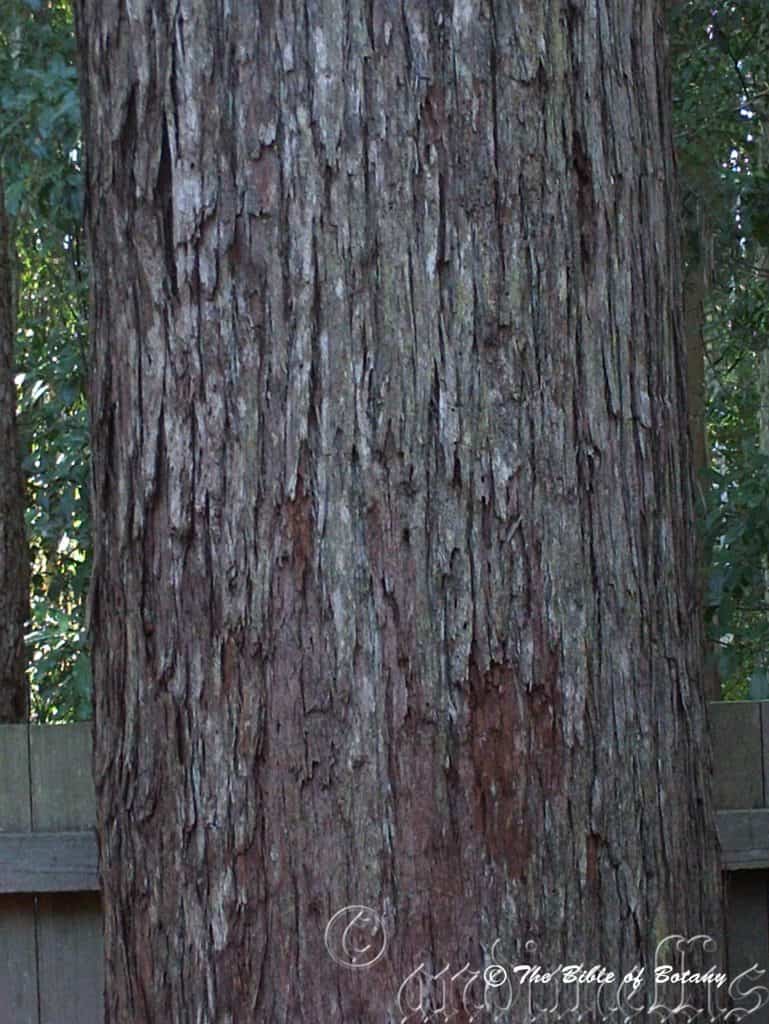

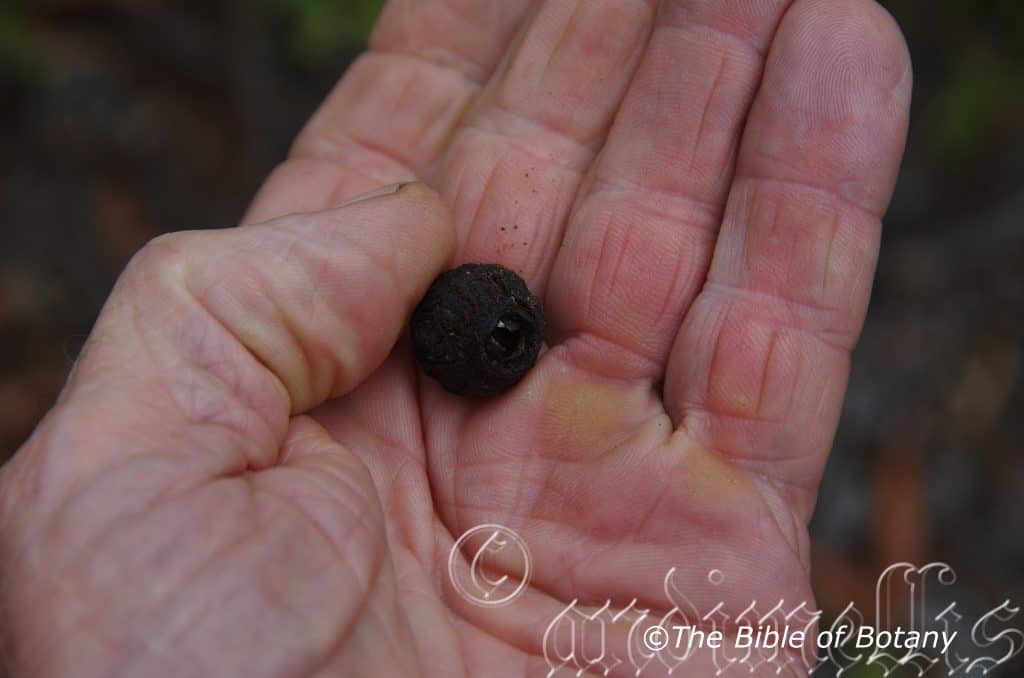
Eucalyptus resinifera
Classification:
Unranked: Eudicots
Clade: Rosids
Order: Myrtales
Family: Myrtaceae
Genus: From Eu, which is Greek a prefix for good or well and Kaluptos, which is Ancient Greek for to cover up. It refers to the stamens, which have a lid or cover over them in the bud stage prior to opening.
Specie: From Resina, which is Latin for resin or gum and Ferae/Ferārum, which is Latin for to bear or bearing. It refers to trees which produce and exude a lot of resin or gum.
Sub specie: Eucalyptus resinifera subsp. hemilampra
Sub specie: Eucalyptus resinifera subsp. resinifera
Common Name: Red Mahogany.
Distribution:
Eucalyptus resinifera subsp. hemilampra is found south from Mount Castletower in central coastal Queensland to Wollondilly in central coastal New South Wales. It occurs on and on and east of the Great Dividing Range to the coast.
Eucalyptus resinifera subsp. resinífera is found south from Lankelly Creek on Cape York Peninsular in far north eastern Queensland to Shoalhaven in central coastal New South Wales. It occurs on and on and east of the Great Dividing Range to the coast.
https://avh.ala.org.au/occurrences/search?taxa=Eucalyptus+resinifera#tab_mapView
Habitat Aspect Climate:
Eucalyptus resinifera prefers full sun to light dappled shade as juvenile trees. It is found on slopes or flats adjacent to dry rainforests, in moist Eucalyptus forests or gallery forests. The altitude ranges from 15 meters ASL to 600 meters ASL.
The temperatures range from 0 degrees in July to 38 degrees in January.
The rainfalls range from lows of 850mm to an average of 3000mm annually.
Soil Requirements:
Eucalyptus resinifera prefers rich volcanic soils or deep alluvial flats. Moisture retentive sandy loams, sandy clays, clay loams to medium clays which are derived from decomposed basalts and better quality shale are preferred. The soils pH ranges from 5.5pH to 6.5pH. It does not tolerate of water logged soils. Non saline soils to moderately saline soils are tolerated.
Height & Spread:
Wild Plants: 40m to 45m by 12m to 15m.
Characteristics:
Eucalyptus resinifera is a very tall straight trunked tree which has a bole over half of its length. The red-brown or grey-brown stringy bark is persistent. The bark becomes somewhat furrowed on old trees. The larger branches are covered in the red-brown to grey-brown stringy bark similar to the trunk with the smaller branches being smooth and pale grey. The branchlets are green mottled red or maroon and are glabrous.
The disjunct juvenile leaves are, alternate, ovate to broad lanceolate and dark glossy green. They measure from 60mm to 100mm in length by 30mm to 50mm wide.
The disjunct adult leaves of Eucalyptus resinifera are alternate, lanceolate and measure 90mm to 160mm in length and 20mm to 40mm in width. The terete to slightly compressed petioles are or channelled on the upper surface and measure 15mm to 25mm in length. The bases are cuneate while the apexes are tapered to acute. The discolourous laminas are glossy green to deep green with the lower lamina being paler. The margins are entire. The lamina is flat or the margins curve slightly upwards from the mid vein. The mid vein is slightly prominent on both laminas.
The inflorescences of Eucalyptus resinifera are born as umbellasters containing 7 to 13 flowers from near the terminal leaf axis. The flattened or angular peduncles measures 8mm to 42mm in length by 2.5mm to 3.5mm in diameter while the pedicels measure 5mm to 14mm in length.
The pale lime green buds are fusiform, glaucous and measure 12mm to 20mm in length by 4.5mm to 6mm in diameter. The bud scar is distinctly visible after releasing the elongated, acute, rostrate operculum measures 6mm to 8mm long.
The stamens are white with white anthers. They measure 6mm to 8mm in length while the stout yellow style measures 6mm to 8mm in length. The disc is yellow or cream. The flowers appear in mid-November to the end of January.
The fruits of Eucalyptus resinifera are hemispherical to ovoid gum nuts. They measure 5mm to 11mm long by 5mm to 10mm in diameter. The disc is flat to raised revealing the 3 or 4 exserted valves. The 3 or 4 small teeth are equally spaced on the hypanthia are triangular and measure 2mm to 3mm in length. The seeds are linear cuboidal and are the same colour as the chaff.
Wildlife:
Eucalyptus resinifera flowers are light nectar producers but are still are very attractive to most honeyeaters, lorikeets, flying foxes, possums and many insects. It is koala tree along the coast and sugar gliders will open up wounds so the trees bleed their sap.
Cultivation:
Eucalyptus resinifera is a large size gum tree which is very suitable for gardeners looking for Eucalyptus specie to create a medium size bush scene. It is ideal on sandy alluvial flats to medium clays that are moisture retentive. It is fast growing so give good effects at an early age. In the garden good specimens grow from 25 meters to 30 meters in height by 15 meters to 20 meters in diameter. It is drought resistant once established and can cope with moderate frosts.
This is not a popular cream flowering gum amongst home gardeners as most tend to favour the red flowering gum trees or those with a deep black furrowed bark. The bark contrasts well with other Eucalyptus specie and Corymbia specie when mixed planted to high light the trunks. Place it near the edge of such forests as it is a lot smaller and will allow more light to penetrate deeper into the forest. It is too often planted singularly with gardeners not prepared to let their hair down and experiment.
They would be ideally suited to a small park like scenes where they have the opportunity to spread out as they mature. With a little persistence this gum tree can be tip pruned so that it develops 2 or 3 trunks.
Like all Eucalyptus specie leaf drop, dropping of small branches means continual lawn maintenance but then this means good quantities of leaf litter mulch. If the trees are clumped or used in a bush garden this is not a problem.
Propagation:
Seeds: Sow into a seed raising mix. When the seedlings are 25mm to 50mm tall, prick them out and plant them into 50mm native tubes using a good organic mix.
Once the seedlings reach 200mm to 250mm in height plant them out into their permanent position.
Fertilize using seaweed, fish emulsion or organic chicken pellets soaked in water on an alternate basis. Fertilize every two months until the plants are established then twice annually in early September or March to maintain health, vitality and better flowering.
Further Comments from Readers:
“Hi reader, it seems you use The Bible of Botany a lot. That’s great as we have great pleasure in bringing it to you! It’s a little awkward for us to ask, but our first aim is to purchase land approximately 1,600 hectares to link several parcels of N.P. into one at The Pinnacles NSW Australia, but we need your help. We’re not salespeople. We’re amateur botanists who have dedicated over 30 years to saving the environment in a practical way. We depend on donations to reach our goal. If you donate just $5, the price of your coffee this Sunday, We can help to keep the planet alive in a real way and continue to bring you regular updates and features on Australian plants all in one Botanical Bible. Any support is greatly appreciated. Thank you.”
In the spirit of reconciliation we acknowledge the Bundjalung, Gumbaynggirr and Yaegl and all aboriginal nations throughout Australia and their connections to land, sea and community. We pay our respect to their Elders past, present and future for the pleasures we have gained.
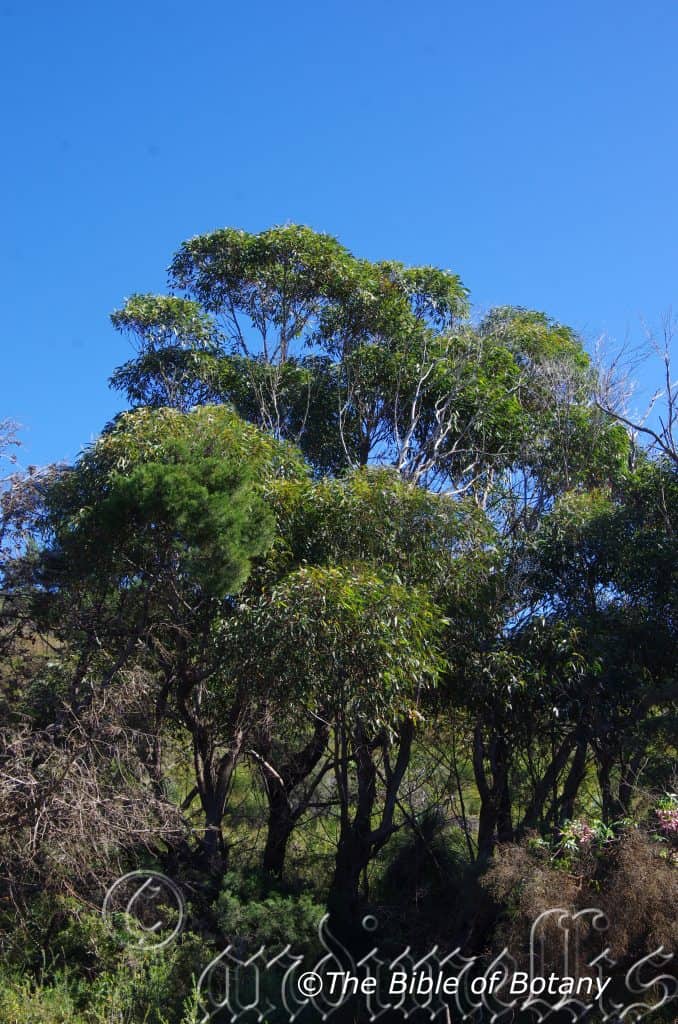
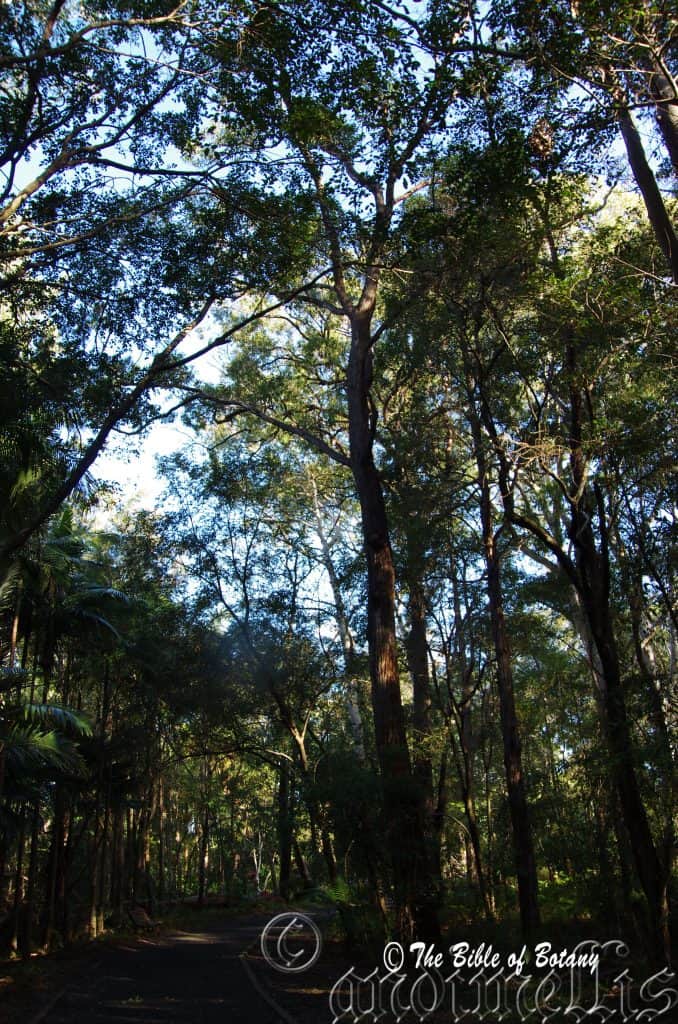
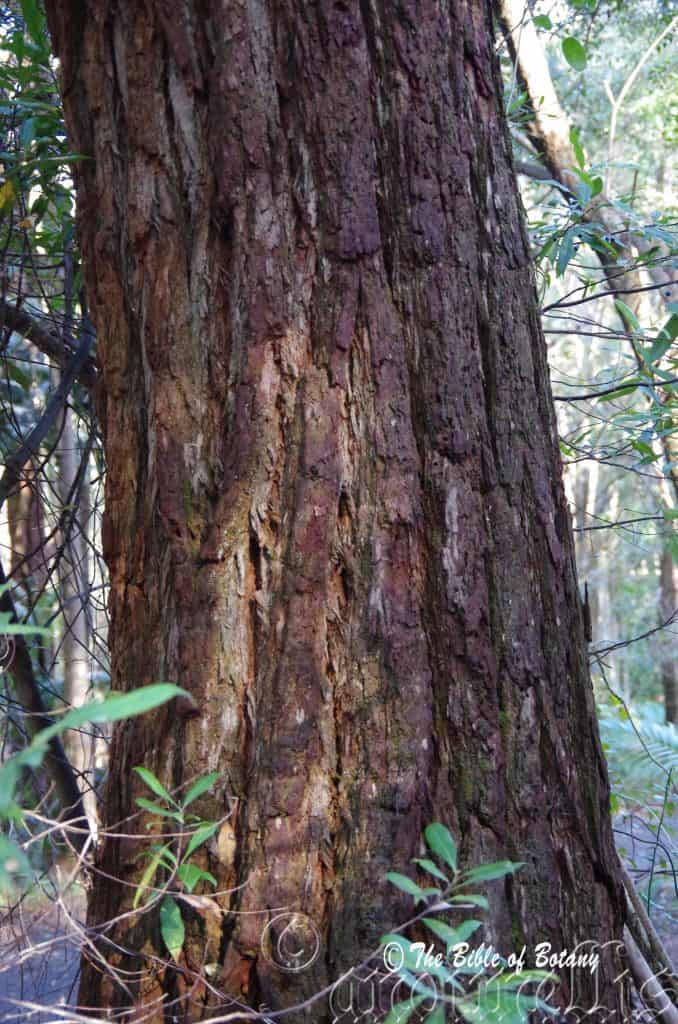
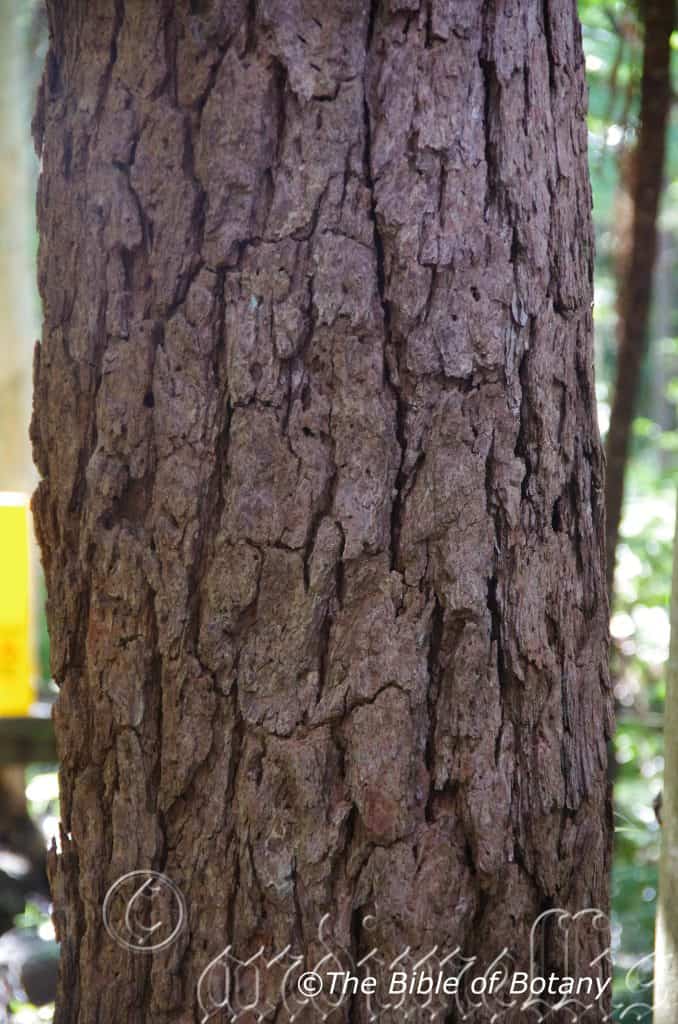
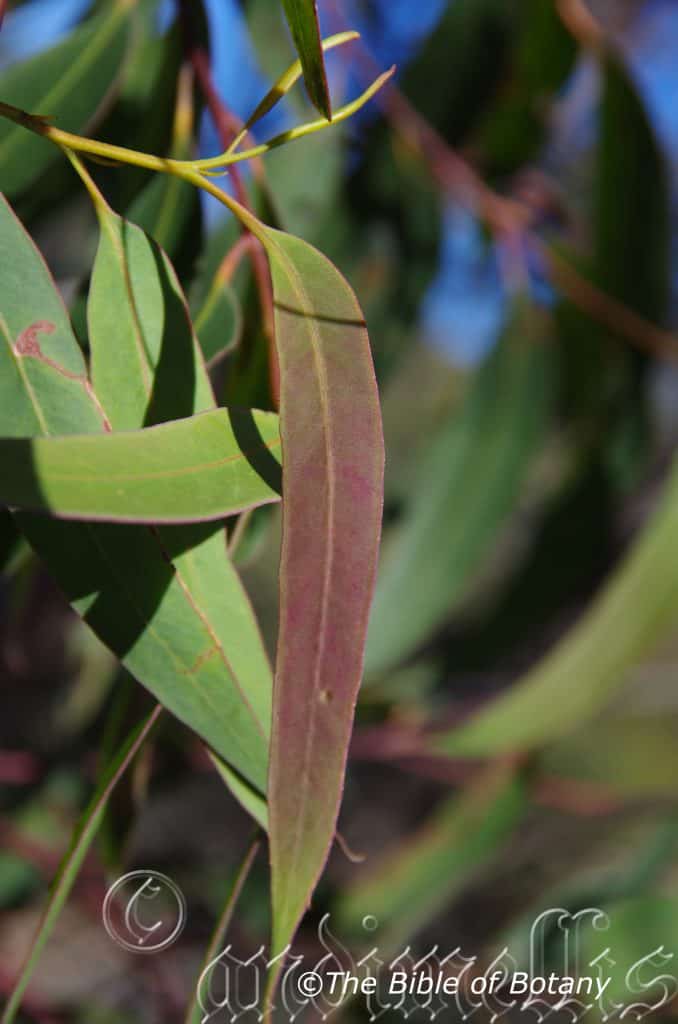



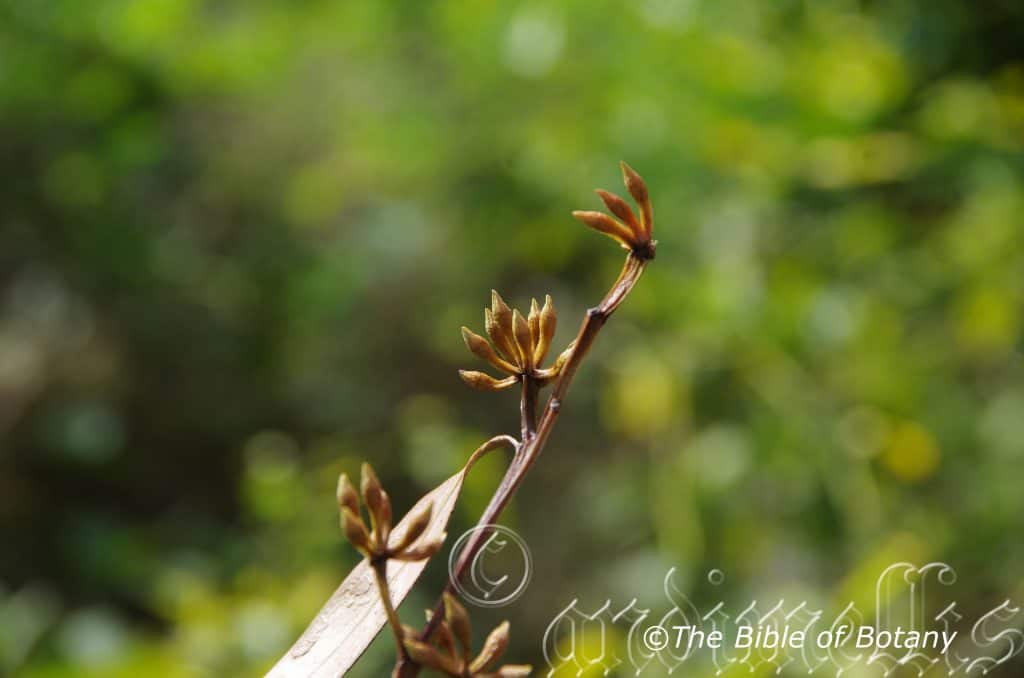

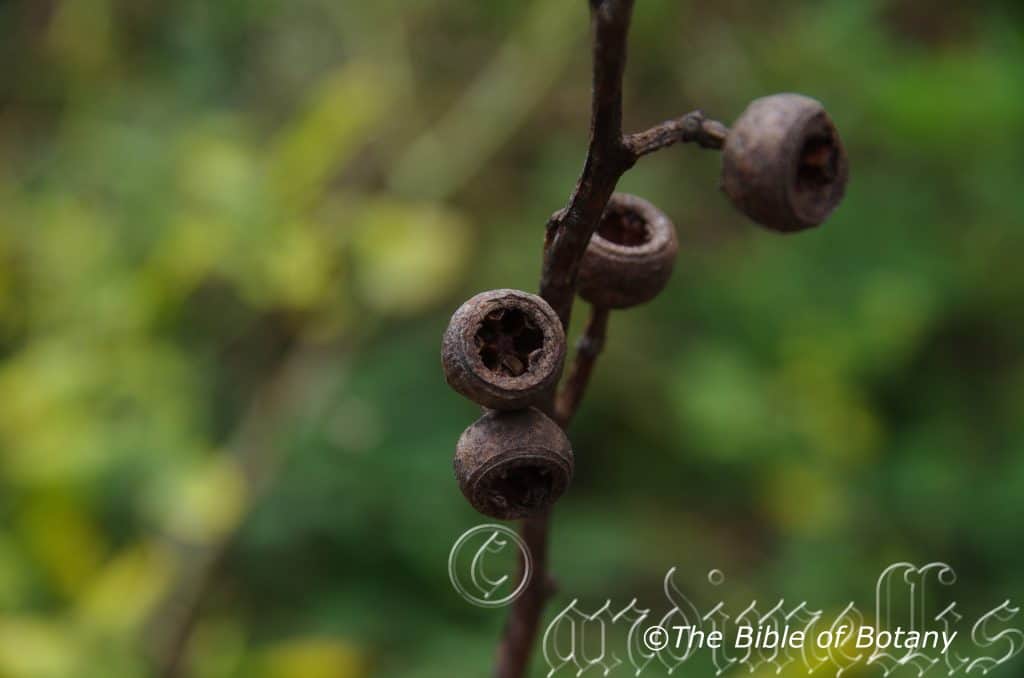
Eucalyptus robusta
Classification:
Unranked: Eudicots
Clade: Rosids
Order: Myrtales
Family: Myrtaceae
Genus: From Eu, which is Greek a prefix for good or well and Kaluptos, which is Ancient Greek for to cover up. It refers to the stamens, which have a lid or cover over them in the bud stage prior to opening.
Specie: From Rōbustum, which is Latin for strong and hard as in Oak. It refers to timbers, trunks, branches or stems which are hard and strong.
Sub specie:
Common Name: Coastal Mahogany or Swamp Mahogany
Distribution:
Eucalyptus robusta is found east of the Great Dividing Range close to the coast south from Townshend Island to Moruya in southern coastal New South Wales to. It is particularly common on most of the larger off shore islands including Stradbroke Island and Moreton Island.
https://avh.ala.org.au/occurrences/search?taxa=Eucalyptus+robusta#tab_mapView
Fraser Island.
Habitat Aspect Climate:
Eucalyptus robusta prefers full sun to light shade as a juvenile tree. It grows close to the beaches on the back dunes and along river estuaries above the high water line. The altitude ranges from 2 meters ASL to 30 meters ASL.
The temperatures range from 2 degrees in July to 36 degrees in January.
The rainfall ranges from lows of 800mm to an average of 1600mm annually.
Soil Requirements:
Eucalyptus robusta prefers deep coarse sands, fine sand or peaty sands or accumulated sandstones. The soils pH ranges from 6pH to 6.5pH. It tolerates seasonal water logged soils and seasonal high water table. Non saline soils to very saline soils are tolerated as are salt laden winds.
Height & Spread:
Wild Plants: 5m to 25m by 7m to 12m.
Characteristics:
Eucalyptus robusta is a small to medium size tree. The persistent thick spongy pink-brown to a light red-brown bark is maintained to the larger branches. The bark is furrowed on larger specimens and very spongy to touch. The branches are smooth creamy grey-green. The branchlets are deep green. The bark is shed in short ribbons or from the smaller branches only.
Juvenile opposite leaves are disjunct elliptical to ovate and concolourous being a deep glossy green on both surfaces. New growth is maroon.
The adult alternate leaves of Eucalyptus robusta are broad lanceolate to oblong-lanceolate and measure 100mm to 180mm in length and 20mm to 45mm in width. The green, red-green or orange-green round petioles measure 14mm to 25mm in length. The bases are broad rounded-cuneate while the apexes are broad acuminate. The discolourous laminas are deep green to sea green semi glossy to glossy on the upper lamina and paler and dull to semi glossy on the lower lamina. The margins are entire. The laminas are flat or curve slightly upwards from the mid vein. The mid vein is slightly prominent on the lower lamina while the lateral veins are penniveined and are at 80 degrees to the main vein.
The inflorescences of Eucalyptus robusta are born as umbellasters containing 7 to 11 flowers from near the terminal leaf axis. The flattened peduncle measures 13mm to 30mm in length while the terete pedicels measure 1mm to 9mm in length.
The bud’s hypanthium and calyptra are both sparsely covered in very fine farinaceous dots and are glabrous green. The fusiform buds measure 16mm to 24mm in length by 6mm to 8mm in diameter. The bud scar is present while the operculum is broad conical with a long tapering or a long rostrate apex and measures 9mm to 14mm in length by 8mm to 10mm in diameter at the widest point just above the hypanthia’s rim.
The stamens are white or more often cream with white or cream anthers. They measure 11mm to 16mm in length while the stout cream or pale pink style measures 13mm to 17mm in length. The disc is a yellow to yellow-green. The flowers of Eucalyptus robusta appear very early April to the end of August.
The farinaceous fruits are cylindrical gum nuts. The gum nuts measure 10mm to 18mm in length by 6mm to 11mm in diameter. The disc is slightly depressed revealing the 4 valves which are level or slightly exserted. The seeds are linear to cuboidal and are reddish brown to deep brown in colour.
Wildlife:
The flowers are medium nectar producers and are very attractive to most honeyeaters, lorikeets, flying foxes, possums and many insects. It is a substandard koala tree that is used at times sparingly. Sugar gliders also frequent the tree when in flower especially when the trees have a continuous corridor.
Cultivation:
Eucalyptus robusta is a medium size tree for small, medium and large gardens. It is very useful for that parkland scene or starting a forest garden in temperate to tropical zones including semi-arid areas where there is an adequate water supply. It is an ideal on light sandy to pure sand or sandstone where constant moisture can be reached through capillary action or they send down a long tap root to tap into the source. It is fast growing so it gives good effects at an early age. The trees can also be used very effectively as a large shrub by continually tip pruning. It grows 12 meters to 18 meters tall by 6 meters to 8 meters in diameter as a tree in the open or 6 meters to 10 meters tall by 6 meters to 10 meters in diameter as a multi trunk tree.
For the wildlife, its medium size, attractiveness, heavy flowering, large deep green glossy leaves and the ability to grow on very poor sandy soils gives this Eucalyptus an edge over most its rivals for a spot in the garden. It can tolerate frosts and temperatures down to minus 2 degrees and once established is low maintenance and is drought resistant on the coast.
It is ideal in a mixed park like situation where the barks contrast well with other Eucalyptus specie, Corymbia specie and Angophora specie. Its suitability in high wind zones on sandy soils is unquestionable despite its large bushy crown. Trees in the open on headlands often form large shrubs with a strong bias on the opposite side to the prevailing winds which makes them an ideal tree for that large heath project or as a shelter belt. This is an unusual characteristic for plants with very large leaves.
Like most large Eucalyptus specie leaf drop, dropping of small branches means continual lawn maintenance but then in a rainforest or bush garden they supply good quantities of leaf litter. Trees grown in the open are subject to branches breaking in strong winds and even the trees being completely uprooted. This is particularly apparent where trees are being fertilized with plants becoming top heavy.
Propagation:
Seeds: Sow into a seed raising mix. When the seedlings are 25m to 50mm tall, prick them out and plant them into 50mm native tubes using a good organic mix.
Once the seedlings reach 200mm to 250mm in height plant them out into their permanent position.
Fertilize using seaweed, fish emulsion or organic chicken pellets soaked in water on an alternate basis. Fertilize every two months until the plants are established then twice annually in early September or March to maintain health, vitality and better flowering.
Further Comments from Readers:
“Hi reader, it seems you use The Bible of Botany a lot. That’s great as we have great pleasure in bringing it to you! It’s a little awkward for us to ask, but our first aim is to purchase land approximately 1,600 hectares to link several parcels of N.P. into one at The Pinnacles NSW Australia, but we need your help. We’re not salespeople. We’re amateur botanists who have dedicated over 30 years to saving the environment in a practical way. We depend on donations to reach our goal. If you donate just $5, the price of your coffee this Sunday, We can help to keep the planet alive in a real way and continue to bring you regular updates and features on Australian plants all in one Botanical Bible. Any support is greatly appreciated. Thank you.”
In the spirit of reconciliation we acknowledge the Bundjalung, Gumbaynggirr and Yaegl and all aboriginal nations throughout Australia and their connections to land, sea and community. We pay our respect to their Elders past, present and future for the pleasures we have gained.